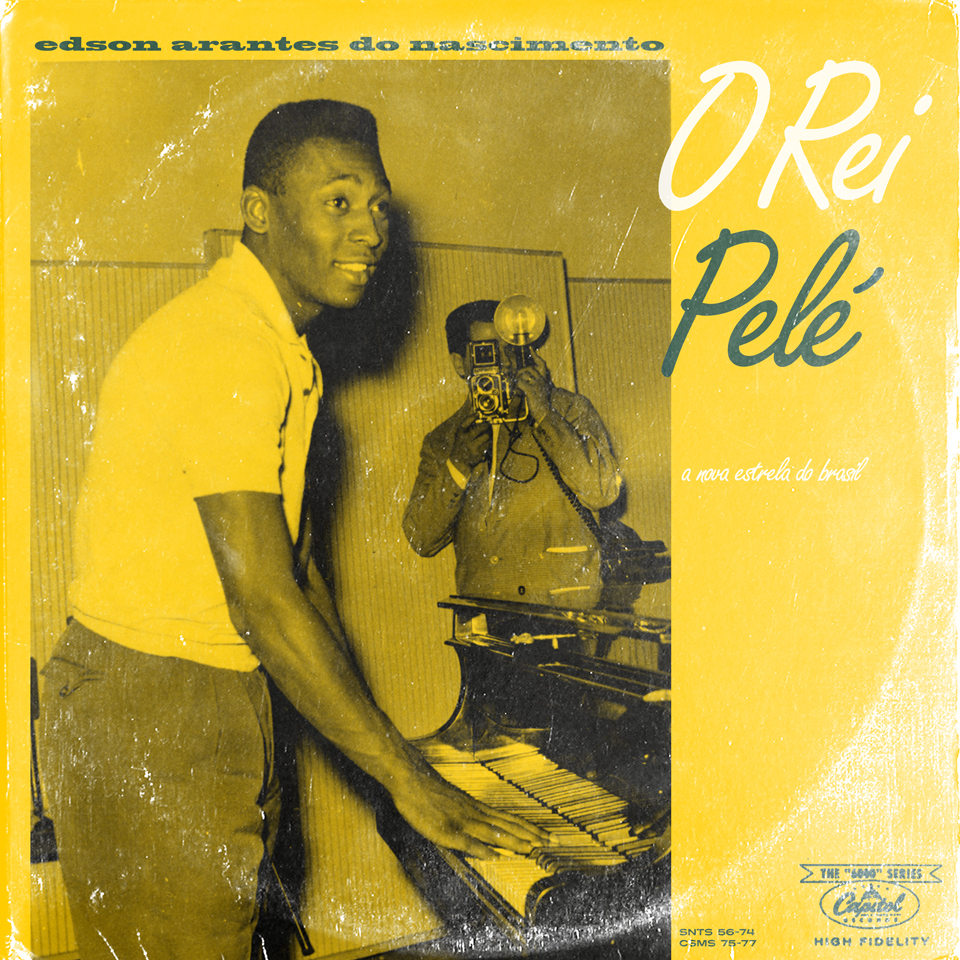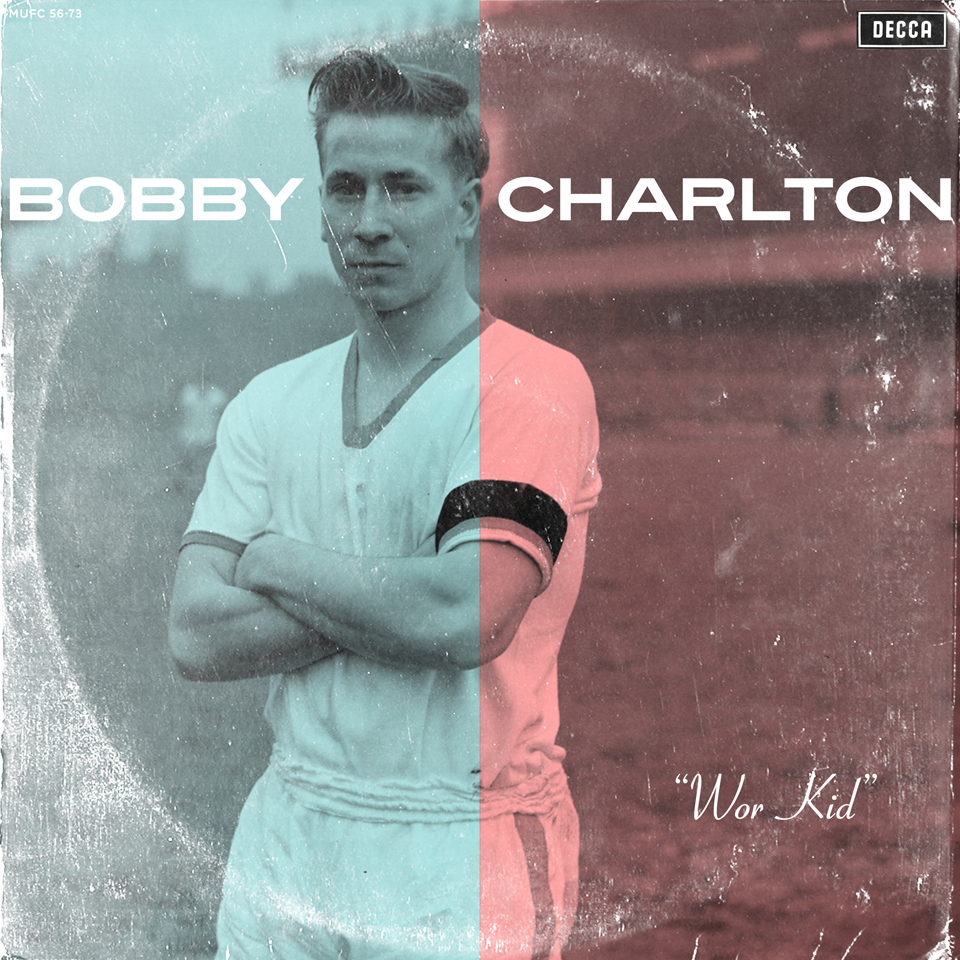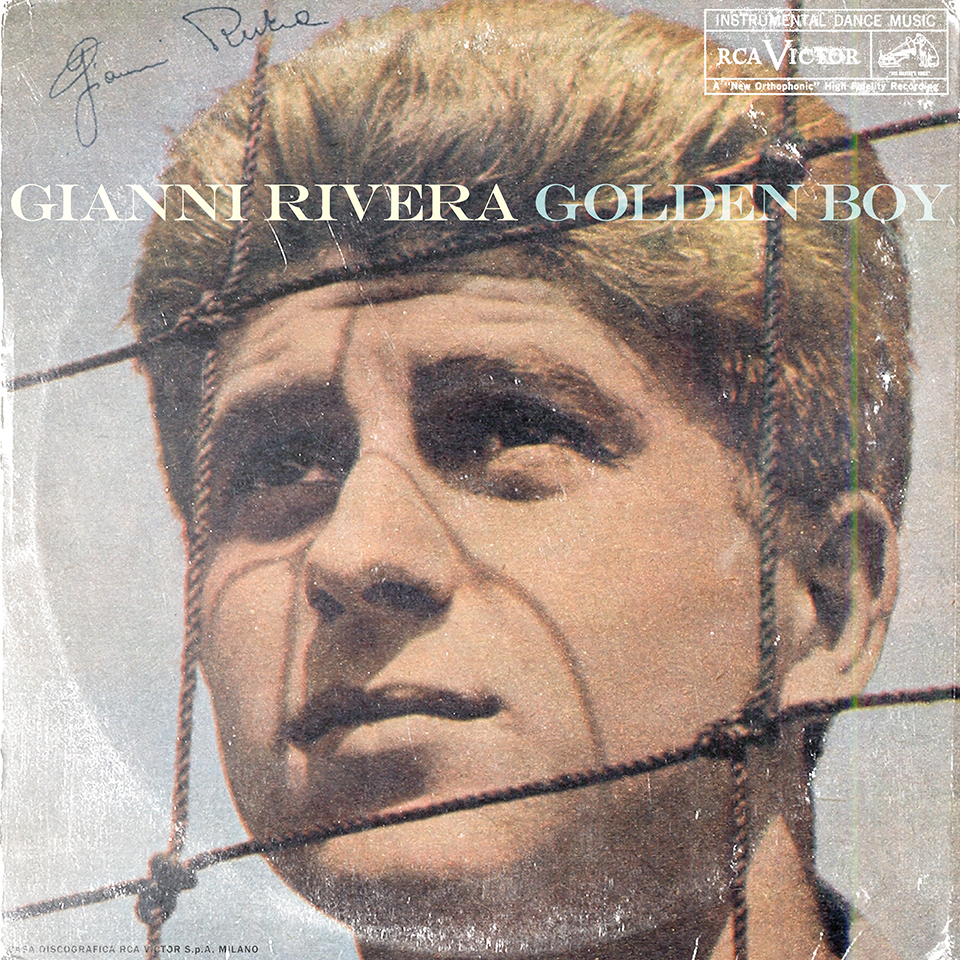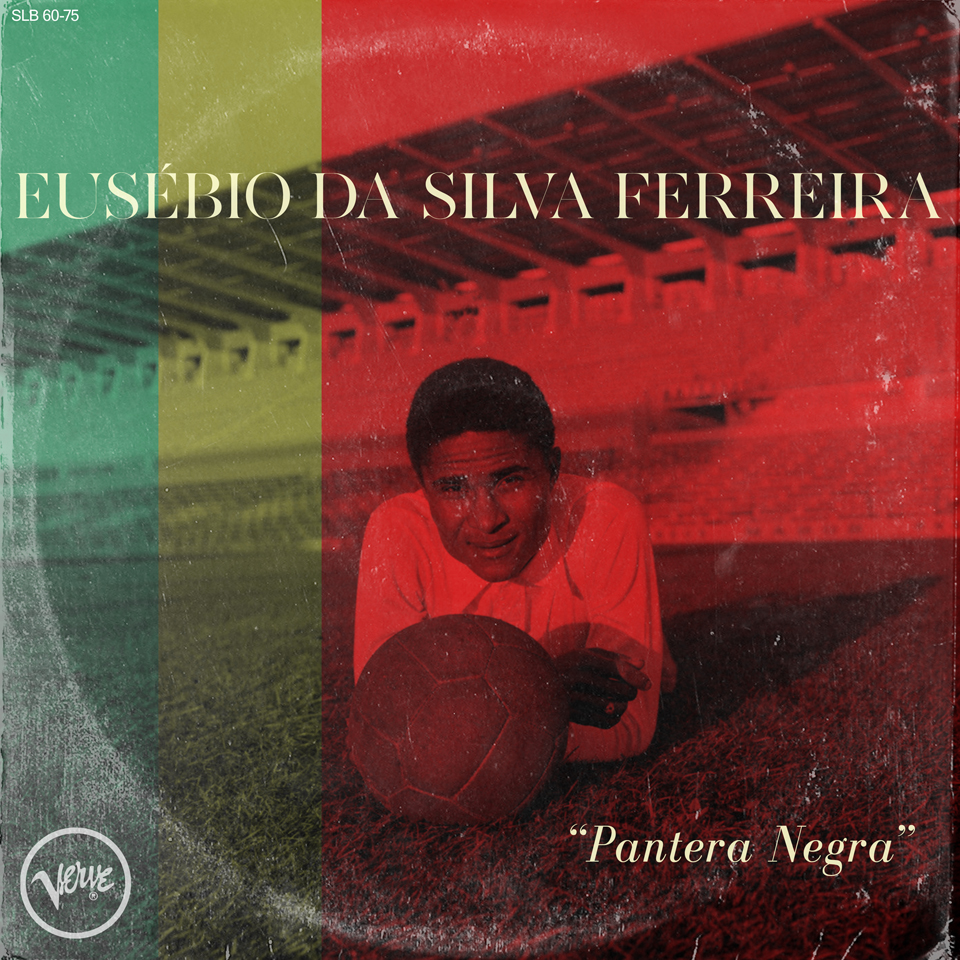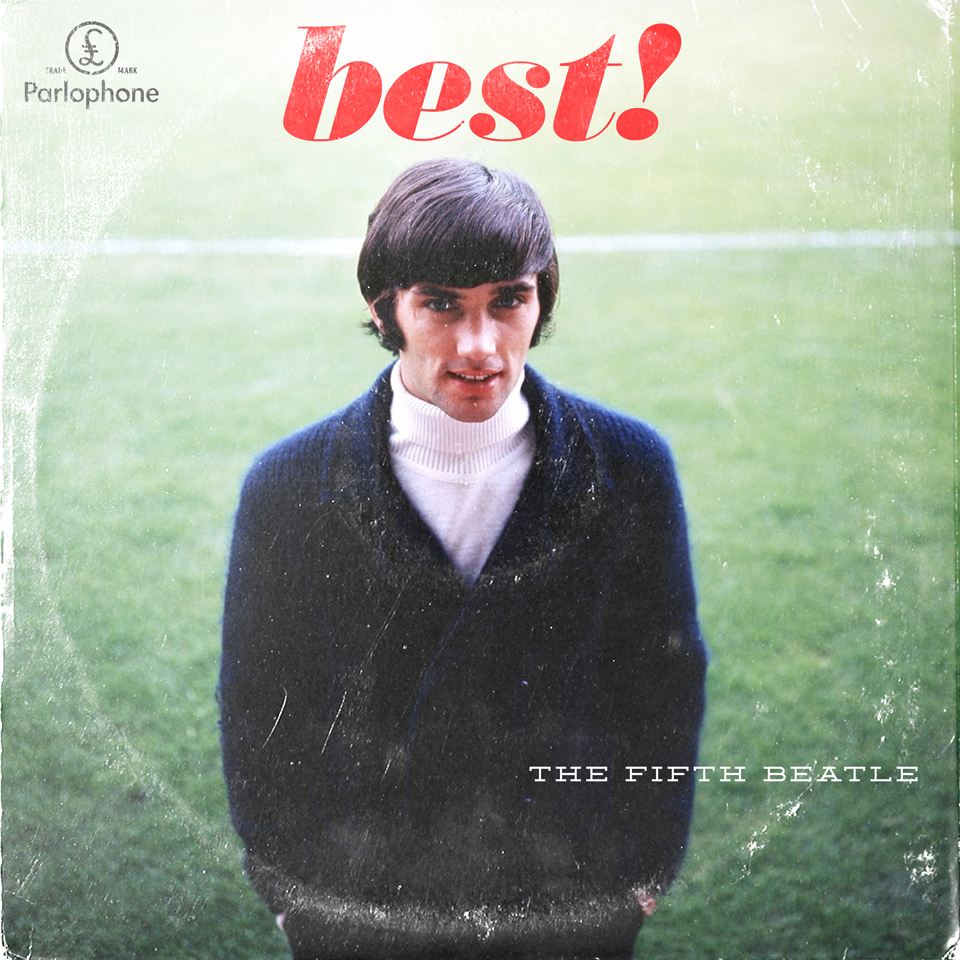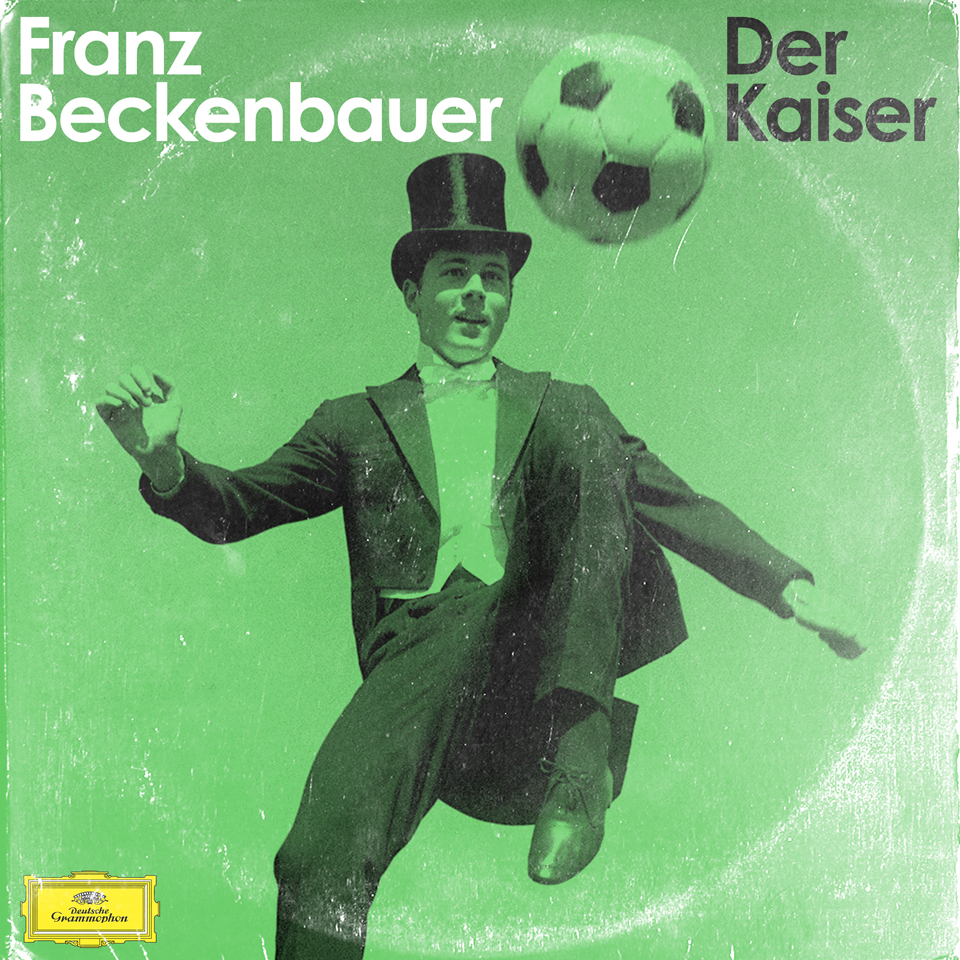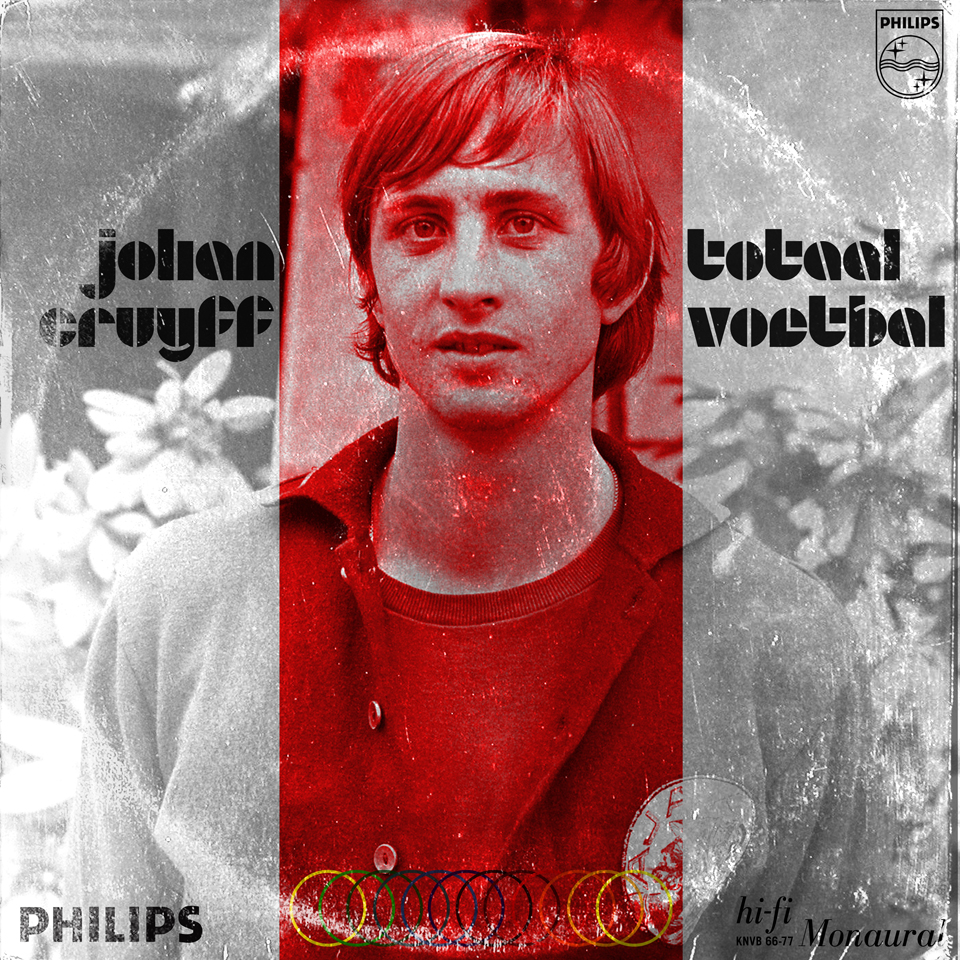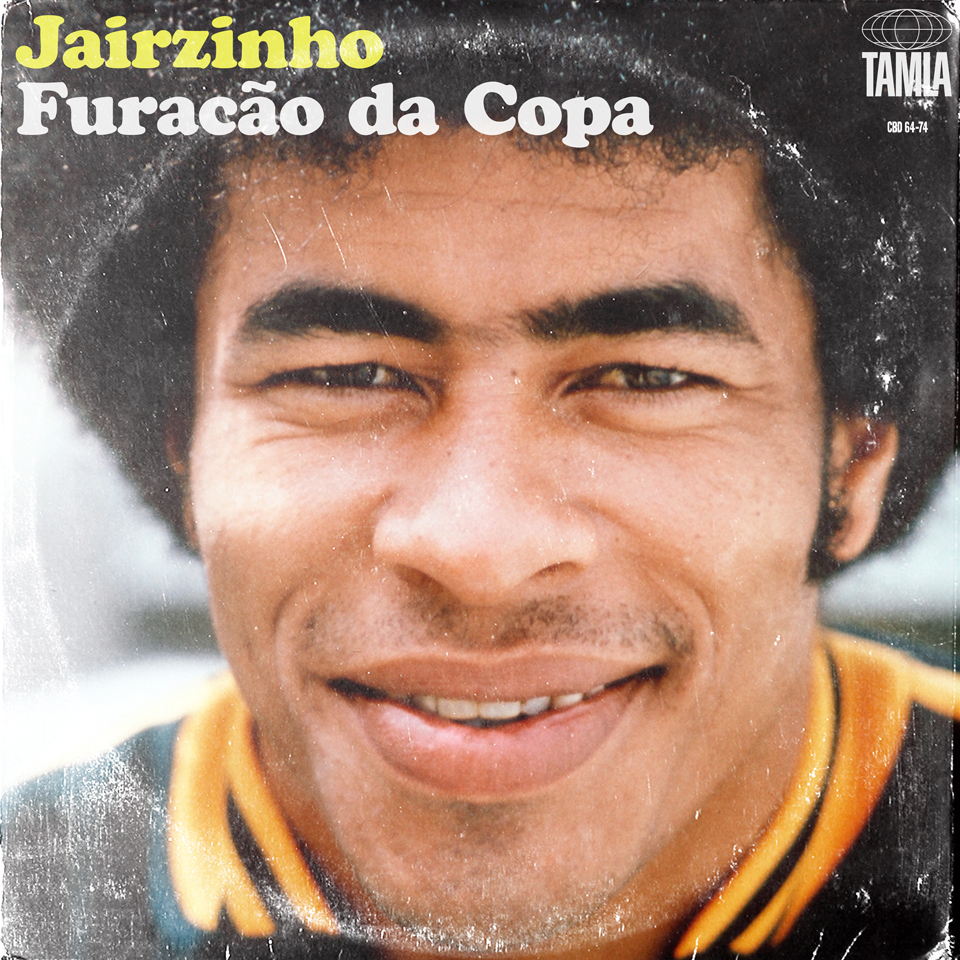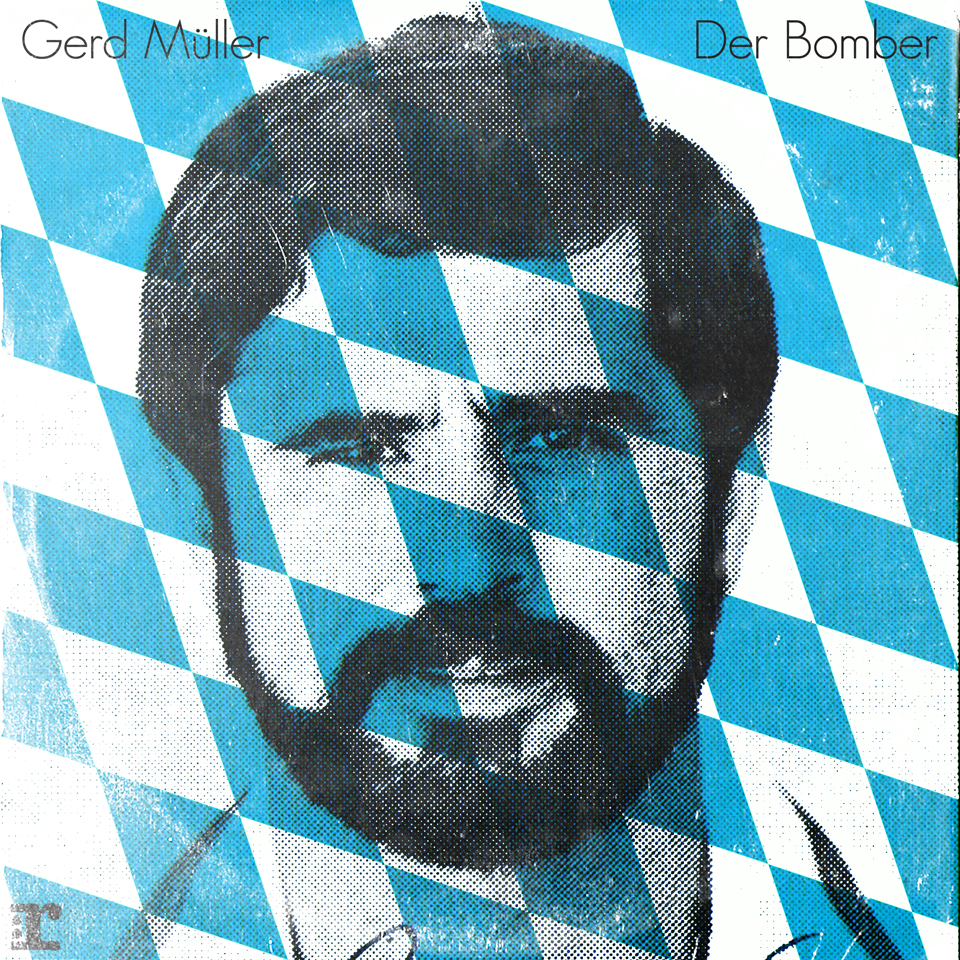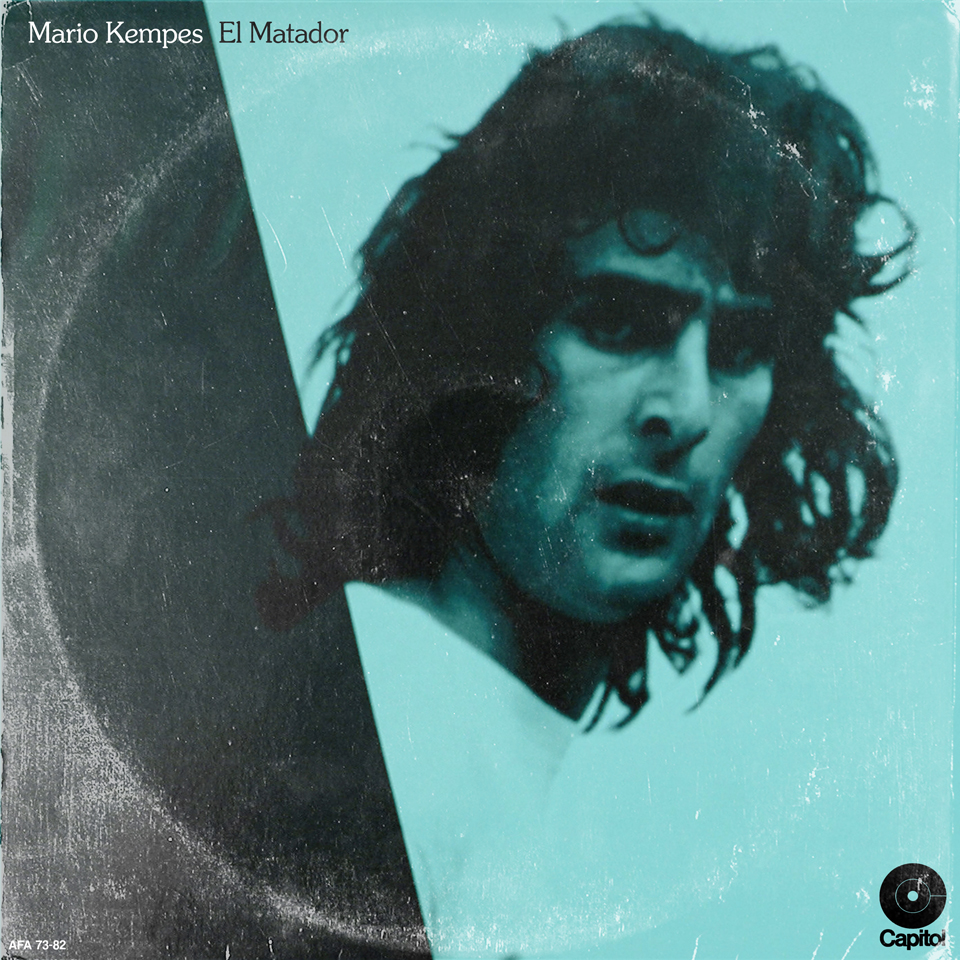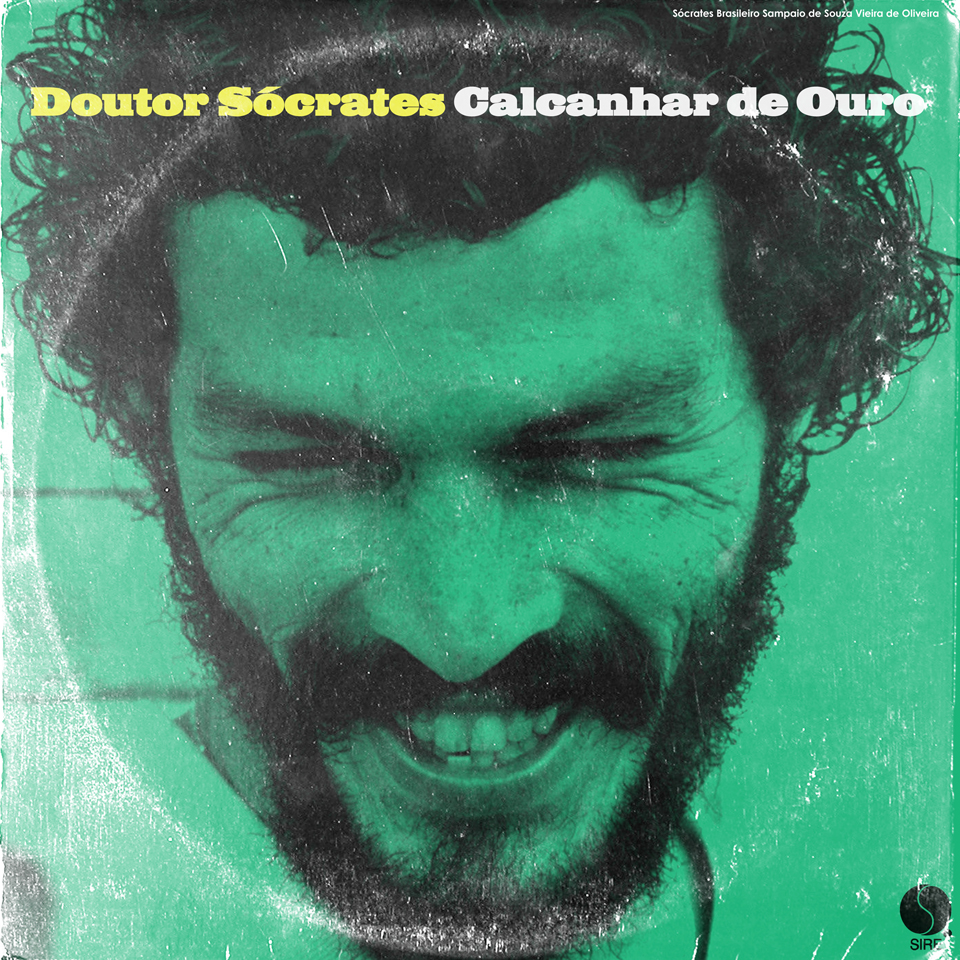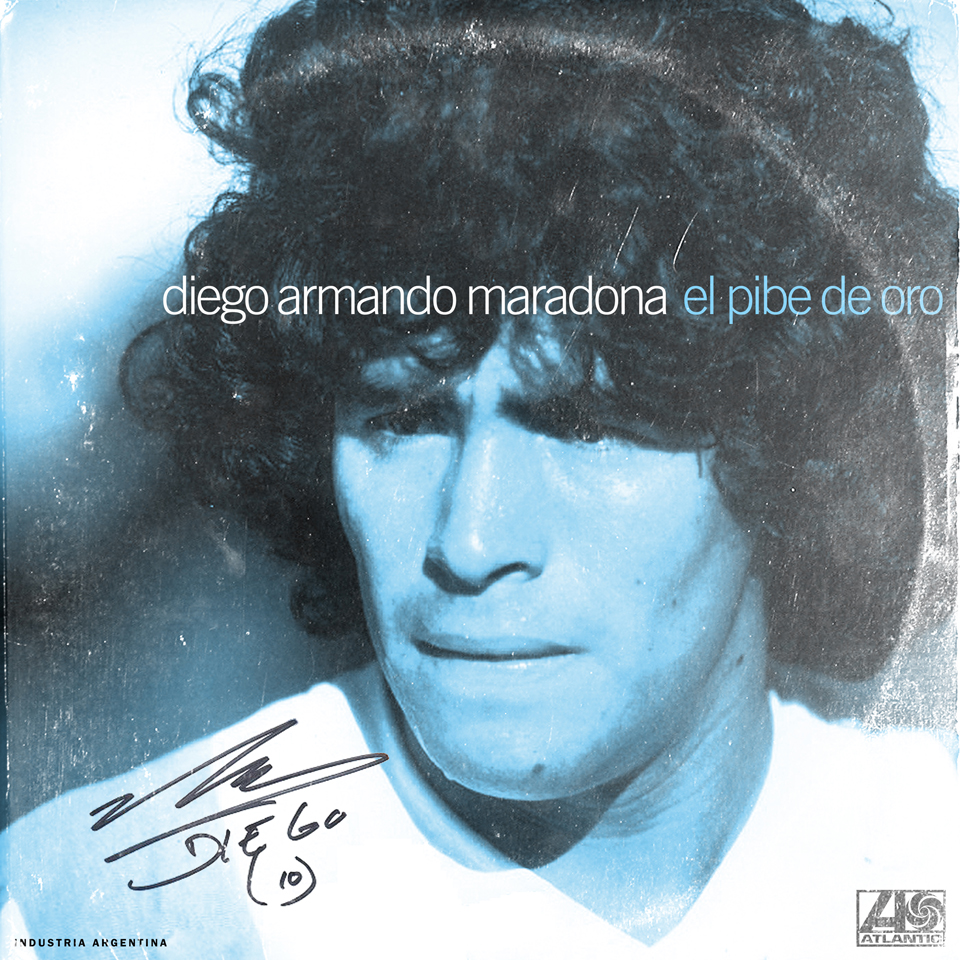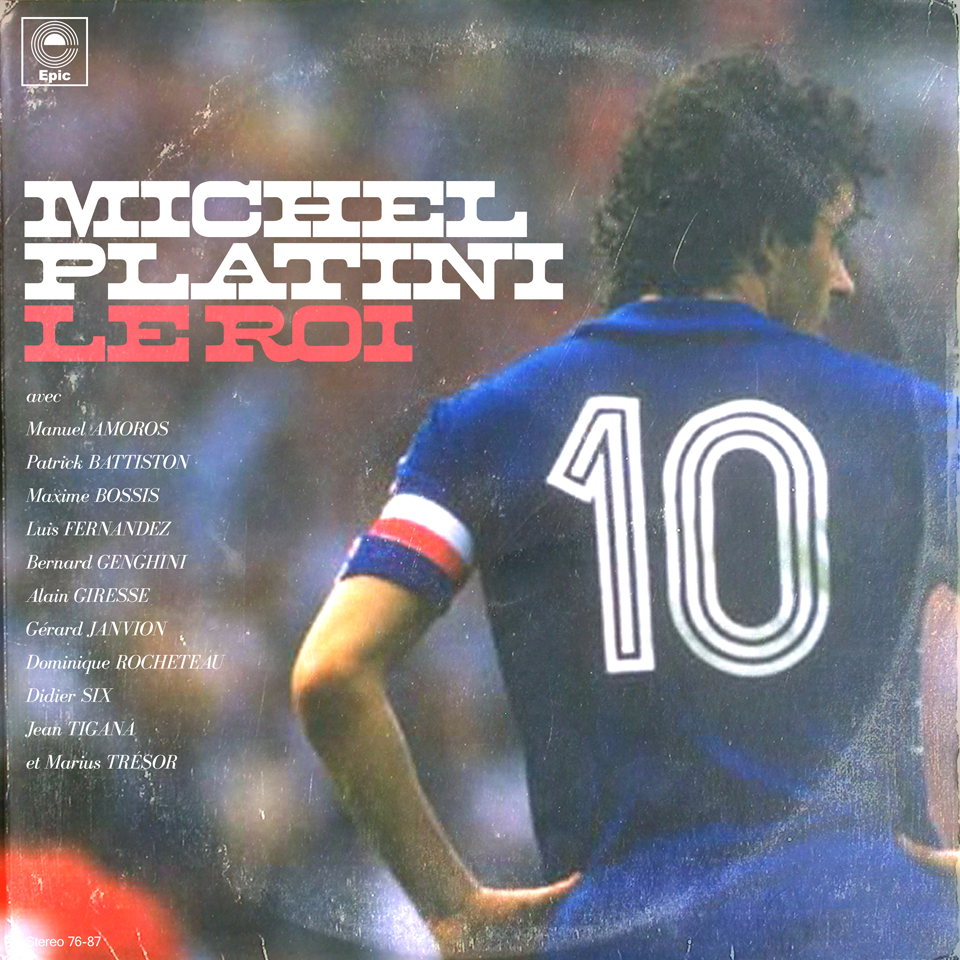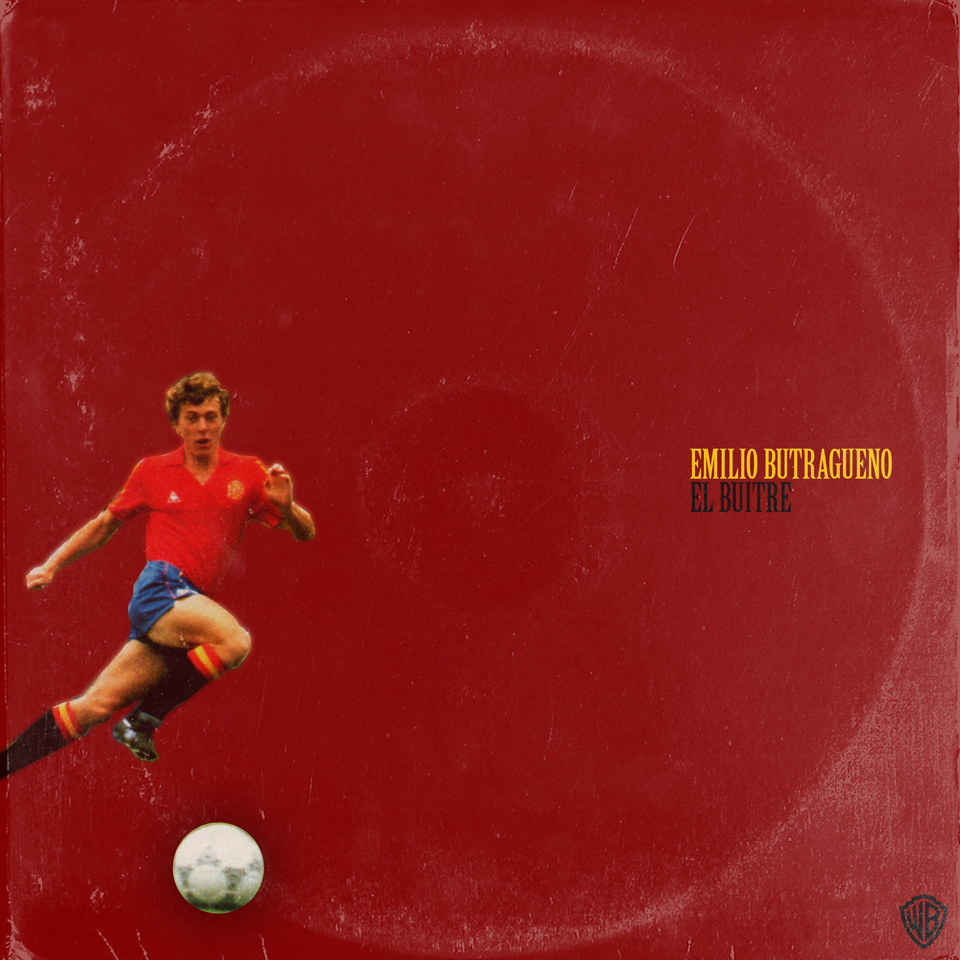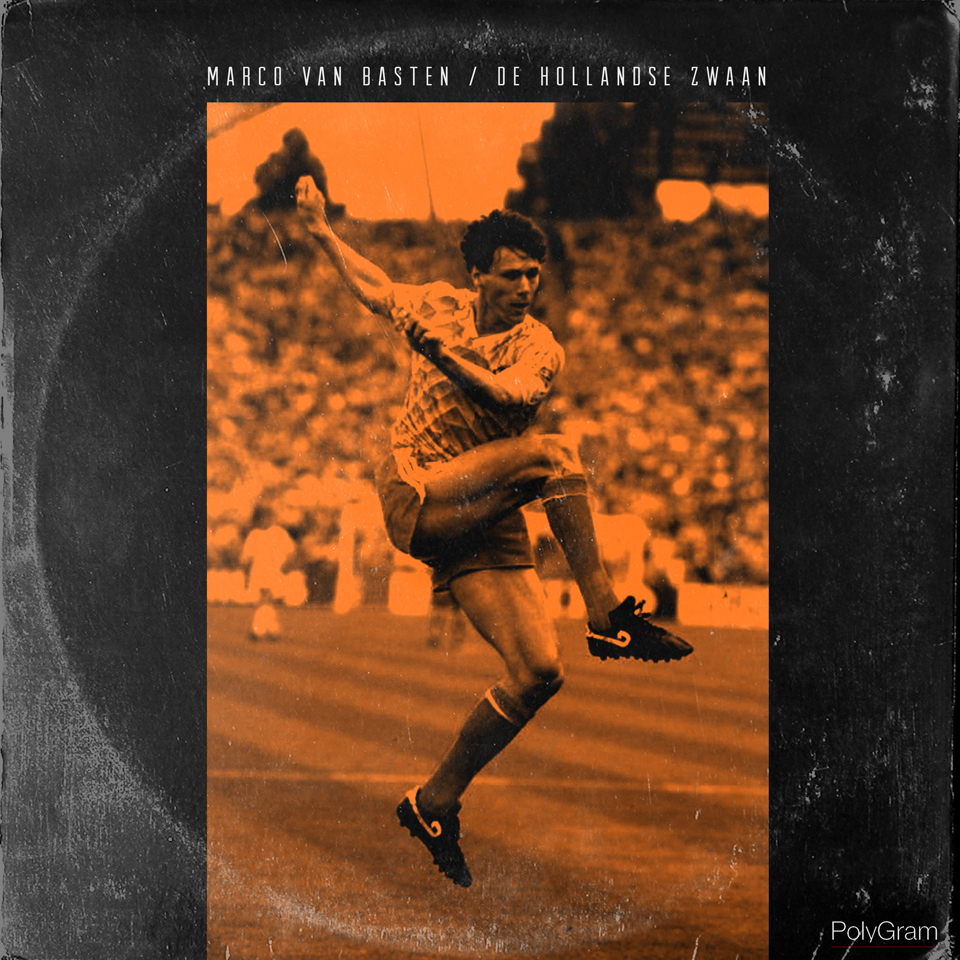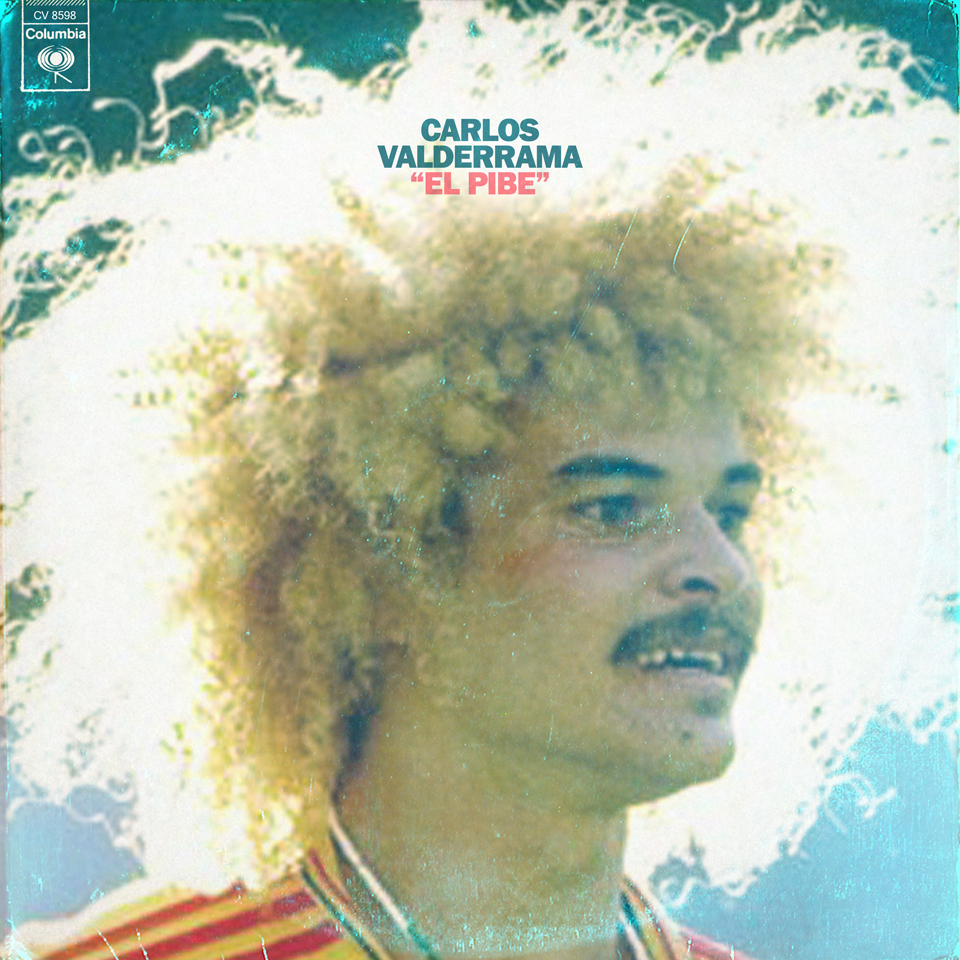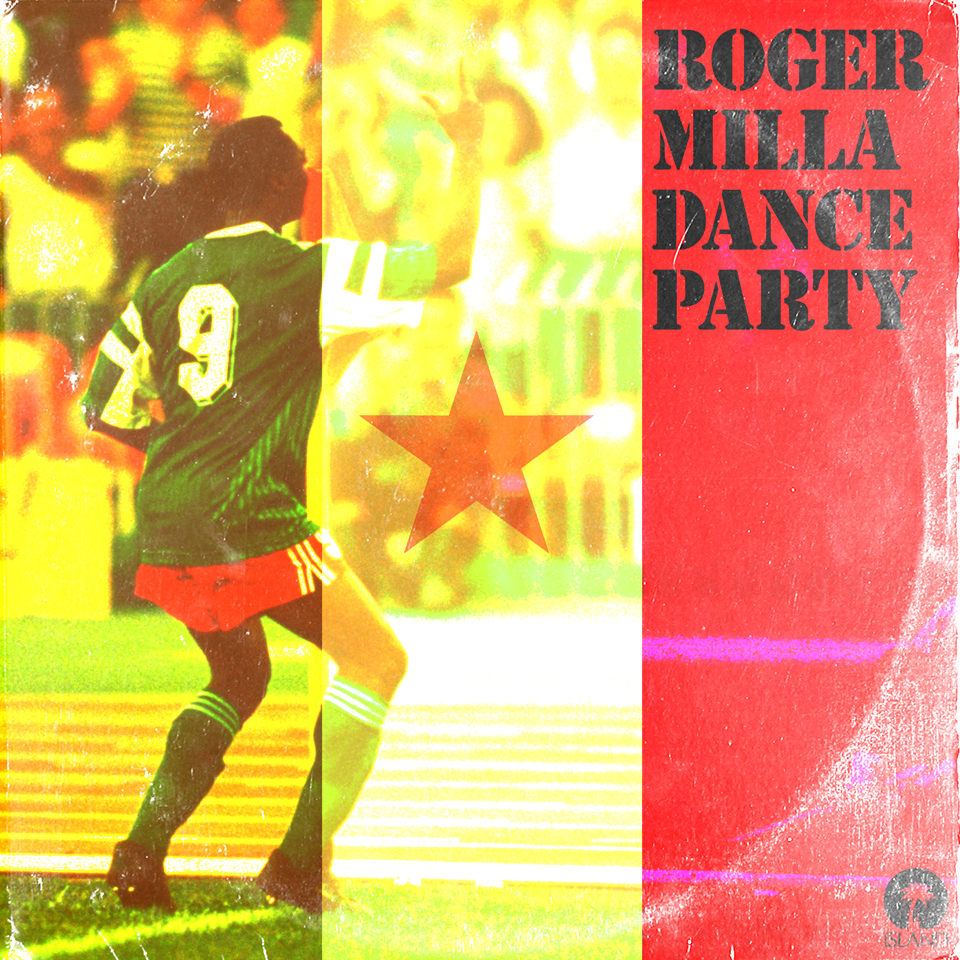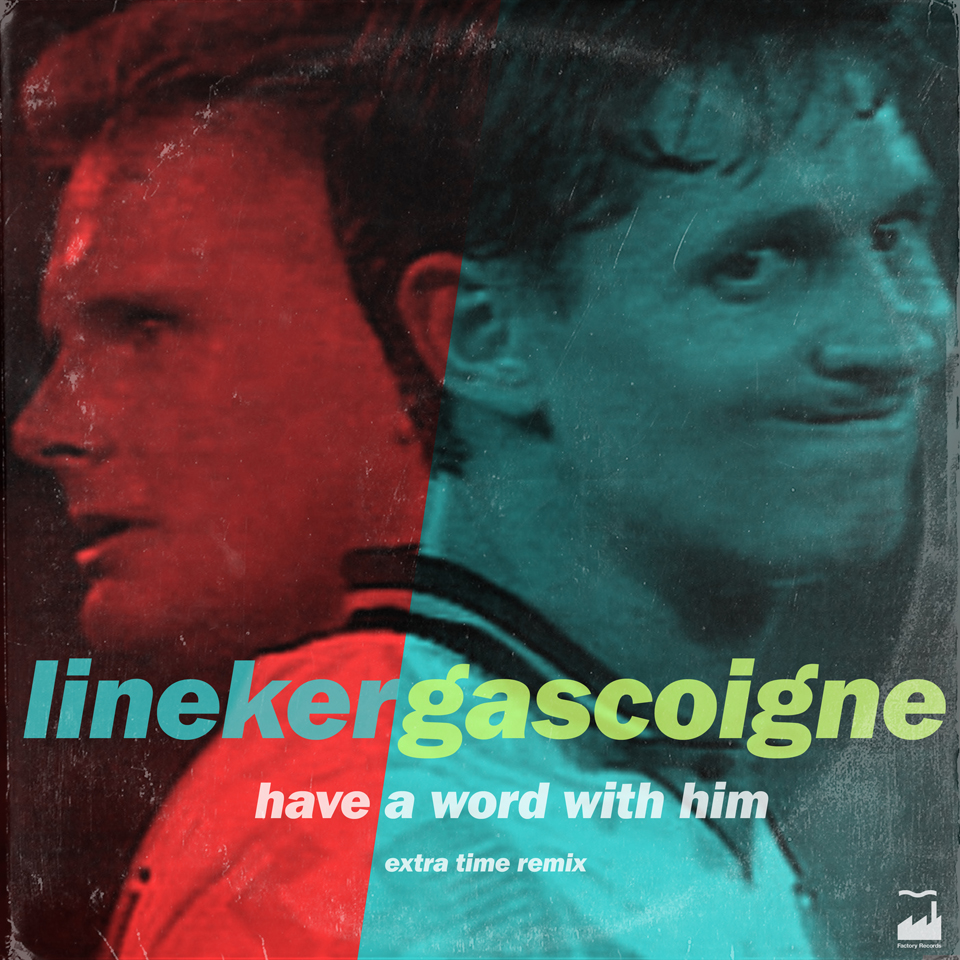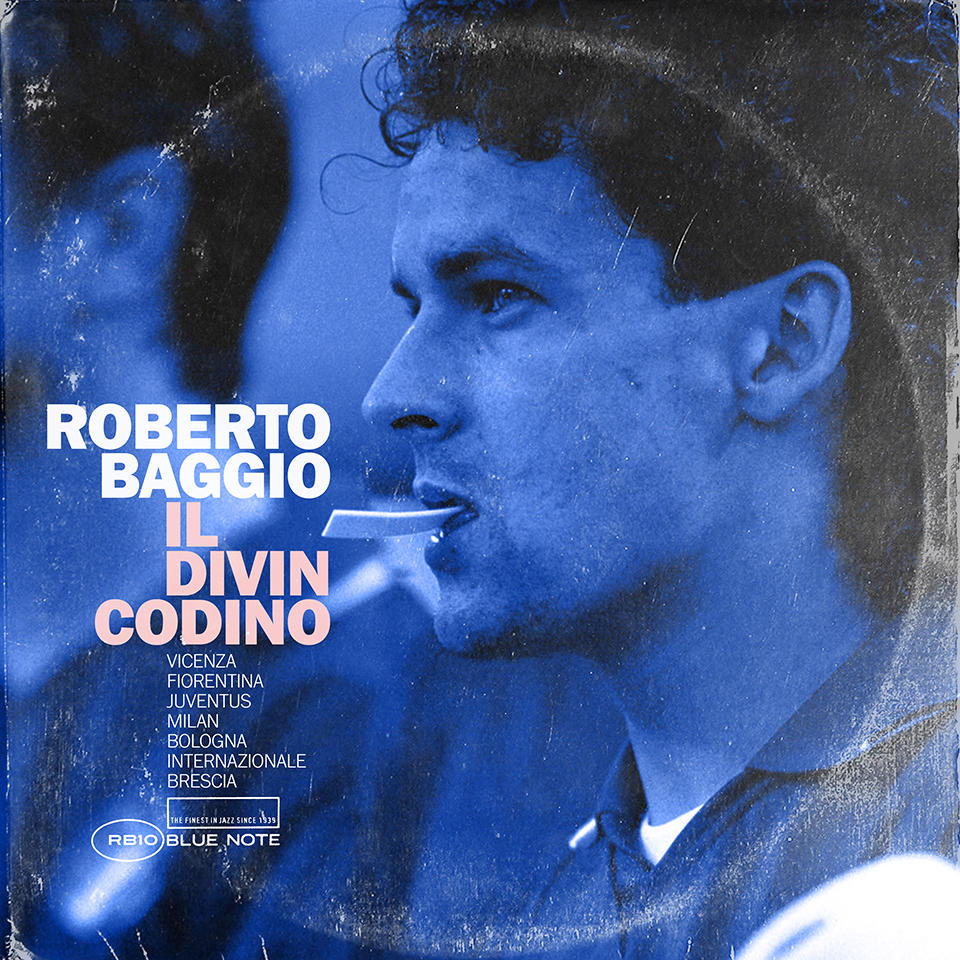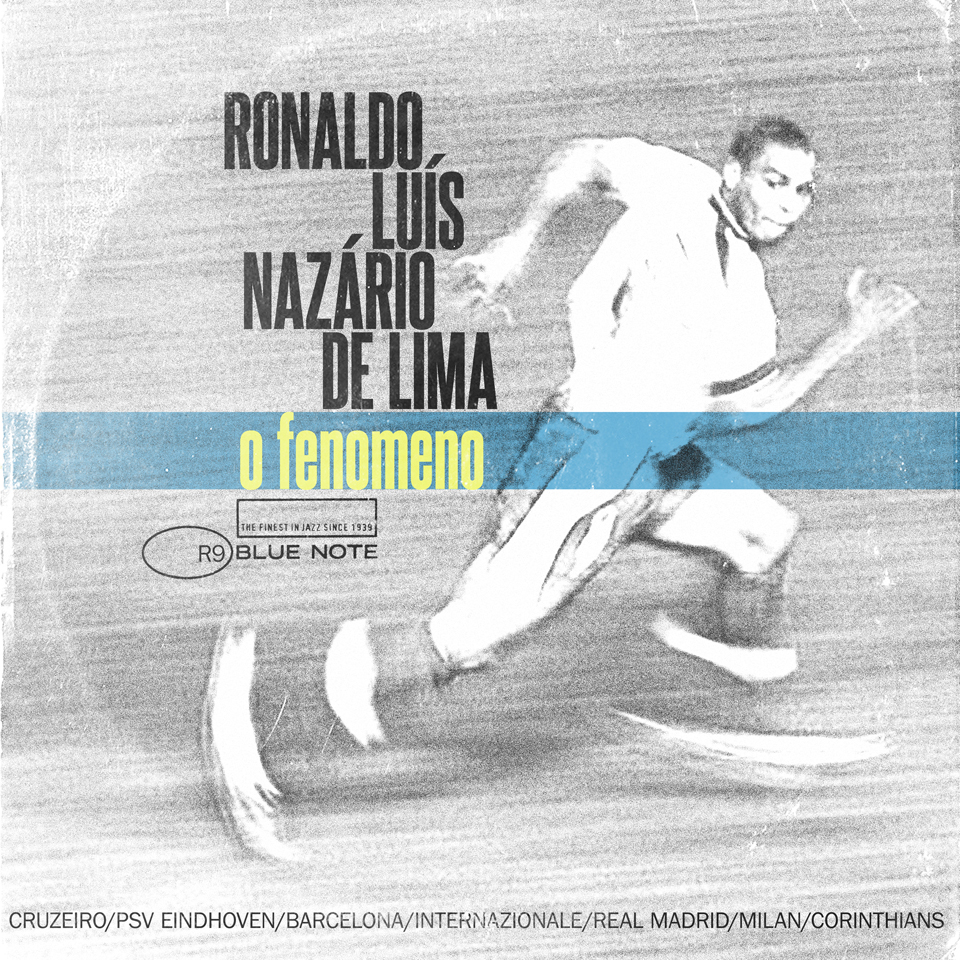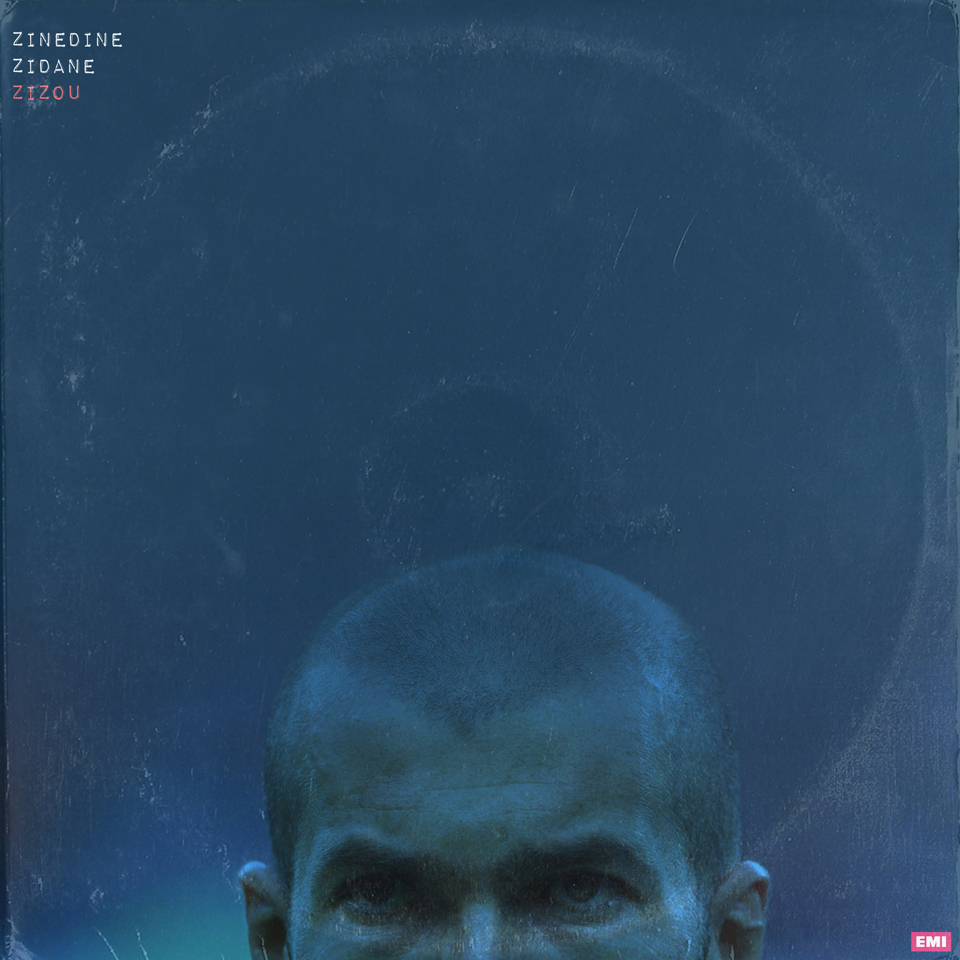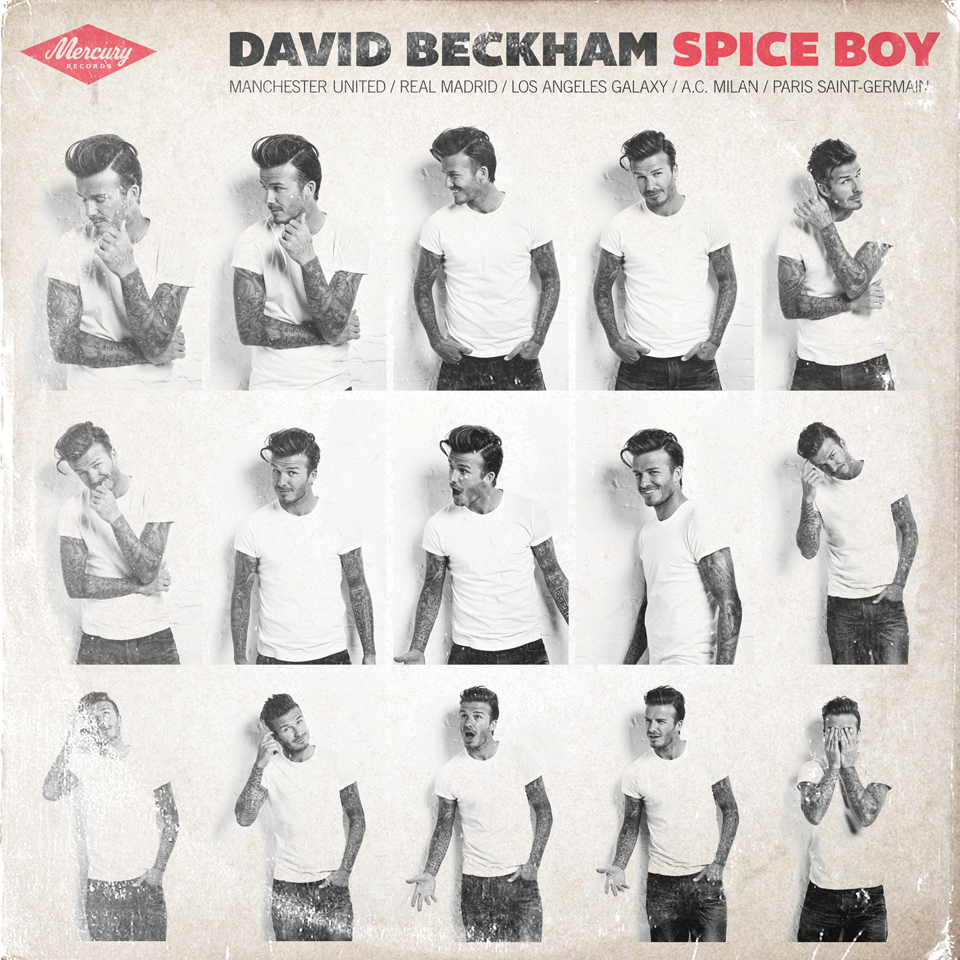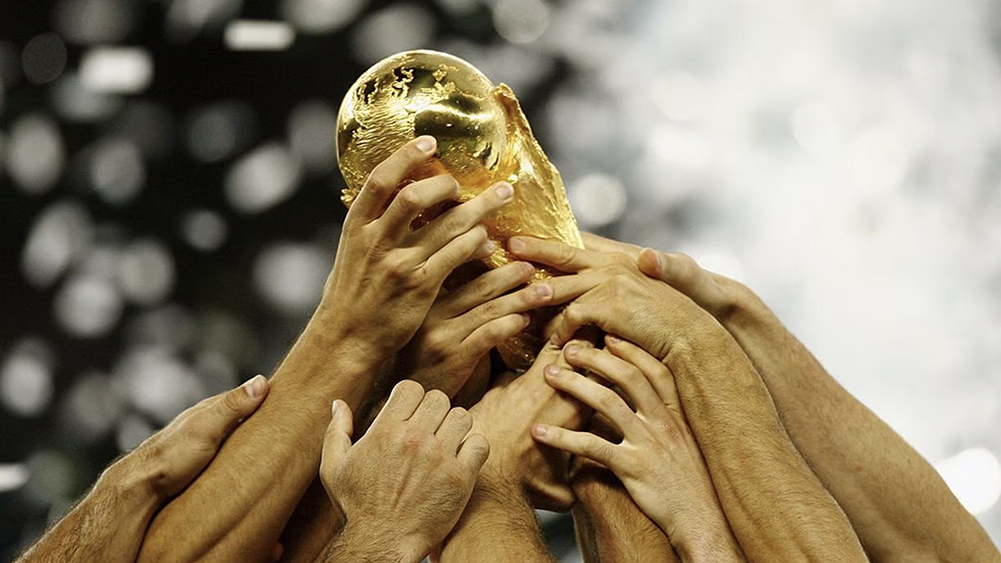







Founded in Osaka in 1781, Takeda is a global Japanese pharmaceutical company — now the third largest company of its kind in Asia. It focuses on oncology, rare diseases, neuroscience, gastroenterology, Plasma-Derived Therapies and vaccines.
Takeda wanted to articulate its long-term value creation model, much of which concerns PDTs, their dengue vaccine, and leading-edge oncology treatments. The client also wished to bring together diverse global organizations by showing regional impact — so for example here they talk about their work not just in Japan but in Brazil, Austria and the United States. The primary target audience for this report is stakeholders and investors, but another focus was employees, in order to build trust from within but also further differentiate Takeda’s positioning in the industry.
Takeda has an unusual primary color palette in that they have three different shades of red. I was hesitant to use them all together at first but I stumbled upon a triple stripe motif, that served to anchor the navigation menu on the left side of every page. I then expanded this idea into more dynamic, overlapping stripes for the cover and section divider pages.
Another aspect that visually strengthened this report was its photography. Takeda conducted a series of new photoshoots in Japan and Brazil and I was able to leverage the beautiful results of those to produce full-page, full-bleed layouts with type overlaid. This not only broke up the repetition of the more text-heavy pages but also provided a certain magazine-like sophistication that the client was specifically striving towards.

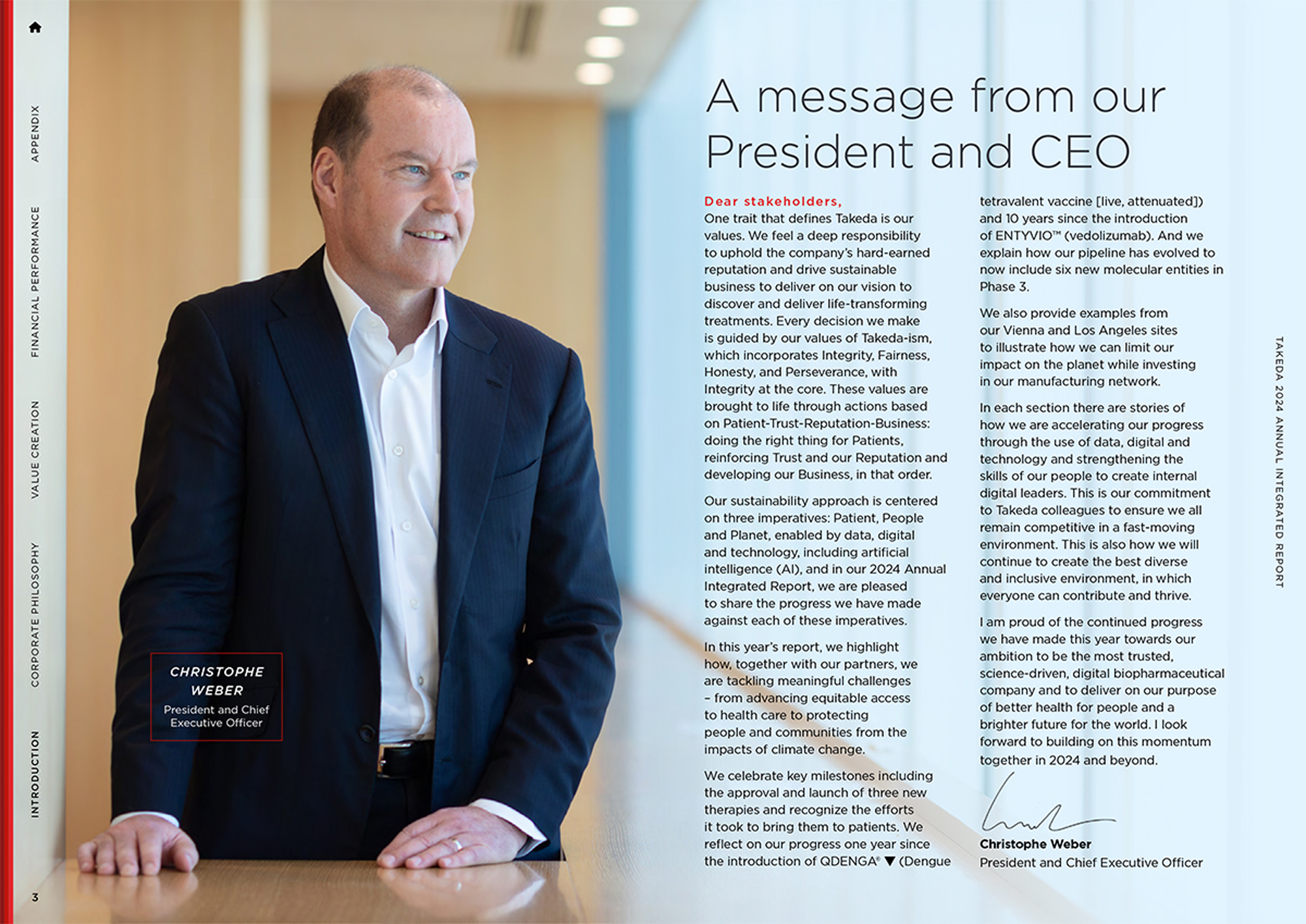




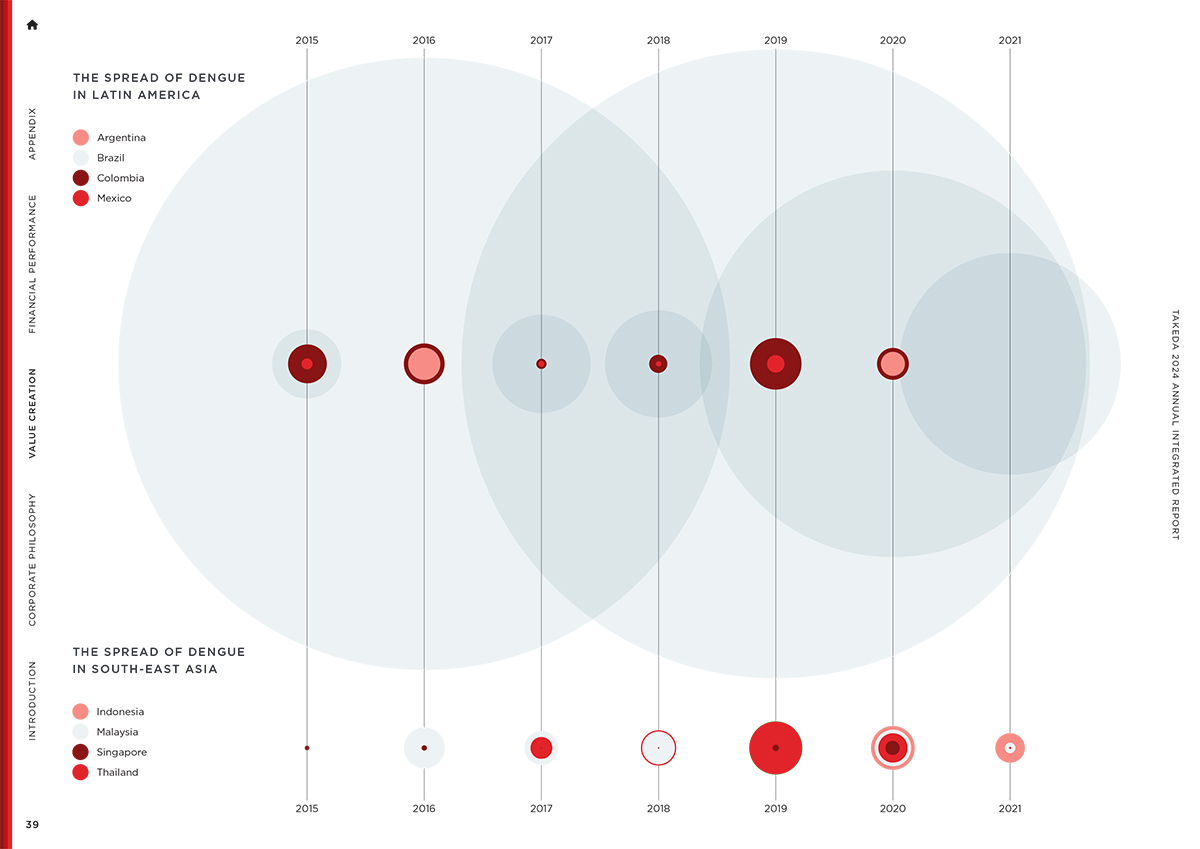
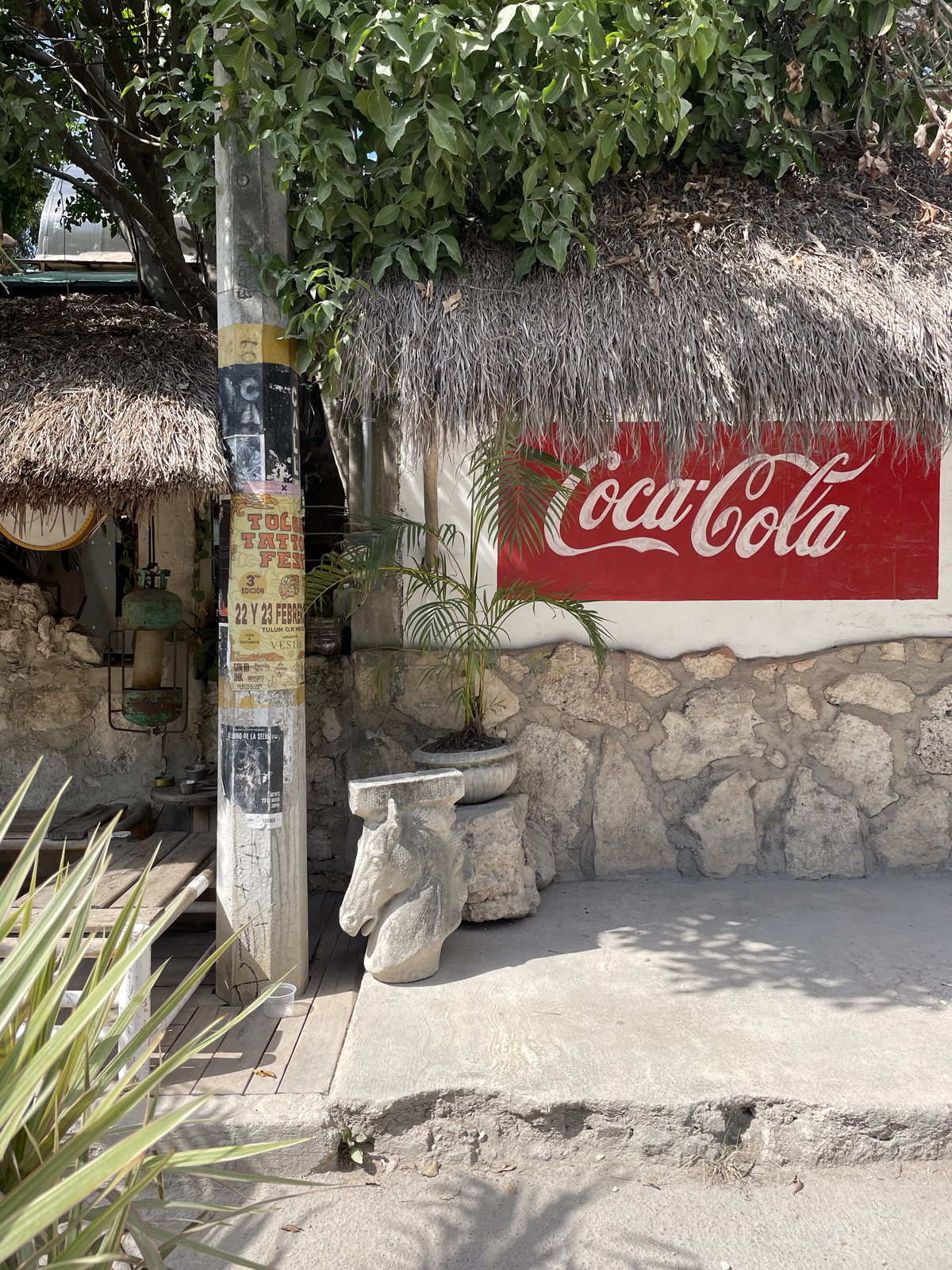
Tulum, March 2025.




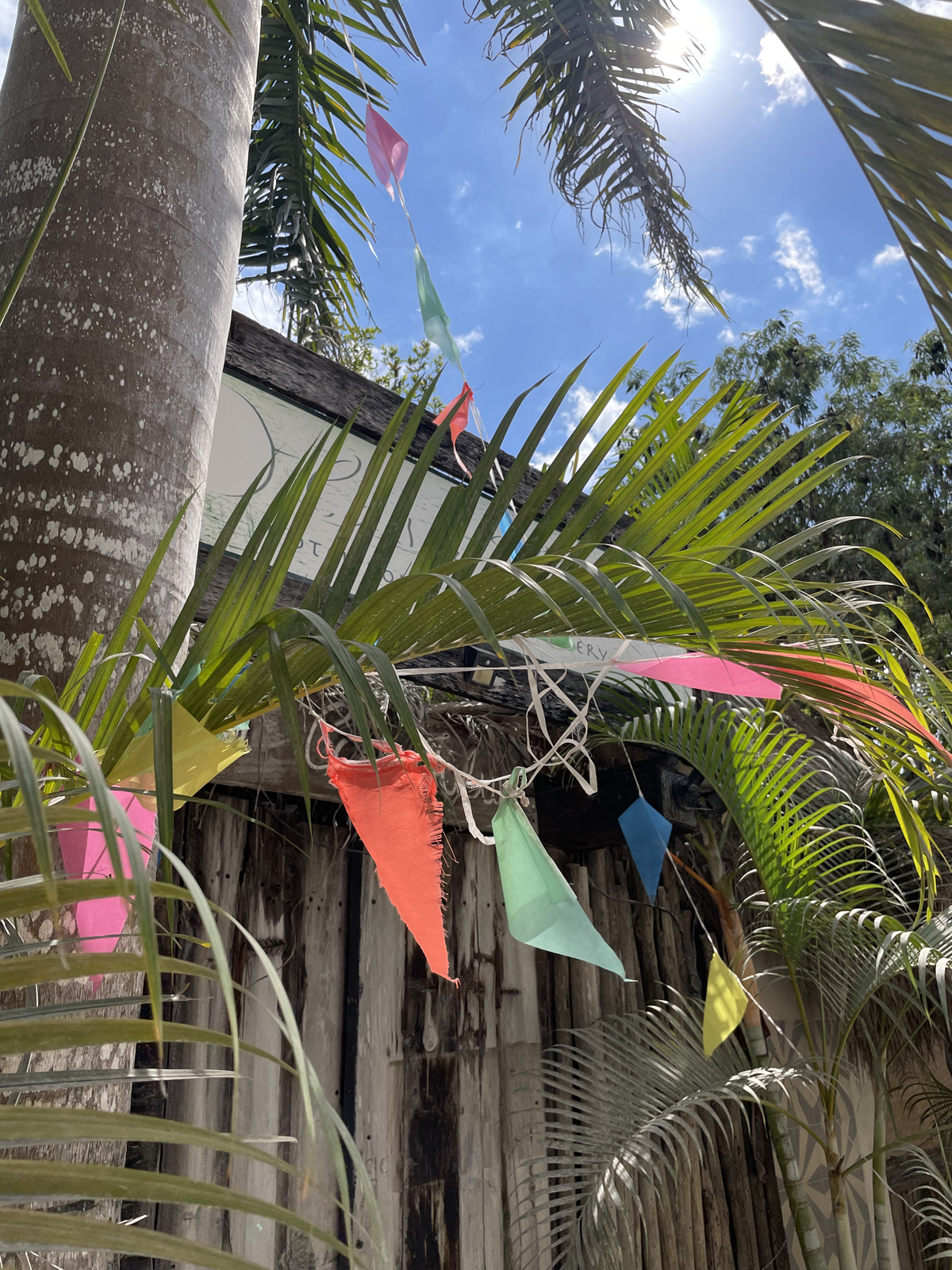


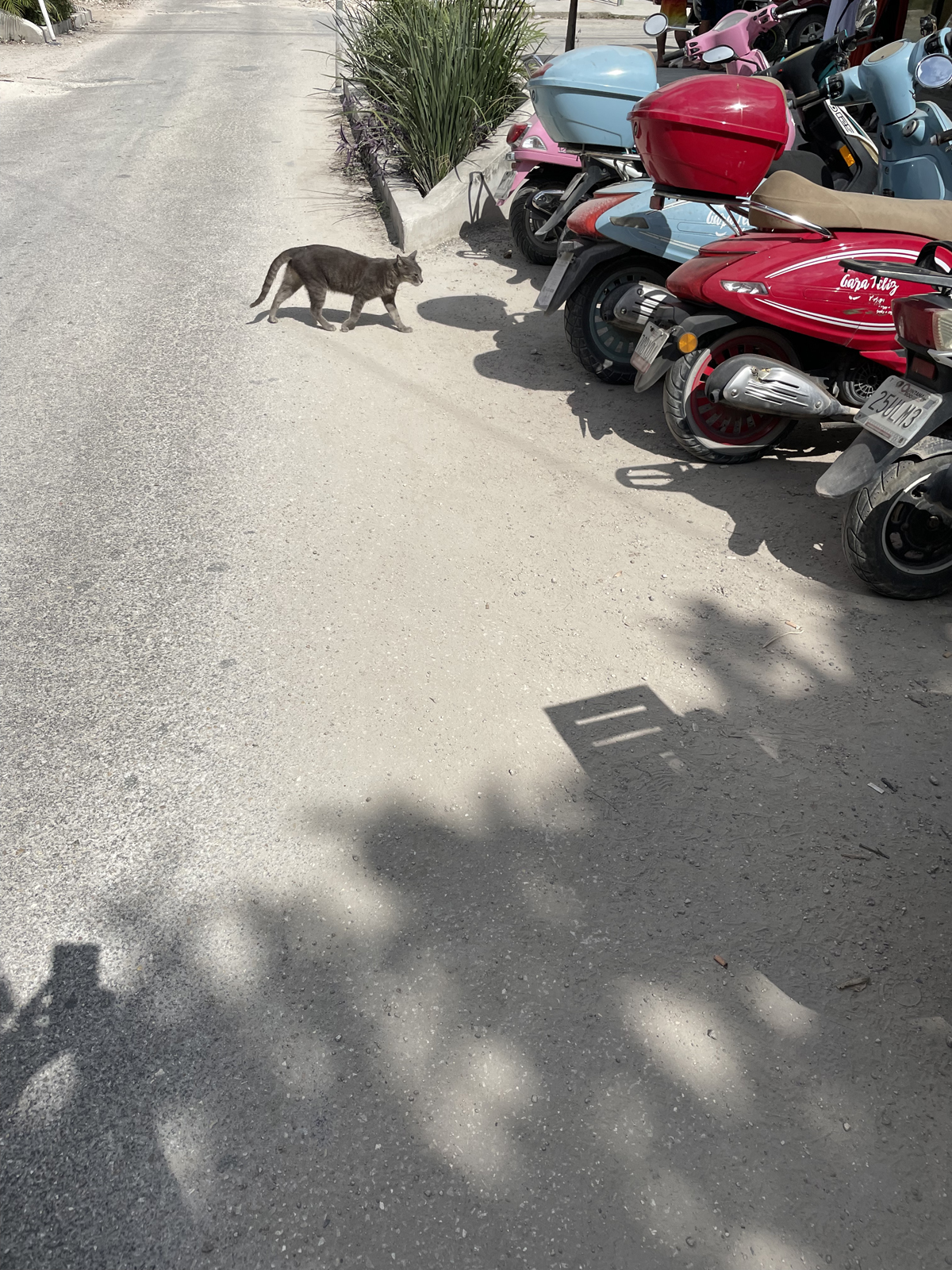
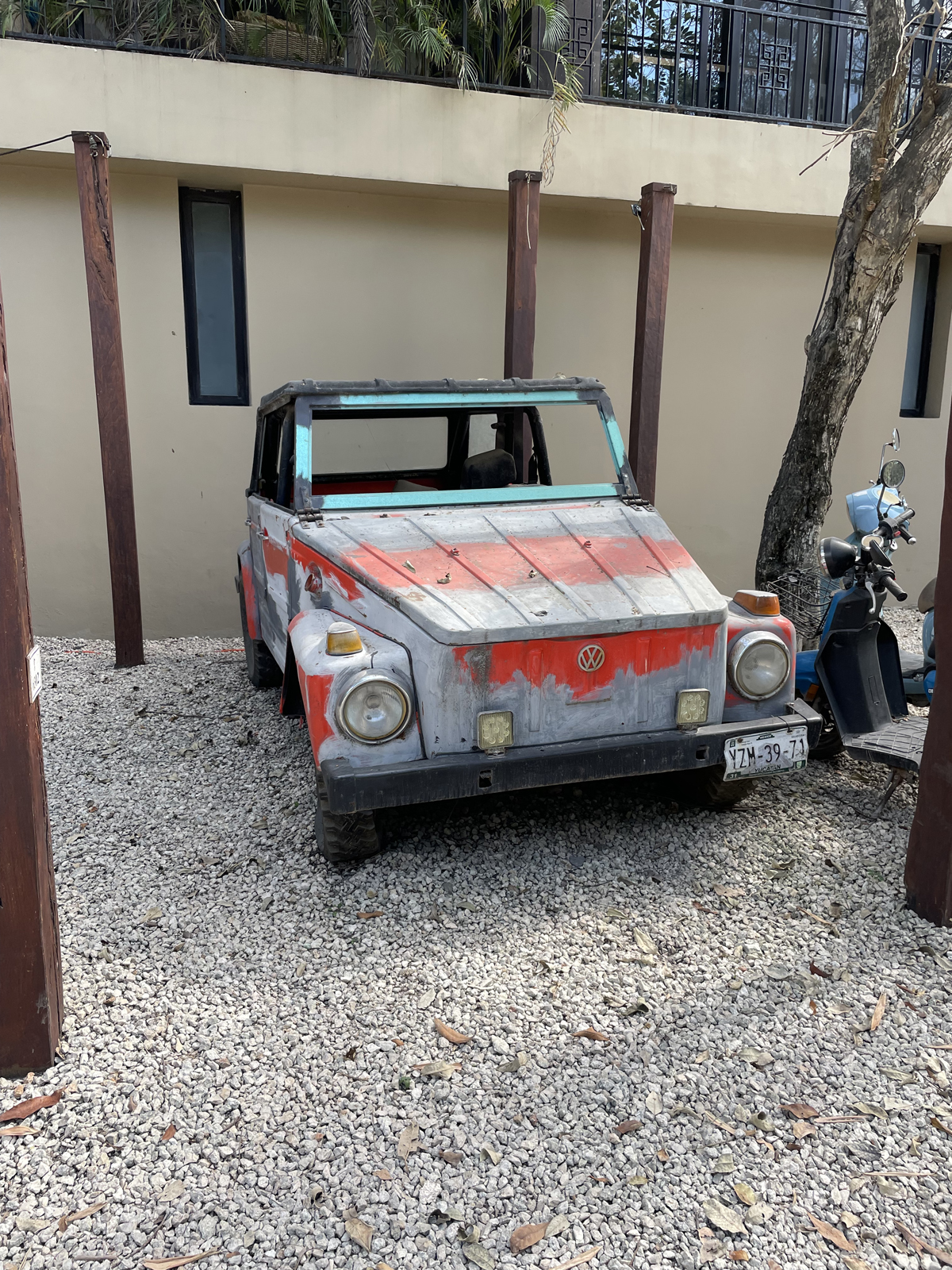


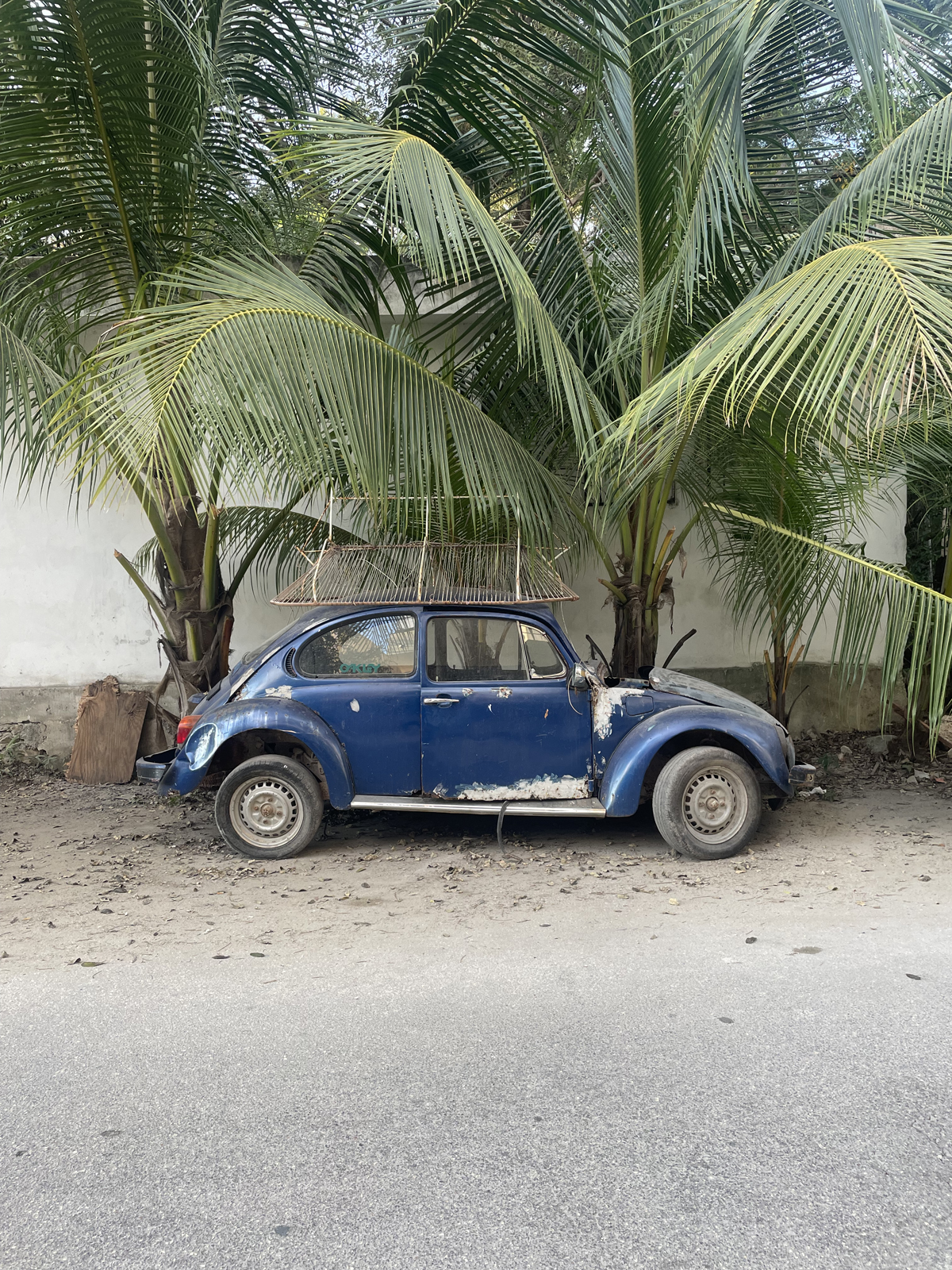



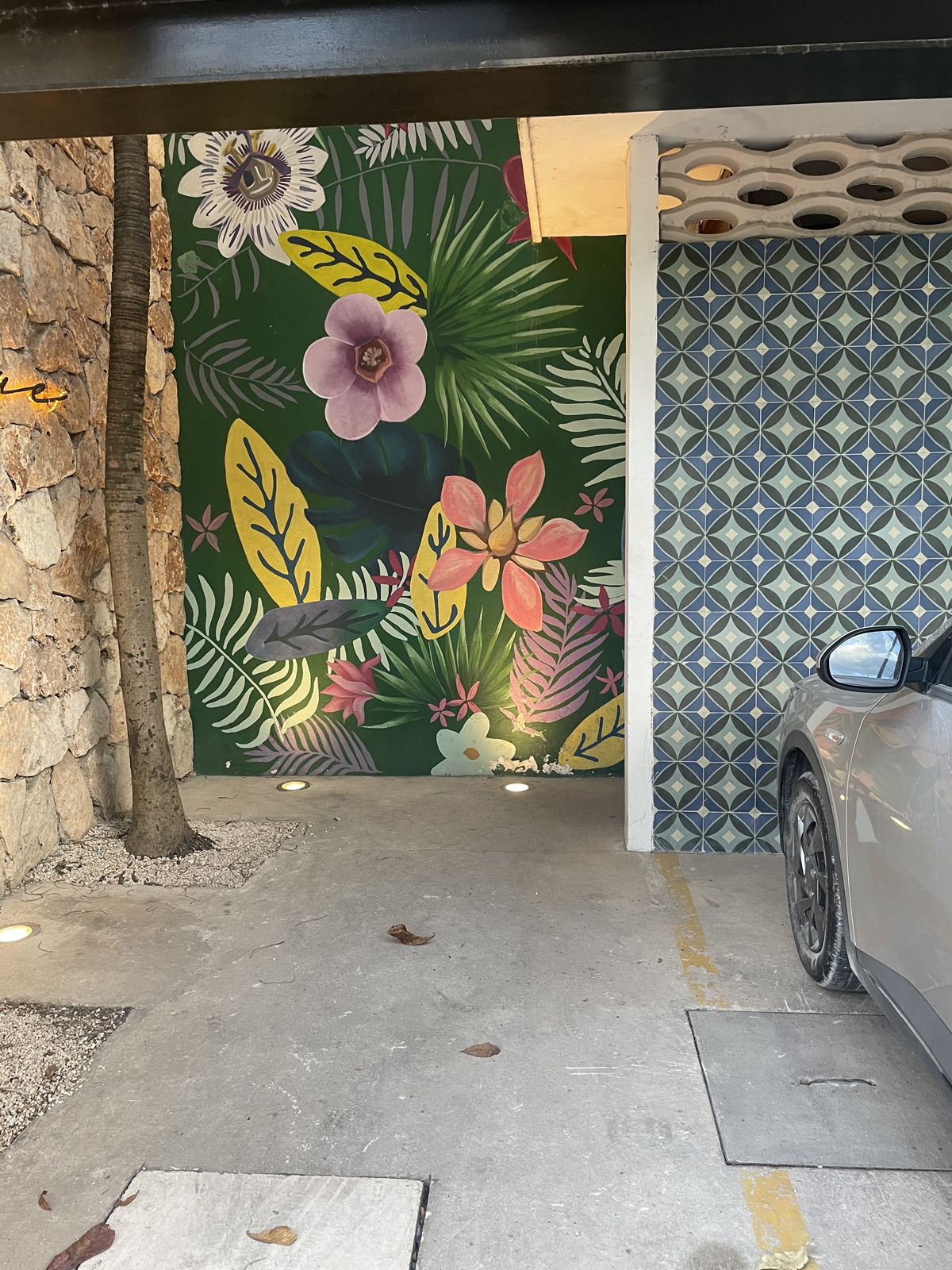

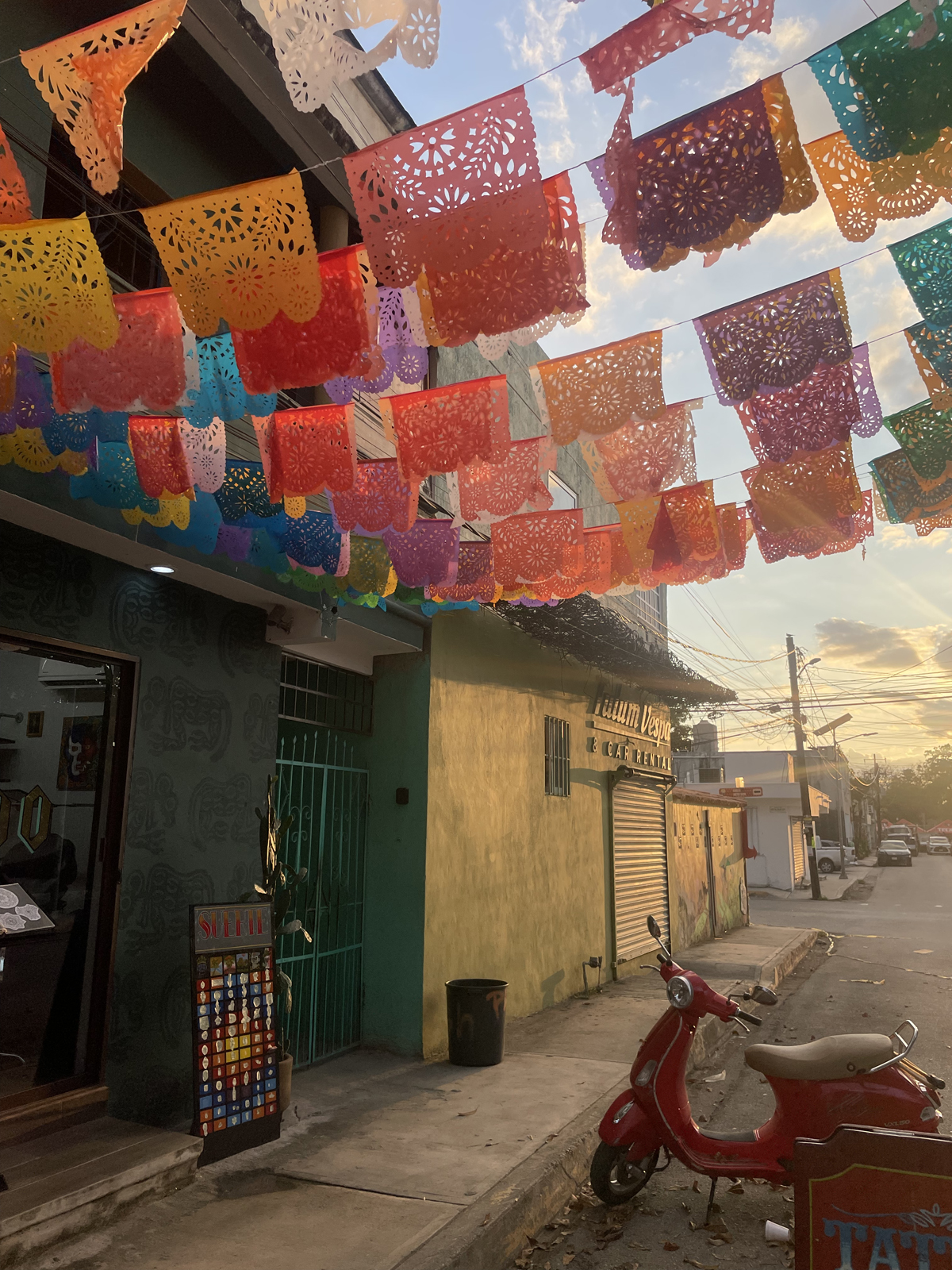





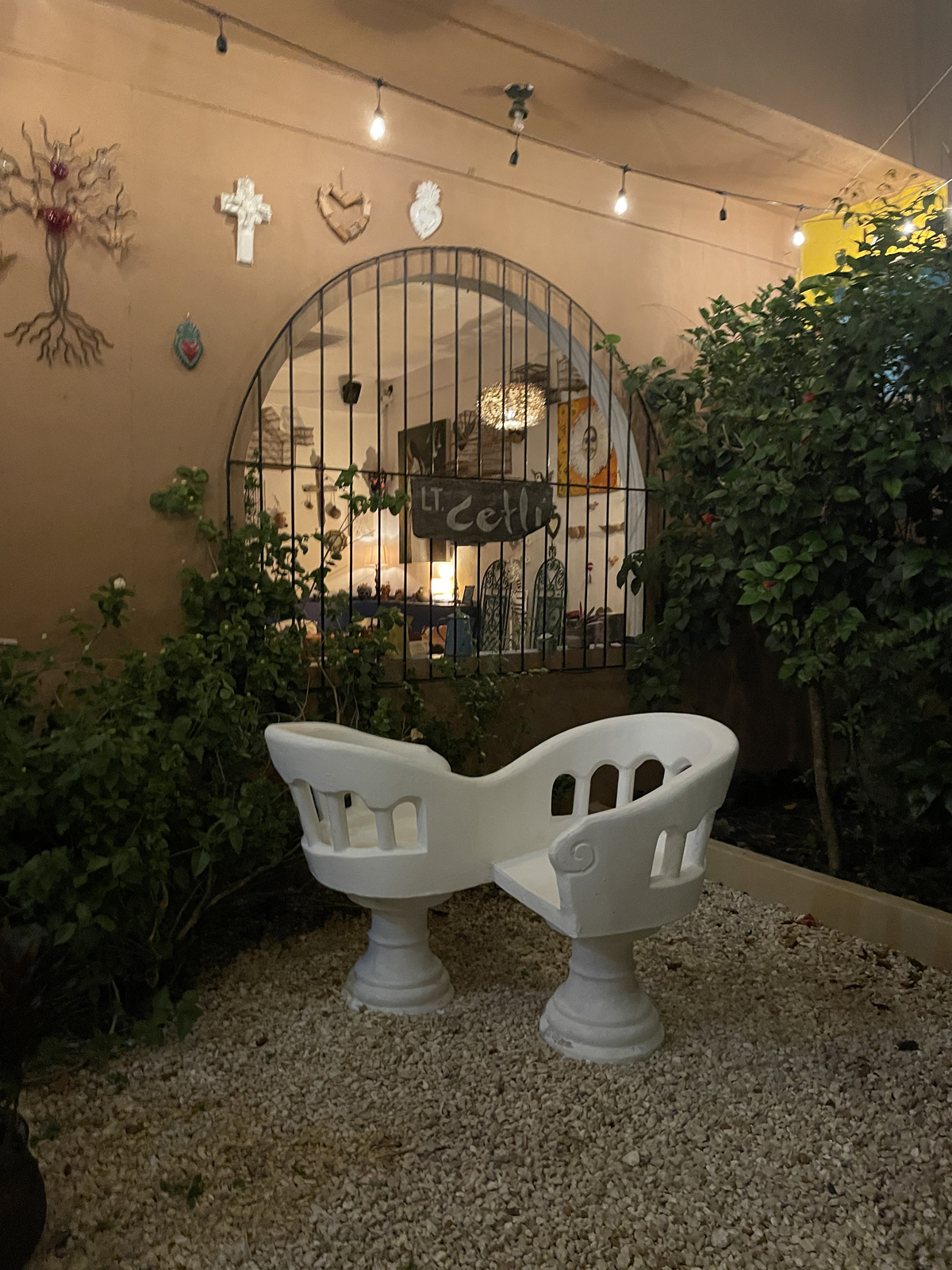
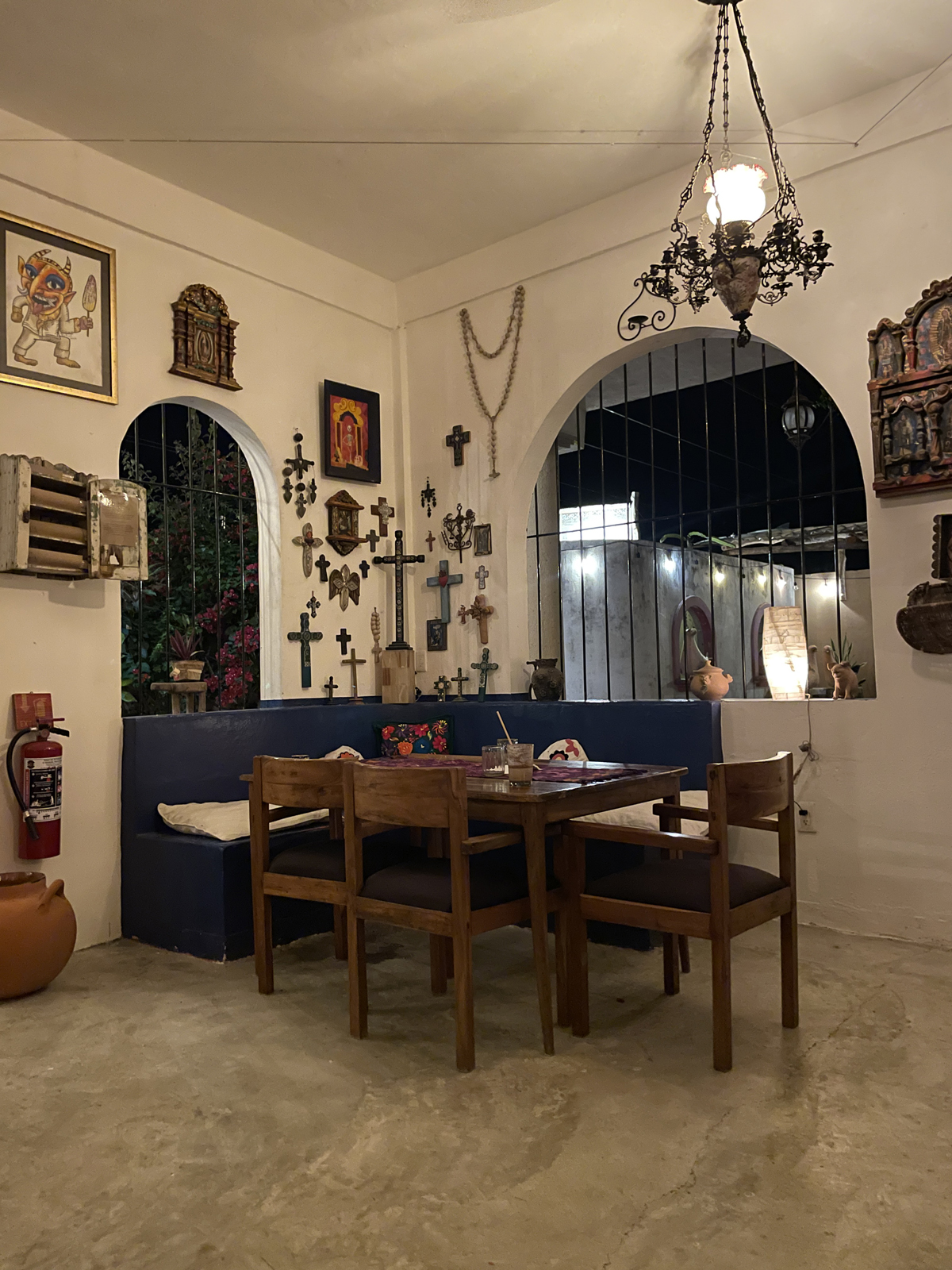
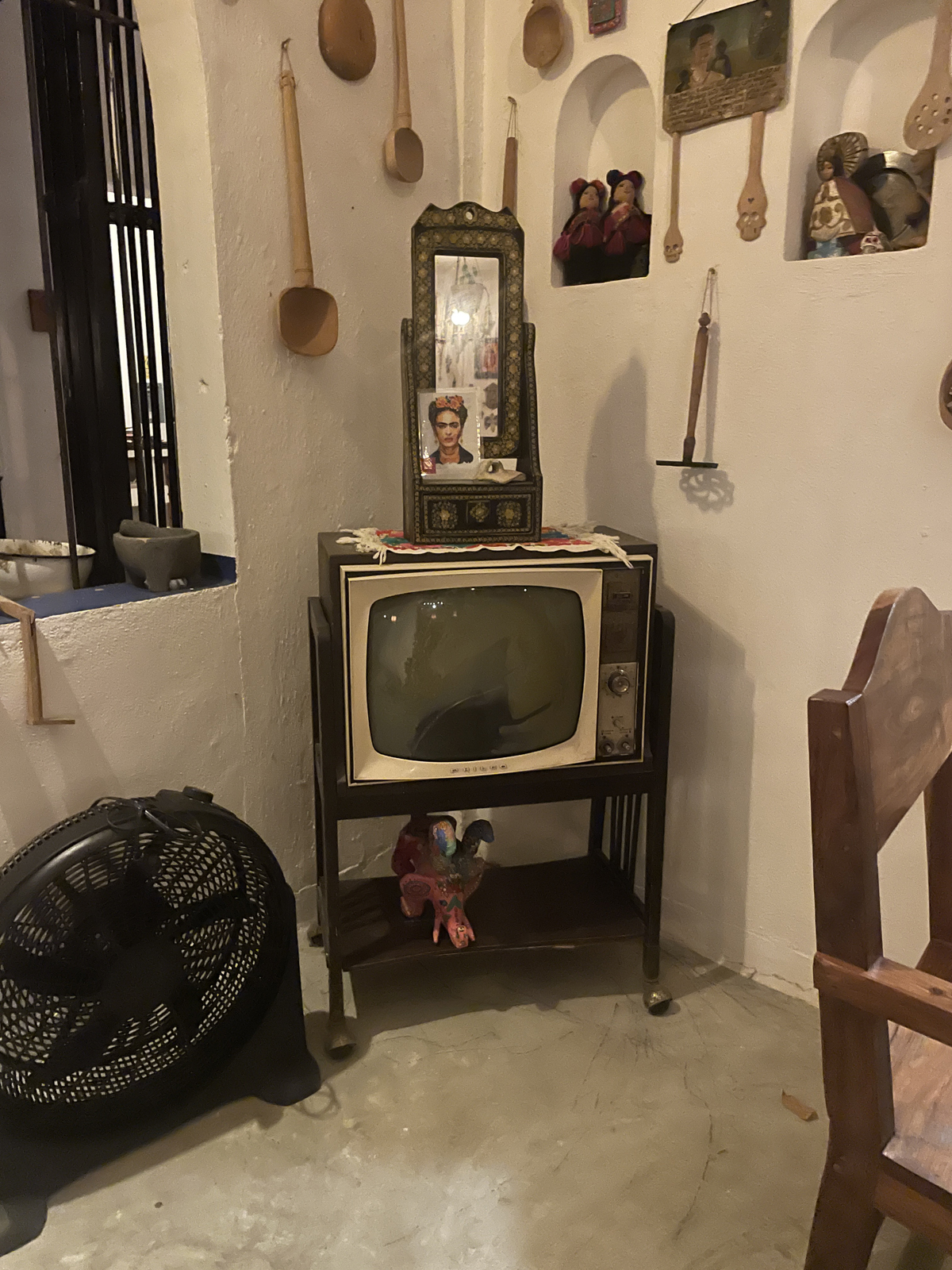
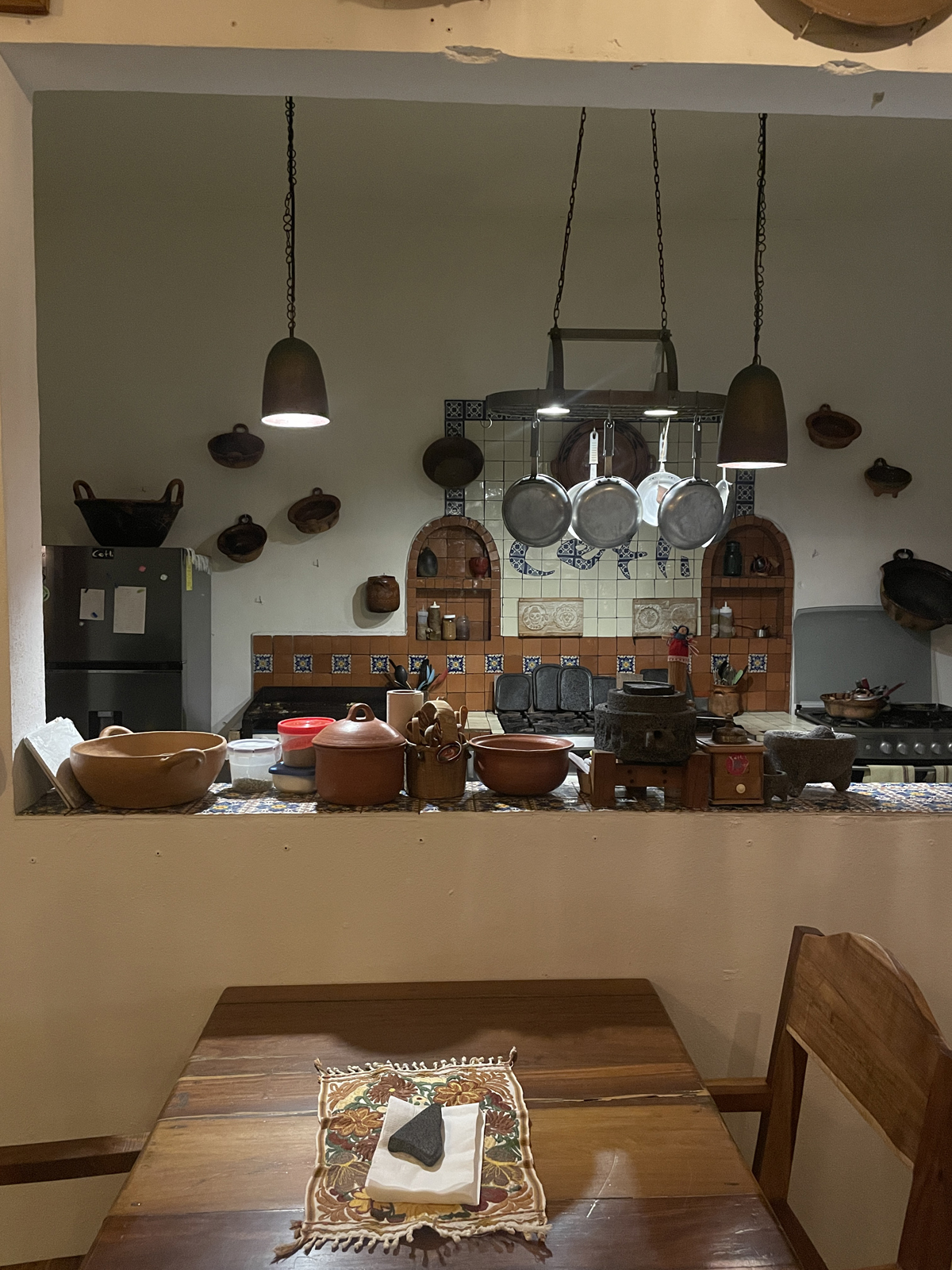
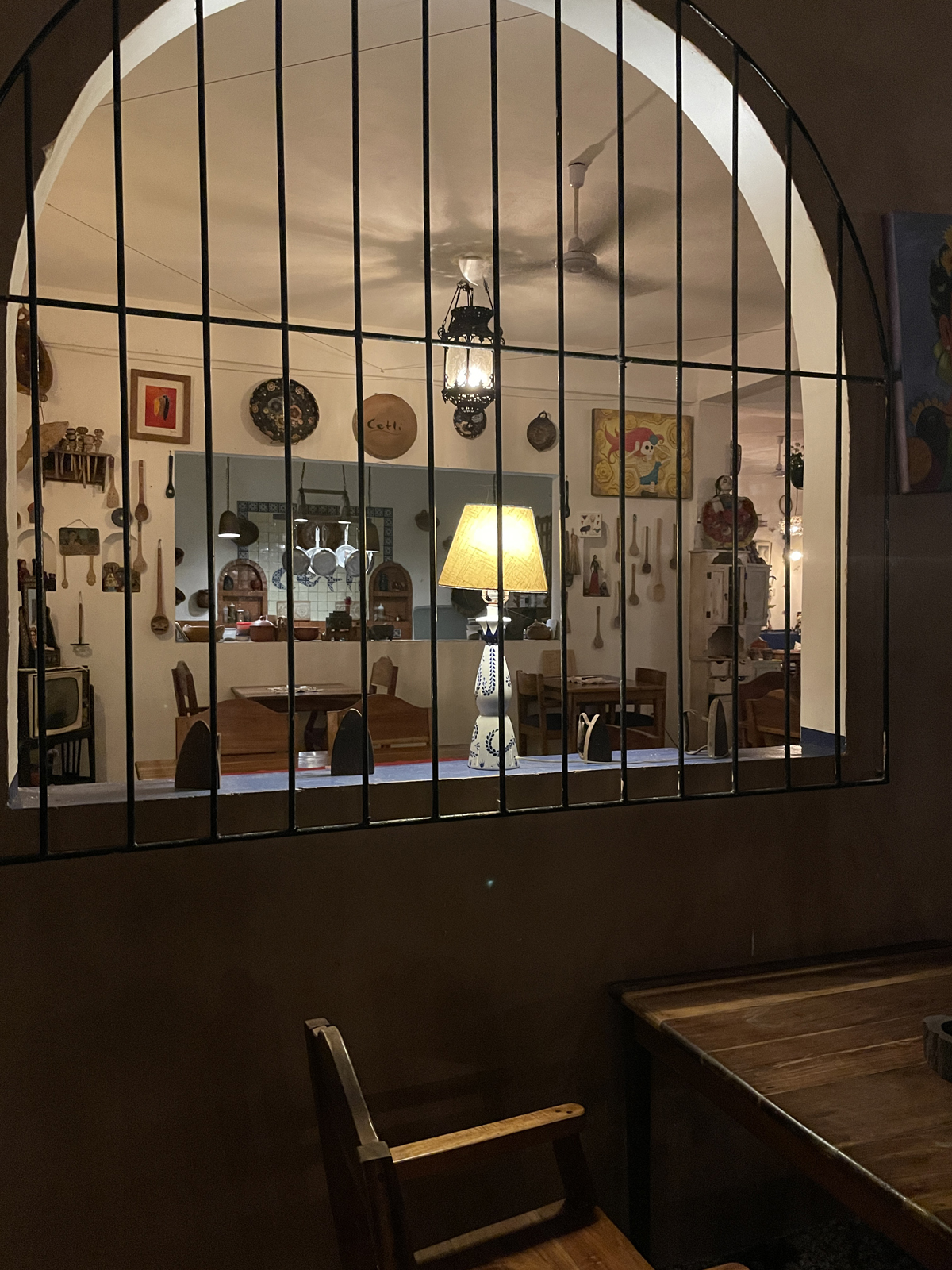
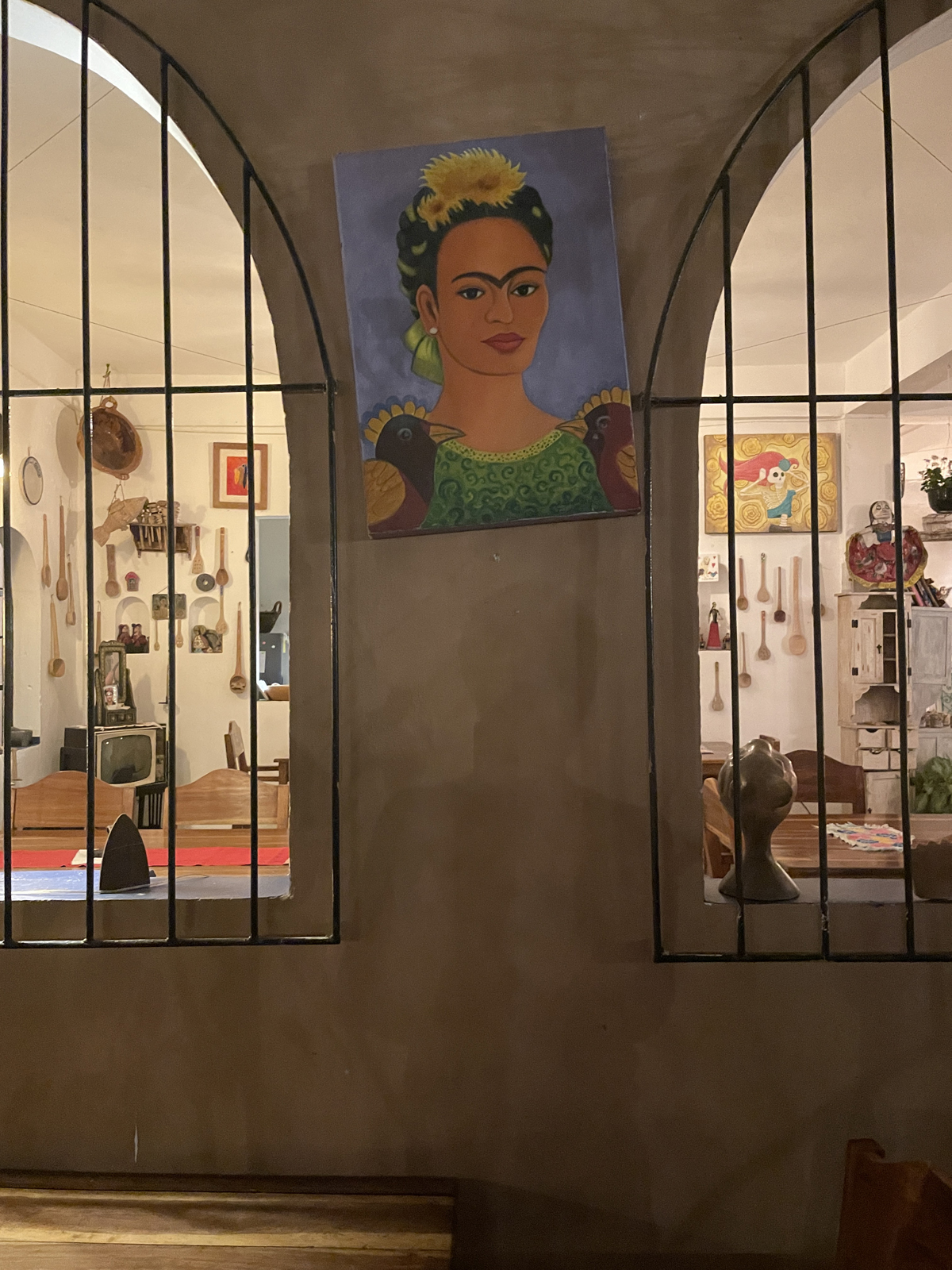
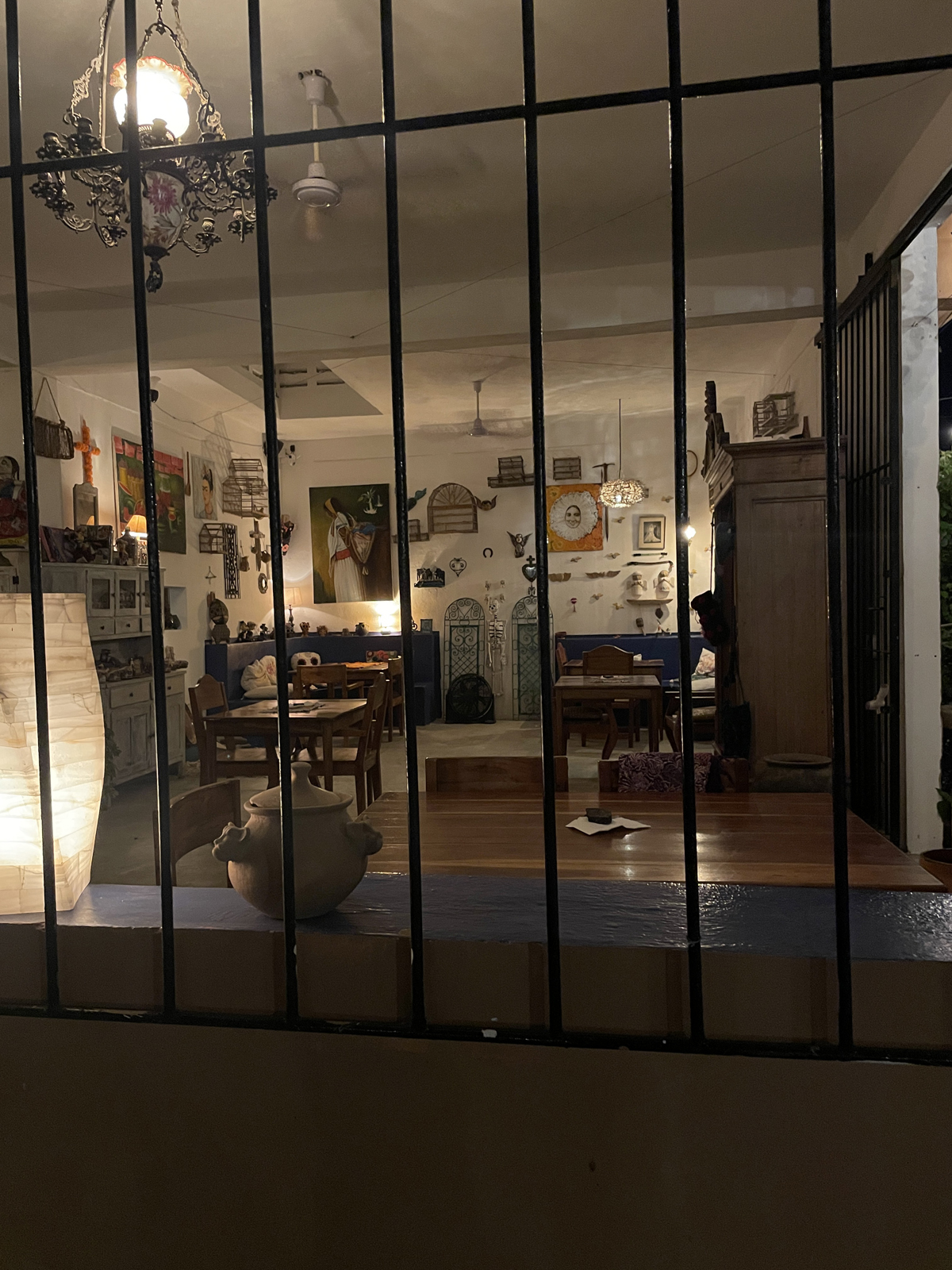
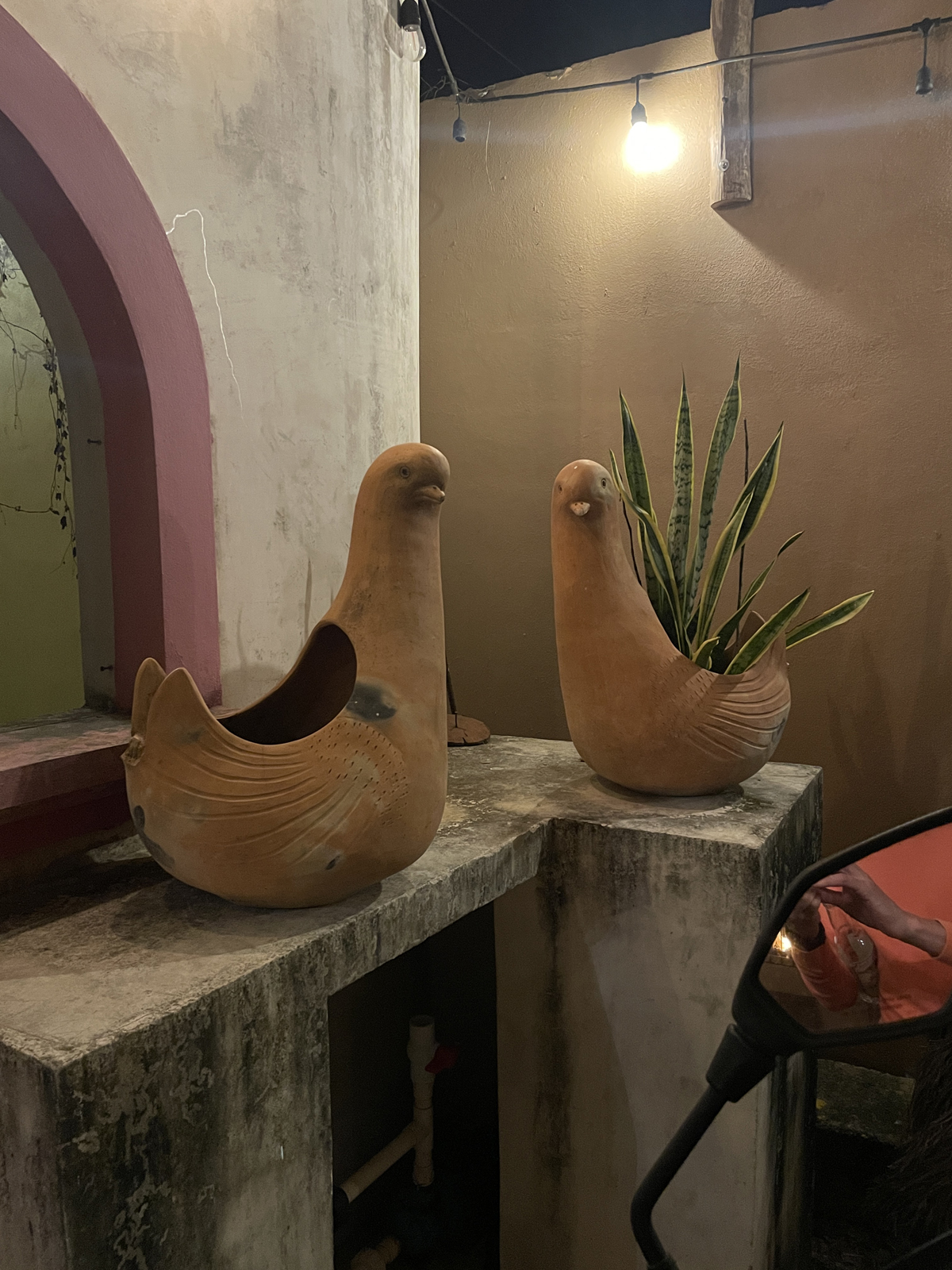



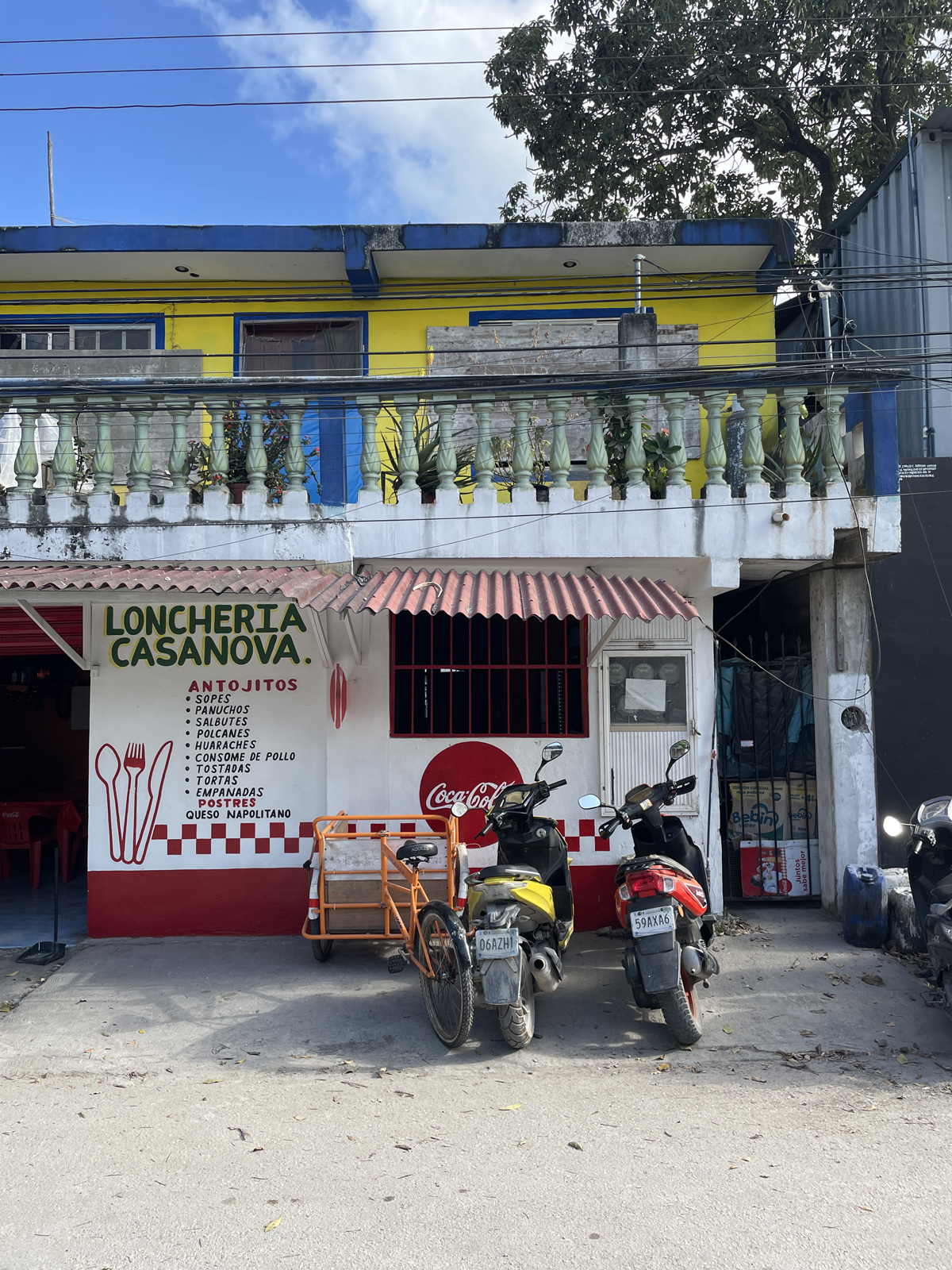
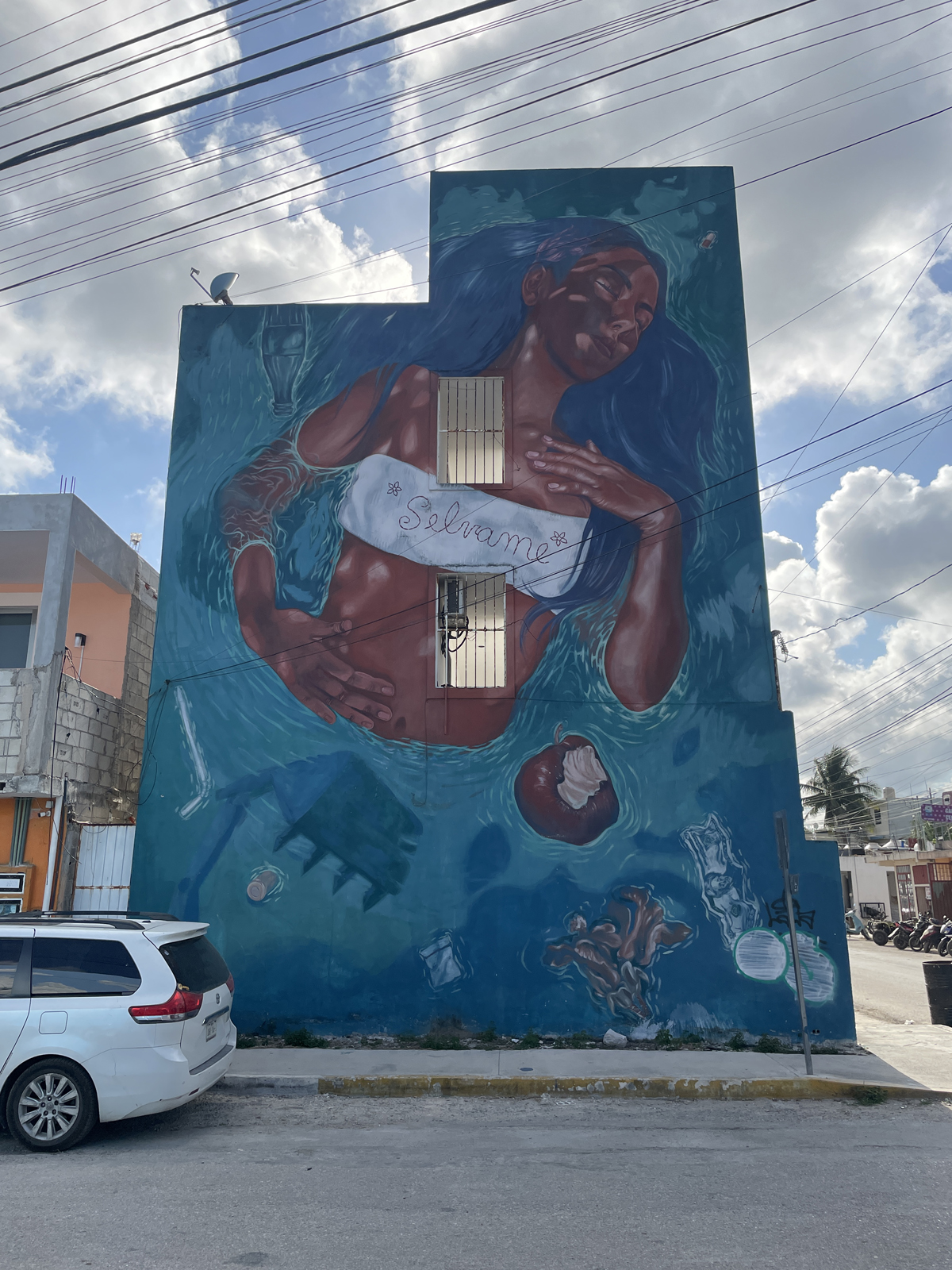



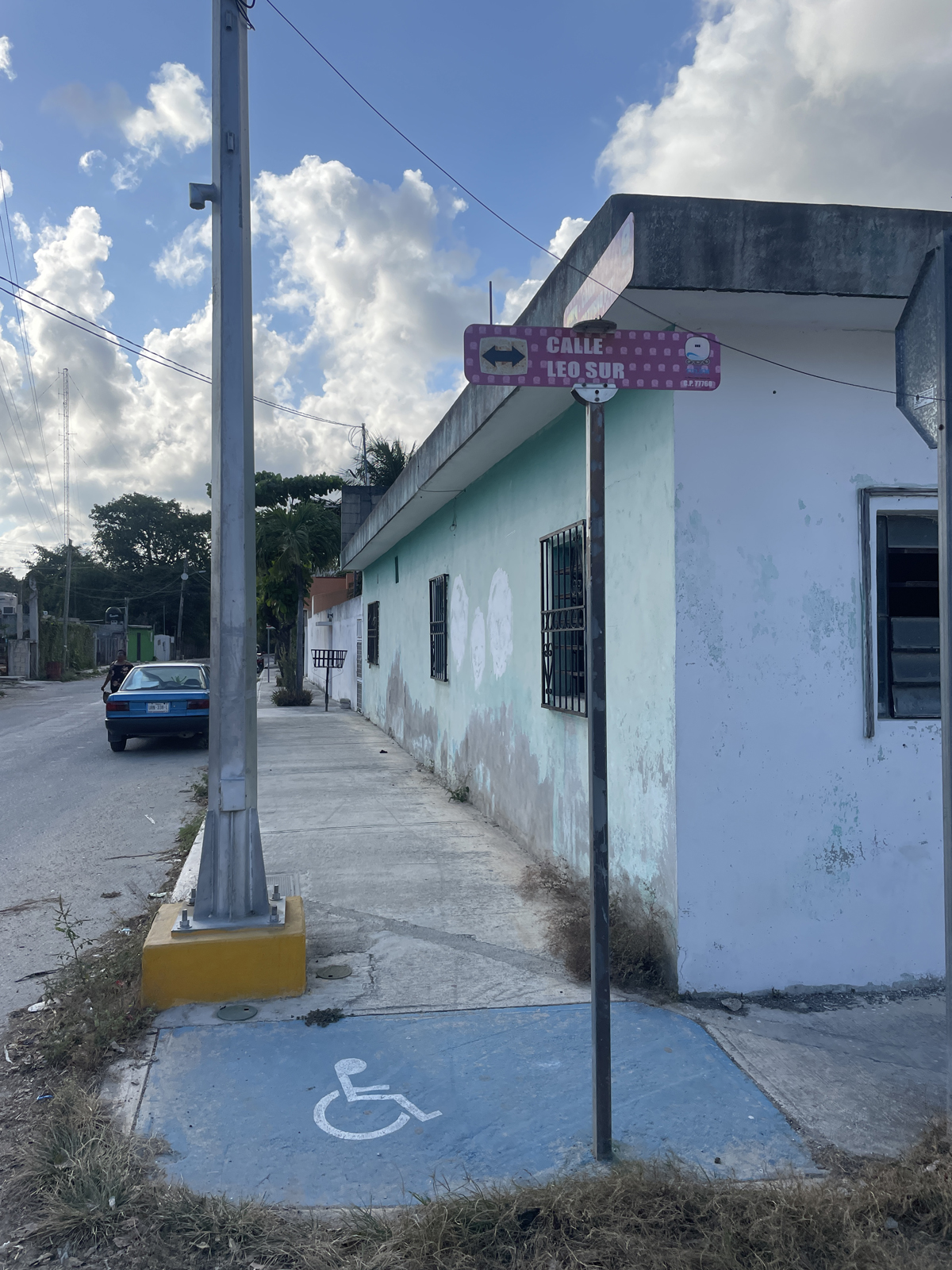





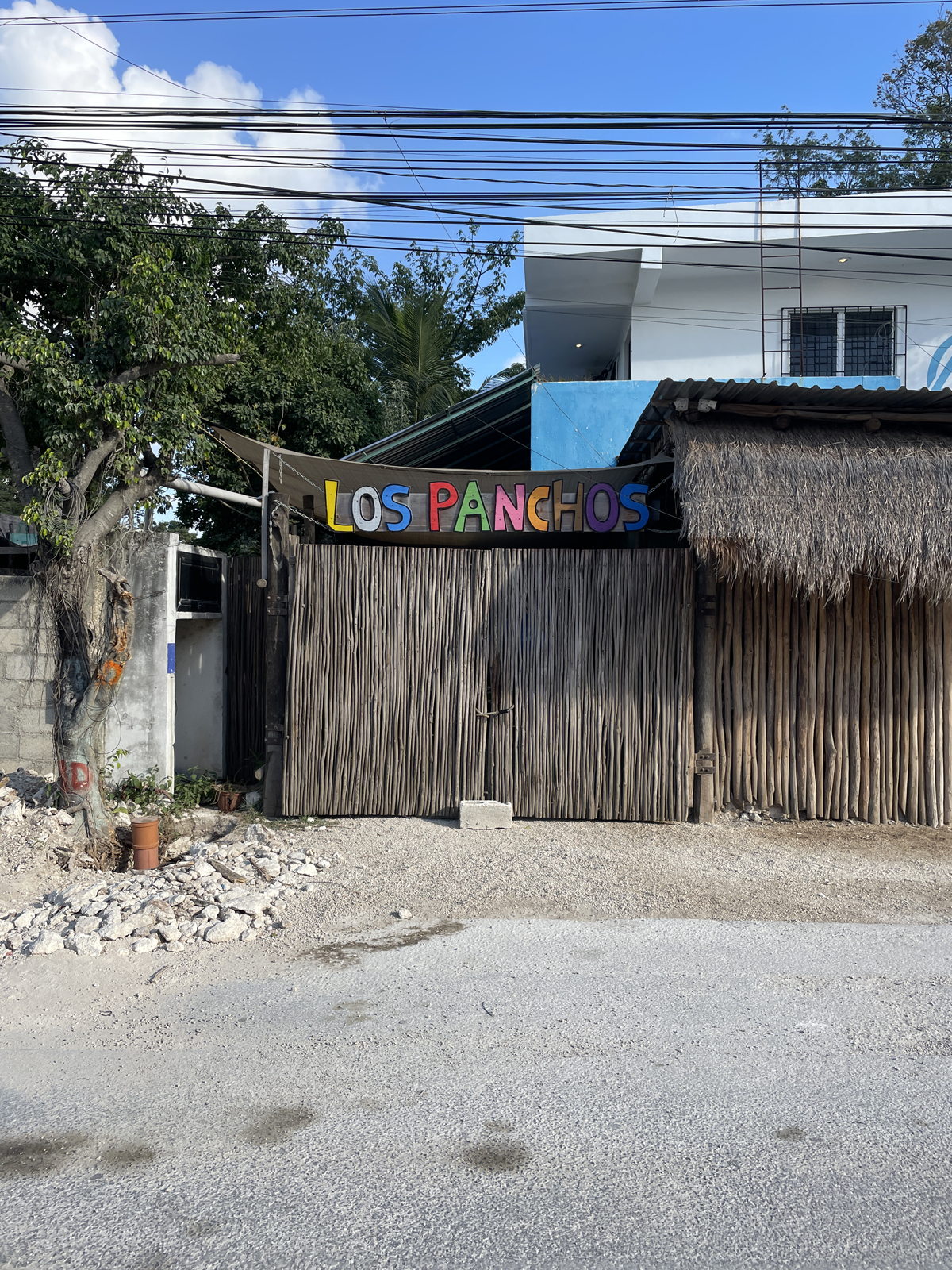


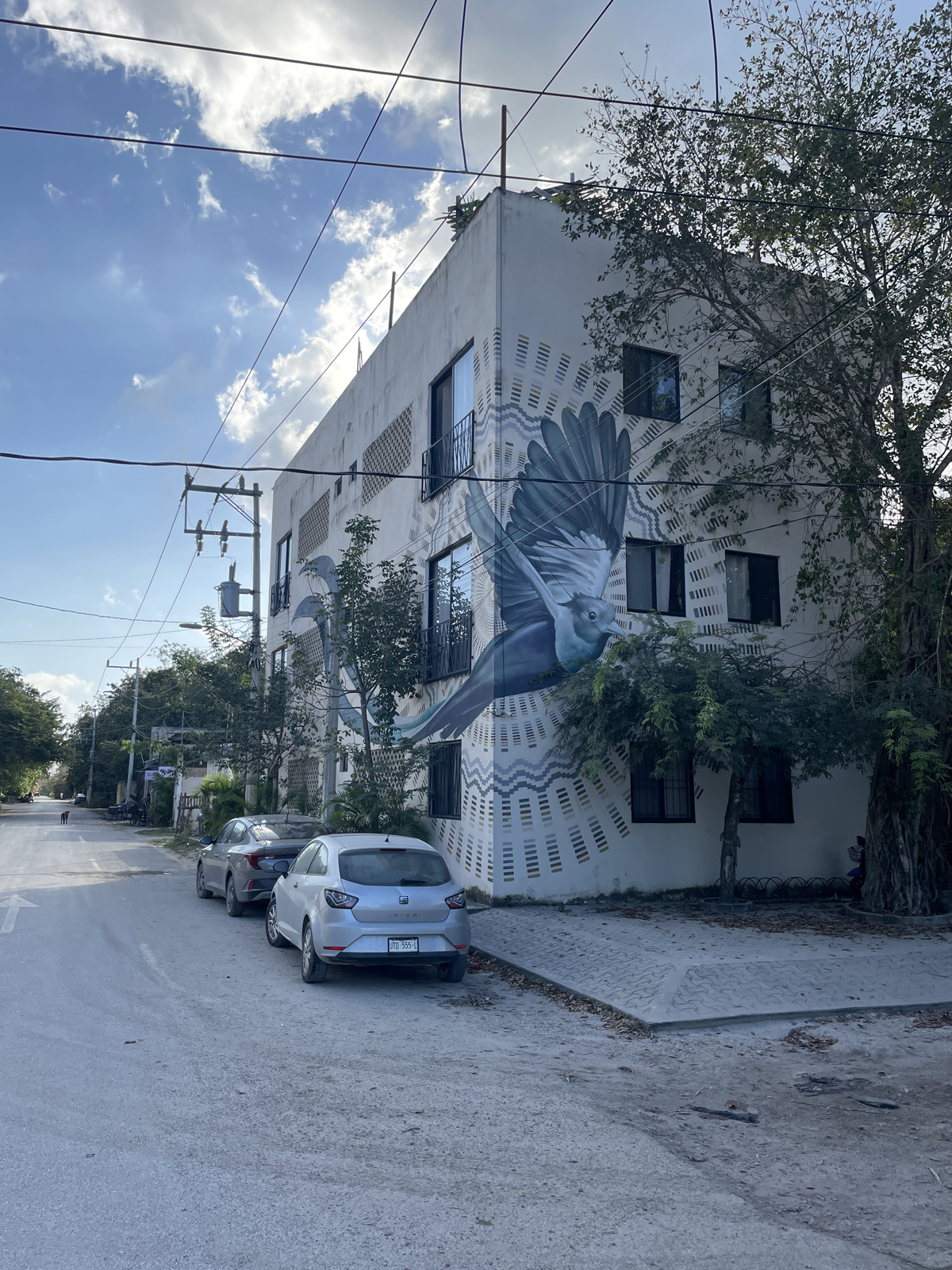


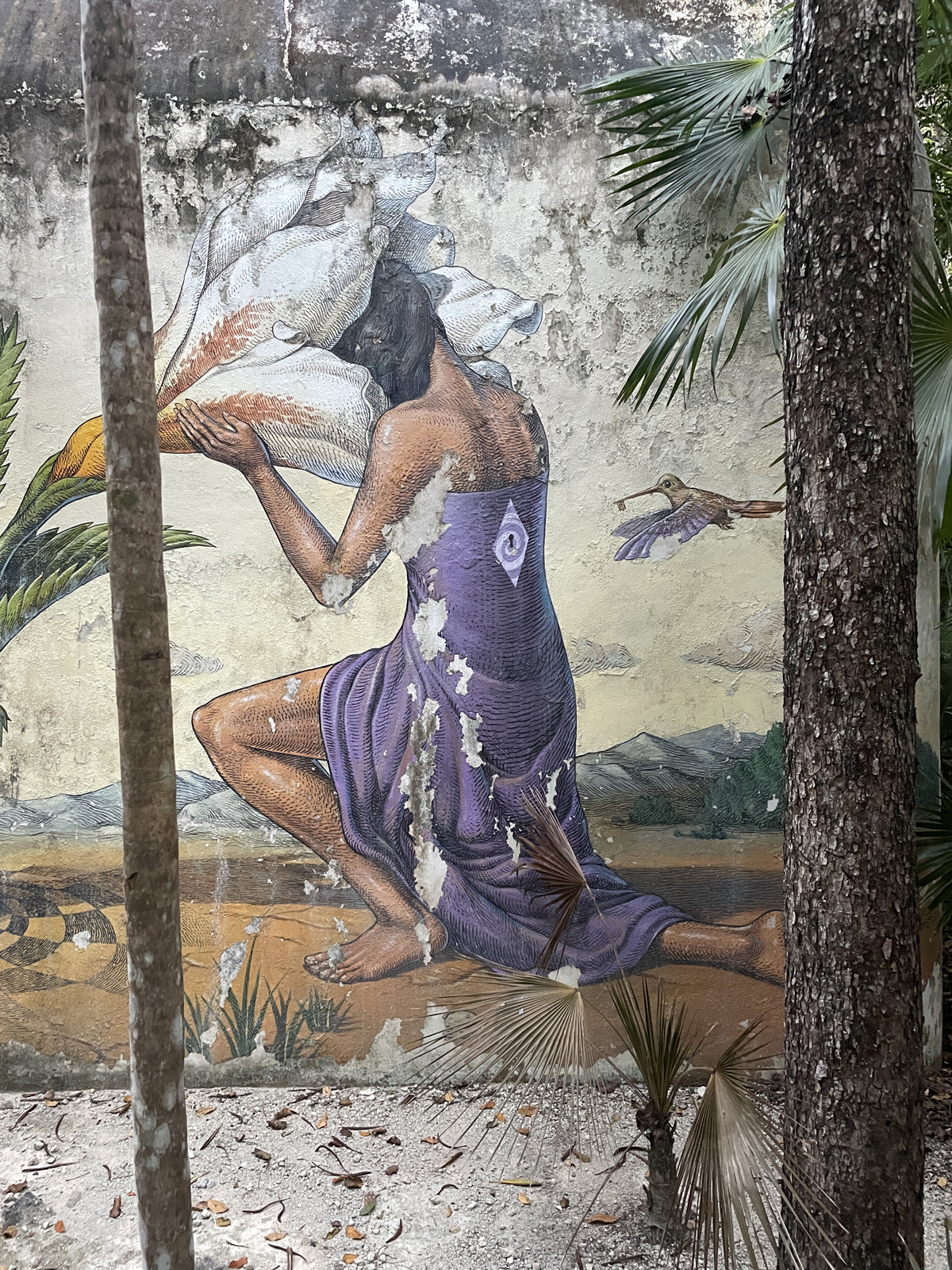
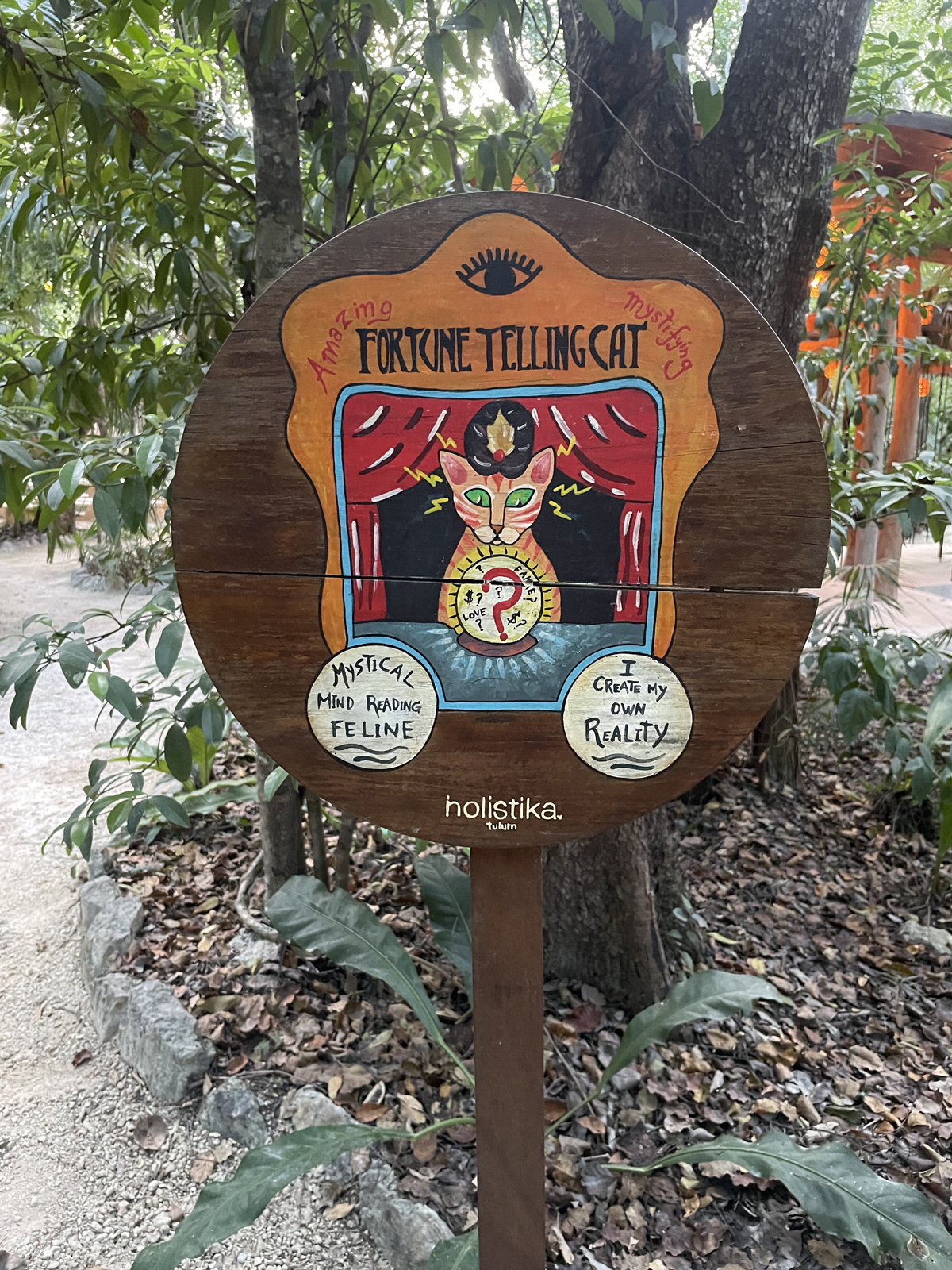
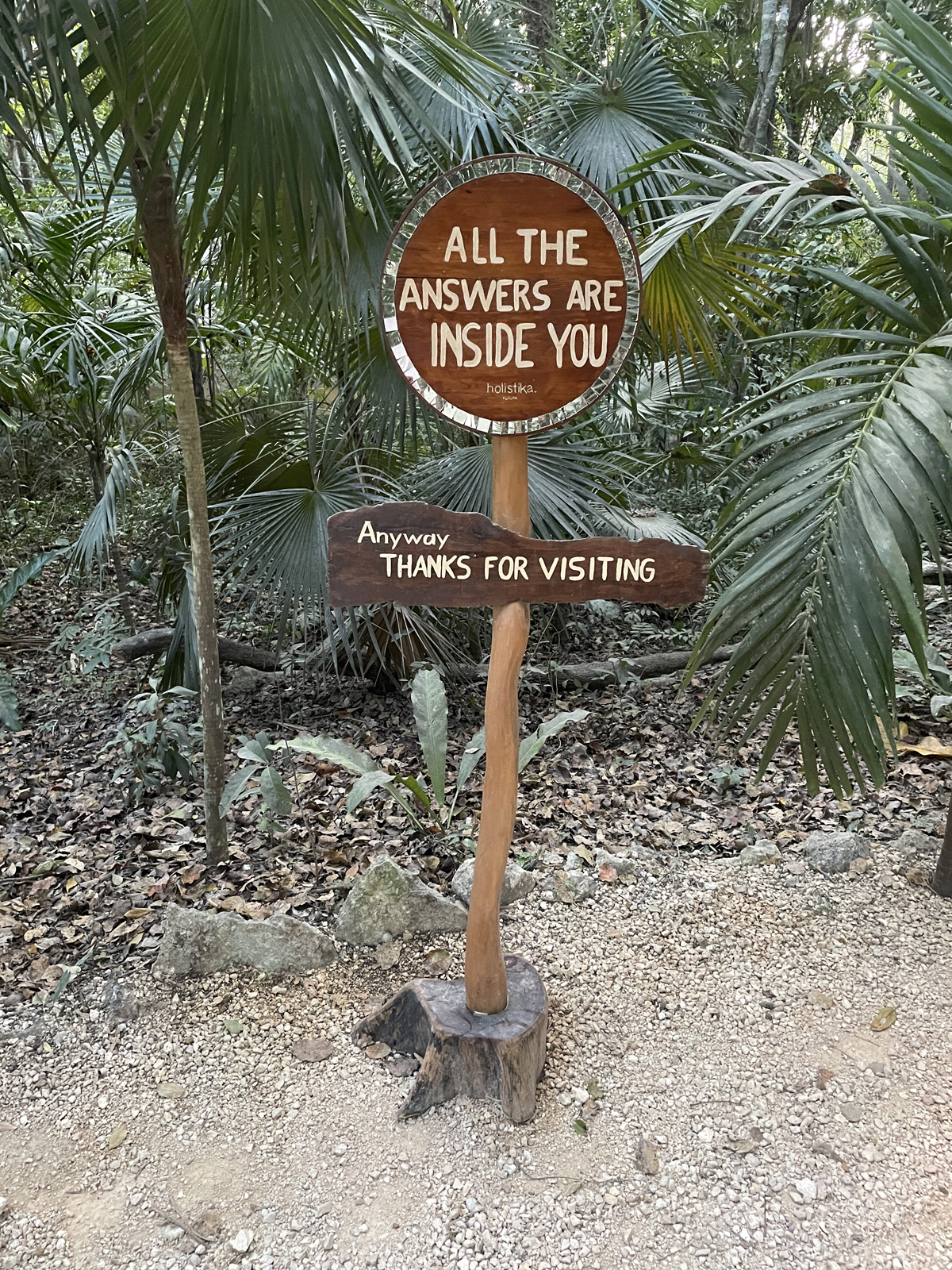
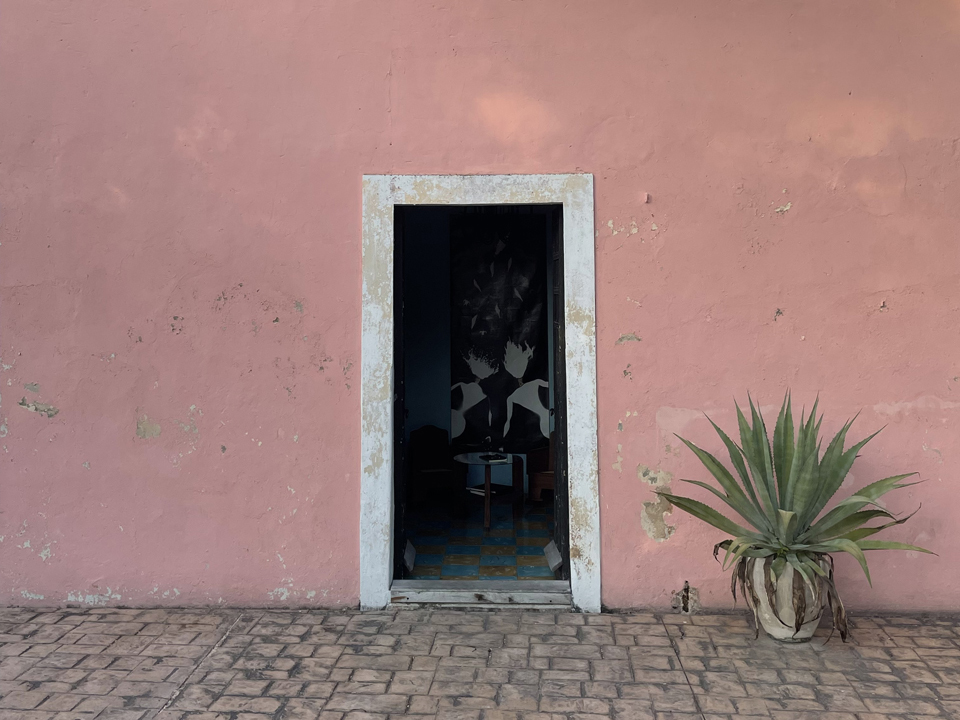
Valladolid, Yucatán, Mexico, March 2022 and March 2025.
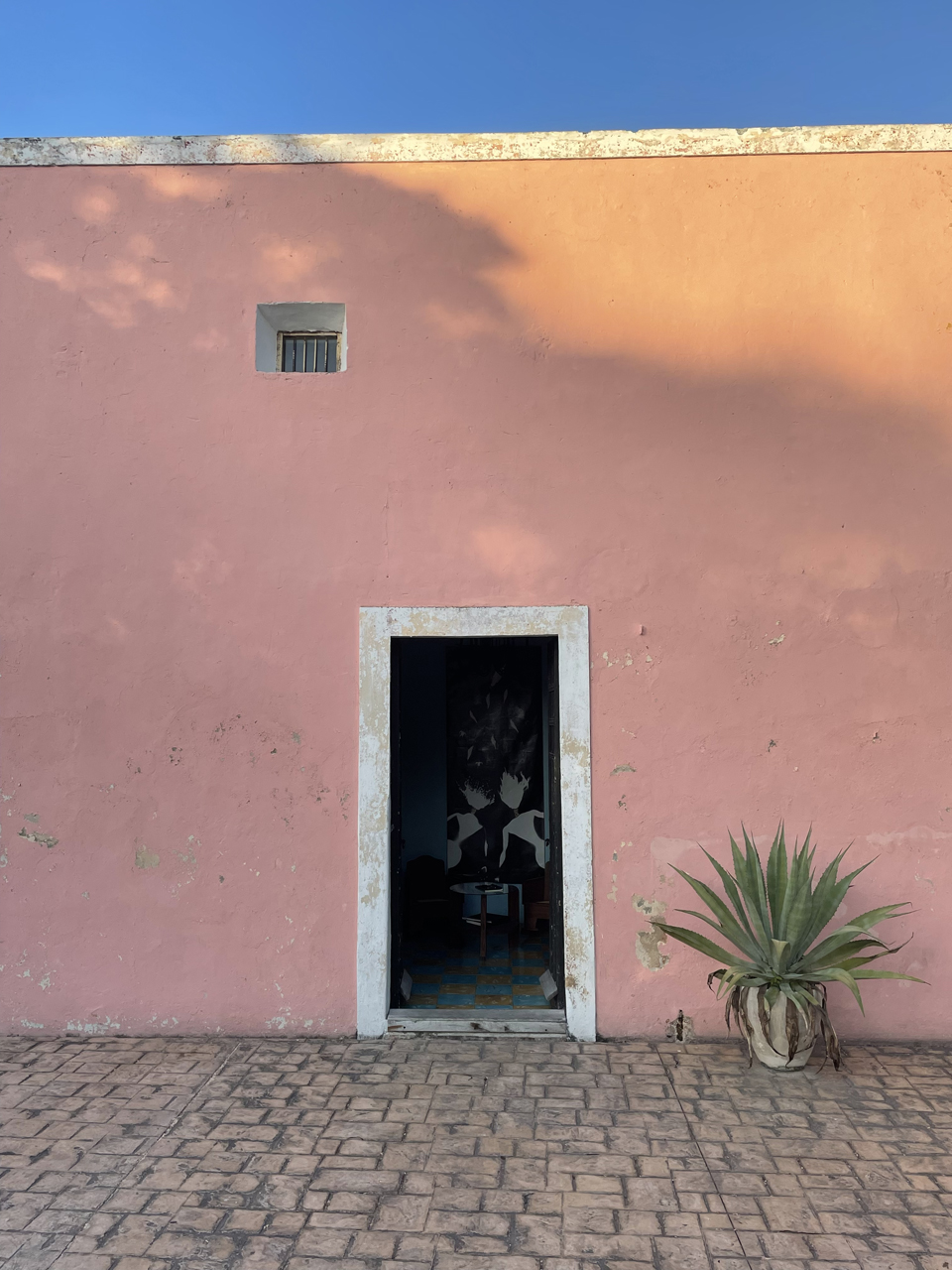

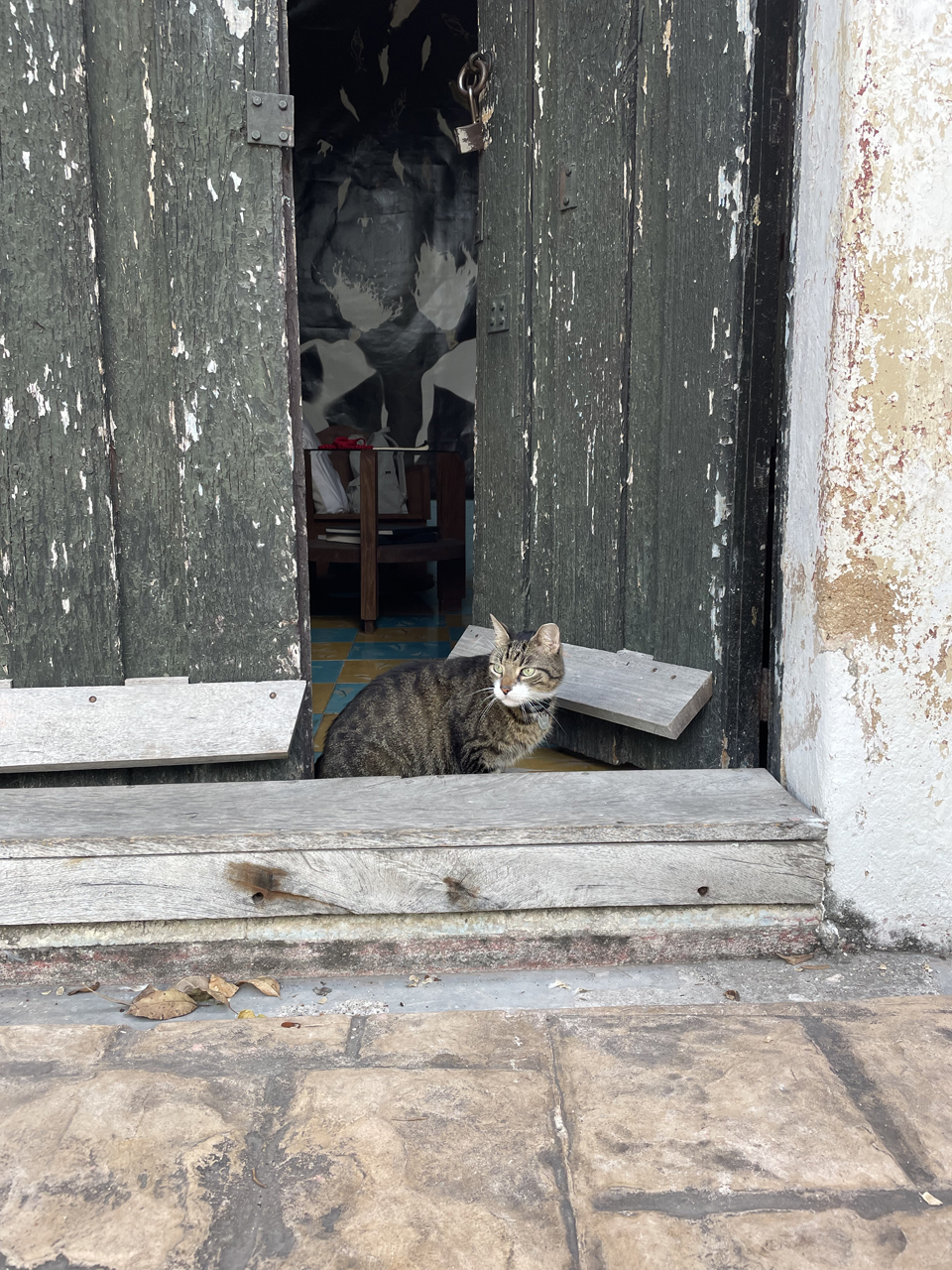
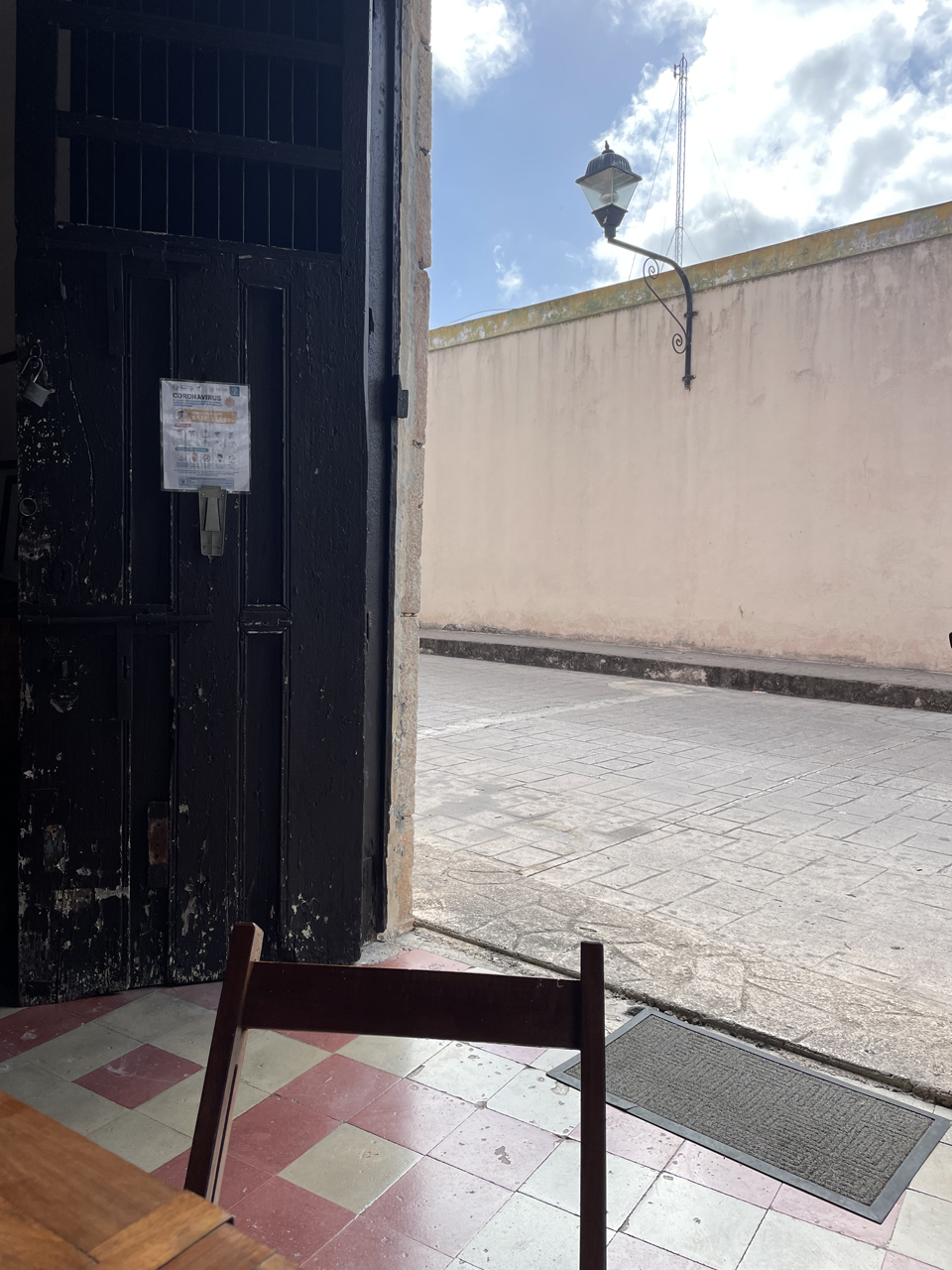

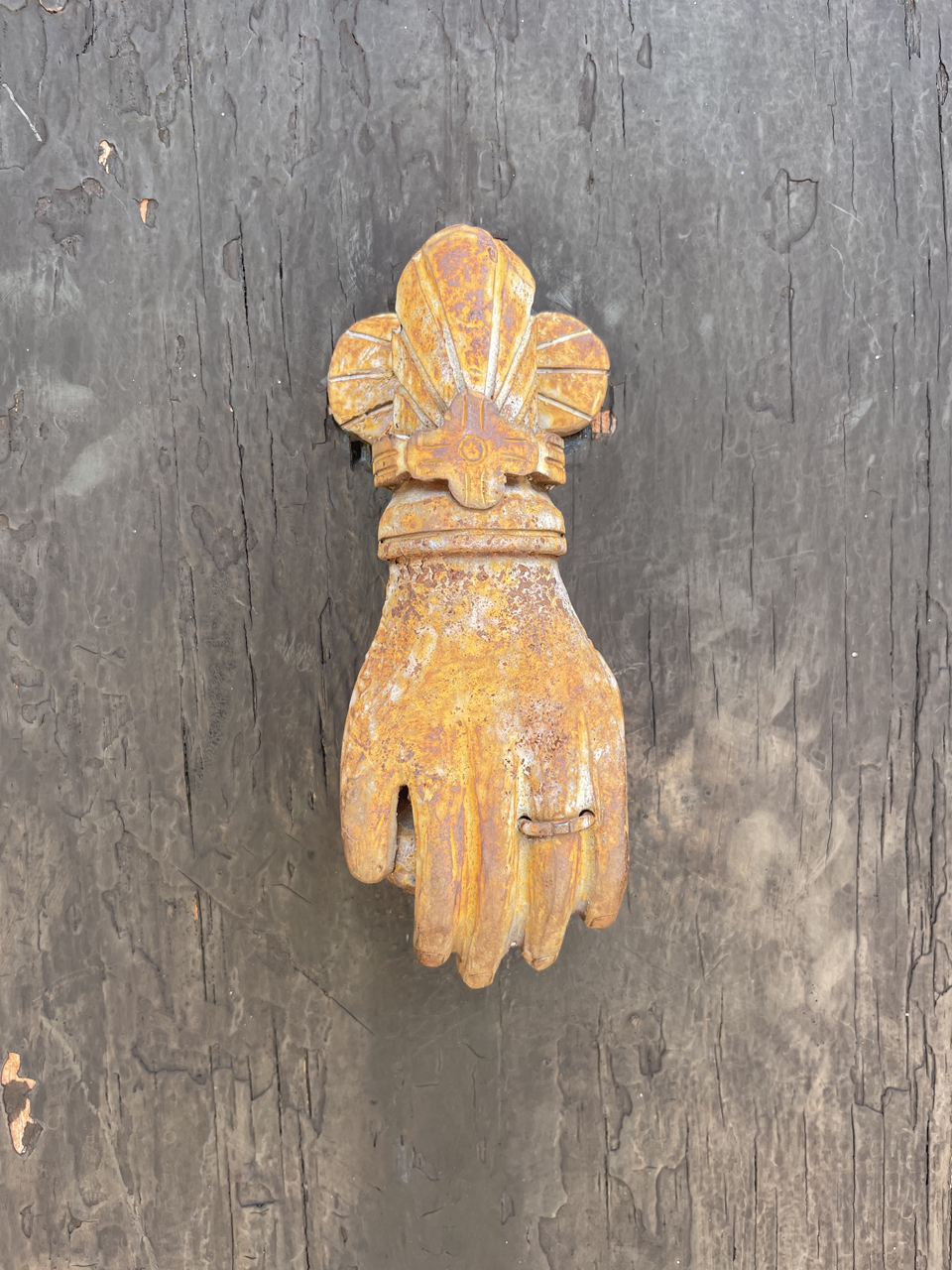
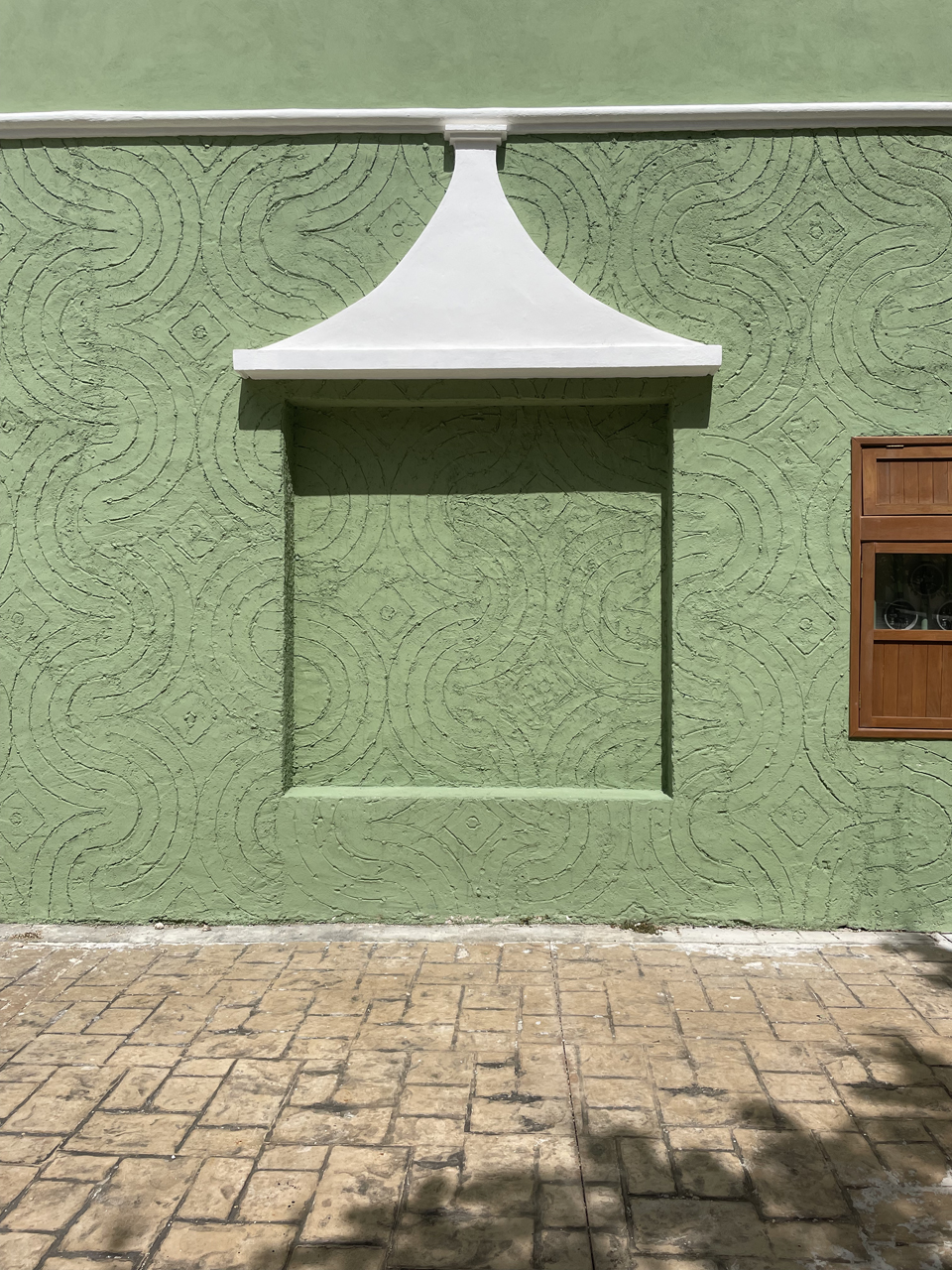
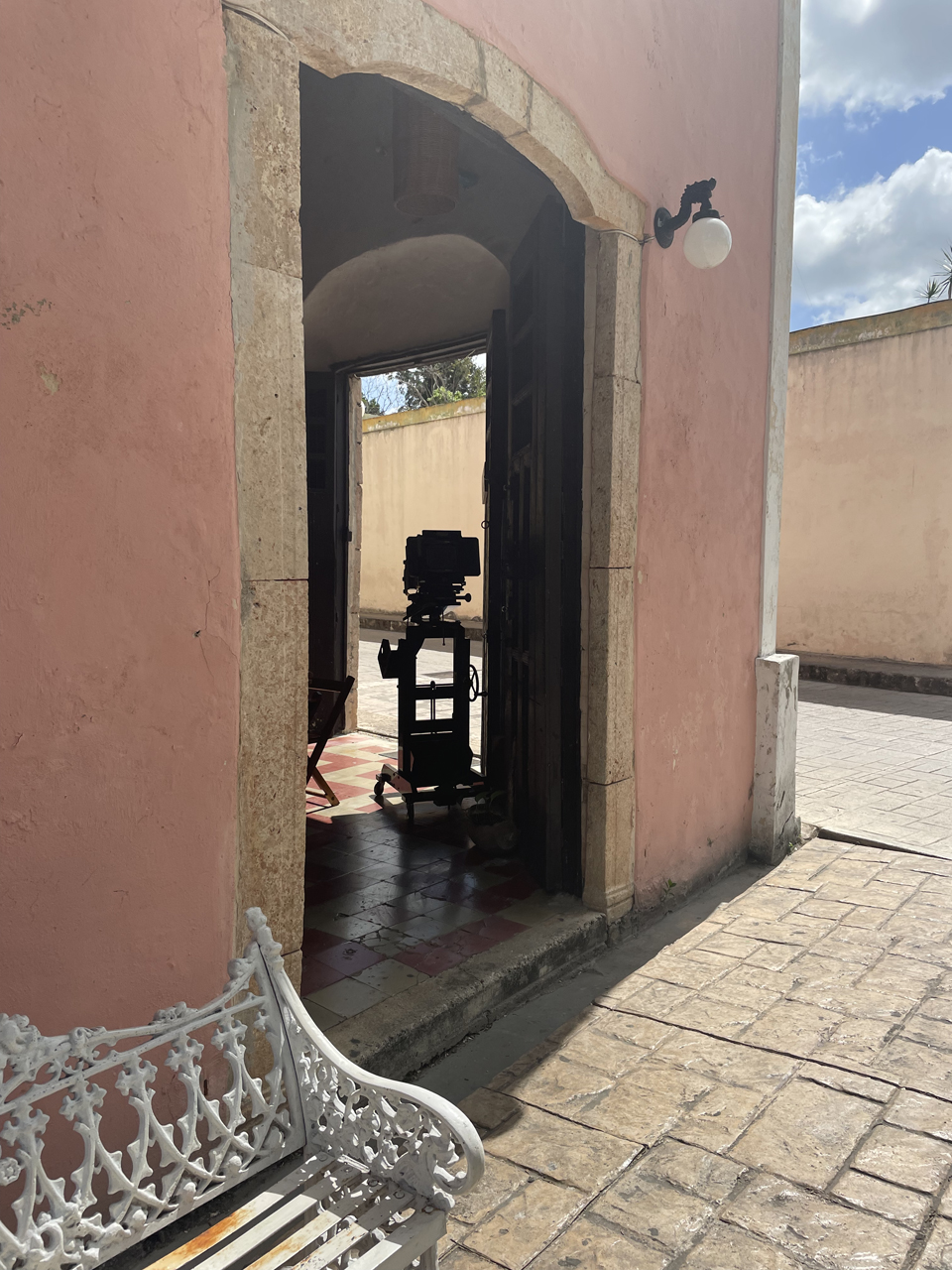
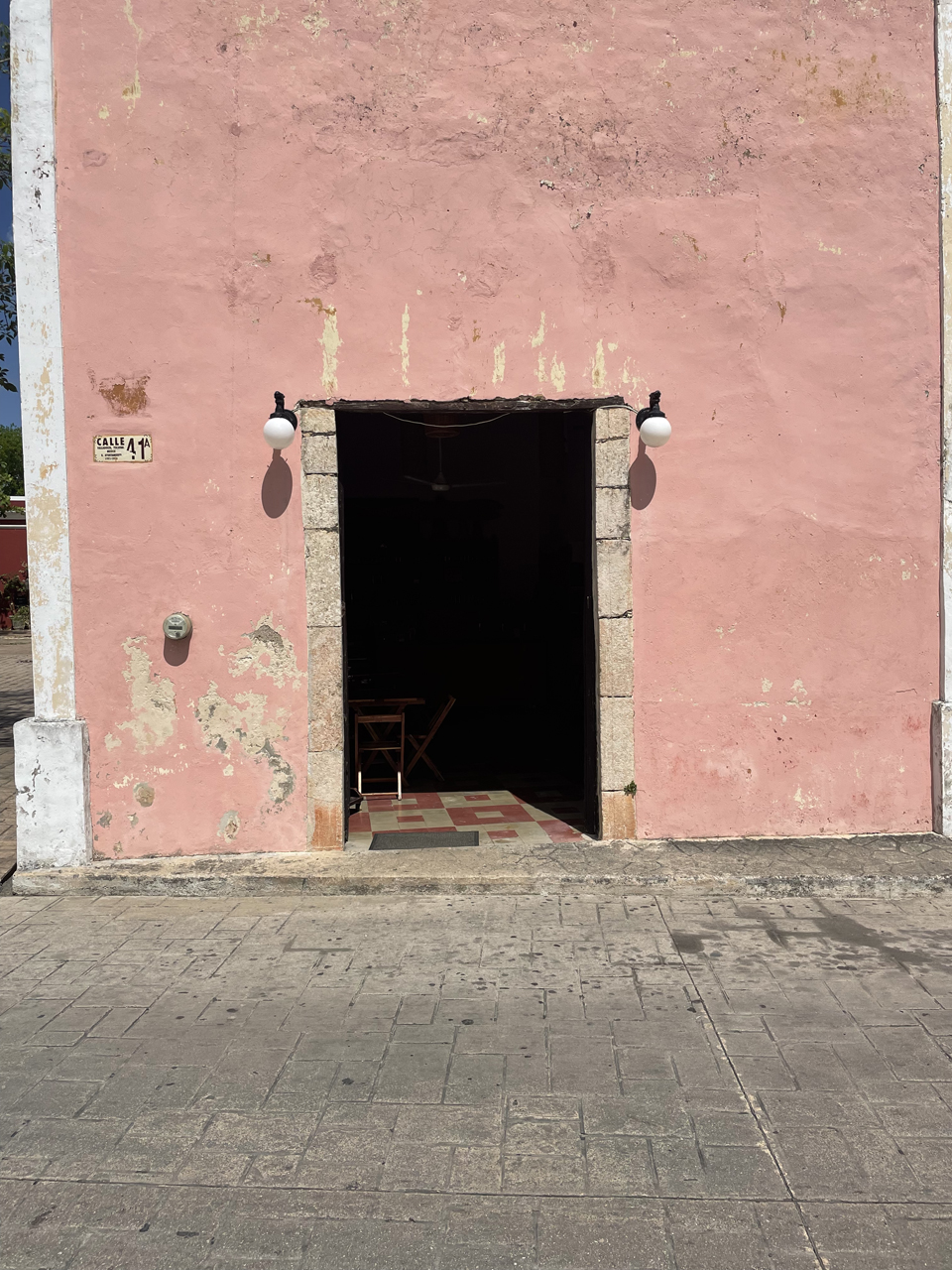

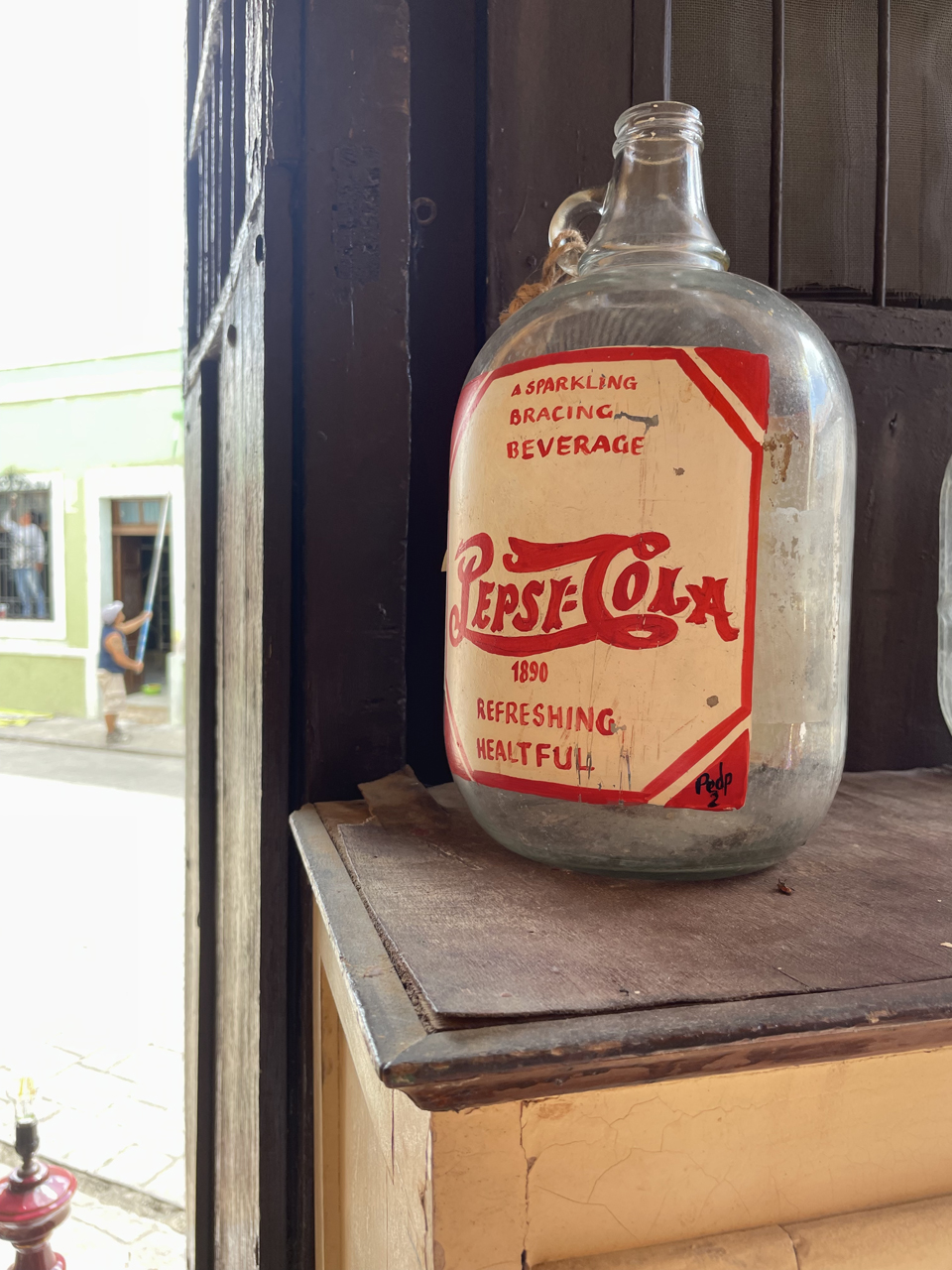
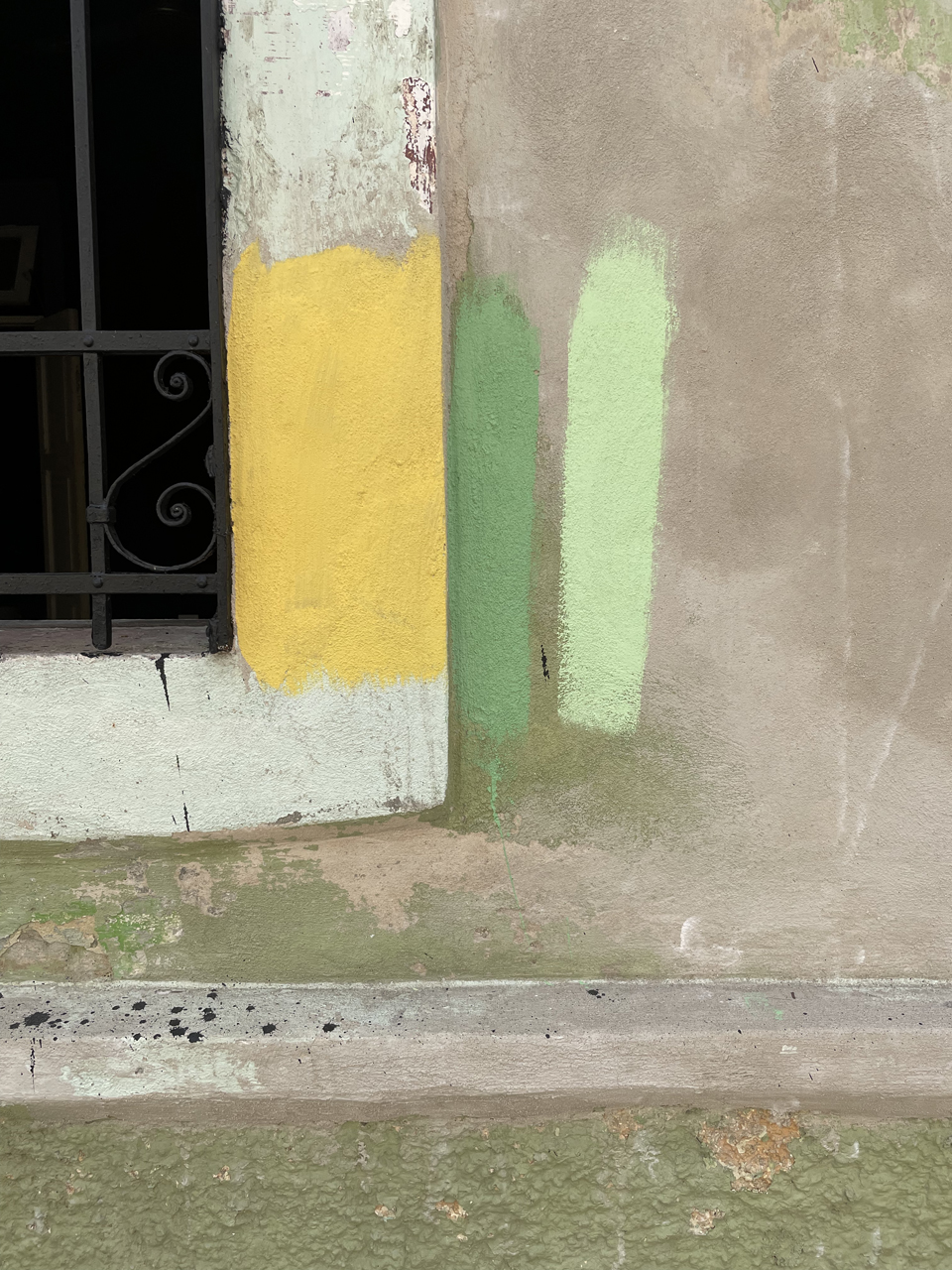

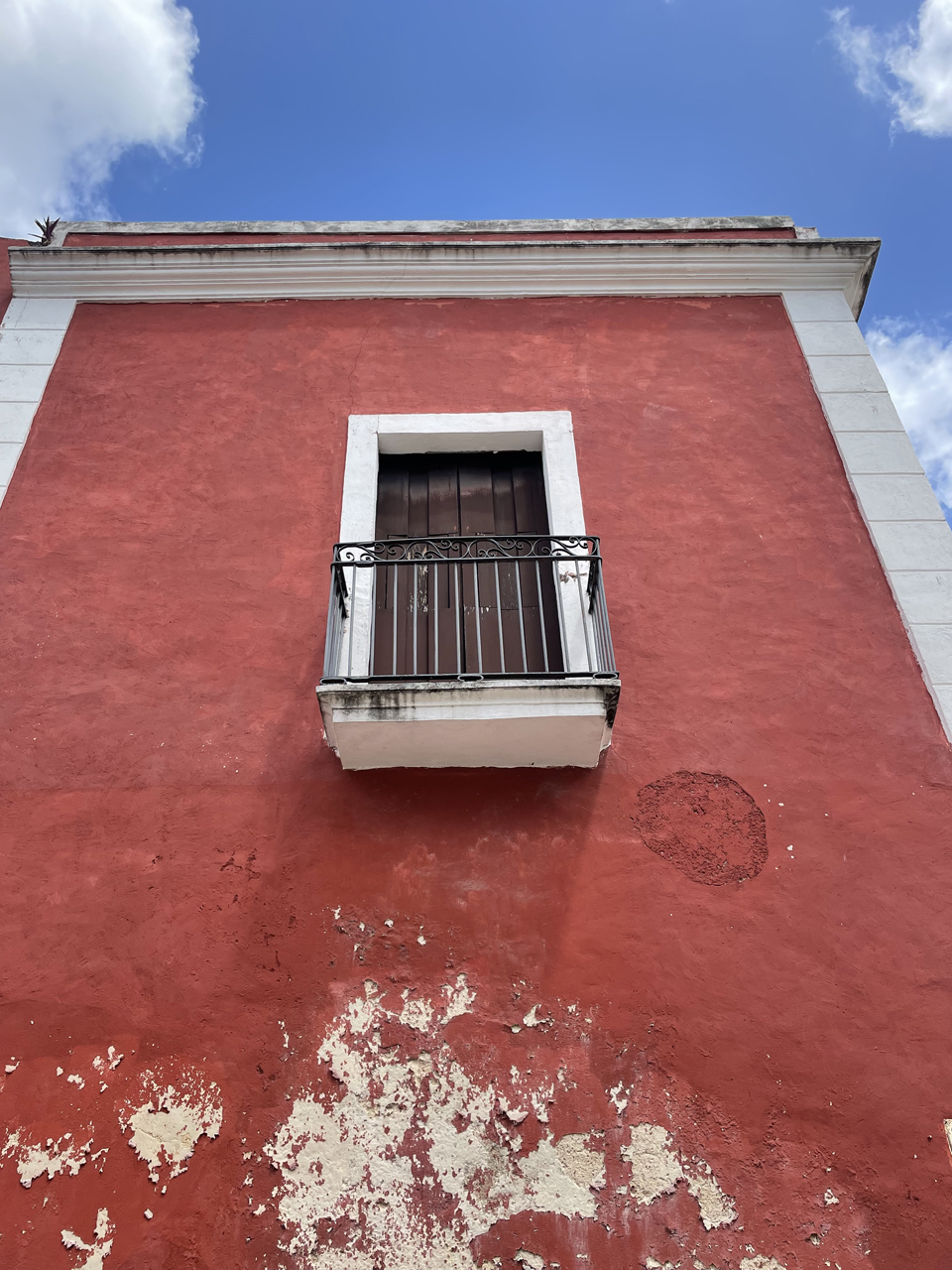

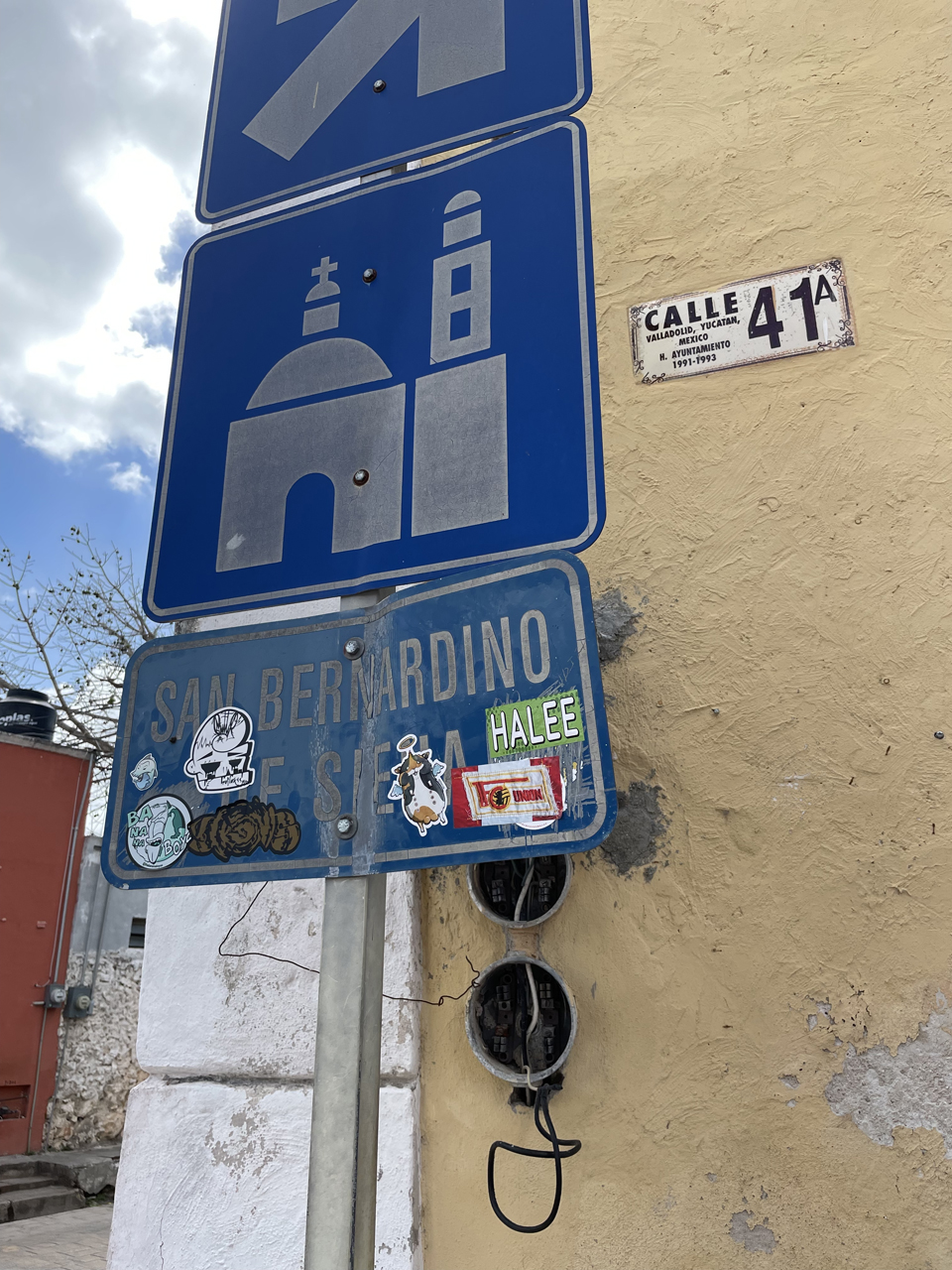
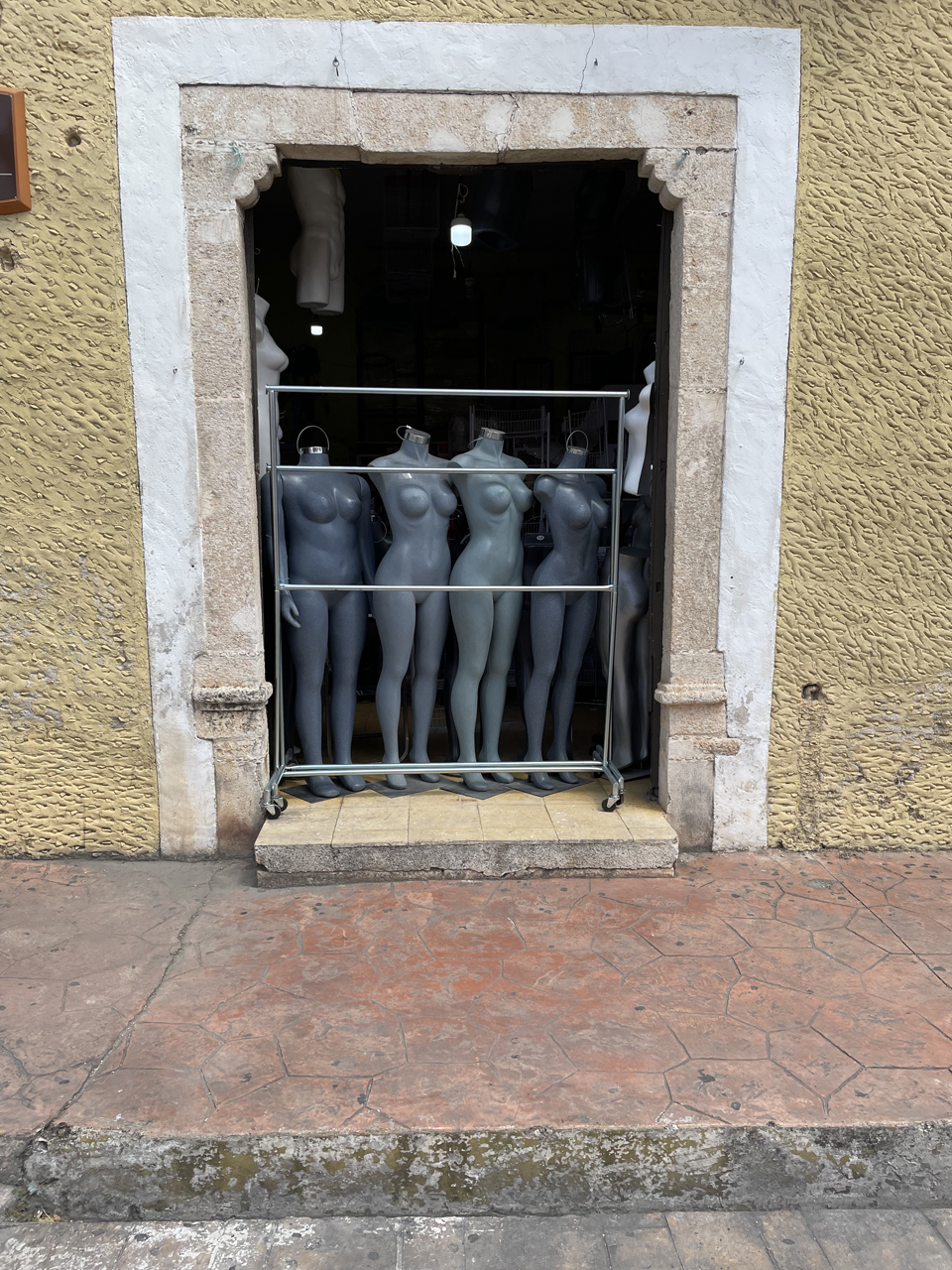



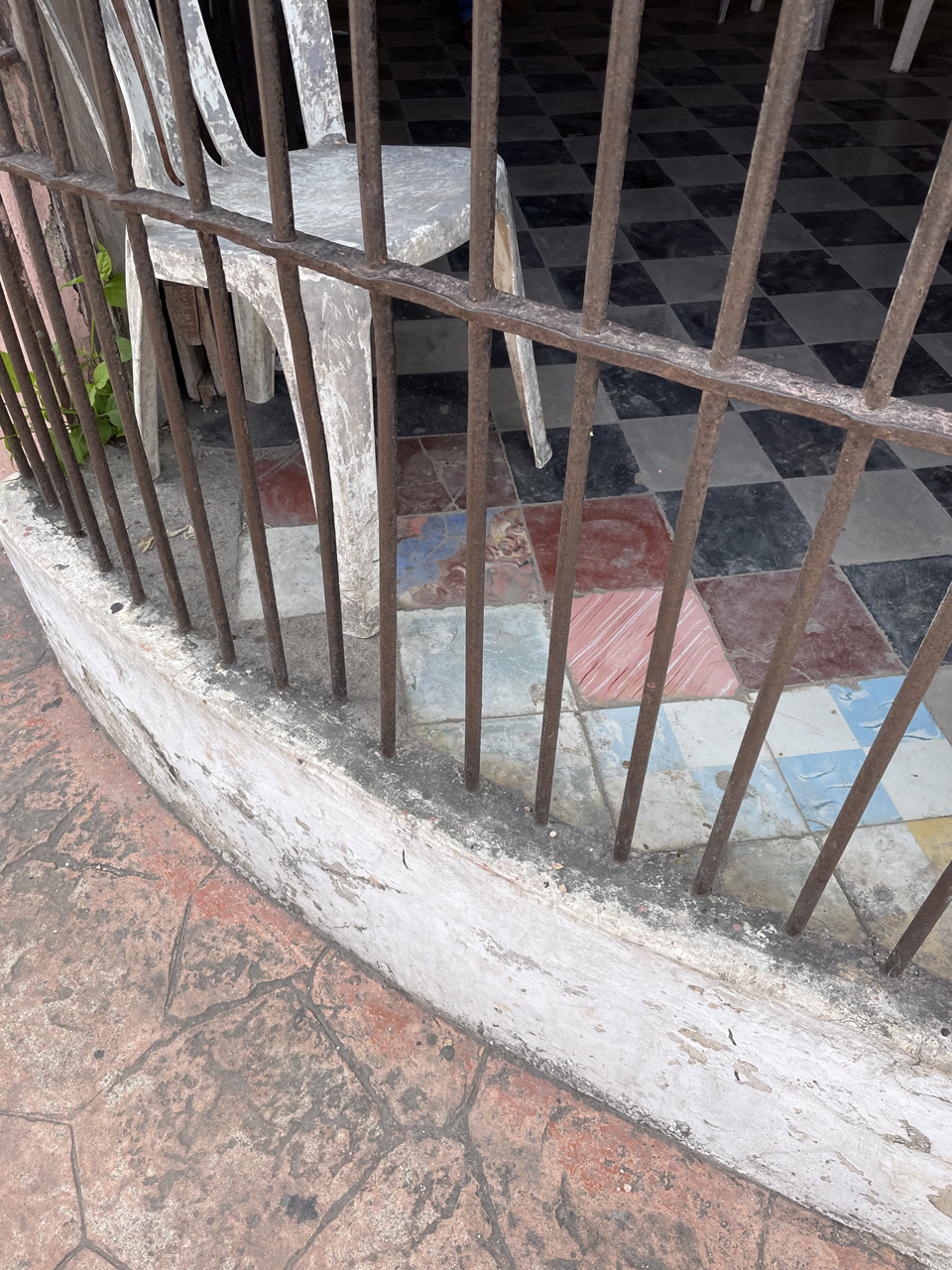










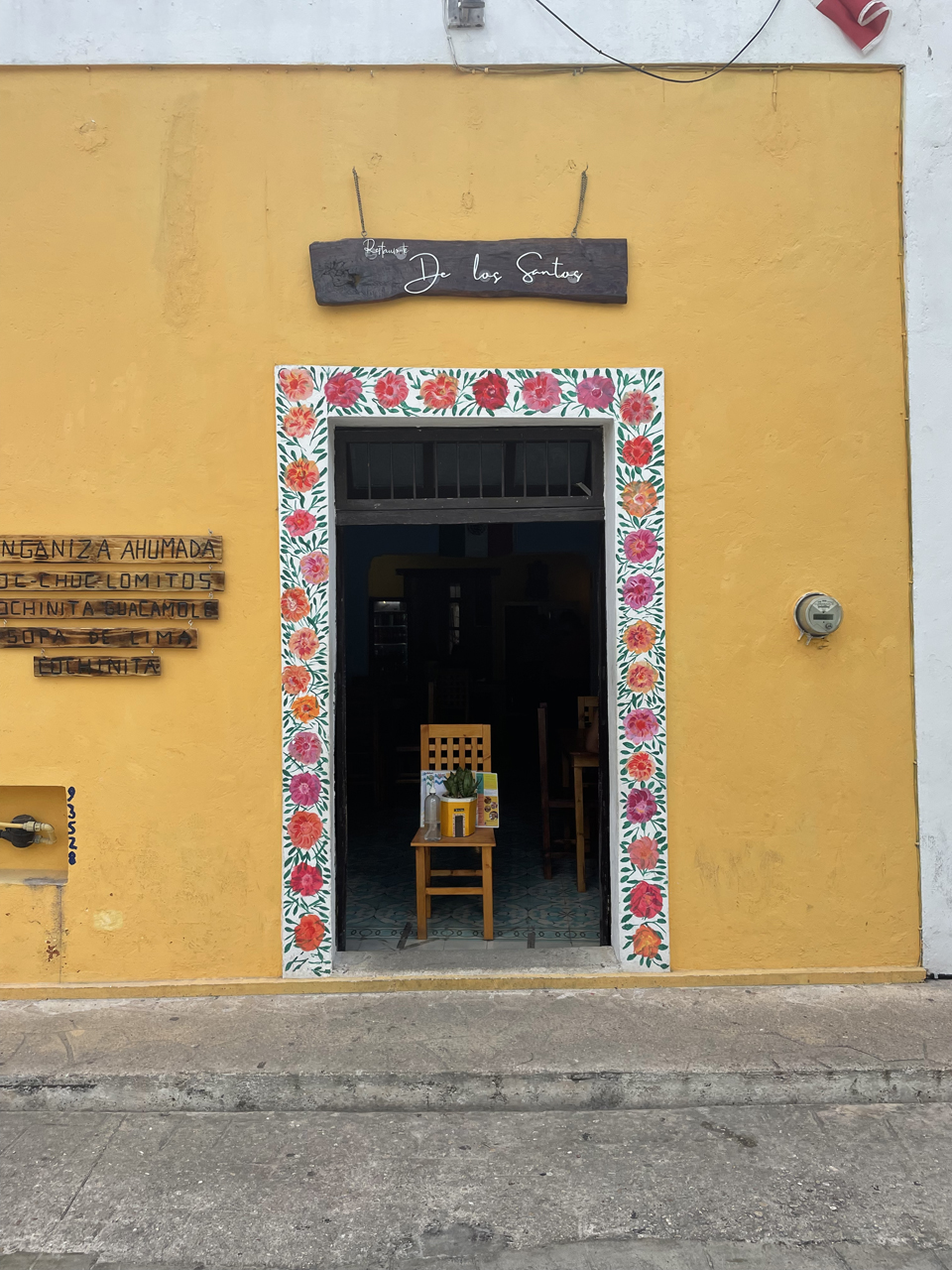

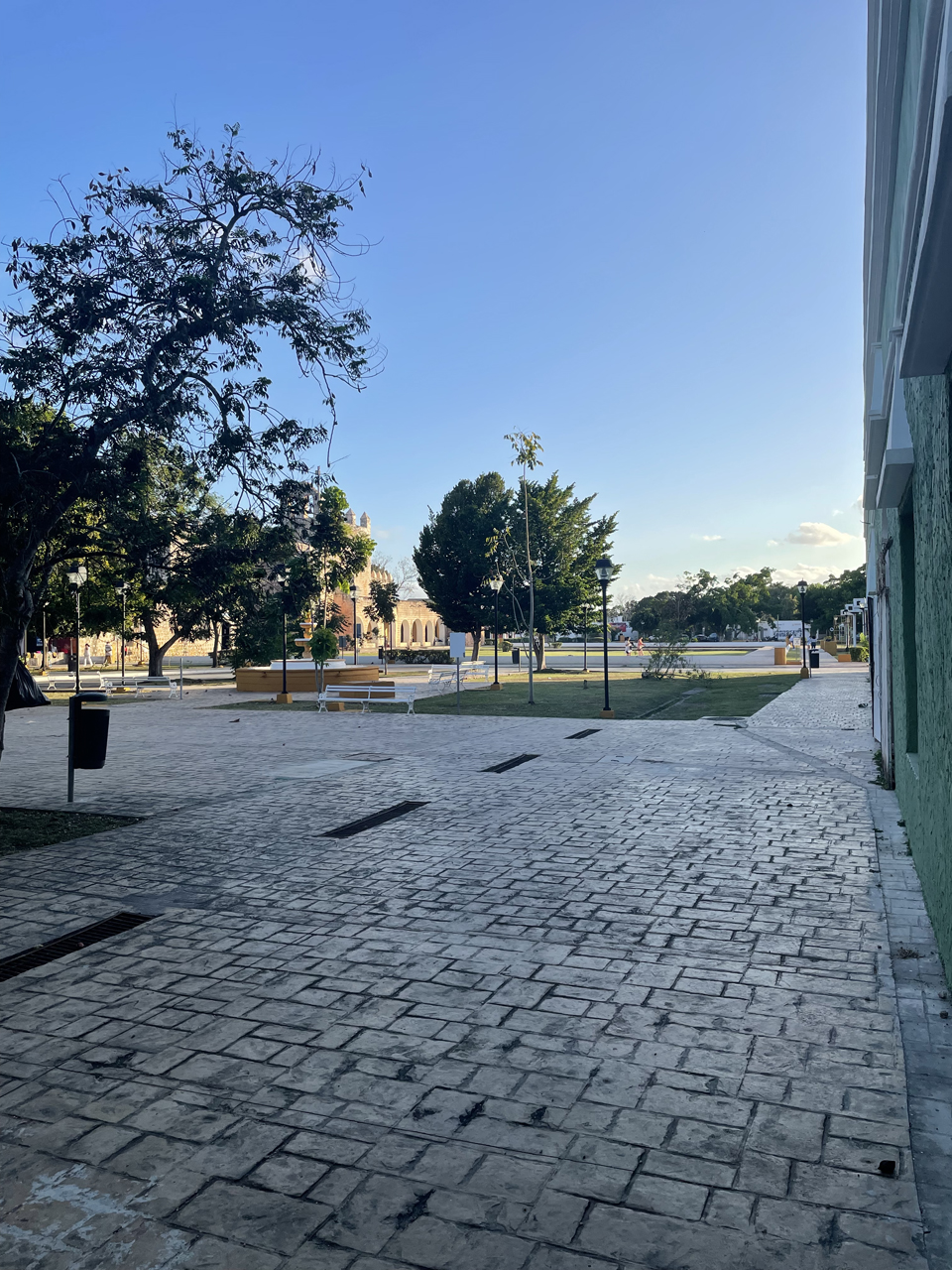
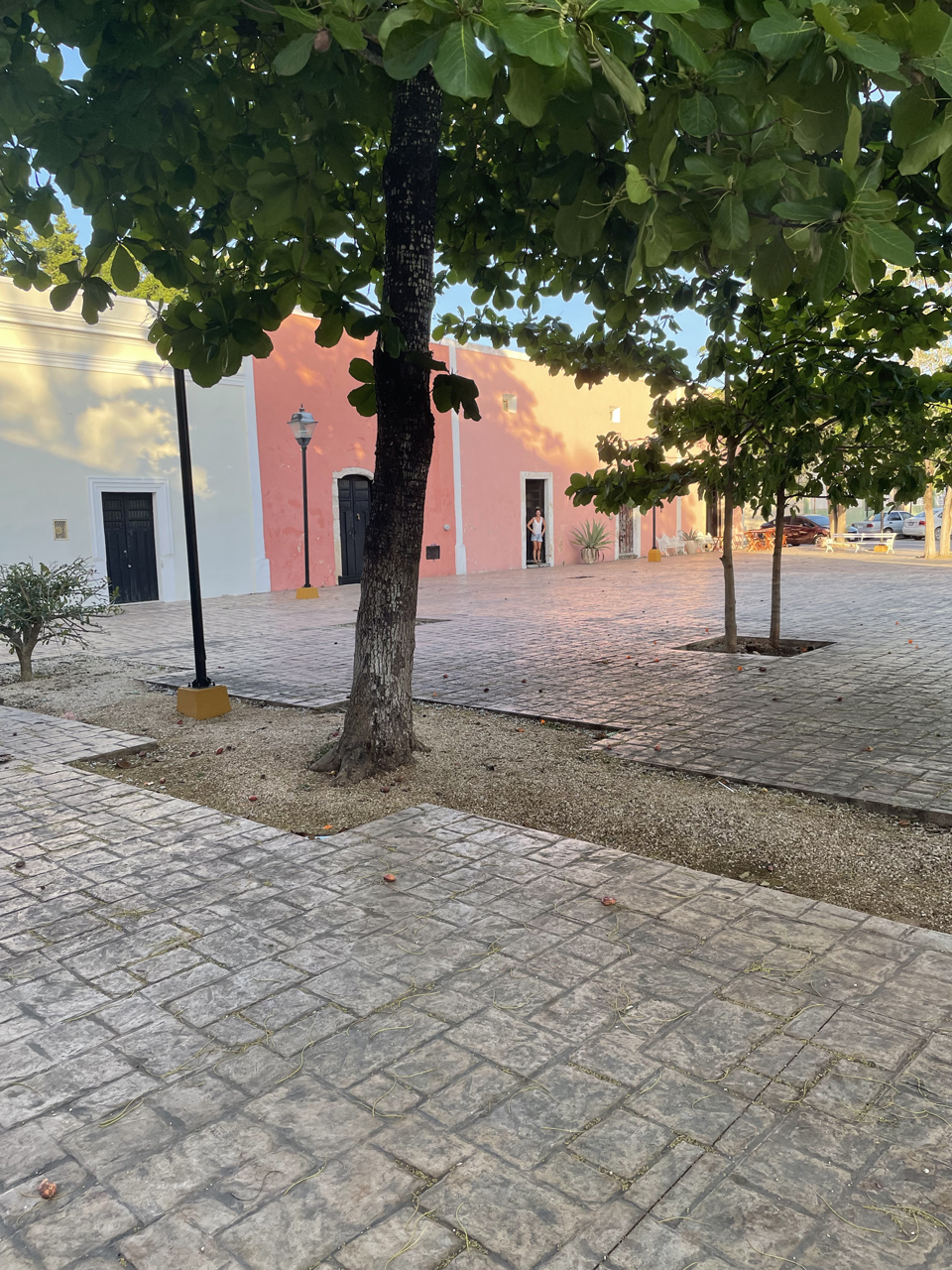
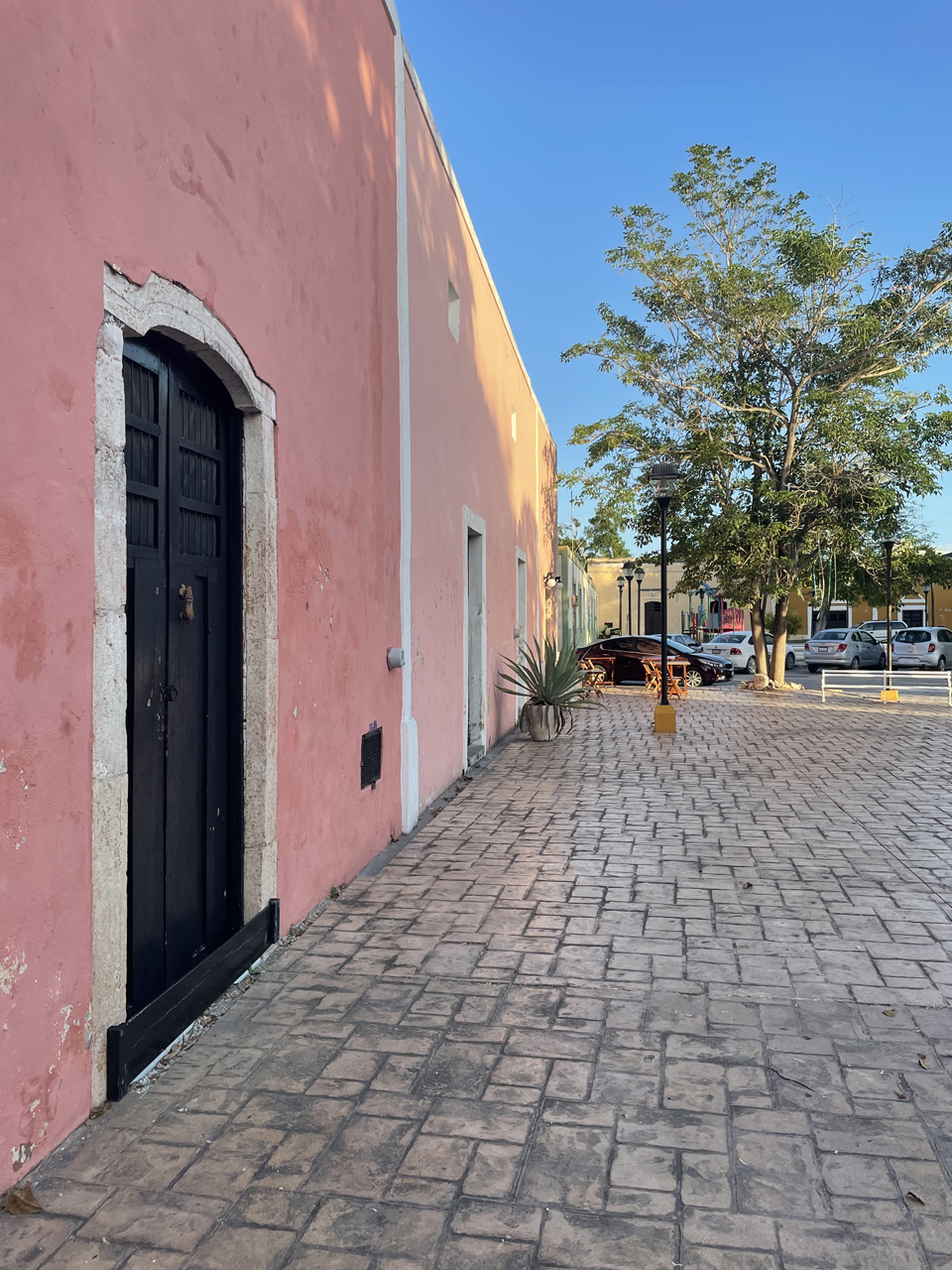
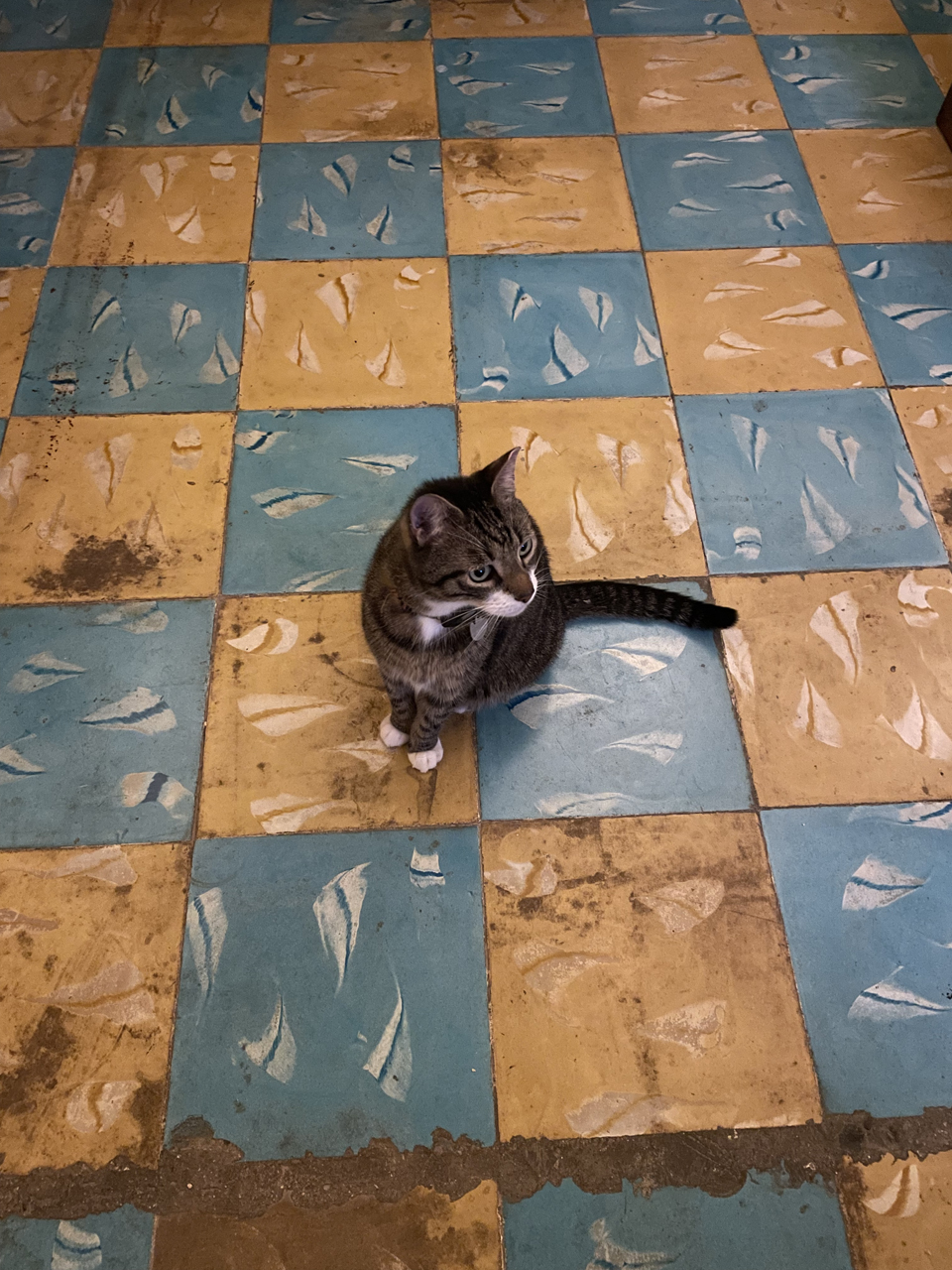
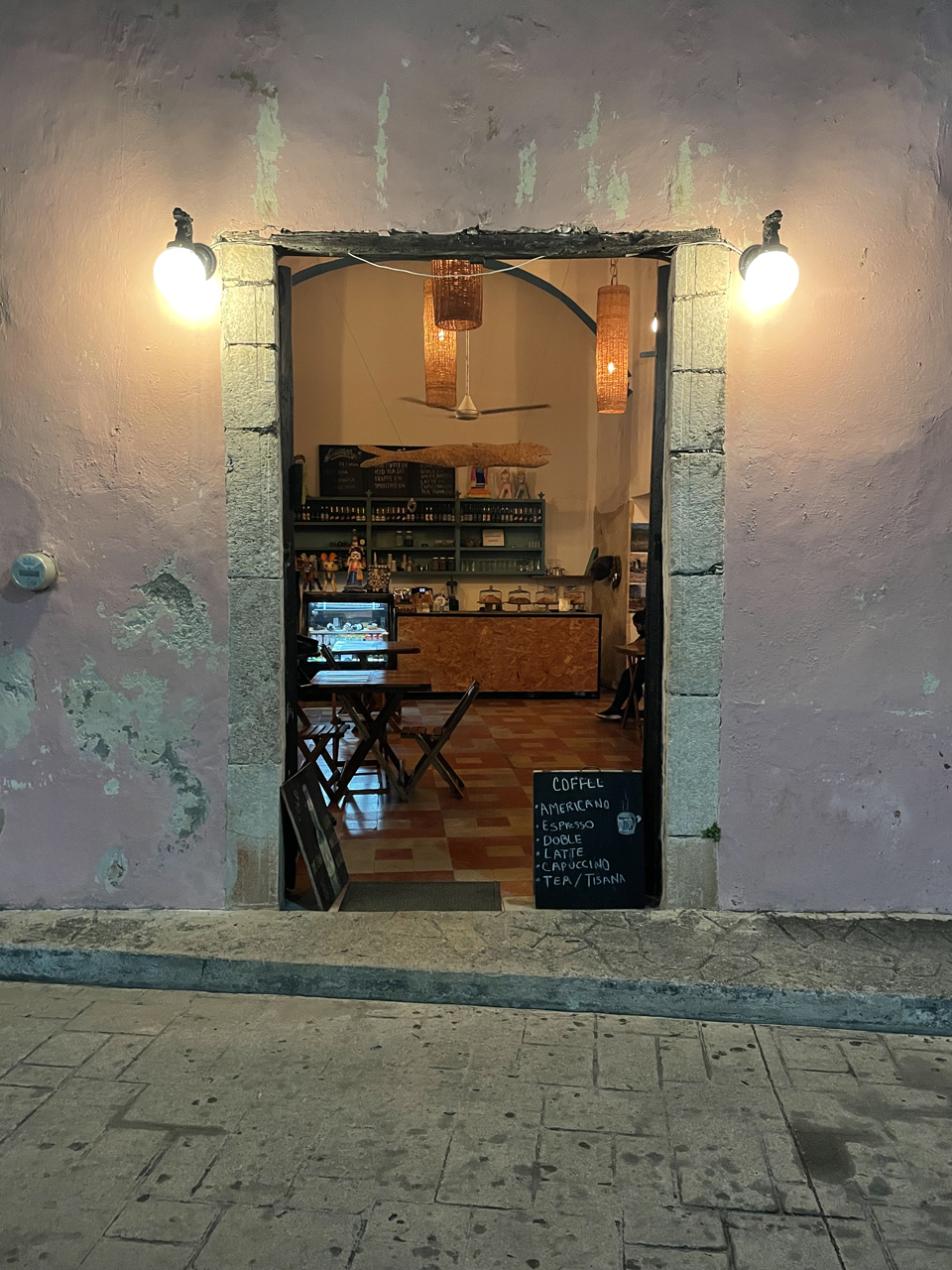
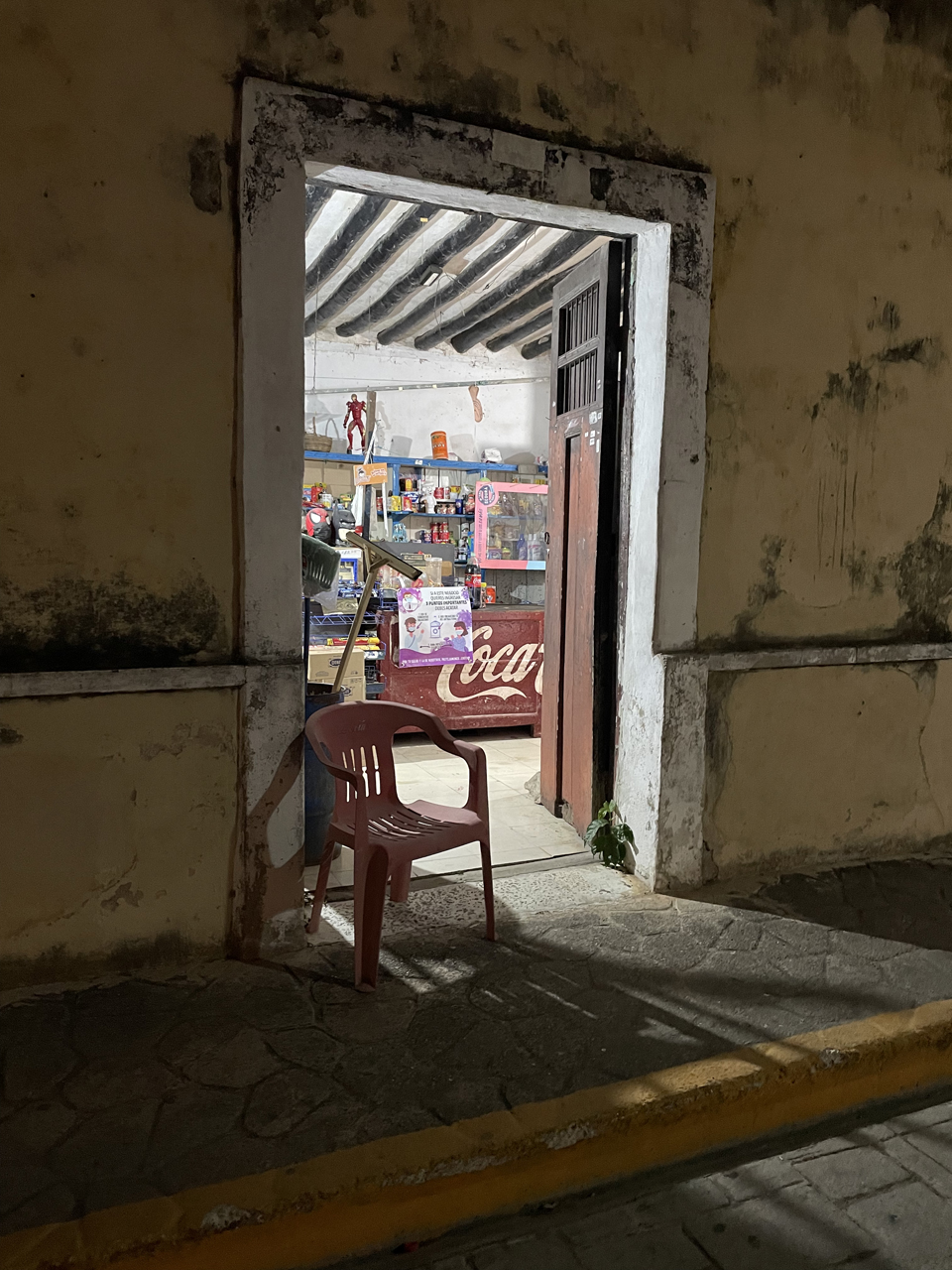


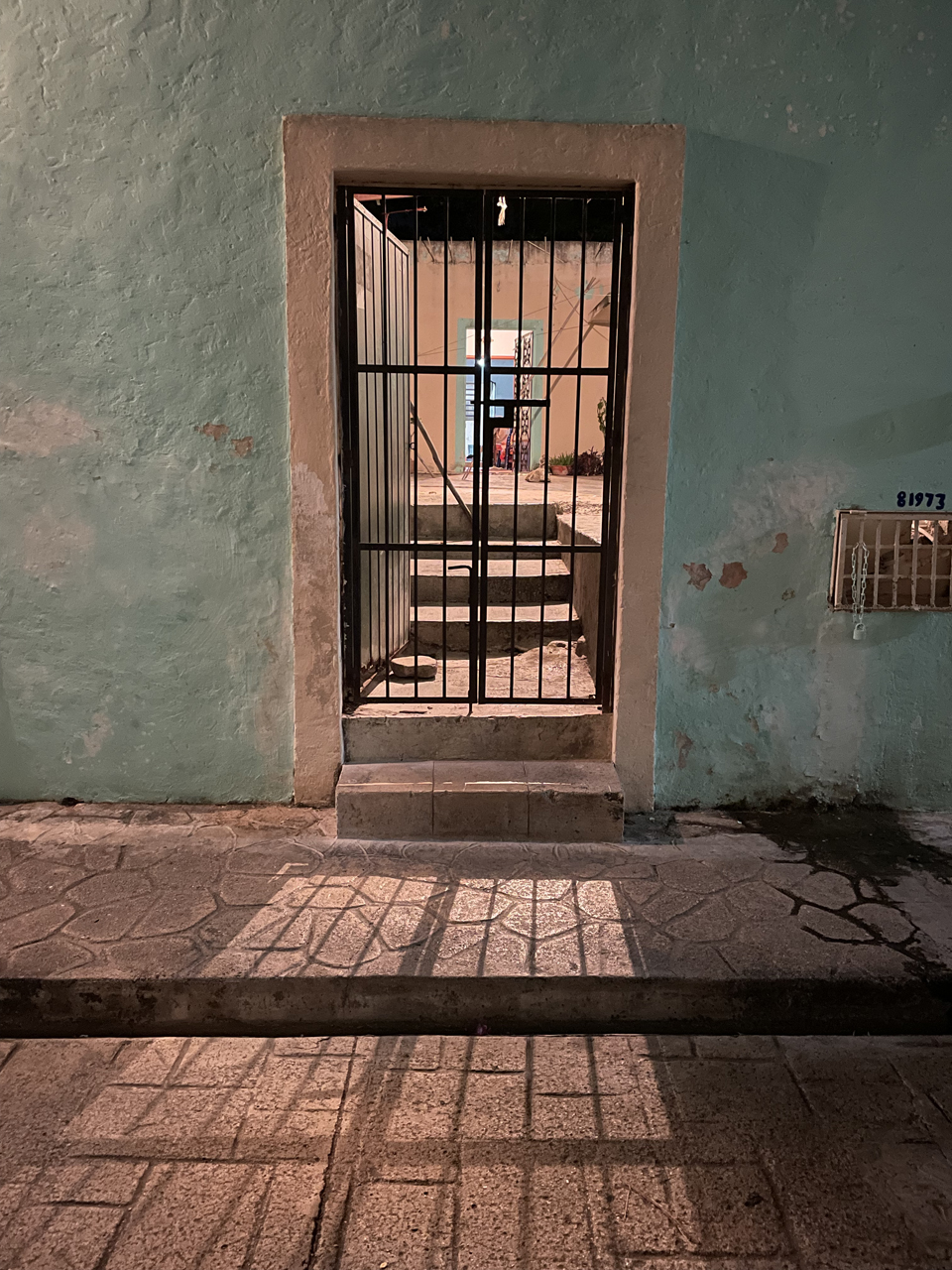
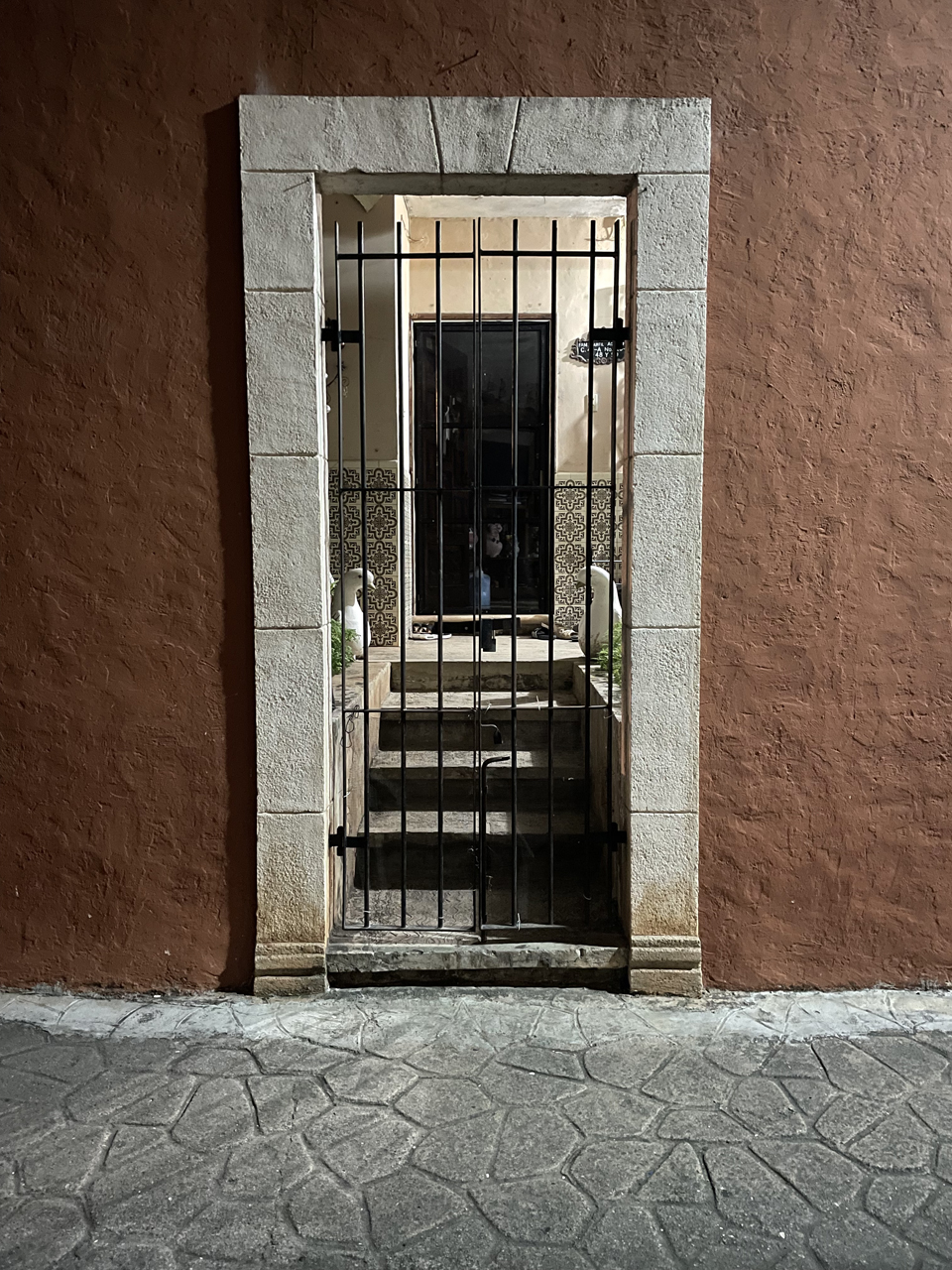
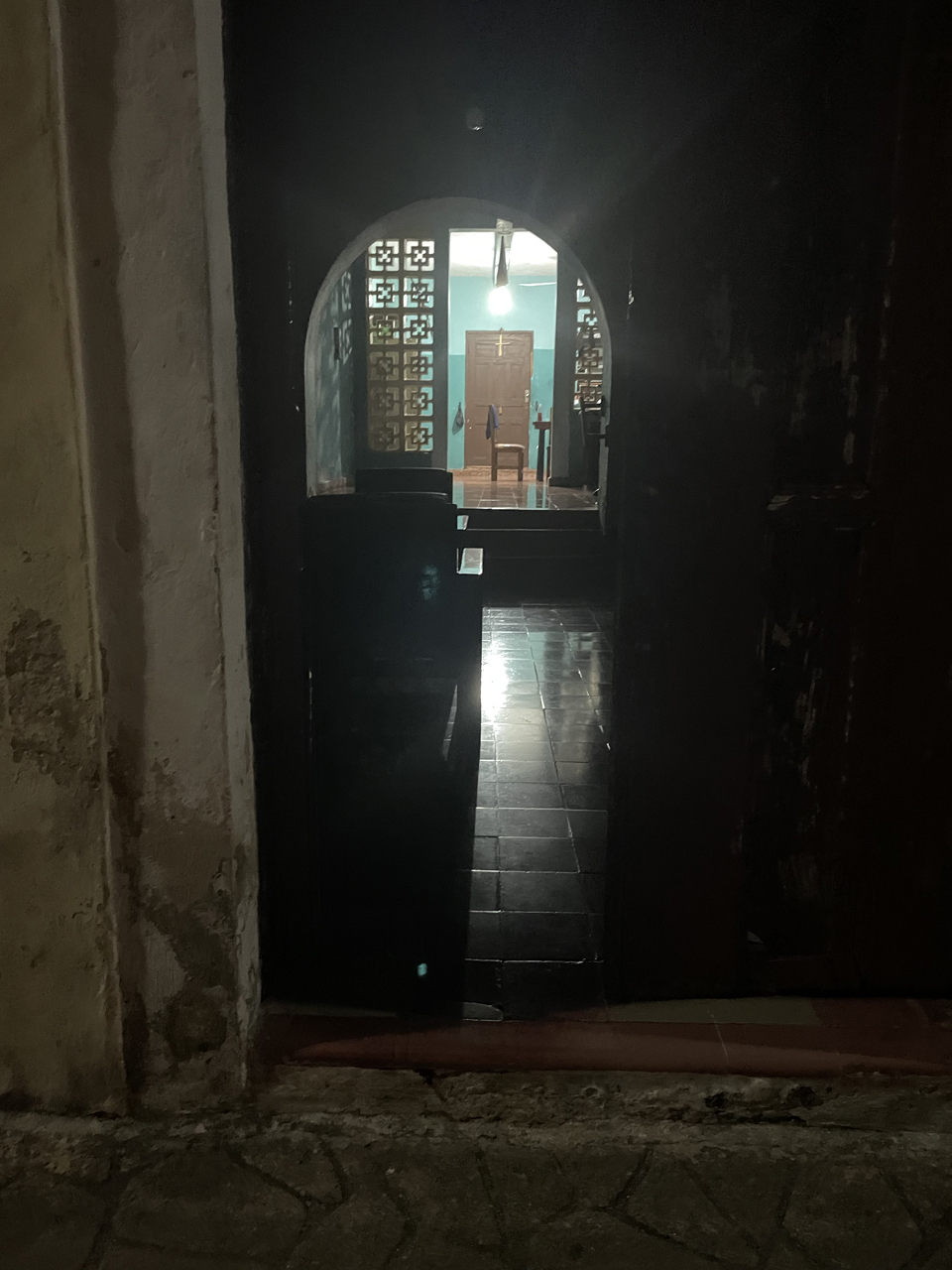
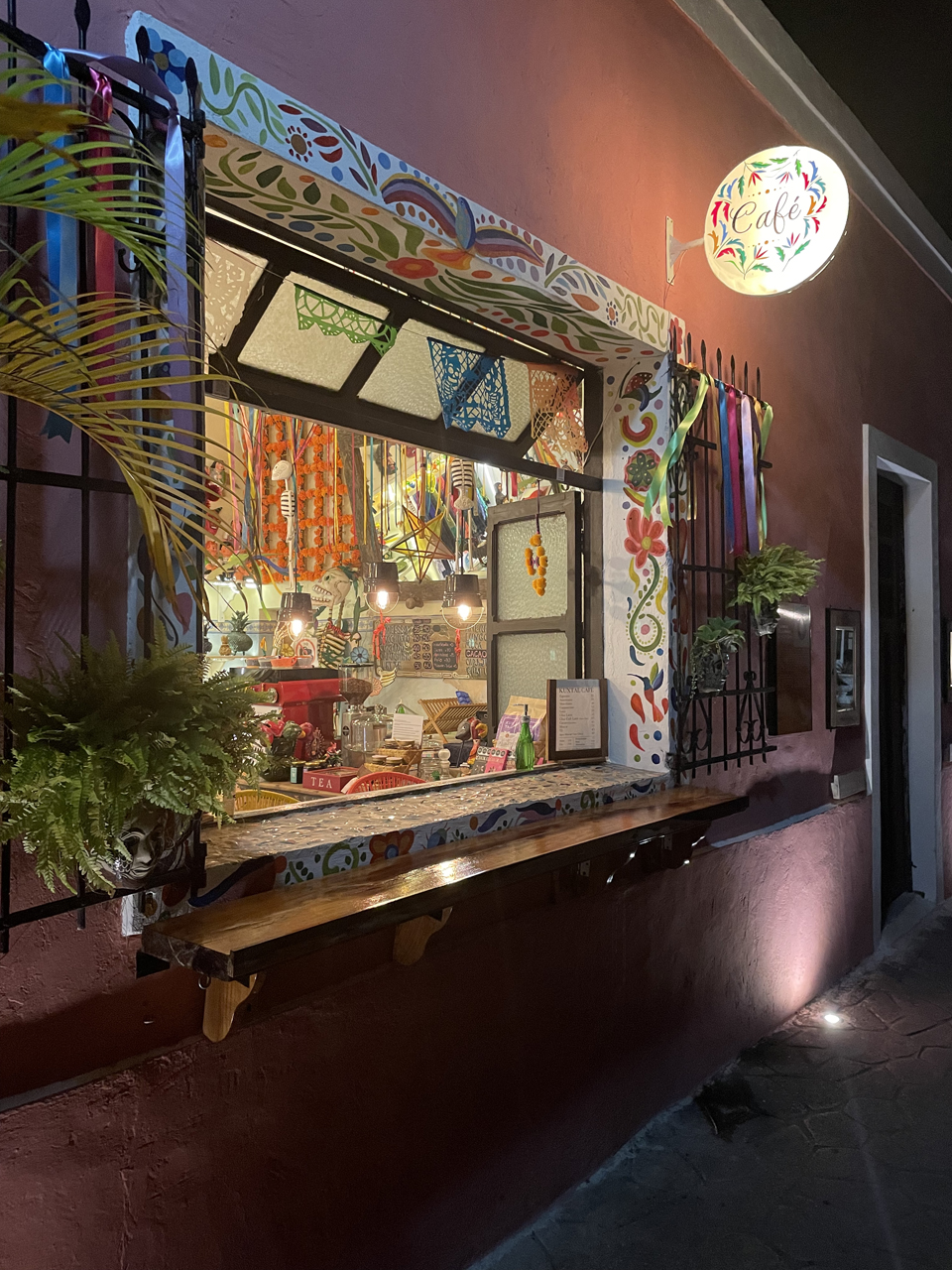
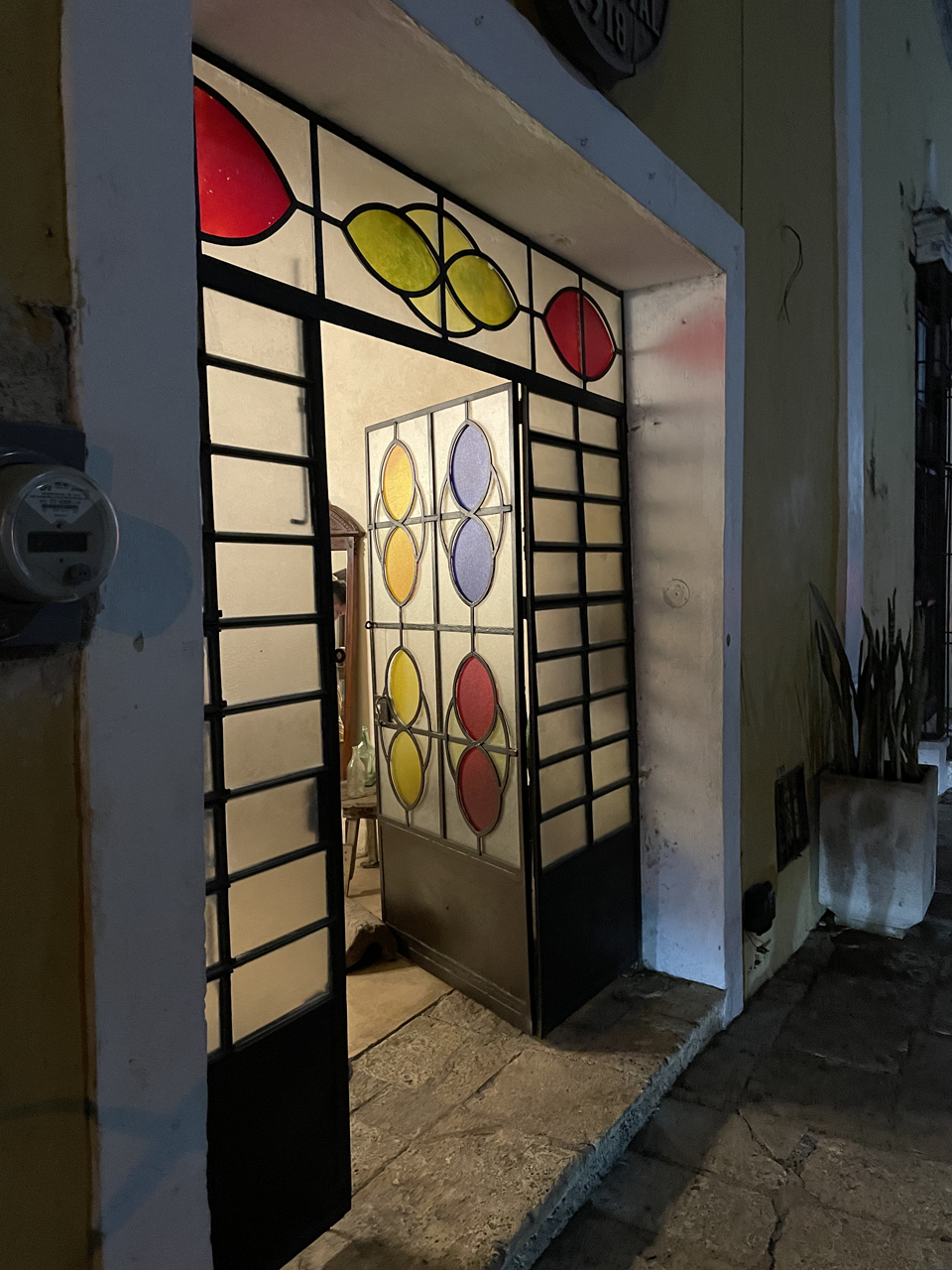

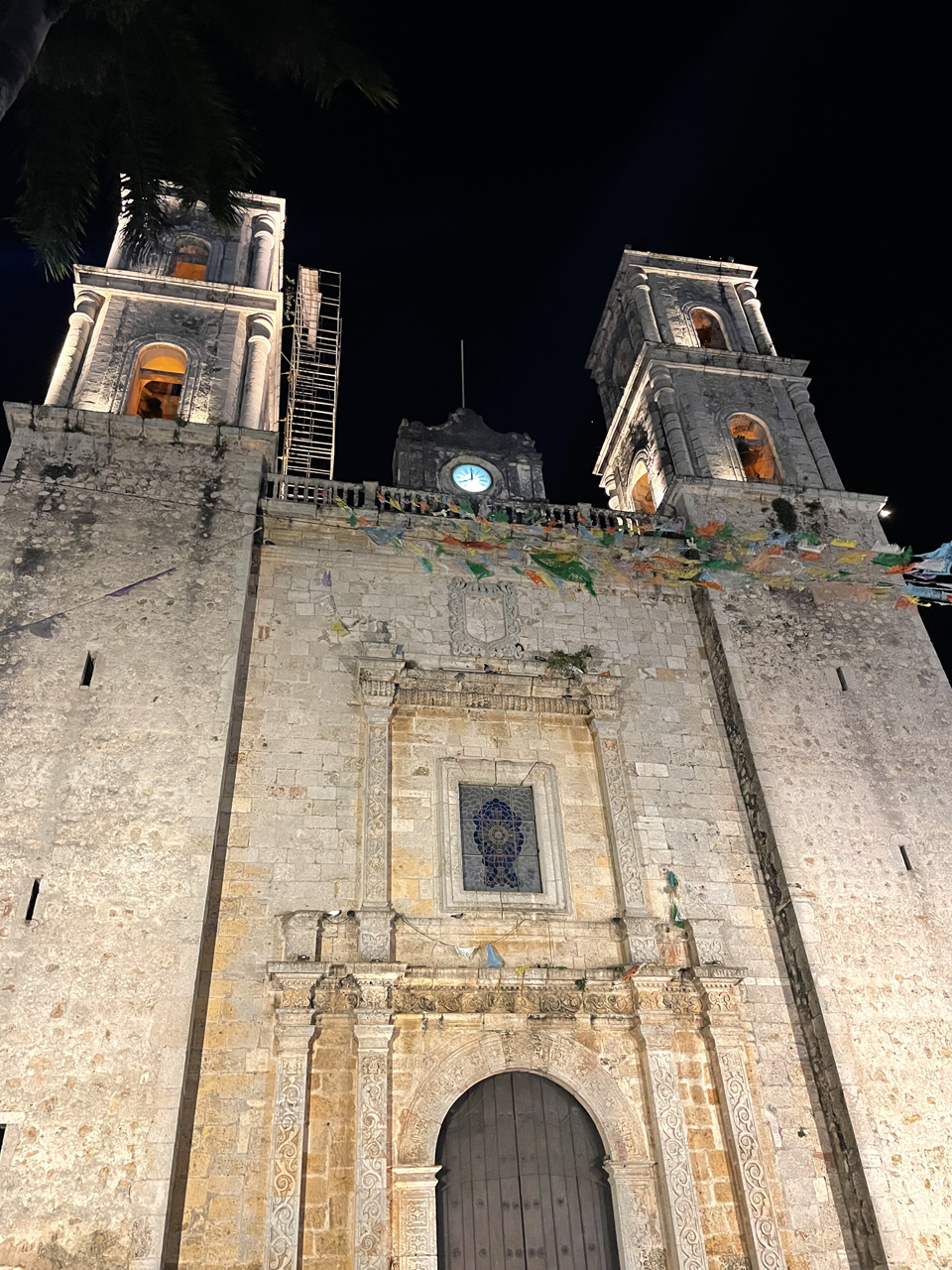

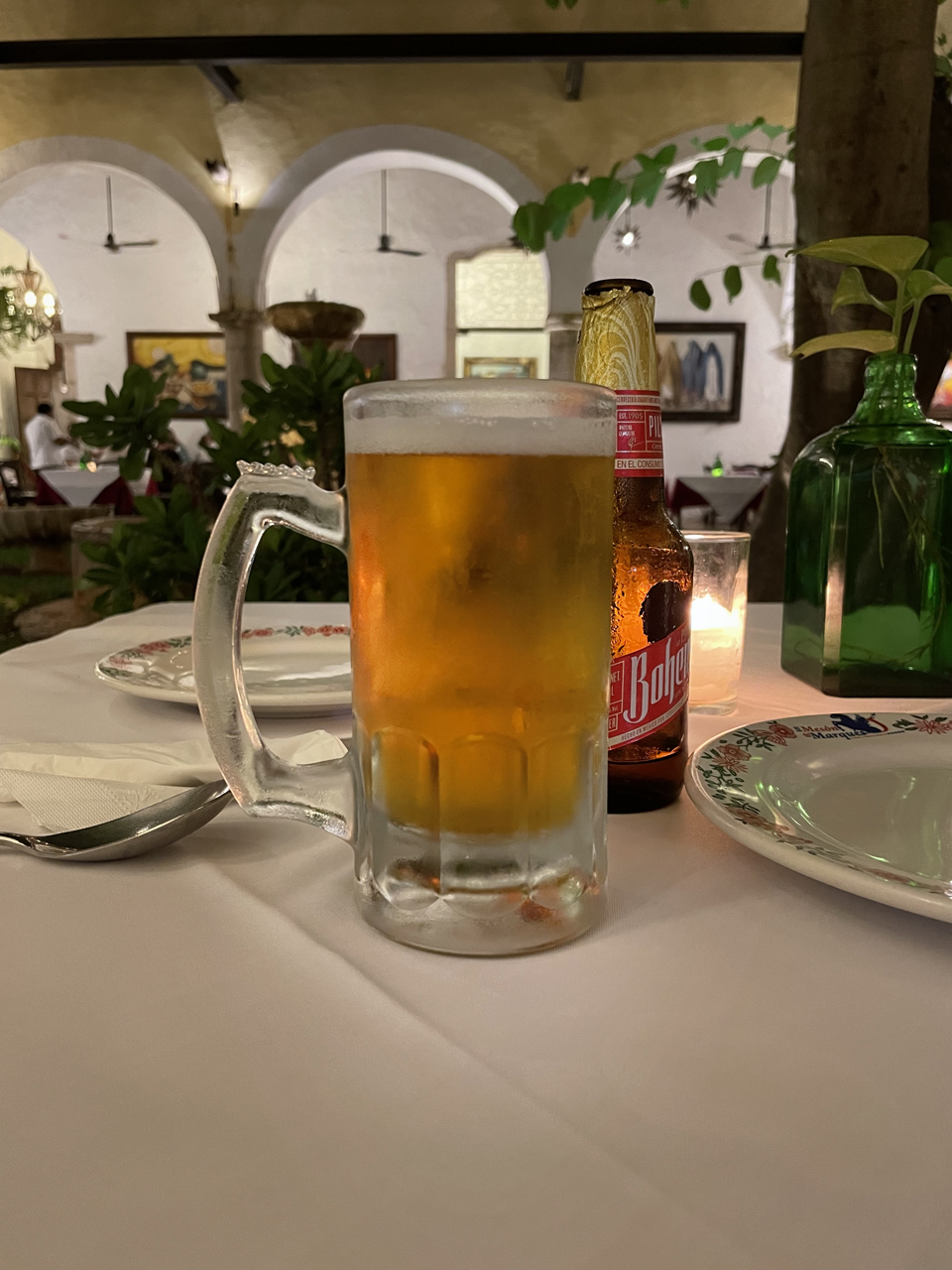

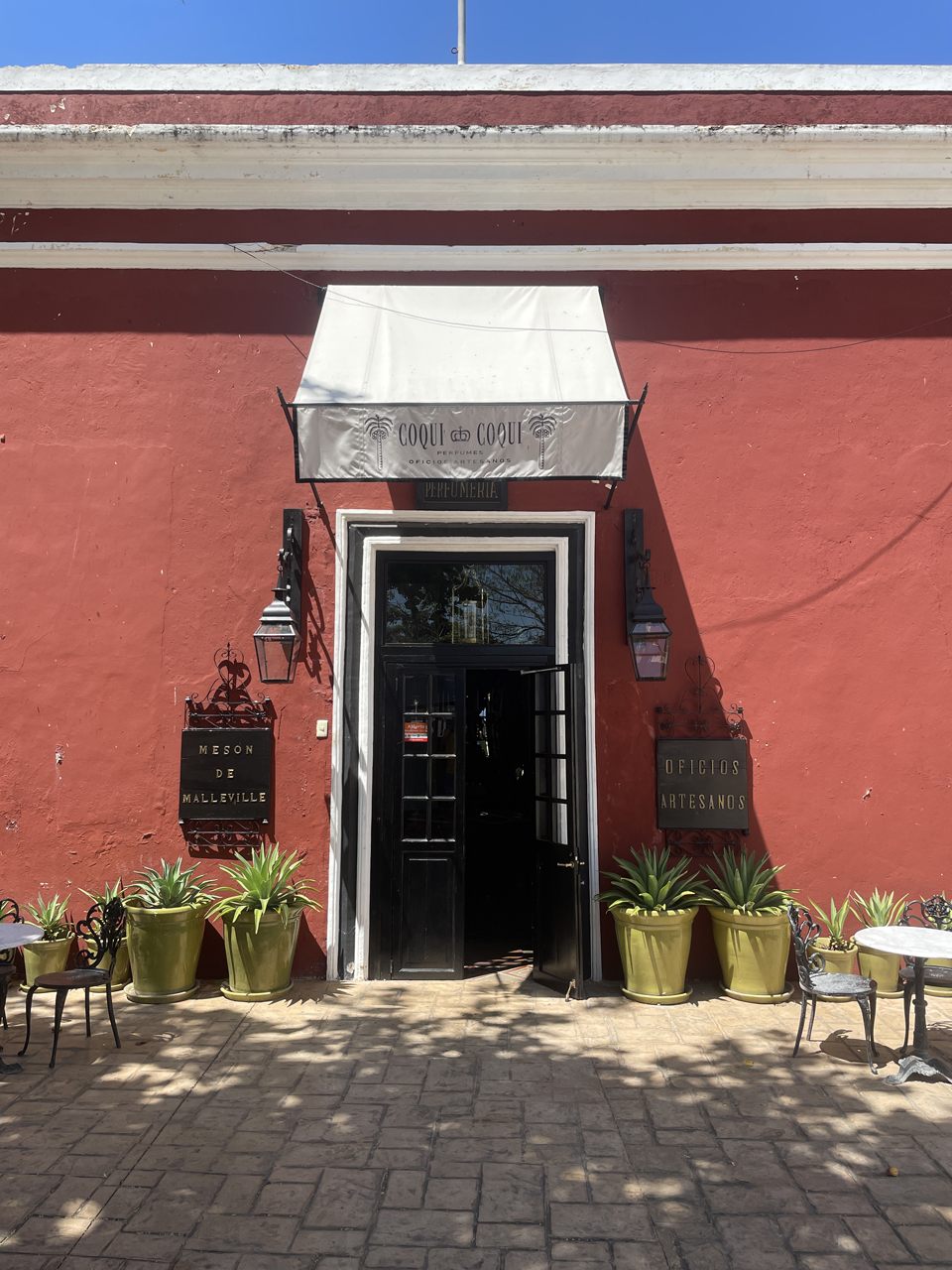
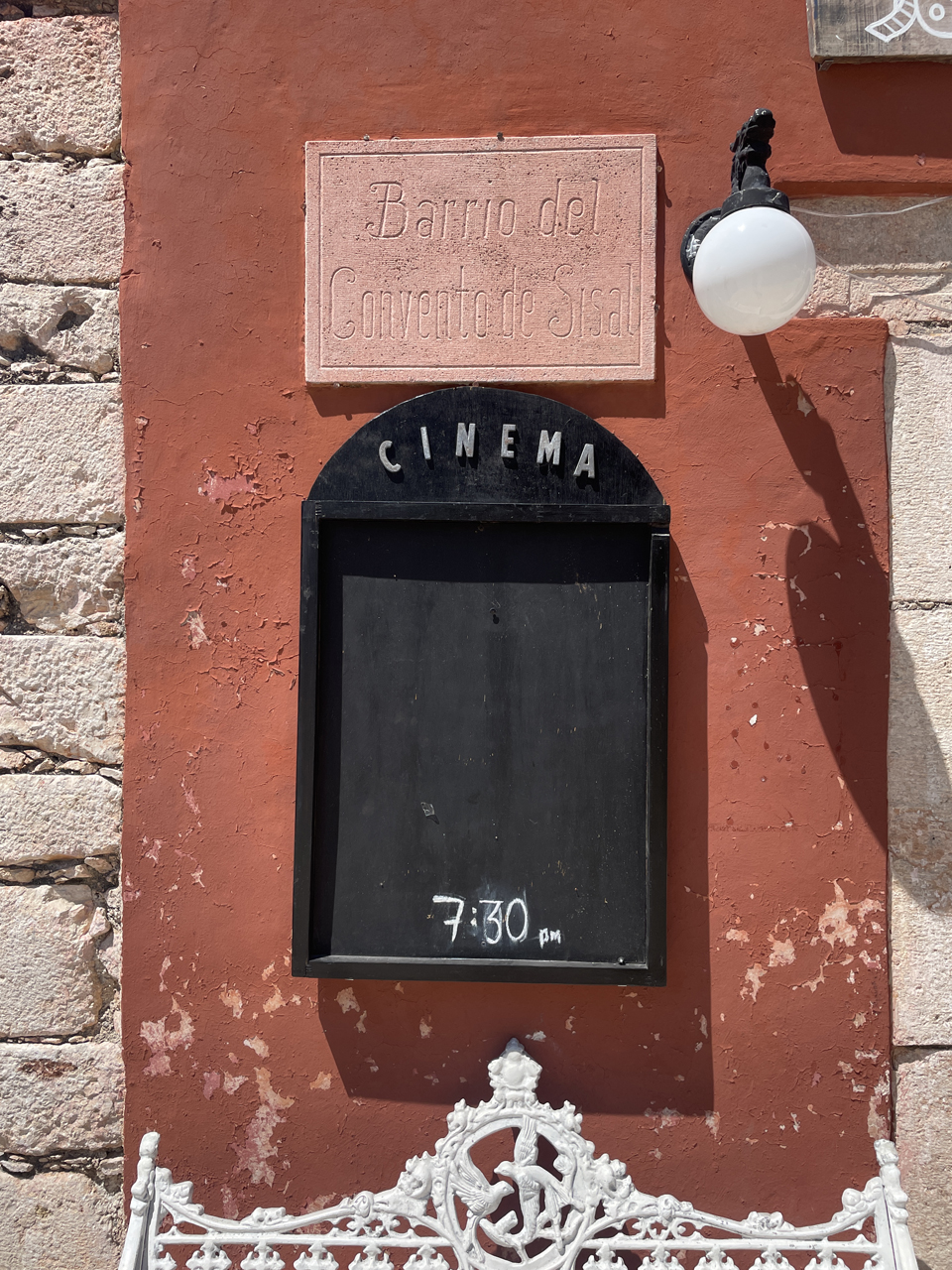

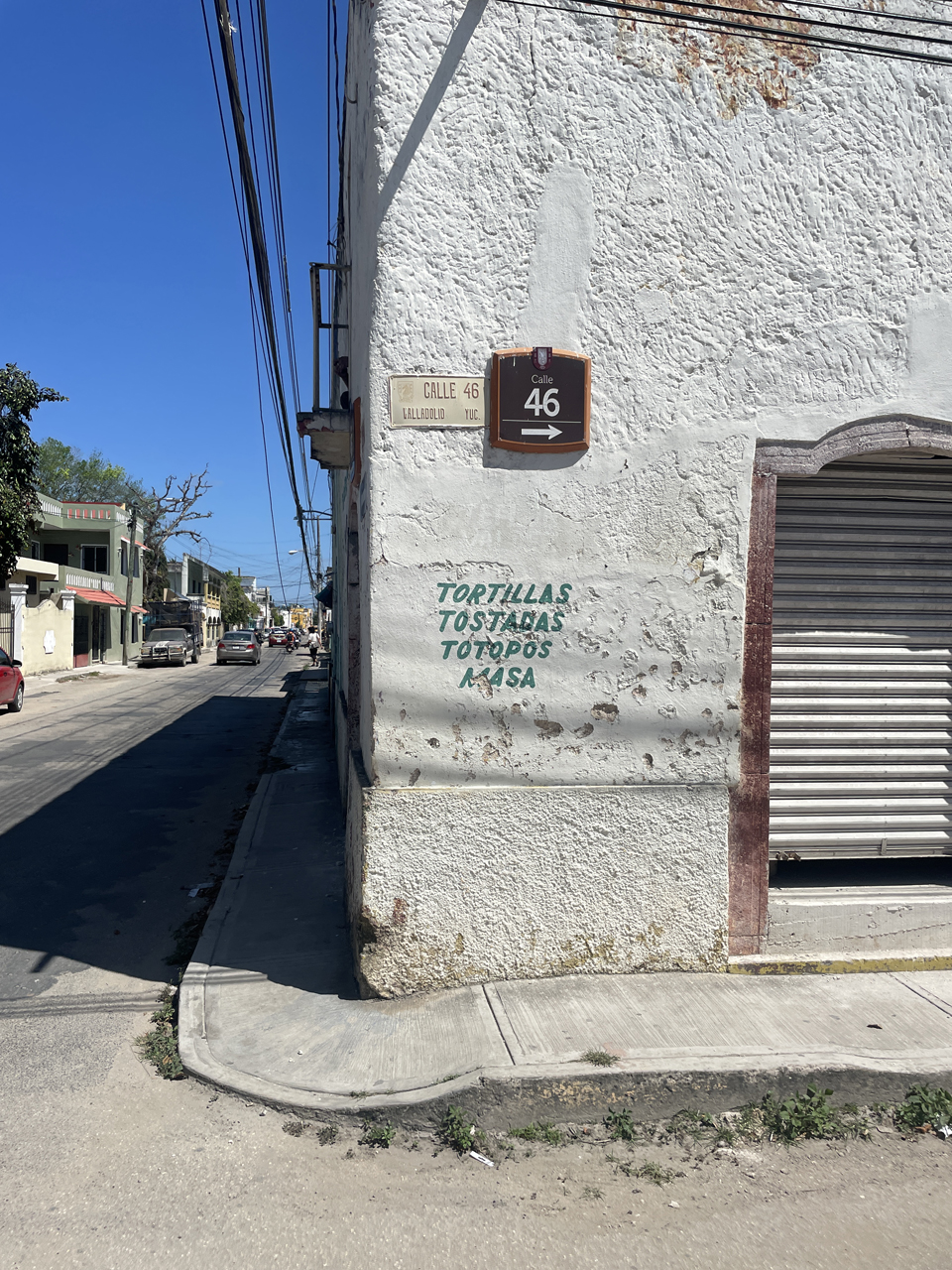
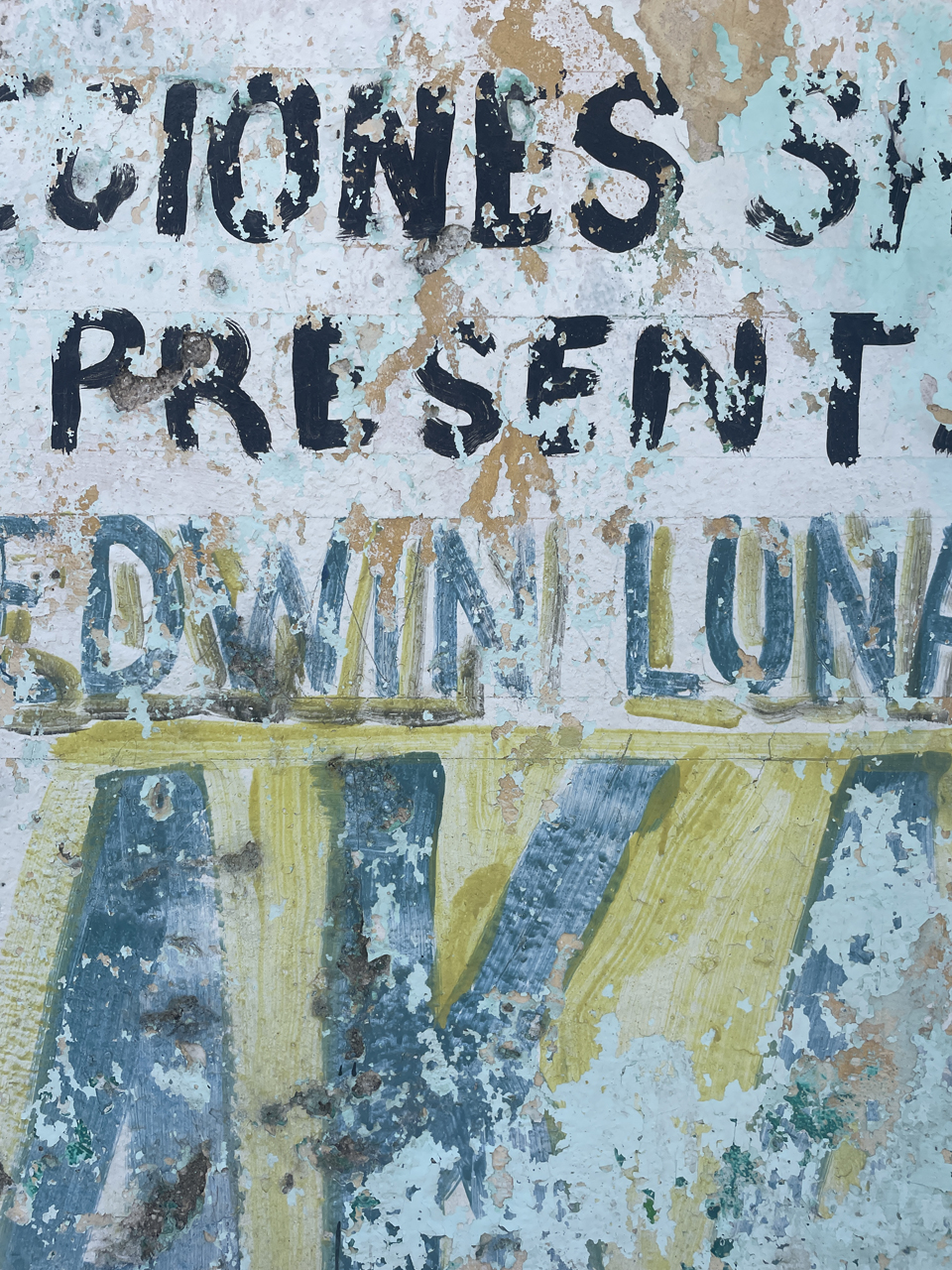

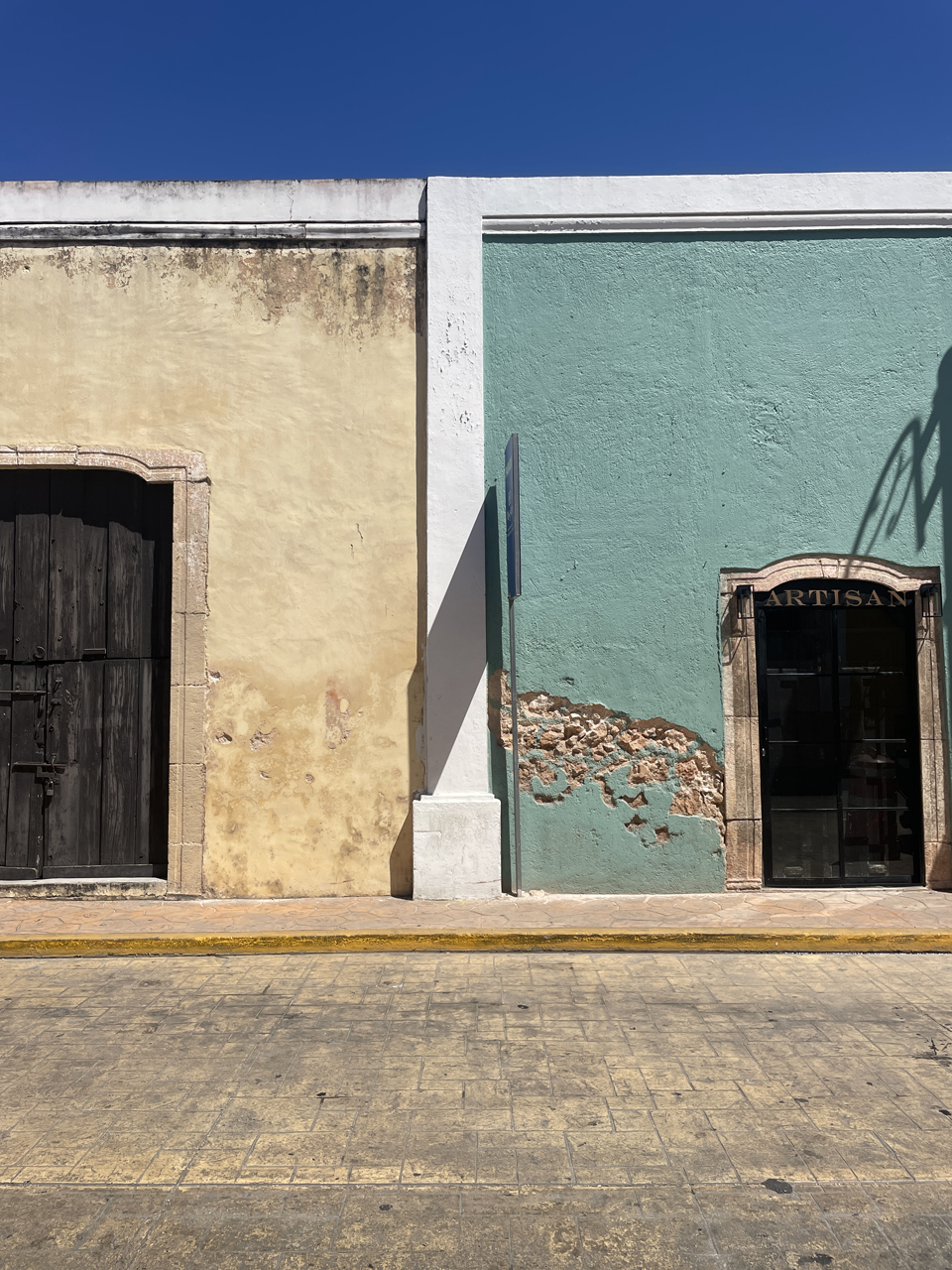
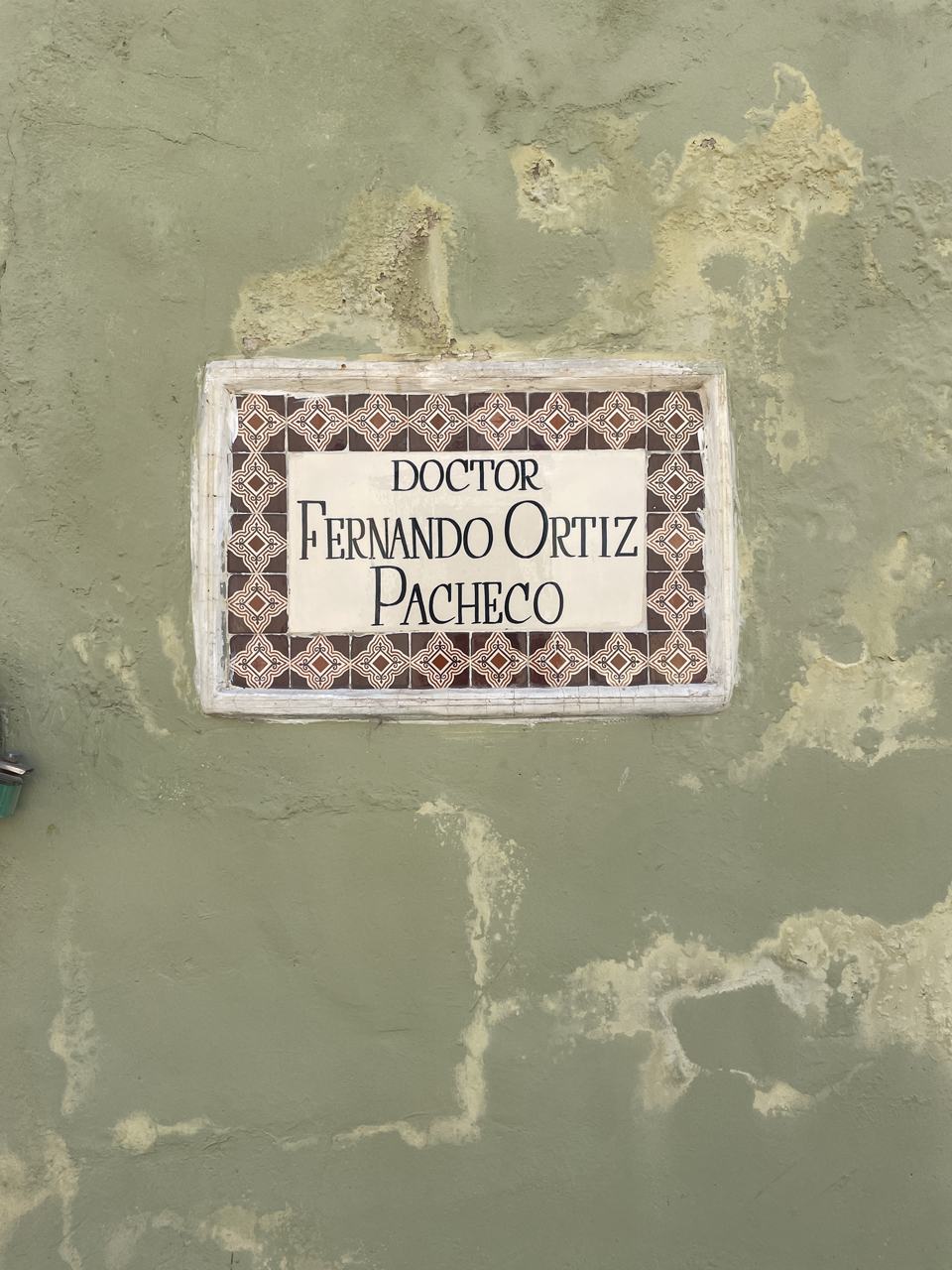
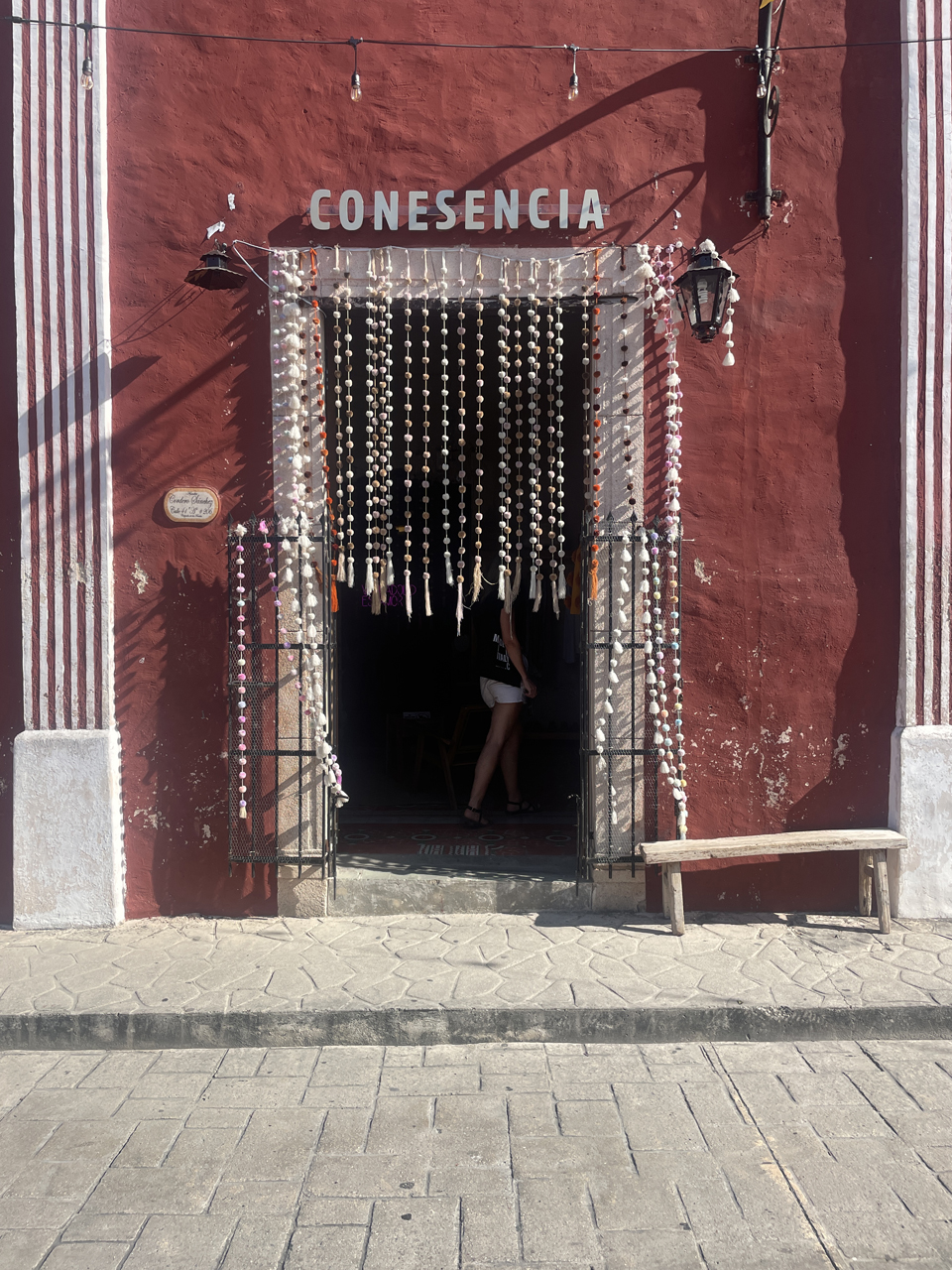



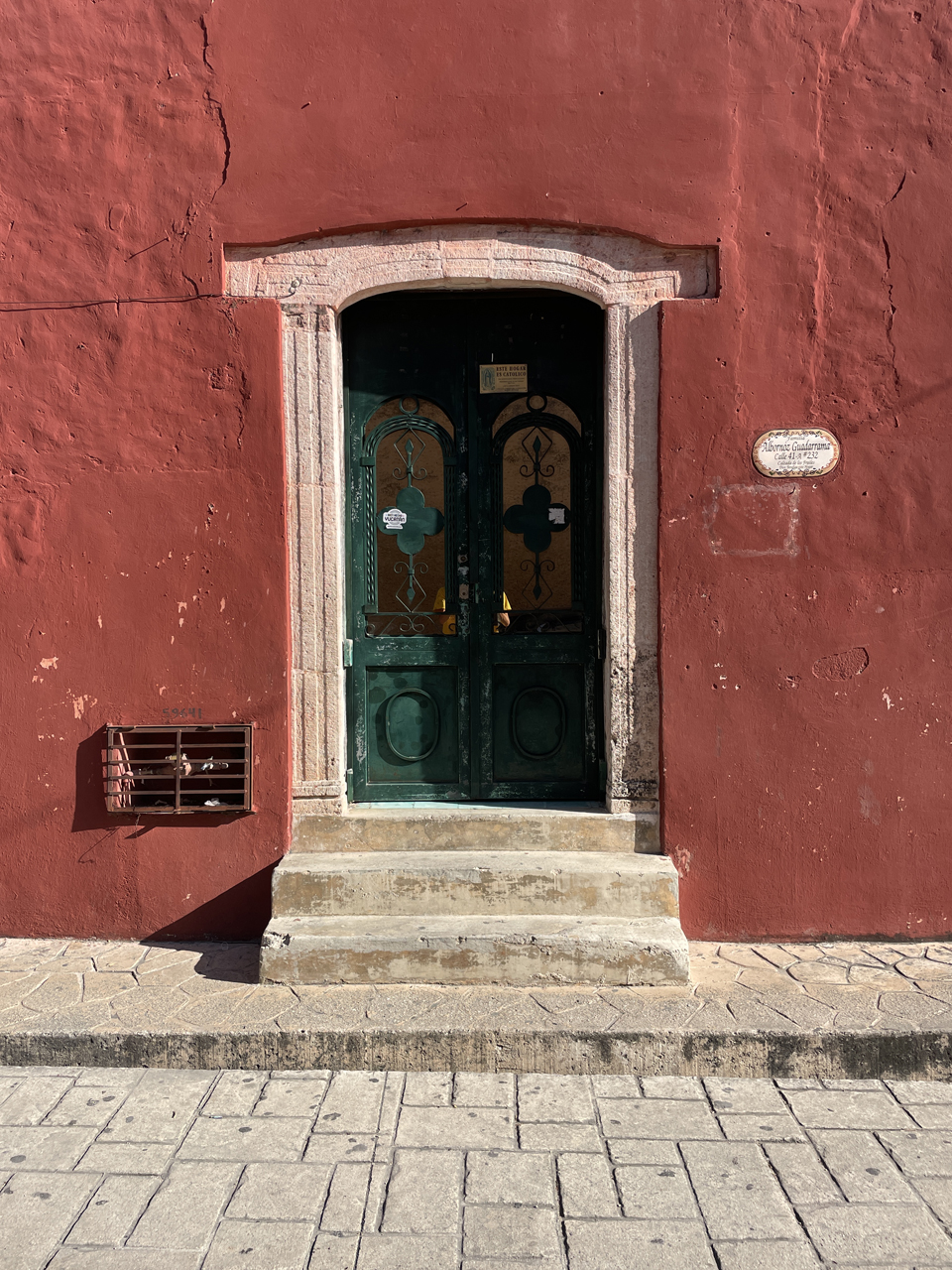
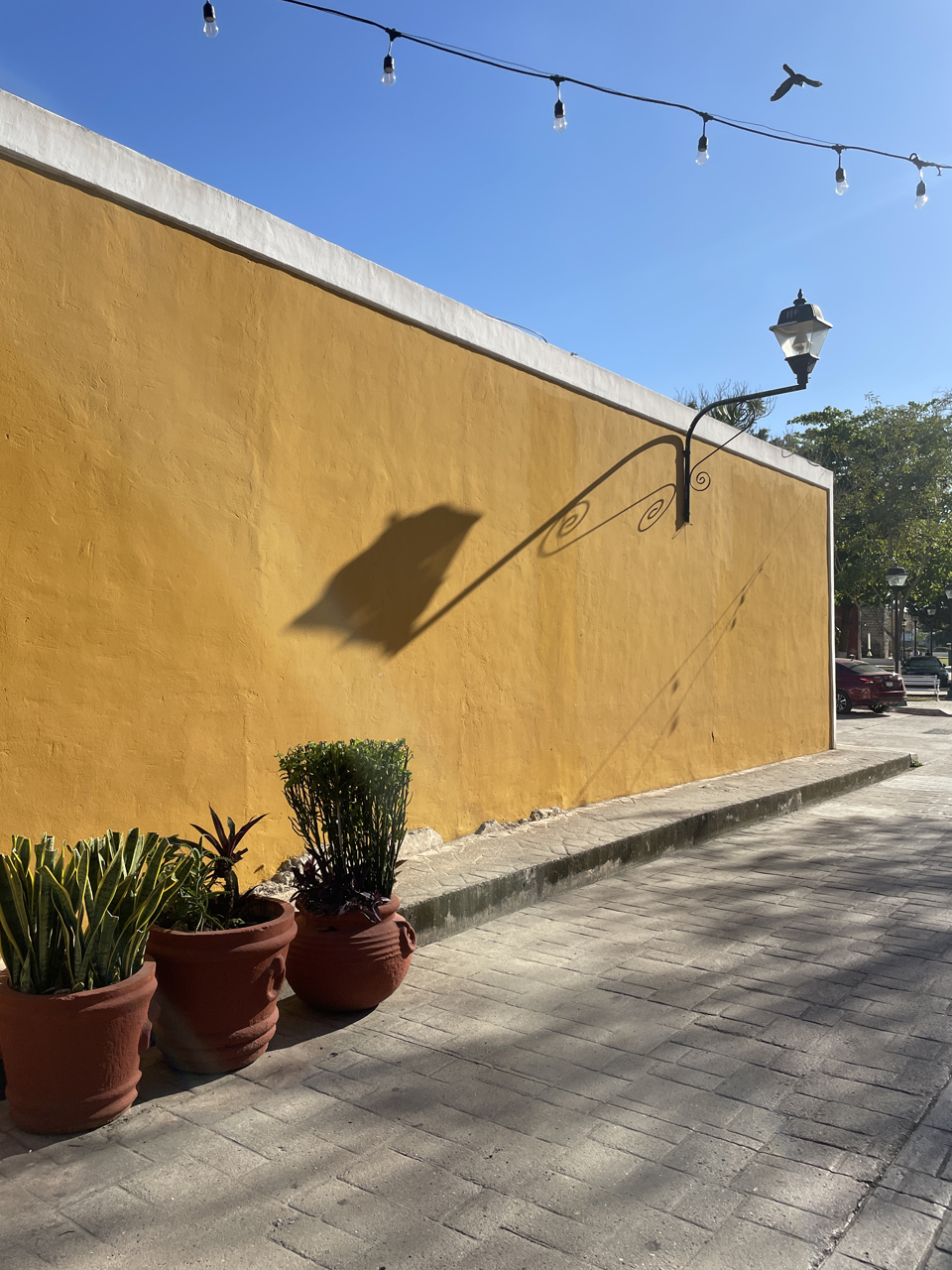
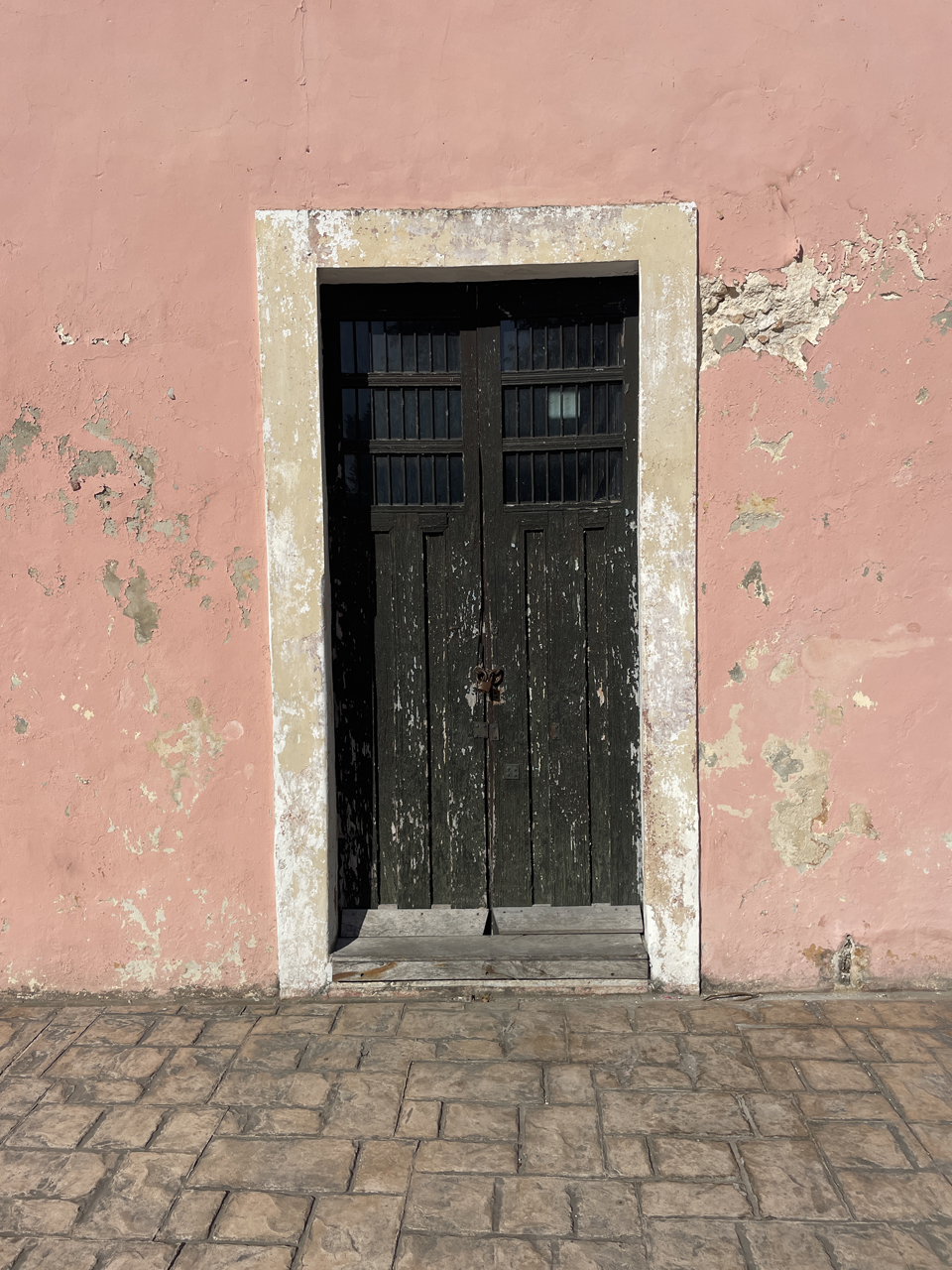

Naples, 1989: Roberto Baggio comes of age
“I’m not Maradona — he’s something else entirely.” Roberto Baggio may have been wise to distance himself from the best player in the world, but there was a time when comparisons with Napoli’s captain were inevitable, especially if you wore the number ten shirt. For three seasons Baggio had ostensibly fulfilled that role for Fiorentina following the retirement of club captain Giancarlo Antognoni. But they were frustrating years conditioned by painful recovery from the career-threatening damage to his right knee suffered while playing for Vicenza in May 1985 and again for his new club in September 1986. I’ll spare you a gory retelling of the hundreds of stitches, and dramatic weight loss, and the tears that he would never play again.
By 1988 Baggio had regained fitness and had begun to leave an impression on a league already packed with attacking talent. He scored 15 goals during the 1988-89 campaign and two more by week four of the 1989-90 season. Next up was a visit to Naples. Napoli remained unbeaten in Serie A under new mister Albertino Bigon, yet Maradona had so far yet to kick a ball. He’d fallen out with club president Corrado Ferlaino, and in protest had granted himself an extended vacation after that summer’s Copa América. Wearing a heavy beard and the number 16 shirt, Maradona made his belated return to the side as a substitute in a goalless UEFA Cup tie at Sporting, just three days before the Fiorentina match. The following Sunday he again started from the bench, alongside a young Gianfranco Zola. Fiorentina’s coach, Sven-Göran Eriksson, had also gone to Lisbon, Benfica specifically. His replacement, Bruno Giorgi, was the same man that had launched Baggio’s career at Vicenza and taken the club from Serie C1 to Italy’s top flight.
Such mini subplots may have sold some newspapers in the days leading up to the match, but this was 1989: “social media” meant chatting at the bar over a macchiato and the morning papers, while Serie A had yet to reorganise its weekend schedule to favour the casual armchair spectator. Referees still dressed in black, and all matches kicked off simultaneously on a Sunday afternoon. On 17th September 1989, as Napoli and Fiorentina took the field at the Stadio San Paolo, Inter and Juventus were lining up to face each other some 400 miles away at San Siro. Not all eyes were on Naples, and any hype generated before kick-off was tempered by the collective understanding that regardless of the sacred rituals and frenzied passions that calcio no doubt cultivates, sometimes a football match is just a football match.
And what a match it was. Perhaps still groggy from their trip to Portugal, Napoli started poorly and by half-time were two-nil down. Maradona came on for Massimo Mauro after the interval, and within ninety seconds of the restart had already missed a penalty. Stefano Pioli deflected the ball into his own net, then Careca equalised. Three minutes remained when a Maradona cross was met by Giancarlo Corradini’s head: 3-2. The result put Napoli on top of the Serie A table, which is where they finished the season in April. Though the unlikely comeback launched Napoli’s march towards a second scudetto, the game is still recalled for one reason only: Roberto Baggio, who scored both of Fiorentina’s goals. The second was a routine penalty, but the first saw the young forward travel three-quarters of the length of the pitch with the ball (in Italy they call this kind of run a “coast-to-coast”). It was the sort of individual effort with which Baggio would become forever associated, and to which magazine articles are devoted some thirty-five years later. Only one other active player in Serie A could have scored such a goal, but on this occasion he could only watch in admiration from the Napoli bench.
The move began in the twenty-second minute inside Fiorentina’s own penalty area, where a swift exchange between Napoli’s twin attacking threats, Careca and Carnevale, was anticipated by the balding Battistini who, in the libero tradition, wore his shirt untucked. He immediately played the ball out to the pragmatic Dunga, a player whose very existence defied every Brazilian footballer stereotype. The stocky mediano turned and found Baggio, still deep in his own half. Eleven seconds later Fiorentina were in front. What happened in between Baggio receiving the ball and depositing it in the back of the Napoli net is hard to describe, and even harder to explain. Over 50,000 people witnessed the goal with their own eyes, but such accounts can be unreliable; for this kind of forensic study one must turn to the video evidence. The television images are equally hazy and deeply saturated, but their vibrant colours and elongating shadows instantly convey a warm afternoon in September. As Baggio starts to move up field, his socks already shoved down towards his ankles, not even the halfway line — let alone the opposition’s goal — has yet come into view. Surely even he must have been only vaguely aware of his destination, which at that point was represented by a distant rectangle in his peripheral vision. No player in that position thinks, I’m going to score. Or maybe they do. Baggio once described a similar goal against Milan as “the kind I used to score in the hallway at home, only this time the hallway was San Siro.”
Baggio trots unencumbered into Napoli’s half and then quickly outpaces Alemão, who soon gives up the chase. The camera switches to a tighter angle as defenders arrive to halt Baggio’s one-man attack, appearing one by one like hapless bad guys in a kung-fu movie. First up is Alessandro Renica, whose challenge Baggio evades easily, cutting inside and hopping over a trailing left leg with the apparent nonchalance of a Kenyan steeplechaser. Next, Corradini comes hurtling into view with a desperate, sliding lunge, but both Baggio and the ball are already long gone. Recognising that something special is developing, the television director cuts back to a wider shot as Baggio enters the box. Only Napoli’s goalkeeper, the improbably named Giuliano Giuliani, stands in his way. If Baggio had been any other player, he might have laid the ball square to present unmarked Argentine forward Oscar Dertycia with a simple tap-in. But he wasn’t, and so he doesn’t. Instead he feints to shoot with his right foot before rolling the ball past Giuliani with the sole of his same boot. Facing an open goal, a left-foot finish looks like the natural option, but Baggio pulls off a final twist, shifting his weight to slot home with his right. By the time Napoli’s Luca Fusi follows the ball over the line, the goalscorer is already jogging towards the corner flag to celebrate.
Two-and-a-half years earlier Baggio had scored his very first Serie A for la viola goal at the other end of the same stadium. That goal — the type of free-kick that would also become a trademark — earned Fiorentina a point and ensured the club’s survival on the penultimate day of the 1986-87 season. For Baggio, it also represented a release, and a belated rite of passage. He’d missed the entirety of the 1985-86 season and the bulk of 1986-87 following two surgeries in as many years to restore the wreckage of his ligaments and cartilage. Yet few home fans will likely have remembered Baggio’s first goal, as it coincided with the occasion of Napoli’s historic first scudetto. In 1989 the reaction was very different. This time the San Paolo crowd rose as one to applaud not just Baggio’s skill, vision and impudence, but also his perseverance — attributes to which the partenopei had grown accustomed thanks to their own number ten, for whom the stadium would one day be named.
The next evening Baggio and Carnevale appeared together in matching Azzurri training wear from Italy’s Coverciano training headquarters on Il Processo del lunedì, Rai Tre’s long-running Monday night football show. Hosted by Aldo Biscardi, a journalist with a background in law, the weekly live transmission helped popularise the slow-motion machine known as moviola, an innovation that could extend heated debates concerning dubious offside decisions into the early hours. For this episode, given his exploits the previous afternoon, Baggio himself was asked to comment on the footage while his “gol da leggenda” was played back at a reduced speed.
“We’ve enlarged the pictures as much as possible so we can also see Baggio’s facial expressions,” begins Paolo Valenti by way of an introduction, aiming a telescopic pointer at a giant screen like a university lecturer. “This is Renica,” he notes, as though identifying a continent for the benefit of a class of struggling geography students. “I’d like kids who want to play football to see this,” he continues, describing the goal in didactic terms more suited to a masterful set-piece of cinema before breaking down the action into a checklist of pure technical accomplishments. “Ball control, change of direction, acceleration, deceleration, an obstacle jump and then the finishing touch,” Valenti concludes. “It’s a textbook of style.”
Valenti never disclosed his footballing allegiance, but after his unexpected death in 1990 it was revealed that he was a Fiorentina supporter. Baggio’s own live commentary is predictably mundane by comparison: he sounds more like a man offering directions to the nearest farmacia. There are long pauses as he waits for the moviola to catch up — the playback speed has been slowed down to the extent that it takes a full seventy seconds for the goal to be replayed. When the ball finally nestles in the corner of Napoli’s goalmouth Valenti cries, “Olé!” The audience breaks into a spontaneous applause. No other words are necessary.
Two nights later Azeglio Vicini’s Italy played a friendly with Bulgaria in Cesena, where Baggio (wearing the number seven shirt) scored another doppietta. One goal was another coolly dispatched penalty. The other — a typically pacy run around the keeper and a cool finish into an unguarded net — proved that his performance at Napoli the previous weekend wasn’t a one-off. In less than a week, Baggio had confirmed the interest of Juventus and consecrated his status as the host nation’s most exciting young talent ahead of Italia ’90. The 1989-90 season is generally considered Baggio’s best in a Fiorentina shirt. There was much more to come in his career, but by the end of the decade Baggio was no longer compared to Maradona or anyone else. From that point forward other players would be compared to him, though few ever really could.
This article was originally published in issue 31 of Mundial magazine.

Even the biggest decisions start with a conversation. That was the guiding truth behind this advertising campaign for Glenmede, a Philadelphia-based financial management company that specializes in private equity and investments. Glenmede was looking to boost awareness around their brand, particularly among a younger demographic, whose attitude and approach towards wealth and investments is quite different from those of previous generations. Together with the strategy team at Sia Addison, I devised the “Let’s Talk” tagline and designed print and digital assets. The campaign appeared in targeted media outlets including The New York Times, The New York Times Magazine, T Magazine, How To Spend It, Hamptons Magazine, Palm Beach Daily News, Dan’s Papers, the alumni magazines of Columbia, Princeton and Yale universities, websites of The New York Times and The Wall Street Journal, and at high profile cultural events including Frieze New York, Tanglewood Festival, Aspen Music Festival, and Art Basel Miami Beach.


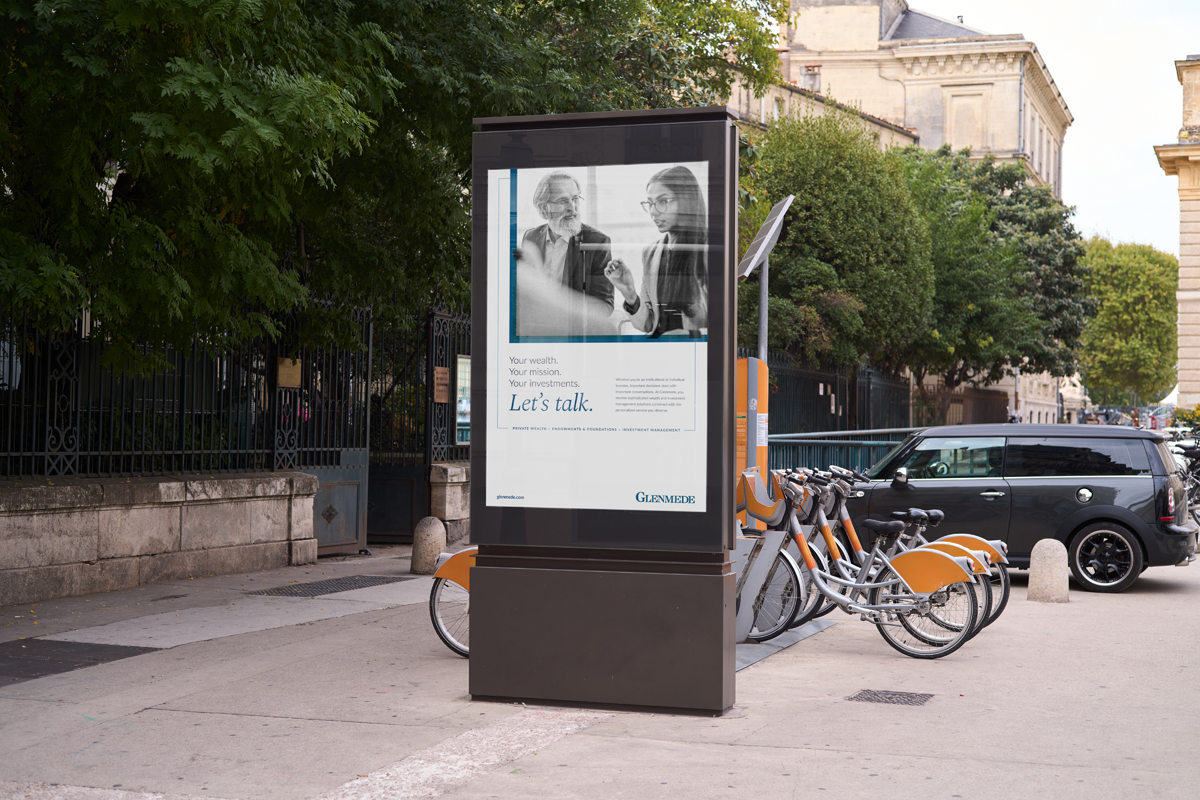

 :




Los Angeles, October 2022 and February 2024.


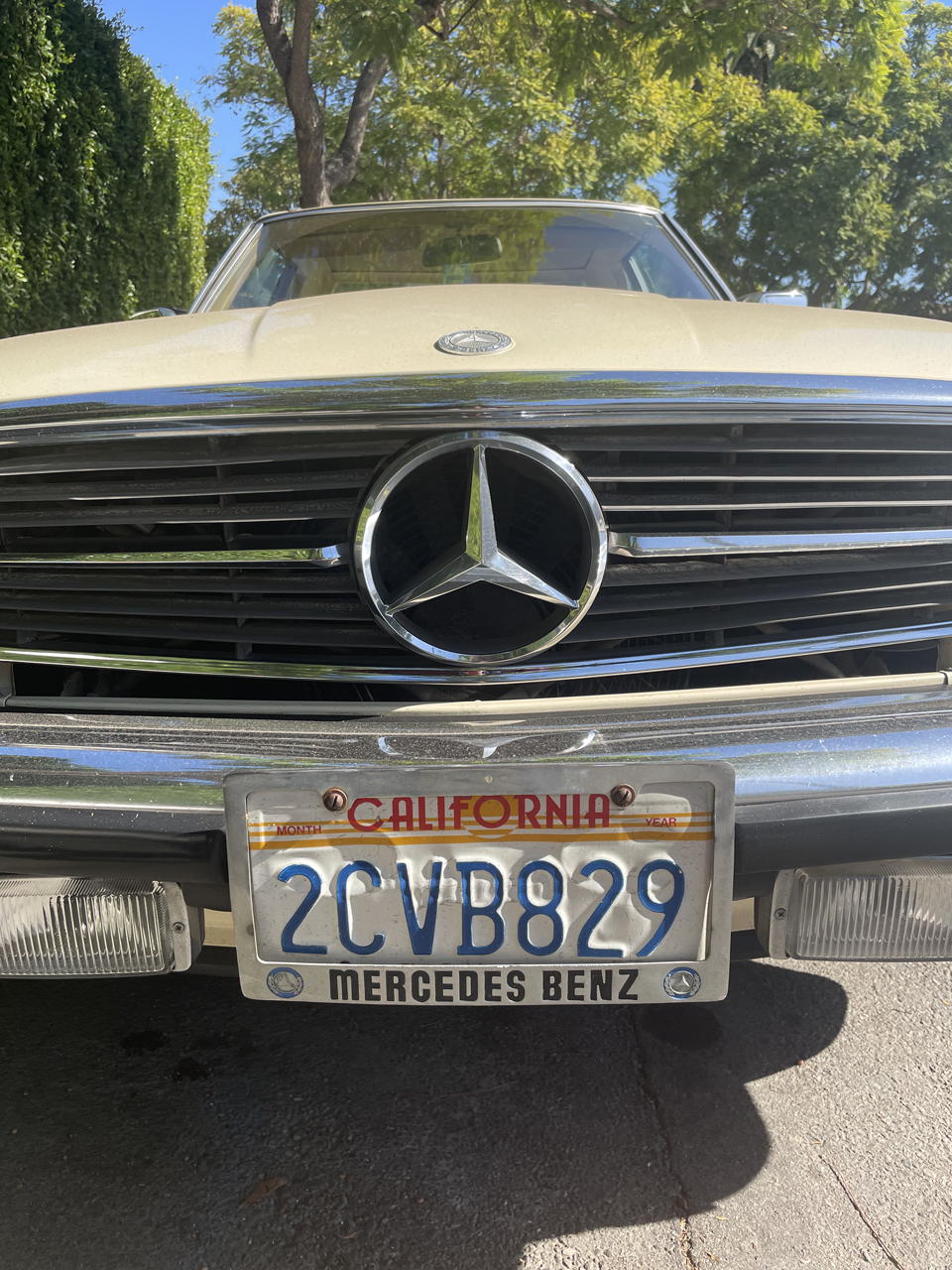


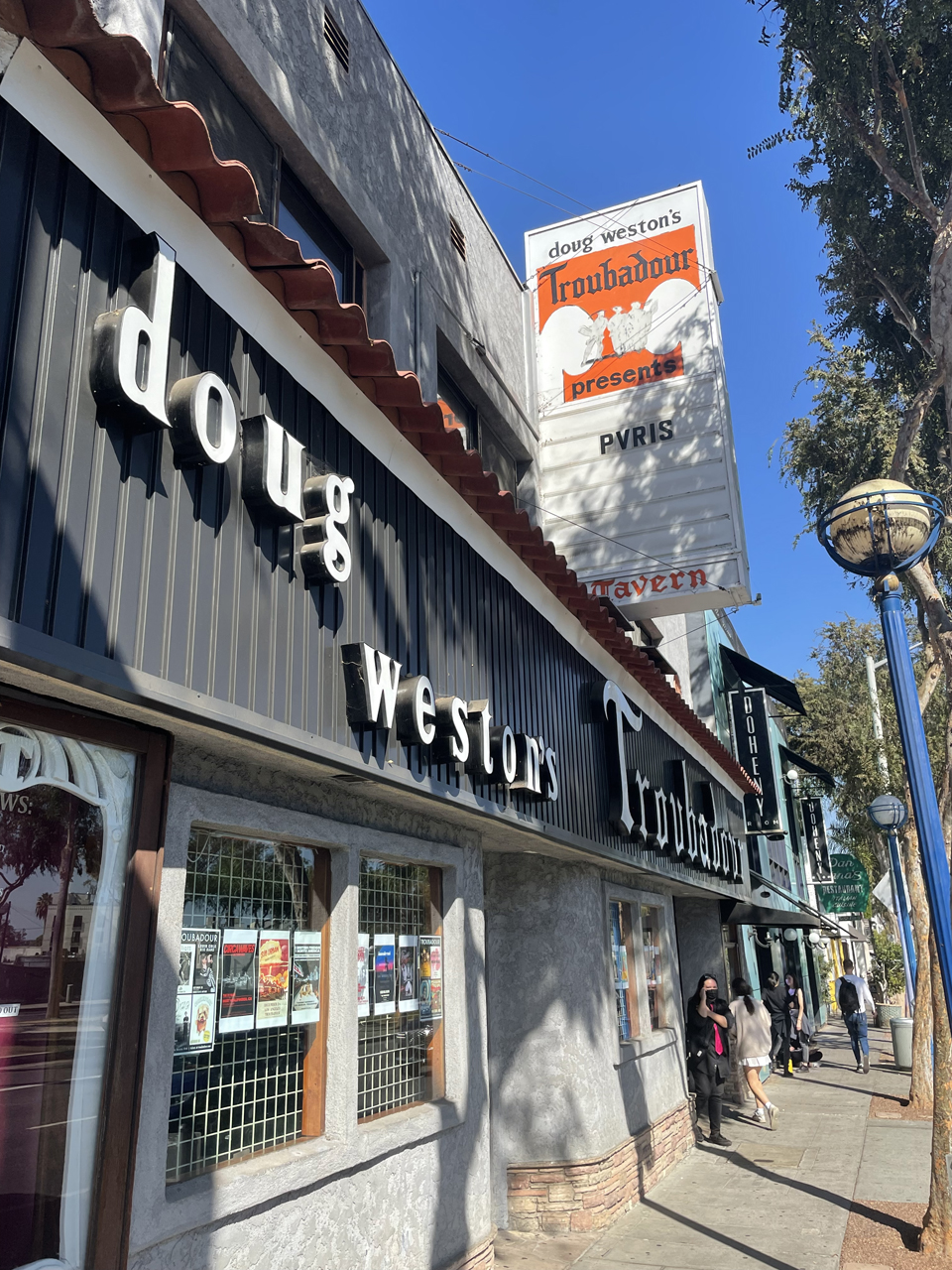

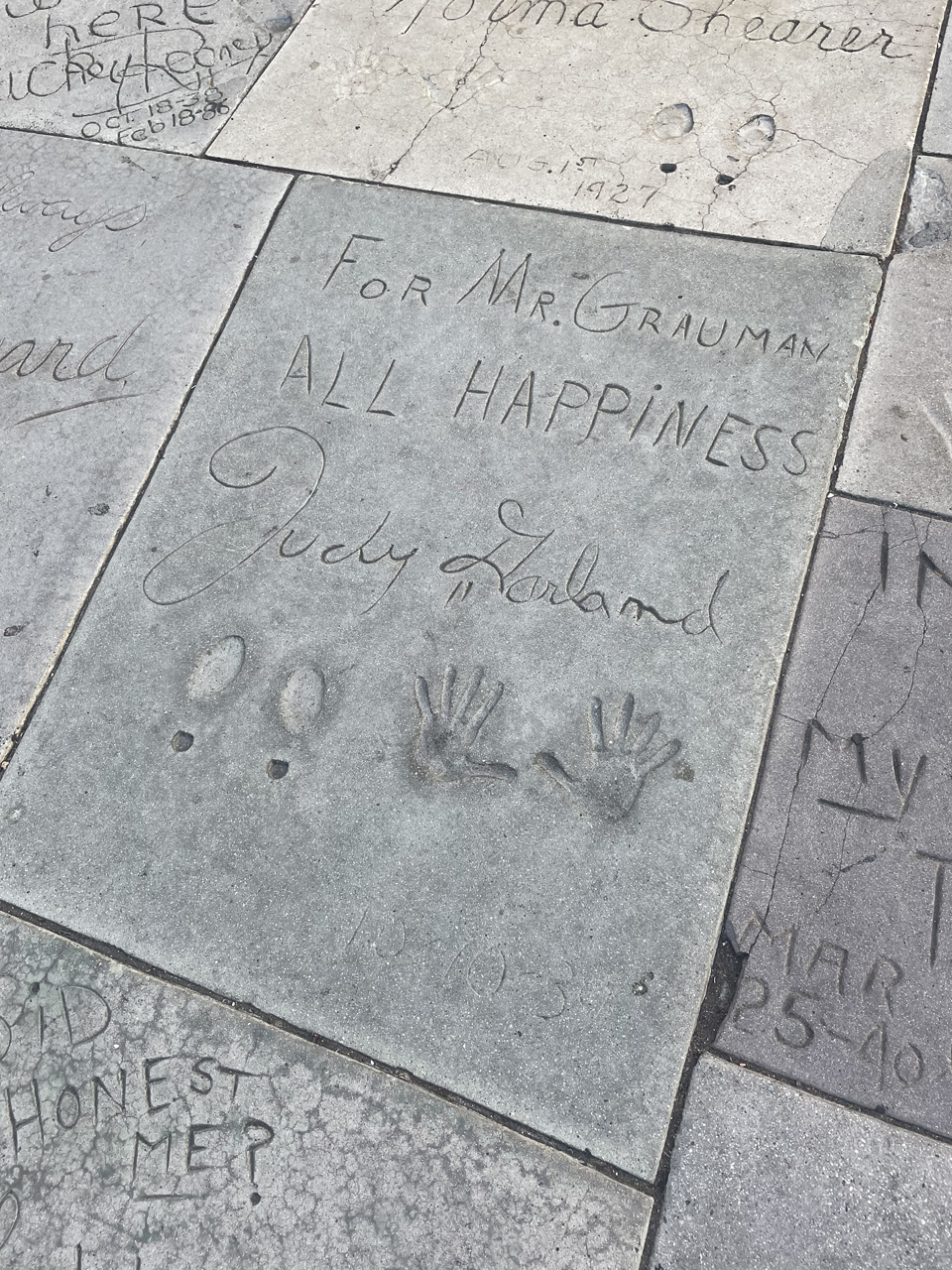

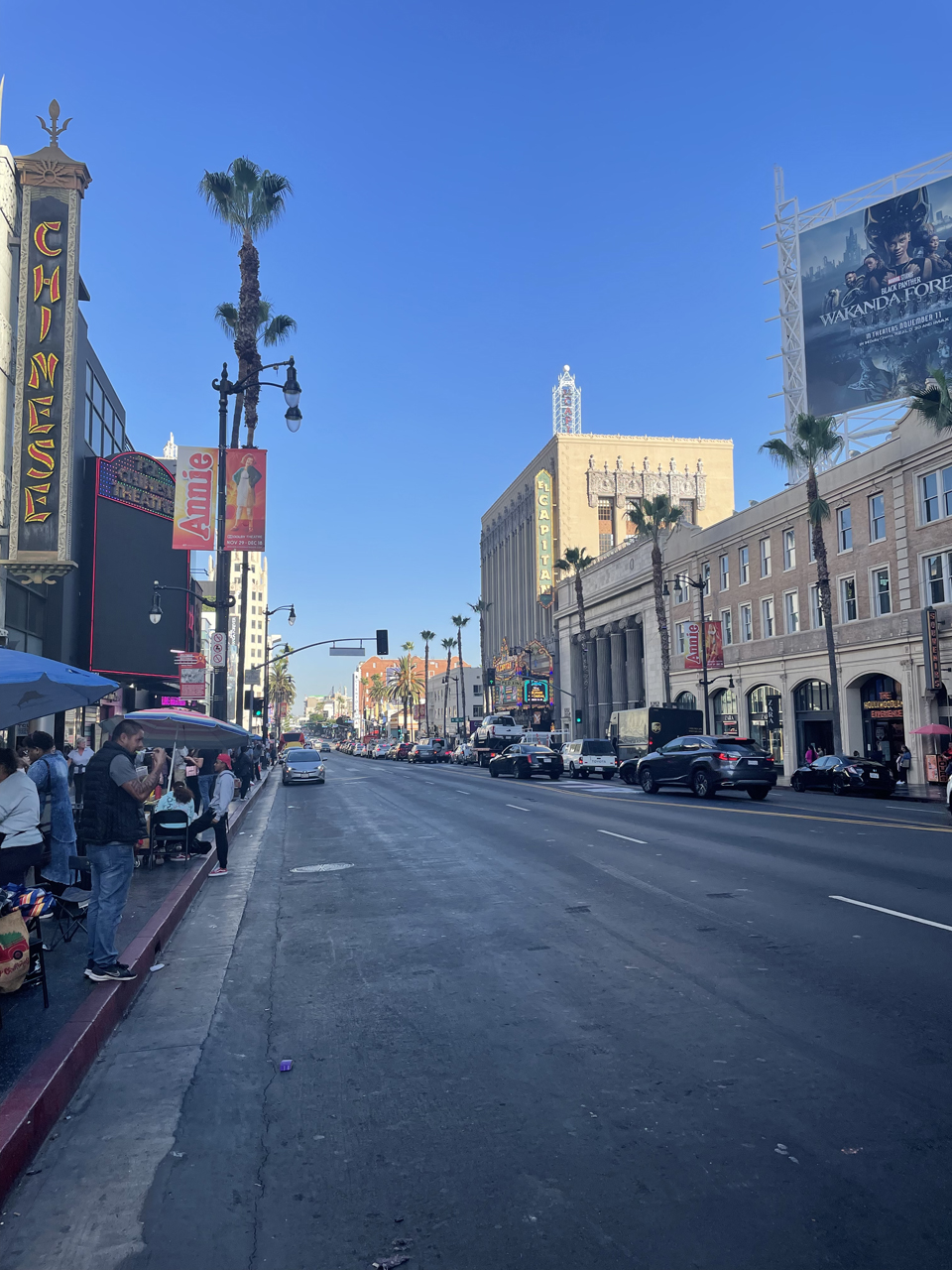
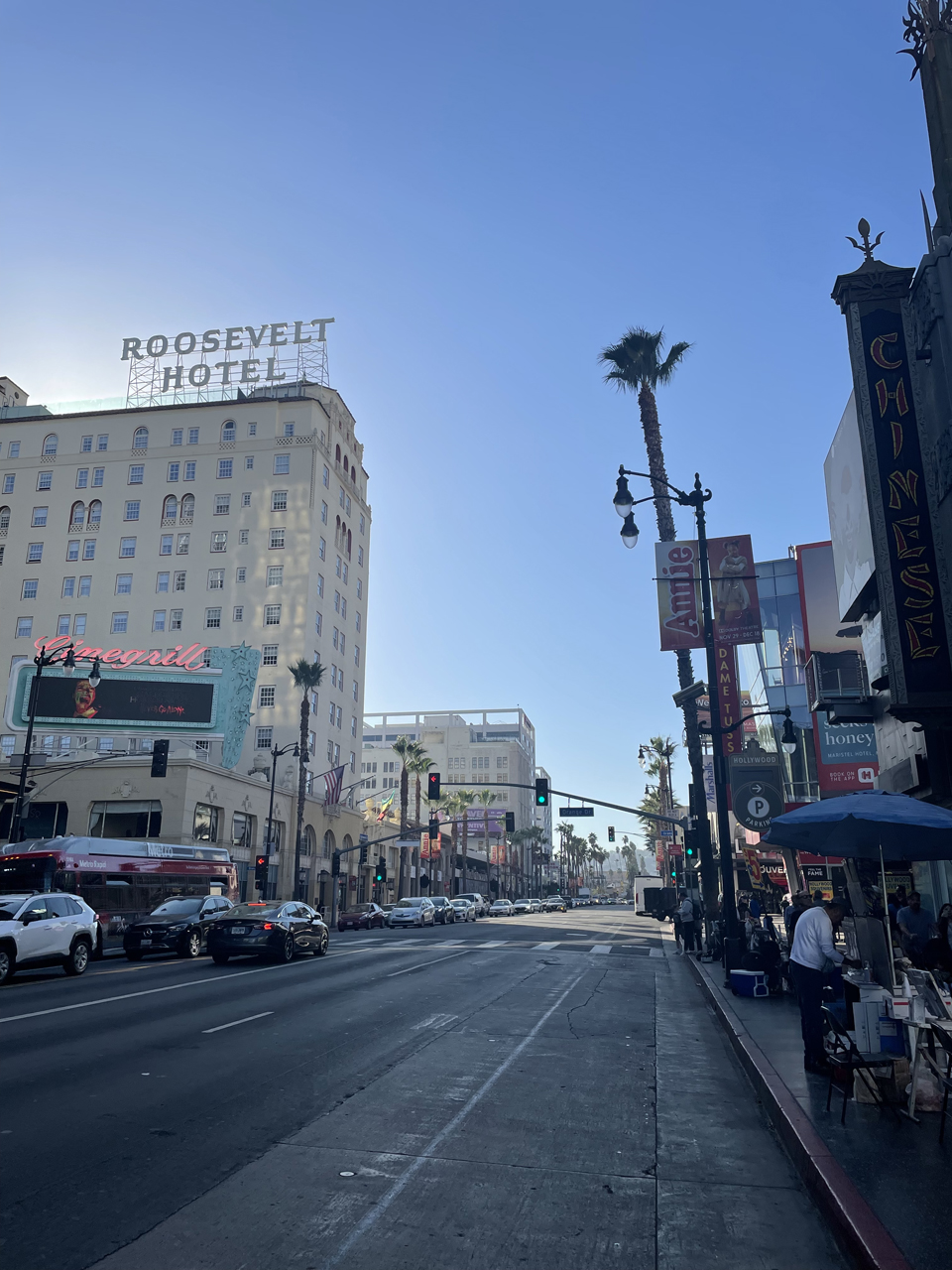
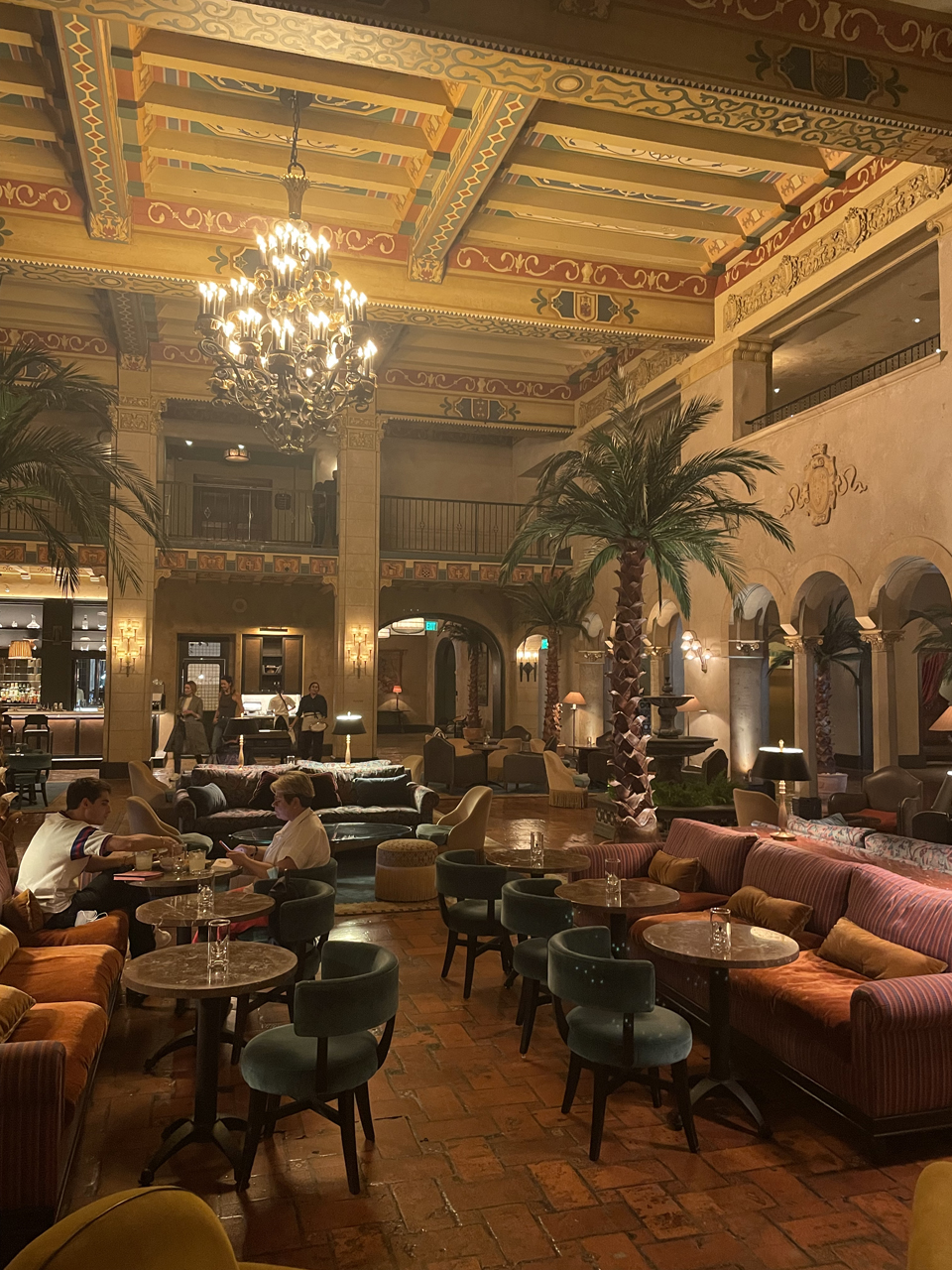
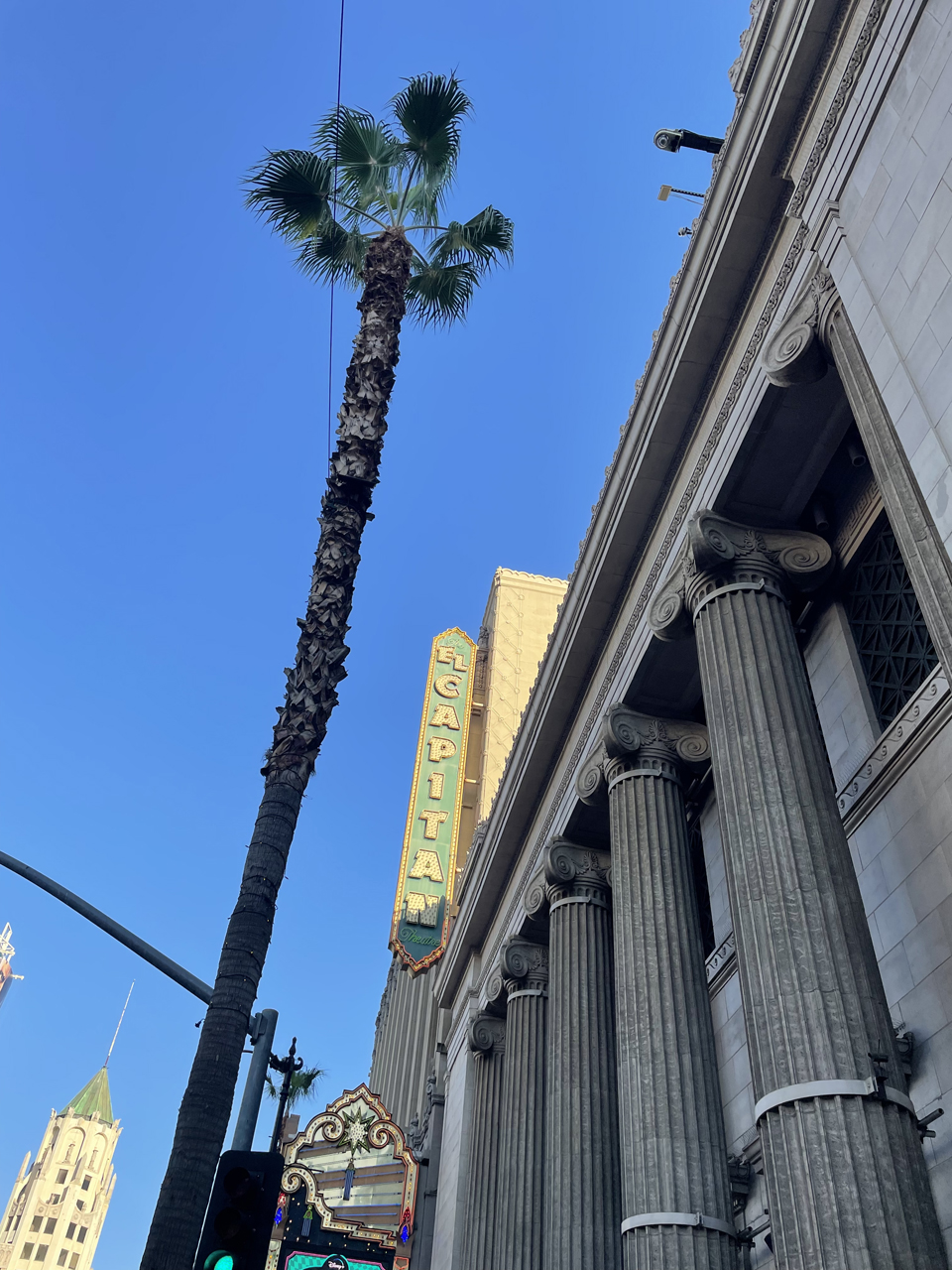
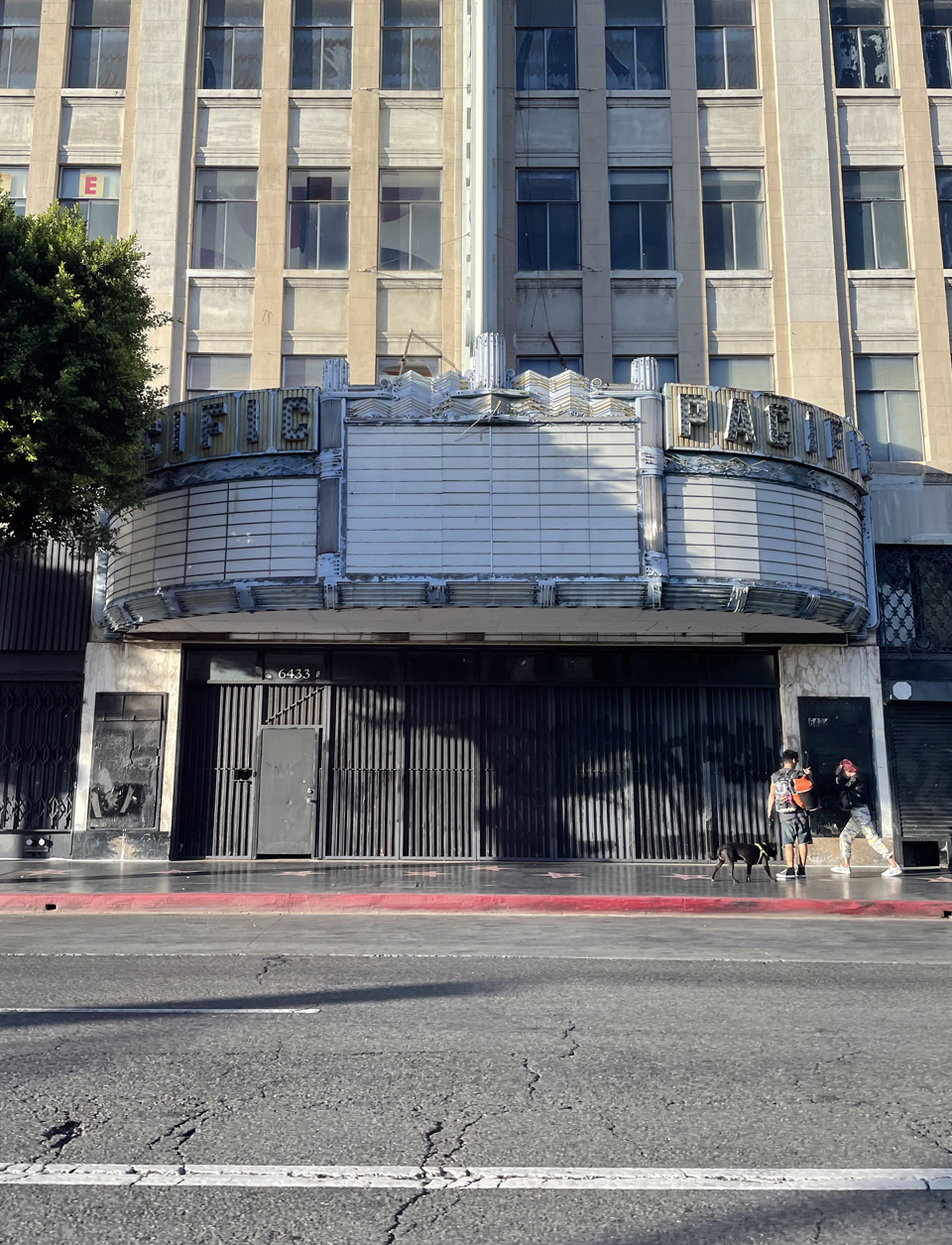
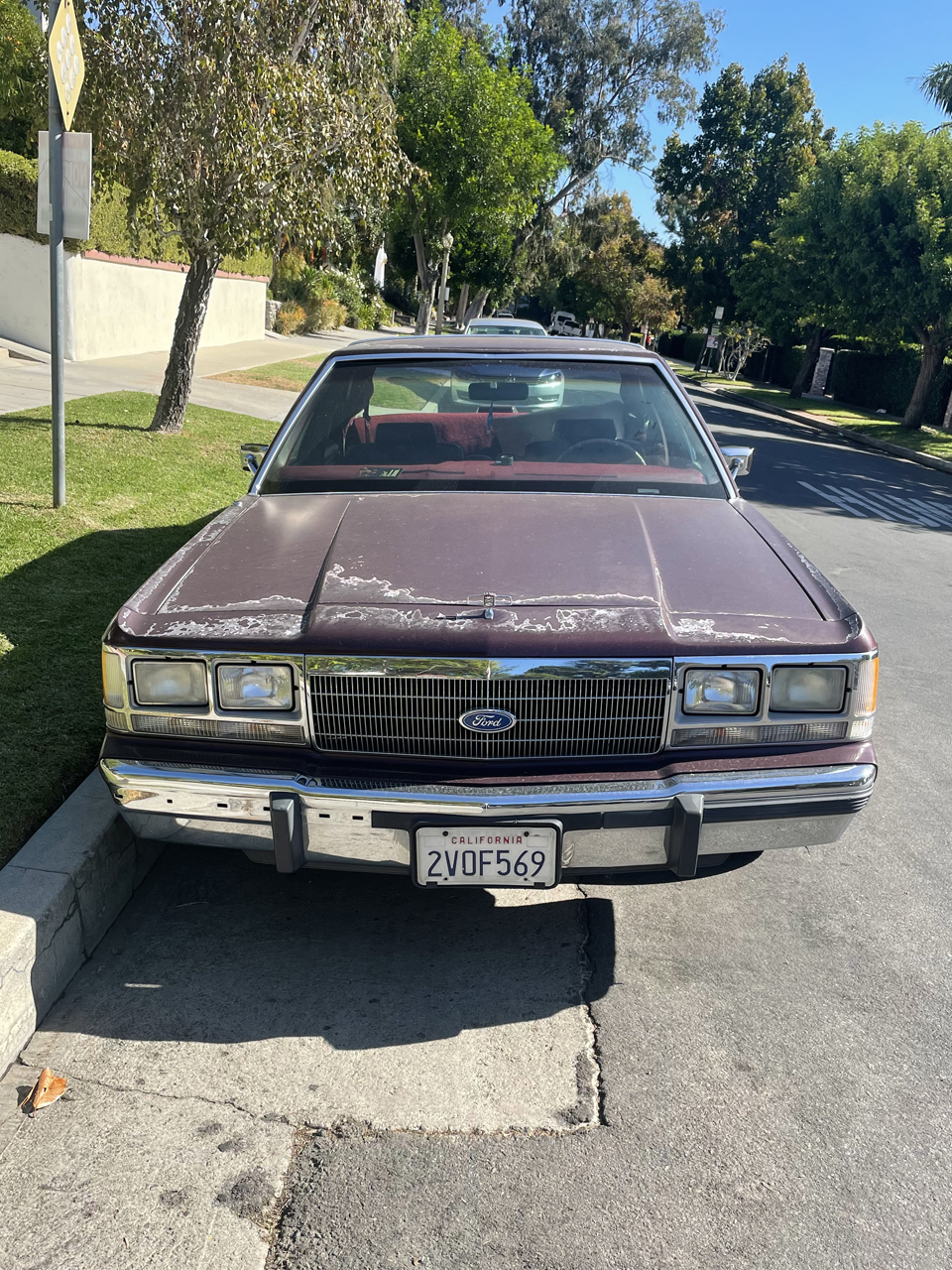
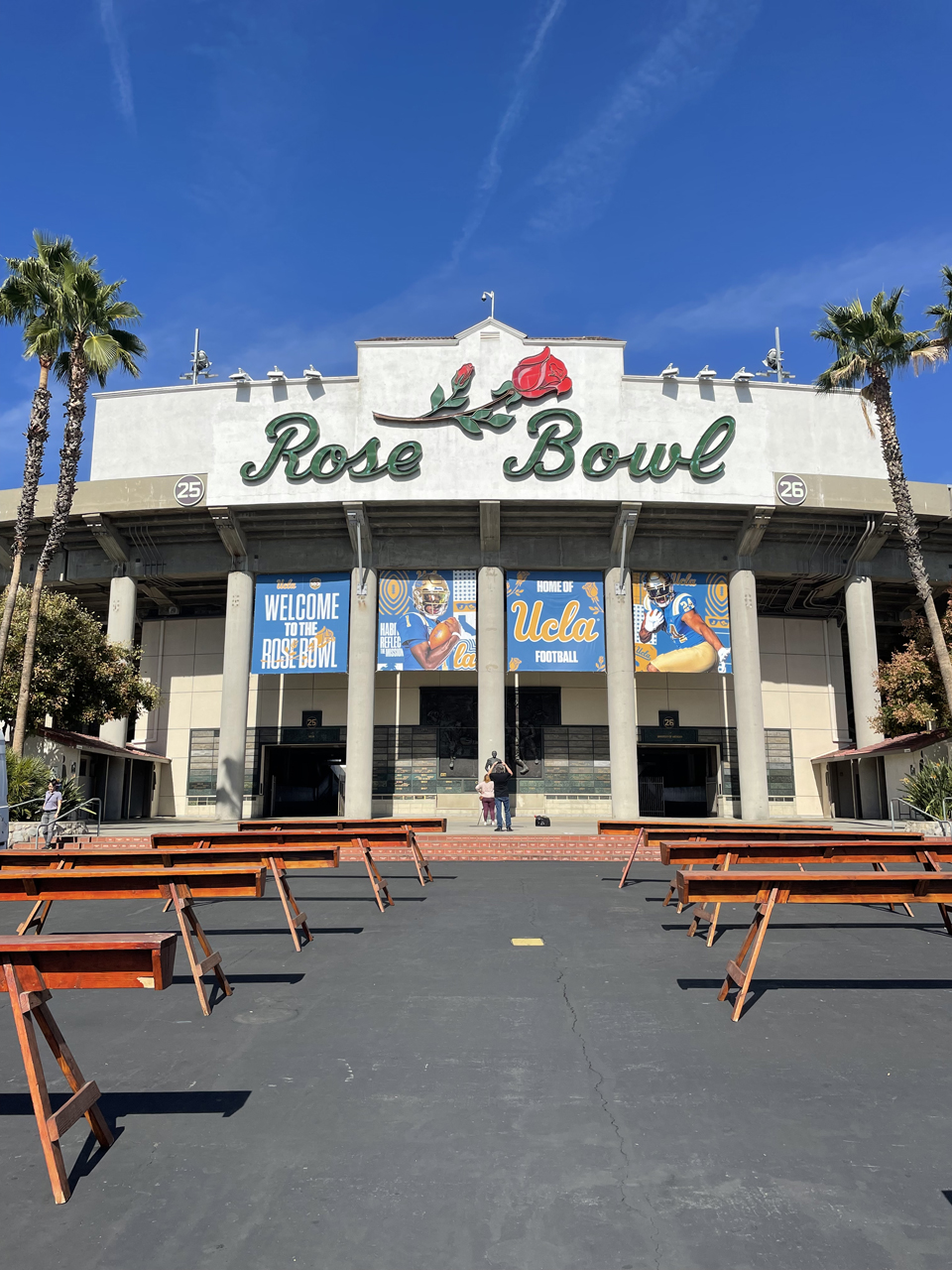




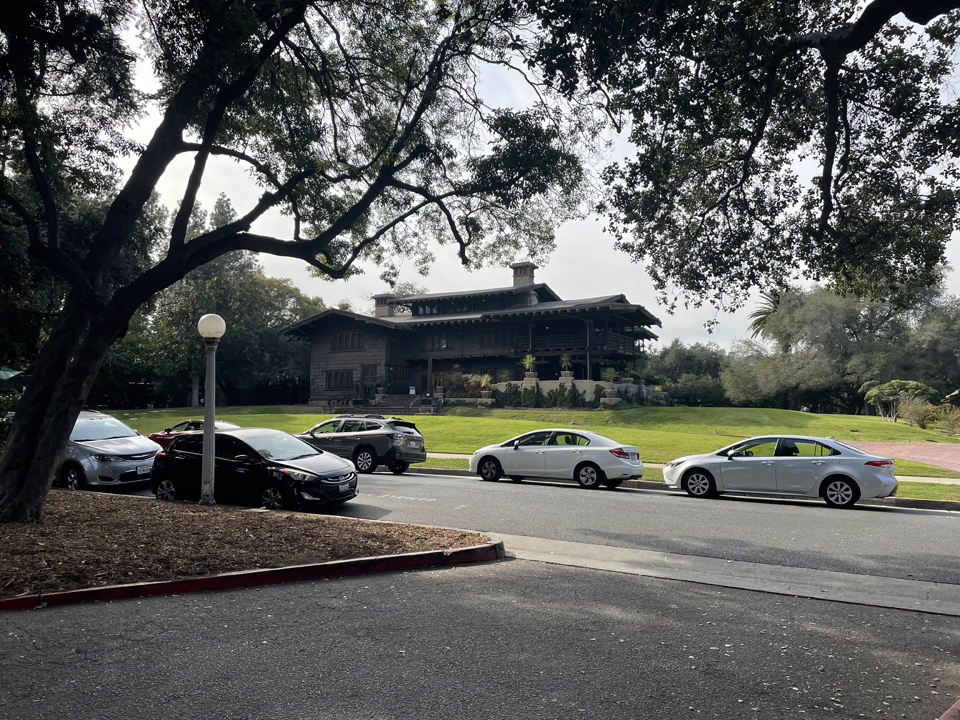
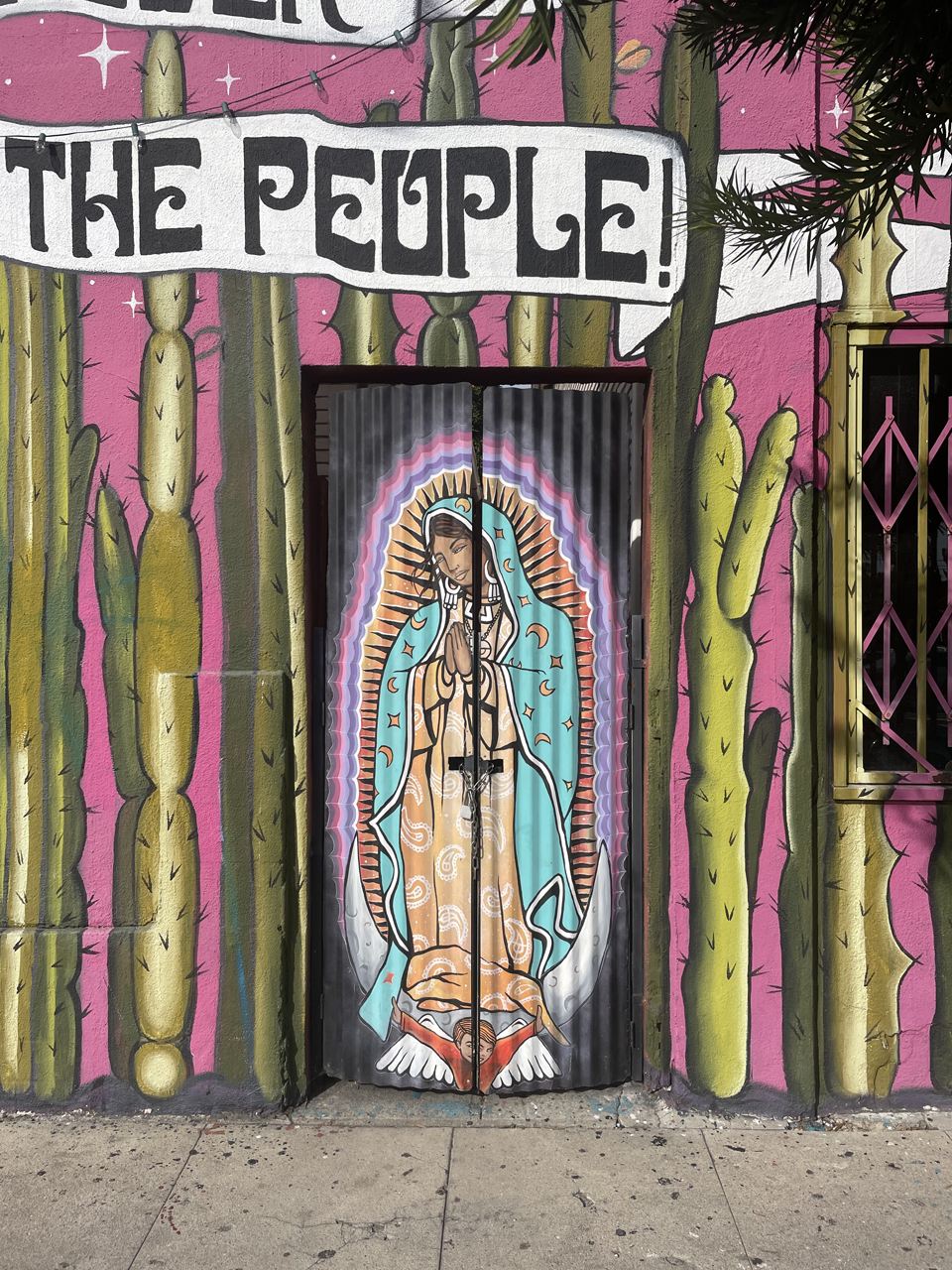

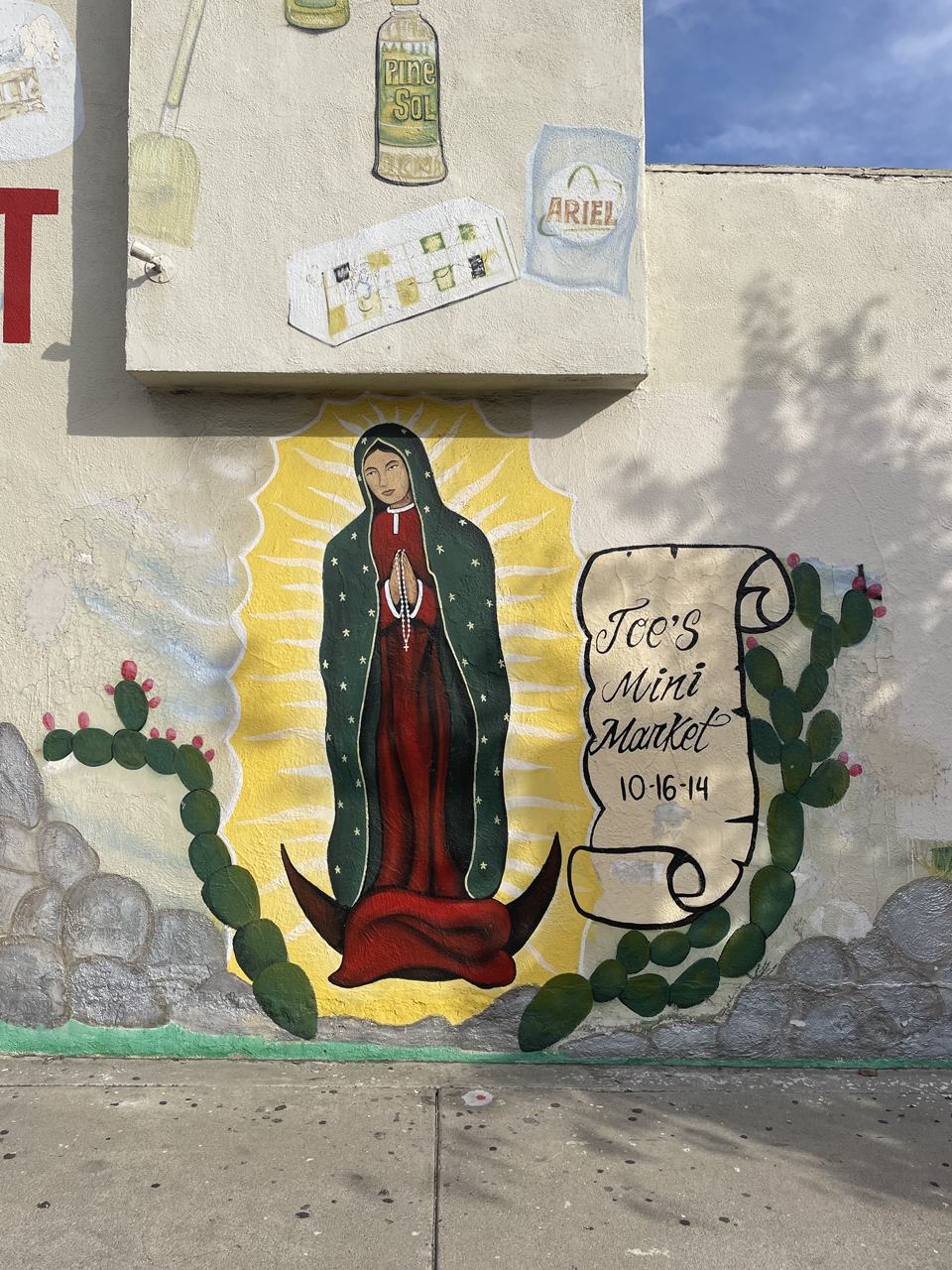

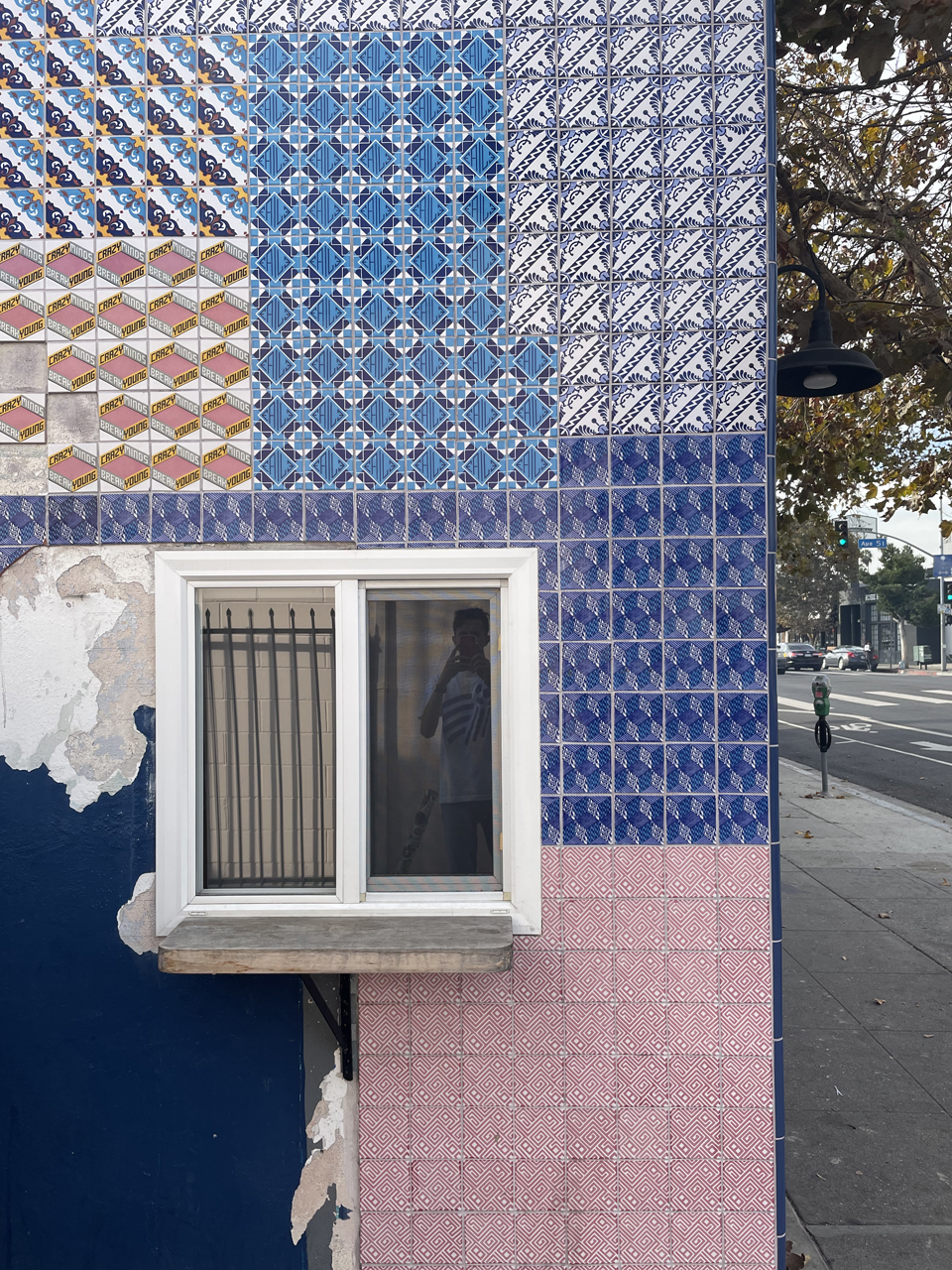
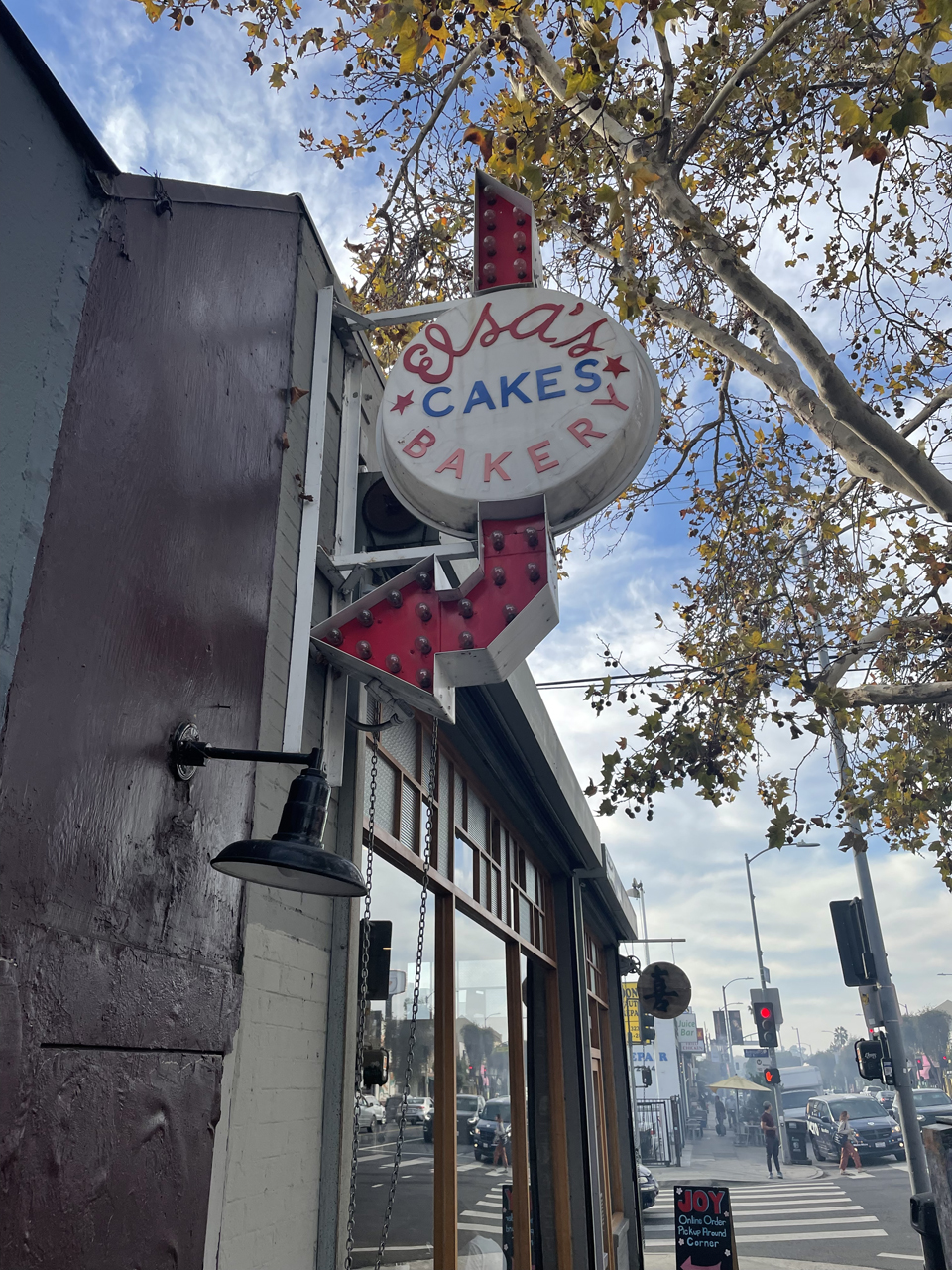
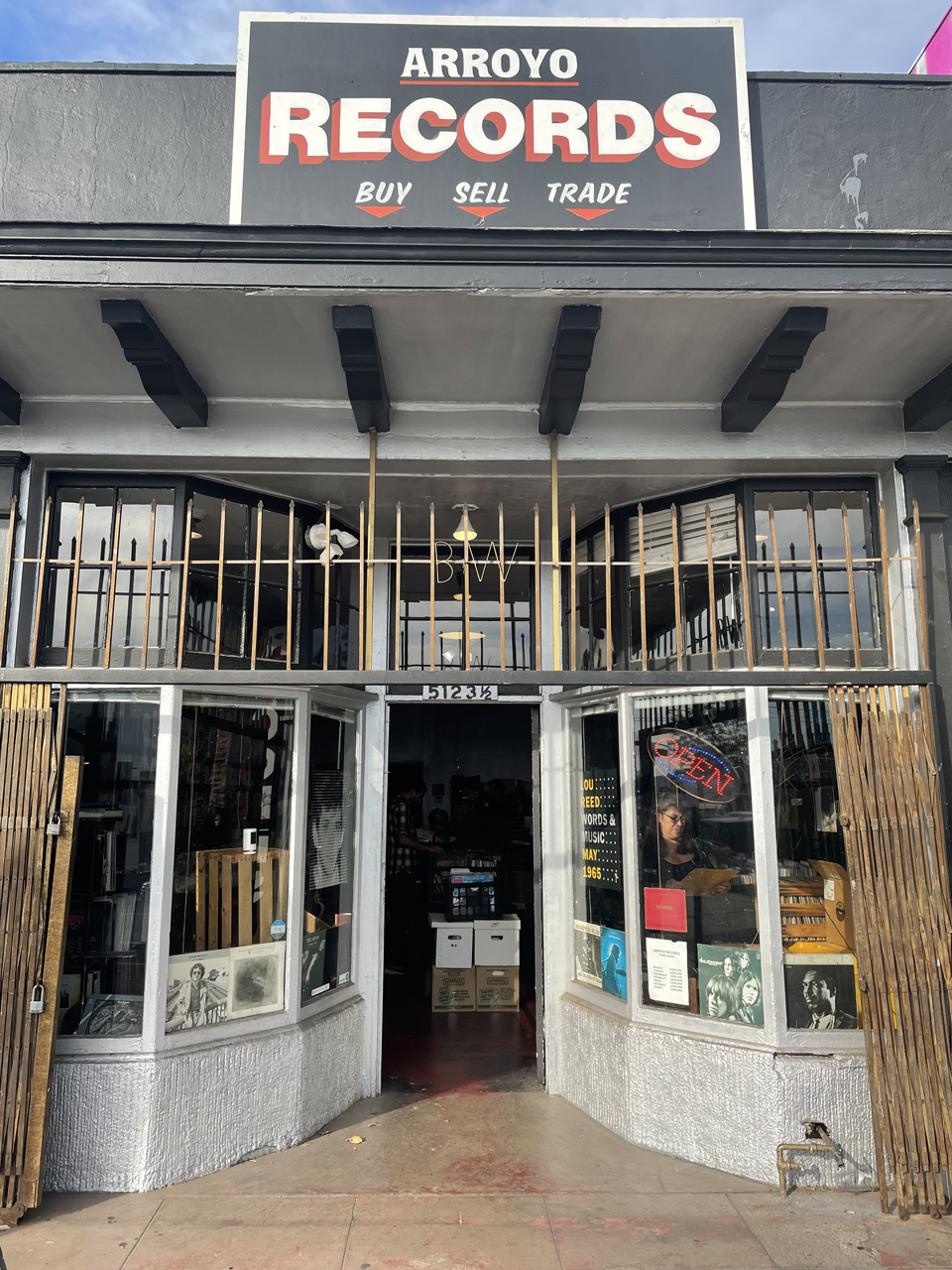
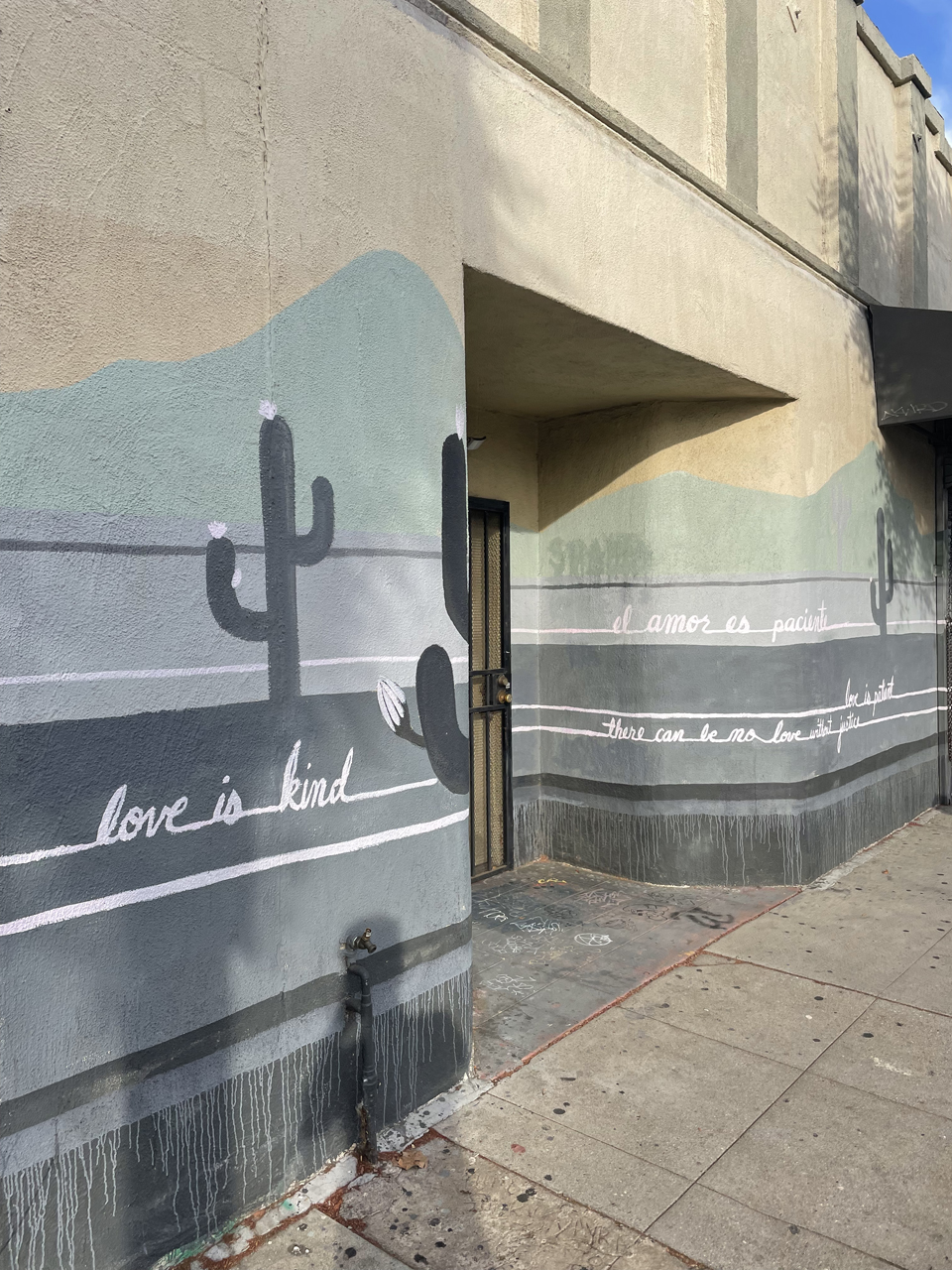
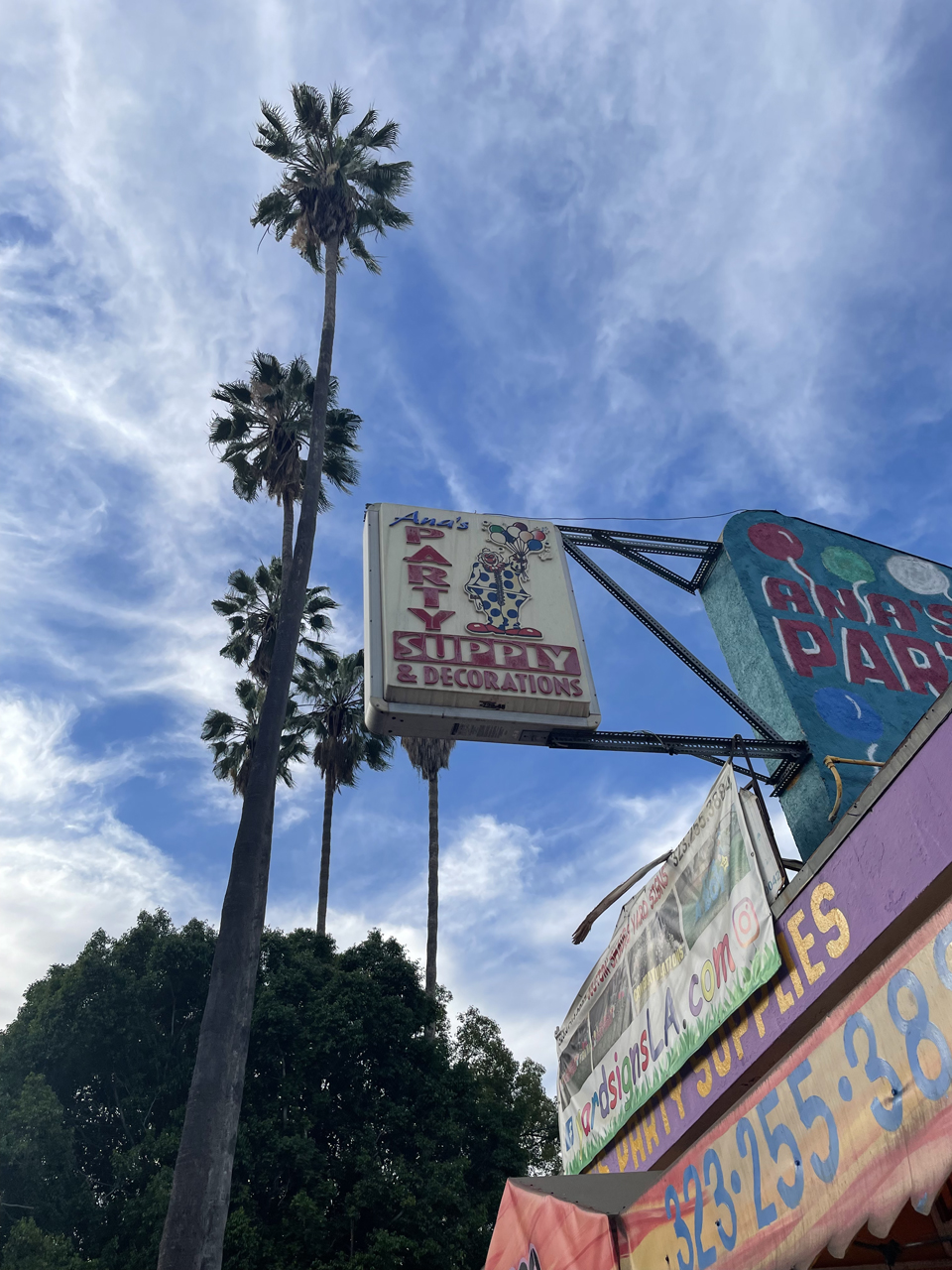
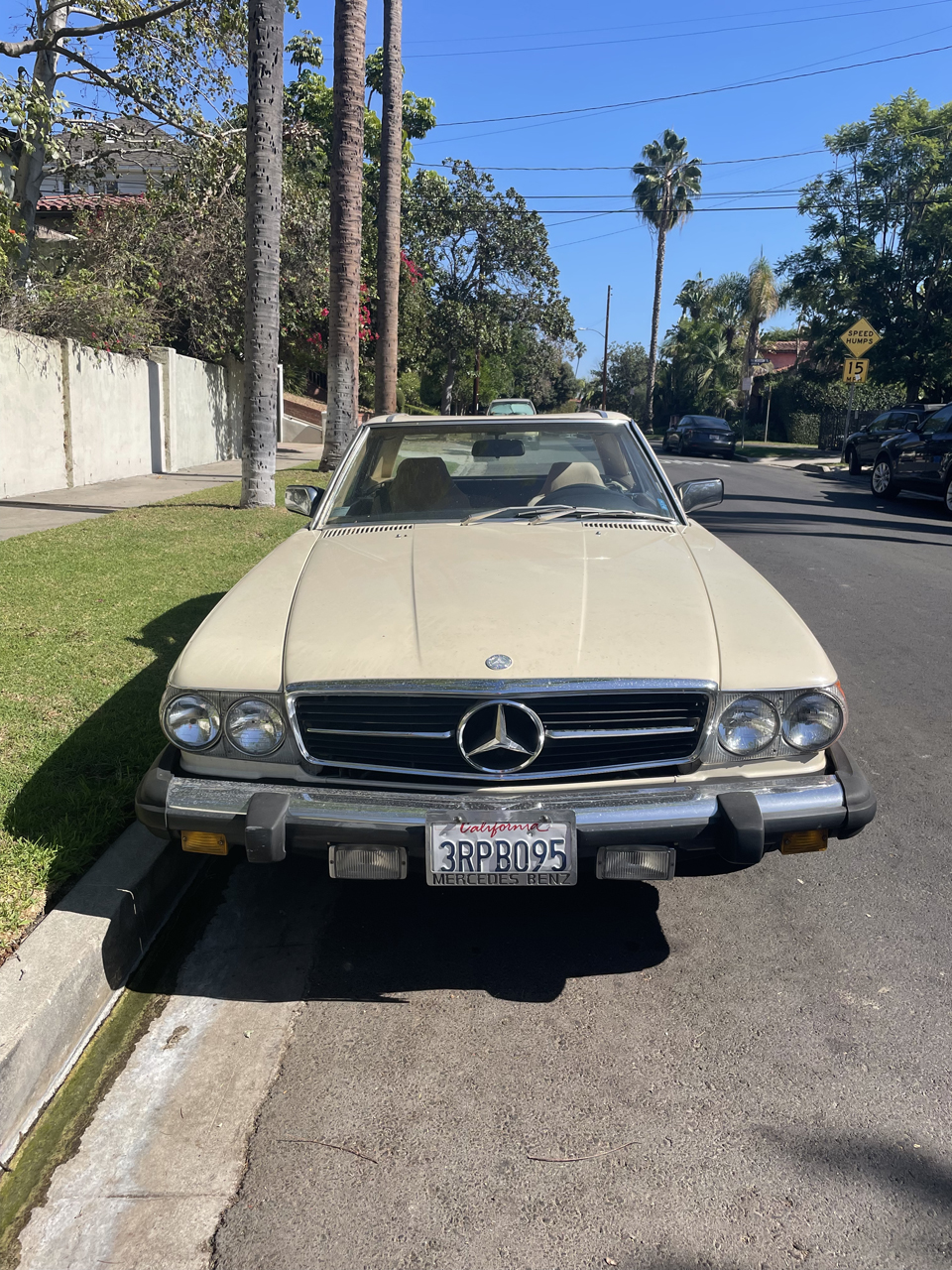
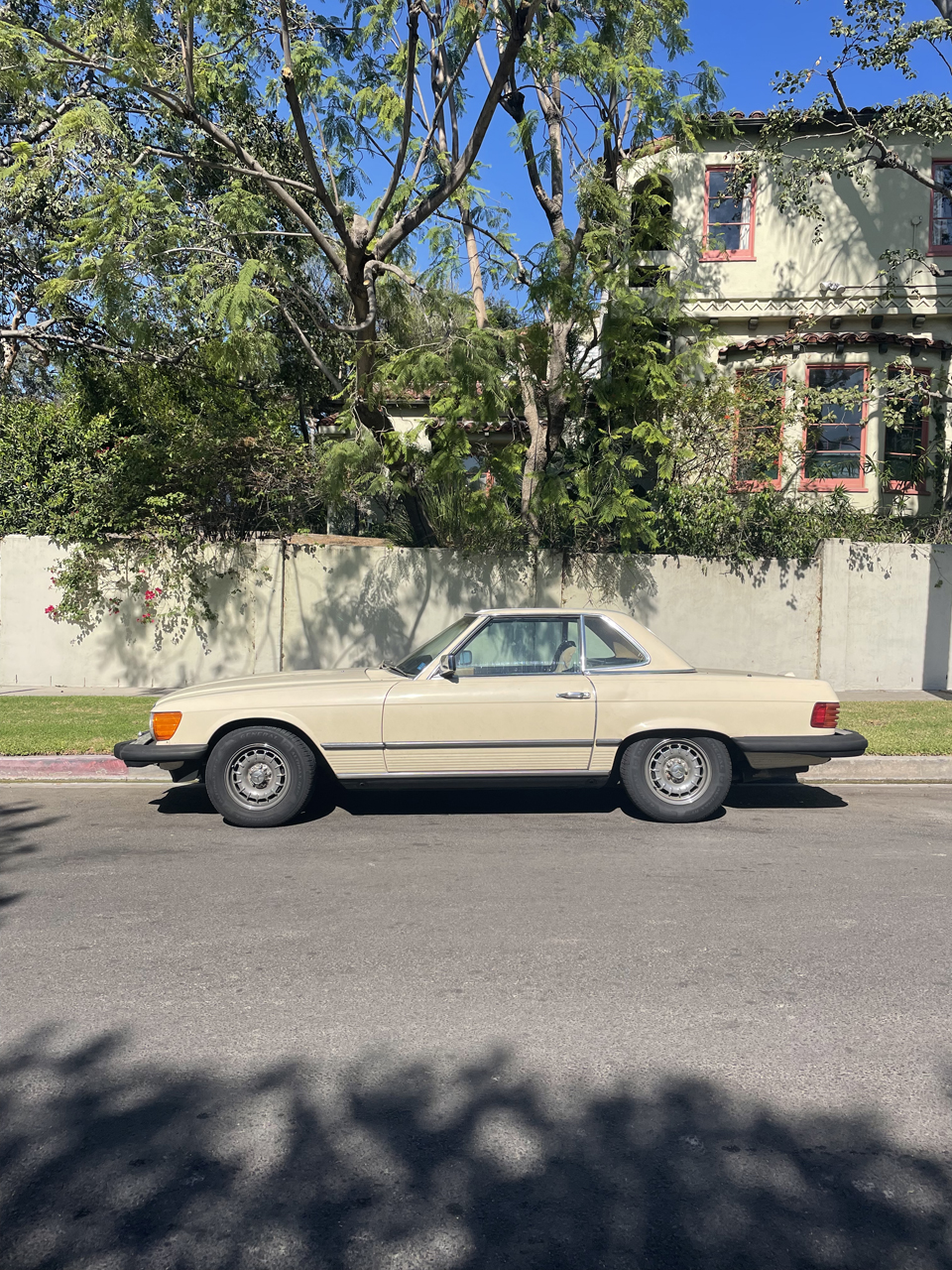

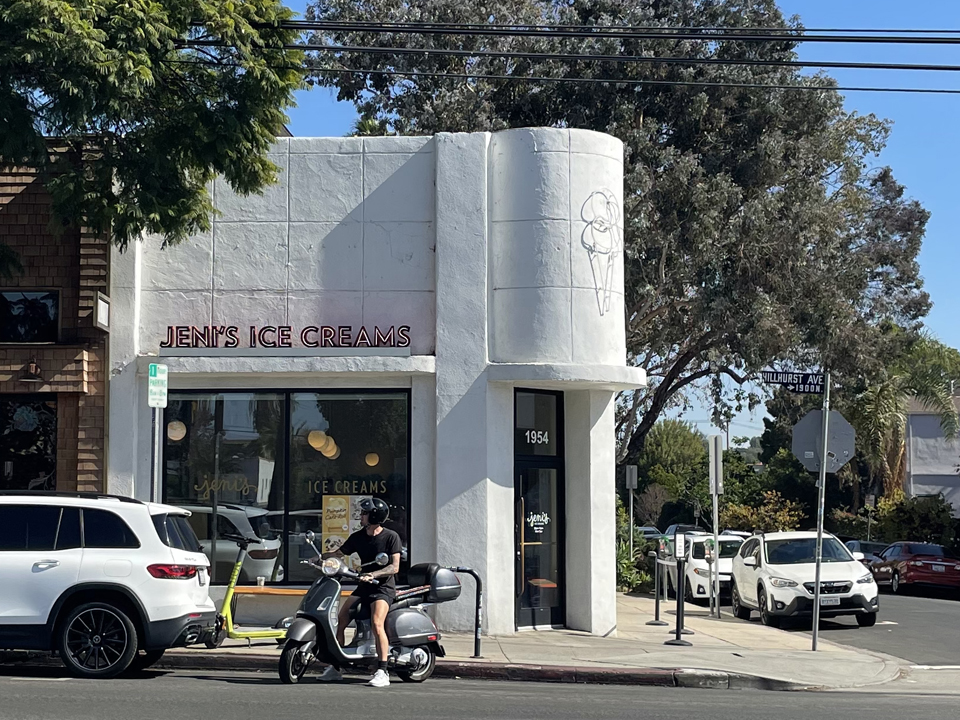
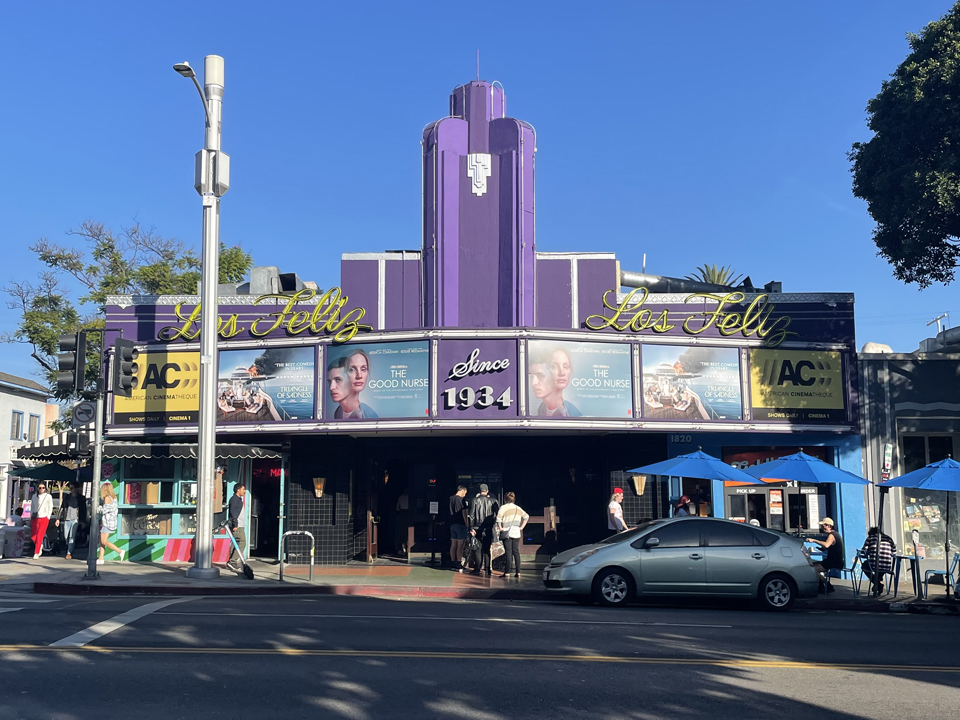








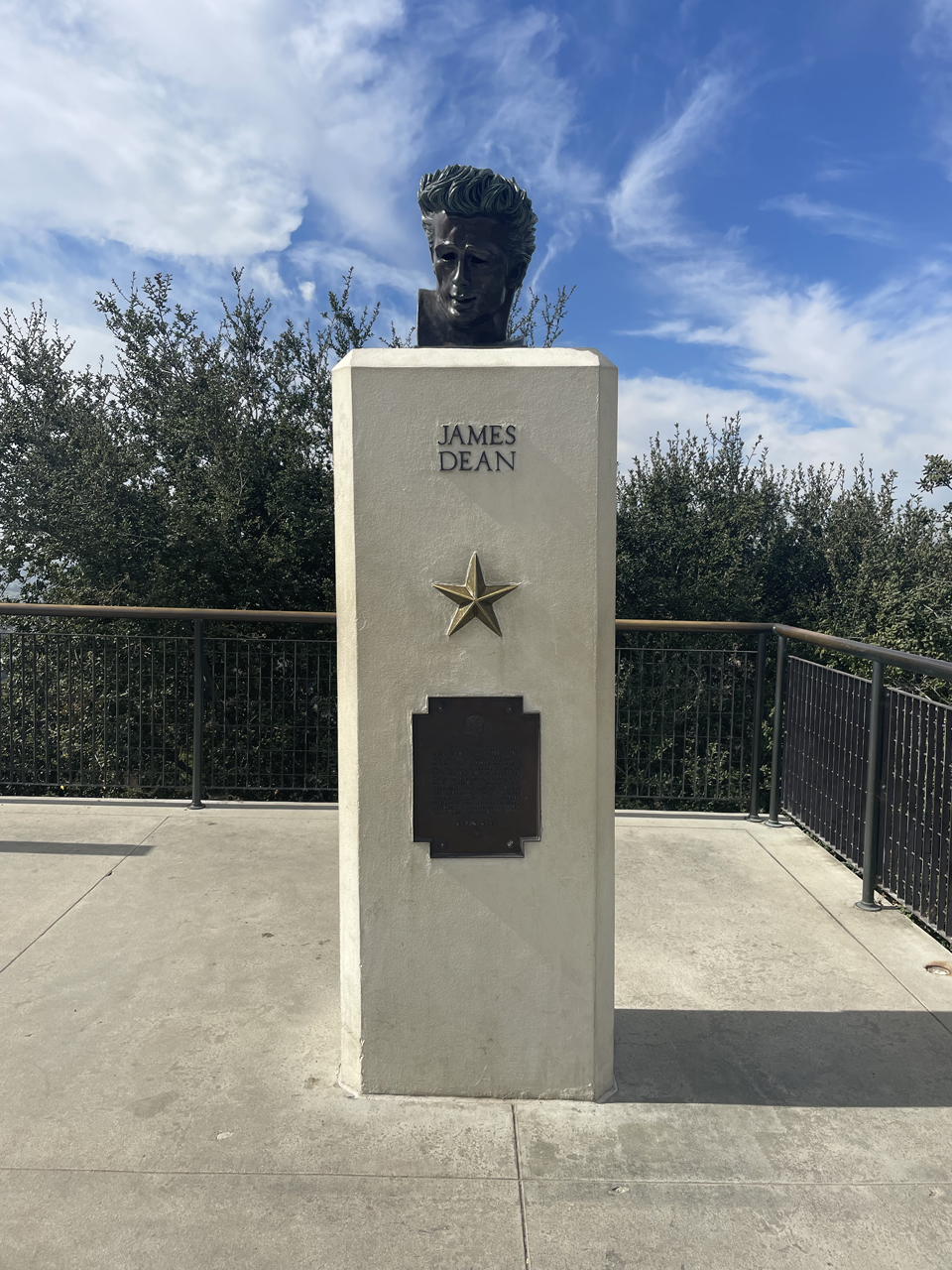

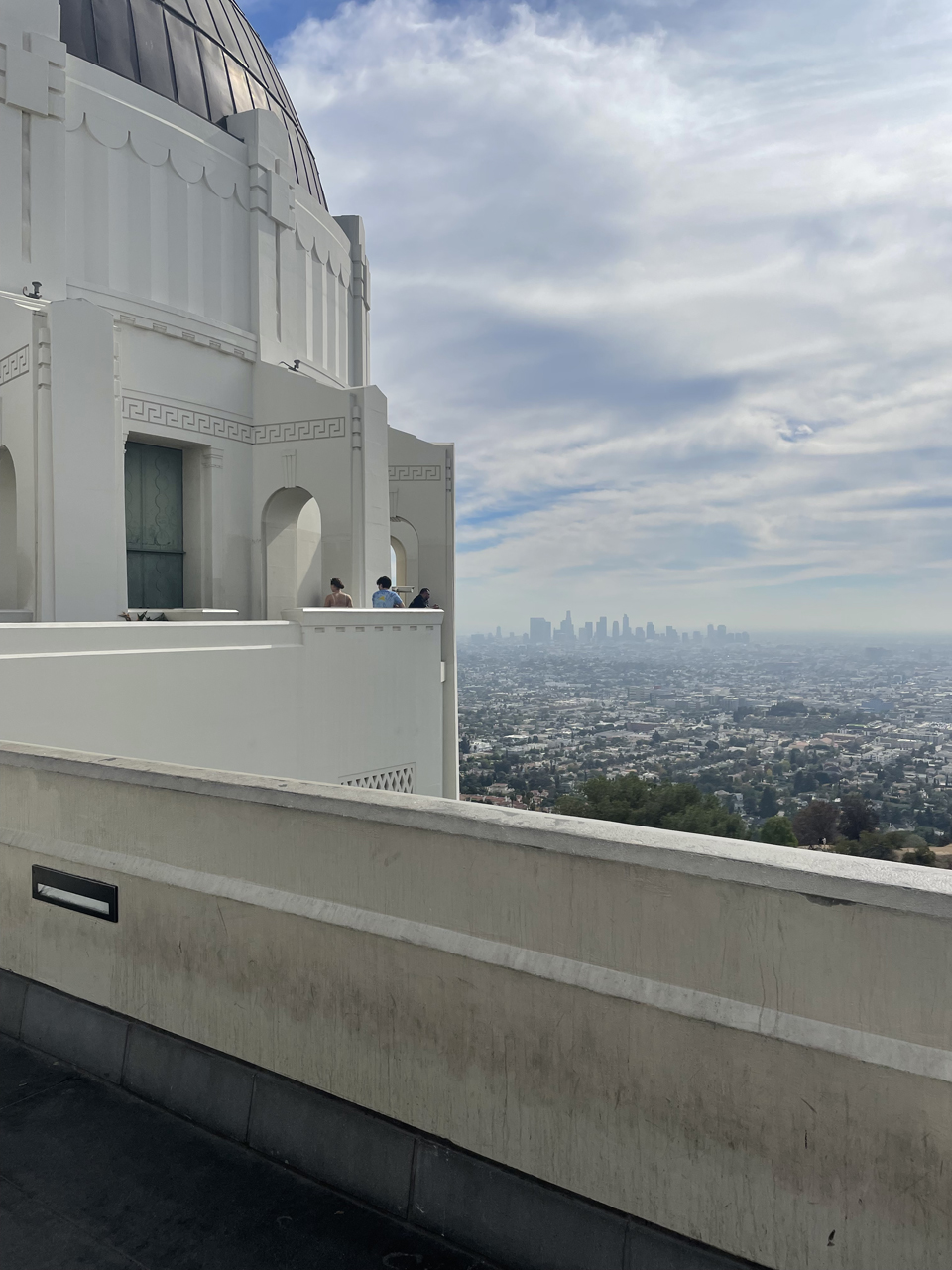
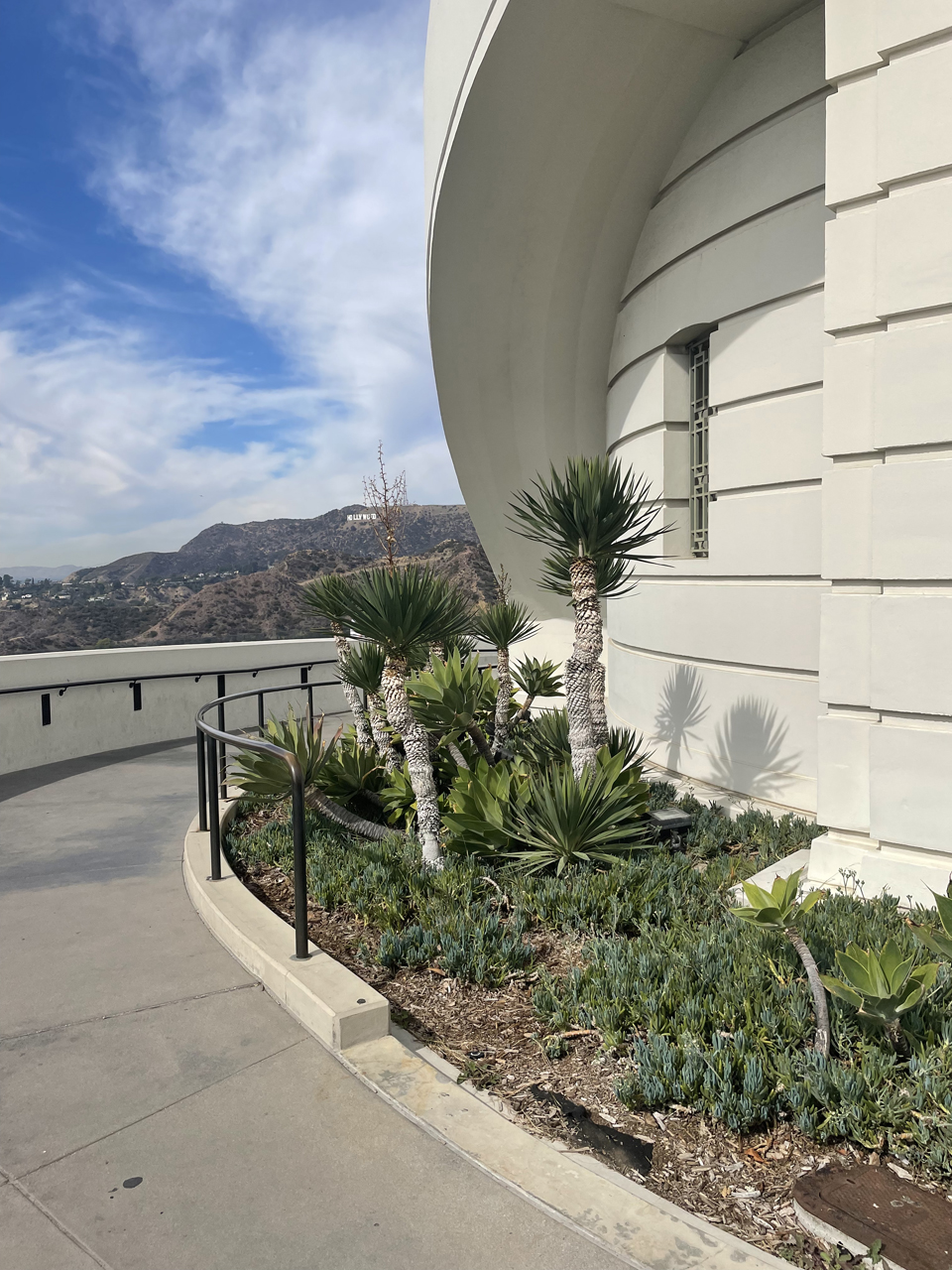

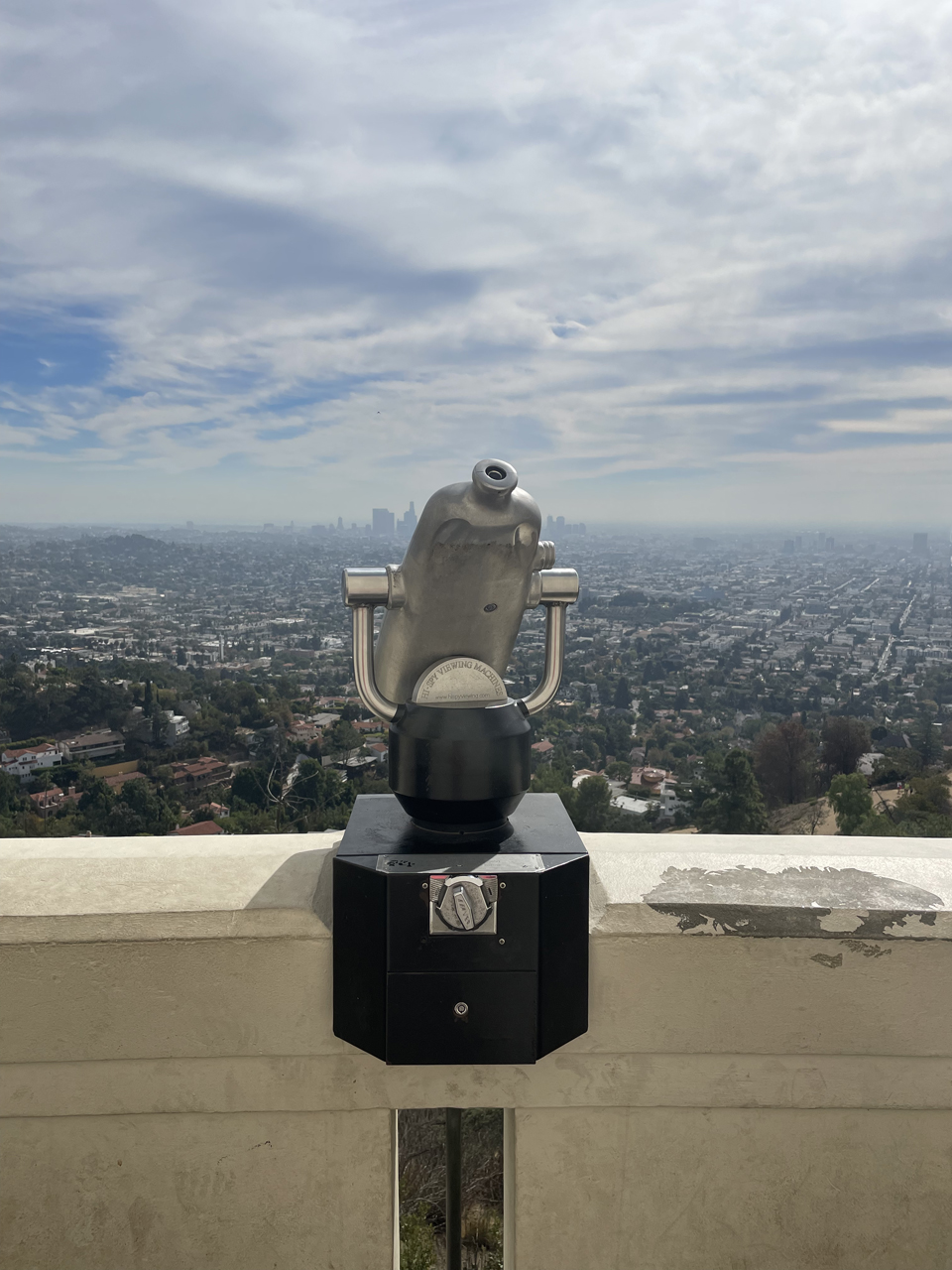


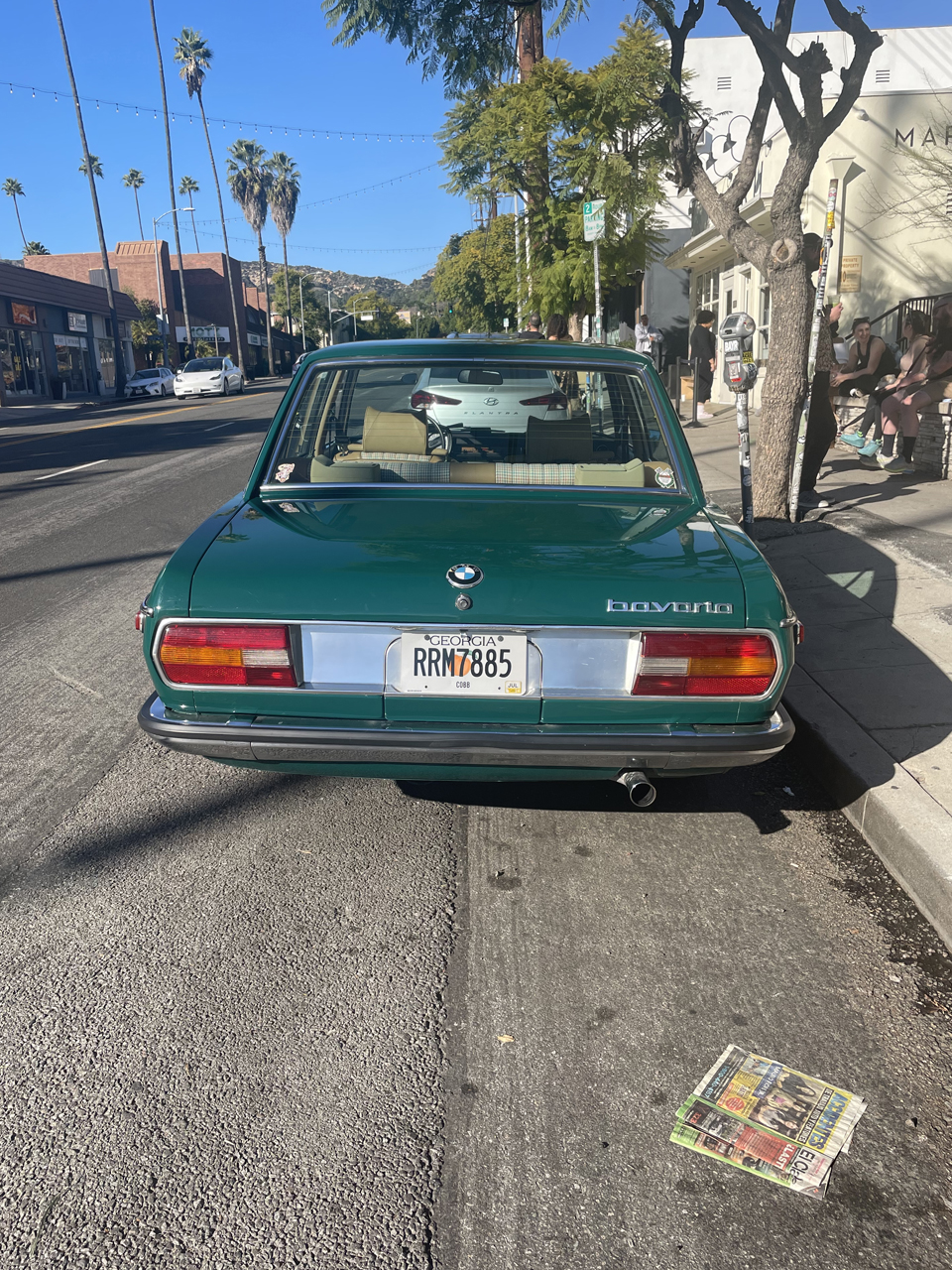

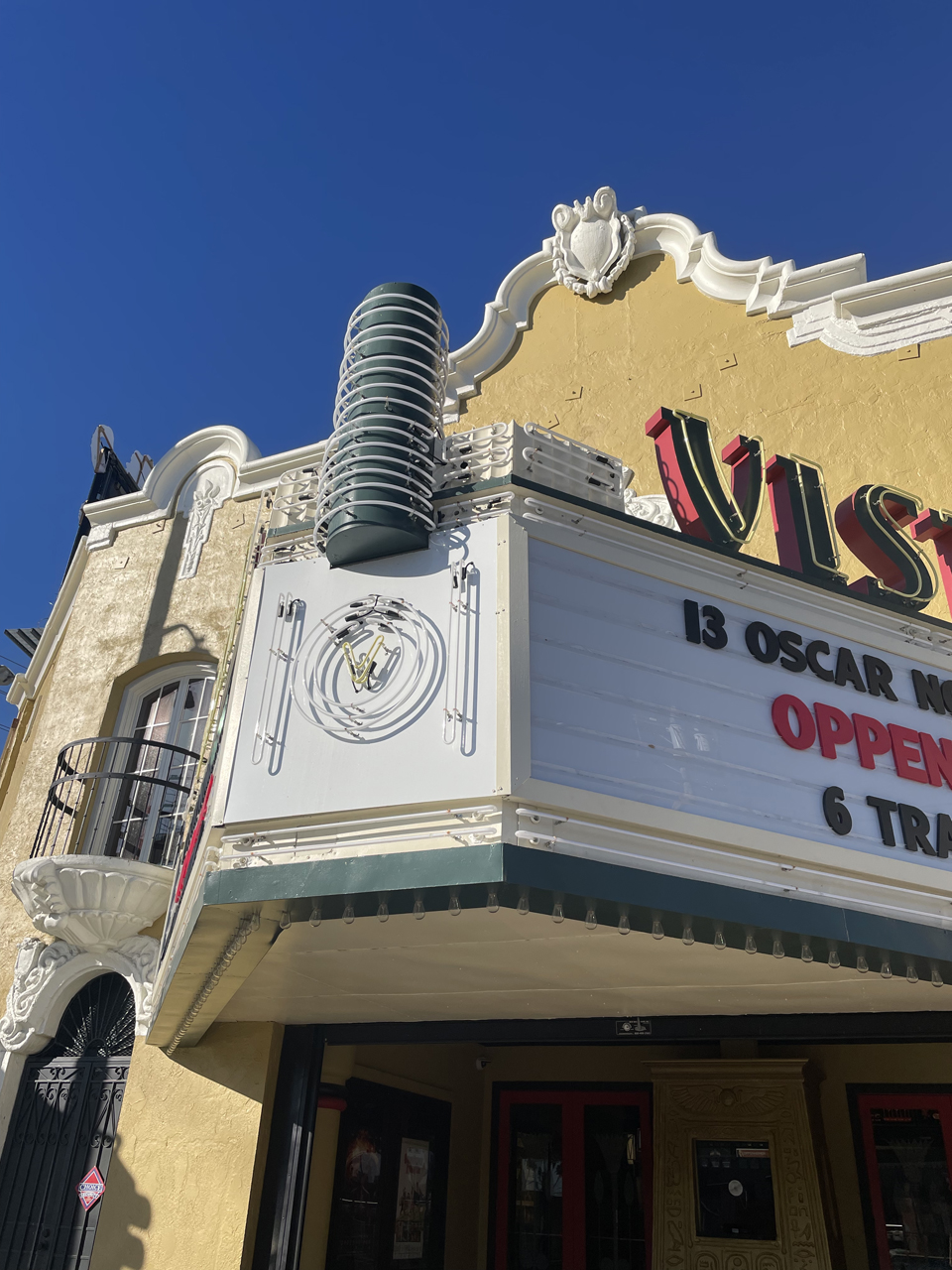
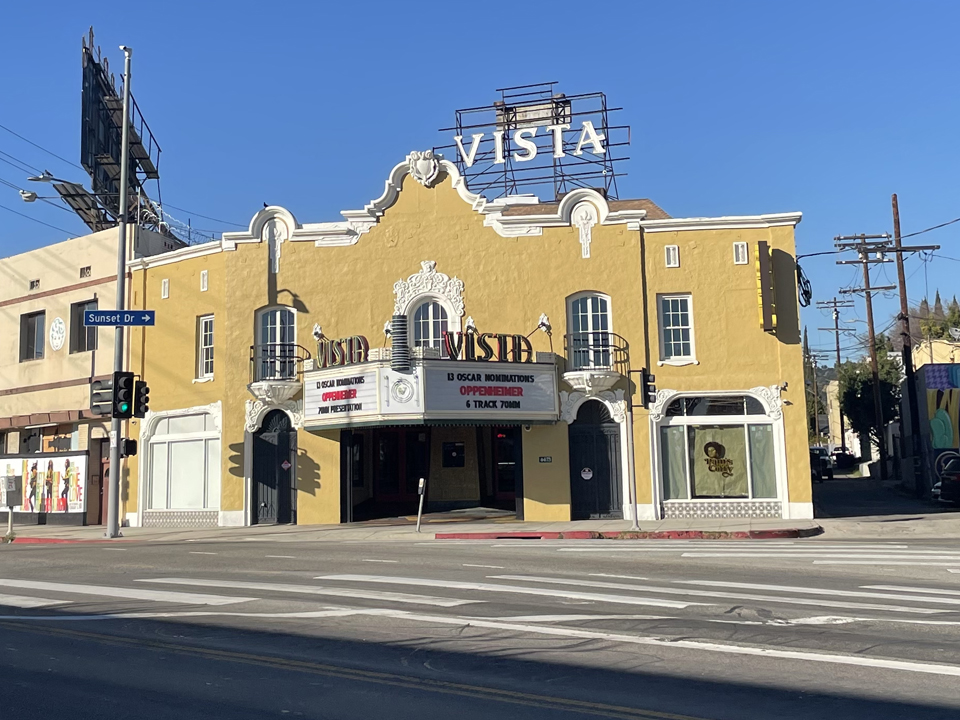

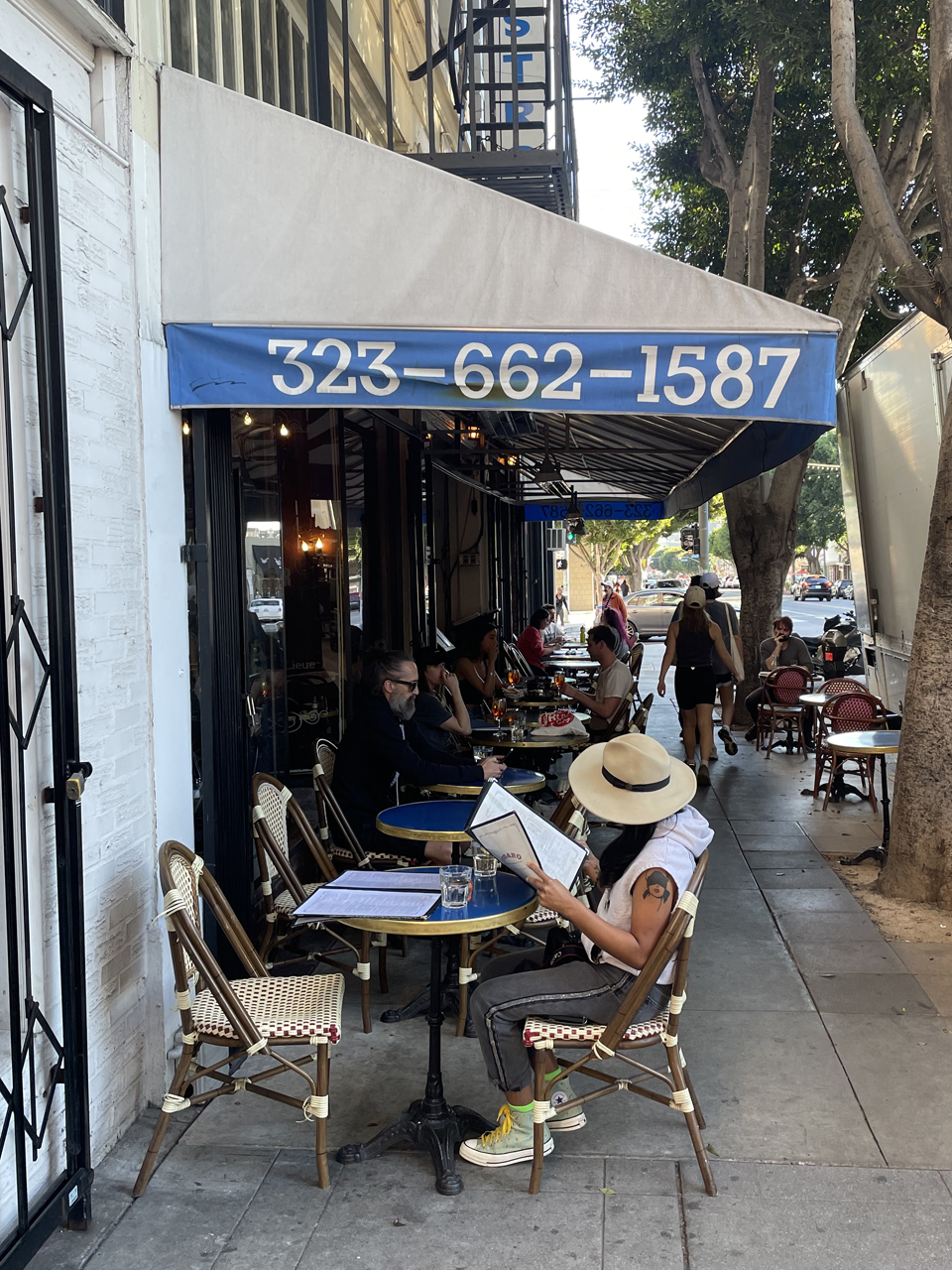
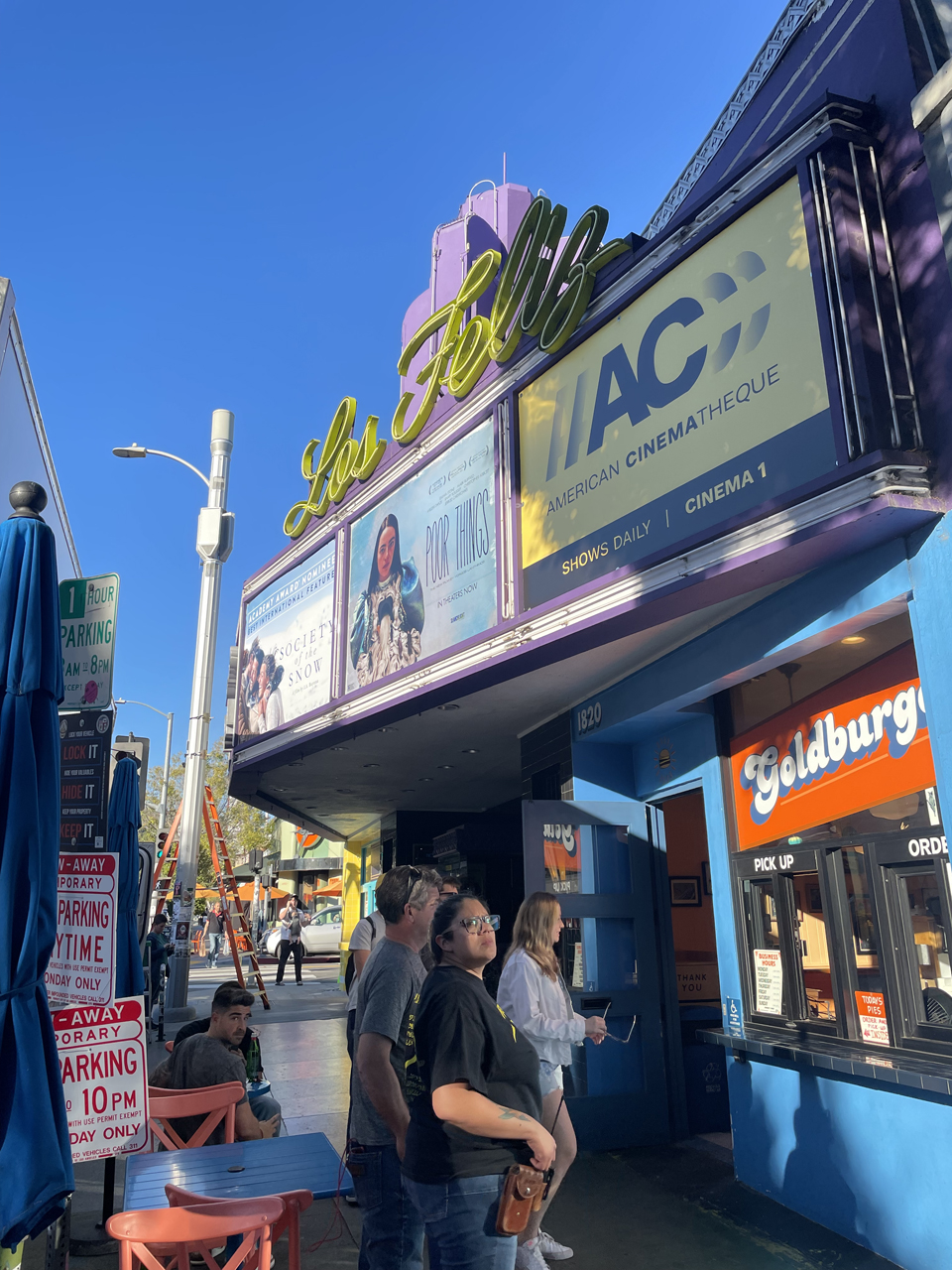

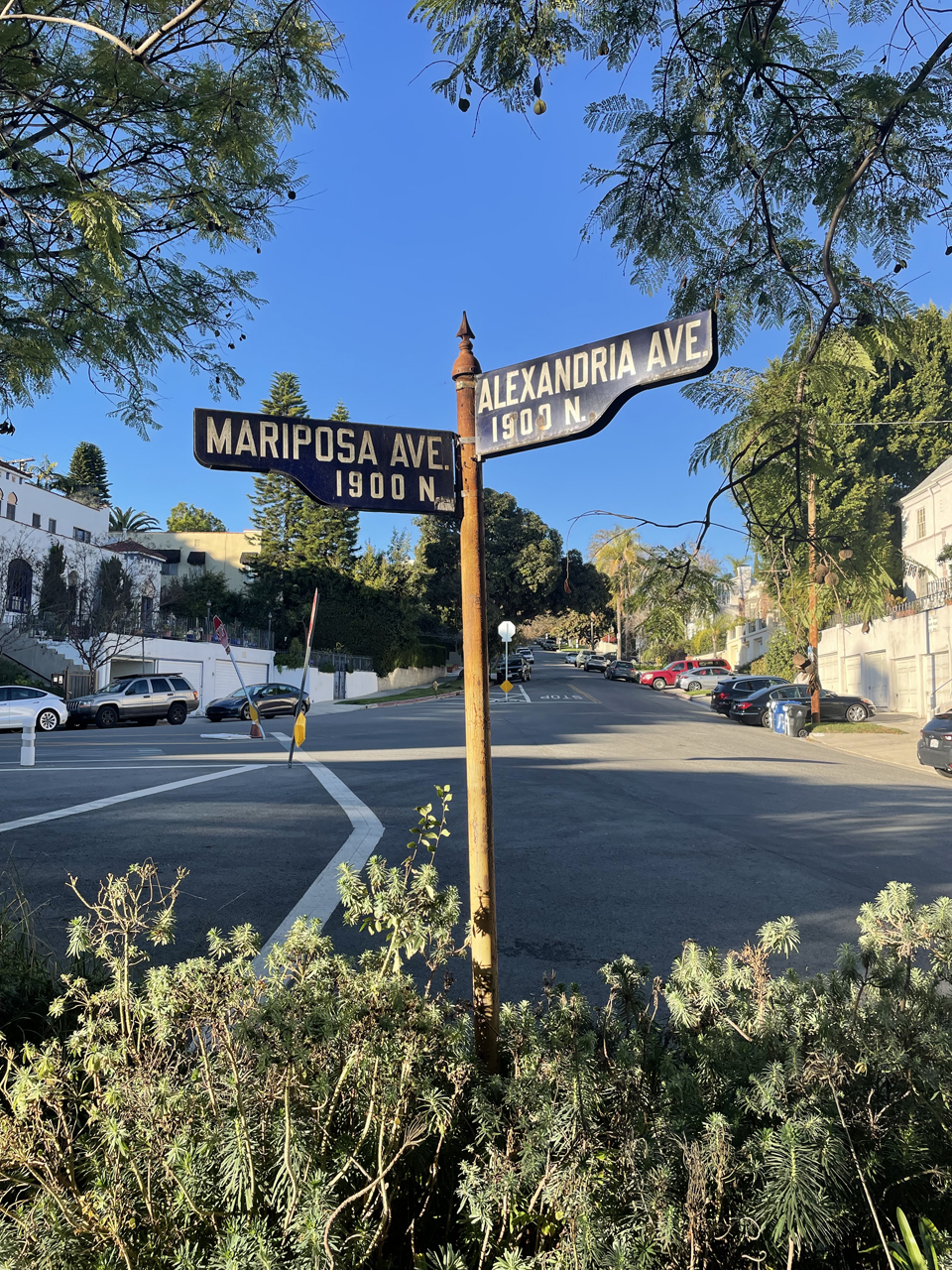
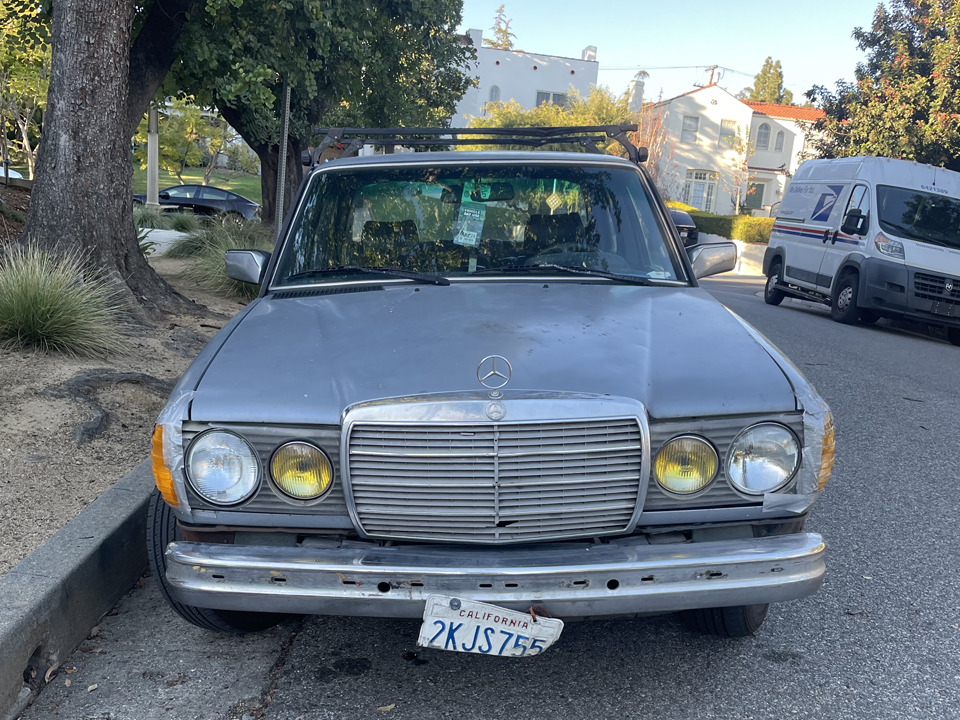

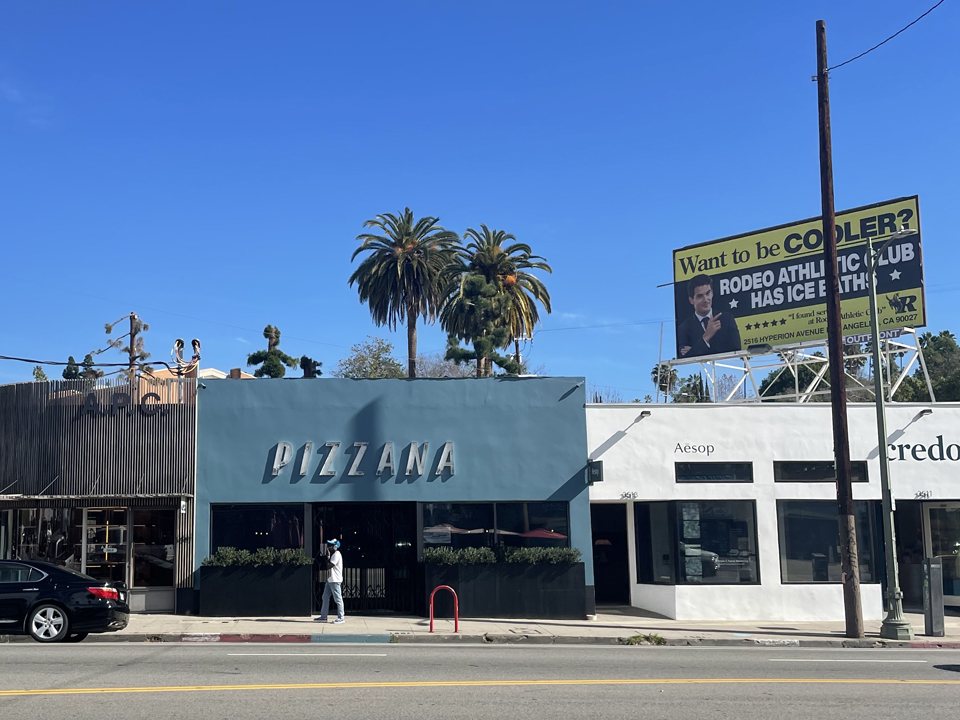
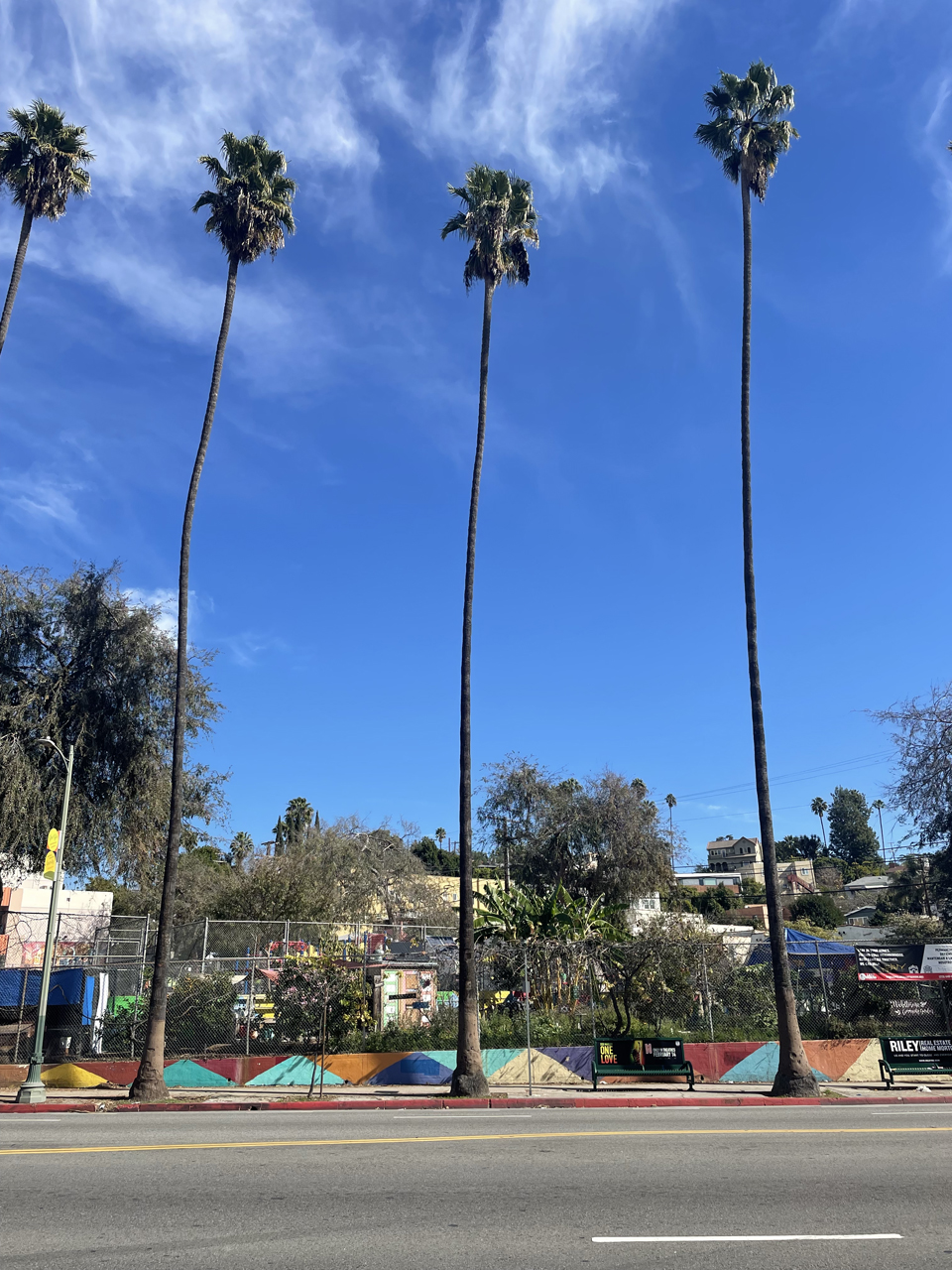

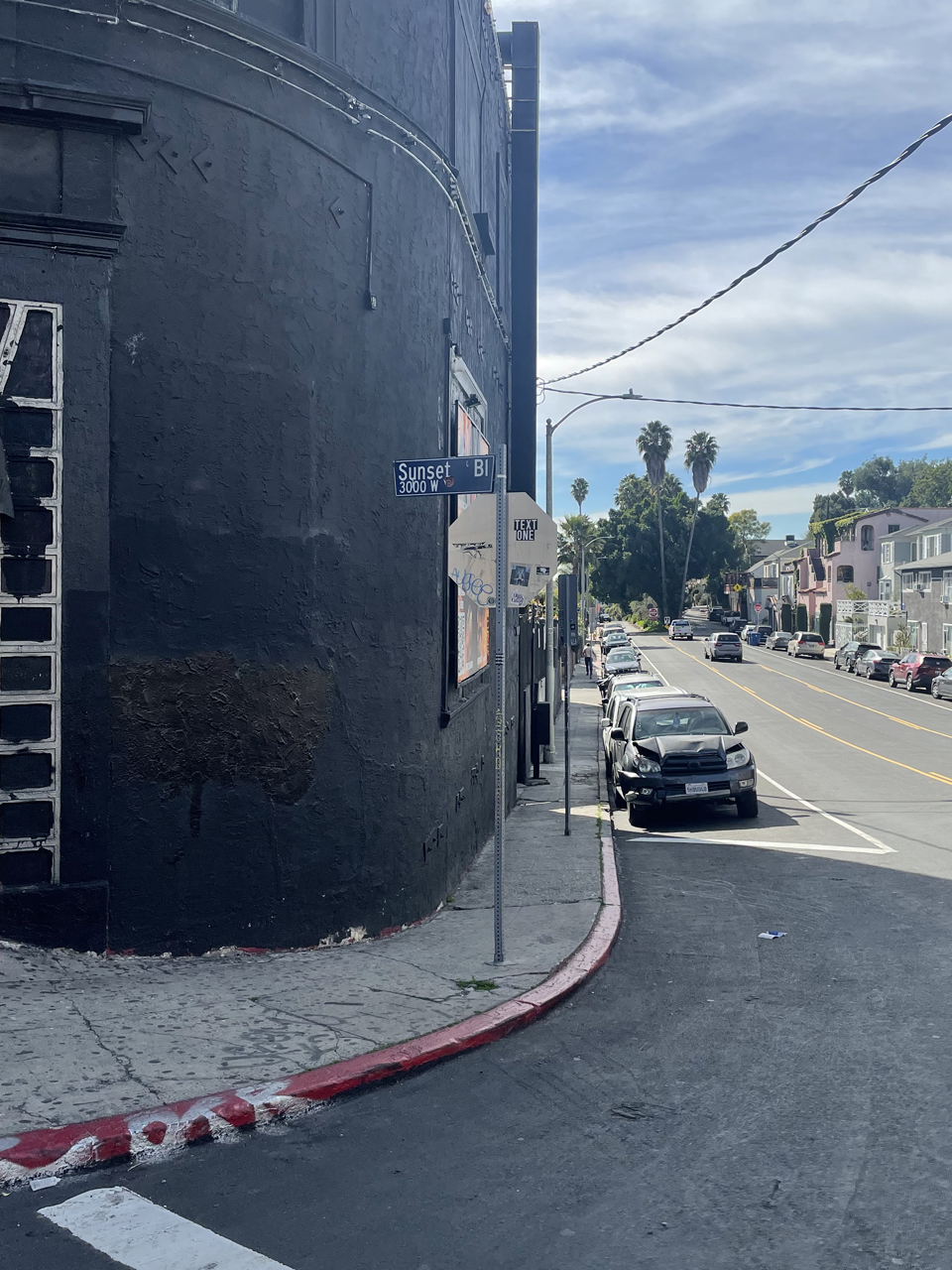

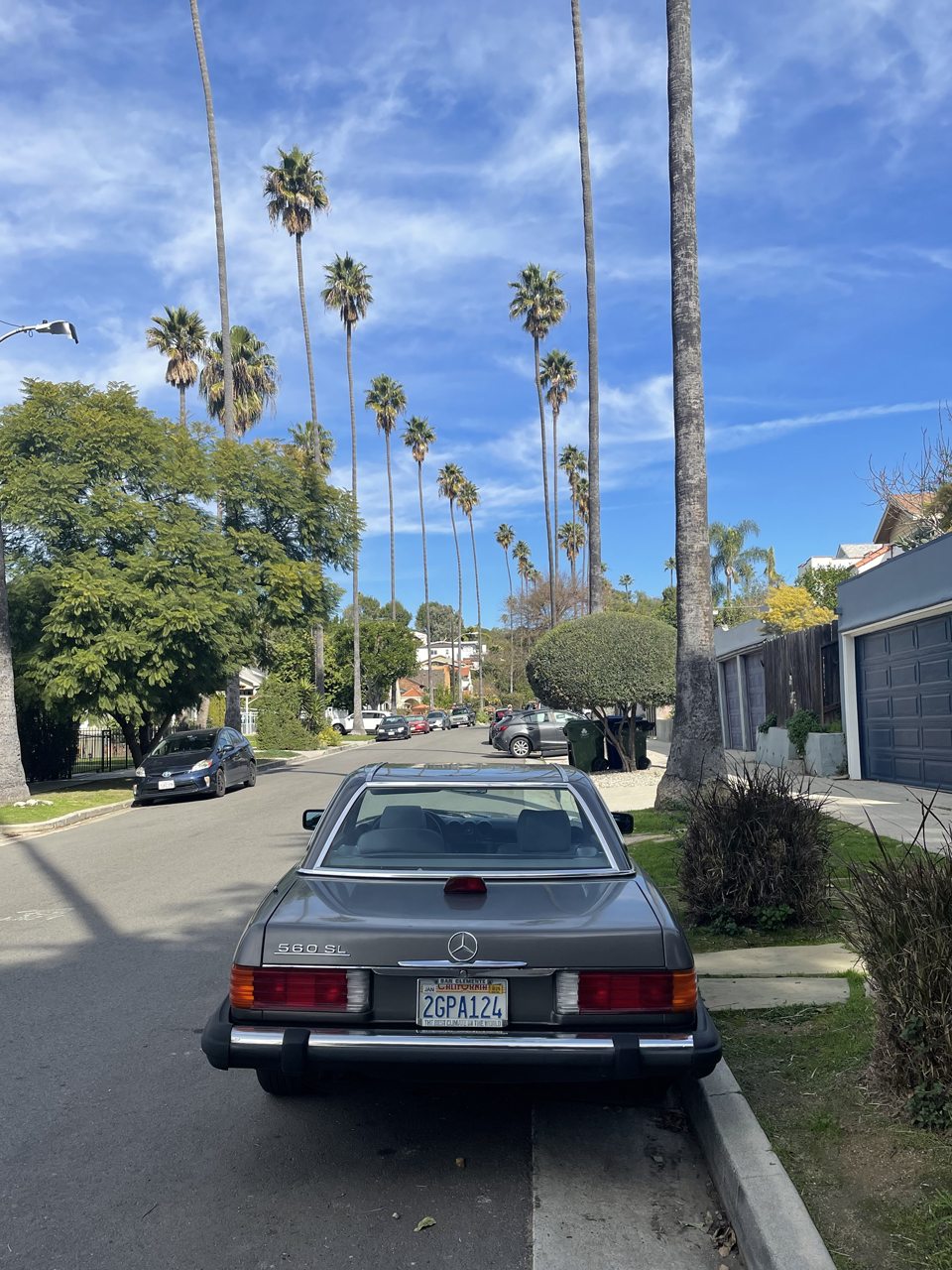

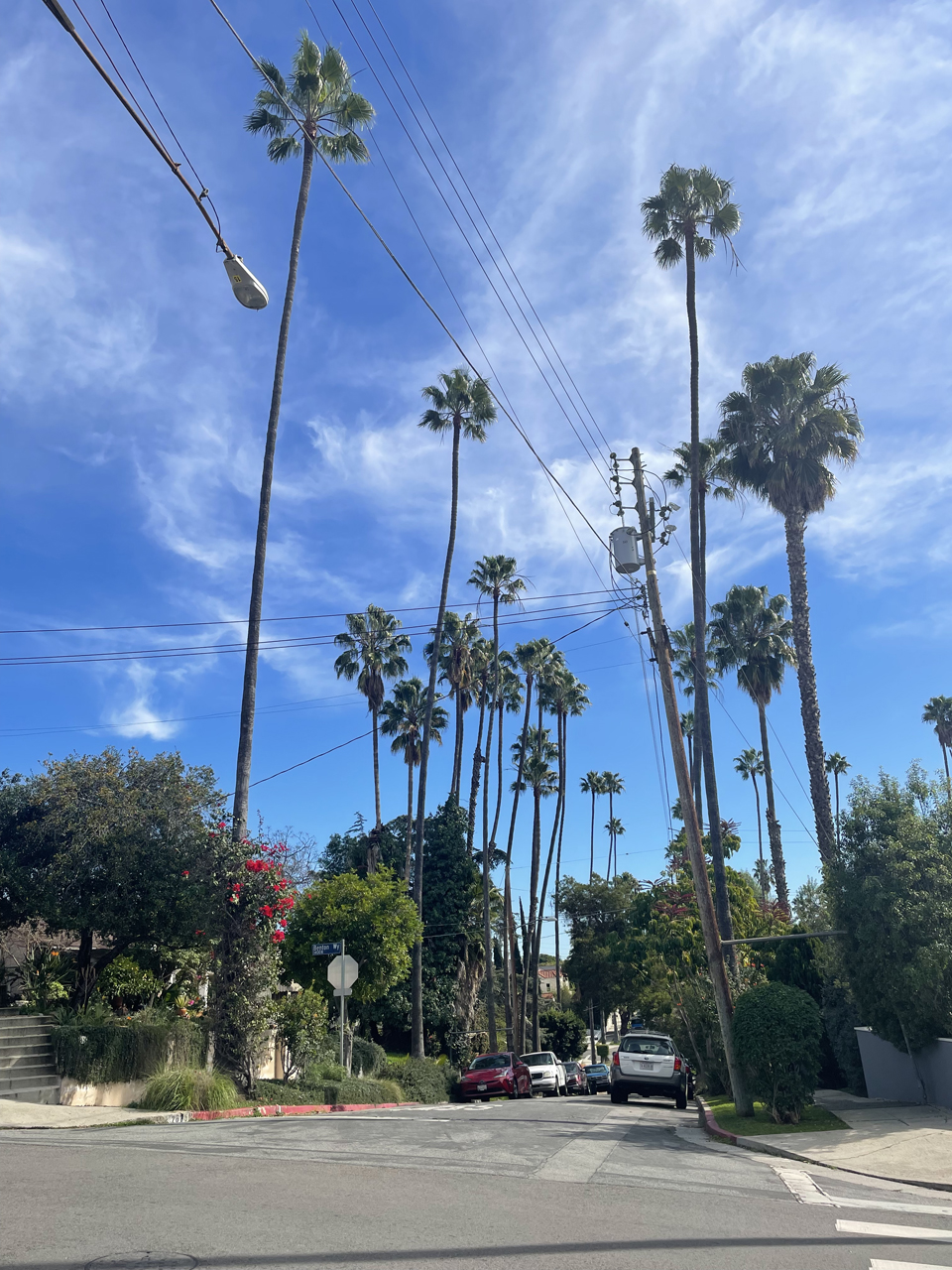
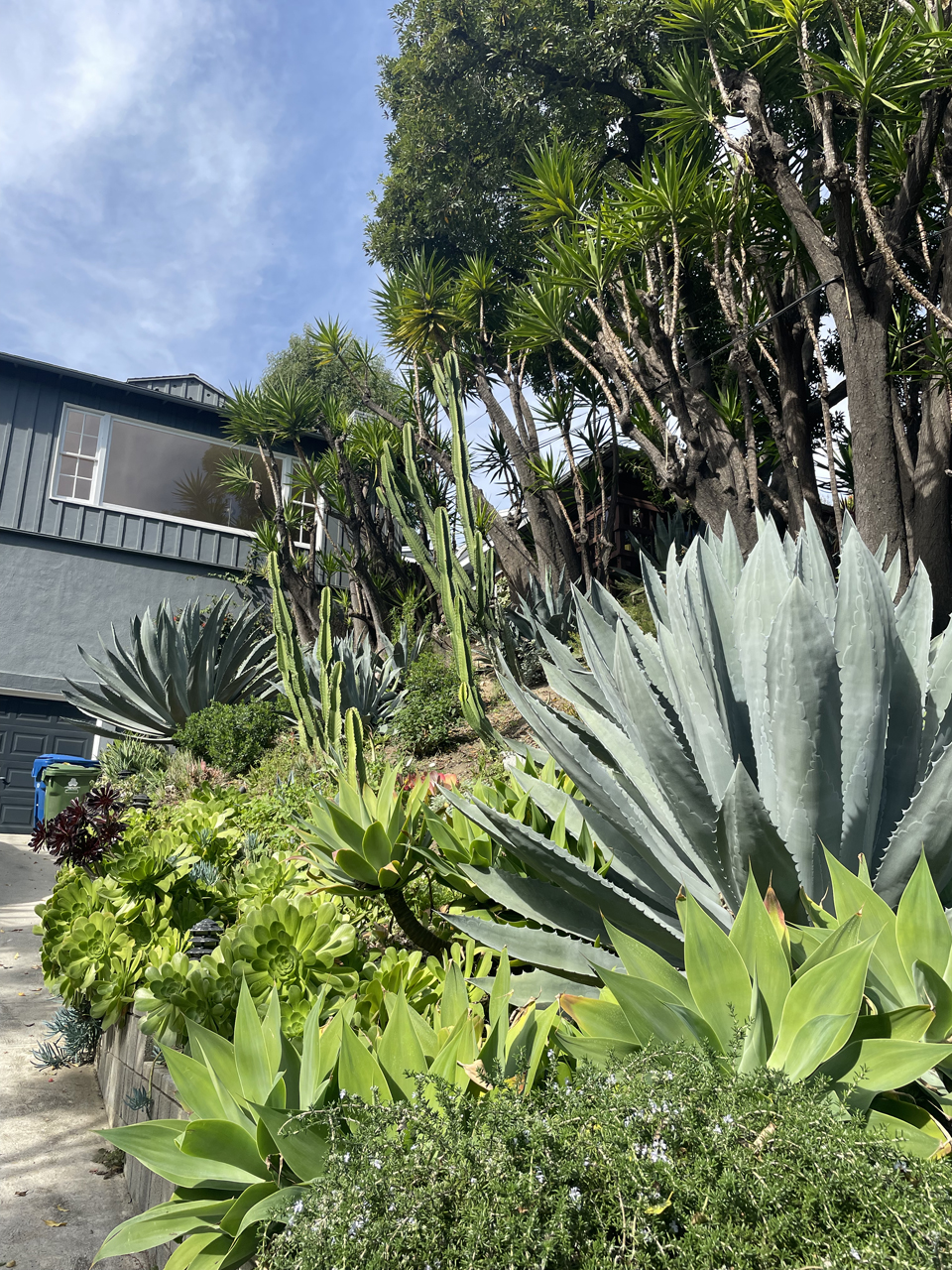



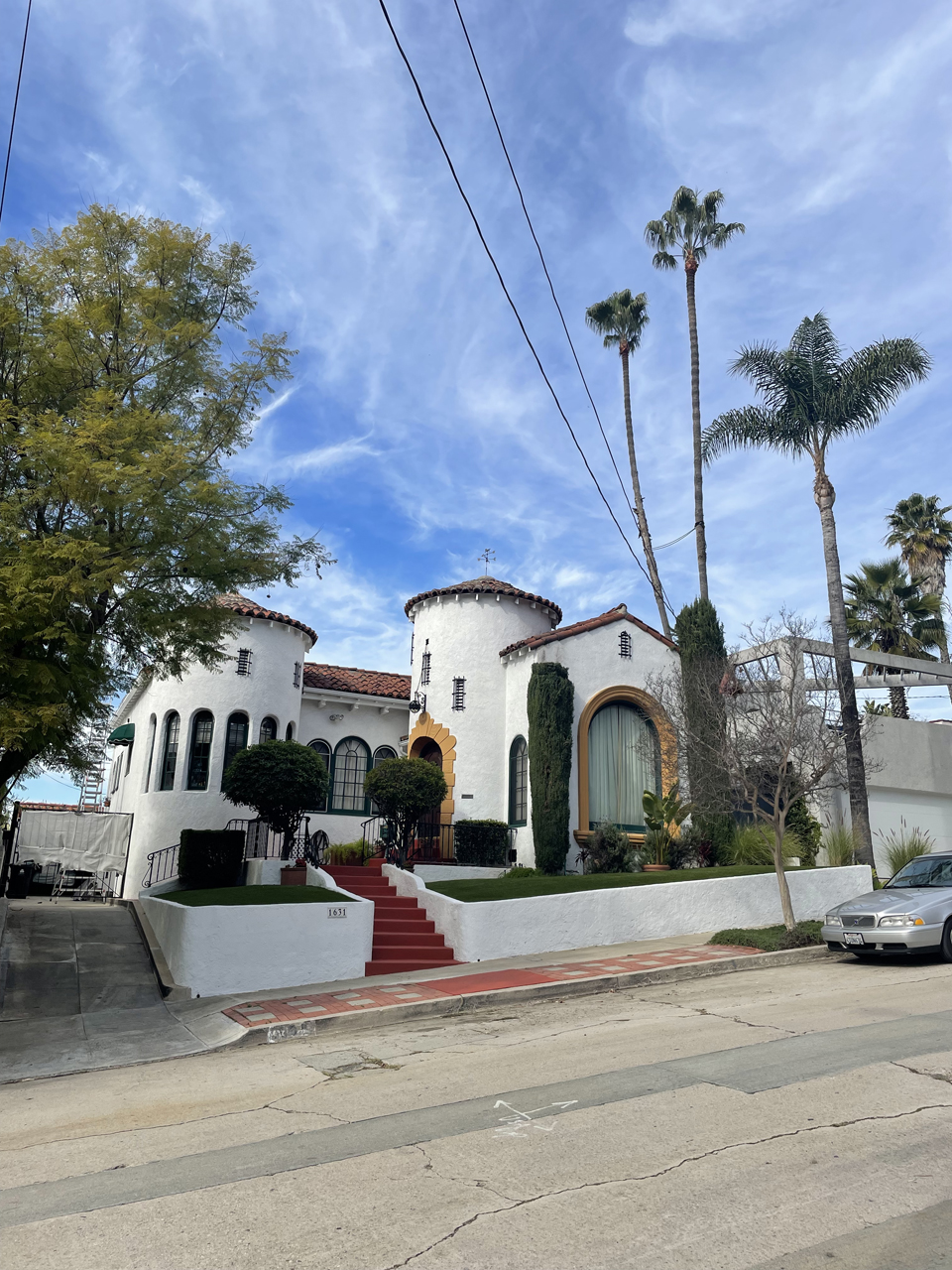


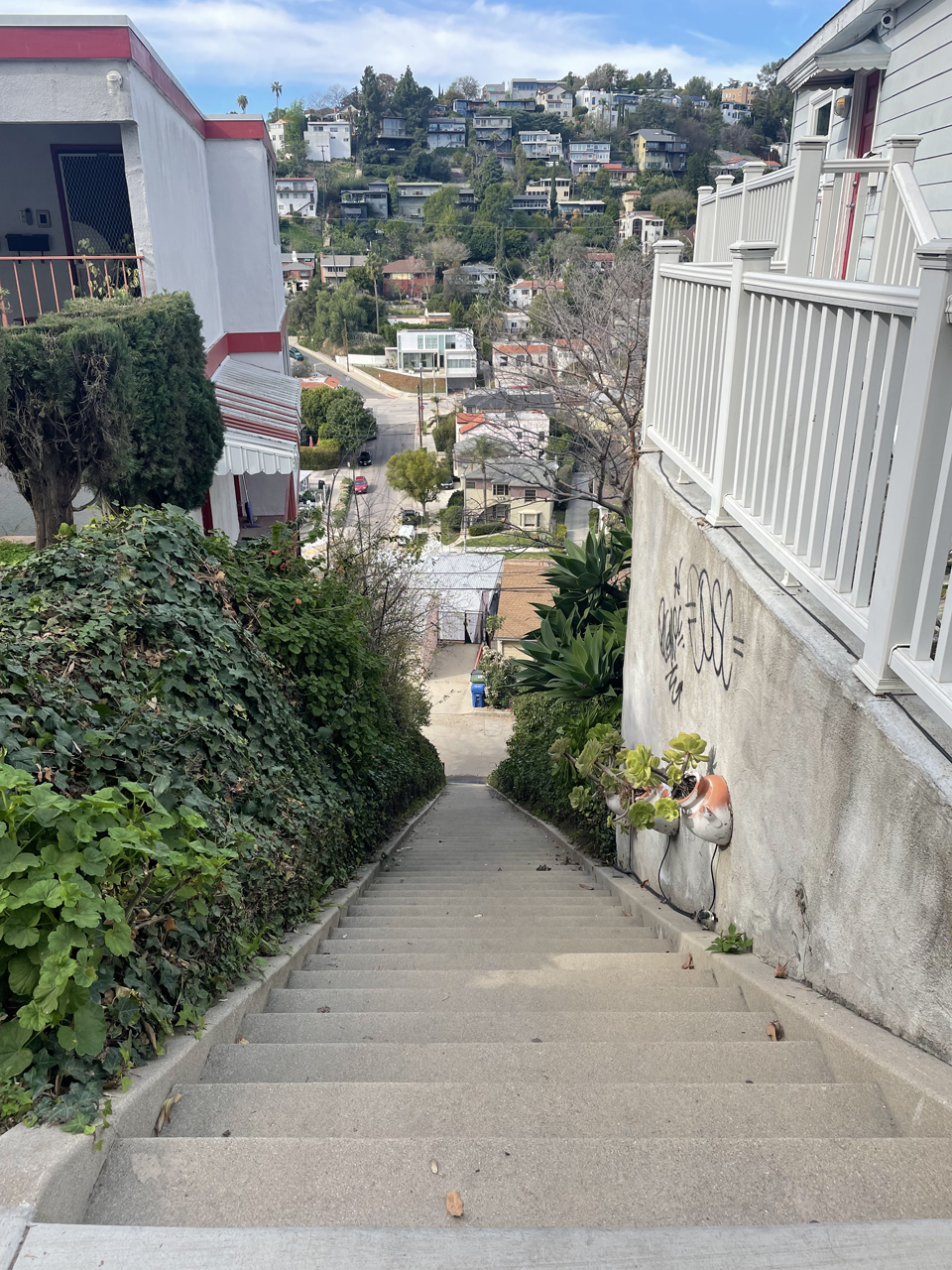
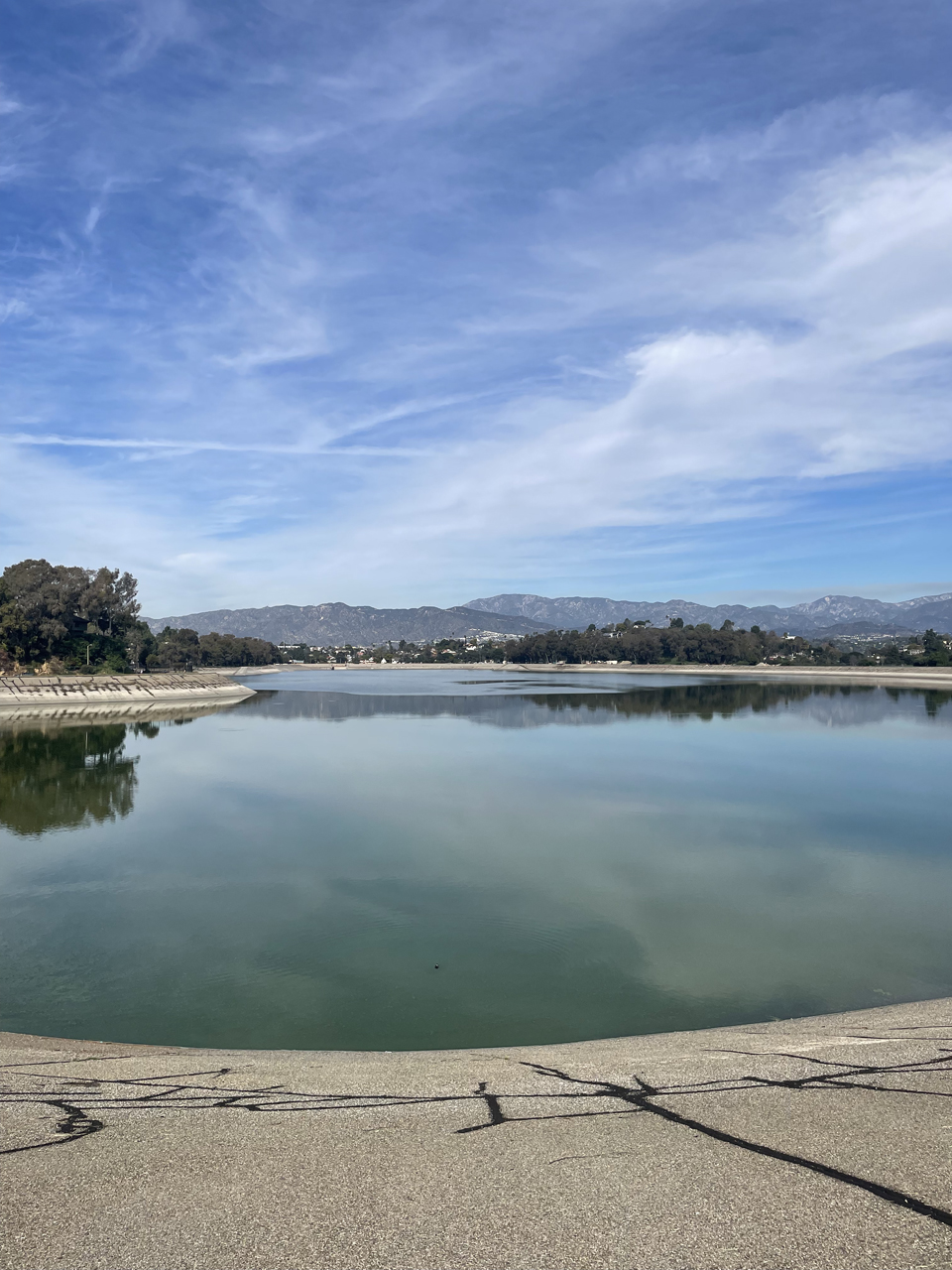
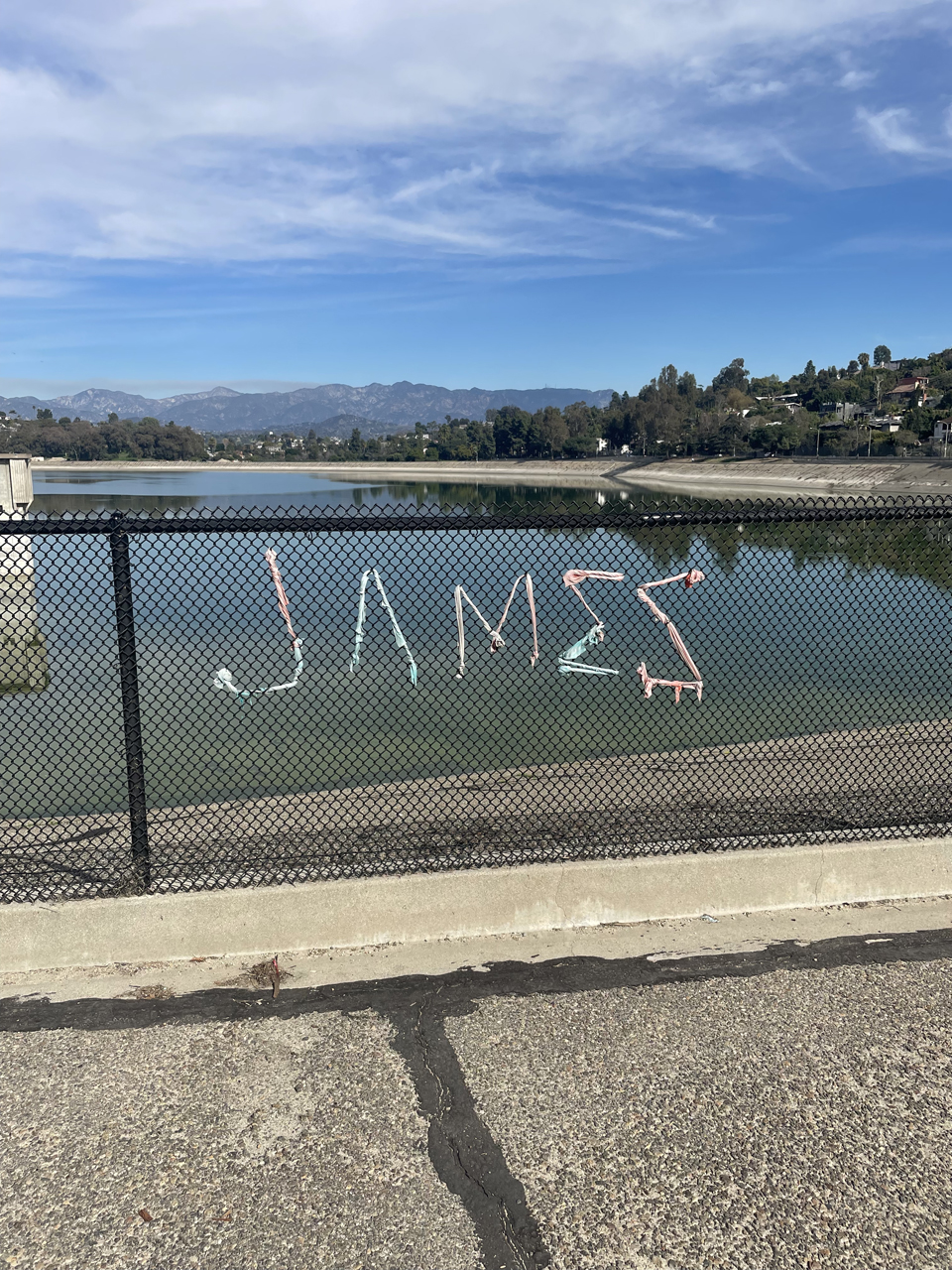

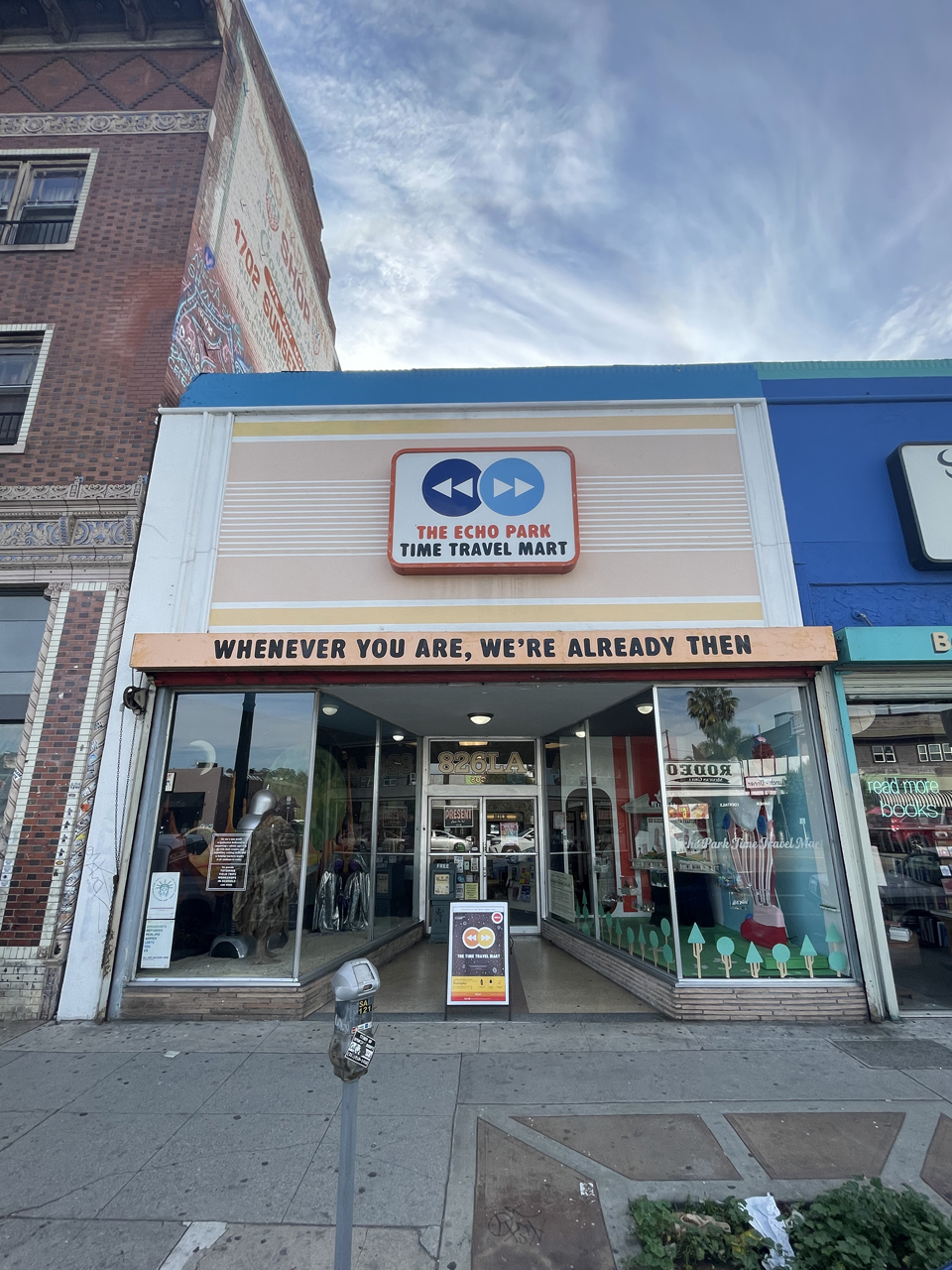
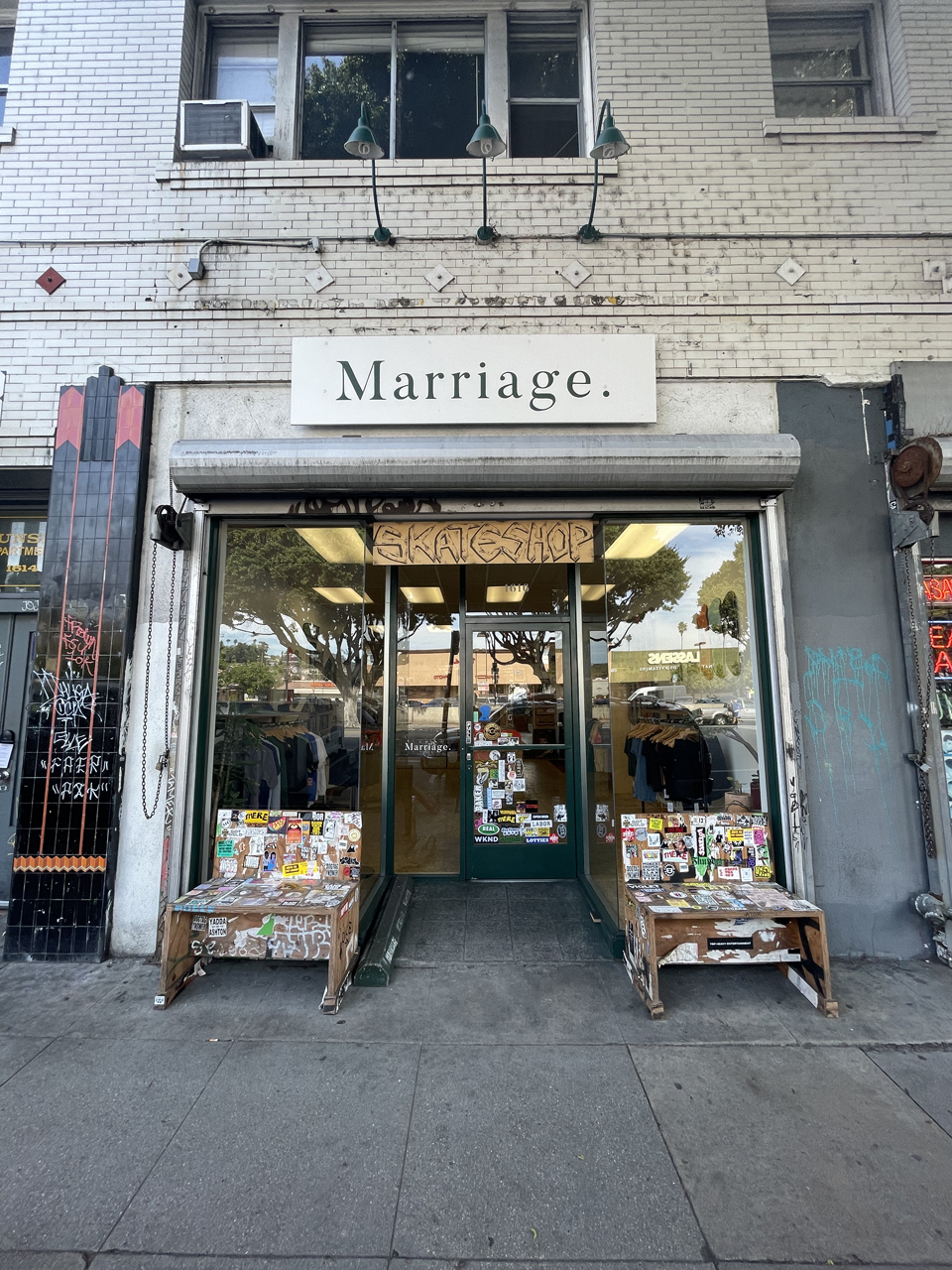
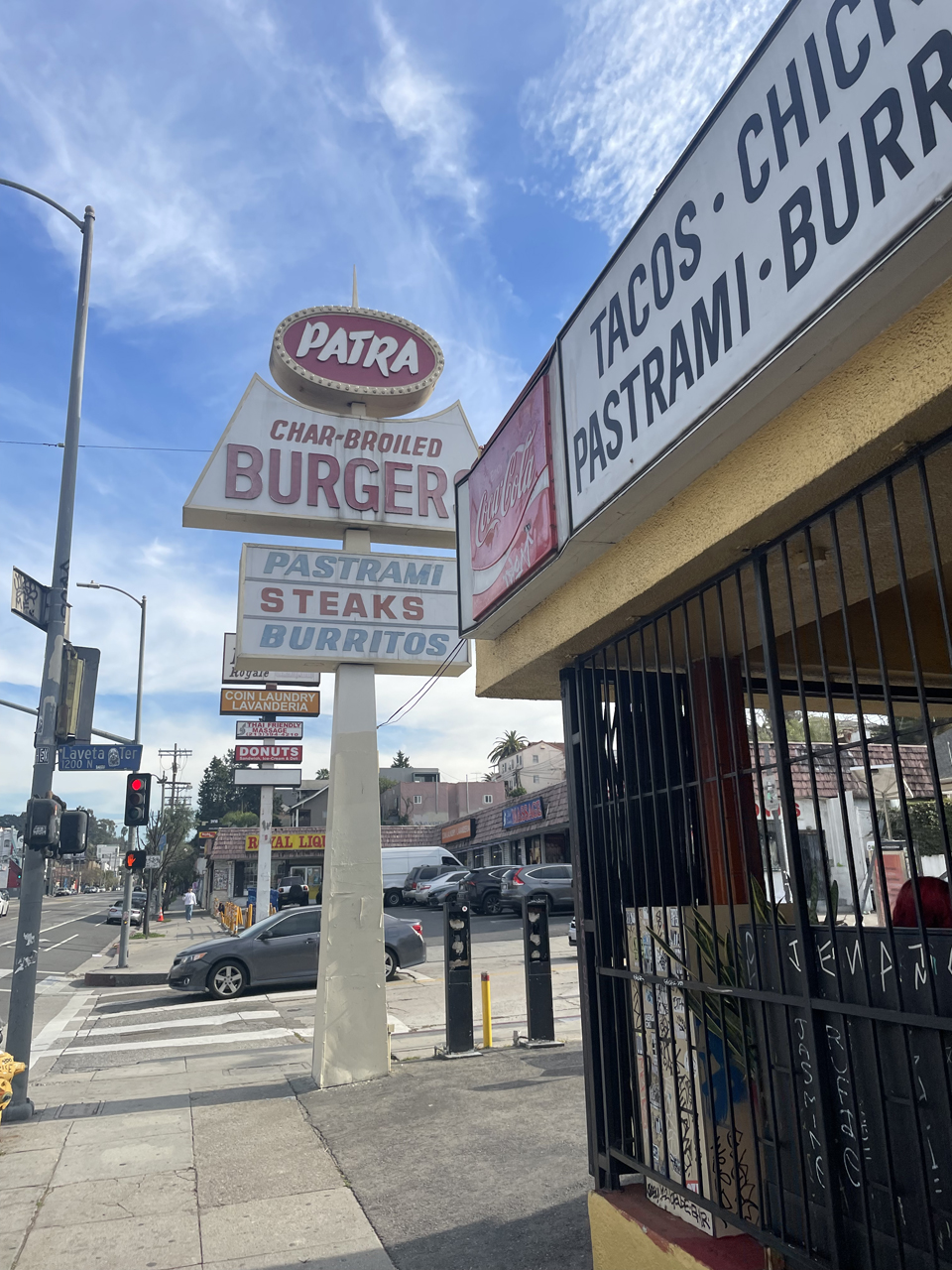

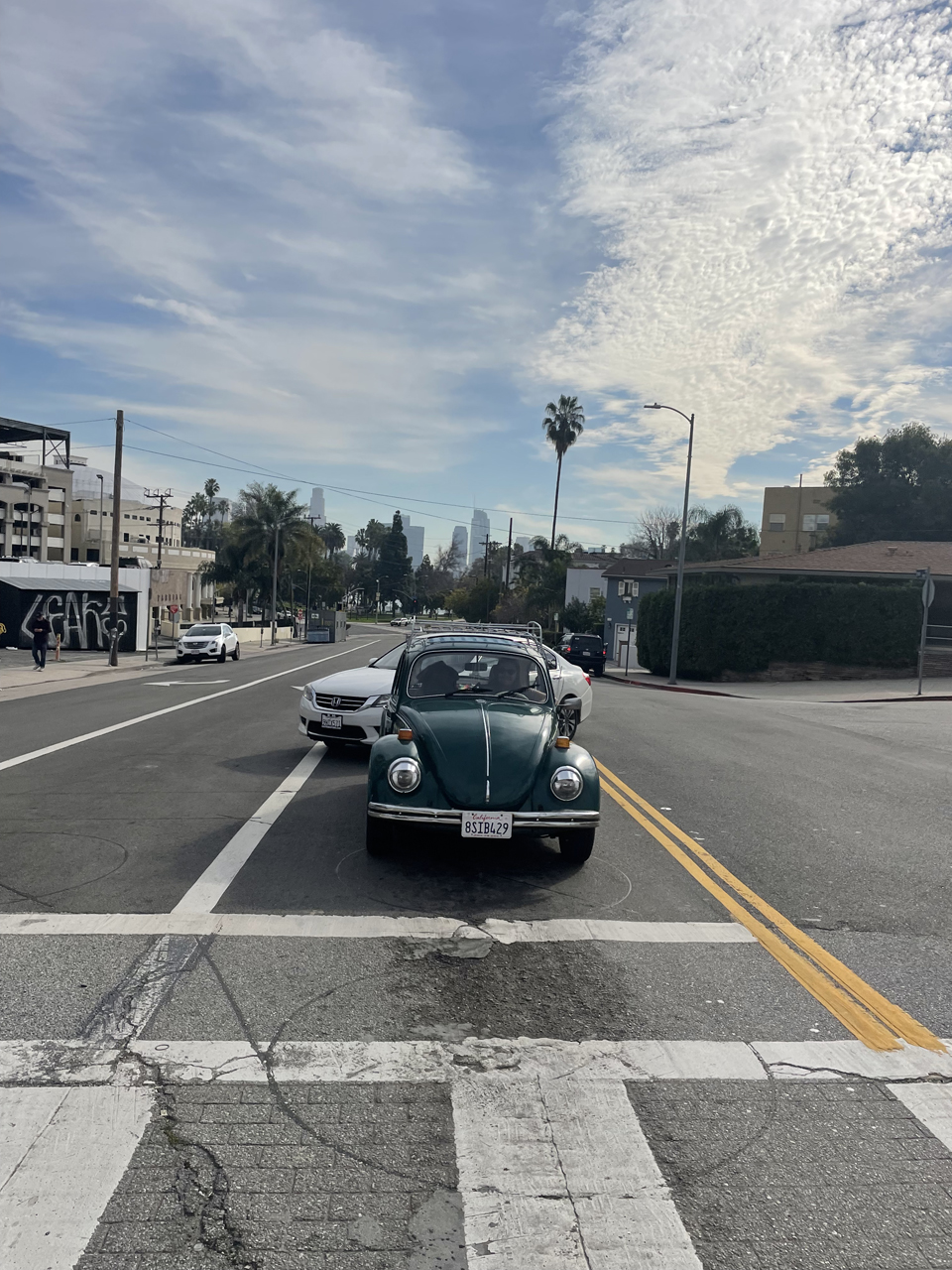


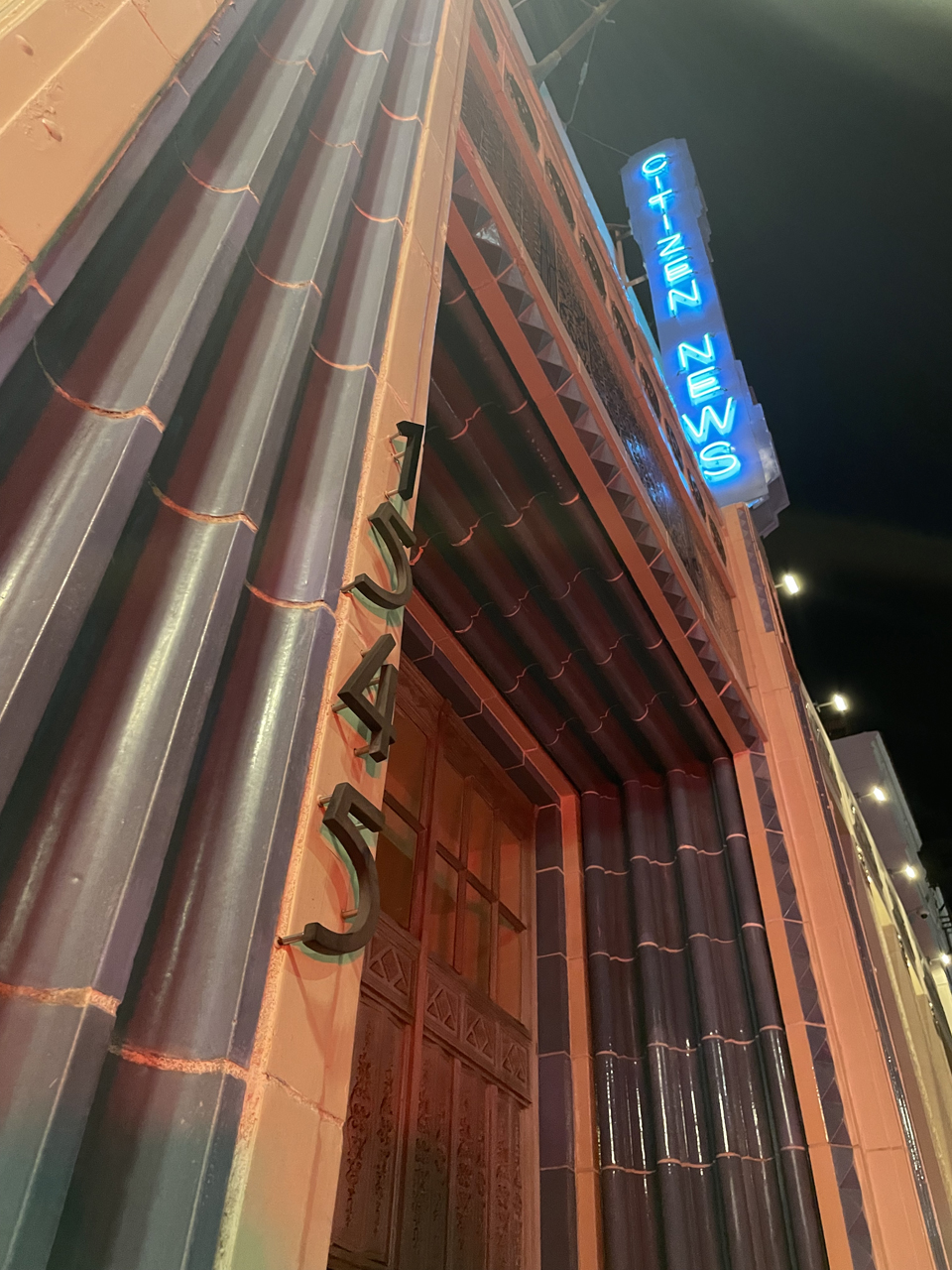
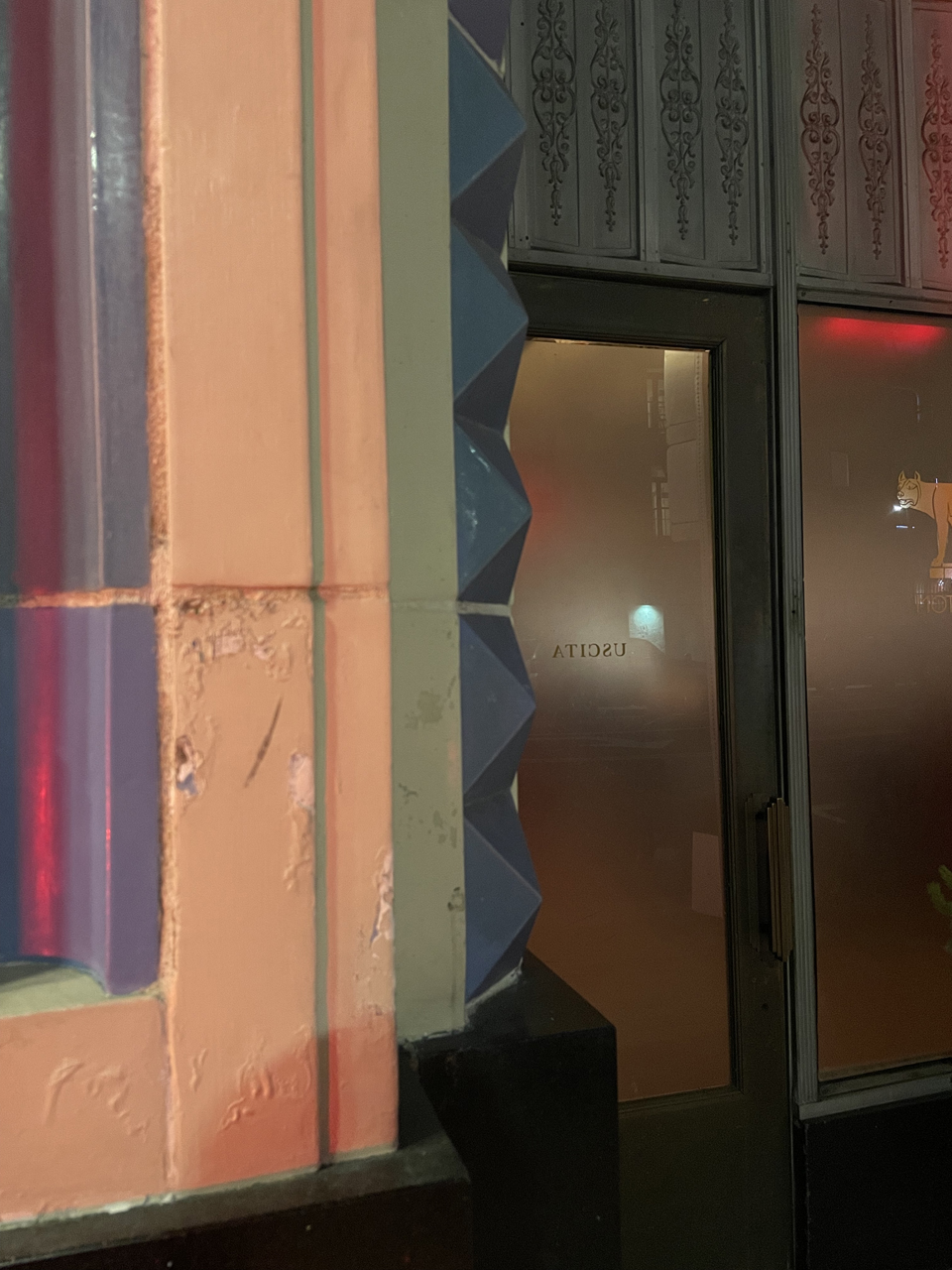
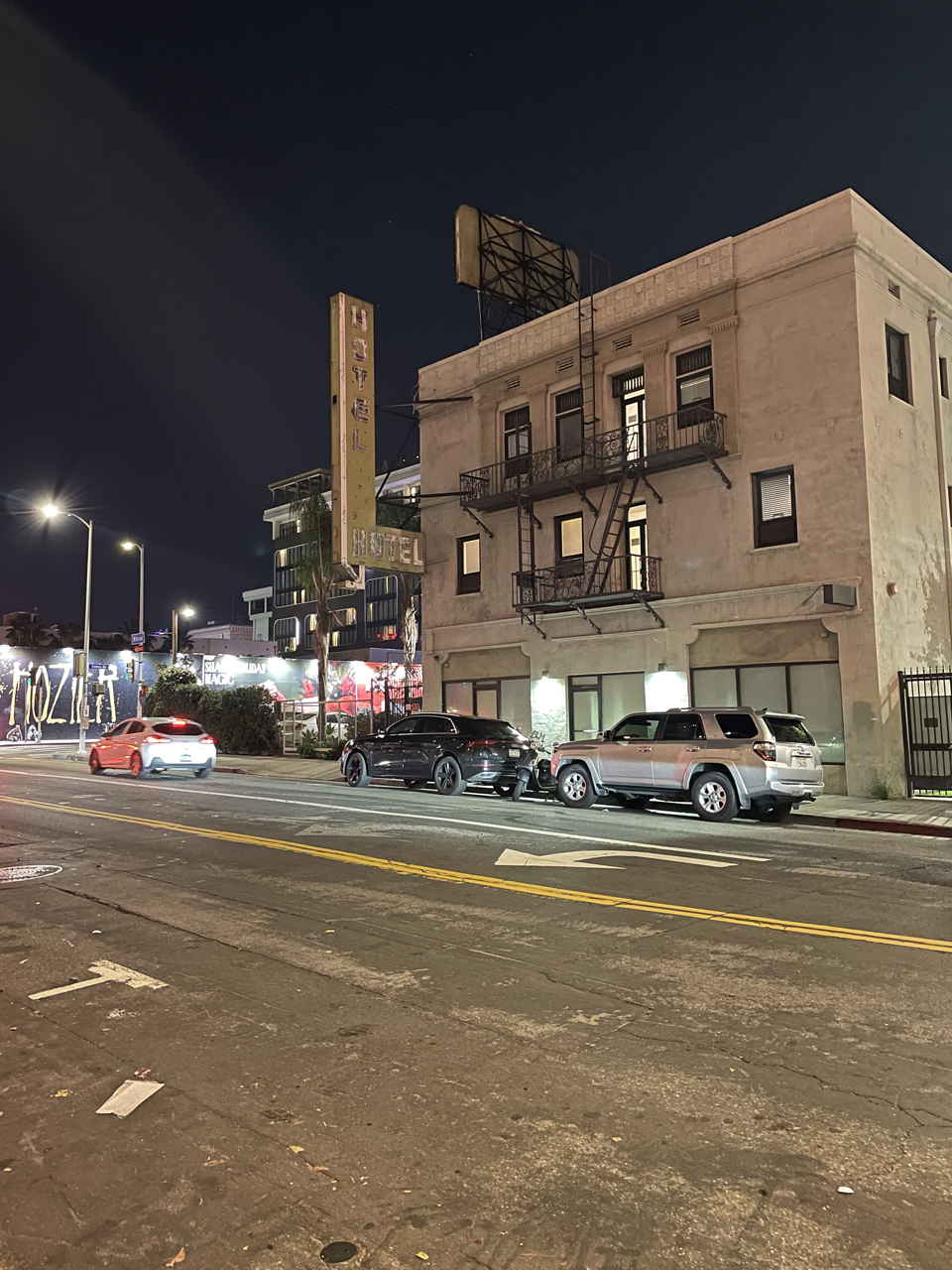
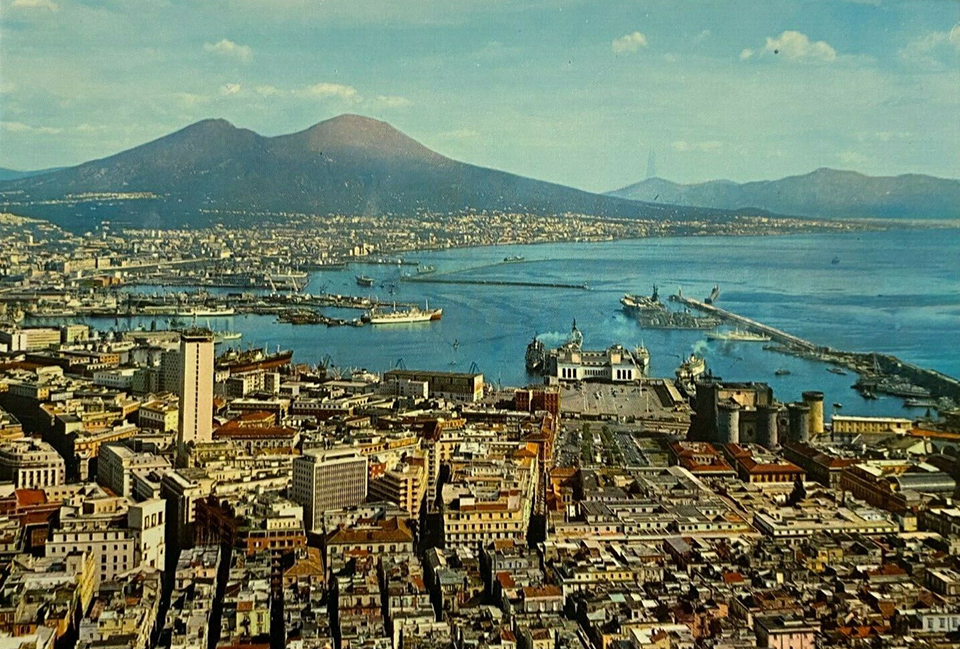
The moon’s reflection glistened on the inky bay as the midnight blue Lancia sat at a lonely red light. The night was quiet, the air thick with the scent of bougainvillea. A buzzing Vespa punctured the silence and pulled alongside, its teenage rider inching forward on his toes to get a closer look at the car’s UK plates. At this point my father noticed the pistol strapped to the boy’s waist, and with his right hand immediately rolled up the driver’s side window. This was my parents’ inauspicious introduction to Naples, on a sweltering and sultry night forty-five years ago. It was their last summer without children, but they recalled details from the trip so frequently over the years that it sometimes feels as though I was there. In a way I was: my mother was four months pregnant at the time.
They had driven down from England with another couple, the brother of one half of whom was engaged to a young woman from Naples named Concetta. She and her fiancé were back in England, but her family were still more than happy to host their future brother-in-law and his wife, plus their friends in the form of my mum and dad, lending truth to the stereotype of southern Italian hospitality.
My parents stayed at Concetta’s grandma’s apartment which was opposite that of her own parents, in a four-storey building near the water. It was surrounded by near-identical buildings divided by gardens abundant with plum tomato plants, the fruit from which went straight into the daily sugo. Every couple of days a man selling vegetables from a cart made the rounds, and would replenish a basket lowered from the balcony by Concetta’s mother, Giovanna.
Food occupied a considerable portion of the Naples experience. Every day Giovanna prepared epic dinners that ran late into the night. My dad used to remember how just as it seemed the meal was ending, several more courses would arrive from the kitchen. Though the food kept coming, Giovanna didn’t eat any of it. Instead she just watched from the doorway, a cigarette in one hand, while intermittently poking her cheek with the knuckle of the other as if to say, “Buono, vero?”
On one such evening Concetta’s younger brother arrived home from a “notte brava” wearing a peaked cap which had, until recently, belonged to the uniform of some unlucky officer from the carabinieri. He then proceeded to sport it around the house at a jaunty angle.
On another evening Giovanna was granted a night off, and instead they all ate at a waterfront pizzeria. The best in town, apparently, not that four young English people would have known the difference in 1978 (or even today). In the early hours they repaired to the home of another relative — Uncle Rosario — where more local specialties awaited. To this day my mum can still recall the dual challenge of struggling to finish arancini while also trying to stay awake.
When they weren’t seated at a large marble table my parents and their friends were being shown around the city by their exemplary hosts. They were also taken on a boat trip to the nearby island of Capri. On their last day they drove to the foot of Mount Vesuvius, from where you could take an old wooden train towards the Gran Cono at the summit. As the train ascended, my mum stood holding a metal pole while gazing out the window at the Gulf of Naples gradually coming into view. Suddenly, she felt a strange sensation in her stomach, almost like butterflies. But it wasn’t vertigo that was causing this new feeling, nor the breathtaking panorama. It was me.
Having been subjected to the overwhelming sounds and smells (if not yet sights) of Naples over several days, evidently I couldn’t take it anymore, and using my tiny body did my best to make my presence felt. The incident became a running joke in my house growing up: that I loved Italy so much I knew it before I was even born. Of course that isn’t true — I highly doubt these were conscious decisions on my part — but in some subconscious way I’d perhaps recognised my spiritual home.
* * *
When I eventually (and reluctantly) emerged five months later it was on a snowy night in Nottingham. I’ve often maintained I was born in the wrong place, half-joking. The half that isn’t joking soon decided to do something about it, and from the age of about twelve I began imagining one day living in Italy. It was a fantasy that later became a plan, in great part thanks to several trips I’d already made there. On those early holidays we drove everywhere and stayed in Siena, Rome and Venice, but my parents never returned to Naples, despite my frequent suggestions. As a young football fan discovering the allure of calcio, Naples seemed a natural destination since it’s where both Maradona and Careca played at the time. I still remember cheap knock-offs of the team’s blue shirts (emblazoned with the ‘Mars’ sponsor) hanging from bancarelle outside the Uffizi. More importantly, I found Naples appealing because it represented what were already, for me, three of the key attractions of city life, all depressingly absent from small town Leicestershire: heat, beauty and danger. In my impressionable head at least, Naples exuded these in abundance. Instead, during idle moments elsewhere in Italy I amused myself by reading aloud from an already outdated and dog-eared copy of a Michelin guide that my parents kept in the door of their Renault. This particular edition had been published in 1971, but could have been written a century earlier: “The Neapolitans are small and dark, with almost Grecian profiles.”
In 1989 my dad (who was a high school art teacher) started running an exchange with a liceo in Borgo San Lorenzo, a small town in the Mugello, a picturesque valley a few miles north of Florence. Through the success of the programme he made friends with several Italian colleagues, one of whom was an English professoressa named Bibi. That was only a nickname. Her given name was Fortunata. But everyone called her Bibi so we did too. Not even five feet tall, she was probably almost sixty when I first met her, but already seemed older (I remember being surprised that her mother, who lived in the adjacent apartment, was still alive). Bibi had been born in the same town but had moved to Naples as a small child, later studying languages at the university. She lived in Genoa, Milan and England in the sixties before returning to Borgo in 1973. By the time we encountered her she owned her entire building, whose unforgettable address was Via Leonardo da Vinci. The cold marble floors and gilded chandeliers of Bibi’s ground floor apartment would, in time, become as familiar to me as the electric fireplace in my own grandmother’s bungalow.
We stayed with Bibi every summer until I was nineteen. My brother and I slept in the living room on a leather “Anfibio” sofa bed (designed by Alessandro Becchi in 1972). During my degree I spent a year studying in Pavia, and after graduating from university moved back to Italy. By this point Bibi’s mother had died, and she kindly offered to host me while I looked for an apartment and a job in Florence. Having recently retired, Bibi had taken in a small but hyperactive black cat whom she’d christened Cholmondeley, after a character in some old novel. Bibi now rarely left the house unless absolutely necessary, and her reclusive nature only seemed to enhance her legend around town, as if she were a forgotten star from the golden age of cinema.
For several years Bibi had employed a woman named Tina to keep the apartment clean and cook her meals, duties that soon expanded to include laundry, grocery shopping, and any other errand that might arise (and they often did). Tina was in her thirties, and married without children. She was also from Naples, and just like Bibi, also went by a nickname. Her actual name was Immacolata, a somewhat burdensome moniker for anyone born in the past century. (Before Tina, Bibi’s housekeeper was a tall, elegant woman from Somalia called Lula — who knows if that was her real name.)
Tina arrived at the apartment every morning around ten, usually with several bags from the supermarket in tow, which she’d begin unloading in the kitchen before lighting a cigarette. Lunch was served at one o’clock and dinner at eight, a precise schedule designed to coincide with both editions of the telegiornale on Canale 5, whose dramatic intro theme served as a cue for Tina to drain the pasta. Bibi’s hearing had begun to wane, to the extent that the volume of the television could prohibit meaningful conversation. On the evenings I returned for dinner after an aperitivo with friends, I remember being able to hear la tivù blaring TG5 from down the street.
Bibi ate very little. What she did eat she’d wash down from a fiasco of Vernaccia, which she’d dilute from a jug of water, probably since she’d already enjoyed her pre-dinner staple: a tumbler of Punt e Mes without ice. Perhaps to compensate Tina heaped vast servings of pasta into my bowl, sometimes twice in one day. Her culinary repertoire didn’t veer far from the neapolitan classics, which was absolutely fine by me. In the spring she’d make pastiera, the famous Easter cake, which I considered her specialty. Tina had Sundays off, and so would often leave a large dish of pasta al forno for Bibi and me in the fridge, complete with heating instructions. If not, I cooked for the two of us myself.
Behind the dining table was a large dresser. Amid the antique silver dishes and floral vases sat an incongruous straw donkey, around whose neck hung a blue pennant with a large letter ‘N’ on it. Bibi still followed Napoli from afar, and every Sunday evening used to ask me their result: “Cos’ha fatto il Napoli?” Unfortunately the once champions of Italy were languishing in Serie B at the time, and without the internet I often had to wait until I’d picked up La Gazzetta the next morning before I could break the often disappointing news.
Bibi and Tina made quite the pair, constantly teasing and bickering like an old married couple, while each complaining about the other to me in private. You would never have known they’d grown up in the same city. Bibi spoke the closest thing to a true Italian with an academic precision, regularly stepping in to correct me when I misgendered a noun or fluffed a passato remoto conjugation. She devoured books in English (my mum regularly sent her the latest fiction) and liked to ask me to explain peculiar idioms she’d stumbled upon. We used to watch a nightly game show called Passaparola and light-hearted drama series such as Il Maresciallo Rocca or Elisa di Rivombrosa. On the other hand, Tina’s broad accent was sometimes difficult for me to understand, and her speech was peppered with dialectal phrases in napoletano. In the afternoons we’d often watch MTV together while Bibi napped.
I only planned to be at Bibi’s for a couple of weeks. I ended up staying five months. After I moved to Florence I’d return for lunch about once a month, and I could tell Bibi missed having me there. That this unlikely friendship would be born from a cultural exchange programme was appropriate. Italy was like a beautiful shop window against whose glass my nose had been pressed for years. Bibi’s generosity had flung open the doors, after which there was no turning back.
* * *
I stayed in Florence for four years, but aside from the occasional day trip or a couple of weekends out of town I never had extra money to travel. By the time I saw Naples for the first time I was living in New York. My wife and I drove there on the A3 autostrada from the Amalfi Coast, where we were staying in a bed and breakfast in Ravello. I didn’t drive at the time, so my wife was the one to navigate the city’s notorious traffic, though it was during daylight hours and thankfully we didn’t cross any armed delinquents on two wheels.
We strolled down Via Toledo, through Galleria Umberto I, stopped for a coffee at Gambrinus, wandered Piazza del Plebiscito, admired the graffiti and hanging laundry lines off Via Lungo del Gelso, stumbled over mounds of refuse on Via Chiaia, and ate lunch at Pizzeria Brandi. Walking down Via Cesario Console towards the bay we saw Vesuvius looming in the distance, so we stopped at Via Nazario Sauro to take a photo across the water. I’d expected to feel something, some sort of ethereal but undeniable connection to a city that had grown mythical in my mind over time, precisely by virtue of never having been there. But I felt nothing in particular, and quickly realised I had no special connection to Naples, besides one inconsequential anecdote that happened before I was even born. I was now older than my mother had been when she felt me kick (or roll over) for the first time. After thirty-two years I was just another tourist.
Like many famous non-capital port cities — Liverpool, Hamburg, Barcelona, New York — Naples sits apart from the rest of the country. It is a country unto itself, and its unique “otherness” is undoubtedly part of its fascination, especially to foreigners. Naples may always remain a subject of ridicule and abuse among many northern Italians, but outside Italy, its image has perhaps never been healthier. Today Naples exists for me through the music of Pino Daniele, the films of Giuseppe Sorrentino, or the novels of Elena Ferrante. From the comfort of my own home I’ve watched Luciano Spalletti’s Napoli side gallop to the cusp of the club’s third scudetto, and whether it’s a candlelit shrine to Diego Maradona or a cat dozing alongside a leather-skinned fisherman, social media projects the best of Naples. It’s an excess of content in more vivid detail than I could have hoped to consume thirty years ago, and though I’m writing this from a distance of some 4,000 miles, Naples somehow feels closer than ever. But while the mystique it once held for me has been finally stripped bare, it remains forever out of reach. It’s not exactly a return to the womb, but you might say I’m back where I started.
This article originally appeared on The Culture Division.

Italy’s new badge and football’s design direction
The new year may only be a few days old, but Italy’s football federation, the Federazione Italia Giuoco Calcio (FIGC), has already revealed its new logo. In fact, it’s launched two: the federation’s new logo appeared back in October, but the latest reveal is of significant greater interest since it will be worn by the Italian national team on its shirts. “We’re ready for the future,” claimed FIGC president Gabriele Gravina at the brand launch, perhaps not speaking for everyone.
This is not the first time the Azzurri have altered their badge. When Italy won consecutive World Cups in 1934 and 1938, they wore the arms of Savoy on their blue shirts. Following the birth of the Italian Republic in a 1946 referendum, a simple shield design was adopted, incorporating the colors of the Italian flag (without a coat of arms) beneath the word “ITALIA.” This design remained essentially unchanged for over thirty years, but the new logo is the fifth complete overhaul since 1984, more than any other major national team in the same period.
Italy’s previous logo was only launched in 2017, towards the end of the doomed qualification campaign for the 2018 World Cup. According to then FIGC president Carlo Tavecchio, it had apparently been in the works for three years. So it’s especially surprising that it would be ditched after just five years, considering that the job itself must have been assigned even sooner than that (assuming the work wasn’t knocked out during the World Cup).
The project itself was entrusted to Independent Ideas, a creative agency owned by Gianni Agnelli’s grandson, Lapo Elkann. With offices in Turin and Milan, the company’s clients include some of the biggest international Italian brands, such as Fiat, Ferrari and Gucci, though their work is more typically campaign-driven. One can only assume that Elkann’s connections in football had something to do with securing the job, but to the FIGC’s credit at least it wasn’t outsourced abroad (unlike the recent rebrand of Inter).

The new logo was revealed on January 3rd: strong reactions were as immediate as they were predictable. The democratic nature of social media deems that seemingly any person with eyes and an iPhone can be a graphic design critic. Some online observers have likened Italy’s new badge to the kind you’d find on a cheap knock-off jersey at your local market. While I’m inclined to agree, I shall first attempt an objective review.
Let’s start with the shape itself, which, like Italy’s last two crests, is ostensibly a continuation of Italy’s traditional shield. But where previous designs’ two sides met to form an elegant point, the new shape has a continuous sagging curve, like a semi-circle that’s been tacked on the bottom of a rectangle. The effect is a bulbous logo that appears too tall.
This issue is further compounded by the gently arched top, an odd choice considering that “ITALIA” sits on a straight line. The type appears centered between the logo’s thick borders, but no optical adjustment has been made to account for the extra negative space in the top-right area created by the final letter A, resulting in a logo that feels unbalanced. As for the type itself, the last two Italy logos employed elegant typefaces that subtly recalled aspects of Italian history and design. This new, condensed bold font is neither sophisticated enough to continue these important legacies, nor distinctive enough to justify its selection.
Italy’s colours — the tricolore of its flag and famous azzurro of its national team — are well established, but the new design still manages to misuse them. The type, outline and stars are all rendered in white, further cheapening the overall aesthetic. The familiar gold is reserved for the “FIGC” letters, though their clumsy inclusion frankly looks like an afterthought. Several colourways of the badge have been released, presumably for use on home, away and third shirts, as well as other graphic purposes. By simply inverting the blue and white but not the tricolore, the away version ends up with a central white panel of a different width due to an invisible separation.
Everything about the new badge, especially the outer border, feels too chunky, which only accentuates the issues already mentioned. None of the details seem considered, resulting in a logo that is poorly executed, and utterly devoid of the style and elegance associated with the country in question or the illustrious traditions of its national team. This restyling strips “La Nazionale” of any authority or historical grandeur, in a moment when it could certainly use them as inspiration to rebuild.
Whatever your thoughts on the new logo, this project is definitely representative of a modern desire for football teams to embark on thorough reappraisals of their brand identities, an undertaking more typically associated with large corporations. Moreover, it’s also the latest example of a micro-trend in Italy for teams to make radical visual departure from their classic look. In recent years Juventus, Inter and Fiorentina have gone through major rebrands. In each case, the new logo was poorly received (by football followers and graphic designers alike), but the clubs persisted nevertheless.
Football fans have a deeper connection to their team than they do to, say, their chosen brand of dishwasher tablets or preferred food delivery app. It should go without saying that a football team’s identity should be updated with caution and respect. But the long-term supporter is perhaps no longer the target demographic. As clubs look to expand their reach in emerging markets, existing, local fans matter less and less, and how the logo will look on a team’s shirt is today, sadly, of secondary concern.
In 2023, a football club or national team requires a thorough brand identity for myriad digital communication purposes. But this also means that a football team’s crest must function in new marketing contexts and therefore satisfy more people, some of whose interests may lie outside football. Anyone who’s worked in the corporate world knows that when a committee is granted input on a creative process the results are invariably safe, bland, and ultimately ineffective. To perhaps illustrate this point, the new logo has been launched together with a banal slogan, “Created by emotions,” as well as an accompanying “sound identity” — specifically a few seconds of a vaguely operatic chorus mixed over generic club beats. The precise purpose of this hopefully short-lived innovation has yet to be revealed.
Amid the fervour surrounding the new badge’s launch, it’s telling that few have actually questioned the necessity of this project in the first place. Italy may be going through a period of transition on the pitch, but the FIGC’s decision to undergo yet another redesign has the feel of an iconic brand changing its look in a desperate attempt to reverse a temporary dip in sales. Of course, Italy’s failure to qualify for the last two World Cups represents an undeniable dual low-point for the Azzurri. But between those sporting disasters, Mancini’s side also managed to become European Champions, playing the best football of the tournament.
The Italian national team may have its problems right now, but the badge on their shirt has never been one of them.
A version of this article originally appeared on The Culture Division.


Romanoff Equities is a New York real estate enterprise specializing in commercial and residential properties in Manhattan’s Meatpacking District. The company has been owned and operated by the Romanoff family for more than 80 years, but its marketing materials had not kept pace with the recent transformation of the area. I was tasked with creating a brand new website and redesigning property flyers that served to showcase the retail and office spaces in Romanoff Equities’ portfolio, while also highlighting the variety or vibrancy of the neighborhood. Visit the site here.

Hastily-penned tributes (mostly footballers and musicians).
1942-2025
As a vocalist, composer and studio innovator, Brian Wilson was a pop genius of inestimable influence. But perhaps his biggest contribution to our culture was the creation of a mythical world that, to this day, exists in our collective imagination. That world was a version of southern California which, through the Beach Boys’ early hits, was presented as a sun-drenched playground where summertime (and perhaps even youth) appeared everlasting. Wilson’s musical influences were evident on the Beach Boys’ first records, where Chuck Berry riffs and tight doo-wop harmonies were layered to produce a Spector-lite sound that came to epitomize West Coast teenagerdom. While the group’s carefree image as fun-chasing kids in striped shirts stuck, their music soon began to plunder new emotional depths. By 1964 Wilson had stopped writing about surfing, hot-rods, and drive-ins. He abandoned performing and began to focus on the uncharted flip-side of adolescence: insecurity, vulnerability, uncertainty, depression. It was this shift towards non-single material (along with a creative rivalry with the Beatles) that resulted in the modern concept of the pop album. It’s perhaps no coincidence that several of my favourite Beach Boys songs — “Don’t Worry Baby,” “Please Let Me Wonder,” “God Only Knows” — were originally B-sides. Wilson’s California had become a spiritual state of mind. The sun began to fade on the Beach Boys after the completion of Pet Sounds in 1966. The LP failed to muster much enthusiasm upon release, but today it’s widely recognised as a landmark pop recording. I first heard it as a teenager (perhaps the ideal age) and it had a profound effect on me, even thirty years after the fact. Its immediate follow-up, Smile, was never completed, due mainly to Wilson’s descent into drugs, delusion and paranoia. His persona became that of an eccentric, bearded, washed-up hermit, and his struggles with mental illness, therapy, and seclusion in the decades that followed often threatened to overshadow his musical legacy. Yet somehow Wilson emerged (not entirely unscathed), and in later years rode a perpetual wave of adulation. Not bad for a guy that only tried surfing once.
1942-2025
Sly Stone’s commercial peak ended some years before I was even born, but his socially conscious blend of gospel pop, psychedelic soul and hard funk influenced a generation of musicians, and defined an era. If anything, Sly & The Family Stone’s relatively brief tenure atop the pop charts has only enhanced the group’s historical significance: there are few other acts whose sound evokes so immediately that very specific cultural moment, as the naive idealism of the sixties ceded to the seventies’ jaded cynicism. It wasn’t just Sly’s genre-defying music that inspired — just as many of his songs preached an urgent need for peace and equality, his band exhibited the exact same aspirational values of inclusivity. In a decade when segregation was a dangerous reality (and not just within the music industry), The Family Stone was multi-racial, multi-gender, and in both appearance and performance exuded an endearing eccentricity and an infectious, almost childlike glee. Following the typical drug problems and personnel changes, Sly dissolved the band in 1975, later staging a series of comebacks (with predictably uneven results) before disappearing from the spotlight. But his music has never left the airwaves, and more than half a century later its message is no less relevant, or uplifting. When I saw Prince at Madison Square Garden in 2011, the last song he performed that evening was a cover of Sly’s “I Want To Take You Higher.”
1938-2025
“Commentators are like referees: if they have a good game you don’t notice them.” I don’t remember where I read this quote, or to whom it is attributed, but it often comes to mind when I watch football on television these days. Whatever its provenance, it could have easily been applied to Bruno Pizzul. For a generation of Italians, Pizzul was the singular voice of the national team, commentating at five World Cups, and every Italy match between 1986 and 2002 (UK fans: imagine John Motson, Barry Davies and Brian Moore rolled into one). I didn’t even grow up in Italy, but I spent enough summers there for Pizzul’s distinctive tone to be synonymous with those aspirational Azzurri sides and the epic tournaments they came so close to winning (his words at the end of the 1994 final have been seared into my brain since I was 15). In this sense Pizzul was the broadcasting equivalent of the humble Bialetti coffee pot: simple and functional, a reliable presence in every Italian home and one of the few things that all Italians could agree upon. Pizzul’s life in football began on the pitch as a defensive midfielder, a number 4, or “mediano,” as they say in Italy. It’s the sort of unsung position you’d expect Pizzul to have filled, one for which calmness and consistency are essential traits — exactly the attributes he exuded later as a commentator. His professional playing career took him far from home, to Catania in Serie B, with whom he won promotion in 1960, before helping the side finish eighth in Serie A the following season. He later returned to his native Friuli, but a knee injury at Udinese forced him into early retirement. After completing a degree in jurisprudence, Pizzul was hired by RAI in 1969, through a competition open to recent graduates. His big break arrived unexpectedly at the 1986 World Cup, where upon arriving in Mexico City his predecessor, Nando Martellini, became ill with altitude sickness. Pizzul was thus thrust into the hot seat, where he remained a comforting constant for the next sixteen years. More significantly, he also came to represent a football and an Italy that are no more.
1930-2025
If you went to the cinema with any regularity between 1967 and 2004 it’s likely that on at least one occasion you saw Gene Hackman up on the big screen. For almost forty years he was a practically unavoidable movie presence, making 76 films in that period and shifting between leading man and character actor with a rare fluidity. As eclectic as he was prolific, Hackman seemed equally at ease in dramatic or comedic roles. But he excelled in portraying morally ambiguous characters, iconic parts that helped define him as an archetypal antihero for the gritty seventies, the decade that made him a Hollywood star. In the sixties he’d enjoyed a stage and television career — by the time fame hit he was already in his forties. A former Marine from the midwest, Hackman’s popularity was also down to his relatability as a sports-loving, beer-drinking, girl-chasing everyman of the American midcentury. Aside from the often dark humour that wriggled beneath the surface of many of his performances, Hackman rarely revealed even a trace of youthfulness. Even as a younger actor, it’s hard to imagine him as anything other than a man coloured by life’s experiences. To me, his very appearance on the screen was often a glimmer of comfort, and a reassurance that a film was worth watching. For this reason I always liked him, also because he was one of the few actors with whom I share a birthday.
1951-2024
I’m too young to have seen Johan Neeskens in his prime (he joined the New York Cosmos the same year I was born), but as a young student of football history, his name was unavoidable. The midfielder’s penalty in Munich in 1974, converted before a West German player had even touched the ball, is still the fastest goal scored in a World Cup final. There was something inherently Dutch about that goal’s odd mix of violent urgency and seeming nonchalance, but it was also a reflection of Neeskens’ straightforward approach. “If you’re not sure, just hit the ball as hard as possible,” he advised. “If you don’t know where it’s going nor will the goalkeeper.” Much of Neeskens’ grit and determination stemmed from his difficult upbringing — he came from a broken home and grew up sleeping in a corridor. Tenacious and tireless, Neeskens was the archetypal “box-to-box” midfielder, years before the term became part of the footballing vernacular. As the less-famous Johan in both the Dutch team that dazzled in 1974 and the great Ajax side that won three consecutive European Cups in the early seventies, his name became synonymous with “Total Football.” But unlike many components of those teams, Neeskens wasn’t a product of Ajax’s famous youth system; rather he moved to Amsterdam from his hometown club, Racing Club Heemstede, where he started out as a right-back. After World Cup ’74 Neeskens followed Cruyff to Catalonia, earning the nickname “Johan Segon” from Barça fans. He responded by stating he was happy to be the second best player in the world. Four years later a not-fully-fit Neeskens and the Netherlands reached a second World Cup final (this time without Cruyff) in Argentina, losing again to the host nation. A World Cup qualifier at Parc des Princes in 1981 was Neeskens’ last game for his country. Neeskens was assistant coach of the national team at Euro ’96, France ’98 and Euro 2000. If only that generation of Dutch stars had followed his penalty-taking philosophy: the Netherlands were knocked out in shootouts at all three tournaments.
1964-2024
Salvatore Schillaci’s moment on top of the world was as fleeting as it was unexpected, but for Italians — and for those of us whose lives were forever changed by Italia ’90 — he defined not just a summer, but a feeling. Emerging from relative obscurity to become the hosts’ unlikely hero and the event’s top scorer, the Sicilian striker’s meteoric rise and equally swift decline means he will always be remembered for his exploits during that World Cup. No Italian player, not even Paolo Rossi in 1982, became as closely associated with a single tournament. Like much of the rest of the world, I first became aware of Schillaci on day two of Italia ’90, a Saturday night. With less than twenty minutes to go at the Stadio Olimpico, and the match with Austria still goalless, Azeglio Vicini summoned his substitute. Schillaci responded by looking down the bench, pointing an index finger to his chest and mouthing, “Io?” Within minutes he’d scored the winner — from that moment nobody would ever forget him. “Totò” started the final group match against Czechoslovakia, giving Italy the lead after nine minutes and setting in motion a scoring streak that continued through the knockout phase, taking the Azzurri to the brink of the final. That series of matches is still recalled fondly in Italy as “le notti magiche,” a reference to the official World Cup song. Born in a poor neighbourhood of Palermo, Schillaci was the ultimate underdog. His spontaneous celebrations (arms aloft, eyes bulging, mouth agape) that followed each goal seemed to reflect his own sense of disbelief. Italy is a young country still staunchly adherent to its regional culture, language, politics, food… and football. For a month in 1990, a humble former tyre dealer was able to unite these disparate identities towards a common dream, in a manner still yet to be repeated. Later that summer my brother and I befriended some boys from Turin while camping near Venice. We used to play football with them under the umbrella pines. When we arrived home the oldest boy, Vito, had sent us a postcard of Schillaci, his gently smiling face tinged with melancholy. On the back was written a simple message: “Viva Totò.”
1941-2024
As a pianist, bandleader and composer, Sérgio Mendes was responsible for what I’d consider some of the most sophisticated and sublime pop music ever made. But though Mendes became known for introducing Brazilian sounds to the U.S. charts, he initially trained as a classical pianist. But this was Rio de Janeiro in the late-fifites, and the allure of jazz — in particular the new sound of bossa nova — was hard to resist. Under the mentorship of Antonio Carlos Jobim, Mendes began performing in clubs with his own band, Sexteto Bossa Rio. In 1964 Mendes moved to Los Angeles, where he formed a new group, Brasil ’65. This outfit cut albums for Capitol and Atlantic but sales were poor. Mendes’ fortunes began to change after he was encouraged to hire a lead vocalist that could sing in English as well as Portuguese. Chicago native Lani Hall won the audition and the group’s lush signature harmonies soon developed. The new line-up, now known as Brasil ’66, was signed to A&M Records, and their self-titled debut went platinum, in large part on the strength of the single, a cover of Jorge Ben’s “Mas Que Nada.” More albums — Equinox, Look Around, Fool On The Hill — followed in quick succession, and after some personnel changes Mendes later reformed the group as Brasil ’77 and then Brasil ’86. There was something for everyone on a Brasil ‘66 record. As well as Mendes’ original compositions, the group’s material spanned eras and continents: on a single side of an LP you might find a new version of a Brazilian folk song, a Tin Pan Alley standard, a recent Brill Building hit, and a reimagined Beatles cover. Mendes reigned in an age of mainstream variety shows, all-round entertainers and chiffon cocktail parties, but his music could never be filed under the category of “easy listening.” When I first moved to New York the Brasil ‘66 records were impossible to avoid at my local used LP emporium, Academy Records on East 12th Street, and I picked them up immediately for next to nothing. To this day their unique, joyous and evocative sound instantly transports me to my old apartment on East 11th Street.
1948-2024
Farewell to Sven-Göran Eriksson, who died today aged 76. Here he is as a 39-year-old, shortly after arriving at Fiorentina in the summer of 1987. Though Eriksson’s coaching career took him to four continents, he spent the majority of his peak years in Italy. Before his spell in Florence he’d taken over from a fellow Swede, Nils Liedholm, at Roma in 1984. He spent the bulk of the nineties at Sampdoria and Lazio, where he won the last ever European Cup Winners’ Cup in 1999 and the club’s second scudetto in 2000. The number of Eriksson’s players from this period that went onto become top level coaches themselves is a testament to his impact and influence on the game. By his own admission, Eriksson was a “distinctly average” right-back, playing for a decade in Sweden’s lower divisions. During this time he also obtained a degree in economics and worked as a P.E. teacher. He retired in 1975 and began coaching at Degerfors. A promotion to the second division in 1978 caught the attention of IFK Göteborg, where he won a league and cup double in 1982. That same season Göteborg became the first Swedish club to win a European title, defeating Hamburg 4-0 over two legs to lift the UEFA Cup. Success continued at Benfica, where Eriksson won two consecutive Primera Divisão league titles. He returned to the club in 1989, winning another championship and losing the 1990 European Cup Final to Milan. In early 2001 Eriksson left club football to become the first foreigner to manage England (where he was already a familiar face, at least to viewers of Channel 4’s Gazzetta Football Italia). The highlight of his tenure was probably a 5-1 win in Munich that September as part of the qualifying campaign for the 2002 World Cup. In terms of performances and results, Sven’s England were a reflection of their coach: respectable and consistent. Despite boasting a so-called “golden generation” of players, they were knocked out in the quarter-finals at three consecutive major tournaments. Eriksson announced his terminal illness in January, and spent some of this year making a documentary about his life, released just a few days ago on Amazon Prime. I think I’ll watch it tonight.
1932-2024
Anouk Aimée died today in Paris aged 92. Here she is aged 27 with co-star Marcello Mastroianni on the set of La Dolce Vita. In her role as the elegant and enigmatic Maddalena, Aimée’s was the most intriguing and alluring character in that film — and she didn’t even have to climb into the Trevi fountain (though she did drive a Cadillac). Her stylish turn as the jaded socialite essentially provided a blueprint for what Guardian critic Peter Bradshaw called a “modish ennui” in Italian cinema of the period, best exemplified by Michelangelo Antonioni’s celebrated trilogy. In this sense Aimée was to Federico Fellini what Monica Vitti was to Antonioni. Aimée worked with Fellini again on 8 1/2, this time playing Mastroianni’s wife, Luisa, in another performance tinged with distant melancholy. Her contemporary intellectual look — closely cropped hair and chic glasses — contrasted perfectly with her husband’s simplistic male vision of the ideal woman (portrayed by Claudia Cardinale). Whenever I think of that film it’s always Aimée’s forlorn face that I picture. I have posters of both La Dolce Vita and 8 1/2 appended to the wall of my shed, but ironically, Aimée’s likeness doesn’t appear on either (the cinema-going public were more easily lured by Anita Ekberg, evidently). Fellini himself called Aimée one of cinema’s “great, mysterious queens,” saying that she “represents the type of woman who leaves you flustered and confused — to death.”
1947-2024
In 2004, not long after moving to Florence, I met an American art student named Jessica. She’d responded to an ad I’d posted looking for a roommate, but there was no internet in my new apartment which, by the time I read her email, I’d already settled into. Jessica and I decided to meet anyway, at an afternoon screening of Dali’s Un Chien Andalou. She told me she’d be wearing a chartreuse sweater, which made her easy to identify. After the infamous eyeball-slicing scene we made eye contact and ran through the rain to a nearby café. Though we never lived together, Jessica and I ended up dating for a while. She gave me a copy of The Red Notebook, a compact compendium of true stories by Paul Auster. I knew Auster as the screenwriter for the pair of Wayne Wang movies, Smoke and Blue in the Face, but it seemed appropriate that someone I could have just as easily never met should introduce me to an author for whom chance and coincidence were frequent themes. I found Oracle Night at a used bookstore called Paperback Exchange, after which I sought out Auster’s work wherever I could. What I enjoyed most about Auster was how he played with the conventions of genre. Several of his writings shifted subtly from fiction to non-fiction, and first-person to third-person, sometimes within the same story. In one instance a fictional character with his own name appears. On my birthday in 2017 Hillary and I saw Auster at the 92Y, where he read from his latest novel, 4321. I’d lent my original copy of The New York Trilogy to a friend, so I bought another which he kindly signed for me. Some years before that I picked up a large red volume of Auster’s Complete Prose at the Strand. It contains two memoirs that I’ve read repeatedly as a source of both comfort and inspiration. Last month I began a memoir class at Gotham Writers Workshop. This week was my turn to submit a ten-page draft, so last night I stayed up late cranking out a typically verbose tale concerning a period of my life in Florence. Even now when I think of my room I can still picture every detail, including that copy of The Red Notebook that for two years rested on the rattan chair that served as my bedside table.
1960-2024
Andreas Brehme, the man whose late penalty secured a third World Cup for West Germany in 1990, died today aged 63. Brehme was only tasked with the responsibility because captain Lothar Matthäus was still breaking in the brand new boots he’d been forced to change into at half-time. But there were few players more reliable than Brehme behind a dead ball. I’ve watched a lot of football since that summer, but I’ve never seen another player quite like Brehme. Though nominally a left-back, he could play on either flank or in midfield. Part of what made him so versatile was his complete ambidexterity. He slotted home his penalty in Rome with his right foot, as he believed it was more accurate. But he tended to take free-kicks and corners with his left, which he claimed was more powerful. Franz Beckenbauer once said, “I’ve known Andy for twenty years and I still don’t know which is his natural foot.” Brehme was born in Hamburg in November 1960, at precisely the same time that a fledgling five-piece combo from Liverpool was tearing up clubs on the Reeperbahn. He emerged at Kaiserslautern before joining (in classic German fashion) Bayern Munich. But at club level Brehme is best-remembered for the four years he spent at Inter, with whom he won a record-breaking scudetto in 1989. The threesome Brehme formed at the club with international teammates Matthäus and Jürgen Klinsmann was in neat parallel to Milan’s three Dutch stars. At the height of their fame, the two trios squared up at their “home” stadium of San Siro, as West Germany and the Netherlands met at Italia ’90. Brehme scored his side’s second goal, a characteristic curling (right foot) shot from the edge of the box. In 1992 Brehme left Italy, and after a single season at Real Zaragoza returned to Kaiserlautern, where he spent the next five years. Though the side was relegated in 1996, they won immediate promotion back to the top flight, and then finished the following season as unlikely German champions. It was the first and only time a newly-promoted team has lifted the Bundesliga title, and a fitting end to Brehme’s playing career.
1934-2024
Swedish legend and Fiorentina’s all-time leading goalscorer, Kurt Hamrin, died in Florence today aged 89. Born in Stockholm in 1934, he rose to prominence at local side AIK before moving to Juventus in 1956. After a single season in Turin the right winger was sent on loan to Padova. In the summer of 1958 Hamrin was an integral part of the Swedish side that hosted the World Cup, scoring four times en route to the final, which Sweden lost to Pelé’s Brazil. After the tournament, instead of returning to his parent club he signed for Fiorentina. Hamrin spent the next nine years in Florence, helping the club to its first (and so far only) European title in 1961, the inaugural Cup Winners’ Cup against Rangers. Though Fiorentina’s two scudetto triumphs (in 1956 and 1969) occurred either side of Hamrin’s time in Florence, he scored an extraordinary 208 goals for the club, a record that still stands. If you’ve watched Fiorentina in recent seasons you’ll know that Hamrin’s tally is unlikely to be surpassed any time soon; Gabriel Batistuta’s total of 207 seemed almost in polite deference to the great Swede. In 1967 Hamrin joined Milan (with whom he won the European Cup in 1969), and later Napoli, before ending his career back in Sweden with IFK Stockholm. After retirement he returned permanently to Florence, where he remained for the rest of his life. Incidentally, following the death of Mario Zagallo last month, Hamrin was the last surviving player that took part in the 1958 World Cup Final.
1944-2024
Italy’s all-time leading scorer and Cagliari’s greatest ever player, Luigi “Gigi” Riva, died today aged 79. Riva’s power, athleticism and ferocious left foot led journalist Gianni Brera to dub him “Rombo di Tuono” (Rumble of Thunder), a nickname that stuck with the forward for the rest of his life. Riva refused handsome offers to leave Sardinia, and after retiring served briefly as Cagliari president (the club retired his number 11 shirt in 2005). From 1988 to 2013 he was an important presence at major tournaments as part of the national team’s staff, whether consoling Roberto Baggio at Giants Stadium or celebrating with the Azzurri in Berlin. Though he became a beloved symbol of Sardinia, Riva moved to the island with trepidation. He hailed from Leggiuno, on Lake Maggiore in the province of Varese, and began his career at Legnano in Serie C, before his unlikely transfer to Cagliari in 1963. The side gained promotion to the top flight the following year, and a year after that Riva became the club’s first player to represent Italy at international level. Riva’s performances in Serie A helped Cagliari to a second-place finish behind Fiorentina in 1969. The following season the club went one better, winning their first and (so far) only scudetto. This photo was taken a couple of months later, at a corrida in Mexico, as the Azzurri paused their preparations for the 1970 World Cup in order to experience some local culture. Once the football action started Riva struggled in the group phase, but scored twice in the quarter-final against the hosts, then got Italy’s third in their epic semi-final with West Germany at the Azteca. It was technically Riva’s first World Cup, though he’d been invited to the 1966 tournament in England as an extra reserve. In 1968 he won the European Championship on home soil, scoring the first goal in the replay of the final with Yugoslavia in Rome. Riva scored his last goal for Italy in 1973. He took part in Italy’s disastrous 1974 World Cup campaign in West Germany, but was dropped for the final group match, a defeat to Poland. Half a century later, his record of 35 goals (in just 42 games) for his country has yet to be beaten.
1945-2024
German football’s greatest icon, Franz Beckenbauer came not only to symbolise his nation’s most glorious footballing achievements, but also embody its abiding characteristics. Speed, efficiency, power, control, innovation: these words might have been applied to Beckenbauer, but could have just as easily been pulled from a BMW ad. After all, Beckenbauer wasn’t just German — he was Bavarian. Beckenbauer’s career, both on the pitch and on the bench, coincided with periods of unprecedented dominance for both club and country. Though he became forever tied to Bayern Munich, young Franz grew up supporting their city rivals, 1860. It was only after a tussle with an 1860 opponent during a youth tournament that he opted to join then-unfashionable Bayern, making his debut for the club in 1964. By decade’s end “Der Kaiser” had led Bayern to its first domestic titles and, by the mid-seventies, three European Cups in a row. Prior to Fabio Cannavaro in 2006, Beckenbauer was the only defender to have been awarded the Ballon d’Or, yet he started out as a centre-forward. He was the young star of the 1966 World Cup, scoring four times from midfield and marking Bobby Charlton out of the final. Soon he’d retreated to central defence, from where he effectively invented the modern libero position. At Mexico ’70, Beckenbauer famously dislocated his shoulder in the second half of an epic semi-final with Italy. But West Germany had already made their two permitted substitutes, forcing him to play on through extra-time with his arm in a makeshift sling. The 1972 European Championship was Beckenbauer’s first international title, to which he added the World Cup at Munich’s Olimpiastadion two years later. After spells with the New York Cosmos and Hamburg, Beckenbauer retired in 1984 and was immediately put in charge of the national team. Despite no previous coaching experience the appointment paid off. West Germany were narrowly defeated by Argentina in the 1986 World Cup final, but got revenge on the same opponents in an ill-tempered final four years later. That result in Rome meant Beckenbauer had become only the second man to win the World Cup as both a player and a coach.
1931-2024
I’ve always loved this photo. It shows Garrincha and Pelé helping Mario Zagallo to his feet after he’d scored Brazil’s fourth goal in the 1958 World Cup final against hosts Sweden. Brazil are wearing blue shirts that their kitman had hastily procured from a shop in downtown Stockholm just hours before the match kicked off, after both sides had shown up at the Råsunda Stadium in Solna with their yellow home shirts. And so began the tradition of Brazil wearing blue as an away kit. In 1962 Zagallo won the World Cup again when Brazil (in their usual yellow) beat Czechoslovakia in Santiago de Chile. He retired from playing in 1965 and thus didn’t take part in Brazil’s disappointing 1966 World Cup campaign in England. Zagallo immediately began a long second career as a coach, and by the end of the decade was already in charge of the national team. In Mexico in 1970, he led the Seleção to its greatest triumph, and in doing so became the first man to win the World Cup as both a player and a coach. He was still only 38. Zagallo’s Brazil finished only fourth in 1974, and it was another twenty years before they lifted the trophy again. In 1994 Zagallo was an assistant to Carlos Alberto Parreira, and in 1998 back in the hot seat himself, leading Brazil to another final (which they lost to hosts France). His last involvement with the national team was as a technical assistant in 2006. In total Zagallo took part in seven World Cups, including five finals. I haven’t looked it up but I imagine Franz Beckenbauer is next in line (five World Cups, four finals). Though Bora Milutinović can’t be far behind…
1969-2023
Matthew Perry was always my favourite “friend.” As the sarcastic and insecure data processor Chandler Bing, Perry may have represented only one-sixth of Friends’ attractive ensemble, but he seemed to enjoy the bulk of the script’s best lines. Legend has it he contributed many of these himself; I once read he was the only cast member granted access to writers’ meetings. Perry was not only the funniest of the six — at just 24 he was also the youngest (Lisa Kudrow was already 30). Since Friends ended it’s become fashionable to put the show down — especially among those New Yorkers who blame it (along with Sex & The City) for contributing to the city’s demise — but I will always maintain that the first season was as close to perfect as sitcoms get. I rewatched “The Blackout” episode on a flight a few years ago, the one where Chandler gets trapped in an ATM vestibule with the model Jill Goodacre. I remembered all the dialogue but my failure to stifle laughter still turned my fellow passengers’ heads. But as Friends became a cultural phenomenon and its cast stratospherically wealthy, so it became increasingly evident that Perry was not a well man. By season three he appeared quite thin, and his fluctuating weight over the course of the show’s decade on the air seemed at times to correlate directly with its own dips in quality. Even at the height of his fame, Perry was open about his health issues and spells in rehab, and in 2022 published a revealing memoir of his career and lifelong battle with addiction. I’ve also watched some incredible recent interviews with Perry on YouTube, in which he speaks about this complex subject with a detail, candor and wit that is both brutal and moving. He seemed so resolute, like a man who recognized his own fortune and whose life’s purpose had become to help other people facing the same indiscriminate and unrelenting disease. Perry initially moved to L.A. to pursue a career in tennis, having been a top-ranked junior player. In fact, the closest I came to brushing shoulders with him was at the U.S. Open in 2011, when his familiar face popped up on the big screen during a match between Federer and Tsonga at Arthur Ashe stadium.
1937-2023
Farewell to Sir Bobby Charlton: Manchester United legend, World Cup winner, and arguably England’s greatest ever player. Born in Ashington, Northumberland in 1937, Charlton signed for United in 1953 and made his debut for the club in October 1956 against, appropriately enough, Charlton Athletic. Matt Busby’s United side won the first division title in 1957, but the following season Charlton was one of 21 survivors of the Munich air disaster; among the 23 victims were eight members of the promising young team nicknamed the “Busby Babes.” Still only 20, Charlton overcame that trauma (and minor injuries) to make his international debut at Hampden Park just two months later, and was part of the England squad that went to that summer’s World Cup in Sweden. He played in every match at the 1962 World Cup in Chile, scoring in a group stage victory over Argentina. By 1966 Charlton had established himself as one of the sport’s top players, instantly identifiable the world over thanks to both his trademark combover and an unstoppable shot from distance. He scored in the group match against Mexico, and got both of England’s goals in a memorable semi-final with Eusebio’s Portugal. He had a quieter game in the final, having been marked out of the match by a young Franz Beckenbauer. His performances earned him the FIFA award for player of the tournament and that year’s Ballon d’Or. In 1968 he scored twice more at Wembley, as Manchester United became the first English club to win the European Cup, defeating Eusebio’s Benfica. Charlton played in his final World Cup in 1970. On the plane home from Mexico, following a quarter-final exit to West Germany, he asked Alf Ramsey not to select him again. Charlton left United in 1973 after falling out with teammates George Best and Denis Law, effectively ending his playing career. He returned to Manchester as a director in 1984, and remained an ambassador for the club and city for the rest of his life. Only Ryan Giggs has made more appearances for United, while Charlton’s goalscoring records for both club and country were only surpassed after another prematurely balding England forward named Wayne Rooney came along.
1954-2023
I was very sad to hear that Trevor Francis died today aged 69, after suffering a heart attack at his home in Marbella. This photo was taken during a summer ritiro with Sampdoria in the mid-eighties. It seems appropriate for this time of year, plus I have the exact same pair of Adilettes. Francis joined the newly-promoted side in 1982, and in 1985 helped secure the club from Genoa its very first trophy, as Samp beat Milan over two legs to lift the Coppa Italia. That wasn’t Francis’ only claim to fame. He gained attention in 1970 when, as a sixteen-year-old, he scored four times for Birmingham City in a match against Bolton Wanderers. In February 1979 his transfer to Brian Clough’s Nottingham Forest made him Britain’s first £1 million player. A few months later his diving header in Munich won the European Cup for Forest against Malmö. Forest retained the trophy the following season, but Francis missed the 1980 final due to a persistent Achilles tendon injury. He moved to Manchester City where he regained enough form to make England’s World Cup squad. Francis scored twice in Spain during the group stage, against Czechoslavakia and Kuwait — goals that prompted his move to Italy. After four years at Sampdoria, Francis spent single seasons at Atalanta and Rangers, before settling into a successful player-manager role, first at QPR and then at Sheffield Wednesday. In 1993 Francis took the Owls to Wembley twice, where they lost the finals of both the League Cup and FA Cup to Arsenal. He retired as a player in 1994 aged 40. He later managed Birmingham City and Crystal Palace. Polite, thoughtful and articulate, Francis’ personality was probably always better suited to a career in media rather than management. He was a frequent co-commentator for live matches on ITV, and often lent his experience of the Italian game to Serie A coverage on both Sky Sports and Channel 4. Though to be completely honest, whenever I think of Francis I still hear the theme song that played over the closing credits of the BBC sitcom, Only Fools and Horses: “And at a push some Trevor Francis tracksuits from a mush in Shepherd’s Bush…”
1936-2023
He was described as “a genius,” “a visionary,” and “the man who destroyed Italy.” Like him or loathe him, for better or worse Silvio Berlusconi shaped a nation, perhaps like no other figure in the history of modern western democracy. For nearly half a century, this cruise ship crooner turned self-made media magnate turned world leader dominated almost every aspect of Italian life. He transformed Italy’s television, football and politics, and in doing so transformed Italy itself. An Italian friend once told me, “The reason Italians break the rules so much is because we have so many.” For three decades, Berlusconi’s entire political existence seemed to hinge on this philosophy. Whether skirting laws or rewriting them for his personal benefit, he consistently evaded prosecution, despite myriad allegations and trials brought against him. Emerging from the ruins of Italy’s postwar political system, Berlusconi was an anti-politician, a charismatic outsider who thrived on image and the cult of the self: he had never held office before when he became Prime Minister in 1994. His entrepreneurship in both media and sport served him well, despite an array of conflicting interests. As premier Berlusconi could now add the state-operated RAI network to the private Mediaset channels he already owned, which meant 90% of Italian television was under his influence. His populist stance was further evidenced by the name of his party, Forza Italia (it was a World Cup year, don’t forget), and his habit of reducing hot topics to footballing analogies. Berlusconi’s tactics prevailed: his three spells as prime minister made him Italy’s longest-serving postwar leader. In his final term his frequent public gaffes, mounting scandals, and an endless stream of legal trouble irreversibly damaged an already complicated legacy. Contemporary Italy’s most concerning issues — from its stagnant economy, social decline and tarnished global image to its current neo-fascist government — are a direct consequence of over thirty years of “berlusconismo.” The Berlusconi era may have technically ended today, but its enduring effects will probably outlast us all.
1939-2023
Tina Turner began life picking cotton with her family in Tennessee, and ended it as a Swiss citizen living in a château on Lake Zurich. What happened in between could have been a movie or a musical: in fact her life became the inspiration for both. As a singer, performer, survivor and force of nature, Turner personified the trademarks of rock and roll that she herself helped to define: relentless energy, raw emotion, sensual vulnerability and wild abandon. But even as her dresses got skimpier and her hair got bigger, her famous legs always remained planted, closer to the southern roots of her music. In 1967 she became the first woman and first black person to appear on the cover of Rolling Stone (issue 2). By that point the woman born Anna Mae Bullock had become Tina Turner, a name given to her by Ike Turner, who trademarked it so he could use it for another singer should Tina leave him (as previous singers had). After sixteen abusive years, Tina eventually left Ike too, fleeing on foot across a Texas freeway with 36 cents in her pocket — but not before the duo had become arguably the era’s most successful and hardest-working R&B act. The pair divorced in 1978. Tina was allowed to keep her name, but was still receiving food stamps when she hit forty, playing small clubs to pay off debts and resurrect her stuttering career. Then in 1984 she enjoyed her biggest solo success with the album Private Dancer. Suddenly this 44-year-old black woman was a pop megastar, muscling onto the airwaves of MTV alongside acts who weren’t even born when she’d cut her first hits. But Turner refused to call it a comeback because she said “Tina had never arrived.” In 1985 she performed at Live Aid in Philadelphia with Mick Jagger (this was during his ill-conceived solo career), whose on-stage shimmying she had greatly influenced (she and Ike had first opened for the Stones in 1966). She also starred in that Mad Max movie (which I’ve never seen) and recorded the theme song for the James Bond film Goldeneye. Incidentally, “What’s Love Got To Do With It” is one of two songs I vividly recall hearing at my dad’s 40th birthday party in 1988 (the other is “Rebel Rebel” by David Bowie).
1927-2023
I just heard that Harry Belafonte died today aged 96. This is his second LP, entitled Calypso. Released in 1956, it was apparently the first album to sell more than a million copies in the United States. But Belafonte was much more than just a singer — in his own words, he was “an activist who became an artist.” These days it seems every artist also calls themselves an “activist,” to the point where the word has lost a lot of its power. Without wanting to discredit their good intentions, its use can sometimes come off as a bit performative. What made Belafonte such a brave pioneer was that he put a budding career — and his very life — on the line by standing up for injustice. Inspired by his mentor Paul Robeson, Belafonte starred in several films in the fifties that tackled the subject of race in a thoughtful and modern way. But he was soon blacklisted during the McCarthy era for his prominent role in helping to organize (and bankroll) some of the more large-scale efforts during the Civil Rights campaign. Though Belafonte was a well-known face and benefactor of the movement, he maintained his status as part of the establishment in both Washington and Hollywood. He performed at JFK’s inauguration and in February 1968 stood in for Johnny Carson on The Tonight Show for a week. Among his guests were Martin Luther King, Jr. and Robert F. Kennedy. Through the turbulent sixties he had become a friend and confidant to both; by the summer both had been assassinated. Ten years ago for my birthday Hillary gave me Belafonte’s autobiography. It’s called “My Song” and provides a detailed account of his early life and boundless work, as well as a sobering evocation of the seemingly disparate worlds he managed to straddle so successfully. It’s really fascinating. That a Black, Caribbean-American from Harlem was able to do this with such grace for decades without negatively impacting his image or legacy says everything about Belafonte’s talent, charm, and unwavering dedication to the fight for just causes. I can’t think of another figure in popular culture who has ever done that quite so well, for so long.
1933-2023
At the risk of this account starting to read like an obituary page, I just learned that jazz titan Wayne Shorter has died aged 89. As a composer and an improviser, Shorter was always innovating. His work conquered new musical ground and explored uncharted dimensions, both technically and emotionally. I first became aware of Shorter through Weather Report (the fusion group he co-founded with Joe Zawinul) and more conventional “pop” acts. He played on ten Joni Mitchell albums and made guest appearances on records by Santana, Steely Dan and even the Rolling Stones. It was only after I left home that I began investigating his work more closely. As a young musician on the bebop scene in his native Newark, Shorter gained early notoriety for his unconventional approach to performing, earning the nickname “Mr. Weird” (he even painted it on his saxophone case). He graduated from NYU in 1956 before joining Art Blakey’s Jazz Messengers in 1959, with whom he gained international renown. Over the next decade he was instrumental in shifting the direction of jazz, both as a member of Miles Davis’ “Second Great Quintet,” which he joined in 1964, and as a solo artist. Once I’d moved to New York I was able to get hold of the albums Shorter made for Blue Note during this fervently productive period. The Japanese woman on the cover of Speak No Evil is Shorter’s first wife Teruko Nakagami (the couple separated in 1964 and she later married actor Billy Dee Williams). Shorter and his second wife, Ana Maria Patricio, had a daughter who died of a seizure in 1986. In 1996 Ana Maria was killed, together with the couple’s niece, after boarding doomed TWA Flight 800 to visit Shorter on tour in Italy. In 2013 I was listening to Native Dancer, Shorter’s 1974 collaboration with Milton Nascimento, on some very expensive equipment at an audiophile friend’s house in the Catskills, when he casually revealed he’d actually met Shorter on one occasion. I asked him what he was like and he said, “Cool guy… but a total weirdo.” That summer I had the considerable fortune of seeing Wayne Shorter perform at the Montreal Jazz Festival. It remains the most intense concert experience of my life.
1933-2023
I never saw Just Fontaine play — he retired in 1962. But for a young student of World Cup history his name was unavoidable. The French forward scored 13 goals in just six games during the 1958 edition in Sweden. These included a hat-trick in France’s opening game with Paraguay and four in the third-place match against West Germany. It’s a single-tournament record that still stands: Gerd Müller’s ten goals in 1970 are the closest anyone has since come to equalling it. Born in Marrakesh to a French father and a Spanish mother, “Justo” began playing for local outfit USM Casablanca until he was recruited by Nice as a 20-year-old. On the Côte d’Azur he won a French first division title before joining international teammate Raymond Kopa at Reims, where three more championships followed. The side reached the 1959 European Cup Final, losing to the era’s all-conquering Real Madrid for the second time in three years (ironically, by that point Kopa had transferred to Los Blancos). In 1960 Fontaine suffered a double fracture of the left leg, only to break the same leg on his return to action months later. Forced into retirement at just 28, he co-founded the Union Nationale des Footballeurs Professionels (UNFP), becoming its inaugural president. After hanging up his boots he became a representative for Adidas, moving to Toulouse where he opened two sports stores called “Justo Sport.” Having also obtained his coaching credentials, he briefly managed the French national team in 1967 but was let go after just two friendly matches, both of which ended in defeat. So it came as a surprise to most in 1973 when Fontaine was appointed sporting director of Paris Saint-Germain by fashion designer turned football chairman Daniel Hechter. After helping guide the young club to the first division, Fontaine returned to coaching in 1978 with Toulouse in Ligue 2. In 1979 he took over the Moroccan national team but quit the position just before the 1980 African Cup of Nations after being involved in a road accident. By 1990 both of Fontaine’s eponymous stores had closed, but he continued to own two Lacoste shops in the area. He died yesterday aged 89.
1945-2023
I was very sad to wake up to the news that football commentator John Motson died today aged 77. Hired by the BBC in 1968 as a sports reporter for Radio 2, Motson replaced Kenneth Wolstenholme on Match of the Day in 1971 and went on to become a familiar voice of football for generations of fans. In a career spanning several decades he commentated on over 200 England matches, 29 FA Cup finals and six World Cup finals. For a brief spell in the mid-nineties he lost these gigs to his “rival” at the BBC, Barry Davies. Many fans still revere Davies for his wry detachment, but while he exuded middle-class erudition, and was equally at home commentating at Wimbledon or various Olympic sports, “Motty” was more of an everyman. Renowned for his sheepskin coat and encyclopedic knowledge of the game, Motson commentated exclusively on football and spent evenings before matches compiling statistics and laminating teamsheets. This meticulous preparation and nerdy devotion led to derision among critics and viewers alike. But Motson also understood the power of silence, and was able to describe fast-paced sporting action with a straightforward economy, letting images speak for themselves. He excelled at major tournaments, and had the fortune of witnessing two of the most dramatic international matches in history: Italy’s 3-2 defeat of Brazil at the 1982 World Cup, and France’s extra-time victory over Portugal by the same scoreline at Euro 84. Motson himself often cited both as career highlights, and in both cases the excited tone and crackling energy of his voice — relayed via a telephone line from Barcelona or Marseille — still makes the hairs on my neck stand up. It seems a far cry from today’s tongue-tied commentators who rarely pause for breath, their speech peppered with pre-written overtures so portentous they often sound like they’re reading from the Old Testament.
1928-2023
And so farewell to pop’s master songsmith, Burt Bacharach, who died today aged 94. Born in Kansas City, Missouri, Bacharach graduated from Forest Hills High School in Queens. Like some future notable fellow alumni (including both Simon and Garfunkel plus all four original Ramones) Bacharach’s enduring impact on popular music is impossible to quantify, unless you’re talking about the 73 US and 52 UK hits he wrote that landed in the Top 40. After studying music in Montreal and a requisite spell stationed in Germany, Bacharach was working as Marlene Dietrich’s music director when he met lyricist Hal David at the Brill Building in 1957. It was there that the pair embarked on a songwriting partnership that churned out an extraordinary sequence of hits for other artists, most notably Dionne Warwick, who was signed to the duo’s label and thus given first priority on new numbers (Bacharach later called her a “muse”). Bacharach’s compositions were unusual in both chord progression and structure, often taking unexpected and dramatic twists to echo or contrast the romantic anguish at the centre of David’s lyrics. This device married perfectly with his lush, orchestral jazz arrangements and came to define the sophisticated pop sound of the era. But Bacharach’s timeless work transcended every genre, and he was soon in demand on Broadway and in Hollywood. You can probably think of multiple recorded versions for each of his most famous songs, but a cursory glance at a list of titles penned by Bacharach reveals a catalogue of standards that have been covered by everyone, from the Beatles to Issac Hayes to, er, Atomic Kitten. In the mid-nineties renewed interest in the swinging sixties provided Bacharach with something of a career resurgence. He made cameo appearances in the Austin Powers movies while his poster can be spied on the cover of Oasis’ debut album. But he continued to create memorable work. Just last week I relistened to Painted From Memory, his 1998 collaboration with Elvis Costello — still one of my favourite things by either artist. It was released the same month I started university and offered a welcome escape from many a grey autumnal afternoon…
1941-2023
Success and fame made David Crosby an icon, but he always remained an iconoclast. As a founding member of the Byrds, and later Crosby, Stills & Nash (and sometimes Young), his warm and inimitable sound defined a place, and several eras: folk-rock, psychedelia, the singer-songwriter movement, the supergroup. To this day the trademark characteristics of his music — intricate vocal harmonies and expansive, unconventional compositions — still evoke a distinctly Californian brand of counter-culture. Born in Los Angeles in 1941, Crosby enjoyed a comfortable upbringing. His mother descended from the Van Cordlandt family in New York and his father gave up a career on Wall Street to become an Oscar-winning cinematographer in Hollywood. But by his own admission, young David was thrown out of every fancy school he attended, later dropping out of a drama degree to check out the burgeoning scene in Greenwich Village. A lifelong political activist, opinionated and witty, Crosby never sold out, and never stopped speaking his mind, even though this tendency sometimes got him into trouble. In fact, he became almost as famous for his real life problems as for his music. His notoriously fractious relationships with his former bandmates have been well documented, as have his addictions to cocaine and heroin. In 1985 he spent nine months in a Texas state prison on drugs and weapons offences, a literally sobering experience that pushed him towards a healthier lifestyle. After contracting Hepatitis C he underwent a liver transplant in 1994 (paid for by Phil Collins) and was also a diabetic. But when I saw him perform at the Clearwater Festival in 2015 his voice sounded as good as ever, resonating clearly and soaring into the summer evening air. After a twenty-year solo hiatus, Crosby became highly active in the studio in the last years of his life, often working with his son and recording five albums in under a decade. I just relistened to his most recent release, 2021’s For Free (whose title is a Joni Mitchell song and whose artwork is by Joan Baez), last week.
1964-2023
A thoroughly modern centre-forward of rare athleticism, Gianluca Vialli represented a generation of Italian players and fans, and came to define a golden era in Serie A. He was also a thoughtful and good-natured man whose style and humour — even in the face of life-threatening illness — made him an icon of the game in Italy and abroad. Picture Vialli and you may see a mop of dark curls, a militaristic crew-cut, or a closely shaven head (there was even that time he bleached his hair blond). But whichever version you recall best, goals and trophies remained two reliable constants. Given his fondness for silverware it’s perhaps no surprise that Vialli enjoyed an affluent childhood, growing up as the youngest of five in the sixty-room Villa Affaitati, a 16th century residence near Cremona. His professional career began at local side Cremonese, with whom in 1984 he helped earn promotion to the top flight for the first time in 56 years. Vialli signed for Sampdoria that summer, but confusion still surrounded his position until Azeglio Vicini converted the young winger into a “prima punta.” Having effectively reversed roles with Roberto Mancini, “i gemelli del gol” (as they were quickly dubbed by the Italian press) soon developed a unique understanding on the pitch and a lifelong friendship off it. What followed were seasons of unprecedented achievement for the club, culminating in an historic scudetto in 1991. Sadly for Vialli, his experiences with the Azzurri were less fulfilling, despite featuring in three major tournaments during the same period. A record transfer to Juventus in 1992 made Vialli the most expensive player in the world (if only for a few weeks). He won everything in Turin, and after lifting the Champions League in 1996 joined Ruud Gullit’s Chelsea. Further domestic and European titles ensued, and in 1999 he retired from playing having taken over as player-manager. Vialli remained based in London for the rest of his life, where in the summer of 2021 — as part of old pal Mancini’s Italian coaching staff — he finally found the international success that had eluded him as a player with his home country, in the national stadium of his adopted one.
1940-2022
It’s common for Brazilian footballers to go by a simple mononym, but in the case of Edson Arantes do Nascimento it was fitting. Like Elvis or Ali, his fame transcended his chosen field, and like Marilyn or Mao, he became an icon of twentieth century culture. For a man that was named after Thomas Edison it’s perhaps also appropriate that his stage name should end up in lights. Pelé was football’s first international superstar, and his stunning rise and commercial ubiquity defined the notion of the modern celebrity athlete. His personal trajectory was the archetypal Brazilian soccer star’s rags-to-riches tale, and his unprecedented successes with the national team remain the cornerstones of that country’s footballing mythology. Pelé started out kicking a sock filled with newspaper, shining shoes and selling stolen peanuts at the railway station in Bauru to afford his first pair of boots. Twenty years later he ended his career on the synthetic turf of Giants Stadium, before hitting the tiles at Studio 54. Most of us have only seen a fraction of the 1,279 goals he scored in between, though some of the audacious attempts on goal that didn’t go in remain as indelible as those that did. Declared an “official national treasure,” at his peak Pelé was prevented by Brazil’s head of state from transferring from Santos to a more high profile European club (he joined New York Cosmos in 1975). After his retirement Pelé served as the game’s de facto global ambassador, and was embraced by every kind of establishment, from sporting bodies to corporations, and even governments. Pelé appeared on billboards for Pepsi and MasterCard, cut records with Elis Regina and Sérgio Mendes, starred in a movie with Michael Caine, had his portrait made by Andy Warhol, visited multiple occupants of the White House and even juggled footballs with Johnny Carson. In 2001 he said, “There are three icons everyone knows: Jesus Christ, Coca-Cola, and Pelé.” It was an almost Lennon-esque quip laced with hubris and cynicism, but also truth. For sixty-five years wherever Edson went, Pelé followed. Edson may have died, but I wouldn’t be surprised if people are still worshipping “O Rei” in 2000 years…
1926-2022
Queen Elizabeth II was born in 1926 — the same year as Miles Davis and Marilyn Monroe. When I was born she was still only 52, but already seemed an old lady (she reminded me of my grandma). Though to be fair to Elizabeth, it’s hard to remain youthful when youth is taken from you. She had to carry the weight — both institutional and literal — of the crown her entire adult life. Elizabeth II’s was the longest reign of a British monarch, but despite her longevity, and for all the technological and social advances she experienced during her life, in the end she was no more understood, accessible or knowable than her immediate predecessors. Everything we knew about off-duty Elizabeth II — the corgis, the headscarf, the wellies, the Land Rover — was reduced to cliché long ago. She was an ever-present twentieth-century figure but for me it sometimes felt that the woman herself only existed as an icon: a familiar face in profile on a coin or a stamp, or for fifteen televised minutes on Christmas Day (I don’t think she ever attended a Cup Final in my lifetime). Of course, this was by circumstance and design. But I think it’s a shame that she always seemed chiefly concerned with upholding an archaic status quo above all else, relinquishing opportunities to evolve with the country in a way that might have addressed the monarchy’s eternal image problem and improved its tenuous relationship with the public. To me, today felt like a significant day in history rather than a sad one. The prospect of her death always loomed large in the British consciousness, probably because of what it would mean for first-born Charles. Now, the burden that has hovered over him his whole life finally rests on his 73-year-old shoulders. What must he feel? Sadness? Resentment? Relief? My hope is that King Charles III will harness his emotions and wrangle the monarchy into something resembling modern relevance, or at least drag it kicking and screaming into this century. It could certainly use another purpose besides readymade tabloid fodder. Though if there’s one thing that Elizabeth II’s reign may have taught us about the royal family, it’s that you should never hold your breath.
1954-2022
Ray Liotta was a prolific actor but whatever I saw him in — Something Wild, Field of Dreams, Unlawful Entry, Cop Land, Heartbreakers, Marriage Story, even that police series with J.Lo — he was always watchable and occasionally riveting. Too intense and edgy for conventional leading man parts, Liotta also possessed a slightly comical, maniacal laugh which perhaps contributed to his being typecast in roles as a bad cop, menacing tough guy or twitchy psychopath. But many people will likely remember him best for his career-defining portrayal (both on screen and in voiceover) of real-life hoodlum turned FBI informant Henry Hill in Goodfellas. Aside from being perhaps the last great movie directed by Martin Scorsese, Goodfellas is probably the most technically stunning piece of cinema I’ve ever seen. There are at least half a dozen memorable moments from the film that illustrate the point, but the famous tracking scene as Henry and Karen (Lorraine Bracco) take a side entrance into the old Copacabana club on East 60th Street (shot to the Crystals’ 1963 hit “Then He Kissed Me”) perfectly captures the actor’s charm and magnetism and the seductive power of his character’s mob lifestyle. Liotta’s transformation from silk-suited young wiseguy to coked-out wreck is a remarkable performance. What’s more remarkable is that even while Hill is robbing airlines, doing drugs, serving time, cheating on his wife, or beating the shit out of his neighbours, this utterly amoral character manages to remain totally likable throughout. At the start of the film he’s a wide-eyed outsider who wants in; by its end he’s a paranoid insider who desperately wants out. In this sense Liotta’s protagonist represents the audience: we enter with him on a dark, dangerous, but wildly entertaining journey of the soul into the New York underworld and emerge two hours (and a couple of decades) later on the other side, a little worse for wear but with our innocence somehow intact.
1940-2021
British football fans of my generation likely know Jimmy Greaves as the good-humoured television pundit with a big moustache, a fondness for a pint (or twelve), and a catchphrase (“It’s a funny old game”) that was somehow both meaningless and profound. So it’s worth remembering that “Greavsie” is still the greatest goalscorer in the history of the English top flight with 357 goals. Most of these were scored during the nine seasons he spent at Tottenham, though he’d already proven himself a prolific marksman at Chelsea, where he began his professional career as a 17-year-old. In between his successful spells at the two London clubs Greaves was tempted by a lucrative move to Milan, where he soon discovered Italy’s strict training regimen to be in direct conflict with his lifestyle, and returned to England after half a season. In 1970 Greaves moved to West Ham but spent most of the seventies combating alcoholism while scoring goals in the lower divisions. He retired in 1980 and remained sober for the rest of his life. Remarkably, though Greaves won his last international cap in 1967 he remains England’s fourth highest goalscorer with 44 in a mere 57 matches, including a record six hat-tricks. He played in all four of England’s games at the 1962 World Cup in Chile, scoring once and even rescuing a stray dog that wandered onto the pitch against Brazil by getting down on all fours (legend has it Garrincha kept the furry invader as a pet). Greaves remained first-choice striker under Alf Ramsey when England hosted the competition four years later. 1966 could (and perhaps should) have been Greaves’ tournament, but in England’s third group match against France, a dangerous tackle by midfielder Joseph Bonnel left a gash to the centre-forward’s shin that required 14 stitches. Geoff Hurst started in Greaves’ place for the quarter-final against Argentina and… well, you know the rest. Ironically, Greaves was fit again in time for the final with West Germany, but Ramsey preferred not to alter a winning team. A funny old game, indeed.
1941-2021
Charlie Watts was always my favourite Stone. He loved jazz and clothes and cricket. I once read an interview in which he recalled buying Miles Davis’ album Milestones because he liked the green shirt Miles wore on the cover. Watts’ famous quip concerning his quarter-century as drummer with the Rolling Stones (“Work five years and twenty years hanging around”) has been oft-quoted, but it summed up his attitude towards the pop culture carnival that was life in the world’s greatest rock and roll band. Cool and detached, Watts’ image was always somewhat at odds with the Stones’ notoriety and reputation for debauchery. Rather than take part, he observed the frenzied circus that followed the group with a wry amusement (or even bemusement). He hated girls chasing him down the street, and remained faithful to his wife Shirley for 56 years. After leaving art school he worked as a graphic artist at an advertising agency and was playing drums in Blues Incorporated when he met the founding members of the Rolling Stones. He soon joined the fledgling combo and played his first gig with them in February 1963. After fame hit Watts continued to put his graphic design experience to good use, devising album artwork, press materials and the band’s increasingly elaborate stage sets. He was a creature of habit: he sketched every hotel bedroom he’d ever slept in on tour since 1967, but in the eighties “became a completely different person.” He emerged from serious addiction as a beloved elder statesman of rock, a dapper English gentleman who frequently appeared on best-dressed lists. Earlier this month the Rolling Stones announced that Watts’ wouldn’t be joining the band on its upcoming North American tour due to an unspecified medical condition, prompting fans to question if the Stones could still be the Stones without their beating heart. I was reminded of an anecdote from 1984, when an intoxicated Mick Jagger phoned Watts’ hotel room at five in the morning, asking, “Where’s my drummer?” Watts got up, shaved, put on a suit and cologne, walked downstairs and punched Mick in the face. “Never call me your drummer again,” he warned. “You’re my fucking singer!”
1945-2021
I never saw Gerd Müller play — he retired when I was two years old — but like Just Fontaine, Geoff Hurst or Jairzinho, his name was unavoidable for a young student of World Cup history. Nicknamed “Der Bomber,” Müller was an opportunistic but atypical forward, whose short legs and low centre of gravity gave him an advantage against taller defenders, even in aerial situations. He scored a record 365 Bundesliga goals for Bayern München, and 68 times for West Germany in just 62 appearances; a goal-to-game ratio that no player since has come close to matching. Ten of those — including the extra-time winner in the quarter-final against England and two during the epic semi-final defeat to Italy — came at the 1970 World Cup in Mexico, a performance that earned him the Golden Boot and the Ballon d’Or. Four years later on home soil he scored four more, including the winner in the final, as West Germany lifted the World Cup for a second time. That victory over the Netherlands came in a stadium Müller knew well, Munich’s Olympiastadion, and also reflected a transfer of power between European football’s most potent forces. Ajax won three European Cups between 1971 and 1973; between 1974 and 1976 Bayern repeated the feat, the last time any club has achieved such dominance in the competition. In 1979 Müller, like many of his generation, moved to the NASL where he spent two seasons with the Fort Lauderdale Strikers. Following his retirement, Müller slipped into a period of alcoholism; it was the encouragement of his former Bayern teammates that set him towards recovery. He worked with the club as a youth coach, but was diagnosed with Alzheimer’s disease in 2015. He died today aged 75. Only in recent years have Müller’s longstanding goalscoring records begun to topple, though some still appear unattainable even for the likes of Messi, Ronaldo or Lewandowski. Those players have challenged our existing ideas of excellence, consistency and longevity, which makes some of Müller’s statistics all the more extraordinary. Today’s a great day to remember that in football, as in everything else, it’s impossible to make sense of the present without first understanding the past.
1956-2020
There are some players for whom entire careers become forever associated with a single tournament. Paolo Rossi was a prolific Serie A goalscorer and took part in the 1978 and 1986 World Cups, but he will always be remembered for his six goals that led Italy to victory in 1982, a triumph that was as unexpected as it was spectacular. Rossi’s exploits in Spain also earned him the Golden Boot and, at the end of the year, the Ballon d’Or, but all these achievements had seemed unthinkable just a few months earlier. The forward had spent the previous two seasons banned from football, having become embroiled in the Totonero match fixing scandal while at Perugia. He only returned to action in April 1982, making just three league appearances for Juventus before joining Enzo Bearzot’s squad. The Azzurri started slowly with three uninspiring draws, but in the second round they sent home the defending champions, Argentina. Next, Italy needed to beat the overwhelming tournament favourites, Brazil, for whom a draw would be enough to reach the semi-finals. In one of the World Cup’s most thrilling and dramatic games, the Italians won 3-2. Rossi scored all three. He put two more past Poland in the semi-final and nodded in the first in Italy’s final success over West Germany in Madrid. In 1991, I visited the house of a friend-of-a-friend in Tuscany, whose son had in his possession the white number 20 shirt worn by “Pablito” in the 1982 World Cup match against Cameroon. It wasn’t framed or anything, just hanging from a coat hanger on his bedroom wall. My knees went weak. That was the closest I got to Rossi, though to be fair Brazil’s defenders struggled to get much closer. The 1982 World Cup, and that match in particular, has since entered Italian folklore, and can be referenced with an abstract economy — twenty years after the tournament Rossi wrote an autobiography entitled, I Made Brazil Cry.
1960-2020
If there’s a term that’s over-used in today’s hyperbole-saturated football conversation, it’s “genius.” But for Diego Armando Maradona, who died yesterday at the age of 60, no other word does the player justice. In a turbulent career packed with high drama and stunning subplots, Maradona’s natural talent and extraordinary technical ability were never in doubt — he could do more with a piece of fruit than most players could with a football. But what really set him apart was his personality, and the fact that he achieved what he did with the odds stacked firmly against him. Today’s stars are coddled from a young age — not Diego. Born into abject poverty, he left Buenos Aires at 21, but was booted (literally) out of Barcelona before washing up at another port, Naples. It was here that he enjoyed his greatest success and found a city that shared his underdog mentality. Within three years Napoli were Serie A champions. Maradona had an uncanny knack of galvanizing teams and elevating those around him almost to his level. He won where winning was not a given, and invariably did so on muddy pitches while being kicked by one defender and having his shirt pulled by another. Yet he was also a man of wild contradictions. No player had more impact on a World Cup than Maradona did in 1986, but for all the skill he displayed in that tournament he also admitted to scoring a goal with his hand. Throughout his career he brought joy to millions but his own life was addled by drug abuse. And despite his assured status in the pantheon of greats, he always remained an outlaw, a folk anti-hero who was never entirely embraced by football’s establishment. The news that Maradona had died felt monumental, but did not come as a shock; his health had been a source of concern ever since he retired from playing. For many, especially boquenses and napoletani, Maradona had long been considered something of a deity, a saviour in shorts to whom murals are dedicated and shrines are built. In life, he was already a sort of myth or footballing saint, a mystical figure from a not too distant past, who finally in death represents a game that no longer exists.
1935-2020
The son of a Northumberland coal miner, Jack Charlton left the north-east as a teenager to pursue an opportunity at Leeds United, where he remained for his entire playing career, racking up a record 762 appearances for the club in the centre of defence. Unlike his gifted younger brother Bobby, who starred for England at the 1958 World Cup, Jack didn’t make his international debut until he was almost 30. He even admitted to feeling he was constantly in Bobby’s shadow, once stating, “My brother was good at playing football, I was good at stopping people playing football.” Their styles may have differed, but both Charltons were integral to England’s 1966 World Cup victory. Jack didn’t retire from international duty until after the 1970 World Cup, announcing his decision to Alf Ramsey on the plane home from Mexico. Remarkably for the era, Jack played for another three years at club level before finally hanging up his boots at the age of 38. At some point not long after that my grandparents met him while on holiday in Malta. Charlton immediately went into management, and fans of my generation probably remember him most for his ten-year tenure as manager of the Republic of Ireland, whom he led to three major tournaments. “Big Jack” was a likeable if sometimes irascible presence, never disguising his impatience for the media nor his fondness for fishing and Guinness. At the 1990 World Cup, prior to a quarter-final meeting with Italy in Rome, the Irish party visited the Vatican and was even granted a private audience with Pope John Paul II. His Holiness mentioned to Pat Bonner that he had also played as a goalkeeper in his youth back in Poland; Bonner may have still been thinking about this when he failed to hold Donadoni’s shot, allowing Schillaci to score the game’s only goal. Later, on the bus from the stadium, Jack managed to puncture the air of disappointment with typically blunt humour when he blurted, “Even the fucking Pope would’ve saved that!”
1929-2020
New York is a city of designers, but no designer epitomized the culture and spirit of New York quite like Milton Glaser, who died today on his 91st birthday. Like much of Manhattan’s mid-century creative talent, Glaser was a first-generation kid from the outer boroughs. Born in the Bronx in 1929 to Hungarian Jewish immigrants, he graduated from Cooper Union and also studied under Giorgio Morandi in Bologna. On his return from Italy in 1957 he and Seymour Chwast co-founded and directed the influential Push Pin Studios, whose design and illustration work helped redefine visual culture over the next twenty years. Glaser was a prolific poster designer, and produced the psychedelic swirly-haired print that came packaged with Bob Dylan’s Greatest Hits in 1967. With Clay Felker the following year he co-founded New York, the archetype for city magazines, for which he also drew the masthead and designed several famous early covers. Glaser set up his own studio in 1974 and a year later was hired by a bankrupt and crime-ridden city to design a logo to help improve the town’s image. Glaser’s “I ❤️ NY” graphic — appropriately sketched in the back of a yellow cab — proved popular among New Yorkers and outsiders alike, functioning as a badge of honor and/or show of allegiance for either party. Few other visual icons outside national flags and corporate marks have been adapted, appropriated, spoofed, sold and stolen to such an extent over the last four decades, but the symbol’s persistence is testament to its enduring design and iconic appeal. In the eighties Glaser’s connection to his city was maintained through clients including Carnegie Hall, Lincoln Center, Metropolitan Opera, New York Film Festival, and even the United Nations. More recently he designed promo posters for Mad Men and created the branding for Brooklyn Brewery, which can be admired up close in the fridges of every corner deli from Riverdale to the Rockaways. Glaser embodied the New York of his lifetime, imbuing his work with the city’s defining traits: energy, beauty, wit, resilience, and a healthy dose of chutzpah. Is there anything New York ❤️’s more than that?
1932-2020
I was born twenty-three years after Little Richard had his first hit but found his music electrifying and exhilarating (for a while I used “Long Tall Sally” as the alarm on my phone, much to my wife’s displeasure). I always loved his early rock’n’roll sound: the rollicking piano, the stand-up bass, the sax breaks. Then of course there was his voice. If Chuck Berry was a loquacious lyricist of staggering clarity and detail, Little Richard was the opposite: his raucous, rat-tat-tat vocal delivery punctuated by gospel shrieks and sexually-charged yelps sometimes amounted to little more than gibberish, but it spoke to a generation. I often wonder how exotic and exciting this must have all sounded to a young person sitting by a radio in 1956. I picture doors being blown off their hinges (figuratively and literally) and parents fleeing the room with hands over their ears. But imagine if they could have also seen him. Sixty years later and the very idea of a southern black man in lace and make-up would still have the power to outrage and ignite. This flamboyant style, both musically and sartorially, would influence countless great musicians — Paul McCartney admitted to writing “I’m Down” solely as an excuse to do his best Little Richard. But none of them had the opportunity to make the same kind of impact. As Richard once said of Prince, “I was wearin’ purple before you was.”

AGCO Corporation is a leader in global agriculture. Through its range of well-known brands, AGCO delivers agricultural solutions to farmers worldwide through a full line of tractors, combine harvesters, hay and forage equipment, seeding and tillage implements, grain storage and protein production systems, as well as replacement parts. Today AGCO is at the forefront of developing sustainable agricultural practices, a fundamental priority of the organization that deserves to be showcased. I was asked to design a Corporate Sustainability Report for the company that would do just that. The resulting PDF report breaks AGCO’s areas of focus into six color-coded sections, identified by a vertical navigation bar on every page. To learn more about AGCO’s sustainability efforts and to view the complete report, click here.
In August 2022 this project received a Silver Award from Graphis, Inc.


I also designed AGCO’s Annual Report and 10-K, a printed piece to which I extended design elements from the Sustainability Report. To view the full report, click here.

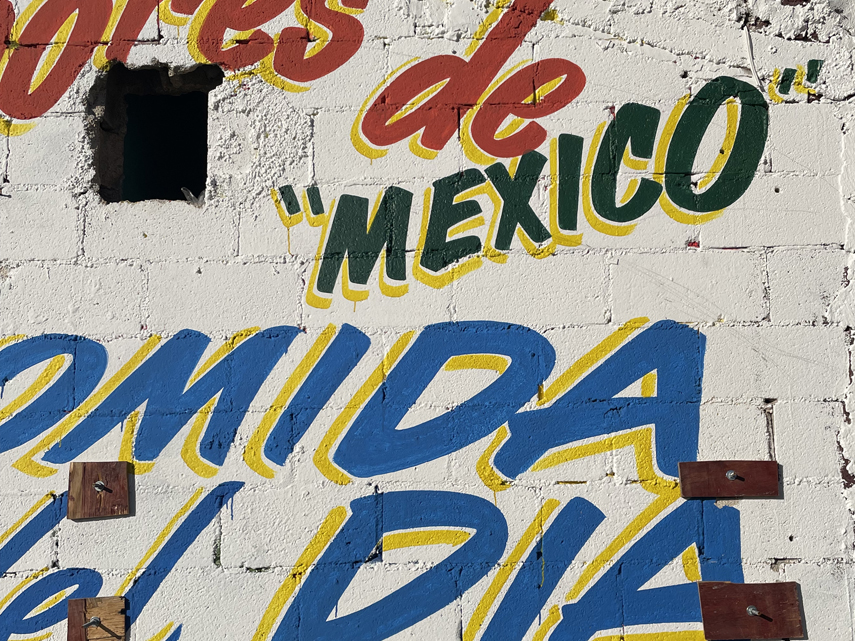
Hand-painted signage in Playa del Carmen, Mexico, February-March 2022.



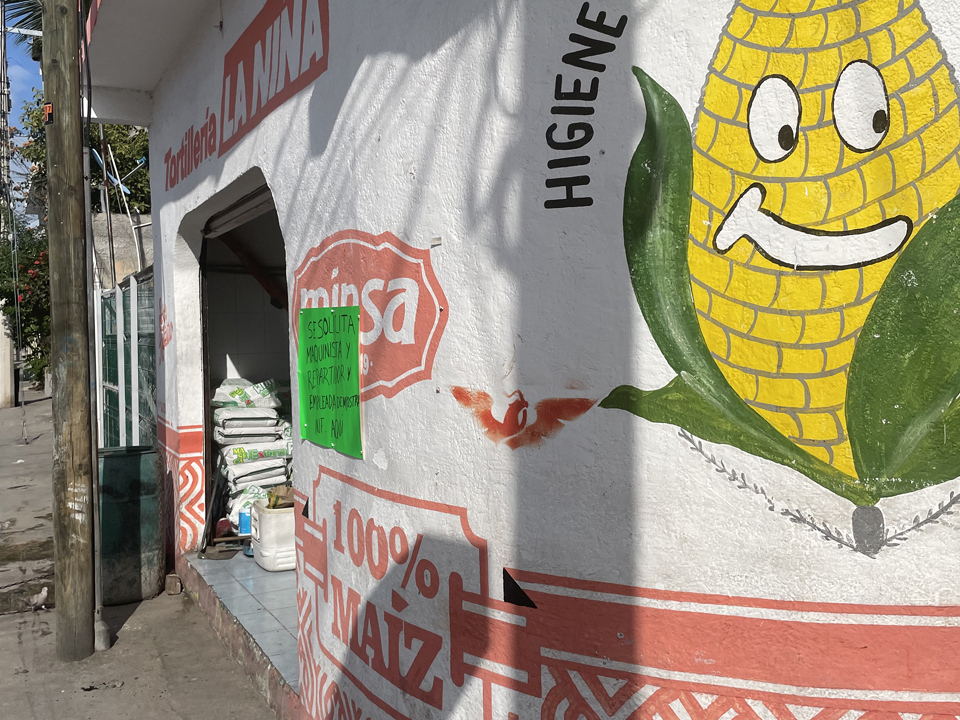
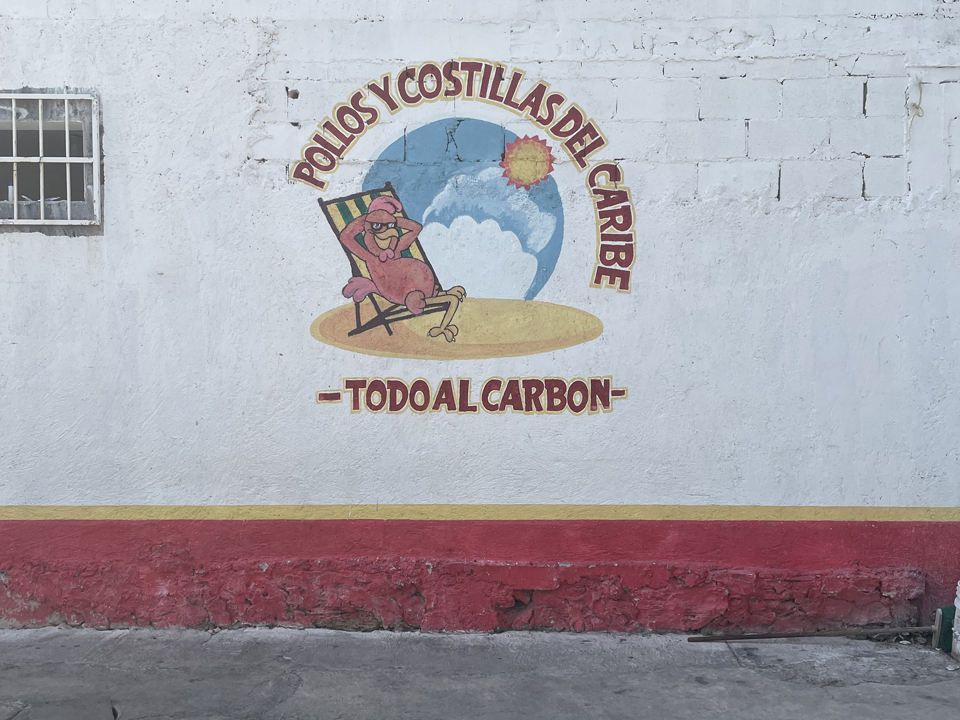
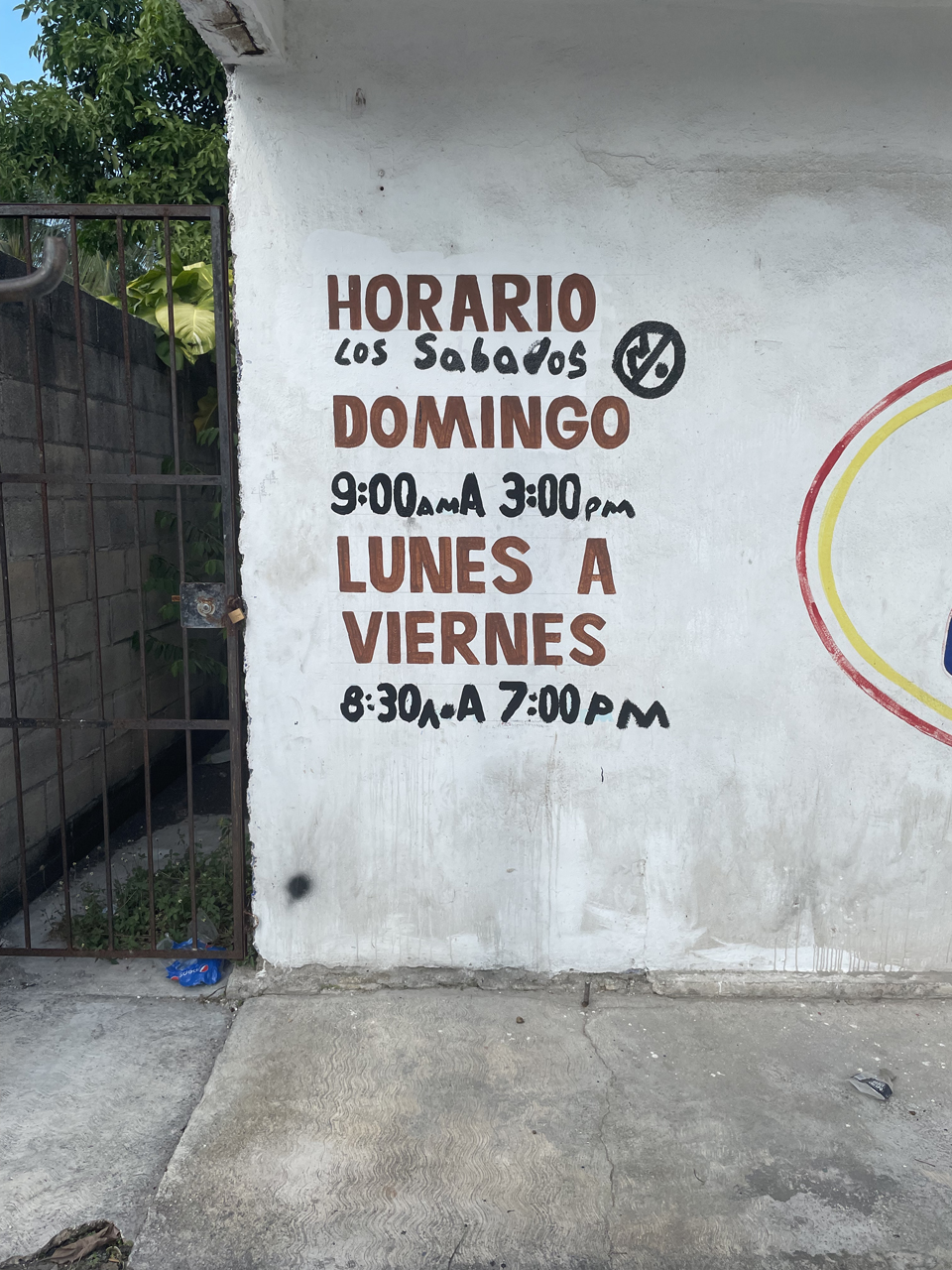
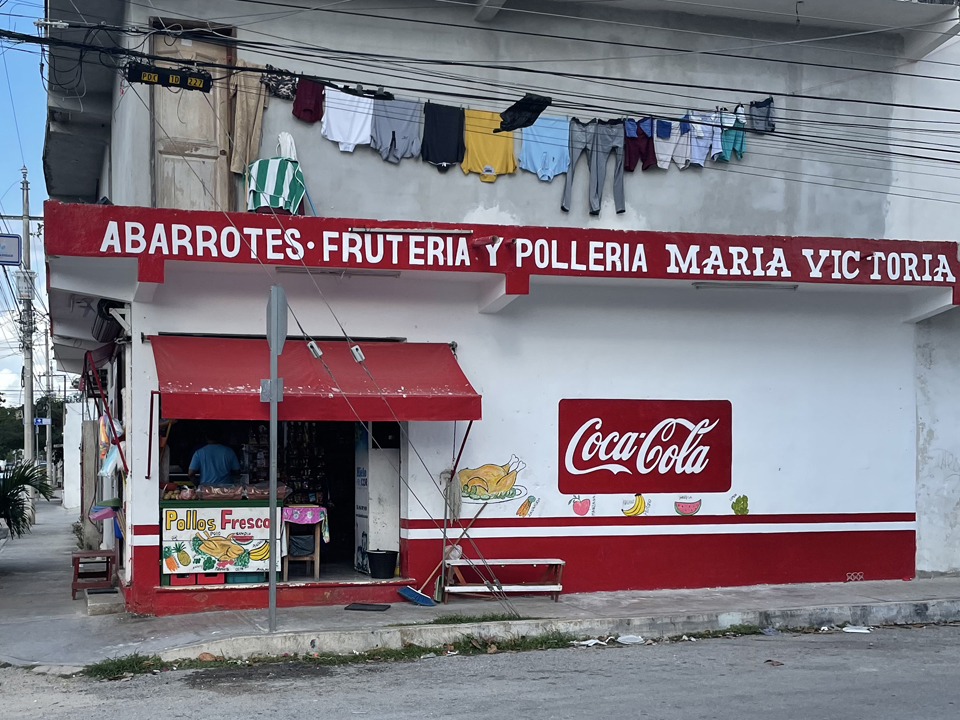
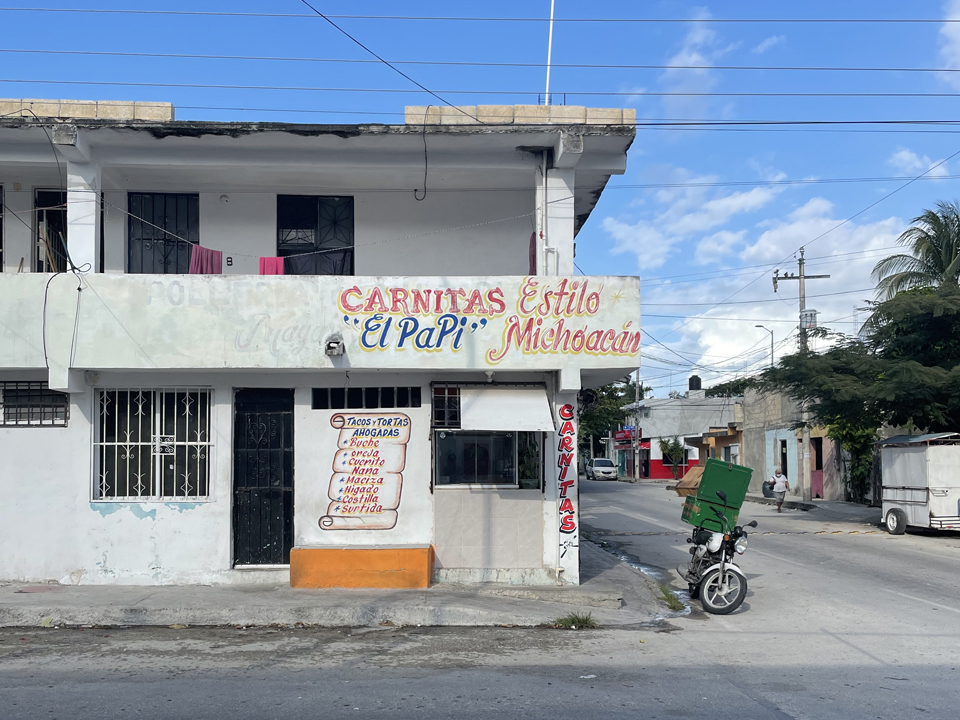
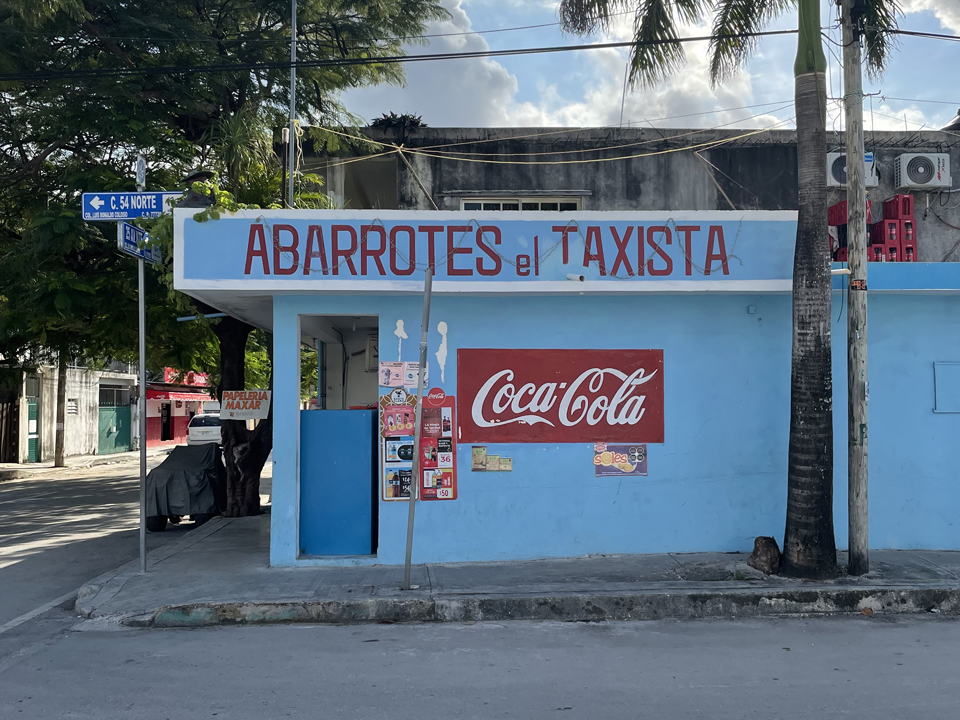
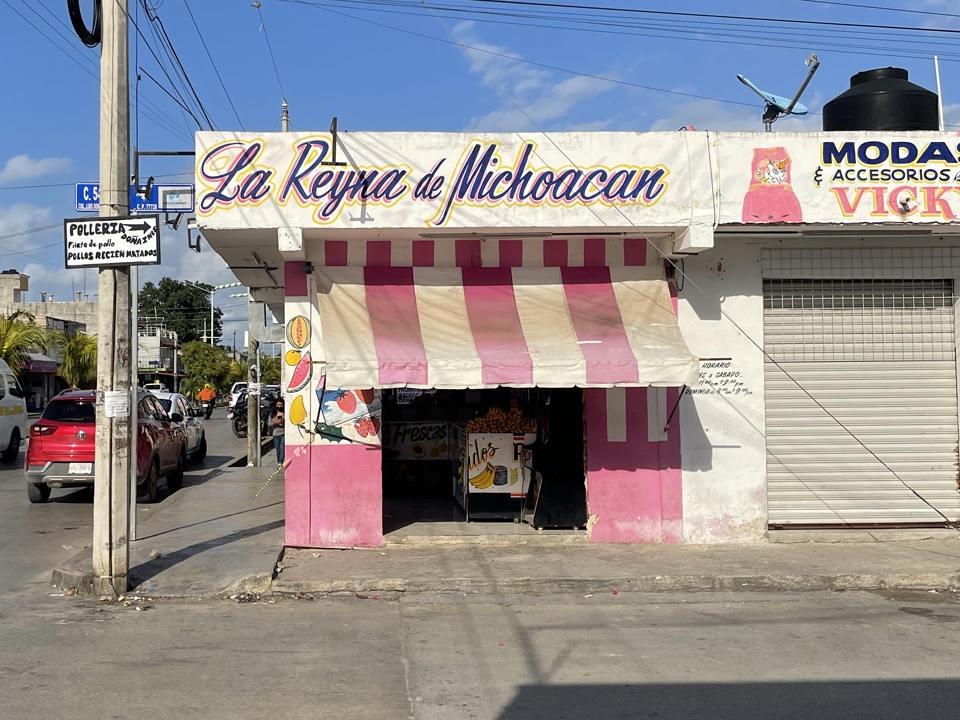
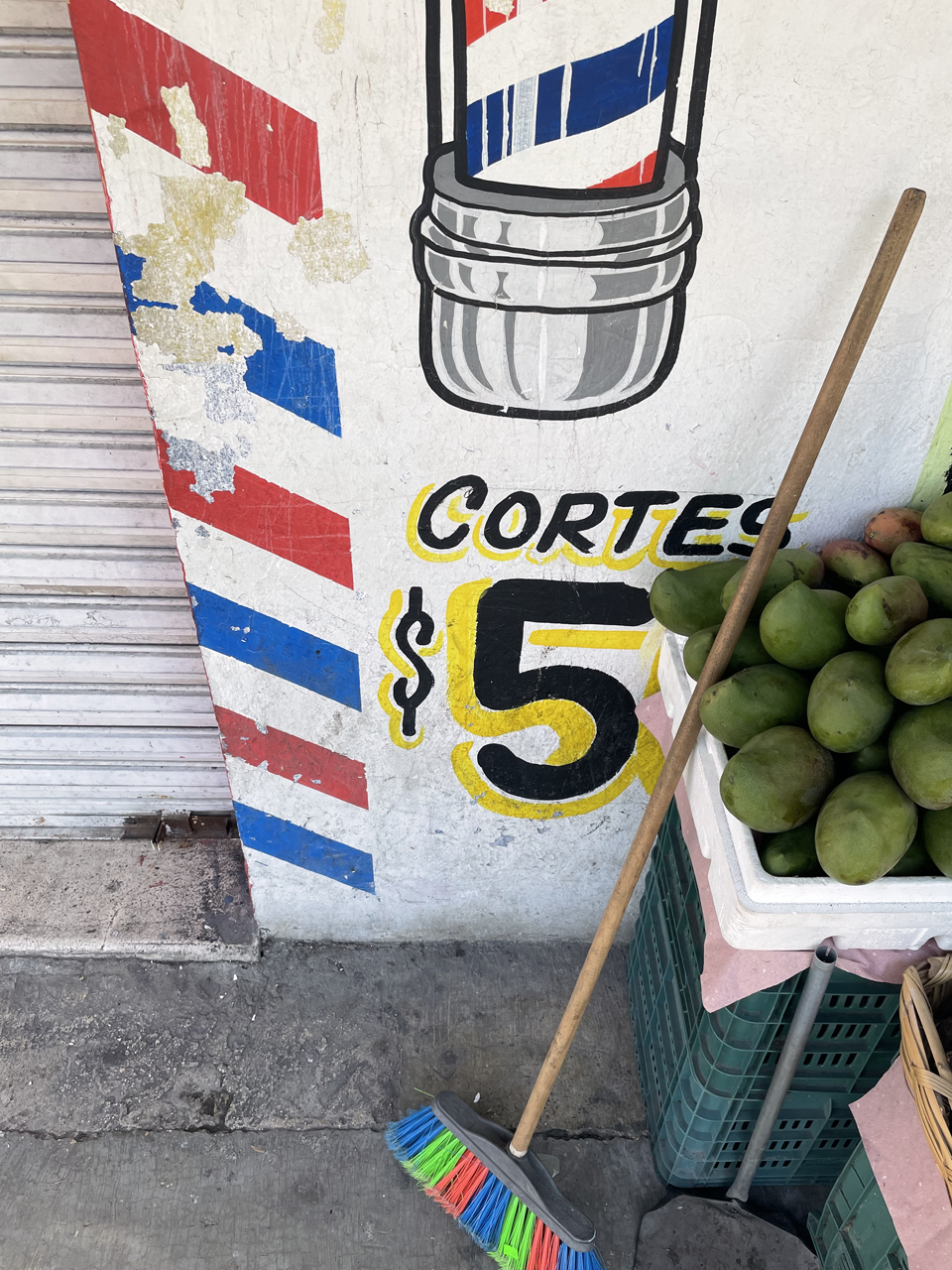


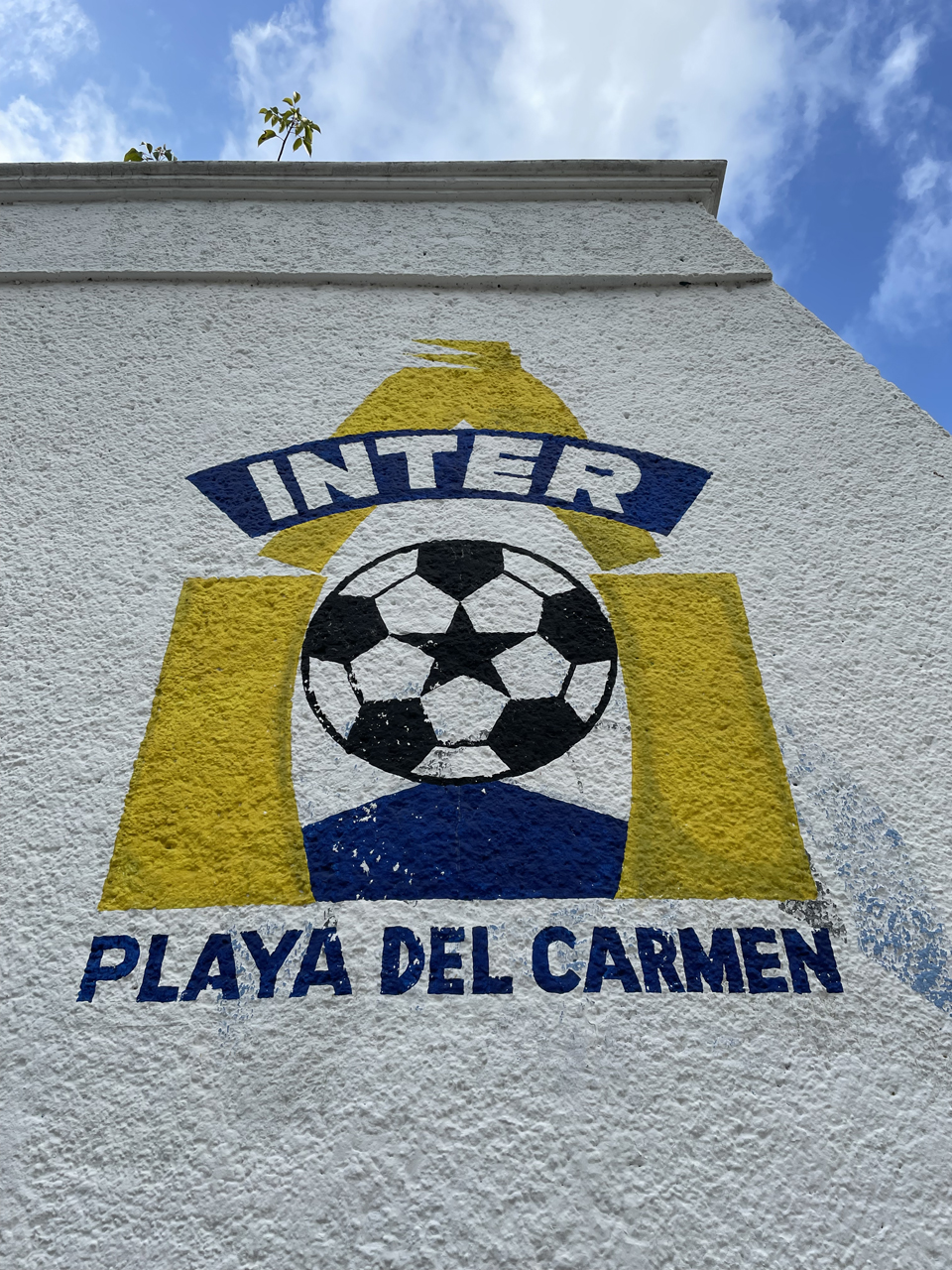
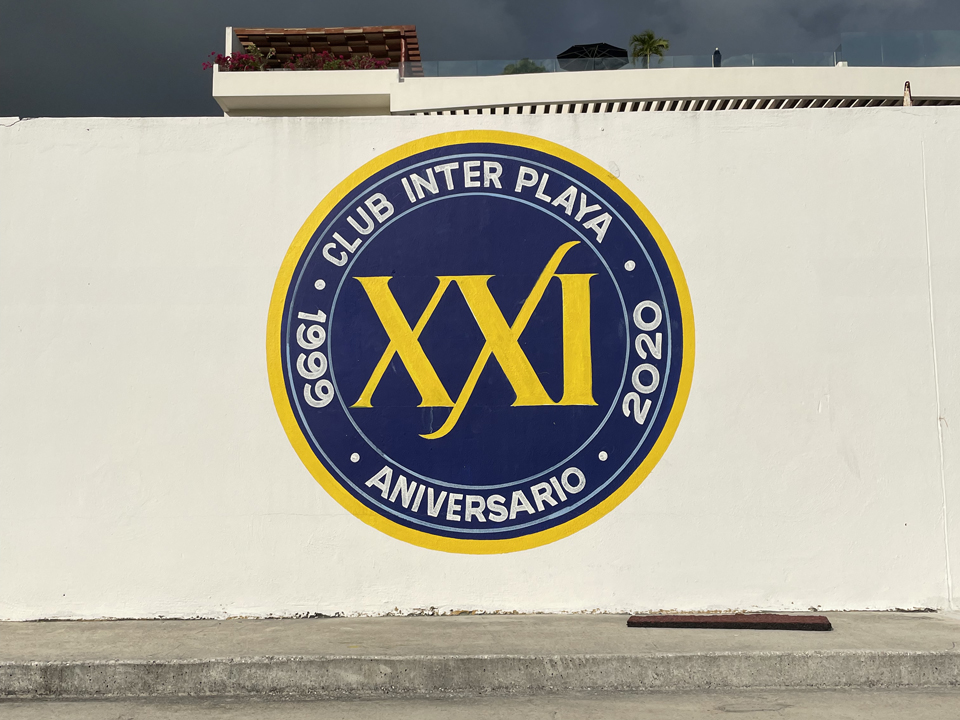
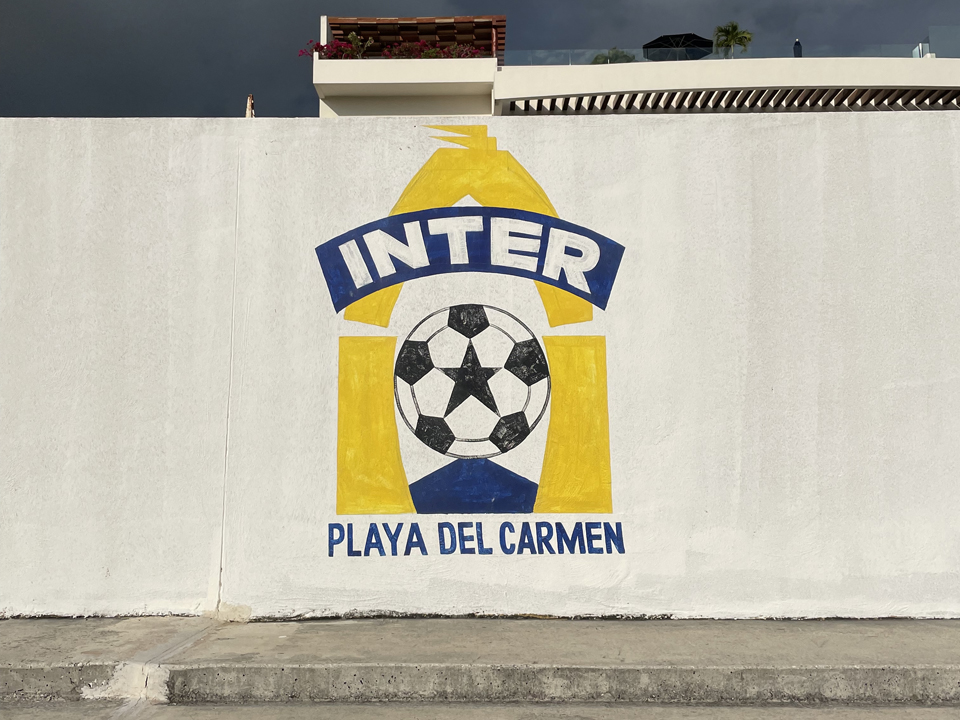

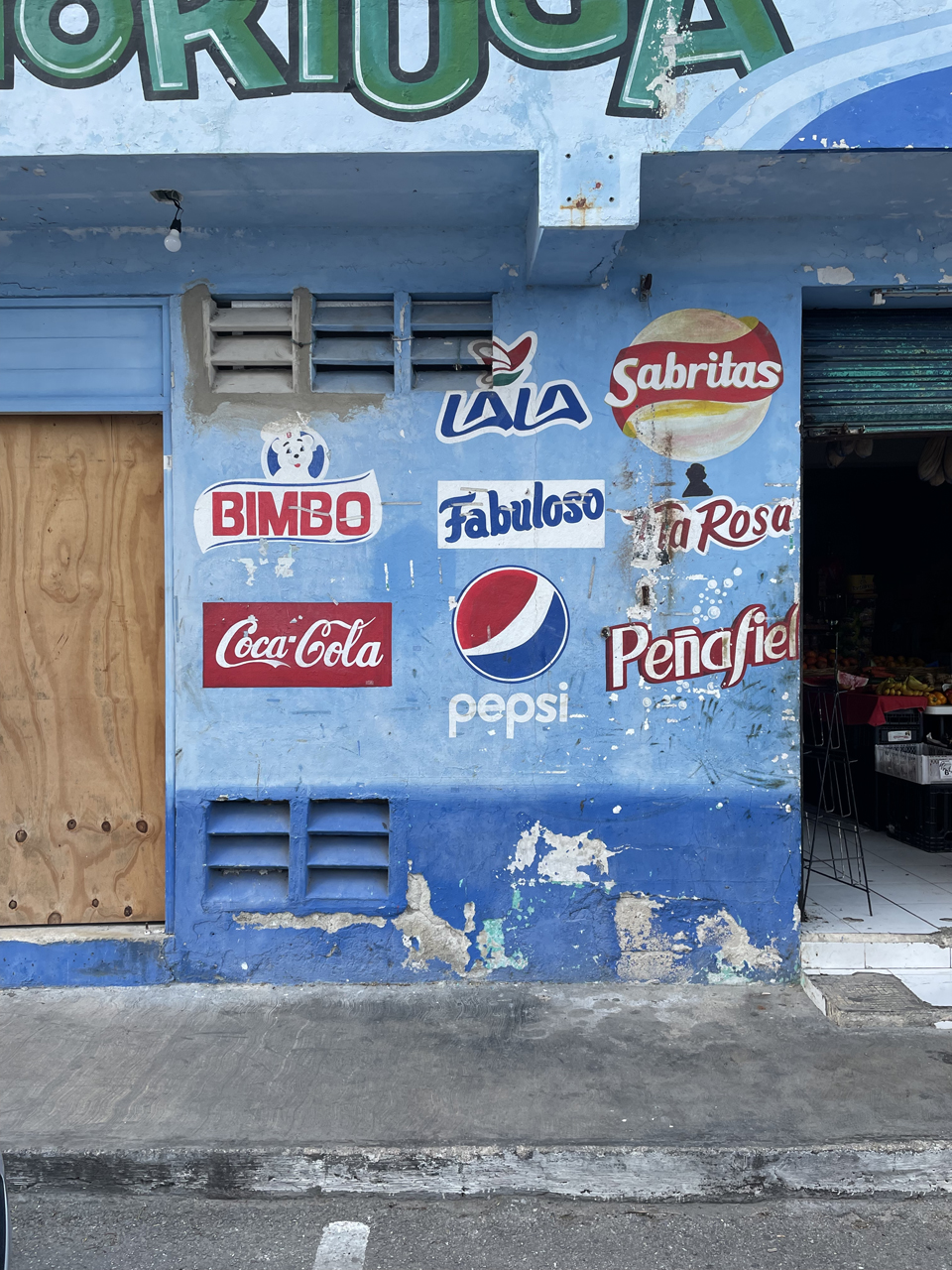

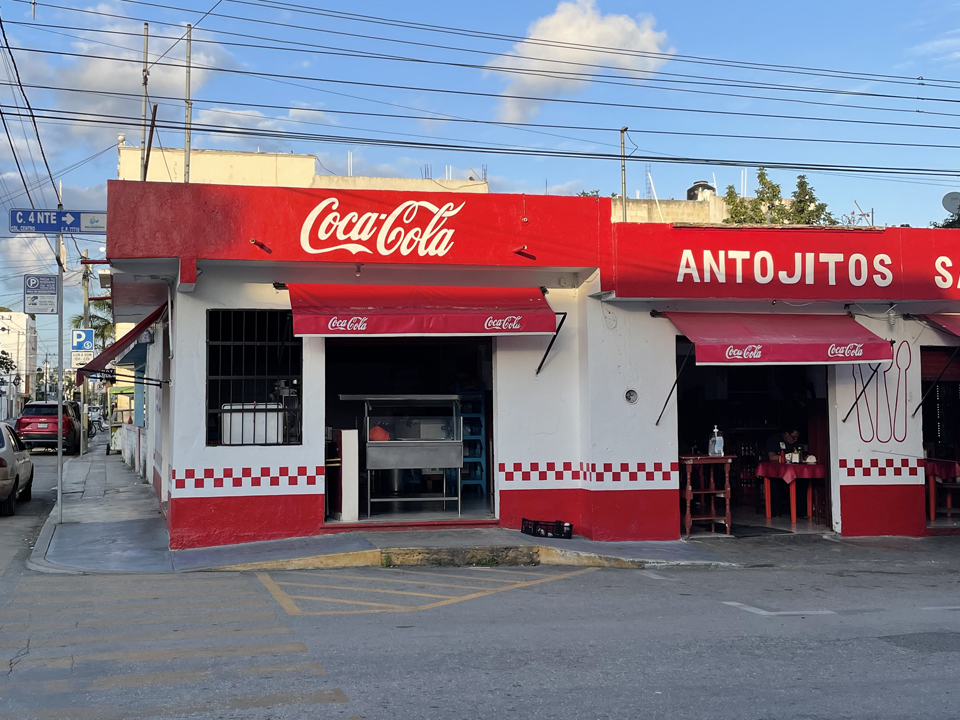
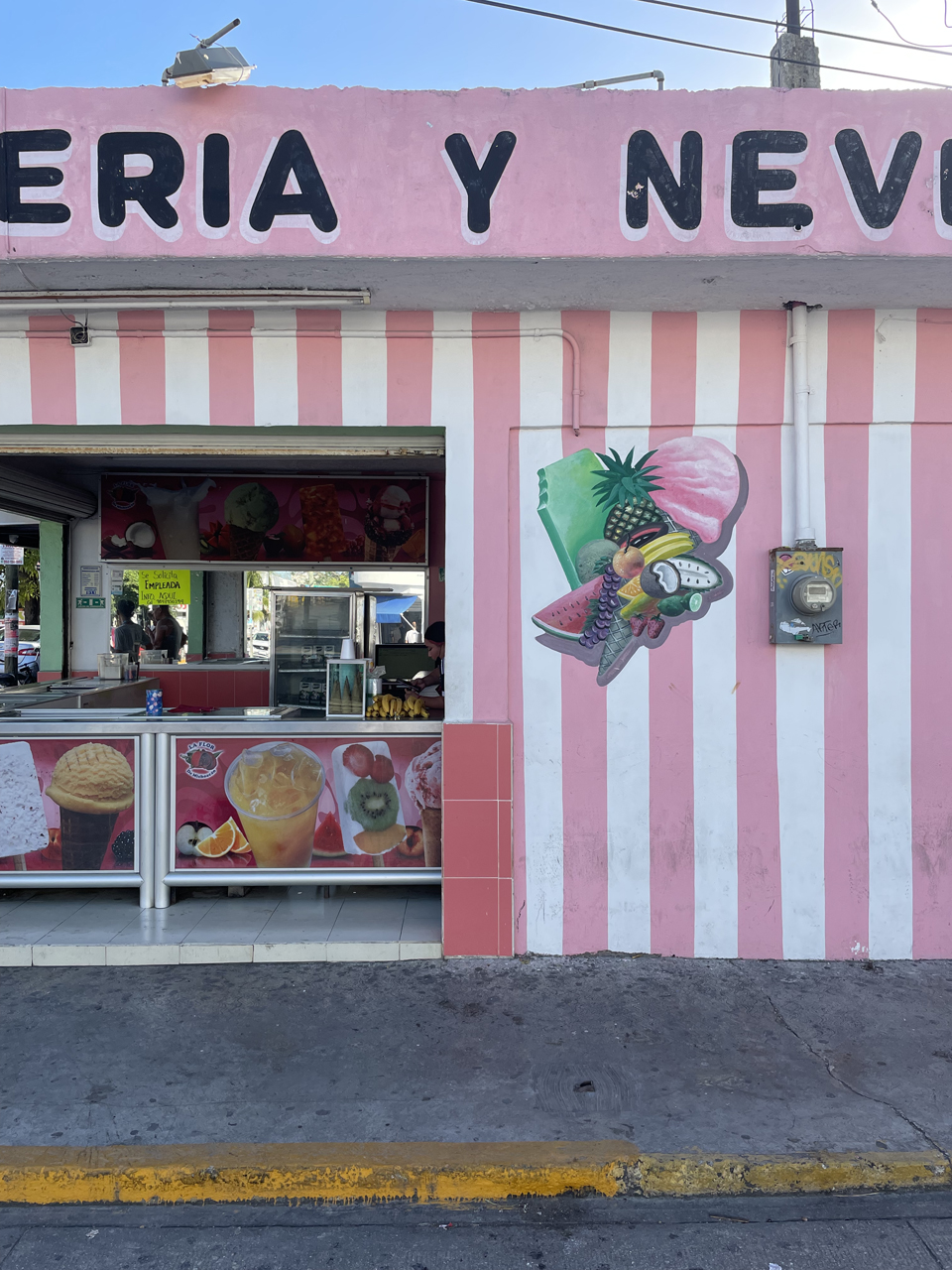





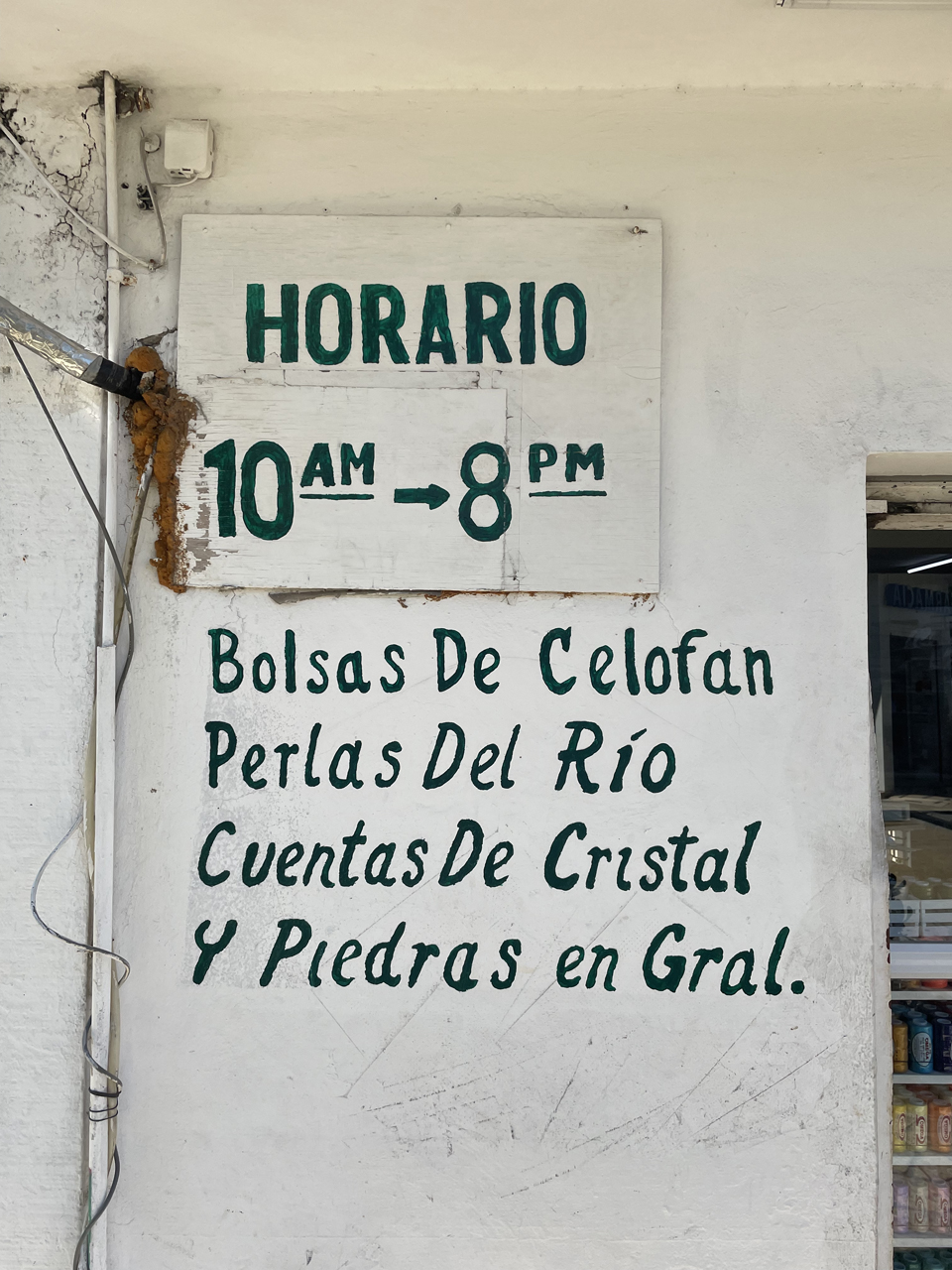
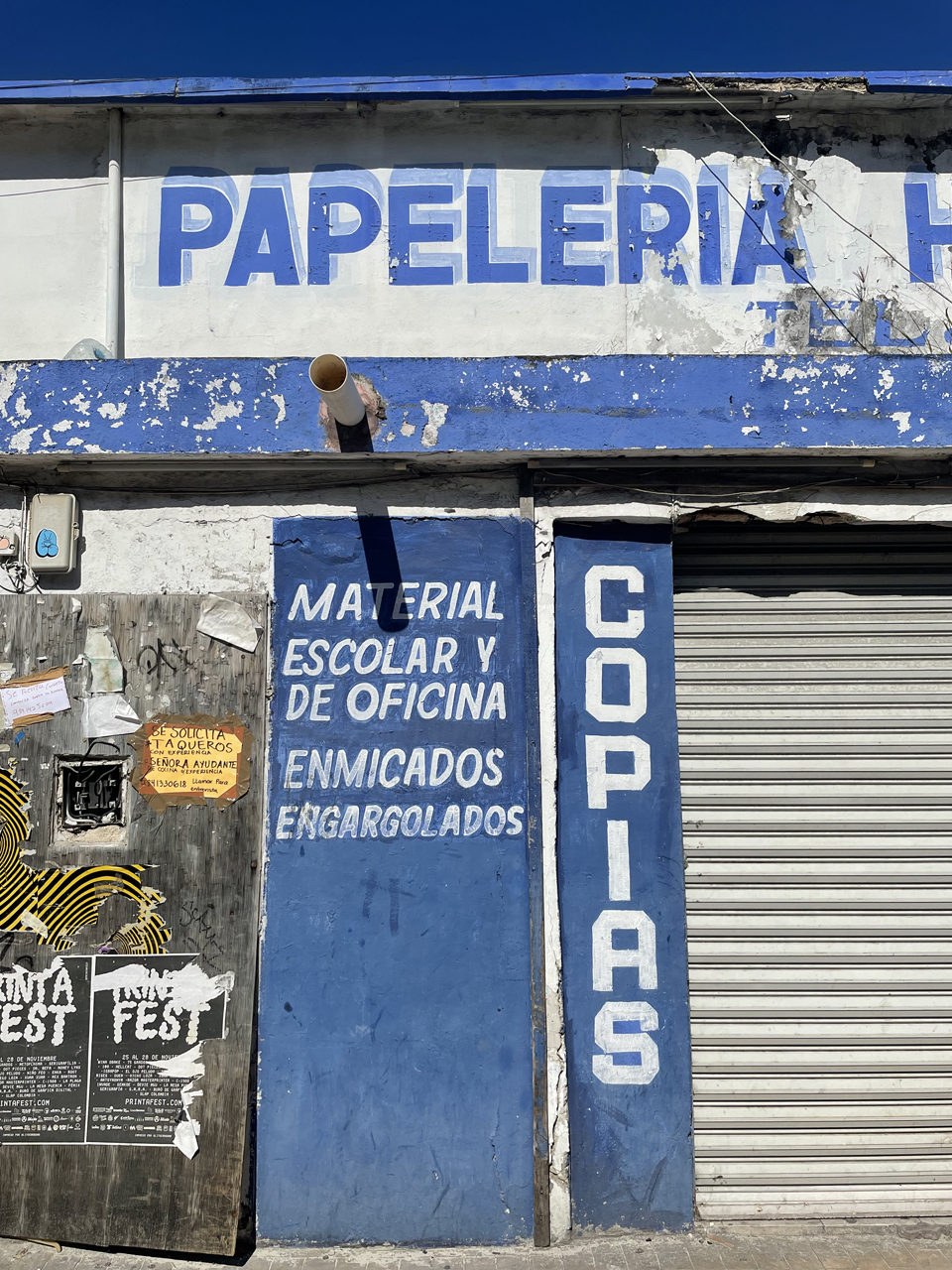
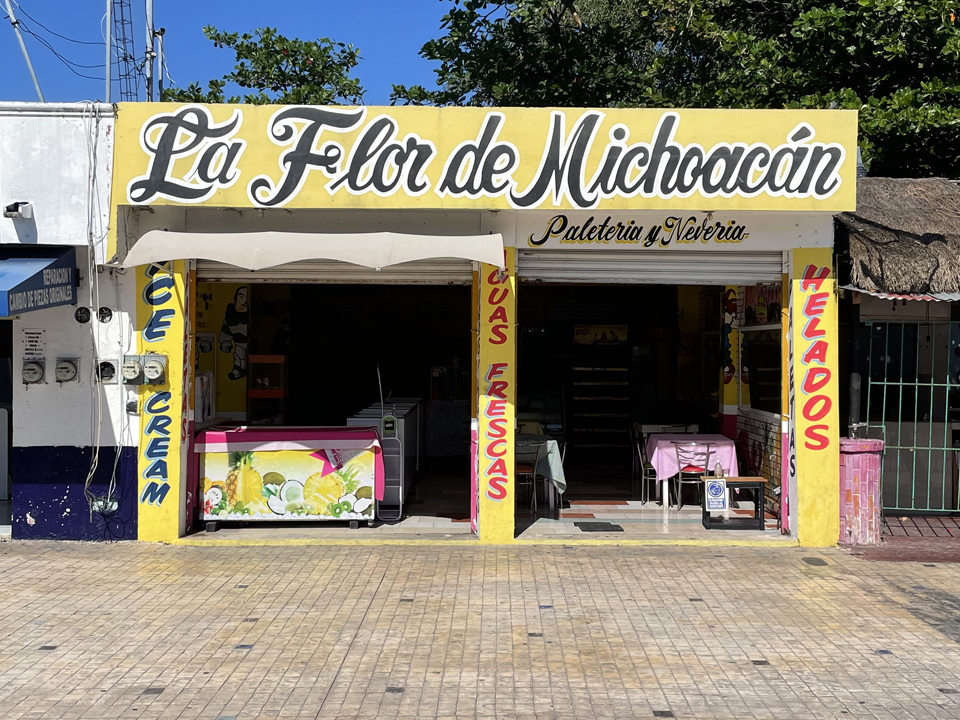
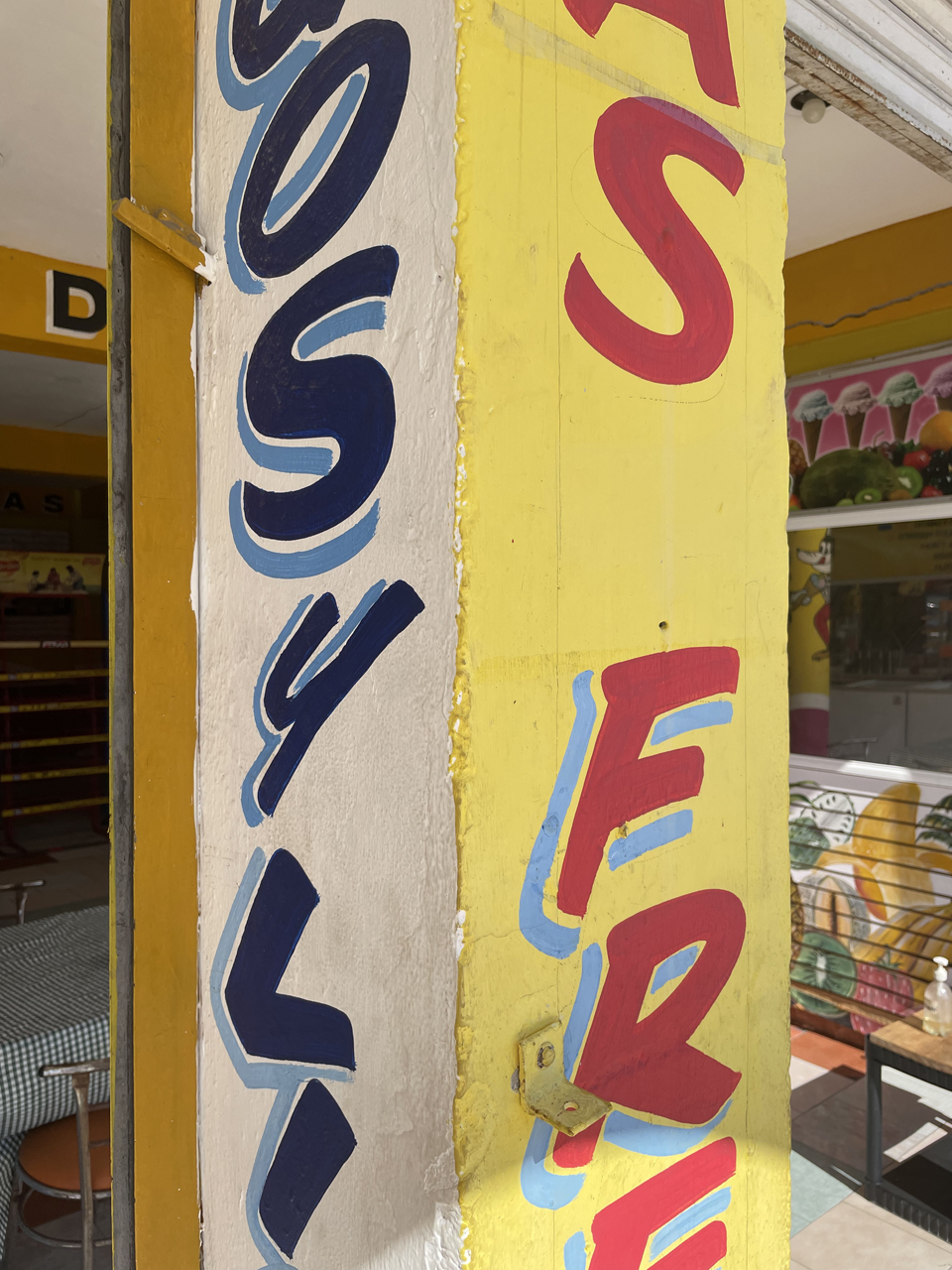

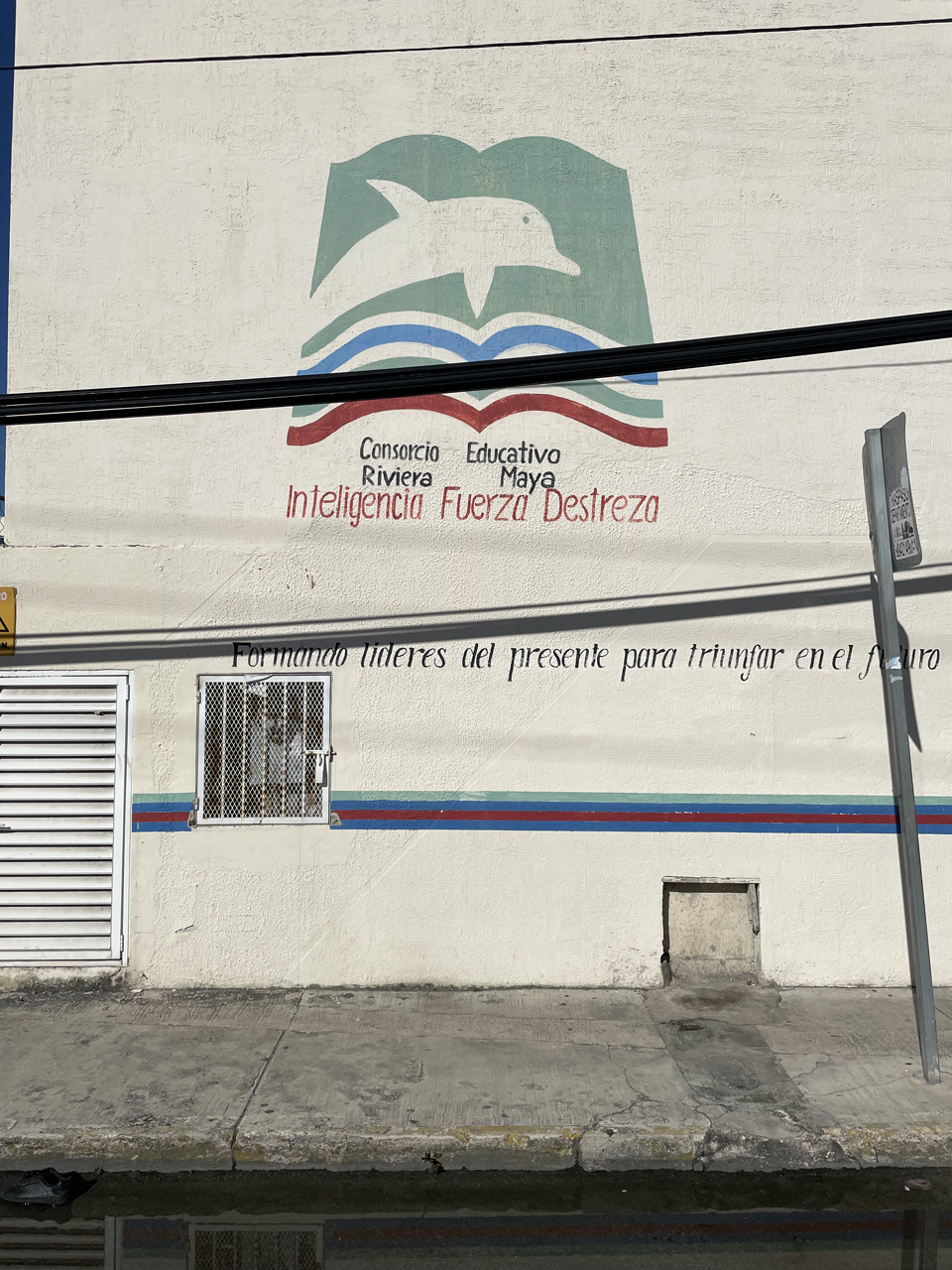
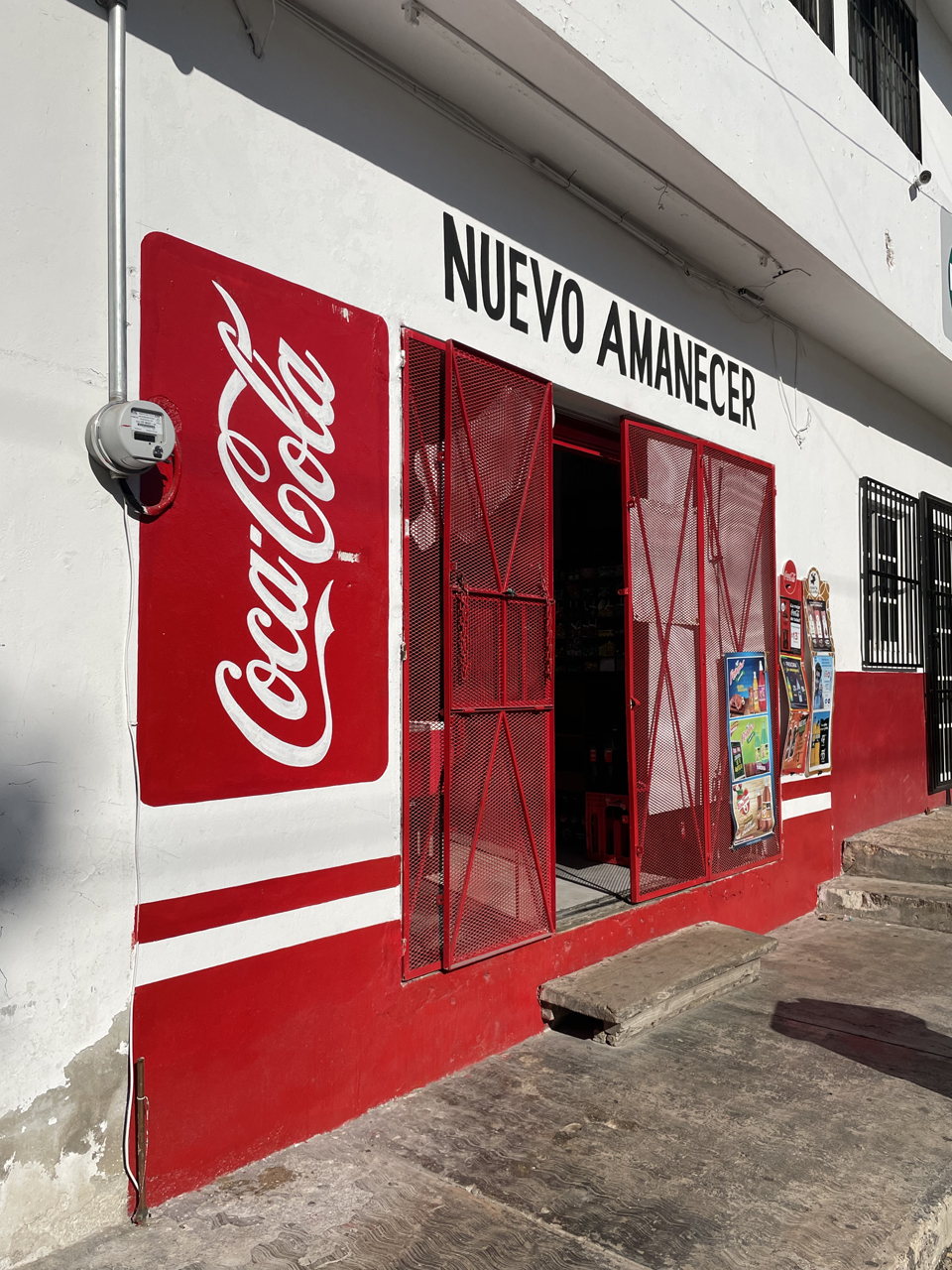
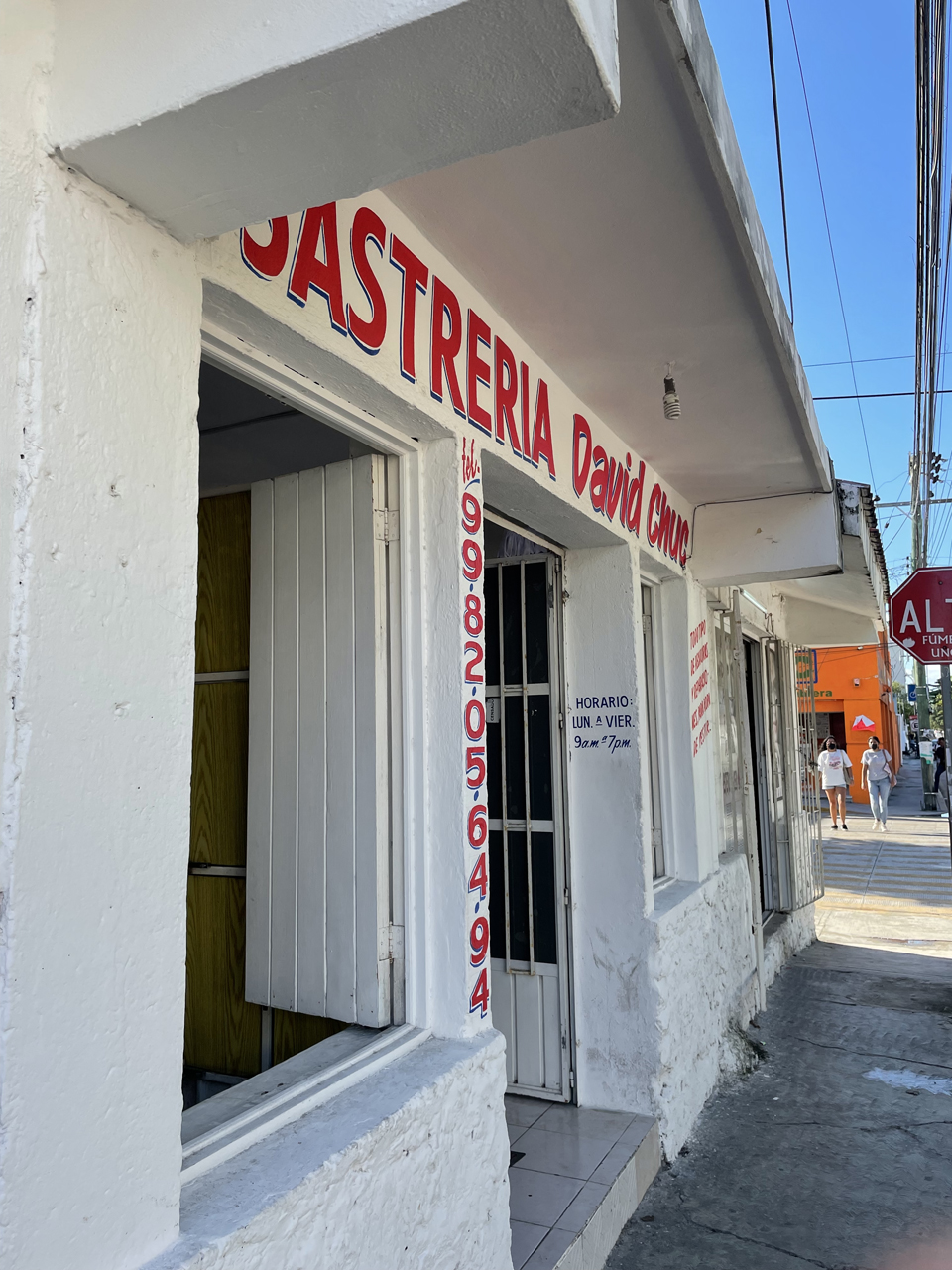
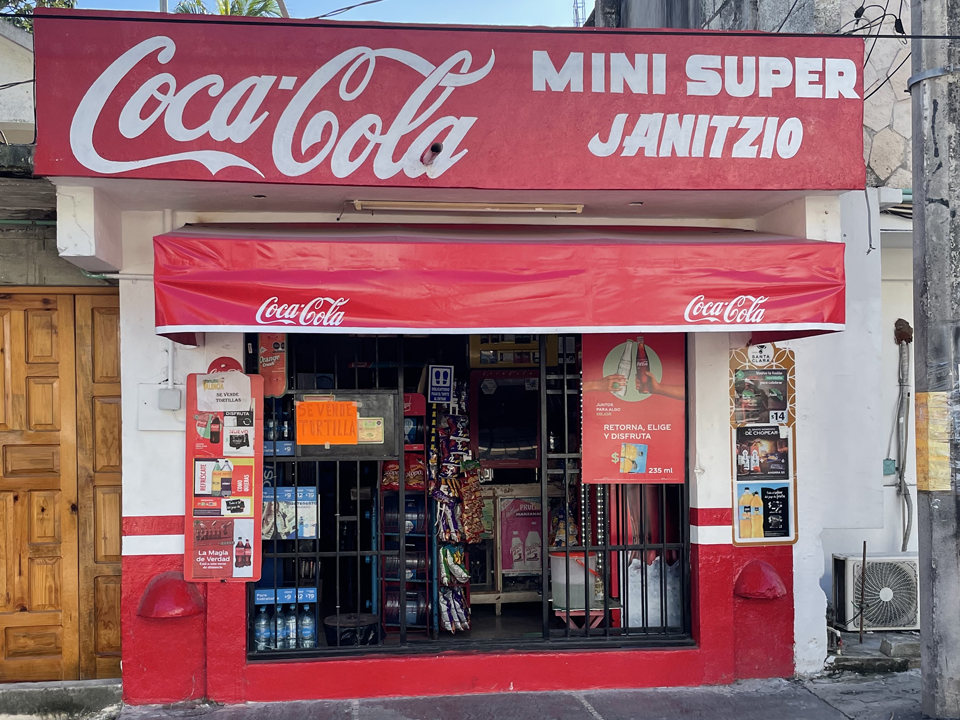
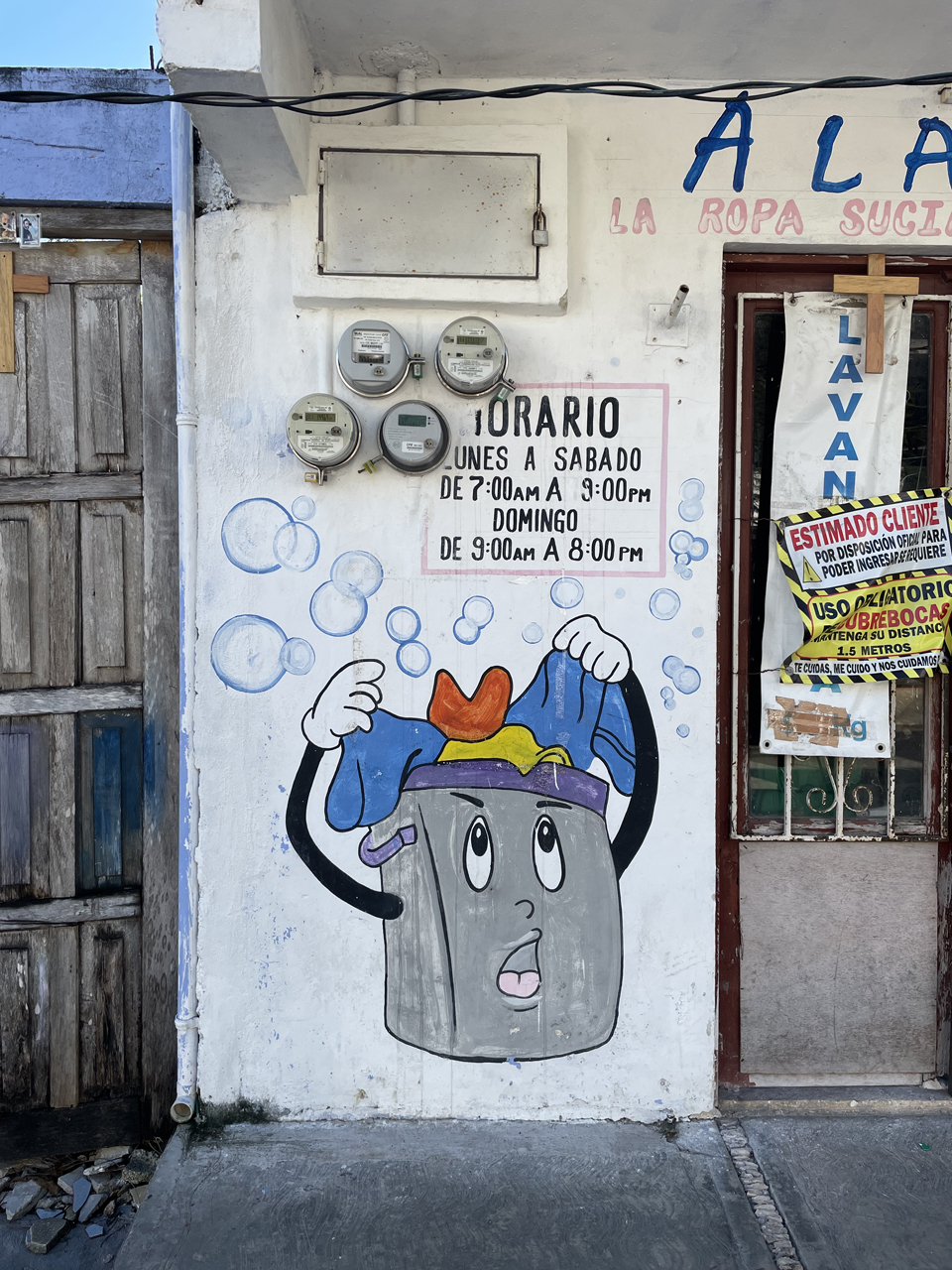

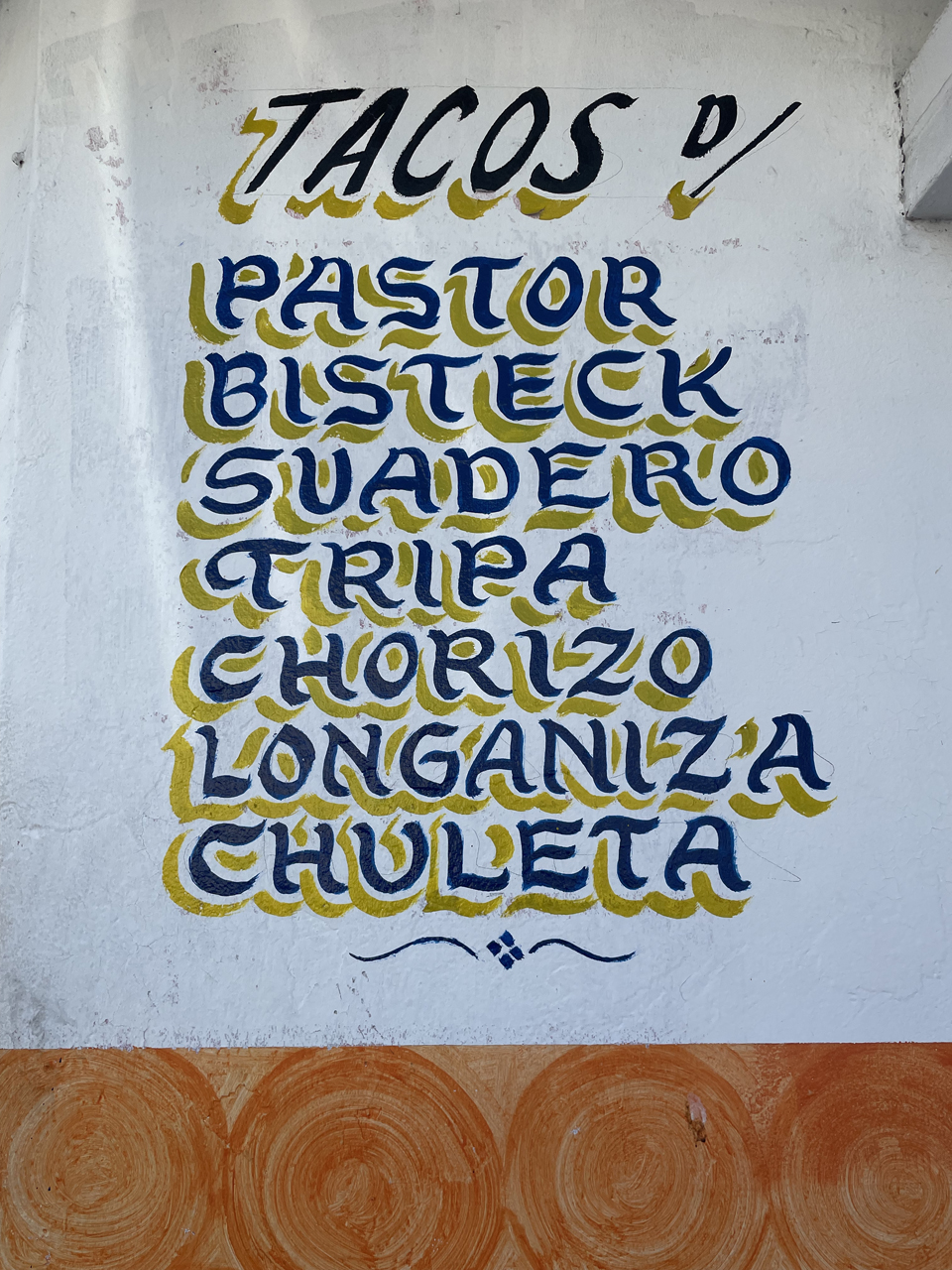

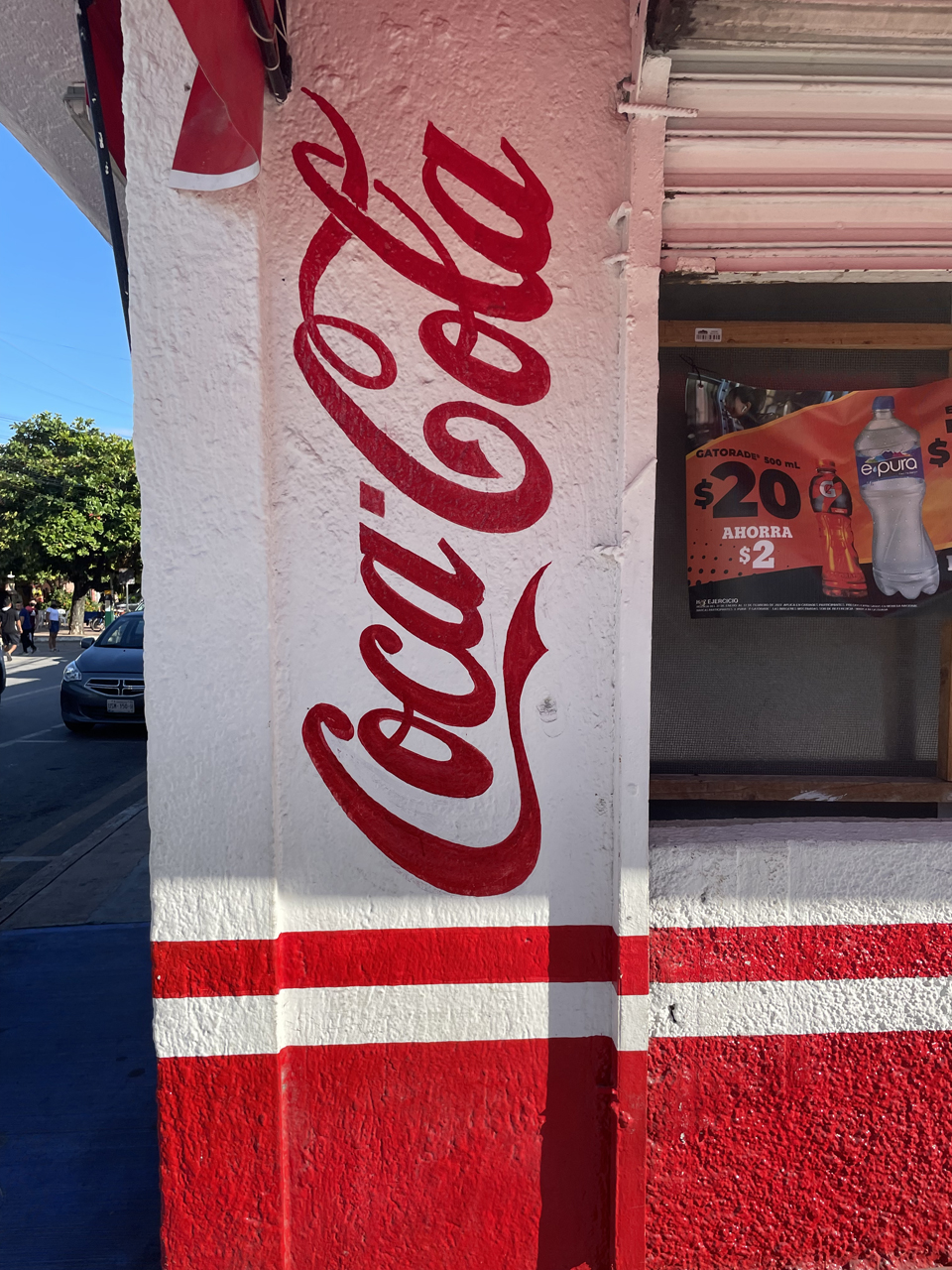



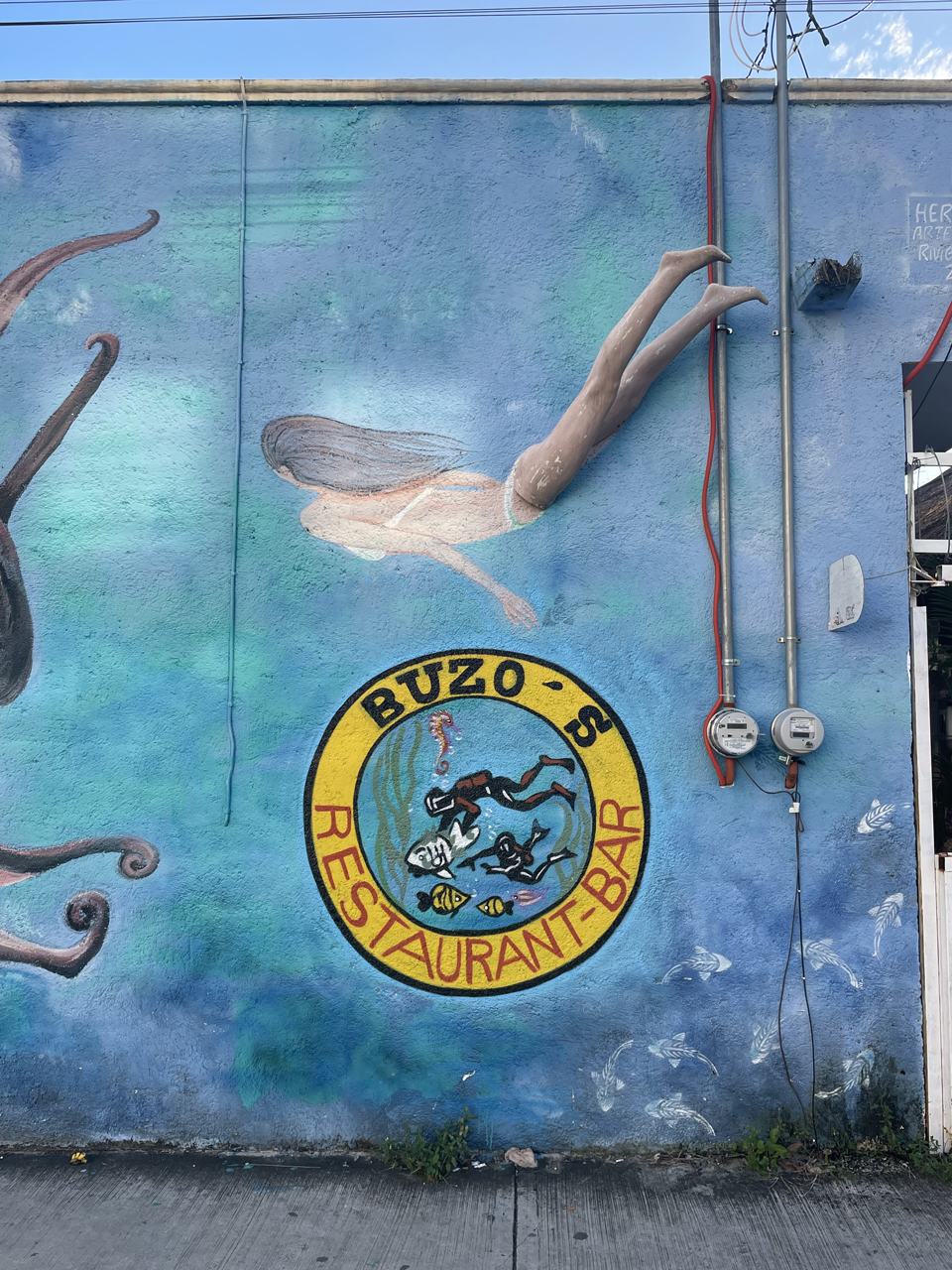


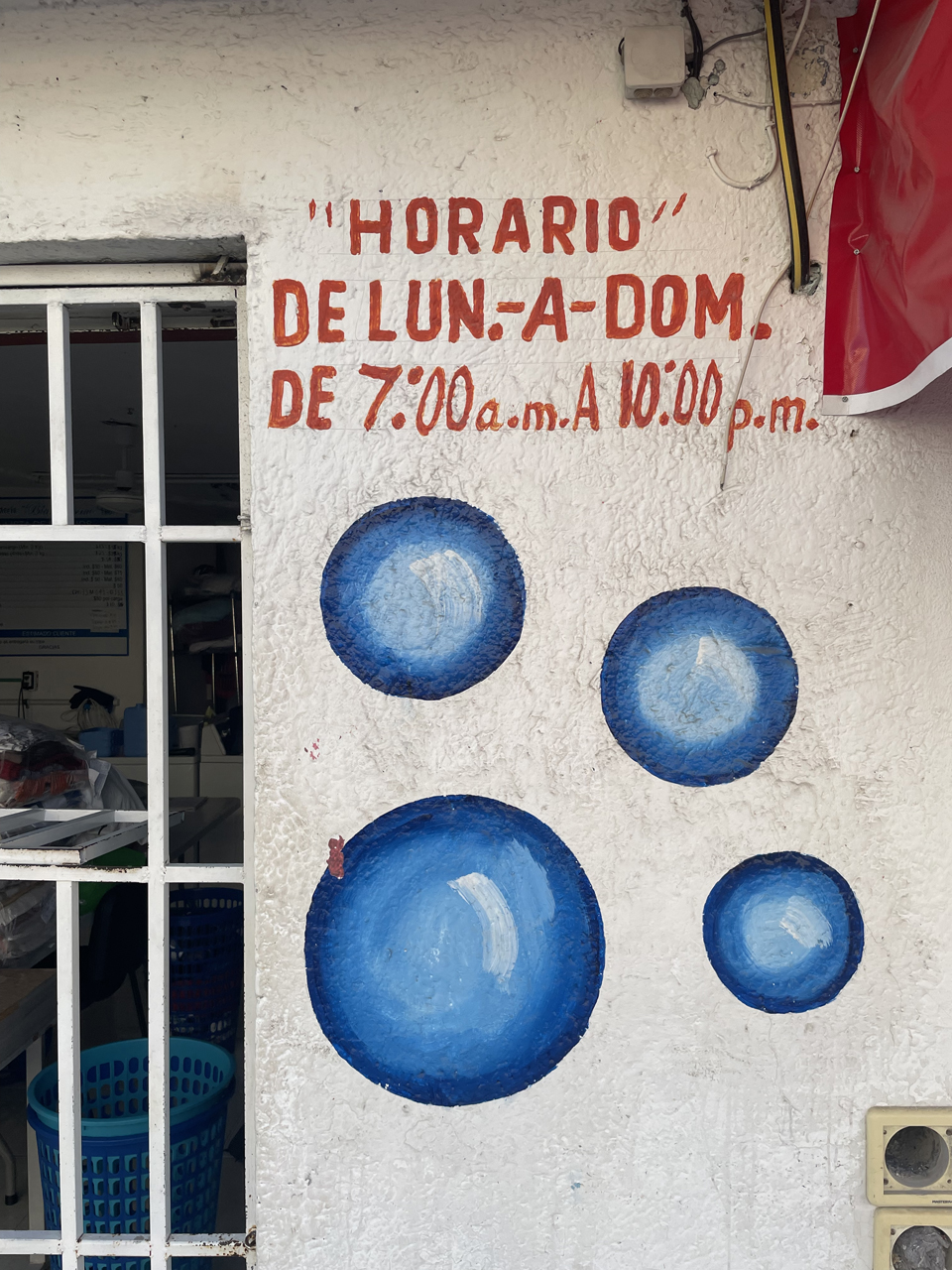


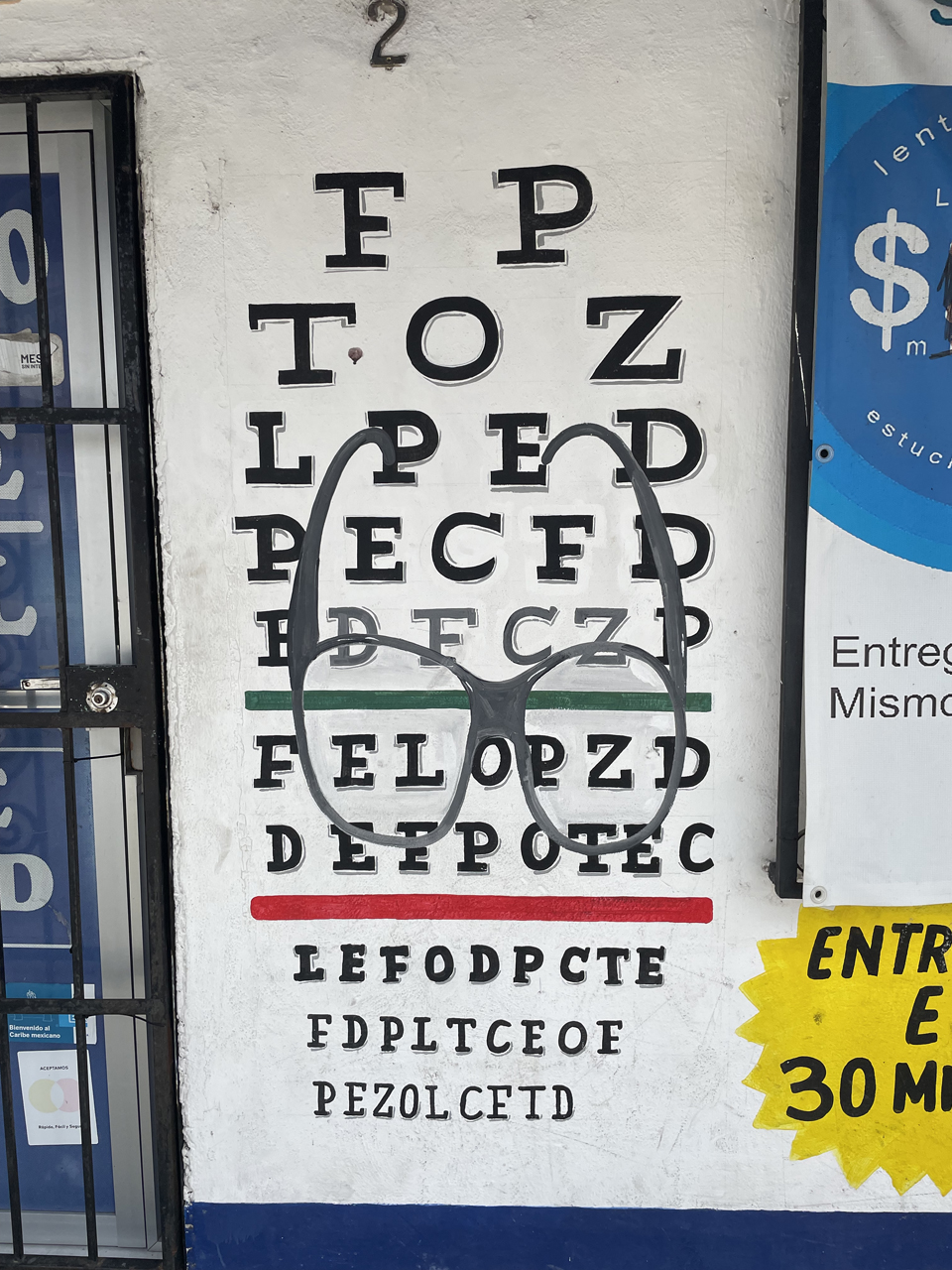

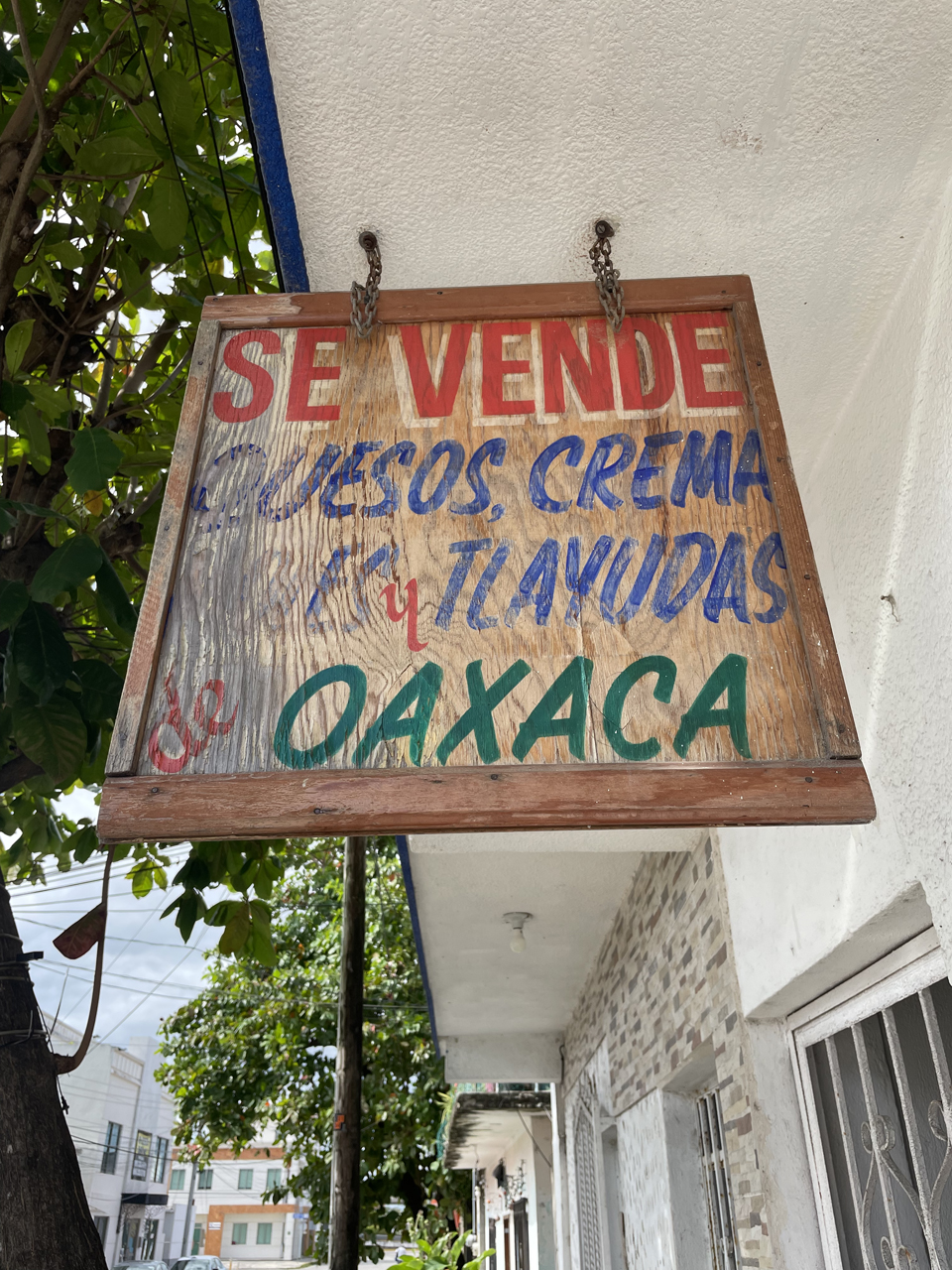
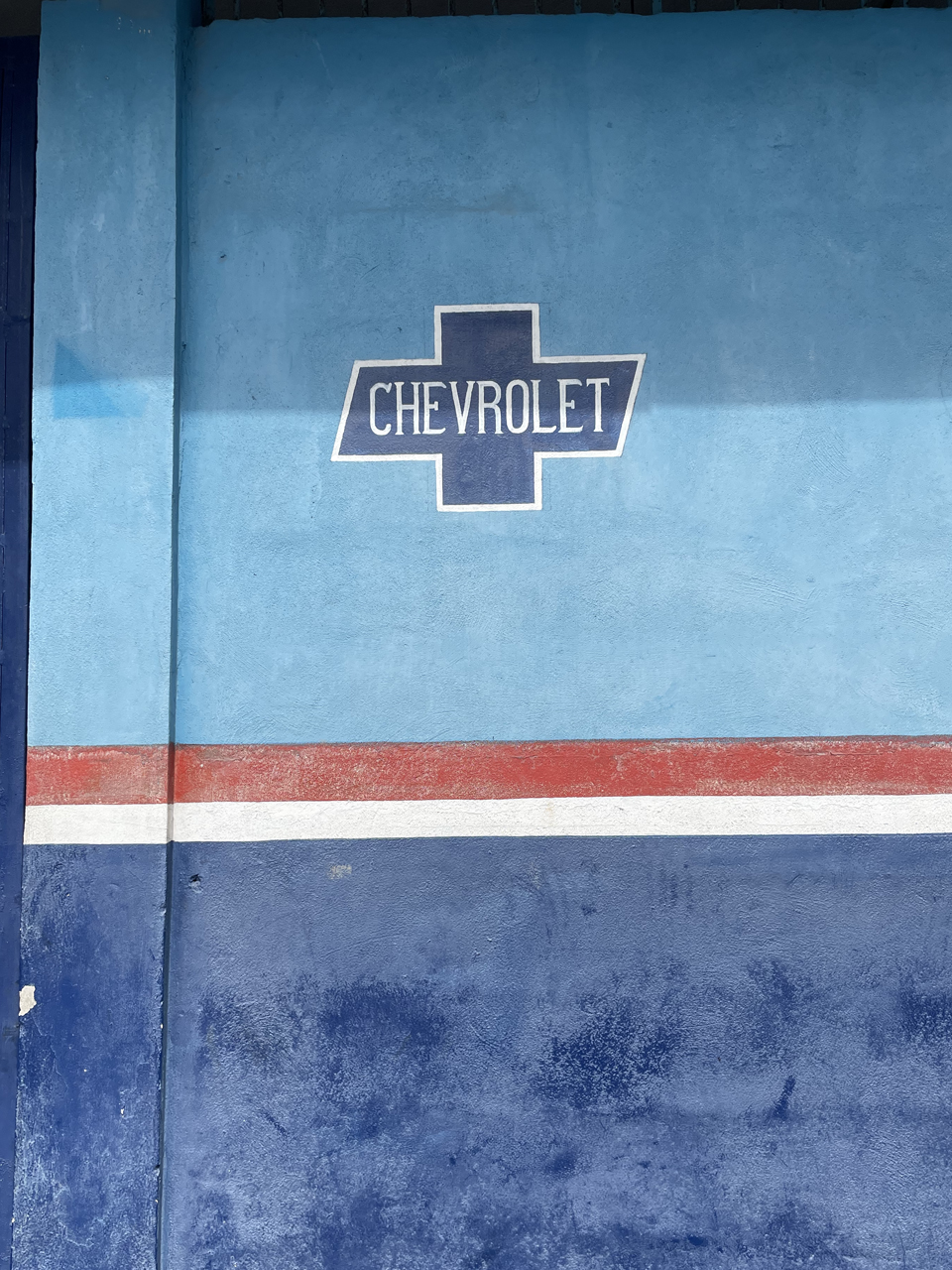
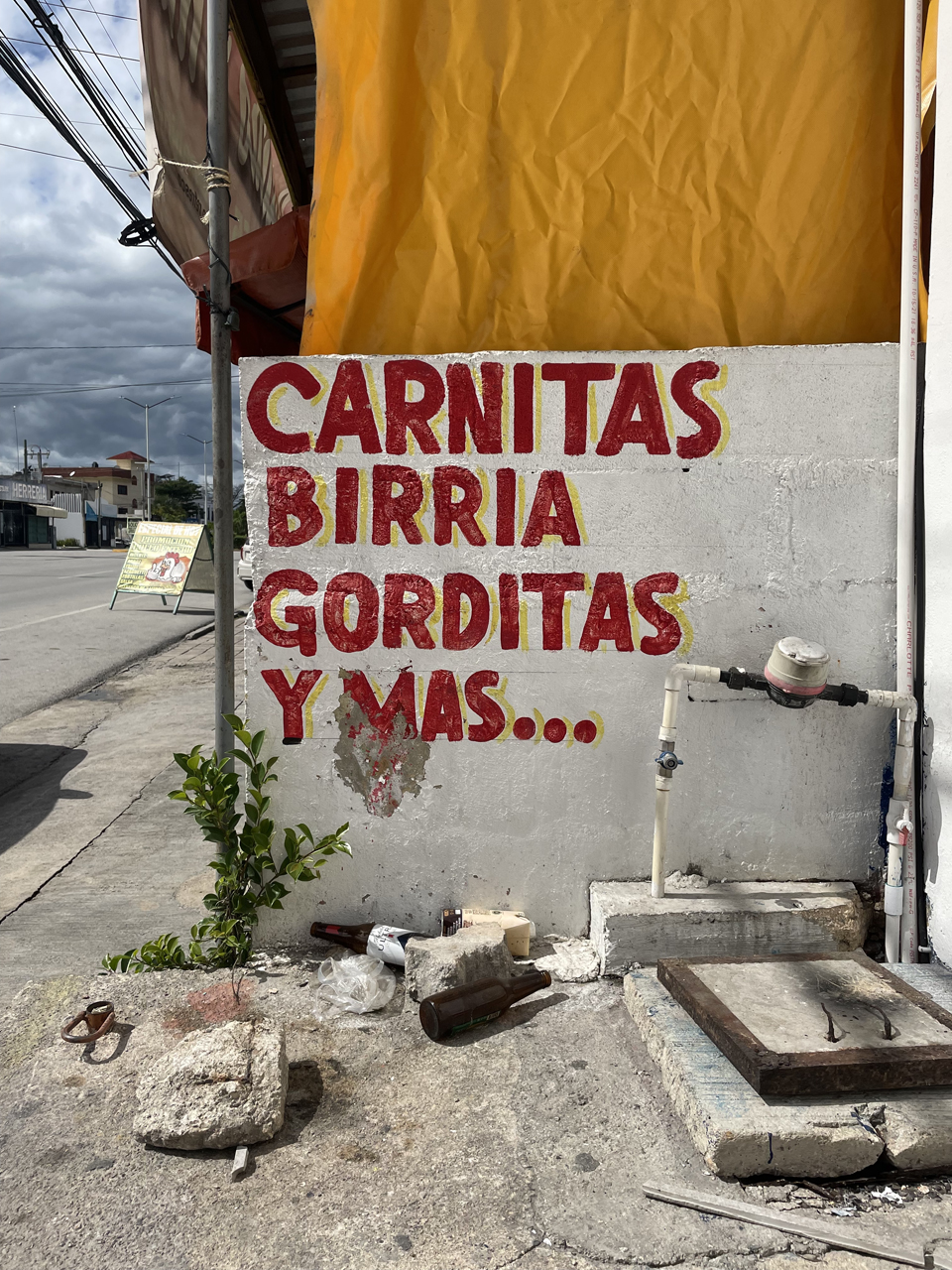




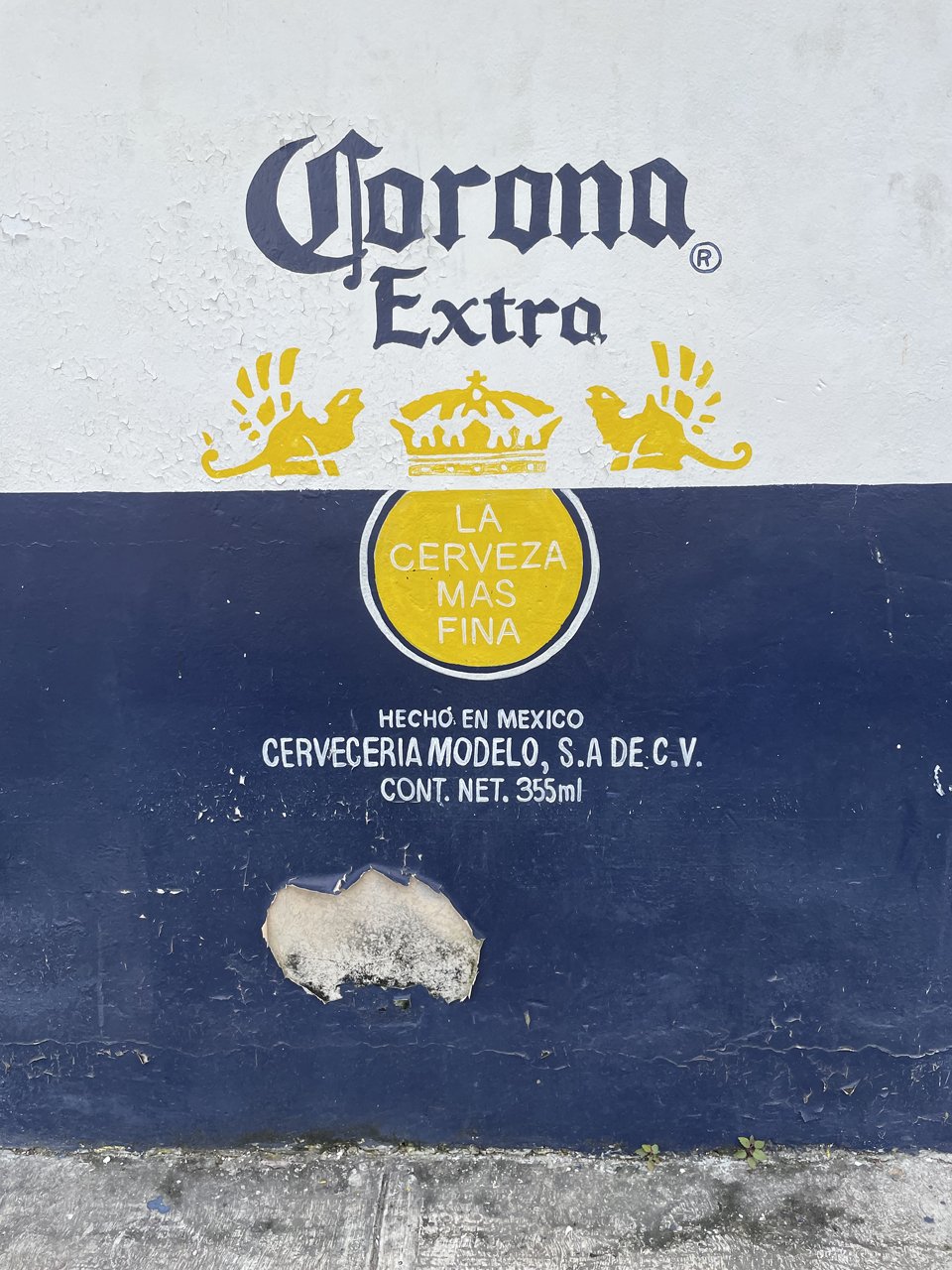
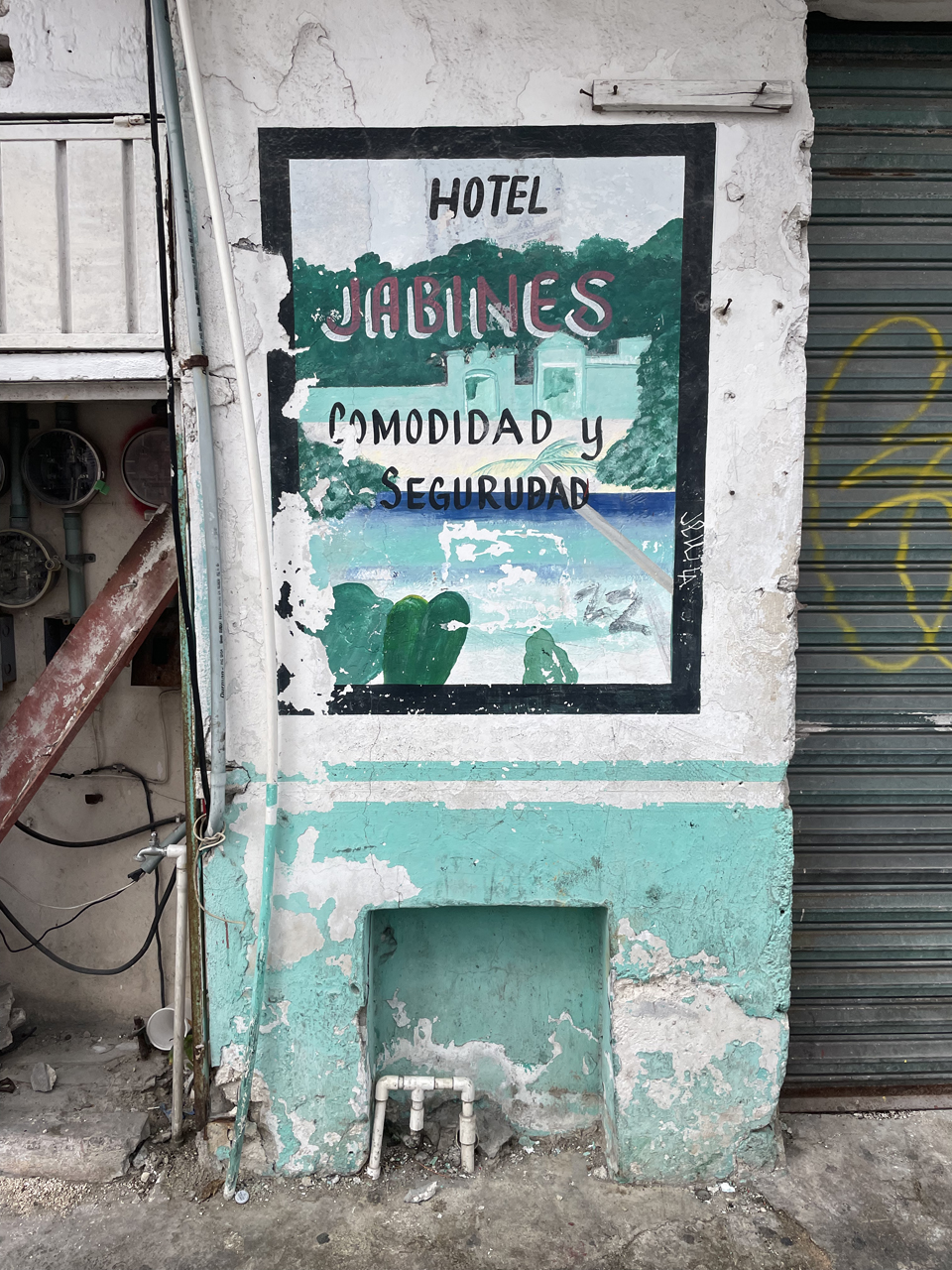
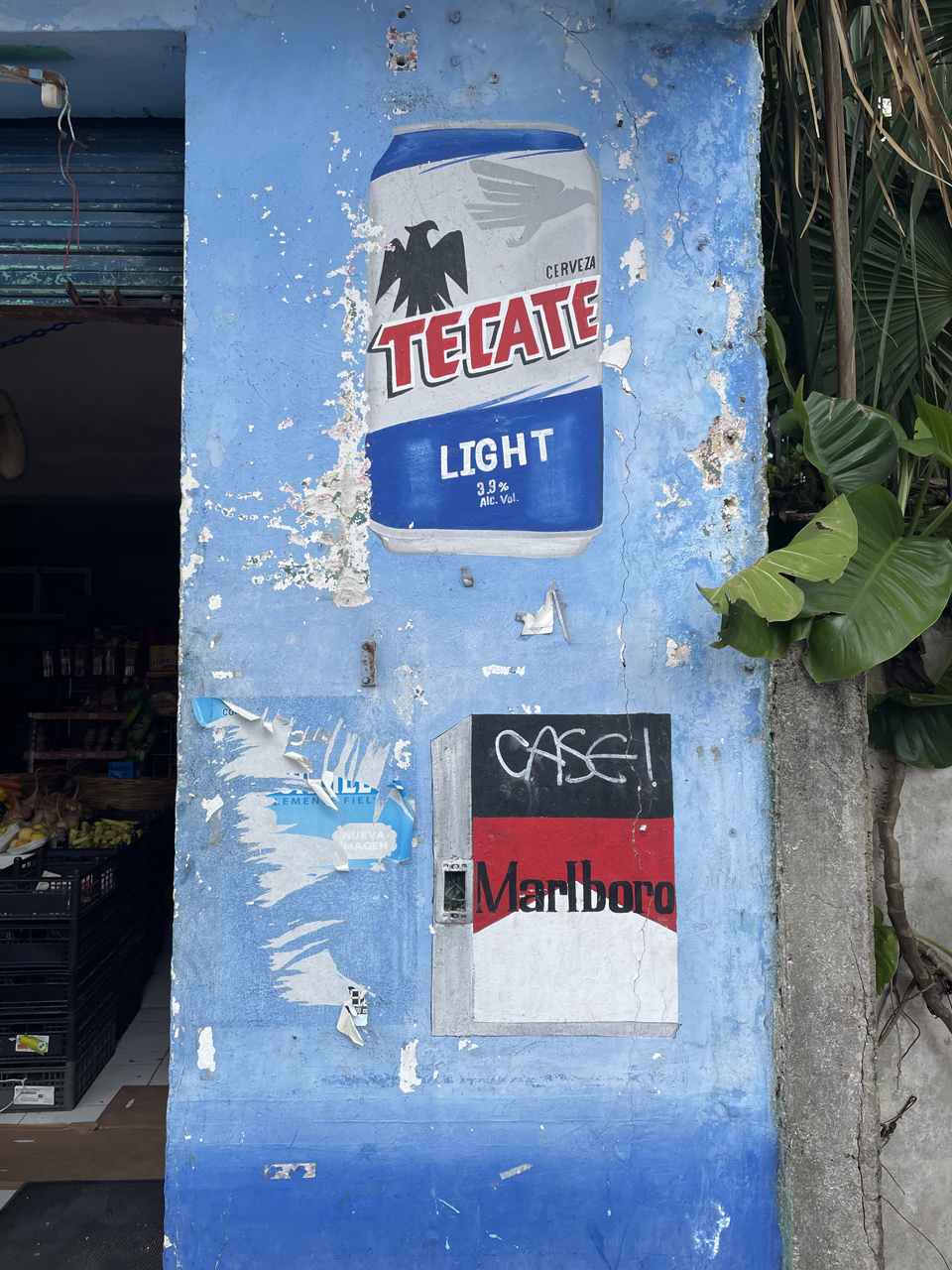






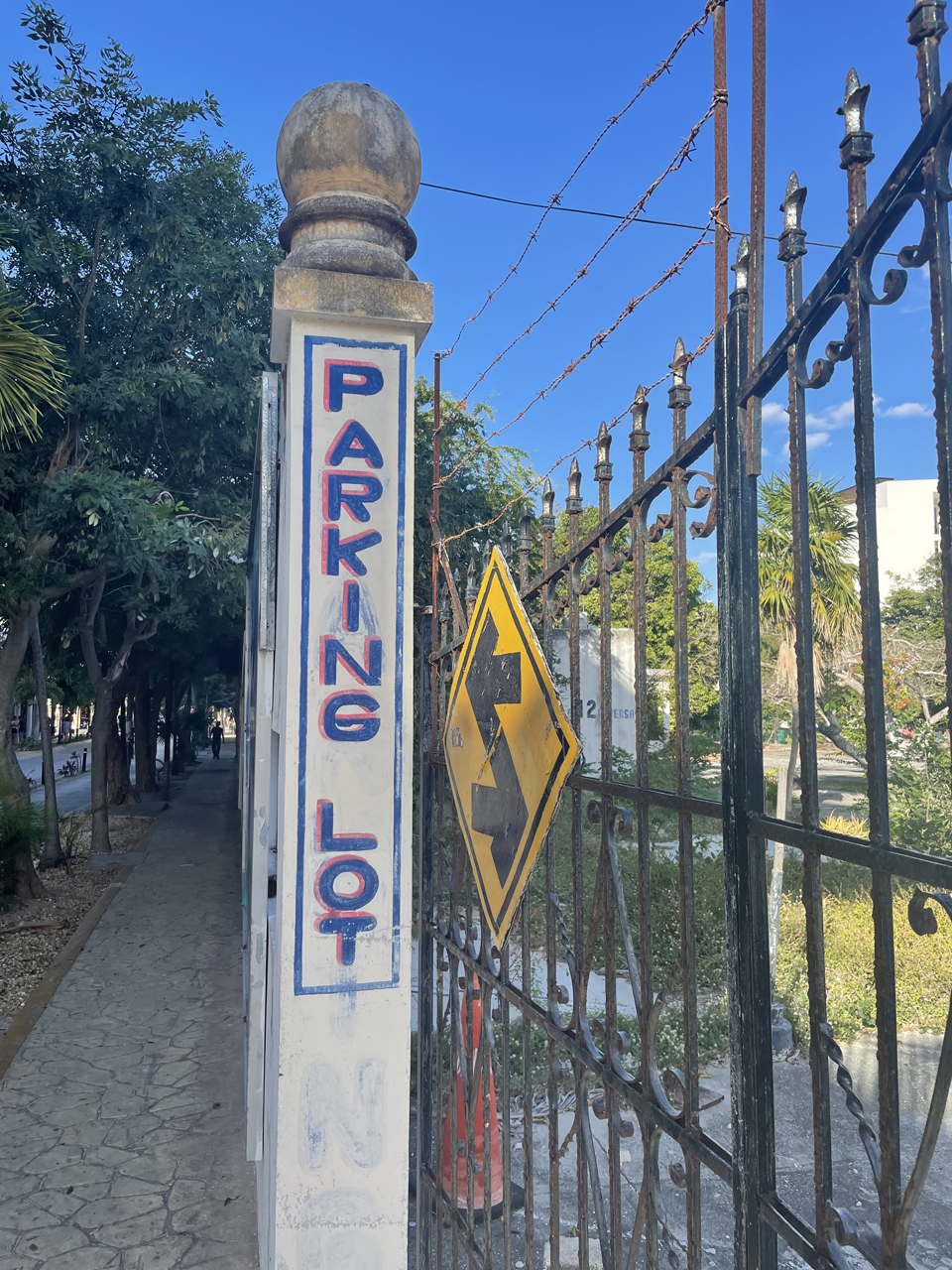

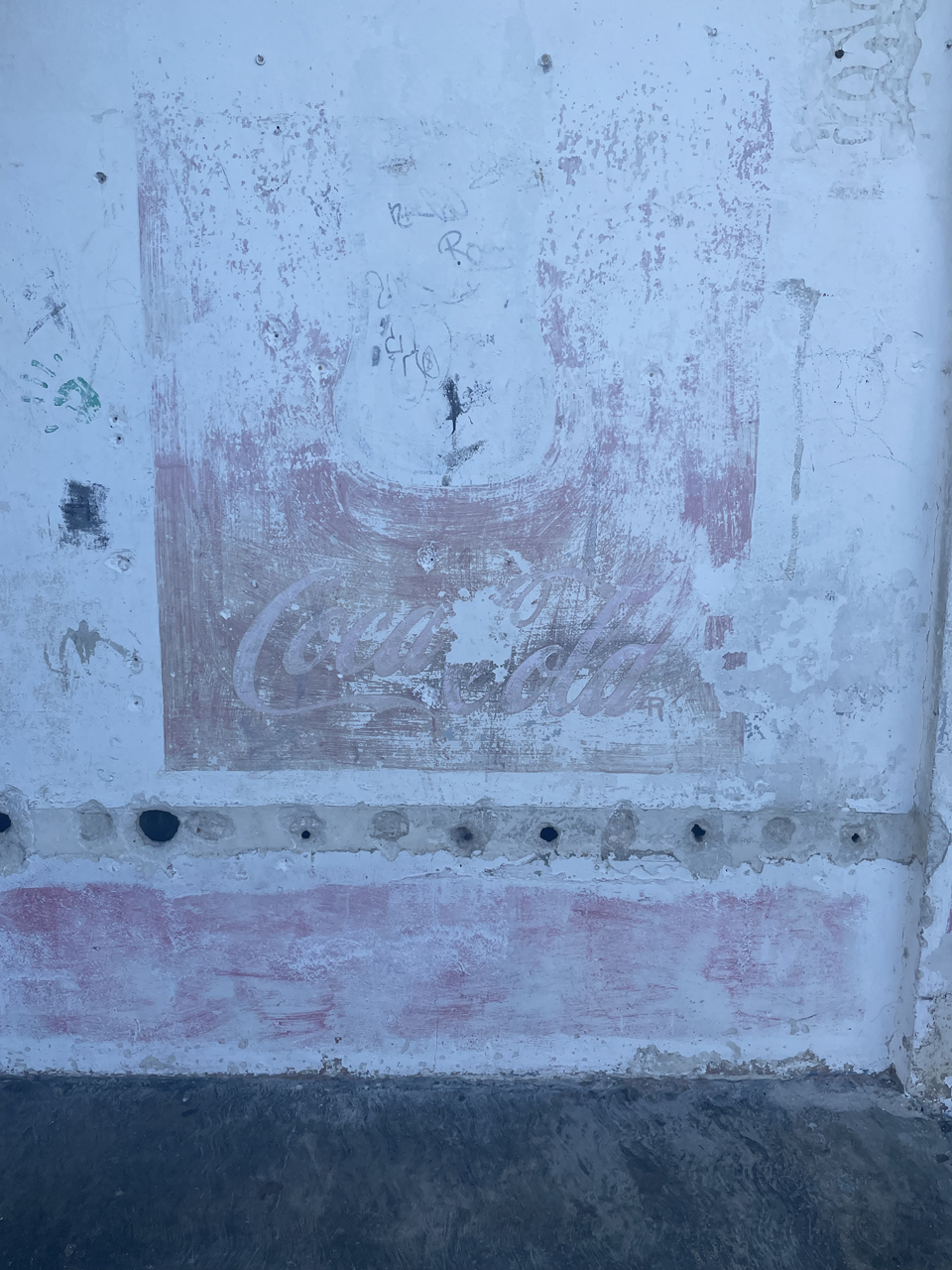
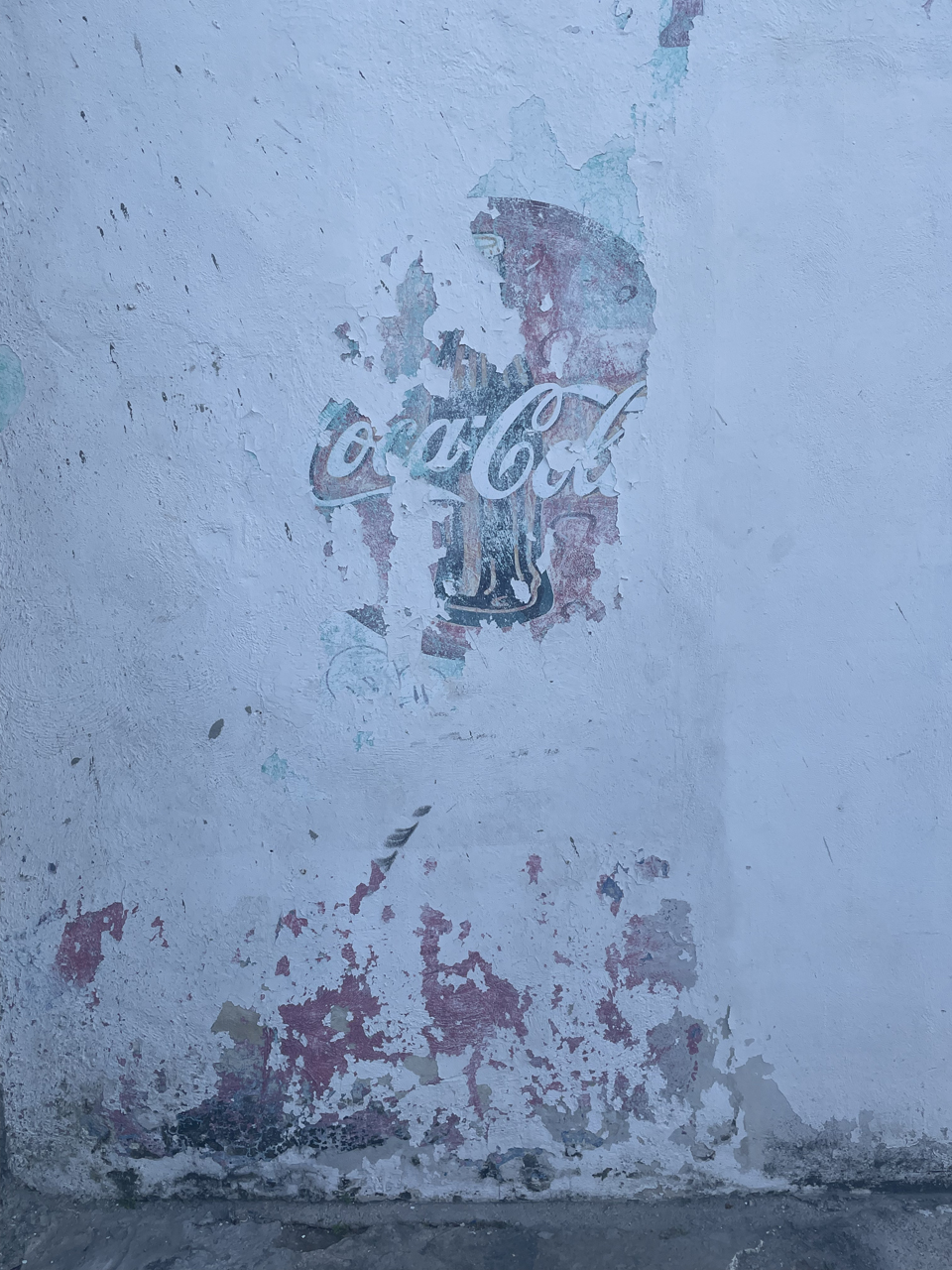
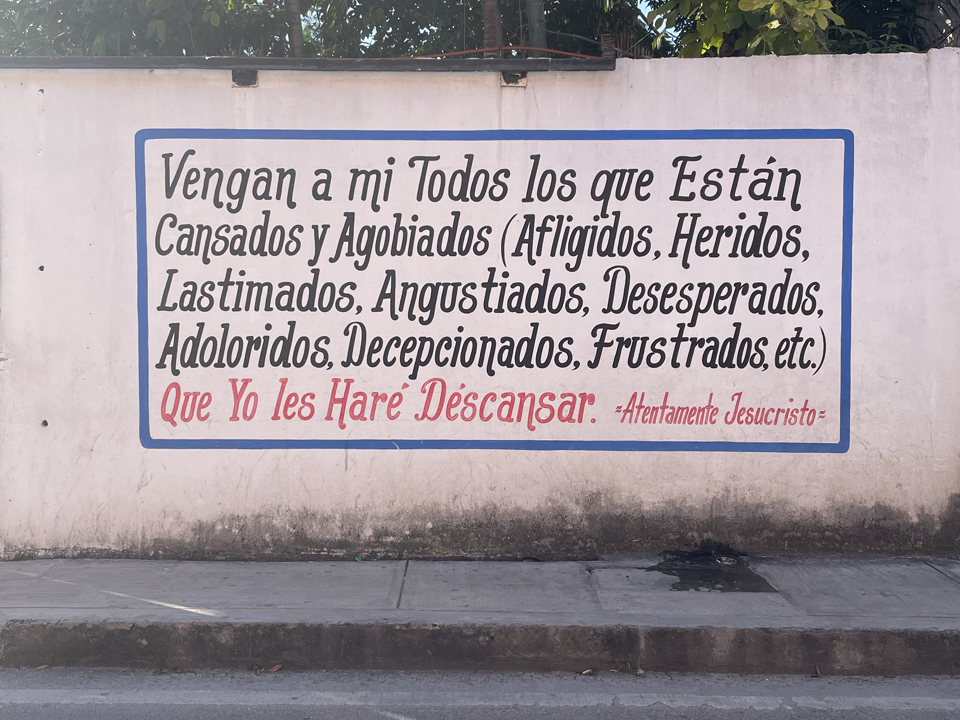
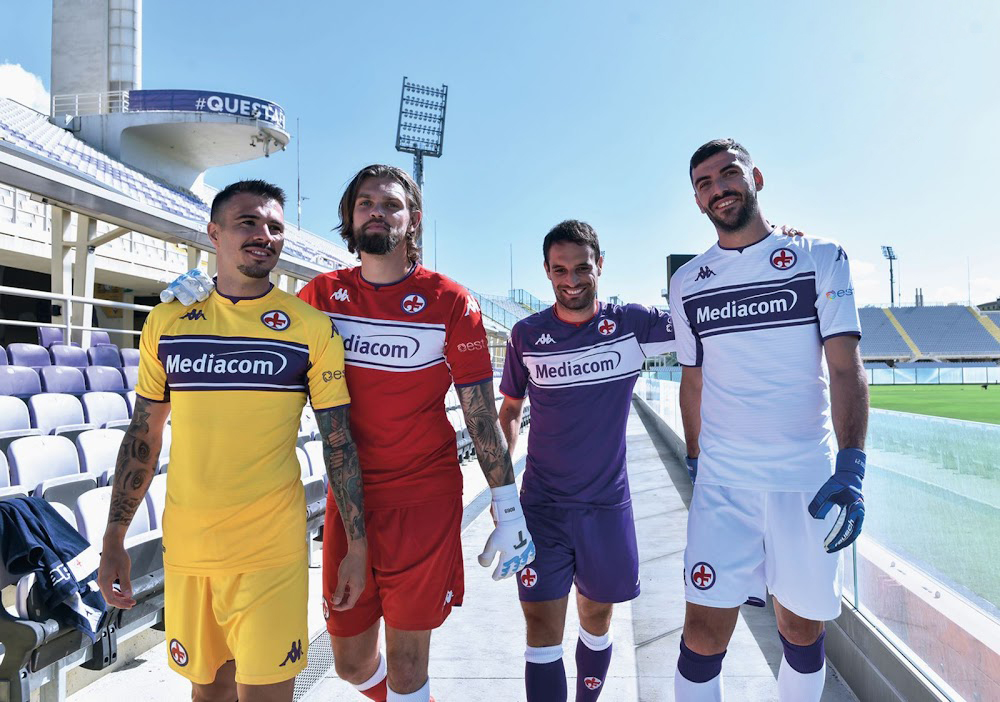
The return of Fiorentina’s retro logo was welcomed on social media. In Florence, not so much…
Summer is the best time to be a football fan, precisely because there is no football. Instead there’s the prospect of football, the expectation of the season to come. In other words, hope. Yet the football fan is also a romantic sort, whose identity is inexorably wrapped up in the history of the club and defined by its past (for better or worse). So this summer, when the launch of Fiorentina’s new kit for the 2021-22 season provoked consternation among much of the club’s notoriously passionate following, I was amused, but not surprised.
The new shirt takes direct inspiration from those worn by Fiorentina in the mid-eighties, featuring a white horizontal band across the chest and some subtle red trim. It’s the first time the club has made an overt reference to one of its previous kits, and in most eyes the new shirts (there are four of them) are a stylish improvement on last season’s somewhat generic offering. As soon as images of the new kit began circulating around the world, social media became a frenzy as collectors snapped up the shirts without hesitation.
But Viola fans weren’t such an easy sell. The main source of their disapproval was not so much the shirt itself, but the return of the Fiorentina badge from the same period — known these days as “il logo Pontello” for the club president who introduced it — after an absence of thirty years. Perhaps anticipating a strong reaction, kit provider Kappa apparently conducted a survey among Florentines before committing to the old logo. Evidently too few people objected in order to veto the project, but it’s still a surprising move given how unpopular the logo was the first time around, and what it has come to represent for fans in the ensuing years.
After several seasons of depressing football (and results that weren’t much better), I can’t blame Fiorentina for diverting attention from the team while using the marketing of its kit to symbolize a much-needed fresh start. In terms of football kit trends, the decision to dust off an old design is not remarkable. With at least three new kits to devise every season, it’s inevitable that manufacturers should look to clubs’ colourful and storied past for inspiration, and enough time has passed that the eighties are now ripe for a reassessment. Roma reinstated their beloved “lupetto” badge on their away kit in 2016, and continue to use it as a secondary logo. Similarly, in 2018 Milan restored a stylised devil not seen since 1984, and last season Verona resurrected the badge worn when the club won its historic scudetto in 1985. Lazio have gone even further in recent years, sporting brand new kits that are faithful remakes of designs worn in the eighties. Such retro references have been mostly welcomed by fans and football shirt aficionados alike, so why is Fiorentina’s case so controversial?
For some kind of an answer we have to cast our minds back forty-one years, to the summer of 1980. The new decade coincided with new ownership of the club in the form of local businessman Flavio Pontello, who handed the role of club president to his son, Ranieri. The Pontello family had made their fortune in construction, and now hoped to achieve similar success in football, by building a Fiorentina team that could compete with the superpowers of Serie A. Things did not go to plan early on: Fiorentina found themselves second from bottom at the halfway point of the 1980-81 season. The team recovered to finish a respectable fifth, but like most men of ambition Pontello wanted more. He envisioned a Fiorentina that could challenge for top honours, but rather than reinforce the squad with big name players like Platini or Zico, he decided there was another factor that could help the club make that leap: the team’s kit.
And so in the summer of 1981 the club unveiled a brand new strip that took everyone by surprise. Fiorentina had worn white shorts for most of their history, but the updated uniform was all-purple, with the unprecedented addition of red trim on the collar, cuffs, and socks. In keeping with sportswear developments the kit itself was made of a shiny, silky material, though perhaps the quirkiest feature was the white circle inside which red numbers were printed on the back of the shirt. But the biggest innovation was on the front, which was dominated by an oversized new logo. Out went Fiorentina’s traditional kite-shaped badge, in its place a stylised hybrid of a giglio (the flower symbol of both city and club) and a letter F. It might be argued that the new logo’s unavoidability — boldly emblazoned across the entire body to the extent that the club’s first ever sponsor, J.D. Farrow’s, practically went unnoticed — did not help endear it to the public. Certainly Fiorentina’s loyal fans weren’t convinced, likening the design to a medieval halberd. Even fashion designer and Florentine nobleman Emilio Pucci weighed in, calling the new logo “a failure.”
The new branding may have been unpopular, but Fiorentina were not the only Italian club to refresh its look in this period. Prior to the late seventies such matters were of minor significance: kits changed infrequently and most team shirts didn’t feature club badges or visible sponsors. It was graphic designer Piero Gratton’s groundbreaking work for Roma — including the famous “lupetto” logo launched in 1978 — that initiated a new approach to marketing in Serie A. Soon other top clubs followed by unveiling similarly minimalist branding that owed more to corporate marketing directions than any football tradition.
Public opinion aside, the new kit did not harm Fiorentina’s performance on the pitch. Despite losing their captain, Giancarlo Antognoni, for several months following a dramatic collision with Genoa’s goalkeeper, the team were tied on points with Juventus with one match each to play. But on the final Sunday of the campaign Fiorentina could only manage a goalless draw at Cagliari, after Graziani’s goal was controversially ruled out for a foul by Bertoni on the goalkeeper. Meanwhile a questionable penalty (converted by Liam Brady) was enough to earn Juventus a victory at Catanzaro, and their twentieth scudetto. The result was Fiorentina’s best Serie A placement in thirteen years, but the achievement went uncelebrated, and the circumstances of the season’s climax proved a watershed moment in the club’s rivalry with the Turin giants.
Fiorentina stuck with the same kit for the following season, before the design was modified in the summer of 1983. Now produced by Ennerre, the new shirt was made of a knitted acrylic known as “lanetta” (literally, “light wool”) and incorporated a broad horizontal white band (as referenced this season) that extended onto the sleeves. Below this sat the circular badge, reduced in size slightly though still larger than was typical, embroidered in an unusual position around the stomach.
That strip also lasted for a cycle of two seasons, but still success eluded Fiorentina. At this point the club’s kits began to tone down the eccentric design flourishes that had come to define the Pontello era thus far. The 1985-86 shirt removed all traces of red trim and the white band from the sleeves, while the logo now appeared at a standard size on the left chest. Then in 1986 the white stripe disappeared entirely, and Fiorentina went back to sporting a kit resembling something closer to its traditions, despite adopting the inexplicable habit of wearing white socks at home for the next few seasons.
In 1989-90 Fiorentina arrived only twelfth in Serie A (their worst finish since 1978) but enjoyed an impressive run in Europe, reaching the final of the Uefa Cup. Their opponents were old foes Juventus, making it the first of that decade’s three all-Italian finals. The first leg in Turin ended 3-1 to the home side. Fiorentina had played all their home European games in Perugia due to renovations taking place in Florence for the upcoming World Cup. But for the final they were forced by Uefa to switch to a neutral ground after crowd disturbances during the semi-final. The venue chosen was the Stadio Partenio in Avellino, where, as throughout swathes of Italy’s south, Juventus could lay claim to a traditionally strong fanbase. The match ended goalless.
It was Roberto Baggio’s last game for Fiorentina. The disappointment of losing the Uefa Cup final was compounded by the sale of the club’s young star to Juventus for a then-record £8 million. The transfer was confirmed two days after the second leg, prompting irate fans to take to the streets of Florence in protest. Two days of rioting resulted in injuries and property damage to the club’s headquarters, and even disrupted the Italy squad’s World Cup preparations at Coverciano (the national team hastily decamped to another facility outside Rome).
For the Pontello family there was no way back, and in 1990 they ceded ownership of the club to film producer Mario Cecchi Gori. In the summer of 1991 Fiorentina signed a young Argentine forward named Gabriel Batistuta, whose first season in Florence was also the first to use an updated version of the traditional kite-shaped logo. Indeed, by the start of the new decade the graphic logos of the eighties had begun to fall out of favour. Many Italian clubs reverted to modern updates of their traditional crests, which were now undergoing something of a reappraisal, as clubs began to lean into their own history and authenticity as important marketing angles.
But life as a Fiorentina fan in the nineties was hardly smooth sailing: the club was unexpectedly relegated in 1993 but bounced back quickly, and by the end of the decade was competing in the Champions League. But the financial irregularities of Cecchi Gori’s son Vittorio ultimately led to Fiorentina’s bankruptcy — and dissolution — in 2002. Under the ownership of the Della Valle brothers the club re-established itself in Serie C1, before eventually buying back the Fiorentina name and kite-shaped badge, which has remained on the shirt ever since. Until this season.
I first visited Florence in 1988 and for a long time had a giant poster on my wall of the 1990-91 squad — the last season the Pontello-era logo was used. I never questioned it, but for years it has been seen by Florentines to represent a decade of disappointment and bitter frustrations, starting with the “stolen” 1982 scudetto and culminating in the one-two blow of a Uefa Cup final defeat and the departure of Baggio in 1990. Some have accused Fiorentina owner Rocco Commisso of lacking a basic understanding of the club’s history. Two days after the new kit’s release, tifosi from the Curva Fiesole (home to Fiorentina’s most fervent support) unveiled an enormous banner near the stadium that denounced the return of the logo and demanded show more respect towards the club’s fans. Of course such attitudes are prevalent only among supporters of a certain age — most fans under forty will have little first-hand recollection of the Pontello era.
But was that era even that bad? Undoubtedly, Fiorentina’s squads in the eighties boasted some rare talents and in any other league (or with better luck) might have achieved more, but as already documented, the thirty years since have been nothing short of an emotional rollercoaster for the city and anyone who follows the club, punctuated by memorable highs and stressful new lows.
Another important motive for the less-than-beloved logo’s return is its need to function in a rapidly changing world. Both Juventus and Inter have devised all-new brands in recent seasons, supposedly designed to serve them better on digital platforms and in global emerging markets. Had Fiorentina taken the same approach, I imagine the results would have been similarly poorly received. The kite-shaped logo is an awkward fit for social media; at least the circular Pontello logo is more visible when reduced to 32 square pixels. But given the speed with which new ideas are discarded I can’t see it lasting for another full decade.
Once the 2021-22 Serie A season got going the initial fuss surrounding the logo subsided, in part thanks to Fiorentina’s promising start under new coach Vincenzo Italiano. More recently, the issue has been relegated to the backburner in the wake of Dušan Vlahović’s protracted contract negotiation saga. If the Serbian striker leaves the club (as looks likely) and the team’s good form dries up the logo might once again become a talking point. Instead I’m hoping Fiorentina can keep their good run going, and in the process perhaps even create positive associations surrounding its (new) old logo. It’s easy for fans to dwell on what went before. But the next match is always an opportunity for history, and minds, to be changed.
A version of this article originally appeared in KitMag.
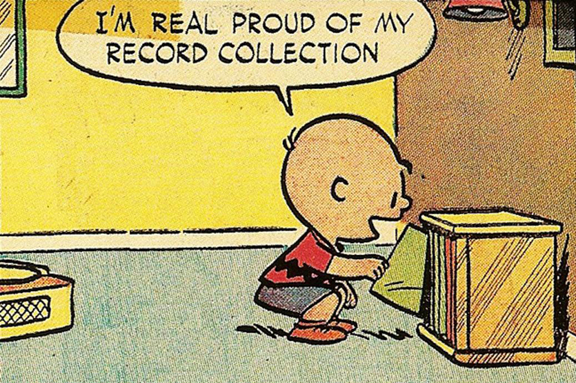
Retrospective reassessments of some favourite albums from my record collection (in strictly chronological order).
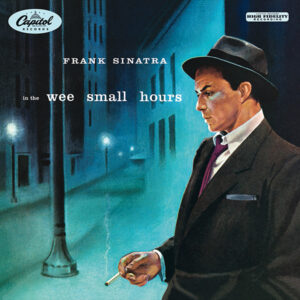 Frank Sinatra / In The Wee Small Hours
Frank Sinatra / In The Wee Small HoursCapitol, 1955
Frank Sinatra’s ninth album, In The Wee Small Hours, isn’t quite the oldest record in my collection — I actually have ten other LPs from 1955, and seven others dating back even further (I think the oldest is the soundtrack to the 1950 Kirk Douglas movie, Young Man With A Horn). But in terms of industry history this might be the most significant, as it was the first “pop” album to be released on a 12” disc. That format had previously been reserved for classical recordings — considered by the labels to be more important and prestigious — but the success of this album helped render the 10” record obsolete. The new format’s microgrooves allowed for a longer running time, which in turn lent itself to a more conceptual approach. Rather than a grab-bag collection of songs or a package of previously-released singles, In The Wee Small Hours was compiled with a unifying theme in mind, making it perhaps the first ever concept album. That concept was clear from the artwork. Lonely and forlorn, Frank the jilted lover is resigned to wandering the streets after hours. This luckless romantic persona may seem cliched today, but at the time it was a departure for America’s most beloved entertainer. Aside from the brand new title track, the other fifteen songs were all standards, tastefully and sparely arranged by Nelson Riddle, making it one of the great late night listens. The album is said to have been inspired by the collapse of Sinatra’s tumultuous marriage to Ava Gardner, a union that deteriorated due to both parties’ frequent infidelities. Gardner also underwent two abortions while married to Sinatra, due to MGM’s strict penalty clauses preventing their stars from becoming pregnant. It was MGM that announced the couple’s separation in 1953, a few months after the release of From Here To Eternity, in which Sinatra had landed a role — revitalizing his career — thanks only to Gardner’s clout with the producers. She filed for a divorce in 1954, which was finalized in 1957. But the two remained friends, and in Gardner’s autobiography, published shortly after her death in 1990, she stated that Sinatra was the love of her life.
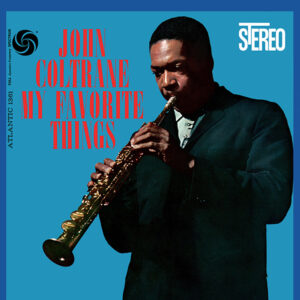 John Coltrane / My Favorite Things
John Coltrane / My Favorite ThingsAtlantic, 1961
While not technically a Christmas album (side two includes “Summertime”), this is a record I play often around the holidays. Released in 1961, the LP takes its name from the title track, a modal rendition of the song from Rodgers and Hammerstein’s The Sound of Music. At the time of recording the musical was just a year old, and though the lyrics make no mention of Christmas, the song quickly became something of a holiday standard. Coltrane’s version is a showcase for his new band and a preview of the innovative musical paths he would take in the sixties. McCoy Tyner’s piano prances over a simmering rhythm section comprised of Steve Davis on bass and Elvin Jones on drums, while Coltrane leads on a soprano sax whose sound is at once familiar and eerie. The key of E minor lends the material mystery and nuance — there are moments when the music takes on an almost byzantine quality. Even the song’s traditionally upbeat ending is left ambiguous and unresolved. Coltrane had only begun to play soprano the previous spring, after receiving the instrument as a gift from Miles Davis while on tour in Europe. After leaving Davis’ quintet, Coltrane formed his own quartet with whom he spent the summer playing Village sets and developing the sound that would be debuted on this album. Sessions took place over three days in October 1960 at Atlantic Studios at 1841 Broadway, and included Cole Porter’s “Ev’ry Time We Say Goodbye,” plus fresh treatments of the popular Gershwin tunes “Summertime” and “But Not For Me.” But it’s the title track that has compelled me to return to this LP year after year, ever since I first heard it as a teenager. Clocking in at nearly fourteen minutes, “My Favorite Things” is a brooding, hypnotic masterpiece, and without doubt one of my favourite jazz recordings. There’s a line in the Elvis Costello song “This Is Hell” that goes, “My Favorite Things are playing again and again/But it’s by Julie Andrews and not by John Coltrane.” I always think of that whenever I give this record a spin. If you have this album (or failing that, a Spotify account) make sure to put it on this Christmas. I guarantee you won’t feel so bad.
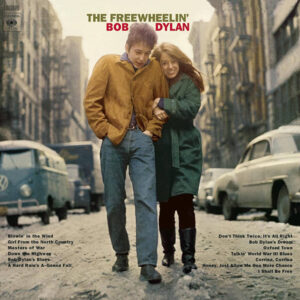 Bob Dylan / The Freewheelin’ Bob Dylan
Bob Dylan / The Freewheelin’ Bob DylanColumbia, 1963
The Freewheelin’ Bob Dylan was released just three days after the young artist had turned 22. Only 14 months had passed since the release of Dylan’s eponymous debut, but the distance between the two LPs is better measured in light years. Unlike its predecessor, Freewheelin’ was a record of all-original material, and established Dylan not only as the most exciting songwriter on the New York folk scene, but also a performer of a skill and intensity that belied his young age and boyish appearance. Drawing from current events for inspiration — as well as his romance with a young activist named Suze Rotolo — his subjects were both political and personal, his lyrics both scathing and absurdist. This recognition led to Dylan being lumbered with the unenviable label of “spokesman of a generation,” a tag he was keen to repudiate. His 2004 memoir, Chronicles, Vol. 1, recalls a headline from this period: “Spokesman Denies He’s A Spokesman.” Rotolo (and her very left-wing family) has often been credited with influencing Dylan’s more topical output. The couple had met at a folk concert at Riverside Church and had been living together (much to her family’s disapproval) in an apartment on West 4th Street for six months when (at her mother’s suggestion) Suze left to study art at the University of Perugia. She postponed her return several times, and this extended separation left Dylan pining: he wrote “Don’t Think Twice, It’s All Right” upon learning she was considering staying in Italy indefinitely. Rotolo finally did return to New York in January 1963, and a few weeks later Columbia photographer Don Hunstein snapped her and Dylan arm in arm as they trudged through a snow-covered Jones Street, as part of a wider shoot around Greenwich Village. The image was used for the cover of Dylan’s upcoming LP which, along with Abbey Road, is probably the most replicated album photo of all time. Dylan and Rotolo broke up in 1964. For decades she refused to discuss their relationship, which continued to overshadow her own work as a visual artist, until 2008 when she published her own memoir called A Freewheelin’ Time. She died in 2011 aged 67.
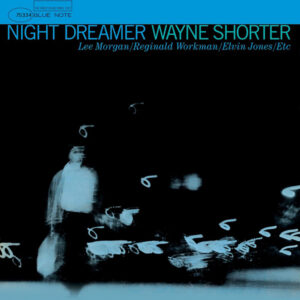 Wayne Shorter / Night Dreamer
Wayne Shorter / Night DreamerBlue Note, 1964
I recently conducted an inventory of my record collection and was slightly surprised to discover I have more LPs from 1964 than any other year (27). This is one of them. Released in November 1964, Night Dreamer was Wayne Shorter’s third album as a leader but his first for Blue Note. “This date came at a time as I was entering a new stage as a writer,” he said at the time. “And also, I knew that for my first album for Blue Note, I had to say something substantial!” The difference is notable not just musically, but visually: compare the front cover of this record with his previous one, Wayning Moments, on the Vee Jay label. The sleeve design was the unmistakable work of graphic artist Reid Miles, a Chicago native who was plucked from Esquire magazine in 1955 when Blue Note began producing 12” LPs. Miles soon developed a simple but unique style that made clever use of color, typography, and photography. Ironically, given that his bold artwork became a visual shorthand for the hard bop era, Miles didn’t particularly care for jazz, and relied solely on descriptions of the music from producer Alfred Lion. Most Blue Note sleeves in this period incorporated a cover photograph by label co-founder Francis Wolff. Typically, these were taken during recording sessions at Rudy Van Gelder’s studio in Englewood Cliffs, New Jersey. Unusually, Night Dreamer uses an outtake from a nighttime location shoot with Shorter on 66th and Broadway. Like much of Manhattan, that area of the west side has changed a lot since 1964, but the huge sign on top of the Empire Hotel (the glow from which is visible in the background) is still there sixty years later. Around the time of this record’s release Shorter joined Miles Davis’ “Second Great Quintet,” but continued to turn out brilliant albums for Blue Note over the next few years, several of which — Juju, Speak No Evil, The All Seeing Eye — are filed after this one in my living room. In 2013 I was lucky enough to see Shorter perform a special concert to celebrate his 80th birthday, as part of that year’s jazz festival in Montreal. It remains the singularly most intense live music experience of my life.
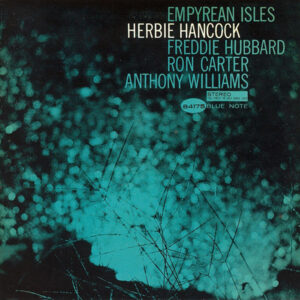 Herbie Hancock / Empyrean Isles
Herbie Hancock / Empyrean IslesBlue Note, 1964
Empyrean Isles was Herbie Hancock’s fourth release on the Blue Note label, but in abandoning some of the latin-soul explorations of his first albums for straightforward hard-bop, the 24-year-old established himself as one of the most inventive young musicians of his time, whose work from that point forward consistently challenged the conventions of jazz. At the time of this recording, three quarters of this young line-up had already been working in Miles Davis’ quintet; the sole horn player is Freddie Hubbard, who swaps his usual trumpet for a cornet. Drummer Tony Williams was just eighteen when these sessions took place on June 17, 1964. Hancock’s four tunes on this record are loosely themed around the myth of the titular islands, floridly described in the back cover liner notes by Nora Kelly. The most famous of these is “Cantaloupe Island” which, like Hancock’s previous fruit-inspired composition, “Watermelon Man,” soon became one of his signature numbers. The track gained a new generation of fans in 1993, when it was sampled by jazzy hip-hoppers Us3 for their hit, “Cantaloop (Flip Fantasia).”
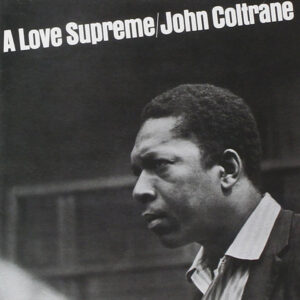 John Coltrane / A Love Supreme
John Coltrane / A Love SupremeImpulse, 1965
In 2011, on a cold January afternoon not unlike this one, I picked up this gently-used copy of A Love Supreme, John Coltrane’s 1965 masterpiece, for a mere three dollars at Big City Records, a second-hand LP store on East 12th Street specialising in soul, funk and jazz (don’t bother looking for it now — it closed in 2012). By that point I was already quite familiar with this landmark recording: I’d been gifted the CD one Christmas in the late nineties, and some time after that had read an entire book on the background and making of the album. Not even that book’s author, jazz historian Ashley Kahn, can pinpoint the precise date this record was released; some sources say January ’65, others suggest February of the same year. But after sixty years what difference do a few weeks make? The recording session took place on December 9, 1964 at Van Gelder Studios in New Jersey, where Coltrane led a quartet featuring pianist McCoy Tyner, Jimmy Garrison on bass and Elvin Jones on drums. Though technically there are four tracks, the music is presented as a suite in four parts — “Acknowledgement,” “Resolution,” “Pursuance,” “Psalm” — and to me it always felt more like a single piece, especially on CD. Given the record’s ambition and enduring impact, it’s surprisingly slight, clocking in at just under 33 minutes. This yearning, hypnotic record plundered new spiritual depths and obliterated jazz conventions of the time, taking listeners on a post-bop journey into the avant-garde. There are times when it barely resembles jazz at all — in fact, so meticulously was it composed, that it’s almost closer to a mini classical suite. Coltrane’s solo quest for enlightenment in the face of intense social upheaval continued in this direction until his death aged 40 in 1967. A Love Supreme was embraced by the counter-culture and is often cited as one of the most beloved and influential recordings of the sixties. Carlos Santana covered the first part of the record on his 1973 album Love Devotion Surrender; I saw him perform it on stage in Italy in 2004, which still ranks as one of the most memorable live experiences I’ve ever seen.
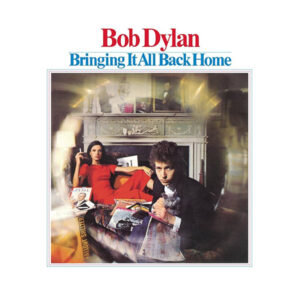 Bob Dylan / Bringing It All Back Home
Bob Dylan / Bringing It All Back HomeColumbia, 1965
The cover image for Bringing It All Back Home, Bob Dylan’s fifth album, was shot by Daniel Kramer at the home of Dylan’s manager, Albert Grossman, near Woodstock. Dylan perches on the end of a chaise longue holding his cat (whose name was Rolling Stone) while languorous model Sally Grossman (Albert’s wife) stretches out behind him. Along with his new look — more wealthy upstate bohemian than beat troubadour — the style of Dylan’s lyrics was also shifting. Though the wit and wordplay remained, his imagery was becoming increasingly surreal, personal and complex. Side one of the record was also notable in that it featured a full band. This major turning point in the artist’s life has often been described as an abandonment of his folk origins, but Dylan was never really a folk singer. He was embraced and championed by the folk community because they saw in him what they wanted to see, but for Dylan, that Village scene was merely a step in his rapid evolution. Regardless of his sound, in appearance and attitude Dylan was always a pop singer and a pop star in the truest sense, as evidenced by D.A. Pennebaker’s documentary film from this period, Dont Look Back. Side two was mainly acoustic, but this wasn’t enough to appease a minority of dissenters. This situation culminated four months later at the Newport Folk Festival, where factions of the crowd revolted against Dylan’s electric performance. Ironically, the song that sparked reaction from the crowd was “Maggie’s Farm,” a blatant gripe against those seeking to curb his creative vision. This overblown incident entered rock folklore, and was dramatized in the recent Timothée Chalament movie, but for a more nuanced understanding of events, I’d recommend the 2005 Martin Scorsese documentary, No Direction Home.
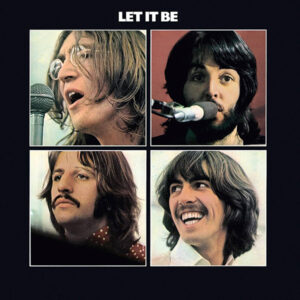 The Beatles / Let It Be
The Beatles / Let It BeApple, 1970
This afternoon I finally got around to finishing Get Back, Peter Jackson’s epic three-part Beatles documentary. The series meticulously chronicles sessions for the band’s next album (eventually released in 1970 as Let It Be) and aborted TV special, before culminating in the surprise performance on the rooftop of Apple Studios on 30th January 1969 (I always remember the date because it was ten years to the day before I was born). Edited from 60 hours of film footage and over 150 hours of audio material originally intended for Michael Lindsay-Hogg’s film (also entitled Let It Be), Jackson’s project was conceived as a standalone feature with a theatrical release, but Covid delays and pandemic viewing trends prompted Disney to re-purpose it into a binge-worthy streaming event. Now, nobody loves a rockumentary more than me, and the prospect of indulging in hours of unseen Fab Four footage filled me with glee. Yet even this Beatle obsessive found the experience of watching the series less than riveting at times, mainly because of the bloated format. The suggestion of urgency through on-screen captions and calendar graphics seems like an afterthought designed to mask the lack of a narrative structure. During a debate in the third episode Lindsay-Hogg comes to the discovery that he’s spent three weeks shooting footage but still has no story, a problem neither he nor Jackson quite managed to overcome. Naturally, there are moments both priceless and hilarious, but rarely are these genuinely revealing and they mostly fail to convey the individual band members in any new light. But the documentary is utterly absorbing as a window into a hyper-specific place and time, capturing the detailed dynamics of the group and their nebulous inner circle, while hinting at the band’s impending and unavoidable dissolution. Anyway, the series compelled me to revisit Let It Be, an oft-maligned album and maybe the Beatles LP I’m least fond of. The record confirms what the documentary shows, which is that Paul was really the only creative Beatle still fully on board by this point (the most realised compositions are all McCartney’s). But at least it clocks in at a brisk thirty-five minutes…
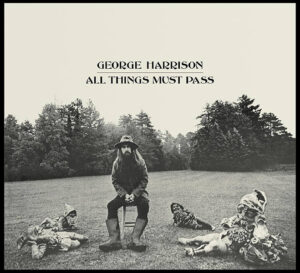 George Harrison / All Things Must Pass
George Harrison / All Things Must PassApple, 1970
George Harrison’s epic solo debut arrived just seven months after the Beatles’ split, and only six after the release of the band’s final LP, Let It Be. Harrison, always “the quiet one,“ had emerged as an able songwriter, but remained a victim of band inequality: typically he only saw one of his compositions on each side of a Beatles release. After the break-up he found himself sitting on dozens of unreleased songs, some of which dated back to 1966 and had already been overlooked by Lennon and McCartney. There was enough material for several albums, but for commercial reasons the recordings were contained onto an eighteen-track, double LP, which also included a bonus disc of somewhat indulgent studio outtakes entitled “Apple Jam.” The whole thing came packaged in a large box, the kind typically used for operas, which wasn’t wholly inappropriate: many have described the record as sounding “Wagnerian” in its scope and bluster. Much of this sonic grandeur was the influence of Phil Spector, who initially acted as producer on the sessions before removing himself from the project due to “health reasons” (Harrison once said Spector needed “eighteen cherry brandies” before he could start work). Spector’s trademark “Wall of Sound” technique is evidenced throughout the album’s four sides even though Harrison completed production duties himself — he later admitted he got carried away with excessive multi-track layering and heavy reverb overdubs. In that sense the album is perhaps a harbinger for some of the bloated, grandiose albums that would come to define a lot of rock music in the seventies. Stunning for its musical variety and emotional range, the record is both a celebration of Harrison’s creative individuality and an emphatic liberation from the highly rewarding yet spiritually stifling phenomenon that was Beatlemania. Even the cover art, featuring four broken gnomes, was designed to indicate the end of that particular and unrepeatable era. I think this album is best enjoyed in its entirety on an autumn afternoon with a cup of tea.
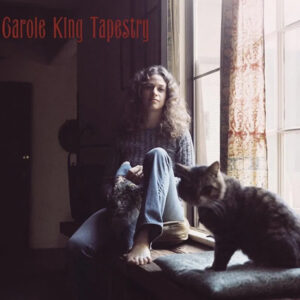 Carole King / Tapestry
Carole King / TapestryOde, 1971
While making coffee this morning I put on Carole King’s second solo album, Tapestry, for the first time in years. Aside from the quality of her songs I always liked King’s voice, straight and unadorned. Her earnest sound — and relatable look — pioneered a quintessentially New York brand of feminist ethnic soul which could not have emerged from any other city (see also Laura Nyro). By the late sixties King had left for California (the first track describes a romantic infatuation in terms of an earthquake) but this album still exudes an East Coast urgency. It’s pitched somewhere between the Brill Building and Laurel Canyon, weaving the sophisticated piano-led pop hooks of one with the personal introspection and intimacy of the other. Tapestry was recorded in the same studio and at the same time as Mud Slide Slim by James Taylor — inevitably the two albums share much of the same personnel and even a song. In one of my previous design studio jobs one of our clients was named Carol King (without the E) and so every time we visited her office the “You’ve Got A Friend” jokes would fly. Two other songs on Tapestry had already been hits for the Shirelles and Aretha Franklin, but with the exception of “Smackwater Jack” (which probably sounded dated even in 1971), every track has a sort of timeless purity, as all great pop songs tend to do. It’s also my favourite album with a cat on the cover, though to be honest I can’t think of many others.
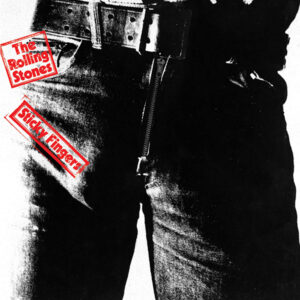 The Rolling Stones / Sticky Fingers
The Rolling Stones / Sticky FingersRolling Stones Records, 1971
Sticky Fingers was the Rolling Stones’ first studio album of the seventies, the first since Altamont, the first without founding member Brian Jones, and the first to showcase the talents of new lead guitarist Mick Taylor. But perhaps most significantly, it was also the first release on the band’s new label, Rolling Stones Records. Like the Beatles, the Stones had fallen victim to Allen Klein’s financial (mis)management and dubious contracts, and were thus compelled to form their own company to control their recordings and publishing rights. Mick Jagger (always the most image-savvy Stone) commissioned John Pasche, a British junior art director working at the New York advertising agency of Benton & Bowles, to create a logo for the eponymous brand. The idea for the now ubiquitous “tongue and lips” design came about after Jagger spotted an image of the Hindu goddess Kali inside a corner shop. For the album artwork, Pasche’s logo was modified by Craig Braun and included on the inner sleeve and centre labels of the LP. The cover concept was devised by Andy Warhol, whose Coronet signature can be seen on the pair of white briefs visible behind the working zipper. The identity of the crotch on the cover has never been confirmed, but it is assumed to be either a lover of Warhol’s or else a member of his Factory circle. Later releases of the album dispensed entirely with the zipper gimmick, which proved costly to manufacture and also tended to damage the vinyl itself during transit. I have an American version; my parents’ British copy has a different type treatment on the cover. Due to the censorship of the Franco era, in Spain the cover was replaced by a more literal (and disturbing) image of a pair of fingers emerging from a tin of treacle. The iconic logo has now appeared on every Rolling Stones release for half a century, not to mention countless items of merchandise. Pasche received £50 for his design upon completion, and a further £200 in 1972, before selling his copyright to the Stones for a much higher sum in 1984. His original artwork now belongs to the Victoria & Albert Museum.
 Marvin Gaye / What’s Going On
Marvin Gaye / What’s Going OnMotown, 1971
Perhaps more than any other, Marvin Gaye’s What’s Going On is the record that altered soul music’s course, and one that even half a century later still resonates on every level. At first listen, the album is a reaction to the all too familiar struggles affecting Black America, but it was also fueled by Gaye’s personal depression, brought on by the collapse of his marriage, cocaine addiction, and the death of his singing partner, Tammi Terrell. Gaye had scored seven top forty hits with Terrell before she was diagnosed with a brain tumor; she died in 1970 aged just twenty-four. Though Gaye was a commercial certainty, for the hit-making factory that was the Tamla label the record represented a risky departure, as the smoothest singer in their stable now embarked on what was essentially a protest album. Gaye’s mood of disillusionment is apparent immediately on the record’s iconic cover. Gone is the smiling, clean-cut young man to whom millions had become acquainted. Instead a bearded Gaye appears by a deserted set of swings, weary and lost in thought, seemingly indifferent to the rain that drenches him. Side one begins with snippets of street chatter before the opening saxophone bounces in like a mellow breeze, belying the despairing lyrics of the title track. The record continues in this vein, with each song flowing into the next to create a slightly eerie, almost dreamlike suite whose singular collective tone helped define the sound of progressive soul in the early 1970s. What’s Going On may represent the first major personal statement by a Black solo pop artist, and subsequent albums by Gaye’s contemporaries — Stevie Wonder, Isaac Hayes, Curtis Mayfield — began to lean in similarly socially-conscious directions. Despite Motown founder Berry Gordy’s initial concerns, the record peaked at number six, charting again after Gaye’s death in 1984. In 2020 Rolling Stone magazine placed What’s Going On at number one in its list of the 500 greatest albums of all time. Though such accolades are purely futile and entirely subjective, such recognition is testament to the music’s quality and also a timely reminder, were it needed, that the record’s message is no less urgent or relevant today.
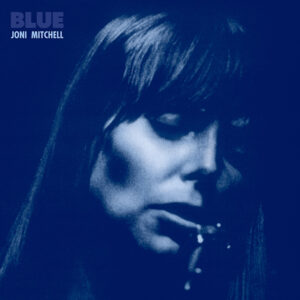 Joni Mitchell / Blue
Joni Mitchell / BlueReprise, 1971
Blue was the first Joni Mitchell album I ever heard, but such was its status as a defining artifact of the seventies (not to mention its iconic cover art) I was aware of it before I’d ever put it on. Though more rhythmic and varied than her previous records — Joni accompanies herself on most tracks with guitar, piano or Appalachian dulcimer — Blue is still relatively spare compared to the lush jazz-rock arrangements of her mid-seventies albums. I always like to listen to it very loudly late at night, especially in summer. Blue was the record with which Joni’s star shifted from Canadian folk songstress and would-be painter to international rock and roll icon, confirming her to be a musician, vocalist, songwriter and lyricist of singular style and talent. Poetic and almost painfully personal, the album made Mitchell the archetype of the confessional singer-songwriter that became inexorably associated with Southern California in the first half of the decade. The record is almost a concept album in that it traces an arc in the artist’s life in which Joni goes through two break-ups: her relationships with Graham Nash and James Taylor are said to have inspired half the songs on Blue (JT even shows up on guitar, though not on the tracks about him). Trading in Laurel Canyon domesticity she then takes us on several entertaining and evocative jaunts around Europe, a travelogue that’s both carefree and bittersweet, as Joni faces the necessary prospect of overcoming her own pessimistic worldview. Indeed, Blue introduced what would become a continuing theme in Mitchell’s work: travel, both real and metaphorical, as an essential tool for one’s own development and enlightenment. Side one’s opening line, “I am on a lonely road and I am traveling, traveling, traveling, traveling…” immediately explains her emotional state, but could also be an apt description for her entire career. Joni has spent a lifetime forging her own path in an industry that more readily celebrates mediocre men than brilliant women, and she has always seemed more than content to go it alone. Then again, who could keep up with her?
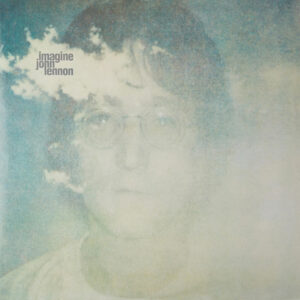 John Lennon / Imagine
John Lennon / ImagineApple, 1971
Unlike most records I’ve written about here, Imagine isn’t one I’m especially fond of. To me it is quite weighed down by a series of plodding mid-tempo numbers over which Lennon’s bitter rants do little but highlight his sour state of mind in the early seventies. Not that he didn’t have plenty reason to be angry: “Gimme Some Truth” is as lyrically relevant today as it ever was. But the infamous “How Do You Sleep?”, a five-and-a-half-minute diatribe against Paul McCartney, only reveals the gracelessness with which Lennon handled his lingering animosity towards his former songwriting partner after the pair’s acrimonious split. The song is only really interesting at this point for its hyper-specific lyrical content in the context of rock non-controversies. Other tracks seem ahead of their time. “I Don’t Want To Be A Soldier” is a loose, hypnotic jam that sounds more like 1991 than 1971. But “Crippled Inside” and “It’s So Hard” feel like folky (or jokey) genre exercises, while “Oh Yoko!” is an early example of Lennon’s gratuitous habit of laying down odes to his domestic bliss on wax. Lennon comes off better when he’s at his most vulnerable. The two ballads, “Jealous Guy” and “How?”, each showcase his talent for combining gorgeous melodies with raw moments of honest introspection. The same technique is of course used to greatest effect on the title cut. Inspired by Yoko Ono’s poem “Grapefruit” (a passage of which is reproduced on the record’s back cover), Lennon later theorized that the only reason the anti-religious, anti-nationalistic, anti-capitalistic anthem was so universally accepted was because it was “sugarcoated.” After all, it’s practically a socialist manifesto. The irony, of course, is that like other protest songs with a straightforward lyric, “Imagine” has been embraced most frequently and fervently by precisely the people towards whom its criticism is directed — politicians, corporations, churches, even celebrities — in other words, those with little imagination at all.
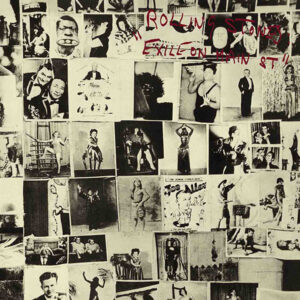 The Rolling Stones / Exile On Main St.
The Rolling Stones / Exile On Main St.Rolling Stones Records, 1972
Exile on Main St. was the Rolling Stones’ tenth studio album, and is still considered by many to be their best work. High praise considering the bulk of the half-written tracks were captured by the band’s mobile recording truck during a loose series of nightly “sessions” in the damp and sprawling basement at Villa Nellcôte, a Belle Époque mansion on the Côte d’Azur that Keith Richards was renting having absconded (along with the rest of the Stones) to France to avoid paying British taxes (hence the album’s title). Built by an English banker in the 1890s, the property was said to have served as a Gestapo headquarters during the war — the arrival of the world’s most notorious rock and roll outlaws (and a revolving coterie of guests) only added insult to infamy. Overdubs were added later in Los Angeles, but most of the record’s sixteen original songs draw inspiration from the Stones’ hedonistic life on the road and substance-fueled escapades on the French Riviera. That said, Mick Jagger’s languid drawl is often buried so deep in the final mix that the vocals can feel fragmented or even unintelligible. One track, “Casino Boogie,” was actually composed by cutting up random phrases and assembling them into verses, a technique borrowed from William Burroughs. Another, “Sweet Black Angel,” about Angela Davis, is one of the few overtly political songs in the band’s entire catalogue. Musically speaking, no Stones release before or since is so heavily saturated by Mick and Keith’s adventures in (and fixation with) America’s deep south. The album is a murky, simmering stew of early rock and roll, blues, country, gospel and soul, but these songs aren’t mere genre exercises: there is a lived-in, hard-fought truth to them, that combined with a lyrical weariness makes for a record of rare (and raw) depth and honesty. Several numbers have since become part of the Stones’ live repertoire, but despite being a double LP the album didn’t produce the usual handful of hit singles. Though as my parents often recalled, “Tumbling Dice” received repeated punches on the jukebox at their wedding in August 1972.
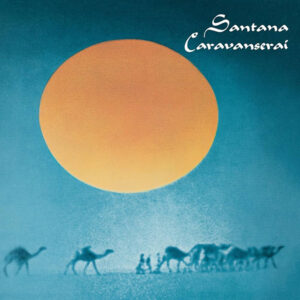 Santana / Caravanserai
Santana / CaravanseraiColumbia, 1972
Santana’s fourth album, Caravanserai, was released in October 1972. That same night the band performed at Spokane Coliseum, having just embarked on an epic world tour that would span five continents and last an entire year (the recording from the show in Fukuoka was released in Europe as the live triple LP, Lotus). In November 1973, my parents saw Santana at the start of their next tour at the Rainbow in London, a show I heard a lot about growing up (in 2004 I saw Santana with my parents in a piazza in Pistoia). Anyway, this was the album on which Santana broke free of the artistic restraints imposed by the narrow confines of commercially viable pop music. The result was a predominantly instrumental LP reflecting Carlos Santana’s blossoming interest in the spiritual jazz pioneered by Alice Coltrane and Pharaoh Sanders. Upon hearing the finished record, CBS executive Clive Davis accused Santana of committing “career suicide.” Indeed, Caravanserai produced no hit singles and only reached number 8 on the Billboard chart. But it’s my favourite Santana album up to that point precisely because it abandons any attempt to conform to radio or record company expectations. To me, some of Santana’s early hits feel firmly rooted in their era, while their English lyrics forced them towards “American rock band” territory, undermining their musical ambitions and spiritual worldliness. In every sense, Santana was always a band without borders, whose compositions and live performances transcended background or language. It’s no surprise that in 1986 the BBC chose nine-minute closer “Every Step Of The Way” for their closing World Cup montage (it’s on YouTube), acknowledging Santana’s Mexican roots while encapsulating the sun-drenched drama of that international event. I can’t talk about this album without mentioning “Song Of The Wind,” a genuine highlight and one of my mum’s all-time favourite tracks. Just as some of the band’s more conventional rock numbers haven’t aged well, this six-minute instrumental — while showcasing Santana’s effortlessly emotive guitar playing — is evidence that he could produce a work of timeless beauty simply by doing what came naturally.
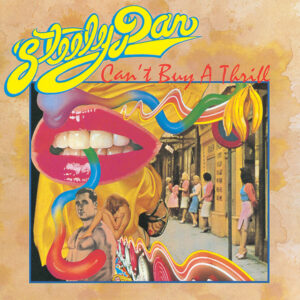 Steely Dan / Can’t Buy A Thrill
Steely Dan / Can’t Buy A ThrillABC, 1972
Can’t Buy A Thrill, Steely Dan’s debut album, was released in November 1972. I don’t know the exact date and it seems the internet doesn’t either. To recap: Walter Becker and Donald Fagen had met at Bard College in 1967, and were working in Los Angeles as staff songwriters for ABC/Dunhill Records when they were encouraged to form a band by producer Gary Katz. He suggested guitarist Jeff “Skunk” Baxter and drummer Jim Hodder, and in 1970 they placed an ad in the Village Voice: “Looking for keyboardist and bassist. Must have jazz chops! Assholes need not apply.” Long Island native and guitarist Denny Dias responded and moved out west, before short-lived vocalist David Palmer (he only sang lead on two tracks) was added to compensate for Fagen’s initial stage fright. Though it introduced trademarks of Becker and Fagen’s partnership — unconventional chord structures, cryptic lyrical concerns and a wry, sardonic wit (as evidenced by the original liner notes credited to Tristan Fabriani, a Becker/Fagen alias) — “CBAT” (to use its social media shorthand) is probably my least favourite album by my favourite band. Having said that, this catchy LP was a hit in 1972 and includes three of the five Steely Dan tracks that can still frequently be heard at your local CVS. After two more albums Becker and Fagen grew tired of the road and fired the rest of the group in 1974. Future recordings used the cream of L.A.’s session musicians (Steely Dan didn’t tour again until 1993). This practice however had already started on their first record, which features English jazz percussionist Victor Feldman and New York guitarist Elliott Randall, whose solo on “Reelin’ In The Years” remains a highlight of the Dan’s oeuvre. Fast forward half a century and David Palmer now works as a landscape photographer in South Carolina, while Denny Dias helms an eponymous band based in Boston. Jeff Baxter enjoyed success with the Doobie Brothers, though these days he’s best known for his work as a missile defense consultant. Jim Hodder drowned in his swimming pool in 1990.
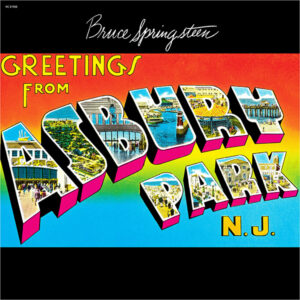 Bruce Springsteen / Greetings from Asbury Park, N.J.
Bruce Springsteen / Greetings from Asbury Park, N.J.Columbia, 1973
When Bruce Springsteen’s debut album was released in January 1973, only seven months had passed since Springsteen’s audition for John Hammond at Columbia Records on East 52nd Street (a set of acoustic demos that emerged on the Tracks boxset in 1998). Hammond — who had also discovered Billie Holiday, Aretha Franklin and Bob Dylan — knew unique talent when he heard it, and wasted no time in signing the 22-year-old to a record deal. The album was cut that summer at 914 Sound Studios, a low-budget facility in Blauvelt, NY. But when the acetate was submitted that August, Columbia president Clive Davis said he didn’t hear a hit single. So Springsteen quickly wrote two extra songs, the first of which was “Blinded By The Light.” The track showcased the young songwriter’s penchant for frantic verbosity bordering on the absurd, inviting the inevitable “New Dylan” comparisons that persisted in the early part of Springsteen’s career. The single failed to chart, but Manfred Mann’s version reached number one in August 1976 — still the only Springsteen-penned song to top the Billboard Hot 100. The second late addition was “Spirit In The Night,” a soulful number that became a staple of the Springsteen’s early live shows. The line-up on this album included Garry Tallent on bass and Clarence Clemons on saxophone, drummer Vini “Mad Dog” Lopez and pianist David Sancious, whose mother lived on E Street in Belmar, NJ. The band used her garage as a rehearsal space and eventually took their name from the address. Though it introduced a prolific and daring artist, as well as some of the lyrical motifs central to his early work — teenage romance, Catholic imagery, the circus, street life, gang violence, and of course, the automobile — this is perhaps my least favourite Springsteen LP. But I have always loved “Growin’ Up,” which would have ideally opened side one. I remember my dad put it on the third compilation tape he made for me not long after I got my first Walkman around 1985. In 2018 I saw Springsteen perform it solo at the Walter Kerr Theatre as part of his Broadway show, to which I wore a T-shirt with art director John Berg’s iconic album artwork.
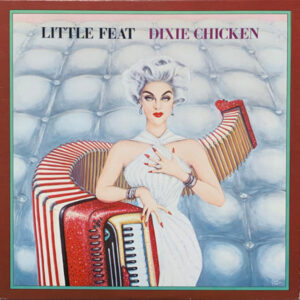 Little Feat / Dixie Chicken
Little Feat / Dixie ChickenWarner Bros., 1973
Little Feat’s third album, Dixie Chicken, was their second to feature a front cover by Neon Park, whose somewhat surreal illustration style became the band’s visual signature (this one was inspired by a 1954 Revlon ad starring Carmen Dell’Orefice). As a child I remember seeing Little Feat’s LPs at home and being amused by the artwork, which more than hinted at the eccentric humour in the music. This slightly zany sensibility seemed to be a common thread among similarly-inclined West Coast acts in the early seventies, such as Dan Hicks & His Hot Licks, Commander Cody & His Lost Planet Airmen, and even Ry Cooder. Though their sound was hard to define, on this record Little Feat landed on what would become their trademark melting pot of swampy, Southern-fried funk and New Orleans rhythm and blues (the album even includes a version of Allen Toussaint’s “On Your Way Down”). Former Mothers of Invention guitarist and vocalist Lowell George had emerged as the band’s major songwriting talent, and the next two Little Feat records — Feats Don’t Fail Me Now (1974) and The Last Record Album (1975) followed in a similar vein. The 1978 live double album Waiting For Columbus was the band’s best-selling release, but by the end of the decade directions within the group had begun to diverge. In 1979 George issued a solo album entitled Thanks, I’ll Eat It Here, a title that may have been a reference to his rapid weight gain, the result of an overindulgent lifestyle characterized by binge eating, alcoholism and speed balls. In June of that year, while on tour in support of the record, George collapsed and died of a heart attack in his room at the Twin Bridges Marriott hotel in Arlington, VA. He was 34. Little Feat’s seventh LP, Down On The Farm, was released soon afterwards, then between 1988 and 2012 the remaining members of the band put out nine more albums. The 1980 Jackson Browne song, “Of Missing Persons” (the title of which is a reference to the opening line of the Little Feat song “Long Distance Love”), was written for George’s surviving five-year-old daughter, Inara, who today is one half of the indie pop duo, The Bird and the Bee.
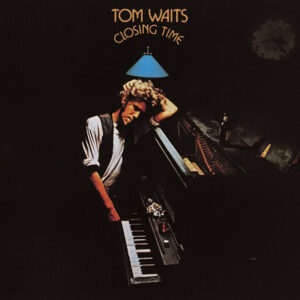 Tom Waits / Closing Time
Tom Waits / Closing TimeAsylum, 1973
Without even hearing the record, the title and cover photograph alone of Tom Waits’ debut album, Closing Time, were enough to introduce the young artist as a sort of late-night beatnik balladeer. Though Waits would persist with this identity for the rest of the decade, sometimes to the point of self-parody, it was initially developed during solo sets supporting Frank Zappa on tour and at The Troubadour on Santa Monica Boulevard. It was here that Waits’ performances caught the attention of David Geffen, who signed him to his new Asylum label. Despite the album’s nocturnal atmosphere, recording sessions took place during daylight hours since there were no evening slots available at Hollywood’s Sunset Sound Recorders. Most tracks feature acoustic guitar, upright piano and stand-up bass, though disagreements in the studio between Waits and producer Jerry Yester (formerly of The Lovin’ Spoonful) still ensued over the direction of the record: Waits wanted to make a jazz album but Yester insisted on a more folk-oriented sound. Waits’ lyrics were perhaps never more unabashedly romantic than on this record, but the production sometimes renders them perhaps more earnest compared to later releases (The Eagles even covered “Ol’ ’55” on their next LP). This is undoubtedly a record of extreme warmth and beauty that instantly evokes its place and period, even for those of us who weren’t there. The slight echo on “Lonely” expertly suggests the emptiness of a rehearsal space above a bar at 4PM (or 4AM), while “Midnight Lullaby” is probably the only song in history to mention “the British Isles” and “West Virginia” in the same line, something I’ve always enjoyed given that my wife hails from Morgantown, WV. The gorgeous after-hours arrangement of the instrumental title track that closes the album is the closest thing Waits ever made to a wordless manifesto. Waits got Bones Howe to produce his next seven releases (Yester was jailed in 2019 on child pornography charges). By the early eighties Waits’ voice had become more gravel-soaked and his work more experimental, but the line between person and persona has always remained a bit hazy.
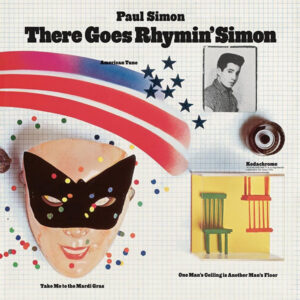 Paul Simon / There Goes Rhymin’ Simon
Paul Simon / There Goes Rhymin’ SimonColumbia, 1973
There Goes Rhymin’ Simon was technically Paul Simon’s third solo album if you count The Paul Simon Songbook (a 1965 UK-only release), though only his second since he and Art Garfunkel had parted ways. His eponymous LP from the previous year had shown he could make more varied and personal music without his partner, but this album established Simon not just as a great pop songwriter, but also a great record maker. It’s perhaps the warmest, most accessible album in Simon’s entire discography. Though no stranger to gospel, blues and jazz, after the success of Bridge Over Troubled Water Simon began to immerse himself in the sound of the American south. Half the LP was recorded at Alabama’s Muscle Shoals studio, whose in-house rhythm section provided much of its charm. The Dixie Hummingbirds appear on two tracks, while the falsetto on “Take Me To The Mardi Gras” is by the Reverend Claude Jeter. Additional backing vocals were provided by the Roche sisters, whom Simon had met in 1971 while teaching a songwriting class at NYU. But like all of Paul Simon’s work it’s his clever songs and unexpected juxtapositions that elevate this album to another level. Though the opening track, “Kodachrome,” caused a headache when Kodak insisted a trademark symbol appear wherever its title appeared in print. For the same reason the song wasn’t released as a single in the UK since laws regarding brand names prevented it being played on BBC radio. My favourite track is probably “Something So Right,” which I’ve always loved for its deceptively simple lyrics and chord structure, but especially the odd middle eight in 3/4 time. Based on a 17th century Lutheran hymn, “American Tune” is a song my dad used to play a lot (he even recorded it). Written immediately following Nixon’s 1972 reelection, it’s perhaps the only note of despair on the entire LP, anticipating the cooler, more defeated tone of Simon’s next album, and cementing his persona as the Upper West Side’s preeminent neurotic intellectual. Appropriately enough each track was visually illustrated on the gatefold cover by another artist inexorably tied to music and Manhattan: Milton Glaser.
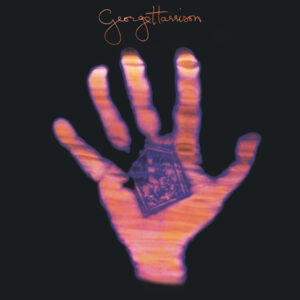 George Harrison / Living In The Material World
George Harrison / Living In The Material WorldApple, 1973
Living In The Material World was George Harrison’s fifth studio album and the long-awaited studio follow-up to 1970’s triple LP opus, All Things Must Pass (Harrison had released a live album documenting the Concert For Bangladesh in 1971, but back then three years was a long time in music). The new record eschewed his previous album’s sonic bombast for a more understated production, perhaps a reflection of Harrison’s interest in Hindu spirituality, which by 1973 had reached new heights of devotion. Though his devotion to other things — namely cocaine and cars — meant he was also prone at times to veering from his chosen path, sometimes literally. Harrison and then-wife Pattie Boyd were lucky to survive when he crashed his Mercedes-Benz into a roundabout while doing ninety on the M4 in February 1972. Aside from his spiritual musings, the album also revealed Harrison’s contempt for consumer culture and an increasingly corporate music industry (especially in the wake of having organized benefit concerts), as well as the expected dose of residual post-Beatles bitterness. The recording featured the usual crew of Harrison associates — Nicky Hopkins, Klaus Voorman, Jim Keltner, Ringo Starr — though notably, no Eric Clapton. This was likely due to his infatuation with Boyd and descent into heroin addiction (the guitarist had passed out mid-performance at the Concert For Bangladesh). Anyway, LITMW remains a record that’s a bit underrated and forgotten compared to ATMP, whose size and scope cast a long shadow over the rest of Harrison’s output in the seventies. Though it did provide an appropriate title for Martin Scorsese’s epic 2011 documentary on the musician’s life. Like its predecessor, the LP is also impressive for its lavish packaging: the front and back cover uses electro-photography and the interior sleeve incorporates artwork from the Bhagavad-Gītā. Living In The Material World peaked at number 2 on the UK album chart. Ironically it was kept off the top spot by the soundtrack album to That’ll Be The Day, a British rock ’n’ roll nostalgia movie starring… Ringo Starr.
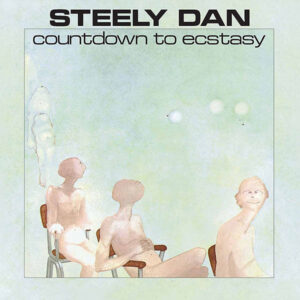 Steely Dan / Countdown To Ecstasy
Steely Dan / Countdown To EcstasyABC, 1973
I first heard Countdown To Ecstasy as a teenager — before that the only Steely Dan track I was consciously aware of was “Reelin’ In The Years.” My parents had seen Steely Dan at the Rainbow in London on the band’s only visit to the UK back in 1974, an evening they often referred to as though it were a religious experience. Countdown To Ecstasy was always my dad’s favourite Steely Dan record, and one year for his birthday somebody gifted him a copy of the album on CD, back when the convenience and sonic perfection of a compact disc was still considered infinitely preferable to a worn and dusty LP. This must have been around 1994, and our CD player at the time was the kind used for deejaying, that lays flat with all the controls on top. (We had a friend who worked in the hi-fi business and he always hooked us up with stereo equipment — he’d given my dad the first model Walkman back in 1979). Anyway, this meant that when a CD reached its end, instead of stopping it simply started playing from the beginning again. I remember one afternoon listening to Countdown To Ecstasy on a continuous loop in shuffle mode, by the end of which every guitar solo and horn chart had seared into my brain. More significantly, I’d discovered my new favourite band. Steely Dan may have skewed the conventions of California rock with their clever jazz chord structures and obscure, erudite lyrics, but Becker and Fagen’s experience as Brill Building songwriters had imbued them with a pure pop sensibility. Their songs tended towards wry East Coast critiques of the contemporary L.A. scene, but their compositions were also catchy, memorable, and never indulgent — even when the band got to “stretch out” or trade fours like a bebop combo. These peculiar qualities, combined with an uncluttered studio production style, made every track Steely Dan ever recorded sound ready-made for radio, and essentially timeless. I’d heard and loved a lot of different music up to that point, but this album — though already two decades old — jolted me upright in a way that few others ever have.
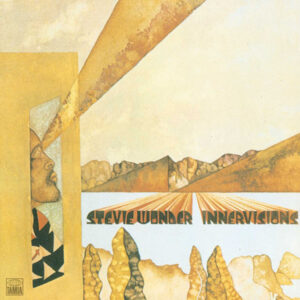 Stevie Wonder / Innervisions
Stevie Wonder / InnervisionsTamla, 1973
Stevie Wonder was still only 23 when he released Innervsisions, but it was already his sixteenth studio album, having signed with Motown when he was just eleven. For much of the sixties, the Tamla label had churned out LPs that cashed in on the musical and vocal talents of “Little Stevie Wonder.” But by the start of the seventies the “boy genius” had emerged as a progressive, singular artist that merited absolute creative control.The resulting sequence of five albums Wonder made between 1972 and 1976 are widely considered as constituting his “classic period.” Innervisions has always been my favourite of these, though thematically the record might also be the bleakest. Wonder was intent on addressing topics central to the black American experience during the turbulent days of 1973 (and 2023, for that matter): drug abuse, inequality, systemic racism, political disillusionment, even spiritual transcendence. In doing so he became both an establishment-friendly representative of the black community and, for white America, a benign messenger of its plight. Only rarely did gritty realism get the better of Wonder’s hope for social idealism, such as on the epic, cinematic “Living For The City,” whose dramatic interlude is impossible to hear without mentally directing the accompanying movie visuals. I must have quoted the line, “New York City… just like I pictured it,” out loud a dozen times during my first visit to Manhattan. The sound of Innervisions was dominated by Wonder’s innovative use of synthesizers, but he played almost every other instrument on the album as well, confirming his status as the decade’s foremost one-man-band. It perhaps also reinforced the theory that his extraordinary musical vision was directly related to the fact that he had lived his entire life without the ability of sight. Ironically, three days after Innervisions was released, Wonder was involved in a near fatal car crash in North Carolina, when a log flew off the back of a truck and struck him in the head. He lay in a coma for ten days but when he awoke his extrasensory perception only became heightened.
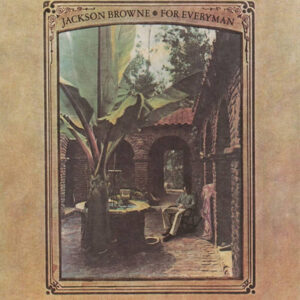 Jackson Browne / For Everyman
Jackson Browne / For EverymanAsylum, 1973
For Everyman, Jackson Browne’s self-produced second album, came out fifty years ago this month. The record’s opening track was “Take It Easy,” a song Browne had been struggling with until Glenn Frey (who happened to live in the same Echo Park apartment building) offered to help finish it. Frey apparently came up with the now-iconic line about the girl in a flatbed Ford. The Eagles’ rendition appeared on their debut album in 1972 before Browne recorded his own version. Side one closed with “These Days,” another old composition that Browne had written for a music publishing company while living in New York. The song was first recorded in 1967 as a string-laden track by German model-turned-singer and Velvet Underground associate, Nico, on her Chelsea Girl LP. Several other versions (including those by Jennifer Warnes and Gregg Allman) were released before Browne finally cut his own. The title track was written as a sort of response to the Crosby, Stills & Nash song, “Wooden Ships.” Despite the So-Cal arrangements and soaring vocals, Browne’s music was always a repudiation of sixties idealism. His songs were drenched in apocalyptic imagery and steeped in the paranoia and dread of the early seventies. With its broader social and environmental implications, “For Everyman” was at odds with the so-called “me decade,” and set the tone for Browne’s more consciously political work of the eighties. This album was the first Jackson Browne record to feature David Lindley, whose guitar and fiddle provided new texture to the music, and came to help define Browne’s sound for the rest of the seventies. Joining the aforementioned Frey are precisely the guest musicians you’d expect to find listed on a Los Angeles recording from 1973: Don Henley, David Crosby, Bonnie Raitt, Joni Mitchell… Even the honky tonk piano of Elton John (credited as “Rockaday Johnnie”) pops up on side two. The original die-cut LP cover featured a photo of the artist sitting in the courtyard of his childhood home, Abbey San Encino, in Highland Park. Using rocks from the Arroyo Seco, it was completed by hand in 1921 by Browne’s grandfather, Clyde, and is still owned to this day by his brother, Edward.
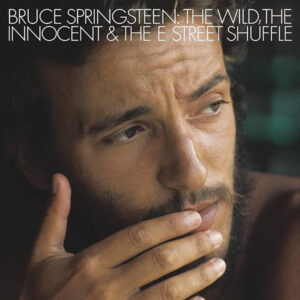 Bruce Springsteen / The Wild, The Innocent & The E Street Shuffle
Bruce Springsteen / The Wild, The Innocent & The E Street ShuffleColumbia, 1973
Bruce Springsteen’s second album, The Wild, The Innocent & E Street Shuffle, arrived just eleven months after his debut LP, but in terms of ambition and execution, the distance between the two records is better measured in light years. Some observers have suggested that Springsteen borrowed the title from The Wild and The Innocent, a 1959 romantic western starring Audie Murphy and Sandra Dee. Certainly, in their scope and imagery, these poetic tales of boardwalk life and urban romance are nothing short of cinematic. There are just seven tracks on the record, four of which stretch out over seven minutes. The album moved beyond the acoustic folk-rock of Springsteen’s first record, incorporating elements of R&B and jazz into a Jersey soul stew, while wringing every eccentricity out of a carnivalesque band whose sound is as expansive as it is hyperactive. This change in direction is reflected in the band photo on the back cover, taken by David Gahr in the doorway of an antique store in Long Branch, NJ. This line-up still included David Sancious on keyboards and Vini “Mad Dog” Lopez on drums. Aside from his extraordinary piano intro to “New York City Serenade,” Sancious’ other indirect contribution to Springsteen folklore is the fact that his mother’s Belmar home was located on E Street — the band had used her garage as a rehearsal space. This album (and its title track) was the first official mention of the now-mythical address, though the band only became known as The E Street Band in September 1974, by which time Sancious had left the group with Lopez’s replacement, Ernest “Boom” Carter, to form a jazz-fusion band called Tone. Springsteen never sounded like this again: as the lives of his characters got harder and leaner, so did his songs. Following his next album, 1975’s Born To Run, his star entered the stratosphere, never to return. To this day this record remains by far his most musical, but perhaps also his most overlooked. I don’t have a favourite Springsteen album (this and the six that came after it are all essential) but I still think side two of this LP is the finest suite of music he ever recorded.
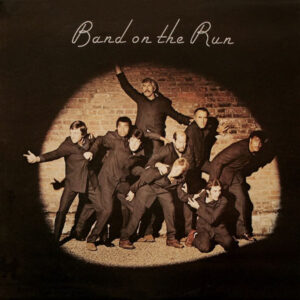 Paul McCartney & Wings / Band On The Run
Paul McCartney & Wings / Band On The RunApple, 1973
Band On The Run was Paul McCartney’s fifth solo album, and the third credited to Wings, though by the time recording began the band’s line-up had been reduced to just three people: McCartney, wife Linda, and loyal sideman Denny Laine. Lead guitarist Henry McCullough quit after an argument with McCartney during rehearsals for the album on his farm in Scotland; drummer Denny Seiwell followed him a week later. Perhaps inspired by the title track’s themes of freedom and escape, McCartney asked EMI to send him a list of their overseas recording facilities, from which he chose their studio in Lagos. But the exotic setting was not quite the creative idyll McCartney had anticipated. Still under military dictatorship following the end of the civil war, Nigeria was hardly a safe haven. One night Paul and Linda lost a bag of demo cassettes and notebooks of lyrics when they were robbed at knifepoint after ignoring local advice and going for an evening walk. The group only received EMI’s warning about an outbreak of cholera once they’d returned home, but during one session McCartney did suffer a bronchial spasm brought on by heavy smoking. Located in the port suburb of Apapa, the ramshackle studio had a faulty control desk and was prone to losing power, but somehow the band got enough basic tracks down to finish overdubs back in London. McCartney’s solo career had yet to reach the critical or commercial heights he’d enjoyed as a Beatle, but Band On The Run was an international success. It’s probably still McCartney’s best-known post-Beatles record, thanks also to Clive Arrowsmith’s cover photograph, which, in addition to the band, featured various notables such as Clement Freud, Christopher Lee and Michael Parkinson. My copy is actually a 1978 Dutch pressing, picked up at my go-to LP emporium Academy Records back in 2017. It’s missing the large poster included with the original version, but the opaque lilac vinyl more than makes up for it!
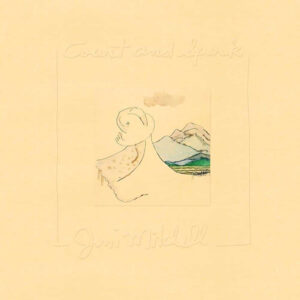 Joni Mitchell / Court and Spark
Joni Mitchell / Court and SparkAsylum, 1974
They used to call the seventies “the decade that taste forgot.” Admittedly, some of the music released in 1974 has aged about as well as a bottle of Blue Nun. Which is why Court and Spark — Joni Mitchell’s sixth album and arguably the most confidently stylish record of the seventies — a reminder that there was more to that decade than bell bottoms and garish wallpaper. Instead, through its lush arrangements and extraordinary lyrical imagery, this record evokes elegant interior scenes of Halston dresses perched on Cesca chairs. To me it’s the audio equivalent of Annie Hall or the Citroën CX. Though I enjoy her earlier work, Court and Spark was the moment Mitchell shed her folk-pop origins and began a new creative ascent. Having spent most of 1973 in the studio assembling the right group of musicians to suit the jazz-oriented arrangements her sophisticated new material required, she ended up hiring saxophonist Tom Scott, whose fusion band, the L.A. Express, provided most of the backing tracks. The record also includes cameos by the Band’s Robbie Robertson, old flames David Crosby and Graham Nash, and even comedy duo Cheech & Chong. Despite the jazz line-up, it was the closest thing Mitchell ever made to a true pop album, and remains her most commercially successful release. Sales were boosted by the hit singles “Help Me” (later referenced by Prince on “The Ballad of Dorothy Parker”) and “Free Man In Paris,” written from the point of view of Asylum label boss David Geffen (who failed to convince her to leave it off the record). Combining complex studies of modern romance and jaded social critiques, Court and Spark is certainly of its time but also the first in a series of albums that represent Mitchell’s most mature and enduring work — though she alienated many casual fans in the process. My LP is an original 1974 Santa Maria pressing with embossed text and a gatefold sleeve. I’m not sure what happened to my CD copy. But you need some kind of physical format to listen to this album since Joni removed all her music from Spotify, proving once again that she is an artist in the truest sense of the word.
 Steely Dan / Pretzel Logic
Steely Dan / Pretzel LogicABC, 1974
Compared to its predecessor, the material on Pretzel Logic, Steely Dan’s third album, adhered to pop convention. But these radio-friendly songs belied sophisticated bop devices, plus a cynicism and paranoia that by 1974 had all-but pervaded American life. Much of the music seemed to seek refuge in an already-forgotten past — no other Dan album was packed with quite so many overt references to its leaders’ jazz heroes. The first track and lead single, “Rikki Don’t Lose That Number,” flagrantly extrapolates the piano from Horace Silver’s 1964 composition, “Song For My Father.” Side two opener, “Parker’s Band,” is a swinging paean to the titular sax pioneer and the clubs on 52nd Street, even referencing two separate “Bird” tunes in the second verse. There’s even a cover of Duke Ellington’s “East St. Louis Toodle-oo,” on which Jeff “Skunk“ Baxter imitates a muted horn with his guitar’s wah-wah pedal. In May 1974 my parents saw Steely Dan at the Rainbow Theatre in London (decades later I found a bootleg CD of the show at Norman’s Sound & Vision in the East Village and sent it to them). Though by this point the touring group had expanded to include the likes of Jeff Porcaro and Michael McDonald, Pretzel Logic was the last album the Dan made as an actual band. Walter Becker and Donald Fagen cut short the tour, trading in the road for the safe haven of the recording studio. For the rest of the decade, the duo — in an at times obsessive pursuit of sonic perfection — plucked musicians as needed from L.A.’s stellar roster of session aces (as recalled with typical grandiloquence in the liner notes for the 1999 CD reissue). My gatefold LP is an original 1974 Santa Maria pressing. The cover photo was taken by Raenne Rubenstein on the west side of Fifth Avenue near the 79th entrance to Central Park, just south of the Metropolitan Museum. On the back cover the twin towers of the San Remo apartment building on Central Park West are clearly visible through the bare trees. In fact half a century later little in this photo has changed, with the exception of 15-cent “pretzles.” Those days are gone forever, over a long time ago… oh yeah.
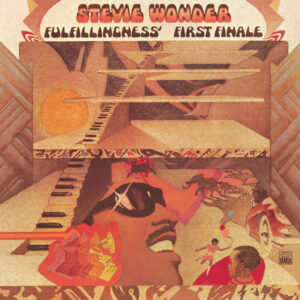 Stevie Wonder / Fulfillingness’ First Finale
Stevie Wonder / Fulfillingness’ First FinaleTamla, 1974
Though Stevie Wonder was still only 24 at the time, Fulfillingness’ First Finale was already his seventeenth studio album. Though it went to the top of the Billboard album charts, this record is definitely the most forgotten and overlooked of Wonder’s so-called “classic period” (even by me). That might be due to the awkward, alliterative title: is “fulfillingness” even a word? On top of that the sleeve was printed on a matte cardboard, stripping detail from Bob Gleason’s elaborate artwork and rendering the package a bit dull and murky. Having said that, this is a contemplative and strangely beautifully LP that rewards repeated listens, and one that is truly emblematic of the sophisticated one-man band studio wizardry and mind-altering chord progressions that by 1974 put Wonder in a genre of futuristic art-soul entirely of his own creation. Michelle Obama calls this her favourite album of all time, and it’s not hard to imagine why. FFF (as probably nobody else calls it) is perhaps best-remembered for its singles, the funky “Boogie On Reggae Woman” and the angry “You Haven’t Done Nothin’,” a bitter diatribe aimed at Richard Nixon (the disgraced president resigned from the White House two days after the 45 came out). The LP’s most sombre track, “They Won’t Go When I Go,” was covered by George Michael on his second solo album, which I actually prefer to the original. In 1975 Wonder took home his second consecutive “Album of the Year” Grammy. In 1976 the award went to Paul Simon, who thanked Wonder for not making an album that year.
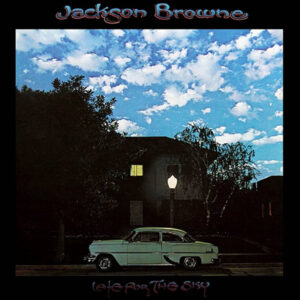 Jackson Browne / Late For The Sky
Jackson Browne / Late For The SkyAsylum, 1974
If you’re anything like me, you can probably summon a mental shortlist of albums that mean more to you than all the others. I’m talking about the records that through repeated listens over many years have passed the point of mere familiarity, to the extent that they feel more like a part of your personal history or even an extension of your own self. For me, this album is one of those. Late For The Sky was Jackson Browne’s third LP, and expanded on some of the heavy themes — love, death, identity, alienation, adulthood — mapped out on the first two. But unlike those records, on this one there we no hits, and barely any hooks. There are only eight tracks on this album, six of which stretch out like expansive poems. At just 25, Browne had already proven himself a lyricist of rare eloquence and perspective, but there was nothing indulgent or pretentious about his writing. These songs were more like sermons, and a perfect match for his extraordinary voice: simple, soaring, searing. It all feels as natural and as transcendent as flying. Browne became the quintessential Los Angeles singer-songwriter, but he’d cut his teeth as a precocious teen in the Greenwich Village scene. In traversing these two seemingly disparate pop schools, no artist so accurately encapsulated the American mood of the first half of the seventies, as a generation’s youthful idealism and aspirations gave way to disillusionment, resignation, paranoia and fear (the title track was used, somewhat incongruously, in Martin Scorsese’s Taxi Driver). Though the seemingly mellow West Coast arrangements make this record sound very much of its time, it was also years ahead of it. With its apocalyptic imagery and universal chorus of hope, side two closer “Before The Deluge” warns of the dangers of indifference — both environmental and social — predicting the rise of yuppie culture and pre-empting Browne’s own political activism of the eighties. The iconic cover was shot on South Lucerne Avenue in Windsor Square. The concept was Browne’s (“if it’s all reet with Magritte”), as was the car, a 1953 Chevrolet Bel-Air, apparently given to him by his former roommate, Glenn Frey.
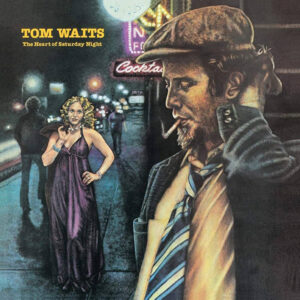 Tom Waits / The Heart Of Saturday Night
Tom Waits / The Heart Of Saturday NightAsylum, 1974
The cover for Tom Waits’ second album, The Heart Of Saturday Night, was apparently inspired by the artwork for Frank Sinatra’s 1955 album In The Wee Small Hours, but I never liked it — it always felt too literal, and a bit corny. The two photos taken by Scott Smith in front of a Los Angeles newsstand on the reverse sleeve would have made a much better front and back cover pairing. There’s even plenty of dark negative space where the text could go. But perhaps instead of retroactively redesigning LP artwork half a century after the fact I should talk about the record itself. The album expands upon the after-hours folk-jazz of Waits’ 1973 debut, but this time the setting is a night on the town, consecrating the artist’s enduring seventies persona as a boozy nocturnal troubadour. This album was also the start of a decade-long partnership with Bones Howe, who went on to produce all of Waits’ LPs on the Asylum label. The title track tackles the kind of themes that Waits’ contemporary Bruce Springsteen was writing about circa 1974. But while Springsteen’s early songs were fueled by the possibilities of youth, Waits’ characters seemed already resigned by life’s limitations. Waits himself always appeared like a man out of time, a product of L.A.’s early-seventies nostalgia for the jazz age who, by twenty-five, had seemingly already lived a life’s worth of heartbreak. Most tracks incorporate a standard rhythm section of seasoned jazz session players, though some include strings arranged by Mike Melvoin (Wendy’s dad). Two tracks — “Diamonds On My Windshield,” on which Waits raps like a Beat poet over a relentless bassline, and the almost spoken word closer, “The Ghosts Of Saturday Night” — hint at the direction Waits would take on subsequent albums. On The Heart Of Saturday Night his caramel croon was still intact, but by the time Small Change came out in 1976, his music had become more idiosyncratic, and his voice raspier, at times approaching a soon-to-be-customary growl. I love all of Waits’ seventies albums, but this is probably the one I’ve played the most. Perhaps unsurprisingly, I’ve never listened to it in the daytime…
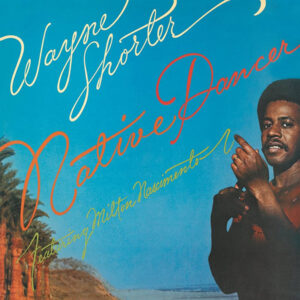 Wayne Shorter featuring Milton Nascimento / Native Dancer
Wayne Shorter featuring Milton Nascimento / Native DancerColumbia, 1975
I was well into my thirties before I discovered Native Dancer, a collaboration between Wayne Shorter and the Brazilian singer Milton Nascimento. I kept seeing it at my local used vinyl emporium, Academy Records; eventually I picked it up and it immediately became one of my favourite albums. I played it a lot at our apartment on East 11th Street, but I have two distinct memories of hearing it in less likely places. The first was on an extremely expensive stereo at an audiophile friend’s house during a ski weekend upstate (he’d actually met Shorter once). The second was through cheap headphones on a flight from Buenos Aires to São Paulo in 2014. I put this album on as we started our descent, and spent the next forty minutes gazing out over the sprawling metropolis as it passed by my window, seemingly without end. The album finished before the plane landed.
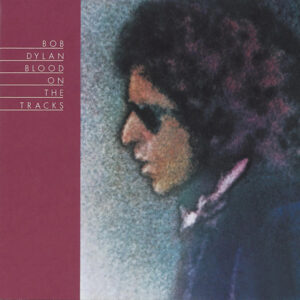 Bob Dylan / Blood On The Tracks
Bob Dylan / Blood On The TracksColumbia, 1975
Bob Dylan’s inconsistent output in the first half of the decade had thrown into question his relevance in the seventies; Blood On The Tracks secured his enduring reputation as an elusive artist capable of surprise reinvention. Though Dylan has typically refused to be drawn on the subject, this “comeback” record’s confessional lyrical content is famously noted as relating to the breakdown of his marriage to Sara Lownds. Their son, Jakob, has described the songs as “my parents talking.” In early 1974 Dylan began a relationship with Ellen Bernstein, an employee at Columbia Records. Around the same time he began attending art classes five days a week with the painter Norman Raeben, an experience that made him reconsider his understanding of space and time. Dylan credits Raeben for showing him how to create narratives that placed “yesterday, today and tomorrow all in the same room.” It was Raeben that described one of Dylan’s paintings as being “tangled up in blue.” Dylan once said he wrote that song after spending a weekend listening to Joni Mitchell’s 1971 album, Blue, whose intimate sound he also sought to emulate. Indeed, he initially intended to cut the new songs with an electric band before reverting to simpler acoustic arrangements. The sessions took place in New York in September 1974, but after playing the album for his brother, Dave Zimmerman, Dylan was convinced to re-record five of the ten tracks with different musicians in Minneapolis just after Christmas. Three of the LP’s songs have been performed only once in concert; several others were reimagined for the Rolling Thunder Revue tour in late ’75, and have remained part of Dylan’s live repertoire ever since. As someone who was born too late to experience Dylan as a cultural phenomenon in real time, navigating his vast discography after the fact was a daunting task. But this record soon became one of my favourites: its literary yet relatively direct relationship songs were perhaps easier for a nineties teenager to connect with than those borne from the distant folk or blues traditions that Dylan had written just a decade prior.
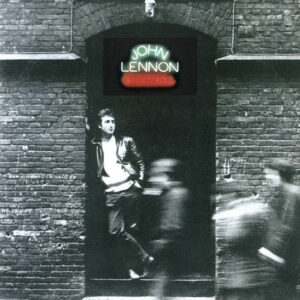 John Lennon / Rock ’n’ Roll
John Lennon / Rock ’n’ RollApple, 1975
Rock ’n’ Roll, John Lennon’s sixth post-Beatles album, came about after New York music publisher Morris Levy belatedly noticed that the opening line of “Come Together” (on the Beatles’ Abbey Road) was lifted from Chuck Berry’s “You Can’t Catch Me.” As part of the lawsuit settlement, Lennon would have to record three Levy-owned songs on his next album. Instead, he chose to cut an entire LP of covers, tentatively titled “Oldies But Mouldies.” By this point Lennon was living (at the urging of Yoko Ono) in Los Angeles with the couple’s personal assistant, May Pang. Lennon would later refer to this period as his “Lost Weekend,” after the Billy Wilder film. Though Lennon’s 18 months on the West Coast became infamous for his public displays of drunkenness, at Pang’s encouragement he also reconnected with his son, Julian, whom he hadn’t seen in two years. Eventually the couple returned to Manhattan, renting an apartment on East 52nd Street and adopting two cats, Major and Minor, before John returned to Yoko in February ’75. The idea of an oldies record wasn’t new: both David Bowie and Bryan Ferry had put out albums of sixties covers in 1973, by which point a rock and roll revival was in swing, a fad spurred in part by nostalgic movies such as American Graffiti. Even Ringo Starr had, er, starred in a hit British flick called That’ll Be The Day. In early ’74 the sitcom Happy Days launched on ABC — John and Julian were early visitors to the set. Lennon brought in Phil Spector to produce the album, but the October ’73 sessions soon descended into alcohol-fueled mayhem. After an intoxicated Spector fired a gun into the ceiling (while inexplicably dressed as a surgeon), Lennon was banned from the studio. Spector then absconded with the tapes, forcing Lennon to start from scratch. Today, much of this record sounds quite ersatz to my ears — maybe the best thing about it is Jürgen Vollmer’s cover shot of a young Lennon in a Hamburg doorway. In 1975 the oldest of these songs was just twenty years old, which I think speaks to the impact of everything that had happened, musically and culturally, since 1955. Or perhaps nostalgia just ain’t what it used to be…
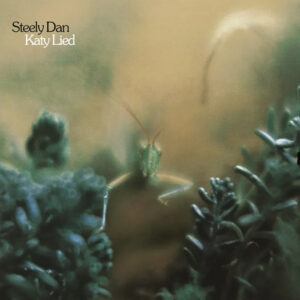 Steely Dan / Katy Lied
Steely Dan / Katy LiedABC, 1975
Katy Lied, Steely Dan’s fourth album, took its name from a line in “Doctor Wu,” while the insect on the cover is a katydid, a visual pun on the title. It was the first Steely Dan album following the dissolution of the touring band in 1974; for the rest of the seventies Steely Dan would exist purely as a studio entity, with a rotating cast of L.A. session musicians selected by Walter Becker and Donald Fagen on a track-by-track basis. It was also the first Steely Dan record to feature the backing vocals of Michael McDonald, whose era-defining voice pops up on the second pre-chorus of “Bad Sneakers.” But Katy Lied is probably most notable for the emergence of Jeff Porcaro. The son of jazz drummer Joe Porcaro, young Jeff had played drums as a nineteen-year-old on “Night By Night” on Steely Dan’s previous LP, Pretzel Logic. Now barely into his twenties, he sat behind the kit on nine of Katy Lied’s ten tracks (the legendary Hal Blaine takes over on the tenth). Porcaro went on to form Toto, while also playing on hundreds of records as a session musician until his death in 1992. He’d become ill after spraying his lawn with insecticide; a coroner later determined he died from a heart attack caused by years of smoking and cocaine use. Becker and Fagen were typically dissatisfied with the finished album’s sound quality, supposedly due to a malfunction with a nascent noise-reduction system. Just last month a remastered UHQR edition was released, to the great excitement of audiophiles, but both my 1975 LP copy and my 1999 remastered CD have always sounded pretty flawless to me. I used to have an MCA vinyl reissue from the eighties, but I replaced it with this original ABC pressing (complete with innersleeve), which I found a few years ago at Arroyo Records in Highland Park. According to a sticker on the reverse, it once belonged to a South Pasadena resident named Thomas C. Oddone, who himself sounds a bit like a character from a Steely Dan song. Incidentally, that same afternoon who should I run into taking out his recycling but unmistakeable session bassist Leland Sklar, who somehow never played on a Steely Dan session.
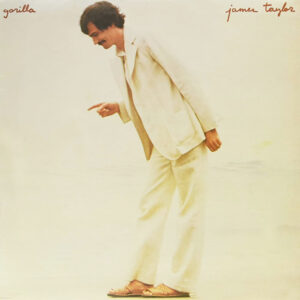 James Taylor / Gorilla
James Taylor / GorillaWarner Bros., 1975
Perhaps unsurprisingly, I’ve always had a certain affinity for JT, an unlikely bond that was assigned to me at birth. Luckily I’ve always liked his music (imagine the burden of going through life with the name “Phil Collins”). My parents had all of James Taylor’s records, but in 1979 they probably couldn’t have conceived he’d still be famous several decades later. It was only as an adult that I discovered James Taylor had a brother named Alex — which is also my brother’s name! Not a week goes by that a stranger doesn’t remind me of my wealthier and balder namesake. Over the years I’ve come to expect it every time I arrive for an appointment or call a customer service number, along with the requisite, “I bet you get that all the time, don’t you?” that inevitably follows. (Sometimes I respond, “No, actually you’re the first.”) Although in recent years I’ve noticed a growing number of younger people in whom my name fails to illicit any reaction whatsoever, suggesting there might come a time in my life when these comforting little exchanges are just a memory.
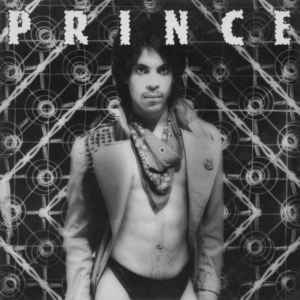 Prince / Dirty Mind
Prince / Dirty MindWarner Bros., 1980
Recorded mostly alone at his home studio and clocking in at just thirty minutes, Dirty Mind is the closest Prince ever came to making a punk record. But it’s not punk, it’s Prince, which by 1980 was already something unique but quite indefinable. “Don’t make me black,” the young musician requested of Warner Bros. vice president Lenny Waronker, shortly after signing a three-record deal with the label. At a time when the divergence between black and white music was perhaps never wider, Prince was starting to bridge that gap. His sound — a raw, spare, new wave funk characterized by intricate keyboards, clean guitar and limber falsetto — questioned the stifling definition of black music, while his androgynous image and explicit lyrics challenged ideas of black masculinity. The album’s title may have hinted at the nature of its content, but few were prepared for “Head” and “Sister,” the LP’s most notorious tracks, which packed a one-two sucker punch of unprecedented lewdness. The former led to original keyboardist Gayle Chapman walking out of Prince’s band; she was replaced by Lisa Coleman, who delivers the lines of the song’s virgin bride with deadpan detachment. Dirty Mind positioned Prince as a sexually ambiguous provocateur par excellence, which for years would prove an obstacle for conservative critics. The album’s accompanying tour — on which Prince performed in bikini briefs and “played” an ejaculating Telecaster — unsurprisingly failed to win them over. In 1981, not long after the Village Voice’s Robert Christgau had suggested Mick Jagger “fold up his penis and go home,” Prince and band were pelted off the stage while opening for the Rolling Stones at Los Angeles Coliseum (a quart of Jack Daniels reportedly missed his head by a matter of inches). Had they looked past his erotic exuberance, they may have also recognized Prince as an artist of singular talent already evidenced by Dirty Mind. Every track on here could have been a hit — that is, had the radio stations been allowed to play them…
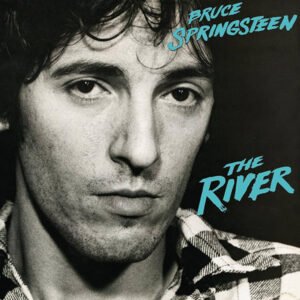 Bruce Springsteen / The River
Bruce Springsteen / The RiverColumbia, 1980
Bruce Springsteen’s fifth album, The River was the culmination of a prolific and productive period: no less than fifty new songs were recorded during the live sessions at the Power Station (a former ConEd plant) on 53rd Street. Twenty of these ended up on the album, resulting in Springsteen’s first double LP (I believe all the discarded tracks have since shown up on various box sets and expanded editions). By 1980 Springsteen’s epic live shows were already the stuff of legend — I always think of this album as harnessing some of that performance energy and encapsulating what I’d consider to be the classic E Street sound and spirit. The River is cleaner, brighter and funnier than its predecessor, and was Springsteen’s first album to reach number one. But it’s still often overshadowed by his more celebrated work, perhaps because it’s harder to define. If his previous two albums, Born To Run (1975) and Darkness on the Edge of Town (1978) were clearly the artistic statements of a neurotic perfectionist, The River felt like the contents of Bruce’s brain scattered over four sides. The extended running time provided space to switch between a range of musical moods and complex emotional concerns with the ease and breeze of a radio dial, from goofy garage rock to boardwalk soul and even solemn introspection. Amid the depressed national psyche of the post-Vietnam years Springsteen had developed into a writer of rare social consciousness. The lives of working Americans (including that of his own brother-in-law on the title track) became a rich subject, and he’d sometimes even inhabit his characters in the first person. It was the shift towards this type of material in the eighties that led to Bruce becoming a highly misunderstood artist. To this day conservatives consistently reduce him to a patriotic champion of old-fashioned blue collar values, while I’ve heard him dismissed by snobbier liberals as a purveyor of mindless rock, a jingoistic simpleton. But clearly neither party was ever really listening, because musically and otherwise, Springsteen was always everything but simple.
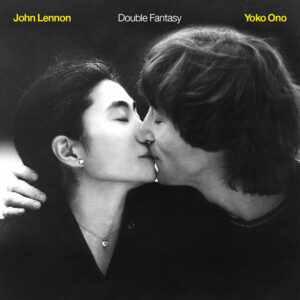 John Lennon and Yoko Ono / Double Fantasy
John Lennon and Yoko Ono / Double FantasyGeffen, 1980
Credited to John Lennon and Yoko Ono, Double Fantasy is subtitled “A Heart Play” and packaged as a celebration of the couple’s union. But if the record’s theme was love, its timing — or rather, the timing of Lennon’s assassination exactly three weeks later — resulted in it forever being associated with his death. Lennon’s return to the studio announced the end of a five-year, self-imposed exile from the music industry, during which the former Beatle holed up at the Dakota and assumed the role of kimono-wearing, bread-baking, diaper-changing house husband. His songs here are paeans to that domestic bliss, or at least the version of it he’d like us to believe. Notably, for the first time in his solo career Lennon sounds content. No longer troubled by the past, he’s embracing middle age and looking forward, but the material, while sentimental, is never syrupy. Aside from its showcasing Lennon as the master song crafter that he was, what I’ve always liked most about this album is its production and arrangements, which still sound warm, tight and essentially timeless. In contrast, Ono’s contributions feel more rooted in time, as if she was striving too hard to sound like 1980. In what would amount to little more than a futile attempt to rewrite (music) history, I sometimes imagine re-sequencing the Lennon tracks from Double Fantasy together with those from Milk & Honey, the album of outtakes from the same Hit Factory sessions released a few years after his murder. Even after all these years it’s impossible to separate Double Fantasy from the thought of what could have been.
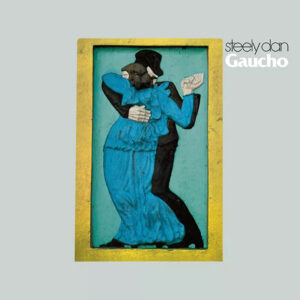 Steely Dan / Gaucho
Steely Dan / GauchoMCA, 1980
Gaucho was Steely Dan’s seventh album and the final release of the band’s original run (until 2000’s Grammy-winning Two Against Nature). The hiatus that Walter Becker and Donald Fagen imposed following this record was perhaps inevitable given that it represents an almost absurd zenith of the jazz-rock hipster duo’s obsessive studio perfectionism. For instance, Jeff Porcaro’s drums on the title track were assembled from forty-six different takes, while a satisfactory mix of the fade-out on “Babylon Sisters” was only achieved on the fifty-fifth attempt. Notoriously, a recording of “The Second Arrangement” was accidentally erased by an assistant engineer; rather than spend weeks re-recording the track, the song was simply shelved (a demo surfaced years later). Some say the resulting album is more sterile than its predecessors, but its immaculate production is tempered by its undeniable grooves and disreputable lyrical concerns (an alternative title might have been “More Songs About Hookers And Coke Dealers”). In 2014 while strolling the Caminito in La Boca neighbourhood of Buenos Aires, I came across the relief by Argentine sculptor Israel Hoffman, on which the LP’s artwork is based. Sadly I was not wearing my spangled leather poncho at the time…
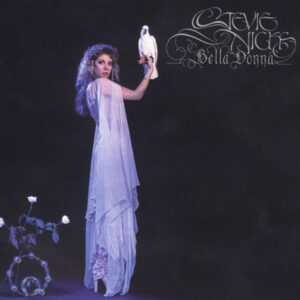 Stevie Nicks / Bella Donna
Stevie Nicks / Bella DonnaModern, 1981
Stevie Nicks’ first solo album, Bella Donna, has a lovely, late summer feeling. I was late discovering this album at all — I’d never heard it in full until I picked up the LP from Academy Records around 2009. But I always liked Stevie Nicks’ contributions to Fleetwood Mac. By comparison Christine McVie’s songs often seemed slight to me and lacking in lyrical or emotional complexity, while by the end of the seventies Lindsey Buckingham was beginning to buckle under the weight of his own frantic new wave aspirations. In contrast, Nicks’ material was poetic, personal, steeped in mystical symbolism and rooted in a timeless radio rock sound that is more evident than ever on Bella Donna. The title track — inspired by Nicks’ boyfriend’s mother — is probably my favourite song of hers, though the album is best remembered for the single “Edge Of Seventeen,” the odd title of which came about after Nicks misheard Tom Petty’s first wife, Jane, recall how she’d met her husband at “the age of seventeen” (evidently Jane had a strong southern accent). Petty himself shares the lead vocal on “Stop Draggin’ My Heart Around,” a track left off his Heartbreakers album Hard Promises, and most of that band plays on this record. The rest of the personnel is a who’s who of the era’s top session players and Stevie’s biz pals, whose playing melds cohesively thanks to Jimmy Iovine’s unaffected production. Perhaps because I only heard it after we were living together and married, this album — maybe more than any other — always reminds me of my wife, Hillary. I remember “Leather And Lace” (a duet with the Eagles’ Don Henley) coming on the radio one grey afternoon as her dad drove us down to D.C. not long before he died. Some years later Hillary put this album on late one night as we drove through country roads in Mallorca with just our headlights to guide the way. Those moments don’t happen that often, but when they do it can be the best way to listen to music: in near darkness and without distraction, far from home but alongside the person you love.
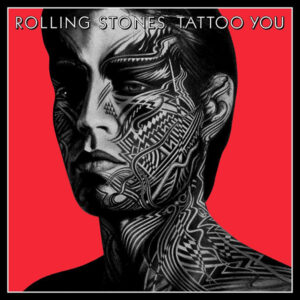 The Rolling Stones / Tattoo You
The Rolling Stones / Tattoo YouRolling Stones Records, 1981
Tattoo You was the Rolling Stones’ sixteenth studio album, though unusually this one was comprised of outtakes and discarded material from previous sessions, with some basic tracks dating back as far as 1972. This was borne of necessity: Mick Jagger and Keith Richards were in the midst of a feud that would last (on-and-off) for most of the decade. Missing lyrics were completed and new parts recorded separately, before Bob Clearmountain mixed the ten tracks into a cohesive final product. Like many great Stones hits, side one opener “Start Me Up” hangs on a simple Keith riff, though the song was originally conceived with a reggae tempo. I’ve always loved the open, economical arrangement of the finished cut, and how Charlie Watts’ drumming really makes it swing (he was always a jazz man at heart). If “Start Me Up” was a number to which Mick could strut his stuff to the point of self-parody, its flip-side (in every sense) is side two closer “Waiting On A Friend,” whose lyrics reveal an age-appropriate maturity towards relationships, the kind you might expect from men on the cusp of forty — with the possible exception of the Rolling Stones. The memorable sax solo was performed by an uncredited Sonny Rollins, while the single’s accompanying video was famously shot on St. Mark’s Place in the East Village. Production on some of the Stones’ seventies records could be damp and murky, with vocals buried deep in the mix, but this album really cemented the cleaner, taught style that has come to epitomise their sound ever since. I love this record and some of the band’s subsequent releases, but as good as Tattoo You still is, it was also the album on which the Stones essentially settled on a successful formula for the rest of their career. In the mid-seventies they were being written off as irrelevant has-beens; by 1981 they’d adapted to a shifting scene without ever betraying their roots or not sounding like themselves. Tattoo You was the album on which the Rolling Stones finally recognised and embraced their greatest strengths, as well as their own mortality. It’s no surprise they’ve been riding out middle-age for forty years.
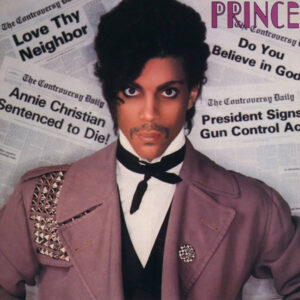 Prince / Controversy
Prince / ControversyWarner Bros., 1981
Falling between the new wave R’n’B breakthrough of the previous year’s release, Dirty Mind, and the drum machine textures of his 1982 double LP, 1999, Prince’s fourth studio album, Controversy, is sometimes overlooked. A sonic continuation of its predecessor that also hints at the innovative sounds Prince was already developing, Controversy is probably best remembered for its uncharacteristic lyrical exploration of political themes. The album opens with the title cut, a seven-minute slab of synth-funk inspired by conservatives’ curiosity surrounding Prince’s public persona. Rather than ease their confusion or discomfort about his race, religion, or sexuality, Prince transcends such concerns by continuing to defy easy categorization on every front — the track is merely further provocation. He even pauses halfway through to recite the Lord’s Prayer before entering into a repeated refrain: “People call me rude/I wish we all were nude/I wish there were no black or white/I wish there were no rules.” It’s a startlingly confident manifesto for the then twenty-three-year-old’s philosophy towards music, sex, and society in general, and the most important statement of his career up to that point. Prince’s socially-conscious mood continues on “Sexuality” (“Don’t let your children watch television until they know how to read”), while on side two he tackles such hot topics of the day as Cold War relations (“Ronnie, Talk To Russia”) and gun violence (“Annie Christian”). Those two oddities are often cited as among the most curious entries in Prince’s vast canon, but they are a quaint document of America’s anxieties in the early eighties. Elsewhere, Prince still finds room for his most reliable subject, as “Private Joy,” “Let’s Work,” and “Do Me, Baby” perhaps suggest from their titles alone. The album closes with a hilarious and brazen dose of Minneapolis rockabilly entitled “Jack U Off.” It’s the only track on the album to feature additional personnel, but maybe most significant for introducing Prince’s trademark preference for minimalist spelling. Though proper words were no longer always necessary, the message was only getting clearer.
 Simon & Garfunkel / The Concert in Central Park
Simon & Garfunkel / The Concert in Central ParkWarner Bros., 1982
On September 19, 1981, 500,000 people gathered on the Great Lawn for a reunion concert by Paul Simon and Art Garfunkel. The free event was organized to raise money for the restoration and maintenance of Central Park, which by the early eighties had, like much of New York, fallen on hard times. Why not call on the city’s greatest pop songwriter and his one-time singing partner? Despite an enduring cultural significance the duo had been apart for over a decade, and old tensions between them quickly resurfaced, due in part to opposing ideas for the music’s direction. Garfunkel wanted to keep it acoustic, Simon wanted to use a full band. Rather than split the show into two separate sets, the pair performed almost entirely together, with Garfunkel having to learn the newer songs from Simon’s solo catalogue. In the end the concert was a success, though ironically Simon’s debut live performance of “The Late Great Johnny Ace” (which referenced the recent murder of John Lennon) was interrupted by a deranged fan. That track was left off the live double LP that was released in February 1982, which was followed by a film of the concert broadcast on HBO. Later that year Simon & Garfunkel completed a world tour and began recording a new studio album. But their working relationship had once again deteriorated, and the sessions become so acrimonious that the project was abandoned (instead Simon released the solo album, Hearts And Bones, in 1983). In 1991 Simon played another concert in Central Park on a similar scale to that of ten years earlier, but this time refused Garfunkel’s offer to participate. Incidentally, as I prepared to vacate my East Village apartment of twelve years last February, this album was the last record I played before I packed up the turntable. That wasn’t a conscious decision, but the thing about live albums is that the audience forms an extra layer of separation between you and the performer, creating a very specific sense of occasion and place in the imagination of the listener. In this case the very existence of this record owes everything to nostalgia: a document of another time that’s already remembering another time. And what a time it was.
Neutron, 1982
These days the Sheffield band ABC are routinely lumped in with other British acts on the rise in the early eighties, but neither Spandau Ballet nor Duran Duran ever came close to making a record as good as this. It probably ranks as the finest British pop recording of the decade and certainly one of the greatest debut LPs of all time. ABC were formed when Martin Fry was asked to join Vice Versa after interviewing the band for the fanzine Modern Drugs, of which he was editor. In 1980 the foursome evolved into ABC and the blond, debonair Fry had emerged as its lead singer, probably thanks to his literary leanings and penchant for gold lamé suits. Practically a concept album, the record’s lyrical concerns revolve around matters of the heart, as its title suggests. Each song is a romantic melodrama, lended extra panache by the swooning Fry’s affected yet effective delivery. The band hired progressive studiosmith Trevor Horn to produce the LP. The resulting album is loud, camp and immaculate, and packed with what would become trademarks of Horn’s glossy production style. Laden with lush strings, brassy horns and irresistible bass lines, the record’s energy and club-friendly beats have more in common with the polished post-disco sounds emanating from the American R’n’B charts in 1982 than the sterile synth-pop that cluttered the UK Top 40. Though essentially a dance record, the song craft on display elevates the album above soulless anglodisco, making it a funkier early example of the sophisti-pop that would dominate British charts by the middle of the decade. “The Lexicon of Love” entered the UK chart at number one and produced four top twenty singles, though every one of its tracks could have feasibly been a hit. ABC made five more albums before disbanding in 1991. They reformed in 1997 but now basically existed as a Fry solo project. By 2007 his new band were a headline act on the eighties nostalgia circuit, an experience that inspired Fry to release a follow-up album, The Lexicon of Love II, in 2016. It reached number five but sadly it’s not on Spotify so I’ve never even heard it…
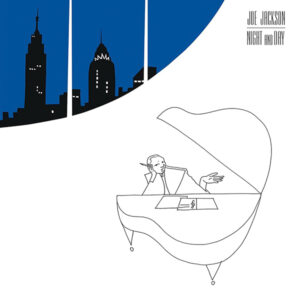 Joe Jackson / Night and Day
Joe Jackson / Night and DayA&M, 1982
Though it was his fifth album, Jackson himself has said that Night and Day felt more like a debut, given that it was a product of the creative inspiration and freedom he’d discovered since relocating to New York. He’d already made a jump blues record in 1981, but Night and Day was further rejection of the “angry young man” tag with which he’d been lumbered in his homeland. Jackson was no punk — he’d been trained at the Royal Academy of Music — and had more musical ideas to explore than new wave male posturing. While his themes and lyrics were based on observations of contemporary Manhattan culture, Jackson clearly aspired to write songs that were sophisticated in the Tin Pan Alley tradition — even the album’s title is a famous Cole Porter tune. The LP cover art may have suggested a midtown penthouse, but the music contained within had more to do with the tenements of Spanish Harlem or Alphabet City (Jackson’s next album even included an instrumental track entitled “Loisaida”). The guitarless record shimmers with Manhattan-centric sounds: cosmopolitan rhythms, salsa-tinged piano and percolating Latin percussion. This distinct sense of place is accentuated by the deep crossfade applied to the tracks on side one, an effect reminiscent of hearing music come and go from a passing car radio or open storefront, or even the familiar New York sensation of stumbling on an unknown world simply by turning a corner on a city block. Today Night and Day is remembered mostly for the hit “Steppin’ Out,” which reached number six on both sides of the Atlantic. Coincidentally, like the ABC record I posted the other day, Jackson also released a follow-up concept album in 2000 entitled Night And Day II, on which he revisits the ideas of the original. About ten years ago I found myself sitting two stools down from Jackson at Eisenberg’s lunch counter. I’d heard he could be a prickly character, so I was a little nervous to speak to him. But as he perused the menu I extended my hand and introduced myself as a fan. Jackson whipped his head in my direction, and without saying a word, told me he was in absolutely no mood to chat…
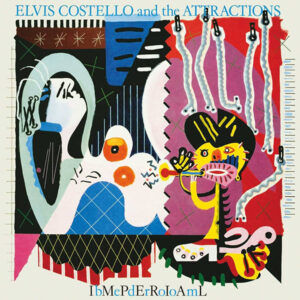 Elvis Costello & The Attractions / Imperial Bedroom
Elvis Costello & The Attractions / Imperial BedroomF-Beat, 1982
Imperial Bedroom was Elvis Costello’s seventh album, his sixth with his band The Attractions, and his third LP in eighteen months, consecrating the 27-year-old as the UK’s most prolific and ambitious pop songwriter. The record also emphatically confirmed Costello’s status as a lyricist of staggering eloquence, whose endlessly clever wordplay perhaps served to disassociate himself from these songs’ frequent themes of marital stress and political disgust. While his personal observations lay hidden beneath layers of rich metaphor, Costello continued to defy basic pop industry conventions. Imperial Bedroom included a ballad called “Almost Blue” (memorably covered by Chet Baker in 1987 and Costello’s own wife, Diana Krall, in 2004) which shared a title with his previous album, while the would-be title track of this one only appeared as the B-side to the single, “Man Out Of Time.” The LP also highlighted what a tremendously tight and tour-weary band the Attractions were by that point despite — or maybe due to — their much-documented fondness for the bottle. Imperial Bedroom was Costello’s first album of original material that wasn’t produced by Nick Lowe. Instead he enlisted the expertise of former Beatles engineer Geoff Emerick to help create the sonic drama and baroque flourishes these adult songs warranted. Yet like Sgt. Pepper, for all its pop mastery and orchestral bluster Imperial Bedroom didn’t include an obvious hit single. Perhaps that’s why it only reached number 6 in the UK and barely cracked the top 30 on the Billboard chart. But it topped the Village Voice’s annual Pazz & Jop Critics Poll, which is probably a more reliable barometer with which to measure quality. The Picasso pastiche on the front cover, titled “Snakecharmer & Reclining Octopus,” was painted by graphic designer Barney Bubbles, though credited to “Sal Forlenza, 1941.” It was the artist’s final collaboration with Costello before his suicide in 1983. According to Costello’s 2015 autobiography, the original canvas now hangs on the wall of his Greenwich Village apartment.
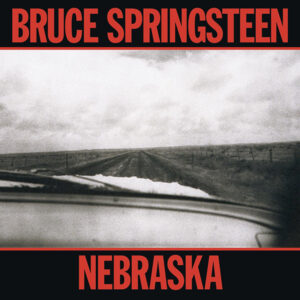 Bruce Springsteen / Nebraska
Bruce Springsteen / NebraskaColumbia, 1982
By the early-eighties Bruce Springsteen had already gained notoriety as a prolific studio perfectionist and indefatigable showman, but in stark contrast to the Spector-esque bombast of Born To Run, Nebraska was essentially a DIY solo album, and the closest thing he ever made to a lo-fi punk record. Using a TEAC Tascam Series 144 four-track cassette recorder mixed through an Echoplex, Springsteen began preparing demos of new songs at his home in Colts Neck, New Jersey, during the winter of 1981-82 (most of the tracks are said to date from January 3rd, 1982). In April 1982 Springsteen took the rough recordings to the E Street Band to flesh out in the studio, but after laying down tracks with the full band decided that the spare, unpolished original versions better suited the dark themes of the material (however, eight songs from the same sessions ended up on Born In The U.S.A. in 1984). So the tape that Bruce had been carrying around for weeks without a case in the pocket of his jeans became his next LP, though only after the application of sophisticated noise reduction techniques. The original tape recording was so raw and distorted that the album almost had to be released on cassette only since a record needle would barely track in the wax. If Nebraska was a sonic departure, thematically the record honed in on some of the bleaker subjects — primarily criminal behaviour and blue collar hardships — that Springsteen had begun to tackle on his previous two albums. Springsteen claimed some of these character stories were inspired by Howard Zinn’s book, A People’s History of the United States. The title track is about 19-year-old Charles Starkweather, whose killing spree in January 1958 gained national prominence. The fact that Badlands, the 1973 movie loosely based on the case, is also the title of a Springsteen song can’t be a coincidence. Nebraska also boasts one of the decade’s great record covers, designed by Andrea Klein. Its use of an all caps, red-on-black Franklin Gothic condensed typeface says more about the quintessentially American music contained within than any elaborate artwork ever could.
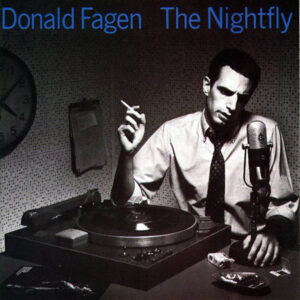 Donald Fagen / The Nightfly
Donald Fagen / The NightflyWarner Bros., 1982
I love this album so much that I bought it before I even had a record player, from the East Village Thrift Shop on Second Avenue, just a couple of blocks up from my first New York apartment. I think it only cost a dollar. I already knew it backwards by that point, which was true also of the music Fagen made as one half of Steely Dan. Like those records, The Nightfly was the product of meticulous studio perfectionism, allied by the usual cream of session players from which to pluck on a song-by-song basis (“I.G.Y” actually uses two different drummers). This tendency was compounded by the decision to record instruments separately (as opposed to performing live) and to use digital recorders (instead of conventional magnetic tape), making The Nightfly one of the first fully digital mainstream pop recordings. To understand the nascent technology three studio engineers were sent to take classes at 3M’s headquarters in St. Paul, Minnesota. But to this day it is considered one of the best-recorded LPs of all time, and still a popular choice among audiophiles when testing hi-fi components. Of course, The Nightfly sounded great — more surprising was its content, which is free of the jaded sardonicism that typified Steely Dan’s lyrics. Without Walter Becker, his longtime songwriting partner, Fagen wrote a sophisticated set of semi-autobiographical songs from the viewpoint of a young person stuck in East Coast suburbia during the Kennedy years — the album’s one cover is Leiber & Stoller’s “Ruby Baby.” The result is an album that’s jazzy and urbane, and imbued with a nostalgia for the forward-looking optimism of the period. This may be why I connect with the record so deeply: the line in “New Frontier” about moving to the city, learning design, and studying overseas spoke specifically to my own teenage aspirations. Fagen never toured with The Nightfly — he spent the bulk of the eighties suffering from depression and writer’s block. But I did see him perform the album in its entirety at the Beacon Theatre in 2019, a memorable show that was released in 2021 as The Nightly: Live.
 Prince / 1999
Prince / 1999Warner Bros., 1982
“Don’t worry, I won’t hurt you. I only want you to have some fun.” With that robotic, half-speed spoken intro — part reassurance, part declaration of intent — I became exposed to Prince. 1999 was Prince’s fifth album and the first I ever heard. But before the needle even dropped I was drawn to the double LP’s packaging, which provided an intriguing introduction to the little man’s universe. The artwork became iconic, but it was the inner sleeve photography that encapsulated both Prince’s mysterious otherness and undeniable sense of humour. No matter his one-man-band studio innovations or blatant sexual metaphors, it was immediately clear to me that Prince was also a bit silly. It was the appeal of this persona that helped make his music incredibly fun and utterly accessible, especially to a child. I remember hearing 1999’s title track — a dance anthem set against the backdrop of an apocalyptic vision of the new millennium — one summer night in the garden of my childhood best friend, Joe, whose parents were throwing a party. “1999” glided into “Little Red Corvette,” a crossover hit readymade for FM radio (or, by late ’82, MTV) with lyrics that recalled Dylan or Lennon. I loved it instantly because it was about a car (even if it was really about a woman). Only when I saw Prince open a show in 2011 by performing the two songs back-to-back did I realise how deeply the first side of 1999 is connected to my childhood. To this day, whenever I hear the cooing baby at the end of “Delirious” (the album’s third track and single) I recall drifting asleep in the dark, the same song unspooling on my Walkman. Few albums can match 1999’s triple opening punch, but the remaining three sides’ panoply of funky sonic textures became the blueprint for what was soon dubbed “the Minneapolis sound.” Ironically, given his lyrical concerns regarding the encroachment of technology, it was Prince’s creative command of the Linn LM-1 drum machine that made this album truly revolutionary, and perhaps his most influential. I’m convinced that even had it been released in 1999 (the year), 1999 (the album) would have still sounded decades ahead of its time.
 Aztec Camera / High Land, Hard Rain
Aztec Camera / High Land, Hard RainRough Trade, 1983
The ten songs that comprise Aztec Camera’s first album, High Land, Hard Rain, would be impressive by any standard. What makes them remarkable is that their composer, Roddy Frame, had only just turned nineteen. The record’s most epic and yearning track, “We Could Send Letters,” actually dated back to 1979! Despite (or maybe because of) his tender age, Frame exudes confidence on his debut, revealing a stunning mastery of melody, clever chord structures, and poetic, wistful lyrics that make you question what you’ve been doing with your life. Hailing from East Kilbride (a sort of Scottish equivalent of Milton Keynes), Aztec Camera’s wide-eyed, floppy-haired frontman soon drew comparisons with other highly-regarded songsmiths such as Elvis Costello, though Frame claimed he wanted to sound like a cross between his two idols: Joe Strummer and Wes Montgomery. Indeed, Frame’s guitar work on the album is extraordinary (apparently he used a different instrument on every track), and aside from a couple of synthetic drum fills, the production is acoustic and organic. Propelled by the flamenco-tinged opener, “Oblivious” (the sleeve of the UK single even featured a photo of a woman in a Cordovan hat), this warm, shimmering record was a welcome change from the brittle synth-pop cluttering British charts and airwaves in 1983. Though initially a band, Aztec Camera were always in essence Frame’s personal project. His next album, produced by Mark Knopfler, includes perhaps my favourite Aztec Camera song, “All I Need Is Everything.” Between 1984 and 1995 Frame released five more albums as Aztec Camera, scoring a massive hit in 1988 with “Somewhere In My Heart.” In 1998 he began using his own name, and since then he’s put out four more “solo” records. Over four decades Frame has developed his own unique brand of soulful indie pop, and remains in my opinion one of Britain’s most underrated songwriters and guitarists. Perhaps there’s yet time to change that — he’s still only 59. Incidentally, the artwork for this LP is by the late Glaswegian painter David Band, who also created covers for Altered Images and Spandau Ballet.
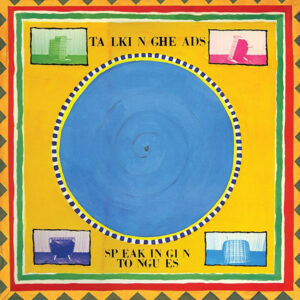 Talking Heads / Speaking In Tongues
Talking Heads / Speaking In TonguesSire, 1983
David Byrne claimed the title of Talking Heads’ fifth album, Speaking In Tongues, was a reference to his lyrics, which at times seem like a verbal stream-of-consciousness. But it also reflected his increasing focus on rhythm over meaning, as well as a fixation with the music and culture of the American south. It was Talking Heads’ first record since their 1977 debut that wasn’t produced by Brian Eno — the result is an album that’s danceable, accessible and ultimately commercial: it was the band’s highest charting LP. The album is best-described as a sort of art-funk, and contains some of the band’s most popular and enduring songs, such as “Burning Down The House,” “Girlfriend Is Better,” and “This Must Be The Place” (which in recent years has become something of an unofficial millennial hipster anthem). The recording features Talking Heads’ expanded line-up — including Bernie Worrell, Steve Scales and Alex Weir — several of whom had performed on the Remain In Light tour of 1980-81. As you’d expect, the band is undeniably tight, yet I have always found the production on this record to be quite brittle, almost stifled. This is especially apparent when I compare it to the warm, supple grooves of Stop Making Sense. Six of the album’s nine tracks were performed in Jonathan Demme’s concert movie (recorded in December 1983) and I prefer the live versions of all of them. I have listened to Speaking In Tongues on LP, CD, and via Spotify, and every time I put it on I expect to hear it differently, but I always have the same reaction. Is it just me? Byrne himself designed the standard release artwork, though there was also a limited edition version created by none other than Robert Rauschenberg. This clam-shell package earned the artist a Grammy, and contained a clear vinyl LP plus three disc collages that could be spun to produce different effects. I’ve never seen one in the flesh but there are several right now on eBay.
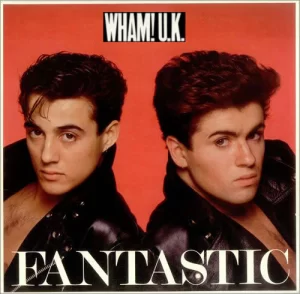 Wham! / Fantastic
Wham! / FantasticInnervision, 1983
This is the U.S. release of Wham!’s debut album, Fantastic, which is why it says “Wham! U.K.” on the sleeve, so as to not cause confusion with a short-lived Nashville-based outfit of the same name. The name of the British group had nothing to do with the 1963 Lonnie Mack song or the Roy Lichtenstein painting hanging in the Tate Gallery. Rather it derived from Andrew Ridgeley’s improvised lyric on what became the duo’s debut single, “Wham Rap (Enjoy What You Do).” Ridgeley had taken the chubby, bespectacled Georgios Panayiotou under his wing at school, where they had met almost a decade earlier. They were not yet out of their teens when they emerged as Wham! in late 1982, appearing as a couple of leather-clad tough guys (though any macho posturing was softened by their rolled-up jeans and espadrilles). Wham!’s initial look, carefree attitude and catchy disco-funk made them an instant easy target for the notorious British press, to the extent that many critics chose to ignore (or failed to notice) the social satire of George Michael’s lyrics. Wham!’s first four singles were essentially tongue-in-cheek celebrations of the fun-loving lifestyle of the unemployed and unattached young suburban male. George rapped with admirable confidence for a white teenager from Hertfordshire, but his extraordinary voice and gift for crafting horn-laden pop-soul hits was only revealed on the fourth single, “Club Tropicana,” the video for which also established Wham!’s enduring image as a pair of perma-tanned playboys. Despite its memorable hooks, the album only occasionally hinted at the heights Michael (both as part of Wham! and on his own) would soon reach. Fantastic contained two of the three Wham! songs for which both members are given equal writing credits. Indeed, Ridgeley was rapidly consigned to the role of best pal and silent partner once Wham! entered the studio to cut the LP. Years later George said that the album’s title was Ridgeley’s idea, conceding that Andrew’s greatest contribution to Wham! was “his sense of humour.”
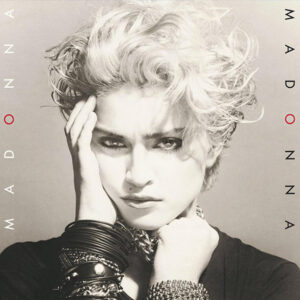 Madonna / Madonna
Madonna / MadonnaSire, 1983
Though Madonna’s eponymous debut LP introduced arguably the biggest global pop star of the eighties, its genesis was rooted in Manhattan’s downtown club scene. But Ms. Ciccone was no disco diva, and her first record came about thanks to the undeniable qualities she exuded as both a young woman and a fledgling artist. In public, Madonna oozed confidence and ambition, whether it was sartorial, social or sexual. Madonna had arrived in New York in 1978 with just $35 in her pocket. She found an apartment in Alphabet City, served coffee at Dunkin’ Donuts and worked as a coat-check girl at the Russian Tea Room. These jobs funded her pursuit of dance, for which she took lessons at Alvin Ailey and studied under Martha Graham. Following the break-up of her first band, The Breakfast Club, Madonna began writing songs with Stephen Bray, an old boyfriend from her native Michigan. They called themselves Emmy and the Emmys until Madonna decided to promote herself as a solo artist. She foisted her demo tape into the hands of Mark Kamins — a DJ at Danceteria on West 21st Street — and when the dancefloor responded positively to the early version of “Everybody,” he helped get her a deal with Sire Records. By now Madonna was dating painter Jean-Michel Basquiat, who introduced her to producer Reggie Lucas. Lucas programmed the Linn drum machine tracks but was unreceptive to Madonna’s input, so she hired John “Jellybean” Benitez to finish the album. The record established a new kind of synth-driven post-disco, setting a template for white dance-pop that remained for the rest of the decade. Three of the album’s five singles — “Holiday,” “Lucky Star,” and “Borderline” — are radio staples to this day, though one critic described Madonna’s vocals as sounding like “Minnie Mouse on helium,” a label that stuck for years. But to note Madonna’s shortcomings was to miss the point, and misunderstand her innate appeal. She was never just about the music, making her the perfect pop star for the MTV generation. If anything, Madonna’s initial boho-punk image — bleached hair, crop-tops, fishnet gloves and bangles — had a greater impact than the album itself.
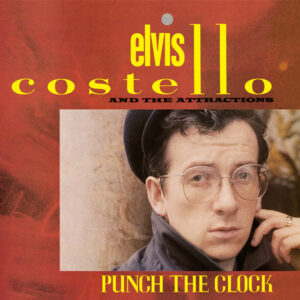 Elvis Costello & The Attractions / Punch The Clock
Elvis Costello & The Attractions / Punch The ClockF-Beat, 1983
Punch The Clock was Elvis Costello’s eighth album but the first that didn’t receive universal acclaim, with many critics and fans taking issue with the glossy production. Costello had engaged former Beatles engineer Geoff Emerick on his previous album — the baroque pop masterpiece Imperial Bedroom — but following that LP’s disappointing sales he recruited British hitmakers Clive Langer and Alan Winstanley, best known for their work with Madness and Dexys Midnight Runners. The duo brought in a four-piece horn section, dubbed The TKO Horns, plus session backing vocalists Claudia Fontaine and Caron Wheeler, collectively known as Afrodiziak. The album’s artwork also suggested a change in direction: Costello is barely recognisable in a Lennonesque cap and wire-framed glasses. The title itself might acknowledge a surrender to 1983’s commercial tastes, as the artist compromises his creative vision for professional survival. Either way, it worked: “Everyday I Write The Book,” a pop-soul tune wrapped in literary metaphor, was his first single to crack the US Top 40. If anything, the bright and shiny sound actually provides a disarming juxtaposition to Costello’s tales of stale romance, social ennui, and political disgust. Among typically dazzling wordplay are perhaps his two most blatant anti-Thatcher protest songs up to that point. An eloquent critique of the war in the Falkland Islands, “Shipbuilding” was originally written for Robert Wyatt, who released it as a single in 1982. Costello’s own version features a memorable trumpet solo by Chet Baker (who later covered Costello’s “Almost Blue”). In contrast, the scathing “Pills and Soap” is almost a pseudo-rap (Costello said the track’s relentless beat was influenced by Grandmaster Flash). The single was credited to The Imposter, a pseudonym Costello used periodically until it eventually inspired the name of his backing band in 2002. I saw Costello perform both of these songs at the Beacon Theatre last month, and can confirm that after four decades they have lost none of their potency. Further proof (were it needed) that the pen is always mightier than the sword.
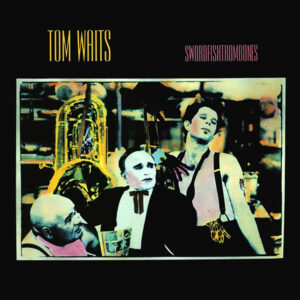 Tom Waits / Swordfishtrombones
Tom Waits / SwordfishtrombonesIsland, 1983
Swordfishtrombones was Tom Waits’ eighth studio album but represented a stylistic reinvention. By the end of the seventies Waits’ after-hours barfly raconteur schtick was bordering on self-parody. In 1980 he met Kathleen Brennan on the set of Francis Ford Coppola’s One From The Heart — within a week the pair were engaged. Through his new wife Waits discovered the music of Captain Beefheart, which greatly influenced the new direction of his own sound for the rest of the eighties. Waits’ records had, up to that point, their roots in some form of nocturnal jazz, but Swordfishtrombones was a sonic departure — it was his first album not to feature any saxophone. Instead the self-produced record was dominated by acoustic bass, marimba, unconventional percussion instruments and odd time signatures. Waits’ gravel-soaked voice meanwhile was now stripped of its former caramel warmth, fluctuating from a menacing howl to a raspy whisper. The songs themselves are a tenuously-connected suite of obscure tales, meandering from the Hong Kong waterfront to the Hollywood freeway and several locations in between. Though the album slips by and feels slight, it is cinematic in its lyrical and musical evocations (there are three instrumentals and one spoken-word track), almost like a soundtrack album to a film that never was. Waits’ label, Asylum, refused to release the finished LP, deeming it too experimental, so he signed with Island Records. In keeping with the record’s peculiar themes, Waits appeared on the album’s front cover with wrestler Lee Kolima and three-foot tall actor Angelo Rossitto. The artwork was by Berlin-born photographer Michael Russ, who used a unique proprietary hand-colouring process that he called “TinTone.” Russ also directed and choreographed the video for the only single taken from the album, “In The Neighborhood.” In December 1983 Waits was a guest on NBC’s Late Night, performing “Frank’s Wild Years” — the first of many regular and memorable appearances on the show (he was also a guest on Letterman’s last ever Late Show on CBS in 2015).
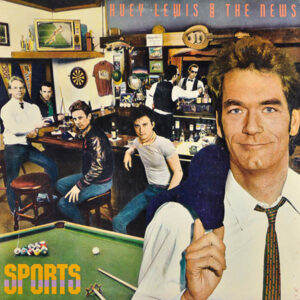 Huey Lewis & The News / Sports
Huey Lewis & The News / SportsChrysalis, 1983
Huey Lewis & The News were my favourite band as a child, and the first band I saw in concert. This was in no small part thanks to Back To The Future, for which they wrote two songs (Huey even made a cameo in the film as a schoolteacher). A poster for the band’s third album, Sports, can be glimpsed in two near-identical scenes that take place in Marty McFly’s bedroom, bookending the main action of the movie. Anyway, Sports turns forty today. I listened to it yesterday for the first time in ages, and unlike a lot of music from 1983, this record sounds very much rooted in the Reagan era. Some of the production (especially on side 2) has aged about as well as an episode of Knight Rider. The album is probably best-known these days for being the subject of yuppie serial killer Patrick Bateman’s critique in American Psycho (both the book and the movie). As anyone who recalls the band’s videos will attest, Huey Lewis & The News never took themselves too seriously, but for many they exist solely through a postmodern lens of glib irony, which inevitably precludes any genuine contextual assessment of their music. Either way Sports produced four top ten singles and was the band’s biggest selling album, shifting seven million copies in the U.S. alone, where in 1984 it was outsold only by Thriller. Later that year Huey Lewis issued a lawsuit against Ray Parker Jr., accusing him of ripping off “I Want A New Drug” for his hit song, “Ghostbusters.” Ironically, Lewis himself had been approached initially to write a theme for the supernatural comedy but declined due to his involvement in the aforementioned time travel comedy. The case was settled out of court. Huey Lewis & The News were always at their best when they leaned into the qualities that make a great bar band. So it’s perhaps appropriate that the album’s front cover was shot inside a bar, specifically the 2AM Club in Mill Valley, California (which is only one letter away from “Hill Valley”).
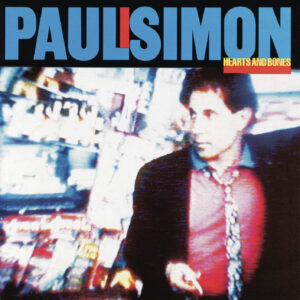 Paul Simon / Hearts and Bones
Paul Simon / Hearts and BonesWarner Bros., 1983
Paul Simon’s sixth solo LP, Hearts and Bones is probably my favourite of his solo records, though perhaps also the most overlooked. It had initially started out as an all-new Simon & Garfunkel studio album, but that plan was derailed when the same old tensions that had caused the duo’s initial split resurfaced during their 1982-83 world tour. Simon also felt the new work was too personal to be performed with his singing partner. Eventually Warner Bros. reluctantly agreed to release it as a solo album; Garfunkel left the project and Simon erased the tracks with his vocals. The album had initially been titled “Think Too Much” until label president Mo Ostin suggested Simon change it. Much of the material deals with the mind’s tendency to get in the way of adult life and relationships, and includes two completely different songs with this original title (Simon’s idea of a self-deprecating joke, perhaps). The new title track’s “one and one-half wandering Jews” are Simon and Carrie Fisher, whom he married in August ’83. Side two contains, in my opinion, three of Simon’s best songs: “Train In The Distance,” “Rene And Georgette Magritte With Their Dog After The War,” and “The Late Great Johnny Ace” (the Beatlesesque coda to which was composed by Philip Glass). The latter was debuted live in September 1981 during Simon’s reunion concert with Garfunkel in Central Park. But when he got to the final verse about the death of John Lennon, a distressed fan stormed the stage. After a barely perceptible pause, Simon proceeded to finish his performance. In May 1982 he played it during an appearance on Late Night with David Letterman — this time a problem with a guitar fret led Simon to conclude that the song was jinxed. He finished it after a commercial break and then played part of an incomplete composition called “Citizen Of The Planet.” I’m not sure if a studio version exists, but a live rendition was included on the live album Old Friends, documenting Simon & Garfunkel’s 2003 reunion tour. The words are also included in a book of Paul Simon lyrics given to me by my dad. Their sentiment could not be more pertinent today.
 The Rolling Stones / Undercover
The Rolling Stones / UndercoverRolling Stones Records, 1983
Undercover was the Rolling Stones’ 17th studio album. This underrated LP — whose original artwork included removable stickers — sold well initially, but is often maligned due to the graphic imagery of its lyrics and general toxicity surrounding its creation. At this point Mick Jagger and Keith Richards had been working together for two decades so it was perhaps inevitable that by 1983 they were sick of the sight of each other. Keith would arrive at the studio around midnight, as his songwriting partner left for the club. Mick had long kept a close ear to what he’d heard in the discos of Paris and New York. Whether it was a reflection of his eclectic taste or a shrewd bid for chart relevance, the result was some of the Stones’ best dance records. A somewhat cleaned-up Keith insisted the band stick to its roots, but Mick was now reluctant to relinquish creative control. Plus ça change… Meanwhile, Mick’s career ambitions were becoming more suited to screen than stage. He embraced the concept of MTV and even positioned himself for acting roles, while hatching out in secret a solo deal with Columbia. Keith refers to this as “LVS” (Lead Vocalist Syndrome); it was around this time that he and Ronnie Wood began referring to Mick as “Brenda” behind the singer’s back. The rift was even played out to a dramatic conclusion in Julian Temple’s elaborate video for the politically-charged lead single, “Undercover Of The Night,” in which Richards shoots Jagger dead. Elsewhere the record lurches between unadorned rock ’n’ roll, hard grooves and self-parody. Side two opener “Too Much Blood” — on which a rambling Mick ad libs a deadpan monologue critiquing the violence of contemporary culture — is as disturbing as it hilarious. Given Mick and Keith’s diverging visions for the project, Undercover still sounds fantastic, and nothing like the well-received but otherwise tepid new album they released in 2023. Never again would the Stones sound this catchy, angry, lurid, menacing or… well, Stones-y. I wouldn’t expect Mick and Keith to be making the same music at 80 that they did at 40, but I definitely know which I prefer.
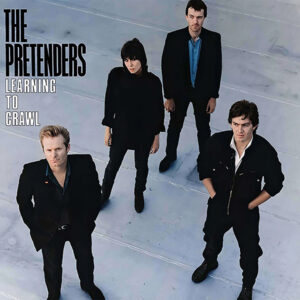 The Pretenders / Learning To Crawl
The Pretenders / Learning To CrawlSire, 1984
The Pretenders’ third album, Learning To Crawl, was released a full two-and-a-half years after their previous LP. The hiatus was due to the sudden deaths of two of the band’s founding members. By early 1982 bass player Pete Farndon’s drug abuse had made his position in the band untenable; in June, guitarist James Honeyman-Scott threatened to quit the group unless Farndon was fired. Two day’s after Farndon’s dismissal, Honeyman-Scott died from heart failure caused by cocaine use. Then in April 1983, Farndon himself was found dead in his bathtub, having drowned after overdosing on heroin. Despite the trauma of these losses, Chrissie Hynde and drummer Martin Chambers eventually returned to the studio. The new band sets the tone on the album’s gutsy opener, “Middle Of The Road,” as Hynde — pissed off, jaded, determined — describes the parallel duties of music and motherhood at the onset of (in purely rock and roll terms) middle-age. Learning To Crawl was the first Pretenders album not to include a Ray Davies song (Hynde married Jim Kerr of Simple Minds in 1984, though her child with Davies inspired the album’s title). Instead we get a version of the Persuaders’ 1971 hit, “Thin Line Between Love And Hate,” on which Hynde changes both the gender implied on the original and its grammatical person, thus subtly altering the song’s narrative. Other tracks address Hynde’s unborn daughter (“Show Me”) and the death of her hometown of Akron, Ohio (“My City Was Gone”), while “2000 Miles” has become something of a Christmastime staple. With a title and backing, er, grunts that pay obvious homage to Sam Cooke, lead single “Back On The Chain Gang” is probably the album’s most enduring track. Recorded just weeks after Honeyman-Scott’s death, it was initially written about Hynde’s relationship with Davies, though it emerged a fitting tribute to the late guitarist. The poignant middle-eight and soaring key change that follows may be the most emotionally affecting moment in the Pretenders’ entire discography, consecrating the key traits of Hynde’s hybrid persona — vulnerability and defiance — while also revealing a new purpose of perseverance.
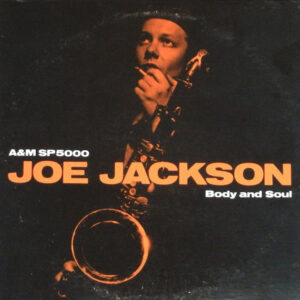 Joe Jackson / Body and Soul
Joe Jackson / Body and SoulA&M, 1984
Like his previous Manhattan-centric album, 1982’s Night and Day, Joe Jackson’s seventh album, Body and Soul, also shared a title with a popular standard from the 1930s. The artwork was a precise pastiche of a 1957 Sonny Rollins record, and even the back cover faithfully recreated the format of an old Blue Note LP, right down to the effusive liner notes. All of this served to convey to the listener that by 1984 Jackson had little interest in tussling for chart supremacy, and that they held in their possession what essentially amounted to a jazz record. Side one begins with the drums and saxophone of “The Verdict,” a bold opening statement that outlines Jackson’s internal conflict about being true to his authentic self. Like much of the material here, the lyrics could be applied to a romantic relationship or Jackson’s own artistic direction. A similar message is presented more directly on the horn-heavy funk-bop single, “You Can’t Get What You Want (Till You Know What You Want).” To achieve this vast sound Jackson and band recorded the basic tracks live inside the ballroom of the Grand Lodge of New York’s Masonic Hall on the corner of 23rd Street and Sixth Avenue. Though he eschewed synthetic studio sounds, the album was his first to be recorded digitally, a technique that eliminated tape hiss and preserved the integrity of the performances. The drama of his album has often made it feel to me more like a soundtrack to a film that never was. There are two highly cinematic instrumentals on side two, “Loisaida” and “Heart of Ice,” and even the sixties pop perfection of the lightest tunes — the Northern Soul stomp of “Go For It” and the Spector-esque duet “Happy Ending” — sound like they’d be equally at home on a Broadway cast recording. Jackson first became famous as an “Angry Young Man,” before moving to New York and making a record as eccentric and neurotic as the city itself. On Body and Soul, his most honest and personal album up to that point, the cynical observations give way to a cautious kind of optimism. Every artist is plagued by self-doubt; at least this one knew himself, and what he wanted.
 The Style Council / Café Bleu (My Ever Changing Moods)
The Style Council / Café Bleu (My Ever Changing Moods)A&M, 1984
Café Bleu, the debut album by the Style Council, was released by Geffen (with an alternative track listing and a different sleeve) as My Ever Changing Moods. Presumably this was because the original title was deemed too French-sounding for the American market, though such concerns weren’t enough to veto a front cover photo (taken outside La Belle Ferronnière in Paris) that depicted nascent francophile Paul Weller and loyal sidekick Mick Talbot as a pair of trenchcoat-wearing, Gitanes-smoking, Libération-reading flâneurs in tassled loafers. They couldn’t have appeared any less American if they’d been wearing matching berets. Weller had enjoyed chart success with the Jam, but a desire to explore broader directions led him to disband the post-punk mod-revivalist trio in 1982. Both visually and musically, the Style Council seemed, for some, to represent an active rejection of his previous band’s image and sound. This transformation was announced on an import-only EP in the summer of ’83, putting Weller’s new outfit at the forefront of a specifically British brand of soulful, jazz-tinged “sophisti-pop.” The Style Council’s apparently carefree vibe only heightened the impact of Weller’s increasingly political songs, which frequently took aim at the ruling classes while lamenting a popular indifference towards the UK’s social and economic demise. Only three of the British version’s five jazz instrumentals survived on the American release, though “The Paris Match” featured Tracy Thorn and Ben Watt from fledgling duo Everything But The Girl. But sometimes the Style Council’s ambitions were too eclectic for their own good: Weller’s gauche rap on “A Gospel” remains an unlistenable misstep. In addition to lead single “My Ever Changing Moods,” the other hit from this album was “You’re The Best Thing.” In July 1985 the Style Council opened their set with this song at Live Aid (they were the second act to appear at Wembley, after Status Quo), which is the first time I remember seeing the group on TV. By that point their second LP had just come out, which again the US label resequenced, repackaged and retitled.
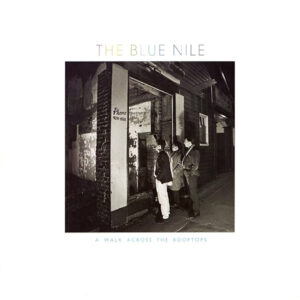 The Blue Nile / A Walk Across The Rooftops
The Blue Nile / A Walk Across The RooftopsA&M, 1984
A persistent myth regarding The Blue Nile’s their debut album, A Walk Across The Rooftops, is that the record was commissioned by Scottish hi-fi company Linn (not to be confused with the American manufacturer of the LM-1 drum machine) as a means of showcasing their products. In truth, Linn heard some demos and offered the Glaswegian group a contract on their new label. This is the American version, which came out on A&M Records. Either way, in its blending of electronic and organic sounds and unusual sonic textures, the record remains an audiophile’s delight. Its slow tempos and atmospheric yet austere production are balanced by Paul Buchanan’s warm, rich voice, making it a great after dinner type of record. Part of the reason for the album’s reliance on synthesizers and sparse arrangements was in part due to the band’s own technical limitations on their instruments, in particular Buchanan’s guitar playing. They also didn’t have a drummer, which hampered their efforts to perform live without a backing track. Starved of cash, the trio initially rented a flat in Edinburgh during the album’s recording, until eventually the money ran out, leaving them little choice but to sleep on the engineer’s floor. The album was a critical success but had little impact on the charts. The single “Tinseltown In The Rain” only reached number 87 in the UK, but at the time of writing has over 18 million plays on Spotify. The follow-up album, Hats, didn’t arrive until 1989 but was worth the wait (Taylor Swift even makes reference it on her latest album). This was followed in 1996 by the more acoustic, guitar-oriented Peace At Last. By this point The Blue Nile had established their status as something of a cult band, renowned both for their avoidance of the spotlight and less-than-prolific output. Their fourth album, High, came in 2004. Around this time there was an apparent falling out between members, leading fans to presume The Blue Nile are over, though unsurprisingly there has never been an official announcement.
 Bruce Springsteen / Born In The U.S.A.
Bruce Springsteen / Born In The U.S.A.Columbia, 1984
Like several multi-platinum-selling records, Born In The U.S.A., Bruce Springsteen’s seventh studio album, is probably as famous for its cultural impact as for the music itself. Annie Leibovitz’s cover shot managed to both celebrate and dispel various symbols of American iconography, while also immortalising Springsteen’s most enduring popular image. Long gone was the bearded, scrawny ruffian from the Jersey boardwalk; in his place was “The Boss,” a freshly-buff, denim-clad, indefatigable showman for the eighties. Seven of the album’s twelve tracks became top ten singles, propelling a 35-year-old Springsteen to global MTV stardom. The album’s subsequent world tour with the E Street Band chugged along until October 1985, but its legacy has never really stopped (there’s a chance one of either “Glory Days” or “Dancing In The Dark” is playing in your nearest CVS right now). It’s hard to put all of that baggage aside, but once you do, the album underneath it all is still probably the tightest, leanest and most political of Springsteen’s entire career. Though Born In The U.S.A. was one of the defining records of the decade, its songs were spiritually rooted in the death of the sixties, using specific stories to address universal issues. The title track remains one of the most misinterpreted songs of all time, its blatant message buried beneath booming drums and a wall of synthesizers. There is nothing cryptic about the verses’ lyrics, which describe the plight of an alienated veteran, betrayed by his own country’s institutions. Yet the chorus’ hollow rallying cry preempted the blind nationalism of those — from Ronald Reagan to MAGA diehards — who, over the last four decades, have lazily attempted to co-opt the track as a patriotic anthem. Those on the other end of the political spectrum are no less guilty of refusing to listen: to this day, Springsteen is routinely dismissed by some casual liberal observers as a jingoistic simpleton. But whatever your persuasion, few artists — and even fewer politicians — have successfully straddled that divide to convey the state of a nation with such consideration, humour, and empathy.
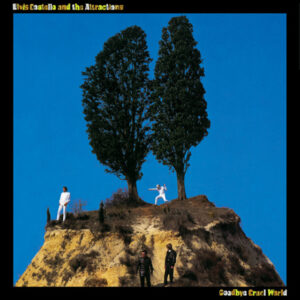 Elvis Costello & The Attractions / Goodbye Cruel World
Elvis Costello & The Attractions / Goodbye Cruel WorldColumbia, 1984
The title of Elvis Costello’s ninth studio album was borrowed from a 1961 teen pop hit by James Darren, who by 1984 was starring alongside William Shatner and Heather Locklear in the police series T.J. Hooker. By his own admission, this is not Costello’s greatest record, but he’d set such a high bar by this point that he could be forgiven for not always clearing it. Even by mid-eighties standards the glossy production sounds positively jarring, managing to mask Costello’s typically sharp material. Darryl Hall sang harmony on the opening track, “The Only Flame In Town,” while Green Gartside of Scritti Politti provided backing vocals to the album’s other single, “I Wanna Be Loved,” a cover of an obscure B-side from 1973 by Memphis soul group Teacher’s Edition. A version of “The Comedians” appeared on Roy Orbison’s 1989 comeback album, Mystery Girl. In October 1984 my parents went to see Costello on this album’s accompanying tour at Loughborough University (I think the Pogues were the opening act). My dad bought a t-shirt, which I wore to sleep in for years. I haven’t seen it lately, but here’s Hillary wearing it while snacking on Bucaneve (iykyk) in a Rome hotel room in 2007. In 2015 I saw the same shirt for sale in a vintage store on East 11th Street, where it was priced at an exhorbitant $250. For some reason I mentioned this to Costello not long afterwards, as he signed my copy of his autobiography in Barnes & Noble at Union Square, to which he responded, “If only we’d known.”
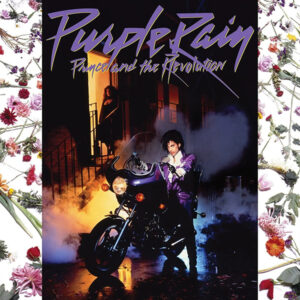 Prince & The Revolution / Purple Rain
Prince & The Revolution / Purple RainWarner Bros., 1984
Prince released thirty-nine albums in his lifetime, though some people only own one of them. In those cases it’s usually this one. Purple Rain isn’t my favourite Prince album, but it was arguably his most assured and accessible for white audiences, and to this day the one even the most casual fans know. Indeed, for many, Prince remains forever frozen in 1984. His look from that era — purple coat, ruffled shirt, motorcycle, and plenty of eyeliner — is still his most enduring public image. That’s because Purple Rain was much more than just a record. Together, the album, its accompanying MTV videos, and the hit movie of the same name that was released a month later, launched the 26-year-old musician towards global stardom. Prince dominated the pop cultural landscape for the rest of year, and in August became the first artist to have the number one album, single (“When Doves Cry”) and movie at the same time. Purple Rain was the first Prince album to formally and explicitly introduce his band, The Revolution, and the first to feature both Lisa Coleman and Wendy Melvoin. His closest collaborators in this period, Wendy & Lisa’s significant contributions (as fictionalised in the movie) helped define Prince’s mid-eighties sound and broaden his musical horizons. Three songs on side two — including the epic title track — were recorded at an August 1983 show at First Avenue in Minneapolis, making Purple Rain the first Prince album to include live recordings. The six-month, 98-show Purple Rain tour ended in April 1985 at Miami’s Orange Bowl Stadium (renamed “Purple Bowl” for the occasion). But by this point, as was his wont, Prince had already moved on. That same month he released his next album, though the baroque psychedelia of Around The World In A Day proved too much of a departure for some. While much of Prince’s output continued to astound and confound, never again would he achieve Purple Rain’s level of commercial ubiquity. When asked by a journalist why he wasn’t more inclined to reproduce that success, Prince’s response was typically enigmatic. “I’ve been to the mountain top,” he said. “There’s nothing there.”
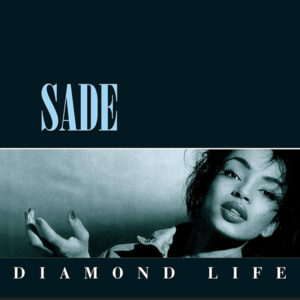 Sade / Diamond Life
Sade / Diamond LifeWarner Bros., 1984
Diamond Life, Sade’s debut LP, was the seventh best-selling album in the UK in 1984, reaching number two on the charts and picking up the 1985 Brit Award for best British album. The record was produced by Robin Millar, who’d also just worked on Eden, the debut LP by Everything But The Girl, and put Sade at the forefront of the soulful, jazz-tinged wave of sophisti-pop occupying the British charts in the mid-eighties. Sade’s cool vibe, timeless arrangements and thoughtful, conscious lyrics deflated criticism from the sneering and prejudiced British rock press that, despite the album’s success and acclaim, lazily dismissed the group as mere exponents of “yuppie wine bar music.” The band was fronted by Helen Folasade Adu, the 25-year-old daughter of an English nurse and a Nigerian economics lecturer. Sade (as she became known) was born in Colonial Nigeria and moved to Essex when she was four. In 1977 she went to London to study fashion design at Saint Martin’s School of Art. It was only after completing her course that she got involved with music. She was a model for a Spandau Ballet fashion show in 1981, around the same time she began singing backing vocals for the jazz-funk band Pride, where she met saxophonist/guitarist Stuart Matthewman, with whom she formed Sade. Inevitably, the name of the band and its singer were soon used interchangeably. Adu’s striking beauty proved a frequent distraction for interviewers, but on stage she was a performer of remarkable poise and presence. Some described her as aloof, but her warm, husky voice and calm, almost deadpan delivery also hinted at a down-to-earth humour. I’d seen Sade on Top Of The Pops, but I first saw her live during Live Aid where, as the only Black lead vocalist to appear that day at Wembley, she exuded an effortless elegance, style and confidence that had a not insignificant impact on my six-year-old self. I had the 1986 Live Aid calendar: April’s photo was Sade as seen from behind, instantly identifiable by her trademark gold hoops and long braided hair resting between her bare shoulder blades. I think May was Paul Young…
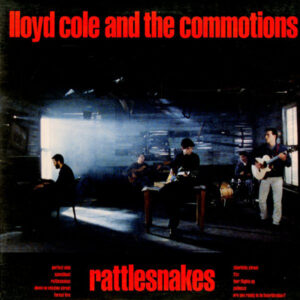 Lloyd Cole & The Commotions / Rattlesnakes
Lloyd Cole & The Commotions / RattlesnakesGeffen, 1984
Rattlesnakes was the first album by Lloyd Cole & The Commotions. The original LP cover used a photo by American photographer Robert Farber; my copy is a U.S. promo version, which uses a colour still of the band taken from the “Rattlesnakes” video shoot. This practice of repackaging British records for the American market was quite common at the time. Typically the replacement artwork was always inferior, but this is one instance where I actually prefer the cover design on the U.S. release. At least on this occasion they didn’t tamper with the track listing (although a couple were remixed by The Cars’ Rik Ocasek). Cole was born in Buxton, a spa town in Derbyshire, but after dropping out of a law degree in London began studying English and philosophy at the University of Glasgow, where he formed his band. By this point his father had taken a job working at Glasgow Golf Club, where the family also lived. Most of the songs on Rattlesnakes were written in the club’s basement. The record is probably one of the finest debuts of the eighties, and exemplary of the college-oriented jangly folk-pop coming out of Scotland at the first half of that decade. Cole’s literary aspirations are immediately revealed by the Dylanesque opener, “Perfect Skin.” The title track is a reference to Joan Didion’s “Play It As It Lays,” while “Speedboat” was inspired by the Renata Adler novel of the same name. Elsewhere Cole name-drops notable cultural figures with almost obsessive frequency. The lyrics aren’t printed on the sleeve but Greta Garbo, Leonard Cohen, Eva Marie Saint, Simone de Beauvoir, Grace Kelly, Truman Capote, Arthur Lee and Norman Mailer are all mentioned. Such youthful pretentiousness might have become unbearable were it not for Cole’s wry cynicism and self-depracating wit regarding his poetic failures at romance. On “Forest Fire,” he goes so far as to spell it out for anyone still scratching their heads (“It’s just a simple metaphor/It’s for a burning love”). That track’s smouldering groove builds steadily before releasing into Neil Clark’s epic tremolo guitar solo. It’s my favourite track and probably the best moment on the record.
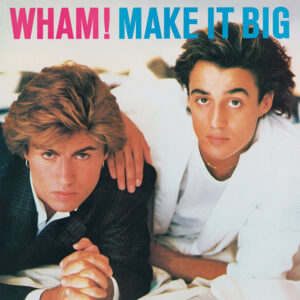 Wham! / Make It Big
Wham! / Make It BigColumbia, 1984
Whether the title of Wham!’s second LP was a reflection of the duo’s pop aspirations or merely instructions given to their hairstylist remains unclear. The UK release came out two weeks later with different artwork, using an alternative shot from the same photoshoot. The American version’s innersleeve uses a photo that’s clearly from 1983, which by late ’84 seemed practically archival given how frequently the group’s look changed in this period. The album itself is a blatant homage to the soul sounds of the sixties, anchored by four chart-topping singles, starting with the bubbly “Wake Me Up Before You Go-Go,” before seguing into the slinky club favourite “Everything She Wants.” There are a couple of tracks on here that to my ears are pure filler, but the other two non-singles are quite good: “If You Were There” is a cover of a 1973 song by The Isley Brothers, while “Heartbeat” is probably the best song Ronnie Spector never recorded. In April 1985 Wham! became the first Western act to perform in China. The video for “Freedom” uses footage from this tour, of the band on stage at the Peoples’ Gymnasium in Beijing and visiting the Great Wall. There’s also the incongruous sight of noted Manchester United fan Andrew Ridgeley playing football in a Chinese park while wearing a 1984-85 Queens Park Rangers kit, to the evident bemusement of onlookers. The song itself is probably my favourite Wham! track — had it been written by Smokey Robinson I’m sure it would be ranked alongside “The Tracks Of My Tears” as one of the great Motown singles. The part were George improvises “Can’t you see you’re hurtin’ me?” always reminds me of Diana Ross’ “And there ain’t nothin’ I can do about it!” This deliberately retro record is saved from descending into pointless pastiche by the strength of George Michael’s songwriting and extraordinary voice. The last song on the album, “Careless Whisper,” was in some markets credited as a George Michael solo single — the first official hint that the inevitable end of Wham! wasn’t too far away.
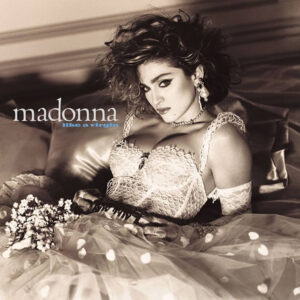 Madonna / Like A Virgin
Madonna / Like A VirginSire, 1984
Like A Virgin, Madonna’s second album, was her first record to reach number on the Billboard chart, producing four top-five singles. But aside from its commercial success, the album established Madonna as a mainstream cultural provocateur for the MTV age. Whether channeling Marilyn or gyrating aboard a gondola through the canals of Venice, Madonna represented a capitalist eighties version of women’s liberation (both sexual and sartorial). Her savvy self-confidence and knowing ambition may have been a product of the Reagan era, but they also made her a feminist icon for that decade, and a positive role model for millions of young people around the globe. Though Madonna was in complete control of her image, her record company, Sire, refused her request to self-produce the album. Instead, she hired Nile Rodgers, who’d recently worked on David Bowie’s Let’s Dance. Rodgers brought in the Chic rhythm section (bassist Bernard Edwards and drummer Tony Thompson) lending key tracks an organic wallop that no programmed drums or synths could match. Though the international release included “Into The Groove” (as featured in the film Desperately Seeking Susan), the songs on this album are more varied and less focused on the dancefloor than Madonna’s first LP. An unlikely cover of Rose Royce’s “Love Don’t Live Here Anymore” began a career-long penchant for earnest ballads, while “Shoo-Bee-Doo” evoked the sixties girl groups of Madonna’s native Michigan. Like A Virgin was also the album on which Madonna began to play overtly with the inescapable religious and sexual connotations of her name beyond the confines of her Catholic upbringing. Predictably, the irony and innuendo of the title track was entirely lost on conservative groups who reacted in the most literal terms, recoiling from the very use of the word “virgin” and accusing the singer of encouraging sex outside of marriage. The song’s ambiguity became the subject of a scene in the movie Reservoir Dogs, though Madonna herself disputed Quentin Tarantino’s interpretation, later handing him a copy of the record with a signed inscription: “It’s not about dicks — it’s about love.”
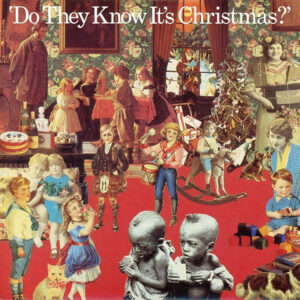 Band Aid / “Do They Know It’s Christmas”
Band Aid / “Do They Know It’s Christmas”Phonogram, 1984
“Do They Know It’s Christmas?” was one of the first singles I ever bought. It’s easy to forget what a huge deal Band Aid was at the time, but despite selling a million copies in its first week alone, the well-meaning single soon came in for criticism as a white saviour mission, and for its condescending depiction of Africa. Notably, the only Black voices on the record were the American singer Jody Watley and members of Kool & The Gang, who just happened to be in London. Even Peter Blake’s cover artwork was knocked for juxtaposing Christmas scenes of yore with the image of starving Ethiopian children. Hastily written by Bob Geldof of the Boomtown Rats and Ultravox’s Midge Ure, the song was recorded in late November ‘84, when a bevy of the biggest names in British pop convened on a Sunday morning at Sarm West studio to lay down vocal tracks. Most of these artists probably weren’t used to rolling out of bed at such an ungodly hour, although Duran Duran’s Nick Rhodes looked like he’d spent a few in hair and make-up. An absent-minded Boy George woke up in New York and only made the session thanks to Concorde. Particular scorn was reserved for the caustic line sung by Bono, “Well, tonight thank God it’s them, instead of you,” or maybe it simply cut too close to the bone. I always thought that was the key lyric in the whole song, as it explicitly called out western apathy towards humanitarian crises in far away places, a tendency that’s no less familiar today. The single’s intended audience was clearly the record-purchasing middle class; if it forced them to reckon with their own indifference or provoked the discomfort of white guilt among listeners living in “our world of plenty,” then it had at least served one objective. Over the years “Sir Bob” has re-recorded and remixed new versions of the single to aid various issues in Africa, often tweaking the lyrics accordingly, regardless of claims that the song’s problematic legacy only perpetuates negative stereotypes of the continent. For the fortieth anniversary it’s been dusted off yet again, though in 2024 a charity single seems a rather quaint medium for such worthy causes.
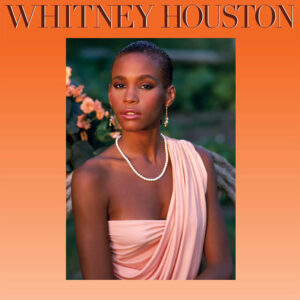 Whitney Houston / Whitney Houston
Whitney Houston / Whitney HoustonArista, 1985
Whitney Houston once said that, to her, singing came as naturally as speaking. She began performing in public as a child, first at the New Hope Baptist Church in her native Newark, where her mother, Cissy Houston, was Minister of Music. Whitney’s godmother was Darlene Love, she was cousins with Dionne and Dee Dee Warwick, and even a distant cousin of opera singer Leontyne Price (many music journalists even falsely assumed that she was related to Thelma Houston). By the late seventies Houston was singing with her mother on the Manhattan club circuit, and by the time Clive Davis signed her to his Arista label, she was keeping busy as a session vocalist and model for teen fashion magazines. She’d even begun to act, appearing on the NBC sitcom Gimme A Break! Given Houston’s fresh-faced appeal, her eponymous debut album — released on Valentine’s Day ’85 — is an oddly conservative one by the era’s standards. There are a couple of tracks on side two that are the epitome of schmaltz; a common criticism of the record was that Whitney’s vocal ability was wasted on such MOR material. If some of the ballads already sounded dated it’s perhaps because they’d originally been recorded some years earlier, by the likes of George Benson, Diana Ross and Marilyn McCoo. One of these songs, “Saving All My Love For You,” became Houston’s first number one single, helping the LP top the charts for 14 weeks. Incredibly, forty years later it’s still the best-selling debut album by a solo artist. At this point Houston had everything going for her: girl-next-door charm, supermodel looks, and a pop voice that Rolling Stone ranked as the second greatest ever (behind only Aretha Franklin). Though Houston’s talent was evident on record, her rare musical gift came truly into focus when singing live. Her September ’85 appearance on Letterman — with just a spotlight and Paul Shaffer’s house band for company — showcases Whitney’s masterful presence, phrasing, clarity, and control. There’s nothing showy about it, no elaborate costume or distracting set. Just a 22-year-old woman taking her time, and giving the best live vocal performance you’re ever likely to see on national television.
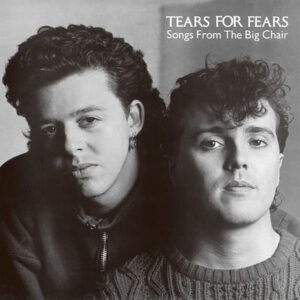 Tears For Fears / Songs From The Big Chair
Tears For Fears / Songs From The Big ChairMercury, 1985
The title of Tears For Fears’ second album, Songs From The Big Chair, was inspired by a 1976 made-for-TV movie called Sybil, which starred Sally Field as a woman suffering from multiple personality disorder who only feels safe when seated in the “big chair” of her analyst’s office. Tears For Fears’ successful debut, The Hurting (1983), had received critical acclaim, but its dark and moody themes had also painted Roland Orzabal and Curt Smith — at least within the British press — as a somewhat brooding and pretentious duo that took themselves far too seriously. Orzabal later admitted that, at the time, “rock and roll was a dirty word to us,” even dismissing some of his own lyrics as “sixth form poetry stuff.” Their second record was therefore a conscious effort to inject some variety and lightness into proceedings, while expanding on their already synth-driven sound with something warmer, bigger, and more organic. Side one opens with “Shout,” a political anthem that has frequently been interpreted as a song about primal scream therapy, though Orzabal described it as a “simple song about protest.” Another memorable single, “Head Over Heels,” to this day always makes me think of my former colleague, Beth, as it was one of her favourite songs. These days the album is probably remembered most for the international hit, “Everybody Wants To Rule The World,” a last-minute addition that was initially considered too lightweight for inclusion. With its buoyant shuffle and uplifting power chords, the track was certainly a tad incongruous with the group’s prior work, but also reiterated their intention to appear more extroverted and achieve global appeal. The single reached number one in the US but, ironically, was kept off the top spot in the UK by “We Are The World.” The track’s radio-friendly pop sheen perhaps masked Orzabal’s rather dismal worldview, as outlined by his vaguely portentous lyrics, and it remains one of the most enduring songs of the decade.
“I always compare Tears For Fears’ success to that of Herman’s Hermits,” Orzabal stated in late ’85. “Like them, we too will be forgotten in twenty years’ time.”
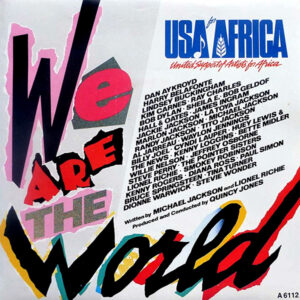 USA For Africa / “We Are The World”
USA For Africa / “We Are The World”Columbia, 1985
“We Are The World” is still the eighth best-selling single of all time, and the third best-selling in my lifetime. The idea for the song came about following the success of the Band Aid single, “Do They Know It’s Christmas?,” in December ’84. Like its British counterpart, the American relief effort successfully wrangled its roster of stars at short notice to record their vocal parts. Along with some names that you might not have heard mentioned since 1985, USA for Africa also recruited several of the biggest acts in American pop history — many of whom were herded directly to the recording studio from the American Music Awards. Motown legends rubbed shoulders and shared microphones with Dylan, Simon and Springsteen. “Check your ego at the door,” read a sign at the studio entrance. This is all neatly documented in the Netflix documentary, The Greatest Night In Pop. Organised by Harry Belafonte, written by Michael Jackson and Lionel Richie, produced and conducted by Quincy Jones, and featuring the prominent vocals of Ray Charles and Stevie Wonder, the song was a gleaming slab of gospel pop, and a triumph of America’s Black music establishment. It was also quite bloated by radio standards: the single version marches on for over six minutes, the inevitable result of having to squeeze in so many A-list soloists. Jones described this task as like “trying to fit a watermelon into a Coke bottle.” Inevitably, the record drew criticism for being overly sentimental and self-indulgent. Greil Marcus likened it to a Pepsi jingle, a remark that was cynical but perhaps valid: both Jackson and Richie were contracted to the soda giant at the time. Nevertheless, thanks to record and merchandise sales USA for Africa eventually raised over $80 million for its humanitarian fund. While it’s fun to identify the different voices I doubt anyone’s voluntarily listening to “We Are The World” in 2025 (besides me). Today the song’s musical legacy is vastly outweighed by the single’s significant historical impact, as the music industry, celebrity culture and corporate America began to merge towards a single entity.
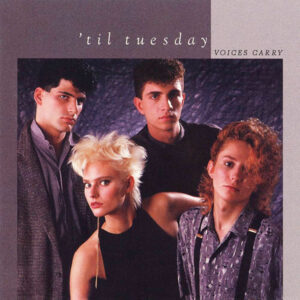 ’Til Tuesday / Voices Carry
’Til Tuesday / Voices CarryEpic, 1985
I always liked Aimee Mann’s solo albums (plus the soundtrack to the Paul Thomas Anderson film, Magnolia) but it wasn’t until I moved to New York that I learned that she’d previously fronted a new wave pop band called, somewhat awkwardly, ’Til Tuesday. This information actually came to me from a slightly older colleague of mine who was headed that evening to see Mann perform somewhere in Brooklyn. Mann formed ’Til Tuesday with then-boyfriend Michael Hausman in Boston in 1982; the band released their debut LP, Voices Carry, in April 1985. The inner sleeve of my copy looks like it was gnawed off by the previous owner’s pet dog — luckily the disc itself is undamaged and sounds great. It reached number 19 in the US album chart and the title track single got to number 8, thanks to the video’s heavy rotation on MTV.’Til Tuesday made two more albums before breaking up in 1990. Hausman became Mann’s manager as she embarked on a solo career in the nineties, marrying musician Michael Penn (brother of actors Sean and Chris). Since 1993 Mann has released a string of albums to consistent critical acclaim, but none have matched ’Til Tuesday’s early commercial success. In 2024, the actress Kate Hudson released a half-decent cover version of “Voices Carry,” which I definitely didn’t see coming. In the autumn of that year it was announced that ’Til Tuesday were to reunite: in May 2025 they played their first live show in 35 years at the Cruel World Festival in Pasadena. I didn’t see that coming either…
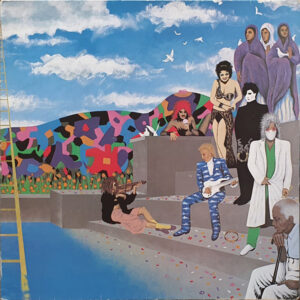 Prince & The Revolution / Around The World In A Day
Prince & The Revolution / Around The World In A DayPaisley Park, 1985
Prince’s seventh album, Around The World In A Day, was released in April 1985. The 98-show Purple Rain tour had ended just two weeks earlier, but anyone anticipating a sequel to that album (or a repeat of its commercial success) was in for a surprise. The colourful new record began with the words “Open your heart, open your mind,” which might as well have been a direct invitation to those fans that would soon abandon Prince on his expectation-defying musical journey. And just when things were getting really interesting. Prince was always two steps ahead of the public, but even at its most esoteric, his music was never not accessible. While some of his audience struggled to make sense of the album’s psychedelic pop tunes, dreamy lyrics and exotic textures, it still sold over two million copies. Yet it remains Prince’s most overlooked and misunderstood record of the decade. Today it’s probably best recalled for the radio-friendly “Raspberry Beret,” the kind of bouncing, breezy pop hit that in Prince’s hands seemed effortless. Incredibly, the single stalled at number 25 on the UK chart; in the US it was only kept off the top spot by Duran Duran’s 007 theme, “A View To A Kill.” My favourite deep cut is “Condition Of The Heart,” a perhaps semi-autobiographical ballad, the wandering introduction to which exemplifies the musicality and mystery at the heart of the Prince persona. Though only three tracks on the album are actual band performances with the Revolution (all on side two), much credit for Prince’s shift in direction is given to Wendy Melvoin and Lisa Coleman, his closest and most creative collaborators in this period. The album’s title track was actually based on a demo by Lisa’s brother, David, while Wendy’s siblings, Jonathan and Susannah (whom Prince was dating at the time) provided backing vocals. This was also the first record released on Prince’s own label, Paisley Park, which was also the title of the second track. The spiritual utopia described in that song became an earthbound reality of sorts in 1987, when work was completed on Prince’s state-of-the-art studio complex in Chanhassen, Minnesota, which he also named Paisley Park.
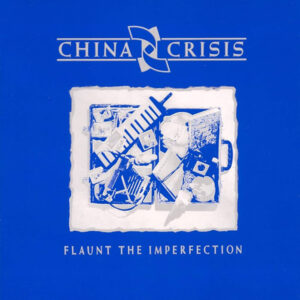 China Crisis / Flaunt The Imperfection
China Crisis / Flaunt The ImperfectionVirgin, 1985
The first China Crisis album was called Difficult Shapes & Passive Rhythms, Some People Think It’s Fun To Entertain. The second one was Working with Fire and Steel – Possible Pop Songs Volume Two. If their album titles were anything to go by, this synth-pop duo from Merseyside (comprised of Gary Daly and Eddie Lundon) were keen subverters of industry convention. Flaunt The Imperfection was the group’s third LP, released in April 1985. Its title was more succinct but it may also have been an inside joke, since it’s hard to imagine a more sonically flawless record. That’s perhaps not surprising when you consider the album was produced by Walter Becker, one half of notorious studio perfectionists, Steely Dan. Becker’s influence is apparent from the album’s cool grooves, tasteful horns and jazzy guitar fills, most of which would not have sounded out of place on Gaucho. The songs themselves are deceptively catchy, almost naive melodies that are perhaps at times too subtle for their own good. I love this elegant record but there is something oddly restrained and deliberately understated about it. Nevertheless, Flaunt The Imperfection was China Crisis’ most successful album, reaching number nine in the UK album charts. The single, “Black Man Ray,” got to number 14. China Crisis made three more albums, working with Becker again on 1989’s Diary Of A Hollow Horse, before going on hiatus in the mid-nineties. More recently they’ve reemerged on the eighties nostalgia circuit, opening for the likes of Kim Wilde and even releasing a seventh album in 2015 called Autumn In The Neighbourhood. But Flaunt The Imperfection remains China Crisis’ most successful record, and next week the band is embarking on a tour of the UK and the Netherlands to celebrate its fortieth anniversary.
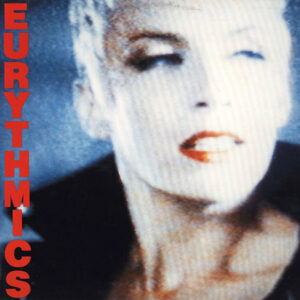 Eurythmics / Be Yourself Tonight
Eurythmics / Be Yourself TonightRCA, 1985
Eurythmics’ fourth album, Be Yourself Tonight, eschewed the cool synth-driven production of the duo’s earlier records, adopting a more varied and textured sound that blended electronic and organic elements so seamlessly it became at times impossible to tell the difference. This departure was echoed by the LP artwork (the images for which were taken directly from the video for the lead single, “Would I Lie To You?”) in which Annie Lennox — already arguably the eighties’ most striking frontwoman — abandoned her somewhat androgynous appearance for a more rock’n’roll-inspired combo of bottle-blonde pixie cut and leather jacket. The second single, “There Must Be An Angel (Playing With My Heart),” is a shimmering confection of celestial gospel-pop that remains the group’s only UK number one hit. Just when you think the album version of the track can’t get any more perfect, up pops none other than Stevie Wonder to lay down an extended harmonica solo. The R&B influence is further evidenced on the electronic soul of “It’s Alright (Baby’s Coming Back)” and the feminist anthem “Sisters Are Doin’ It For Themselves,” which paired Lennox’s powerhouse vocals with the Queen of Soul herself, Aretha Franklin. The track was recorded in Detroit with Mike Campbell, Benmont Tench and Stan Lynch from the Heartbreakers (Dave Stewart also produced several tracks on Tom Petty’s 1985 LP, Southern Accents). And if that weren’t enough guest cameos, “Adrian” on side two includes harmonies by a certain Elvis Costello! The album reached number 3 in the UK and its global commercial success ensured that Stewart remained in demand as one of pop’s most innovative producers. Unfortunately the duo were unable to tour in support of the record due to Lennox’s recuperation from vocal fold nodules, which was also the reason Eurythmics didn’t appear at Live Aid.
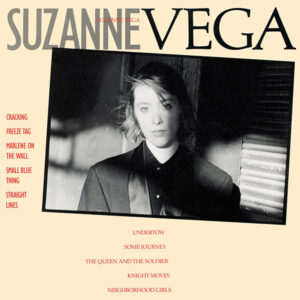 Suzanne Vega / Suzanne Vega
Suzanne Vega / Suzanne VegaA&M, 1985
Suzanne Vega is still often referred to as a folk singer (a label applied, it seems, to every woman with an acoustic guitar) but in both style and subject matter she was always a poetic and slightly tormented singer-songwriter — more Leonard Cohen or Joni Mitchell than Judy Collins or Joan Baez. Vega was born in Santa Monica but her musical sensibility was undeniably East Coast; she moved to New York aged two, taking the name of her Puerto Rican stepfather and eventually settling on the Upper West Side. While studying English literature at Barnard College, she began performing as part of a songwriter’s group on Monday nights at Greenwich Village’s Cornelia Street Café (which sadly closed at the end of 2018 due to a rent increase). Some of her songs were published on Jack Hardy’s affiliated Fast Folk anthology series. Wordy and intimate, the ten songs that made up Vega’s self-titled debut album were sharply observed studies of modern romance — and whatever else goes on inside a 25-year-old introvert’s head. Her cool, conversational, at times almost spoken vocal delivery recalled the city’s wry poets, such as Paul Simon or Lou Reed. With its feathery drums and subtle use of synths, the album’s overall sound evokes the silence of a snow-covered Manhattan morning, but you’d never mistake it for 1965. Though well-received by critics, this LP stalled at 91 on the US album chart. It fared much better in Europe, reaching number 11 in the UK, where the single, “Marlene On The Wall,” was also a hit. Incidentally, one of the album’s producers, Steve Addabbo, later opened a recording studio on Shelter Island, a five-minute ferry ride from where I’m sitting.
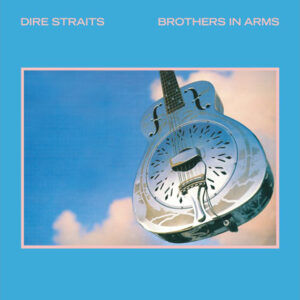 Dire Straits / Brothers In Arms
Dire Straits / Brothers In ArmsWarner Bros., 1985
Brothers In Arms, the fifth album by Dire Straits, became the first to sell a million copies in the CD format and in the UK is still the 8th best-selling album of all-time. I have nothing against Dire Straits — I always loved “Sultans Of Swing” and Mark Knopfler’s outfit at Live Aid is seared into my mind — but I’ve never really cared for this record. In fact, I remember it as much for its ubiquity as the music itself. So this morning I listened to it again, for the first time in ages. Recorded in Montserrat and New York, it was one of the first records made using a Sony 24-track digital tape machine. In further pursuit of perfection, Knopfler erased Terry Williams’ initial drum parts and flew in jazz session drummer Omar Hakim to re-record them. The album is immaculately played and produced, but seemed to signal a shift in music consumption. You can almost hear the money being spent, the corporate calculating, the cogs turning. The whole thing ends up sounding more like product, or worse, background music. Even the artwork (featuring Knopfler’s own 1937 National resonator) seems bland and lazy. As a child I loved the single “Money For Nothing,” (featuring Sting’s “I want my MTV” vocals) and its accompanying computer-animated video. And though there’s a fifty-fifty chance it’s playing at your local CVS right now, I still find the cajun/Booker T. vibes of “Walk Of Life” impossible to dislike. But it’s the only thing on here that saves this album from being entirely glum. I suppose the after hours ballad, “Your Latest Trick,” with its prominent Michael Brecker sax motif, has a certain charm — if, say, you’re looking to recreate the atmosphere of a yuppie wine bar circa 1985. The rest of these meandering tracks are surprisingly quiet, tasteful arrangements punctuated by Knopfler’s nifty fretwork and somewhat mumbled vocals. Side two, with its plodding, vaguely militaristic themes, starts to really drag, even though most tracks were edited slightly to fit on an LP. So I guess I should be thankful I don’t own the CD version, which was padded out for a further ten minutes…
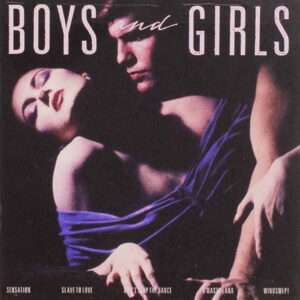 Bryan Ferry / Boys And Girls
Bryan Ferry / Boys And GirlsE.G., 1985
Bryan Ferry’s solo career had always run parallel to Roxy Music’s since the early seventies, but Boys and Girls (his sixth solo record) was his first release since the group’s final album, 1982’s Avalon. Sonically, this atmospheric record picks up where that one left off, incorporating many of the same musicians. Original Roxy guitairist Phil Manzanera is absent, but the likes of David Gilmour, Nile Rodgers and Mark Knopfler make sure he isn’t missed. The resulting suite of slinky, textured grooves glides and percolates beneath Ferry’s detached, seductive croon, making this record perhaps the truest musical embodiment of his consistently suave, debonair persona. In July 1985 Ferry performed three tracks from the album at Live Aid, including the hit “Slave To Love,” which reached the UK top ten. That track was partially recorded at Bette Midler’s home in New York and always makes me think of the 1986 movie Ferris Bueller’s Day Off, in which a huge poster for the single is appended directly to the wall behind Matthew Broderick’s bed. There’s currently one such 60” x 40” poster in Melbourne available on eBay if you have a spare $1,455 Australian dollars (plus shipping from down under).
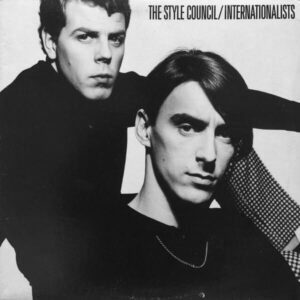 The Style Council / Our Favourite Shop (Internationalists)
The Style Council / Our Favourite Shop (Internationalists)Polydor, 1985
The Style Council’s second album, Our Favourite Shop, briefly knocking Dire Straits’ Brothers In Arms off the top of the UK chart in June 1985. But like several British records released in the mid-eighties (and indeed the group’s previous LP) this one was retitled and repackaged for the American market. The original instrumental title track was omitted entirely and replaced by “Shout To The Top,” a hit single also featured on the soundtrack to the Matthew Modine/Linda Fiorentino movie Vision Quest. While the UK cover depicted Paul Weller and loyal sidekick Mick Talbot as a couple of dapper thrift store customers (see last slide), the US version transformed them into a pair of preening fashionistas — or perhaps Bond villains. The duo’s carefully cultivated image and sophisticated brand of jazz-soul-pop were calculated specifically to distance Weller from his previous act (The Jam), but also to provoke and expose a prejudice within the British music press and record-buying public. The group became a deliberate easy target: so committed was Weller to the project that he seemed intent on inviting ridicule or disdain, as a cursive sweep of this record’s back cover liner notes (accredited to “The Cappuccino Kid,” a pseudonym presumably) will testify. Put the record on and you will hear Weller singing inexplicably, at least on the opening track, with what sounds like a terrible cold. Though their records sold well, The Style Council were routinely dismissed as pretentious or inauthentic by those who weren’t in on the joke or simply didn’t get the message. This album’s immediately catchy tunes and breezy arrangements belied the fact that this was the angriest music Weller ever made. His leftist lyrics — whether a pithy satire or an earnest lament — were each a scathing critique of Britain’s social and economic decline under Thatcher. A month later at Live Aid, The Style Council were the second act on the bill at Wembley, where they performed two tracks from this LP, “Walls Come Tumbling Down” and the American title track.
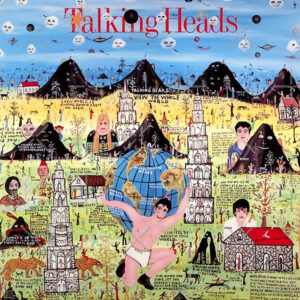 Talking Heads / Little Creatures
Talking Heads / Little CreaturesSire, 1985
Little Creatures is my favourite Talking Heads record, though many of the band’s fans routinely dismiss it (and the albums that followed) for sounding too commercial, as if producing great pop music means selling out, or is somehow a less worthy pursuit than making edgy art rock or exploring African funk polyrhythms. Or maybe they’re just afraid of a little steel guitar? I’ve also noticed that these fans are often among those who refer to the band as “The Talking Heads,” instantly diminishing the credibility of their opinions. Of course, how you appreciate music often has much to do with timing. I’m too young to have experienced Talking Heads’ first records as they happened (I remember my dad put “Once In A Lifetime” on one of the first compilation tapes he made for me), but by 1985 I’d developed an almost fanatical interest in music, and this album is certainly a big reason why Talking Heads were one of my favorite bands as a child. Either way, for me this album’s warm, radio-friendly production provides an ideal juxtaposition for David Byrne’s quirky observations and growing fascination with the nuances and absurdities of everyday American life. Every track sounds like a potential hit single, but the album is bookended by possibly the two best examples of Byrne’s pop genius. The surreal opener “And She Was” must rank as one of the decade’s finest opening tracks, while the gospel march of side two closer “Road To Nowhere” is so simple and direct that one could be forgiven for taking it for granted. The album packaging was designed by Hungarian graphic artist Tibor Kalman, using a commissioned painting by Howard Finster, an outsider artist from Summerville, GA (he also worked with fellow Georgians R.E.M.). Finster’s innocent style matched the relatively upbeat music contained within, but he wasn’t naïve: he was also a Baptist minister and inserted twenty-six religious verses into his front cover art. “They sold a million records in the first two months,” he noted. “So that’s twenty-six million verses I got out into the world.”
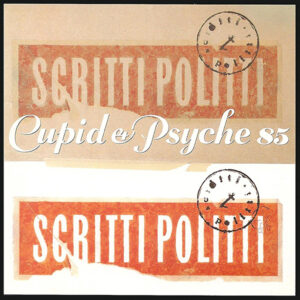 Scritti Politti / Cupid & Psyche 85
Scritti Politti / Cupid & Psyche 85Warner Bros., 1985
Cupid & Psyche 85, the second album by Scritti Politti, was released in — wait for it — 1985. Forty years later, this record sounds absolutely amazing (especially on vinyl), but had it been made a few years later it might have seemed too slick. This album is certainly highly polished — and definitely of its time — but by the nineties developments in studio technology had made such immaculate production feel unbearably cloying. Scritti Politti were formed in Leeds in 1976 by Welsh art student Green Gartside (real name: Paul Strohmeyer). Initally influenced by leftist politics, the group took their name from Antonio Gramsci’s political writings — “scritti politici” — but Green changed it to Scritti Politti to sound more like “Tutti Frutti.” By the early eighties Green had abandoned his Marxist philosophy but retained an intellectual fixation with language. He also lost interest in the UK’s underground punk scene, turning his attention towards American soul, funk and hip-hop. Scritti Politti signed with Rough Trade who put out their debut, Songs To Remember, in 1982. The album was a minor success but Green couldn’t produce the sophisticated studio pop he desired on an indie budget. So he disbanded the group, signed with the Virgin label, and reformed Scritti Politti with a pair of New York musicians. Embracing the sound of the streets and the clubs, the group developed their distinctive pop sheen. With his blond coiff, Green himself was almost as pretty as his music, which in the MTV era certainly helped Scritti Politti shift some LPs. Green’s love of American pop was apparent on the record’s first single, “Wood Beez (Pray Like Aretha Franklin),” the title of which referenced “I Say A Little Prayer,” on which veteran co-producer Arif Mardin also worked. The album produced four other singles, three of which broke the UK Top 20. One of these, “Perfect Way,” was the group’s biggest hit in the US, and was covered by none other than Miles Davis on his 1986 album, Tutu. Green returned the favour on Scritti Politti’s next album, Provision, inviting Davis to perform a trumpet solo on the single “Oh Patti (Don’t Feel Sorry For Loverboy).”
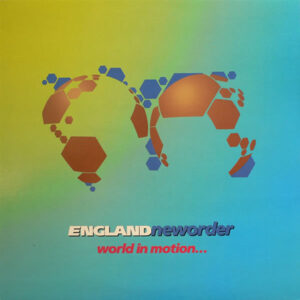 England/New Order / “World In Motion”
England/New Order / “World In Motion”Factory 12”, 1990
To fully appreciate the significance of this single one need only look up World Cup songs of the seventies and eighties, which routinely found British squads bellowing off-key while swaying awkwardly to belie their general discomfort. But in 1990, England enlisted one of the UK’s most critically-acclaimed bands, lending instant credibility to a sub-genre that up to that point had been a subject of ridicule. Of course, the track sounded great (the bar had been set low), but lyrically it was a revelation. Previous World Cup songs had invariably taken the form of tired pub sing-alongs, full of empty promises about learning from past failures and bringing the cup home. As its very title suggested, “World In Motion” had a broader concern beyond England’s results on the pitch. Its lyrics were more abstract and ambitious — at its heart lay the possibility of love and international harmony, using football as a metaphor for self-expression. Then, as if things couldn’t get any better, up pops John Barnes, a victim of merciless racist abuse throughout his career, to silence haters with a thirty-second rap: “We ain’t no hooligans/This ain’t a football song…” This lyric not only further elevated the track above its mediocre predecessors, but it also made a blatant distinction between itself and the hotbed of fragile masculinity that was English football in the eighties. The twin successes of “World In Motion” and “Nessun Dorma” (used as the BBC’s theme for Italia ’90) shifted the sport’s cultural domain in the UK towards a liberal middle class, signaling a turning point in the way the game was perceived and marketed over the next decade. “World In Motion” stayed at number one on the British singles chart for two weeks, but surprisingly, it did not pave the way for equally memorable tournament songs (1996’s “Three Lions,” while a ready-made terrace chant, felt like a musical regression). So today “World In Motion” exists as a football and pop music cross-cultural landmark, not just for how it sounded, but for what it meant. “When something’s good it’s never gone…”
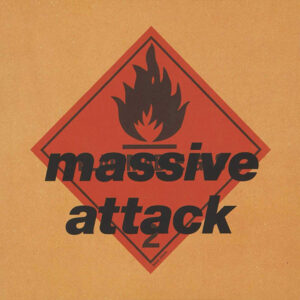 Massive Attack / Blue Lines
Massive Attack / Blue LinesWild Bunch, 1991
Massive Attack’s debut album, Blue Lines, was the archetype for a peculiar sub-genre of British music initially referred to as the “Bristol sound.” Massive Attack were the first major act to emerge from Bristol’s soundsystem scene: its core members — DJs Grant “Daddy G” Marshall and Andrew “Mushroom” Vowles, and graffiti artist-turned-rapper Robert “3D” Del Naja — had been working as a loose collective known as The Wild Bunch since the mid-eighties. When they finally got together the motivation and funds to cut an album (a large chunk of which was recorded at Neneh Cherry’s house) they were joined by Tricky Kid, whose anxious monotone was offset elsewhere by the warm vocals of Jamaican singer Horace Andy and British soul siren Shara Nelson. The album is perhaps best remembered for its stirring first single “Unfinished Sympathy” and the accompanying video, in which a carefree Nelson paces Los Angeles’ West Pico Boulevard. Released in the midst of the Gulf War air strikes, the group had to drop the second word from their name to ensure radio airplay, but the track still reached number 13 and still ranks highly on critics’ lists. Today, Blue Lines’ odd textures, nocturnal atmosphere and cinematic samples perfectly suit its lyrical themes: the significance of love, positivity and selfhood in the face of general disillusionment. By the mid-nineties other acts had followed this lead, around which point this lucrative new category was dubbed “trip-hop.” I loved Massive Attack’s second official release, Protection (1994), featuring Tracey Thorn from Everything But The Girl, and Tricky’s first solo album, Maxinquaye (1995), featuring Martina Topley-Bird, which is arguably the movement’s zenith. I never really got into Massive Attack’s 1998 album, Mezzanine, though it included guest vocals by Liz Fraser of the Cocteau Twins and was the group’s most commercially successful release. But I’ve played Blue Lines consistently since I was a teenager — it might be my favourite album of the nineties, and is certainly one of the most evocative of that decade. I even remember it playing in my high school art class, but then my dad was the teacher…
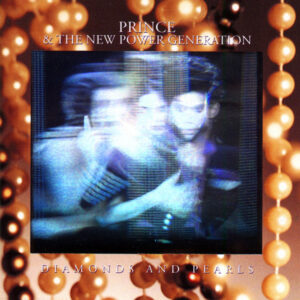 Prince & The New Power Generation / Diamonds and Pearls
Prince & The New Power Generation / Diamonds and PearlsPaisley Park, 1992
Diamonds and Pearls was Prince’s thirteenth album in as many years and his fourth (!) double LP, though incidentally the first of his that I don’t own on vinyl (there were two versions of the CD; for some reason I have both). This was also the first studio album to be credited to the New Power Generation. The live band swings hard with a sound that’s warm and jazzy, though the record hints at a heavier production style that typified Prince’s work by the mid-nineties. The result was an album that felt rooted in some version of contemporary urban life, as Prince suddenly appeared to be looking outward — or at least onto the street. No longer operating solely in his own orbit, his insecurities concerning chart trends were perhaps exposed by a distinct influence of new jack swing and hip-hop. Evidently Prince had softened his stance on rap music since previously disparaging the genre, even deploying an MC, Tony M, on a handful of tracks. (I remember hearing “Gett Off” in the school playground, suggesting the ploy had worked.) But for all his innovation in the studio, Prince’s songwriting is refreshingly straightforward and his vocal performances unaffected. The most memorable songs on the album are devoid of excessive production flourishes and played totally straight, revealing their honest beauty and craft. On the title track, a gorgeous baroque rock (barock?) ballad, Prince takes a backseat to the considerable vocal talents of Rosie Gaines. It’s the kind of song that few artists would dare tackle and probably the last truly great single of Prince’s career. In contrast, “Cream” feels almost throwaway: a Bolan-esque ditty that bounces along on such an effortless groove you can’t believe it had to be written. Legend has it Prince composed the whole thing while looking at his reflection in the mirror. When he wasn’t fixing his eyeliner he was penning adult socio-political critiques like “Money Don’t Matter 2 Night,” a mid-tempo number whose message both timeless and prescient was given visual life by Spike Lee in a video that could have been made yesterday. Sadly it was deemed unsuitable for MTV. “And u think u got it bad…”.
 Prince & The New Power Generation / Love Symbol
Prince & The New Power Generation / Love SymbolPaisley Park, 1992
Prince’s fourteenth studio album also introduced the unpronounceable symbol that would soon become his stage name. This gender-blending glyph was stamped directly onto the plastic CD case; today the album tends to be referred to as “Love Symbol.” Ironically, its lead single and opening track was called “My Name Is Prince,” a suggestion that the little man hadn’t entirely lost his sense of humour (or his ego). Indeed, the record was originally intended to weave a loose but elaborate narrative about an Egyptian princess played by Prince’s future wife Mayte Garcia. But most of these dramatic segues had to be cut to allow the album to fit on a standard-length CD (it still maxes out at a hefty 75 minutes). The concept was resurrected for a direct-to-video film called 3 Chains o’ Gold that eventually emerged in 1994 (I’ve never seen it). The three spoken-word interludes that made it to the finished album all feature Kirstie Alley in the role of dogged reporter Vanessa Bartholomew, following her vain attempts to secure an exclusive interview with the elusive purple genius (apparently Prince was a big fan of Cheers and befriended the actress on set). If you can put aside those quaint indulgences, the rest of the album divides itself between heavy slabs of danceable R&B and refreshingly unaffected mid-tempo ballads. It became Prince’s best-selling album since Purple Rain, and is evidence of the increasing influence of hip hop on his sound, packed with examples of the joking-not-joking sexually explicit bravado he’d appeared to have outgrown. Nevertheless, the record’s undoubted highlight is “Sexy M.F.,” a spiritual successor to “Sex Machine” that showcases the NPG as the tightest jazz-funk combo since James Brown hung up his cape. Inevitably, the single version had to be cleaned up for radio, but the incriminating refrain is repeated so many times on the original that by song’s end it essentially becomes benign, its power to offend lost beneath the track’s chunky horns and incessant, undeniable groove. The album’s other hit single was entitled “7,” which is also where it peaked on the chart.
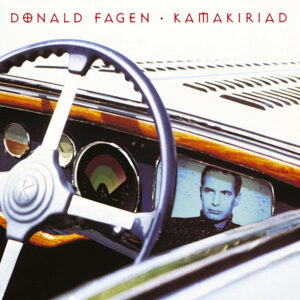 Donald Fagen / Kamakiriad
Donald Fagen / KamakiriadReprise, 1993
Donald Fagen’s second solo album, Kamakiriad, came out over a decade after his first one. Following the success of The Nightfly in 1982, Fagen had spent the bulk of the eighties suffering from depression and writer’s block. Instead he focused on session work and composing music for films, most notably the adaptation of Bright Lights, Big City (though unfortunately, Fagen’s version of Jimmy Reed’s song from which the novel took its name is not included on the movie’s LP soundtrack). He also penned a regular column in Premiere magazine. Steely Dan’s old website even lists the year’s 1988-1992 as “The Dark Ages.” Kamakiriad is a concept album of sorts, an eight-song cycle about an unnamed narrator’s steam-powered odyssey aboard the titular vehicle of the very near future (it even has a hydroponic farm in the back). Fagen’s retro-nostalgic vision is further brought to life by his fixations with Cold War era jazz and science-fiction, safe havens warmed by sun or fire, and alluring beauties that may or may not be out of this world. Though nominally a solo record, Kamakiriad was produced by Fagen’s Steely Dan co-founder, Walter Becker — by that point a resident of Maui — who also contributes bass and lead guitar. Not counting their involvement on Zazu, a record by model-turned singer Rosie Vela, in 1986, it was the first time the pair had collaborated since the last Steely Dan record, Gaucho, in 1980. In 1994, Fagen returned the favour, playing keyboards and co-producing Becker’s own solo debut, 11 Tracks of Whack. Later in 1993, Steely Dan began touring again for the first time in nineteen years, and didn’t really stop until Becker’s death in 2017. Today Fagen continues to tour as “Steely Dan” at the behest of promoters.
 Elvis Costello / Brutal Youth
Elvis Costello / Brutal YouthWarner Bros., 1994
Brutal Youth was marketed as Costello’s first album with the Attractions since 1986’s Blood & Chocolate, though that original foursome only appeared on five tracks. Most of the rest featured Nick Lowe on bass, until a reluctant Costello was convinced by producer Mitchell Froom to invite Bruce Thomas — with whom he’d barely spoken in the ensuing years — to reassemble the old line-up. After he’d spent the early part of the nineties working on music for soundtracks and string quartets, Costello’s fourteenth studio album was hailed by critics as a “comeback” and a “return to form,” in that it evoked the raw energy and clever wordplay that had made him famous. Costello was keen to insist that the record wasn’t a retro pastiche, even if its bright production — laden with hooks and harmonies — owed a lot to the radio-friendly guitar sound of the sixties. Does that make it Britpop? This CD still reminds me of the 1994 World Cup, and is definitely my favourite mid-period Costello album. I listened to it while driving to work recently and had forgotten how good it is. Costello’s songcraft, and vocal performance, are masterful. The last time I’d heard it in a car was probably in Italy during that same summer — I can still picture the flags hanging from every balcony. Coincidentally, the sleeve notes include a bizarre dedication in crude Italian that reads, “Io strombazzo! Io dedico questo assurdo scarabocchio e mormorio per la mia bruta gioventù con stufacente desiderio.” I found an interview from the left-wing newspaper L’Unità in which Costello reveals that the phrase came about from an Italian course he’d taken in Florence. “Yours is a fascinating language, but also a difficult one,” he explained. “I’d hoped to learn it quickly, also to be able to speak with you. But I was a bad student.” Costello was clearly in his Italophile phase: the following year he appeared as a football pundit alongside James Richardson at the Genoa derby, in what ranks as one of the best bits of live television I’ve ever seen.
 Blur / Parklife
Blur / ParklifeFood, 1994
At the start of the nineties, Damon Albarn had prophetically announced that Blur would become the quintessential English band of the nineties. A miserable tour of the United States in 1992 had extracted in Albarn an anti-American sentiment, and Blur’s knowing satire of British culture was often interpreted as a celebration of same — or maybe it was the other way around. Certainly, in its brilliant evocation of sixties pop and sharply-drawn character sketches, Parklife, the band’s third album, came to define the eclectic style and tongue-in-cheek humour of what the media had already dubbed “Britpop.” It’s probably the most emblematic album of that genre, even if the term never had much to do with music. Despite a Scandinavian subtitle (“Folkmusik då Svenska”) not listed on the album sleeve (which I only discovered when I popped the CD in the car stereo yesterday), Parklife essentially recaps every English pop music trend of the previous thirty years. The record’s biggest hits were the synth-disco throb of “Girls & Boys” and the mainly spoken-word title track (featuring actor Phil Daniels), which became something of an anthem. But I always preferred Albarn’s more personal songwriting. “End Of A Century,” “Badhead” and “Clover Over Dover” reveal his finest pop sensibilities in the manner of mid-era Beatles or his idol, Ray Davies. I also loved the baroque chanson “To The End,” which was later re-recorded with Françoise Hardy. Another fan favourite is the atmospheric “This Is A Low,” featuring a lengthy Graham Coxon guitar solo and perhaps the only song inspired by the BBC shipping forecast. What could be more British than that? If Parklife’s subject was the UK’s lower classes, its 1995 follow-up, The Great Escape, took an even more scathing aim at the aspiring bourgeoisie. I loved it. By that point the frenzied British media had pitted Blur against their northern “rivals” Oasis, even though, besides hailing from the same island, the two bands had nothing in common. For Britpop, that was the beginning of the end. In 1997 Blur released a self-titled low-fi album influenced by American alternative rock. I hated it.
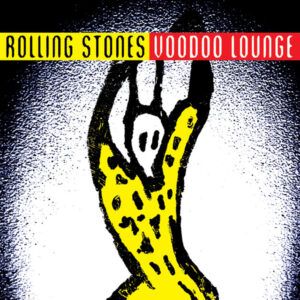 The Rolling Stones / Voodoo Lounge
The Rolling Stones / Voodoo LoungeVirgin, 1994
I remember watching an interview with the Rolling Stones around the time Voodoo Lounge came out in which Mick Jagger was questioned about the album’s title. “It’s not like we’re into voodoo or anything,” he said. “But we’re very good at lounging…” Musically, the album follows the blueprint of all late-era Stones releases, as established on the band’s 1989 “comeback” record, Steel Wheels. Ironically, that album came out just three years after the poorly-received (but underrated) Dirty Work; it took another five years for its follow-up to arrive. Following his departure from the group in 1993, this was also the first Stones album not to feature founding bassist Bill Wyman. The first half of this disc is pretty strong, revealing the Stones at their unapologetic and eclectic best, but the material starts to wane a bit on what would be side two. With its clunky religious imagery and references to warfare, “Blinded By Rainbows” strains in vain for an elusive, lofty message and ends up distinguishing itself as possibly the worst lyric the Stones ever recorded. The best track on here is perhaps Keith’s quietly menacing “Thru And Thru,” which was later used to great effect on an episode of The Sopranos. In August 1994 the Voodoo Lounge tour kicked off, a thirteen-month series of dates that grossed a record-breaking $320 million. By the end of the nineties the Stones had completed a decades-long transition from original rock and roll outlaws to corporate establishment certainties, a reflection of the band, the music industry, and even the public’s attitude towards both.
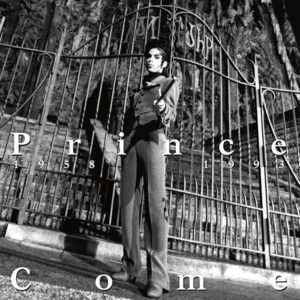 Prince / Come
Prince / ComeWarner Bros., 1994
Largely ignored upon its release, Prince’s sixteenth studio album, Come was dismissed as merely a contractual obligation — in 1993 Prince had already adopted the unpronouncable “love symbol” as his stage name in an attempt to free himself from the restrictions imposed on him by his label. A surprisingly palatable mix of chilled funk and experimental grooves, most of the music on Come emerged from the same sessions that produced the more commercial material that ended up on The Gold Experience. Prince’s intention was to release both projects simultaneously but Warner Bros. refused; The Gold Experience didn’t see the light of day until September ’95. Come’s already slim chances for chart success were further diminished by Prince’s own indifference towards marketing the record, but it still debuted at number one in the UK. Similarly, an album that begins with an eleven-minute title track on the subject of oral sex clearly isn’t too concerned with producing hit singles, but Prince’s most loyal British fans pushed “Letitgo” as high as number 30. The album is probably most memorable for its artwork. The cover photoshoot by Terry Gydesen took place on location in front of the gates of the Sagrada Familia in Barcelona. More significantly, next to the artist’s name appeared the years 1958 and 1993, symbolising the death of “Prince.” His next nine releases were attributed to the aforementioned glyph; the name “Prince” did not appear on a studio album again until The Rainbow Children, a jazz fusion concept record that came out in November 2001.
 Oasis / Definitely Maybe
Oasis / Definitely MaybeCreation, 1994
It’s difficult to extract Definitely Maybe from the cultural phenomenon it ignited in the UK and the media frenzy that followed. Aside from the music, perhaps the most important thing about Oasis’ debut album was that it introduced us to the Gallagher brothers, Noel and Liam, a genetically-connected odd couple who, besides a womb and a love of Manchester City, shared little in common. Most of the time they didn’t even seem to get along. But the pair were also striving for pop immortality — one through his gift for song, the other through the very act of being Liam Gallagher — and each seemed to begrudgingly recognise that they needed the other if they were to reach these unwavering ambitions. Much of what made Oasis so endearing was their almost comical northern bravado. Humour was a big part of their appeal, but unlike some of their contemporaries, they were never trying to be clever or ironic. They were committed to their yearning vision and played it absolutely straight — disliking Oasis said more about you than it did about them. There was nothing especially original about Oasis — perhaps their greatest trick was convincing us that there was. Many likened them to the Beatles, though their logo was inspired by the old Decca symbol that appeared on early Rolling Stones records. The cover photo was taken in rhythm guitarist Paul “Bonehead” Arthurs’ living room (he’s the one sitting in a chair looking a bit glum). The scene contains several clues that hint at the band’s identity and influences: there’s a Burt Bacharach gatefold propped up against the sofa, a framed picture of Rodney Marsh at Maine Road (until recently I always thought it was Colin Bell), while a Sergio Leone spaghetti western plays on the TV. I had a poster of the artwork on my bedroom wall. I also had a pale blue Oasis t-shirt with the album’s title on the back (I recently spotted one listed on eBay for $600).
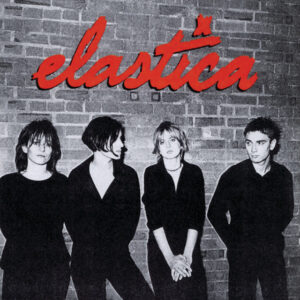 Elastica / Elastica
Elastica / ElasticaKonk, 1995
Elastica’s self-titled debut album came out a full fifteen months after the band’s first single. Three more singles followed before the album was actually released, which helped it become (at the time) the fastest-selling debut in UK chart history. Aside from their catchy songs, a big part of Elastica’s appeal — at least for this listener — was the band’s tomboyish, Telecaster-wielding frontwoman, Justine Frischmann. Frischmann’s cool androgyny, deadpan delivery and knowing attitude of insouciance made me an instant fan of her band, before I’d barely heard their music. Elastica’s angular, pithy post-punk seemed refreshing on both sides of the Atlantic. But in addition to record sales and critical praise, they were accused, quite legitimately, of lifting riffs from both Wire and The Stranglers. Not even the band’s name was that original: in the early eighties there was a short-lived Edinburgh synth group called Hey! Elastica. Frischmann had co-founded Suede with Brett Anderson, whom she’d also dated. By 1991 she was living with Blur’s Damon Albarn. The pair became a frequent fixation of the notorious UK press, but despite being one half of Britpop’s preeminent power couple, “Queen Justine” only saw Albarn for three weeks in 1995, and described the next few years as her most miserable. She slipped into a heroin addiction and began living what she called “the life of a sad junkie.” After several aborted attempts, Elastica’s long-awaited follow-up album, The Menace, finally arrived in 2000. Frischmann later conceded that Elastica should have remained “a one-album project.” The daughter of a Hungarian Holocaust survivor who’d become a prominent engineer, Frischmann had studied architecture at University College London before becoming a musician. In 2003 she hosted a BBC Three series about architecture and interior design called Dreamscapes (I have no recollection of this but it’s on YouTube). Then in 2005 she enrolled in a visual arts degree in Boulder, Colorado, and took up painting. Today she lives in San Rafael, California, with her husband (a meteorology professor at UC Davis) and several cats. On her former life she says, “I just wasn’t cut out to be a pop star.”
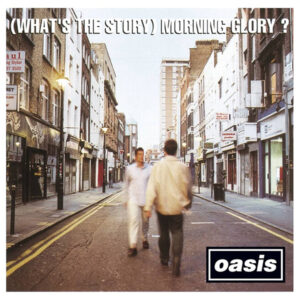 Oasis / (What’s The Story) Morning Glory
Oasis / (What’s The Story) Morning GloryCreation, 1995
This record defined 1995: I remember hearing it at home, at school, at parties… In the end it came to define mid-nineties culture in the UK in a way that today seems quaint. Imagine if 2020’s major headlines concerned the CD sales, supposed rivalries and off-stage antics of a rock band. This period will always be referred to as peak “Britpop.” I always hated that label, mainly because it lumped bands together that otherwise had no connection besides having formed in the UK, as if nationality were a musical genre and all British groups — whether from London, Liverpool, or even Manchester — sought the same sound. It also meant that many mediocre imitation bands got to bask in the glow of fame earned by the more talented ones, resulting in clogged airwaves and an increasingly tiresome scene (I felt British music became notably looser and more varied once the media frenzy had faded by the end of the decade). Morning Glory is not my favourite Oasis album (that distinction still belongs to Be Here Now, much to the disbelief of most). But a quarter-century later it still sounds great and I still know every word, though I cannot disassociate it from endless days of cloud and drizzle. Noel Gallagher’s lyrics were always self-aware but vague, as if he was recalling a dream from a few nights before but also looking ahead a couple of decades, imagining a nostalgia for something that had yet to happen. Like a professional athlete, he seemed conscious of the fact that success would be fleeting, that the giant wave his band rode by nature could not last, and that this was his personal moment in pop history. I think that slight urgency gave Oasis an edge over their contemporaries, whose clever posturing and arch humour perhaps had less direct appeal. They also simply wrote better songs (though they still never really “cracked” America).
 Oasis / Be Here Now
Oasis / Be Here NowCreation, 1997
Oasis’ third album, Be Here Now, came out on August 21st 1997. I didn’t have to look that up: the date was included prominently on the CD artwork, no doubt as a reminder to fans that in purchasing the record they were contributing to a moment of historic cultural significance. This wasn’t a case of hubris: 424,000 people bought copies of Be Here Now on its day of release, making it the fastest-selling album in UK history. I was one of them, and it immediately became my favourite Oasis album, though this preference is still routinely scoffed at by those who took part in the “Great BHN Backlash” of late ’97. Though I enjoyed a lot of the music I never liked the term “Britpop,” and always considered it a political movement more than a musical one. At its height I found the hype-driven, tabloid-fueled frenzy quite tiresome, even provincial. Thankfully by 1997 there were signs that the flag-strewn hysteria had begun to subside. In February, Blur released an eponymous “lo-fi” record, a clear rejection of the media circus in their native country that, notably, proved to be their best-performing album in America. Few imagined Oasis could surpass the colossal success of their second album… except Oasis. Rather than tone down their aspirations for global domination, the brothers Gallagher (and those three other blokes) — still riding a high of unwavering self-confidence that only a seemingly endless stream of cocaine and adulation can provide — defiantly turned up their already grandiose sonic approach to Wagnerian proportions. I remember seeing the video for epic album opener and lead single “D’You Know What I Mean?” on MTV (in Germany, appropriately enough). It made the “Ride of the Valkyries” sequence from Apocalypse Now look like a low-budget indie film. Despite record-breaking sales and gushing initial reviews, critics, fans — and even Noel Gallagher himself — soon changed their tune on the album. Today it’s still frequently dismissed as an indulgent, bloated collection of over-produced, meaningless songs. But I also remember reading somewhere that Oasis “didn’t need to have a message because their message was the very act of being Oasis.” This is precisely why, love it or hate it, Be Here Now is the most Oasis album Oasis ever made.
 Lauryn Hill / The Miseducation of Lauryn Hill
Lauryn Hill / The Miseducation of Lauryn HillRuffhouse, 1998
The Miseducation of Lauryn Hill was by far my favourite album of 1998, and certainly one of the decade’s most influential. Hill was already well-known as the voice (and face) of The Fugees, but her solo debut exceeded expectations. Though tinged by the warm sounds of the past (the lead single was called “Doo Wop”), this catchy record felt like both a celebration of black music and a critique of its broader culture, making its crossover appeal not only inevitable but also important. Hill was praised for her ability to sing and rap with equal authority, but her varied and honest songwriting was the album’s greatest revelation. Her confessional lyrics delved into the complexities of womanhood, motherhood and every other kind of ’hood, offering refreshing perspective on her struggles as a black female musician seeking to scythe through the lazy misogyny that blighted commercial hip-hop in the nineties (and beyond). Despite the consistent strength of Hill’s material, Miseducation wasn’t impervious to the industry trends of the period. The album featured A-list guest appearances from the likes of Mary J. Blige, D’Angelo and even Carlos Santana. Luckily these studio drop-ins didn’t distract, unlike the pointless spoken interludes inserted between songs (an irritating R&B tendency in the CD era). As a result the album clocks in at a bloated 78 minutes (that’s including the two hidden tracks). After Miseducation won five awards at the Grammys, Hill was the undisputed queen of neo-soul and perfectly primed for a long and successful solo career. But as of 2023 it remains her only studio album. By the turn of the millennium Hill had retreated from the spotlight, citing understandable disillusionment with fame and the music industry. In the past quarter-century she has performed and recorded only sporadically, prompting periodic and misinformed speculation as to the status of her professional and personal lives. Then this week she announced a 25th anniversary tour in celebration of the album, suggesting that even she recognizes Miseducation as her greatest statement and most lasting legacy.
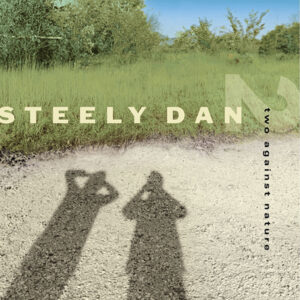 Steely Dan / Two Against Nature
Steely Dan / Two Against NatureGiant, 2000
Though Two Against Nature, Steely Dan’s eighth studio album, turns twenty-five this year, the record was released on February 29th, 2000, so I suppose it was made to evade such banalities as anniversaries. After finally completing Gaucho in 1980, Walter Becker and Donald Fagen took an indefinite hiatus, opting out of the MTV era entirely to spend the next decade working on solo albums, film music, or writing and producing for other artists. By 1993 the pair had reunited, embarking on a Steely Dan arena tour and even debuting some new material (I remember hearing “Jack of Speed” at my first Steely Dan show in ’96). In an era when baring young flesh was seemingly a requisite for a career in music, Steely Dan were the antithesis of the frosted-haired, tank-topped boy bands cluttering the pop landscape at the turn of the millennium. What better time for the seventies’ most subversive band to stage a comeback? “I think the audience for Limp Bizkit is probably not going to be particularly interested in what we’re doing,” Becker noted at the time. “If you just compare the names Steely Dan and Limp Bizkit,” Fagen added, “you have the answer right there.” On the record, the duo were now joined by a new generation of session aces with peerless jazz chops. Though tighter and funkier than their earlier work, the album was unmistakably a product of Steely Dan. Lyrically, Becker and Fagen remained preoccupied by familiar concerns: dysfunctional relationships, unconventional sexual arrangements, self-loathing and existential dread, and the effects of drugs on all of the above. The difference was that this pair of eternal outsiders were now further isolated by middle-age. Two Against Nature came out during my second year at university and I played this disc to death. To the surprise of some, it picked up four awards at the 2001 Grammys, including “Album of the Year,” ahead of those by Beck, Eminem and Radiohead. In June 2000 Steely Dan released a DVD of a live PBS special recorded at Sony Studios in Hell’s Kitchen. It is an essential document of an extraordinary band and its characteristic wit, but also of the late flash of a fading culture.
 Daft Punk / Discovery
Daft Punk / DiscoveryVirgin, 2001
By the time Parisian disco duo Thomas Bangalter and Guy-Manuel de Homem-Christo, better known as Daft Punk, released their second album, Discovery, the record’s lead single and opening track “One More Time” had already become ubiquitous, both on the radio and in the club. I was a student in Italy at the time and must have heard that song every day and every night for months; I remember my roommate and I used to mimic with glee the overly annunciated vocals (“tonigh-tah!”). I’d enjoyed Daft Punk’s first album, Homework, so when the new disc came out I picked it up immediately, probably from Ricordi Mediastore or Messagerie Musicali (Milan’s equivalent of Virgin Megastore or Tower Records). Furthering Daft Punk’s reputation as technological innovators, the CD came with instructions how to join Daft Club, an online community for accessing exclusive bonus material. Prior to launching the new record, Daft Punk had begun wearing shiny robot helmets in public: a visual metaphor for the merging of man and machine, but also a means for hiding behind their synth-heavy retro sound. Though it’s an electronic album, much of the “samples” use live instrumentation, resulting in the warm sensation of believing you’re hearing an older soul tune even when you’re not, and providing the record surprising emotional resonance. The album’s unapologetic earnestness and hook-laden pop sheen almost comes off as faux-naivety, but that’s balanced by a trademark humour (clocking in at ten minutes, the album’s final track is titled “Too Long”). I played this CD to death for a year or two, but notably hardly at all since. Daft Punk announced their break-up last month, though such a formal statement hardly seemed necessary given their less than prolific output and faceless personas. Ultimately, I felt Daft Punk became a bit of a parody, a clever idea taken to its absolute zenith. Like an electro-house version of another perfectionist twosome, Steely Dan, they were perhaps too smart for their own good. At times their act felt like an inside joke at the audience’s expense, but it did remind us to take nothing seriously — except the music.
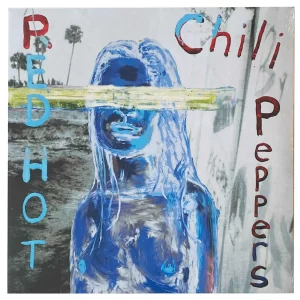 Red Hot Chili Peppers / By The Way
Red Hot Chili Peppers / By The WayWarner Bros., 2002
By The Way, the Red Hot Chili Peppers’ eighth album, was released during the same summer I finished university. I always loved this band, both for their unique sound but also their mystique and pervading sense of place. Not since the Beach Boys has a band’s music been so inexorably connected to southern California, and to me RHCP have always represented a distant and exotic version of Los Angeles life that to this day feels entirely foreign. I bought all the band’s albums in the nineties and like those, this one was also produced by Rick Rubin. But it marked something of a change in direction. Less funky, but more mature, melodic and textured than their previous releases, the record is characterized by John Frusciante’s extraordinary guitar work and multi-layered backing vocals. (Apparently bass player Flea felt so left out of the creative process on this record that he considered quitting the band.) The album almost feels like a distillation of California rock up to that point, laden with radio-friendly hooks, Wilson-esque harmonies, and even some lush string arrangements, all shot through a vague filter of sun-drenched psychedelia. Anthony Kiedis’ lyrics at times resemble a stream of consciousness, but still manage to convey a certain jaded optimism and a new self-reflective perspective on common subjects: love, drugs, and the wild contradictions of modern Angeleno culture. Ironically the artwork was painted by a New Yorker, Julian Schnabel, whose daughter Stella happened to be dating Frusciante at the time. I still have a poster of the cover that came free with an issue of Kerrang! magazine (which I never usually bought). If I have a criticism of this album it’s that at 69 minutes it’s probably a bit long, but it flies by in comparison to the band’s next album, a sprawling and somewhat indulgent double CD entitled Stadium Arcadium. By that point my obsessive interest in pop music had already begun to wane, and by the time I moved to New York I no longer had the time or energy to keep up with every new release. I like to think that says as much about the music (and the decline of record shops) as it does about me.
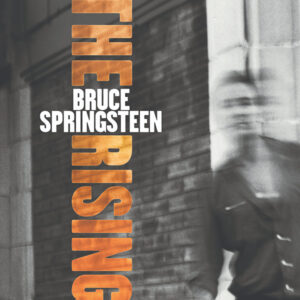 Bruce Springsteen / The Rising
Bruce Springsteen / The RisingColumbia, 2002
Bruce Springsteen’s twelfth studio album, The Rising, was a significant and highly-anticipated release for two reasons. Firstly, it was Springsteen’s first studio album with the E Street Band since Born in the U.S.A. in 1984, making it something of a comeback record. Secondly, it was the first CD by a major artist to address directly the events of September 11th, 2001, or at least the grief and paranoia of its aftermath, and in my mind will always be connected to that very uncertain period. The first new material I heard from the record was “My City Of Ruins.” Originally written about the dilapidation of Asbury Park, it acquired a different association when Springsteen opened the America: A Tribute To Heroes telethon by previewing a pared-down version of the song without introduction, a mere ten days after 9/11. Produced by Brendan O’Brien (best known for his work with grunge acts like Pearl Jam and Soundgarden), “The Rising” album presented some fresh textures that subtly updated the familiar E Street sound without ever diminishing it. The band had already reunited for a live tour in 1999, a series of epic shows that at times began to resemble a rock and soul sermon, with Springsteen in the role of Telecaster-wielding pastor. He sometimes assumed a similar role on this album, which provided a degree of comfort and reassurance during some of the most turbulent months in this nation’s history. Far be it from a musician’s responsibility to steer a country forward in a time of crisis, but in 2002 who else was going to do it? The opening track’s organ and chugging horn refrain (“It’s alright, it’s alright… Yeah!”) could have been applied to any roadside bar singalong in Springsteen’s catalogue, but in this context took on an unexpected meaning that still packs a surprise emotional punch two decades later. This uplifting affirmation of survival set the tone for the entire record, which bravely grappled with the question of how to continue living (and even have a party) in the face of such despair and fear. Springsteen’s answer was a vital and timely reminder that like it or not, for better or worse, life, one way or another, does go on.
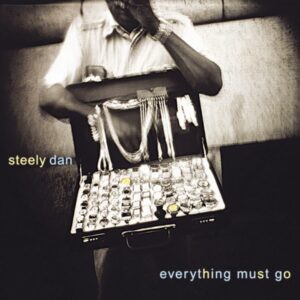 Steely Dan / Everything Must Go
Steely Dan / Everything Must GoReprise, 2003
Steely Dan’s ninth and final studio album, Everything Must Go, was the follow-up to 2000’s Grammy-winning Two Against Nature. That album had appeared after a hiatus of twenty years, so unsurprisingly EMG (as the kids on Twitter call it) uses most of the same personnel as 2AN, though it’s not quite a companion piece. For starters, it’s warmer and looser — even Walter Becker sings lead vocals on “Slang Of Ages.” My favourite track has always been “Godwhacker,” about a band of assassins on a mission to take out the man upstairs. The other songs cover the Manhattan-centric themes you might expect of late-era Steely Dan — material excess, divorce, internet noir, digital entertainment product, a date with a stalker, a folding business — and the general tone is one of defeat and resignation. To me this album represents two middle-aged men recoiling from contemporary culture, opting to bow out and take no further part, rather than risk sliding towards humiliation, depression, or worst of all, mediocrity. Judging from the title (and the title track that closes the album), Becker and Fagen had little intention of making another Steely Dan record. They never did: both released solo albums before Becker died from esophageal cancer in 2017.
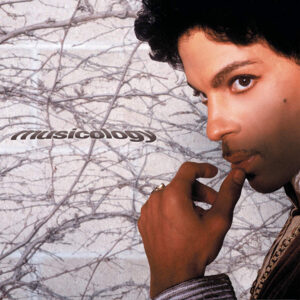 Prince / Musicology
Prince / MusicologyColumbia, 2004
Having spent the first years of the new millennium putting out a series of jazz fusion records (including the excellent The Rainbow Children), Prince had ambled back into the limelight in the early part of 2004, performing a medley of hits with Beyoncé at the Grammys. Then in March came his now-legendary induction ceremony to the Rock & Roll Hall of Fame (the footage from which is still unavoidable on YouTube). When Musicology arrived it was everything we’d come to expect from Prince — radio-friendly pop-rock ditties, disposable party jams, pleading boudoir ballads, some fairly obvious political observations and the kind of supple art-funk that had made him a star in the first place. At 45, Prince could be forgiven for sticking to what he did best, but none of the tracks on here felt like a retread of familiar ground. I always thought some of Prince’s best work in the mid-nineties was over-produced, but on Musicology he seemed to have settled on a more organic sound highlighting drums, bass… and plenty of horns. Unfortunately Musicology was just the latest Prince album from that period lumbered with ugly artwork. On the cover the little man appears partially in shadow and stroking his lip in contemplation, or perhaps devising an escape from the net of naked twigs in which he finds himself apparently trapped. The CD booklet even uses Papyrus, a font best known for being the butt of an SNL skit (Ryan Gosling, look away now). It was Prince’s first album for a major label (a one-album deal with Columbia) since 1999’s Rave Un2 The Joy Fantastic (Arista). Borrowing the multiple guest star formula of Santana’s blockbuster, Supernatural, that cluttered record was a blatant (and failed) bid for a return to commercial relevance. Musicology on the other hand was lean, focused, and ended up being his most successful album since 1991’s Diamonds and Pearls. Some of the numbers were skewed since copies of the CD were included in the ticket price for the 2004 tour, but it’s not surprising Musicology was hailed as a Prince comeback, even by those of us for whom he’d never gone away.
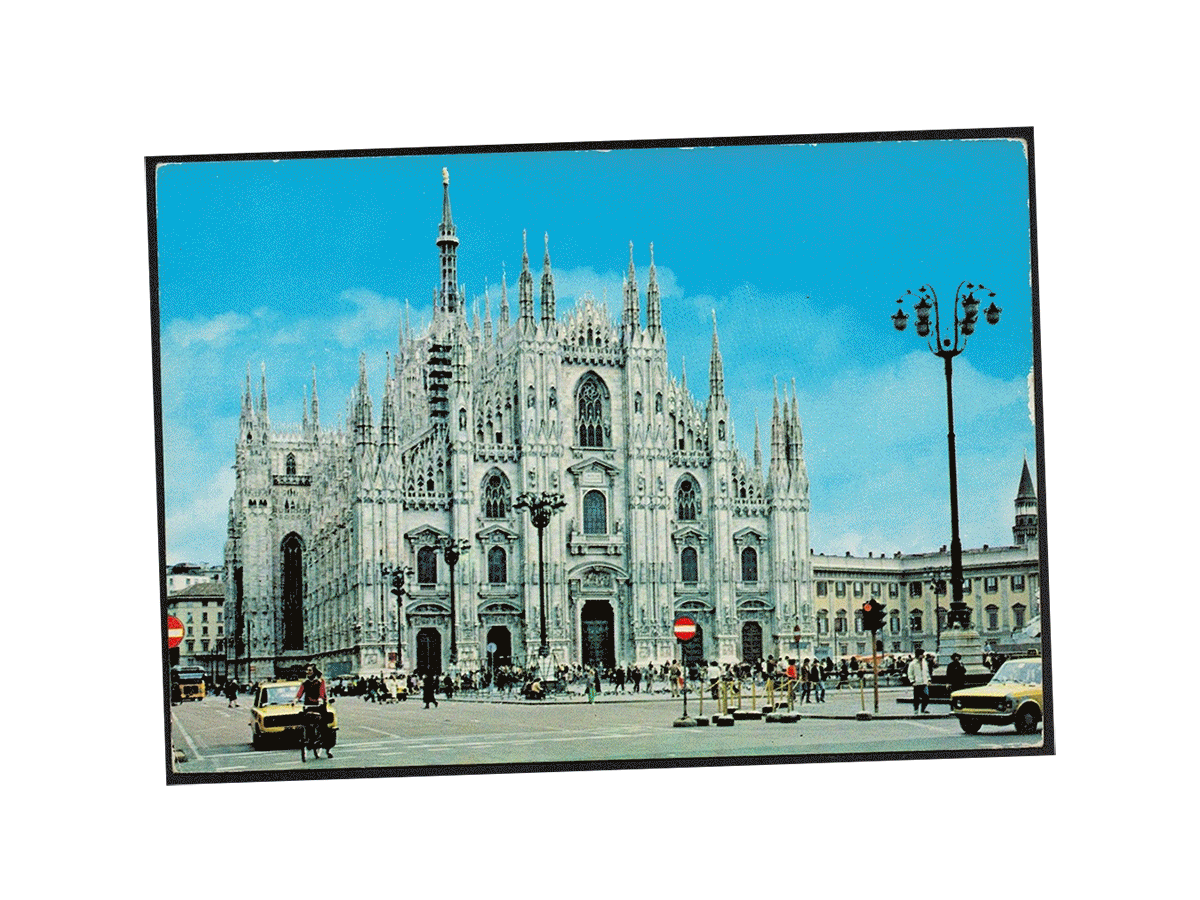
As Head of Creative & Storytelling at Eataly I was tasked with creating the visual identity for Trattoria Milano, the company’s fine dining restaurant at its first Canadian store in Toronto. But this was much more than a standard branding project. Inspired by Milan’s status as postwar capital of design and by the modern eclecticism of the city’s food scene, Trattoria Milano was conceived as a multi-sensory experience, that intended to meld a traditional Milanese menu with art and performance in a single and unique salon space.


Unsurprisingly given its ambitious scope, the project’s direction — and even its name — were the subject of much debate from the beginning. What started as Casa Milano became the abbreviated Ca’ Milano before reverting to the more conventional Trattoria Milano. I was drawn to classic typefaces such as Bodoni, Futura, Helvetica — as seen frequently in the unmistakeable work of graphic designers Massimo Vignelli and Bob Noorda.

The restaurant’s menu showcased classic Milanese dishes — risotto, cotoletta and ossobuco — and included descriptions in three languages: English, Italian, and Milanese dialect. For the guest check presenters I created a series of postcards with historical photos of Milan’s landmarks, from Piazza Duomo to La Scala, and even the stadium at San Siro!

The most challenging aspect of the project — both aesthetically and logistically — was the decor. For the walls I curated a series of prints by Enzo Mari, Bruno Munari, Mimmo Paladino and Olimpia Zagnoli.


In addition, I obtained a variety of iconic pieces by celebrated Milanese designers — including Gio Ponti, Achille Castiglioni and Richard Sapper — but only provided that they would also provide a function within a working restaurant.


The mid-century vibe was confirmed with used LPs, hefty volumes on design, old issues of Domus, and even vintage brochures from Milan’s tourism board. Of course, the space was incomplete without an original Olivetti Lettera 32 typewriter!
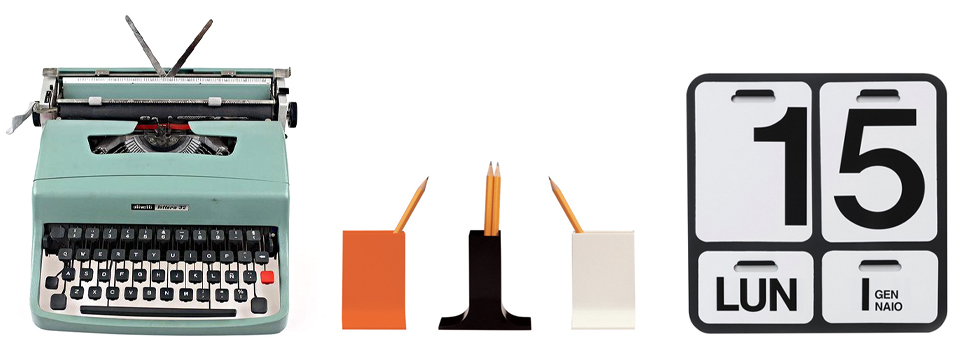
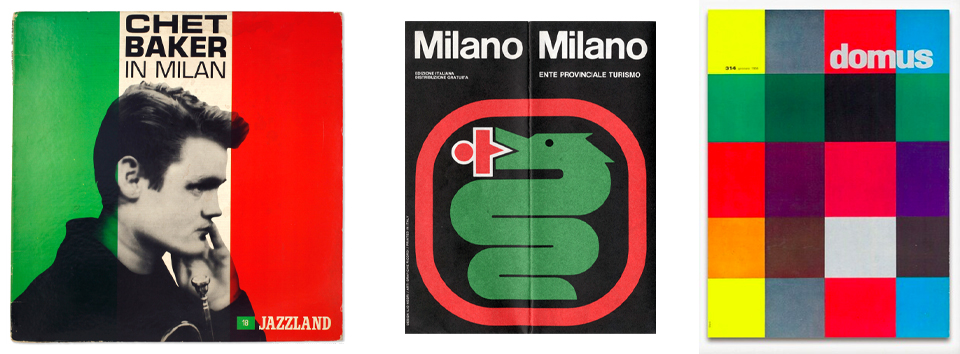
Trattoria Milano proved so successful — both with the Toronto public and internally — that the concept was replicated as “Bar Milano” at Eataly’s flagship location in New York’s Flatiron district.


As part of my role as Head of Creative & Storytelling at Eataly’s corporate New York office, I was responsible for devising seasonal campaigns that could be used at each of the company’s locations across North America.
Much of my work at Eataly was tailored to the nuances of each U.S. market, but since these campaigns had to function on a national level the subjects focused on classic Italian staples in accordance with the time of year. The backdrops, staging, lighting and photography also changed to reflect the colors and atmosphere of each season.
The umbrella tagline “That’s Food Love” captured the pillars of the Eataly brand: quality, authenticity, humor, and also a careful attention to storytelling. With the help of my talented creative team I wrote copy, managed photoshoots, and oversaw the production of store signage (a fraction of which is presented below). This was truly a 360 campaign, extending beyond Eataly’s physical spaces to its email marketing, social media, and almost all other customer-facing communications.
This project was not without its challenges: each photoshoots was carried out over two or three days at Eataly’s seventh-floor office on East 23rd Street. There were five campaigns a year (four seasons plus the holidays), and by the time one was completed it was time to begin work on the next. Fortunately, the essence of the idea was flexible, and as we navigated through the pandemic we managed to successfully adapt the tone of the campaign to the country’s shifting mood.



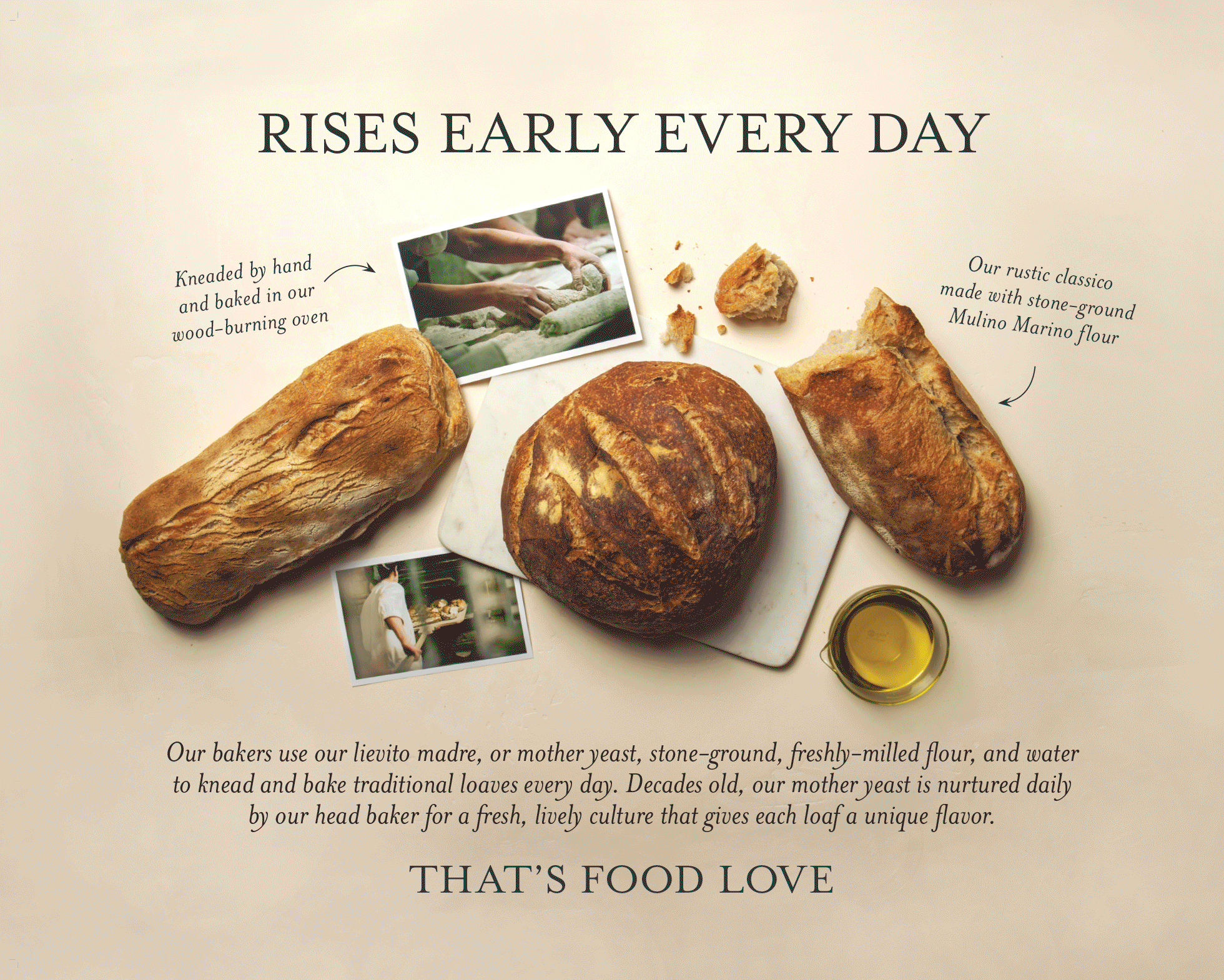

Special thanks to Rachel Goodman, Billie Winter, Madeleine Reidy, Grace Henderson, Tracey Bachman, Emily Hirsch and Erick Steinberg.
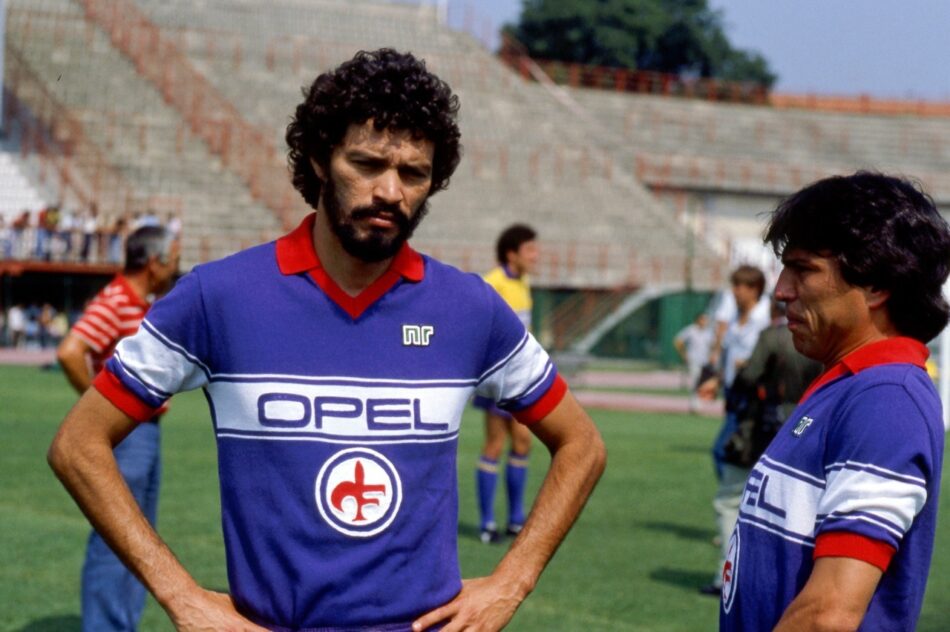
Sócrates’ Short-Lived Season In Florence
“The horse that runs on grass doesn’t run on sand.” — Brazilian proverb
On a cold and sunny afternoon in February 1984, Fiorentina hosted Sampdoria. Less than five minutes into the second half, an innocuous challenge between Giancarlo Antognoni and Luca Pellegrini on the edge of the box left both players on the ground. The pair had to be substituted immediately, but Antognoni had come off worse. The diagnosis: a fracture of the tibia and fibula.
Despite this setback Fiorentina held on to finish the Serie A season in an impressive third. But by then it was apparent that doctors’ initial prognosis of a ninety-day recovery for Antognoni had been optimistic. Facing the entire 1984-85 season without the club’s captain and leader, Fiorentina president Ranieri Pontello turned to the transfer market.
Sócrates was already well-known in Italy; two years earlier he had captained Brazil at the World Cup, scoring a memorable goal past Dino Zoff in the famous defeat to Italy, the eventual champions. Tall, thin, and bearded, by the early 80s he was arguably the most recognisable midfielder in the world. Blessed with exceptional vision, passing and aerial ability, as well as an impressive shot, he was nicknamed “Calcanhar de Ouro” (Golden Heel) for his penchant for backheeling the ball.
The 30-year-old had already garnered the attention of Roma, but he ultimately chose Florence. “It’s the most beautiful city,” he said. “That’s where I want to live.” Other members of that 1982 Brazil side — Falcao, Cerezo and Zico — were already playing in Serie A, while Junior also arrived in Europe that summer. Fiorentina themselves boasted several players that had shone in Spain, including Claudio Gentile and Gabriele Oriali. But it was clear from the moment he touched down in Florence that Sócrates was different. “I’m not interested in cars or luxurious houses, or in growing old with my fortune,” he announced upon his arrival. “Italy appeals to me because I can learn things directly from books.”
Sócrates’ viola adventure began with a friendly against his old club Corinthians, organised as part of the 5.3 billion lire deal which had brought him to Tuscany. While he was signed to fill the hole left by Antognoni, on the pitch Sócrates was not a direct replacement for the Fiorentina captain. Experienced regista Eraldo Pecci took over the mantle of the number ten shirt while the Brazilian wore his usual number eight. Strolling about in midfield, Sócrates’ class was evident, and fans cheered whenever he performed his trademark backheel. His first goal for the club was a typically nonchalant chip, in a 5-0 home win over Atalanta. But such moments were sporadic, and critics soon picked up on his leisurely style and tendency to drift out of games for long periods.
Coaching the side was 41-year-old Giancarlo De Sisti, a member of Fiorentina’s 1969 scudetto-winning team. One Monday morning, after a typically lacklustre Sunday performance, he spotted Sócrates with his head in the newspaper. “Did you see what they wrote about you?” De Sisti asked. The player glanced up. “The sports pages don’t interest me,” he responded. “I’m reading the politics section.”
Indeed, Sócrates was almost as noted for his left-wing politics as his football. Born into an intellectual household, unlike many Brazilian footballers, Sócrates did not go by a nickname: he and two of his brothers were named after Greek philosophers. As a ten-year-old he saw his father destroy his beloved personal library after it came under threat in the 1964 coup d’etat, an event which sparked his activism. At Corinthians the midfielder co-founded the “Democracia Corinthiana” movement, which revolutionised the running of the club by involving players in institutional decisions and encouraging political engagement with its fans. A vocal opponent of Brazil’s dictatorship, it is no surprise Sócrates also opposed Italy’s militaristic approach to preparing for football matches. He wasn’t the first Brazilian to suffer from a case of saudade in Serie A, but Fiorentina’s rigorous training sessions, carefully monitored diet, and strict curfews imposed upon his iconoclastic nature.
The novelty of Sócrates’ unconventional ways initially drew curiosity from teammates, though some considered his political views idealistic and dated, even calling him a “sessantottino” (sixty-eighter). But his rebelliousness also created tension in the dressing room. Clashes with Argentina captain Daniel Passarella — a rival at international level and Sócrates’ opposite in almost every way — were frequent. One evening goalkeeper Giovanni Galli invited his new teammate over to his house for dinner. Sócrates showed up at two in the morning.
Meanwhile De Sisti became increasingly frustrated by Sócrates’ tactical indiscipline and casual work ethic. “He struggled to integrate,” the coach acknowledged. “When we travelled to away games he’d just lie on the backseat. Once I caught him with a cigarette in his mouth. ‘Don’t you dare light that,’ I warned. He just sighed and went to sleep.” But Socrates was a self-described “anti-athlete,” once stating, “I cannot deny myself certain lapses from the strict regime of a sportsman.” De Sisti resigned himself to the fact that the Brazilian would not bend. “We made a stop at a service station,” he remembered. “The others players all went inside, but Sócrates just leaned on the bus smoking one cigarette after another.”
Such excesses were all the more ironic given that Sócrates was also a qualified doctor, having earned his medical degree in Ribeirão Preto while playing for the local club, Botafogo. This qualification came in handy during a match with Lazio when he was able to administer assistance to an injured Lionello Manfredonia. But his medical expertise could not help De Sisti, who was forced to abandon his post mid-way through the season after developing a brain abscess. When the coach returned to health Fiorentina tried to pair him with the veteran Ferruccio Valcareggi, the man who had coached De Sisti at the 1970 World Cup. Instead, De Sisti resigned before Christmas and Valcareggi took over alone. Already out of the UEFA Cup, Fiorentina won just four more league matches before scraping to ninth place in Serie A.
It was clear to all that Sócrates’ Italian experience was over, but he seemed to blame others for his disappointing season. “I’m worth the money they spent on me,” he insisted. “But I can’t imagine they’d come all the way to São Paulo without getting to know me first. If they just wanted a world class player they could have taken Zico.” The Brazilian was not only critical of his club, but the game in Italy in general. In a bitter departing statement he referred to Italian players as “employees on the pitch.”
In November 1985, Antognoni came off the bench against Bari, nineteen months after breaking his leg. By that point Sócrates was back in Brazil, this time in Rio de Janeiro, where he’d teamed up with Zico at Flamengo. Another move to Santos followed before he ended his career with a return to his first club, Botafogo de Ribeirão Preto. Fifteen years later Sócrates came out of retirement to make a single appearance for Garforth Town, a lower league club from West Yorkshire. His beard had greyed and his pace had slowed to walking.
Sócrates once said that he played football professionally because it enabled him to buy petrol and beer, and though his movement relented his drinking never did. He died in 2011. Fiorentina wore black armbands for their next home match against Roma, and the minute’s silence before kick-off was applauded throughout. Two banners were unfurled on the Curva Fiesole honouring the departed Brazilian. The first read, “Un’ ultima pinta per il dottore” (One last pint for the doctor). The second, “Dottore vola in cielo a fare un tacco da Dio,” had a clever double meaning, inviting “the Doctor” to fly up to the sky and do a backheel. “Da Dio” could be translated as “in God’s house,” but also, simply, “a really good backheel.” Invoking both his footballing talent and intellect, it was a fitting tribute that confirmed the strange spiritual bond that remained between Sócrates and Fiorentina, even if theirs was not quite a match made in heaven.
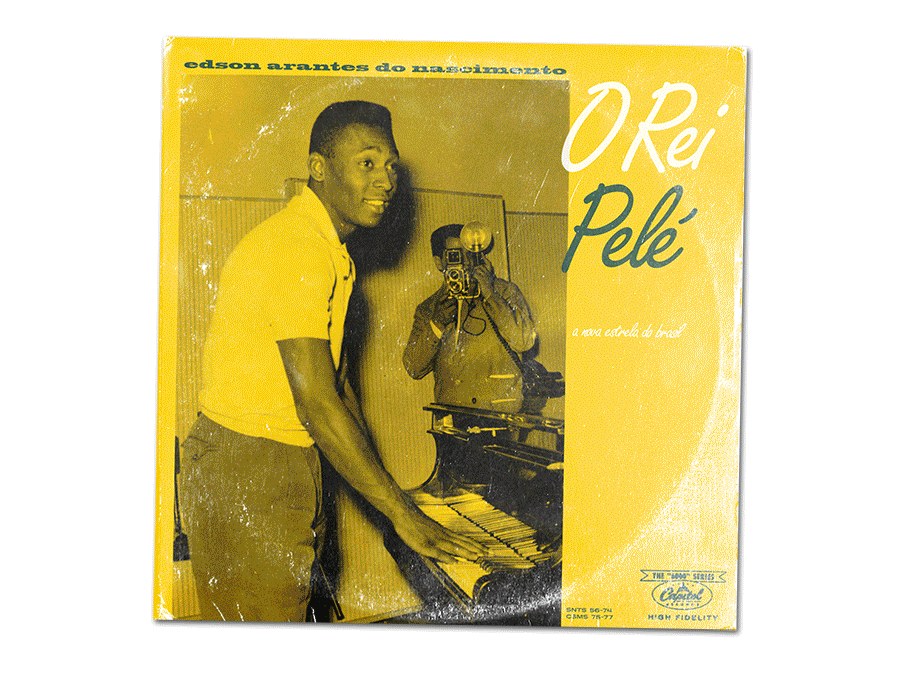
The LPFC project came to me one day as I was walking home from work. The idea to combine two of my biggest interests, football and music, seemed so obvious I was actually surprised it hadn’t occured to me sooner. I started working on it after dinner that evening and I completed it in about two weeks. I’ve always been a keen observer of the nuances of graphic design history: for example, how a typeface choice on a record cover can immediately reveal something about when and where it comes from, and even say something about the music contained on the record. So this project was really a personal exercise to try and evoke a period and place through graphic design, without resorting to easy short-cuts which would render the project a big cliché. I tried to find less-famous images of the most famous players: either shots of them in unusual settings (Pelé at the piano, Beckenbauer in a top hat and tails), or more familiar photos that I could make feel fresh in this design context. So the footballers were really just the subject matter, which helped make the design connections clearer but also allowed for a fun juxtaposition that could be appreciated cross-culturally. A couple of the finished designs directly evoke existing album artwork: Zico’s echoes the covers of Tide and Wave by Antonio Carlos Jobim, while Baggio’s is a twist on Dexter Gordon’s Our Man In Paris. Much to my surprise, and with no extra effort on my part, within a week this project had gone viral. It was featured in dozens of newspapers and magazines and suddenly I was fielding requests for interviews from around the world. Proof that you can’t always predict what’s going to be a hit…
